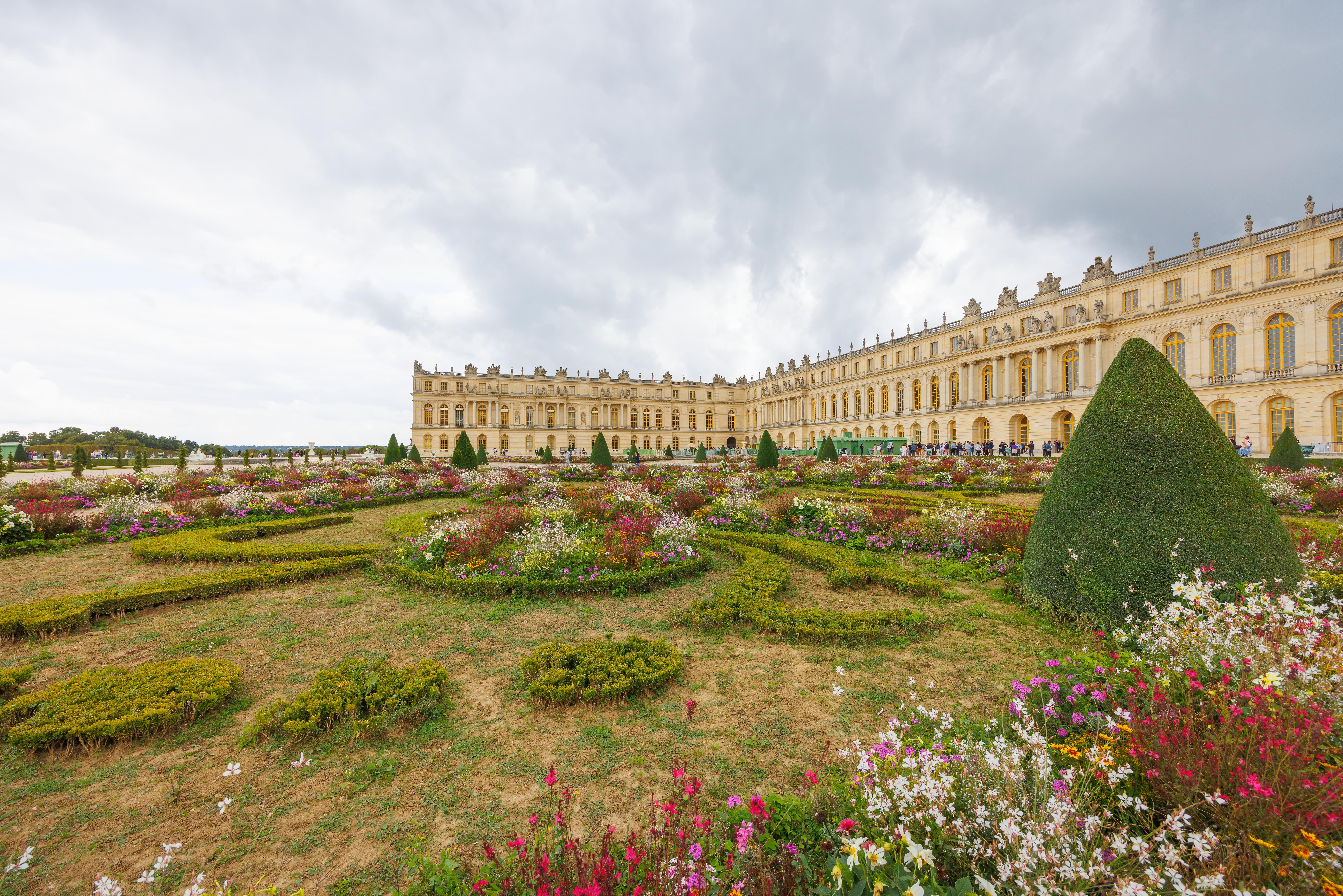We headed out in the morning to Versailles on the RER. The Château de Versailles is huge. We were easily able to spend the entire day there without seeing everything. We toured the interior of the main palace as well as two smaller buildings at the Estate of Trianon. We also walked through the extensive gardens behind the palace.
Château de Versailles
We took RER line C to Versailles Château Rive Gauche, the closest station to the Château de Versailles’ entrance. We did have to switch trains from one C to another C at Champ de Mars Tour Eiffel due to the way the C line is designed.
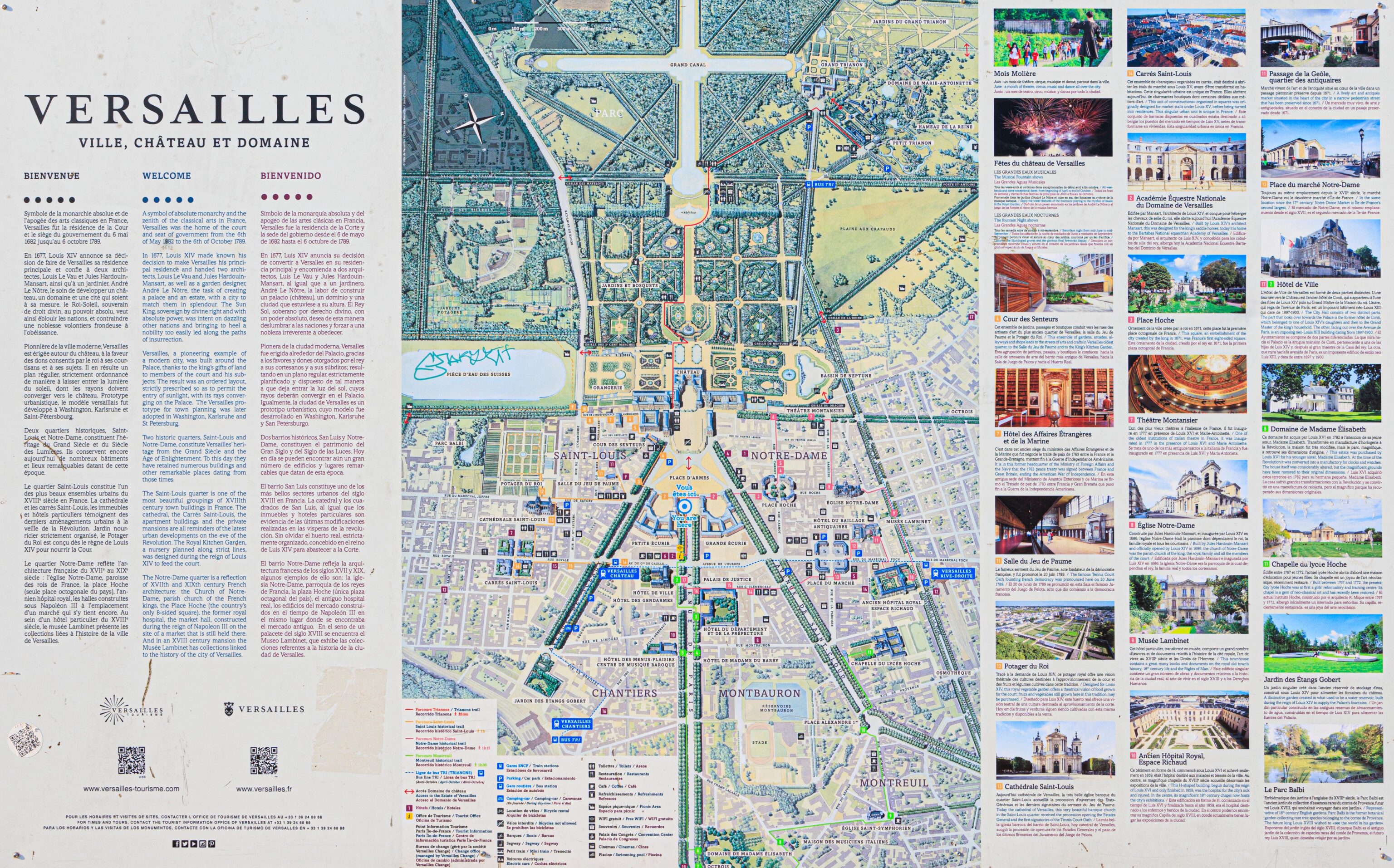
We arrived at around 9am and started to walk to the château’s entrance. We passed by this sign that shows some locations of interest. There is quite a bit in this town!
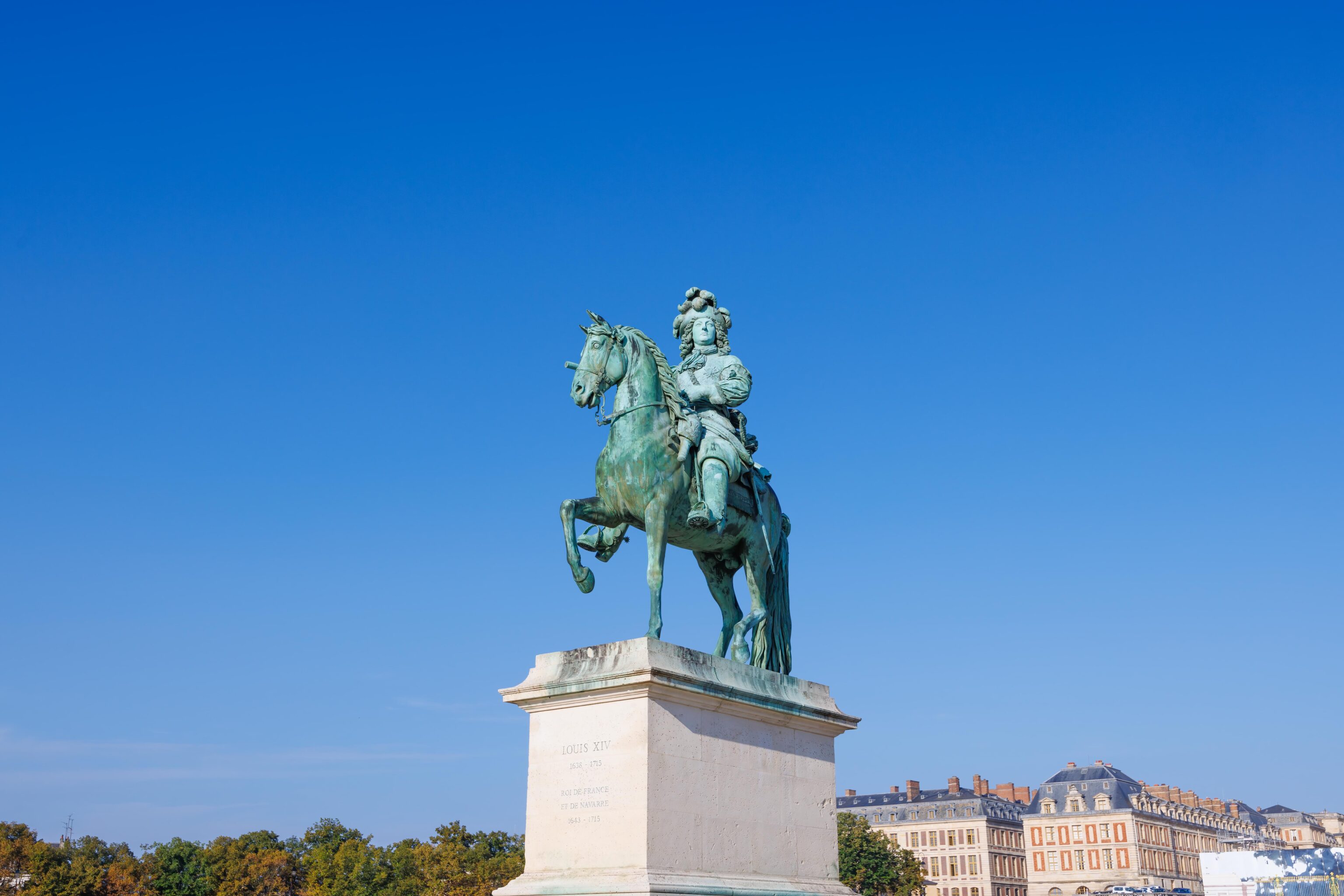
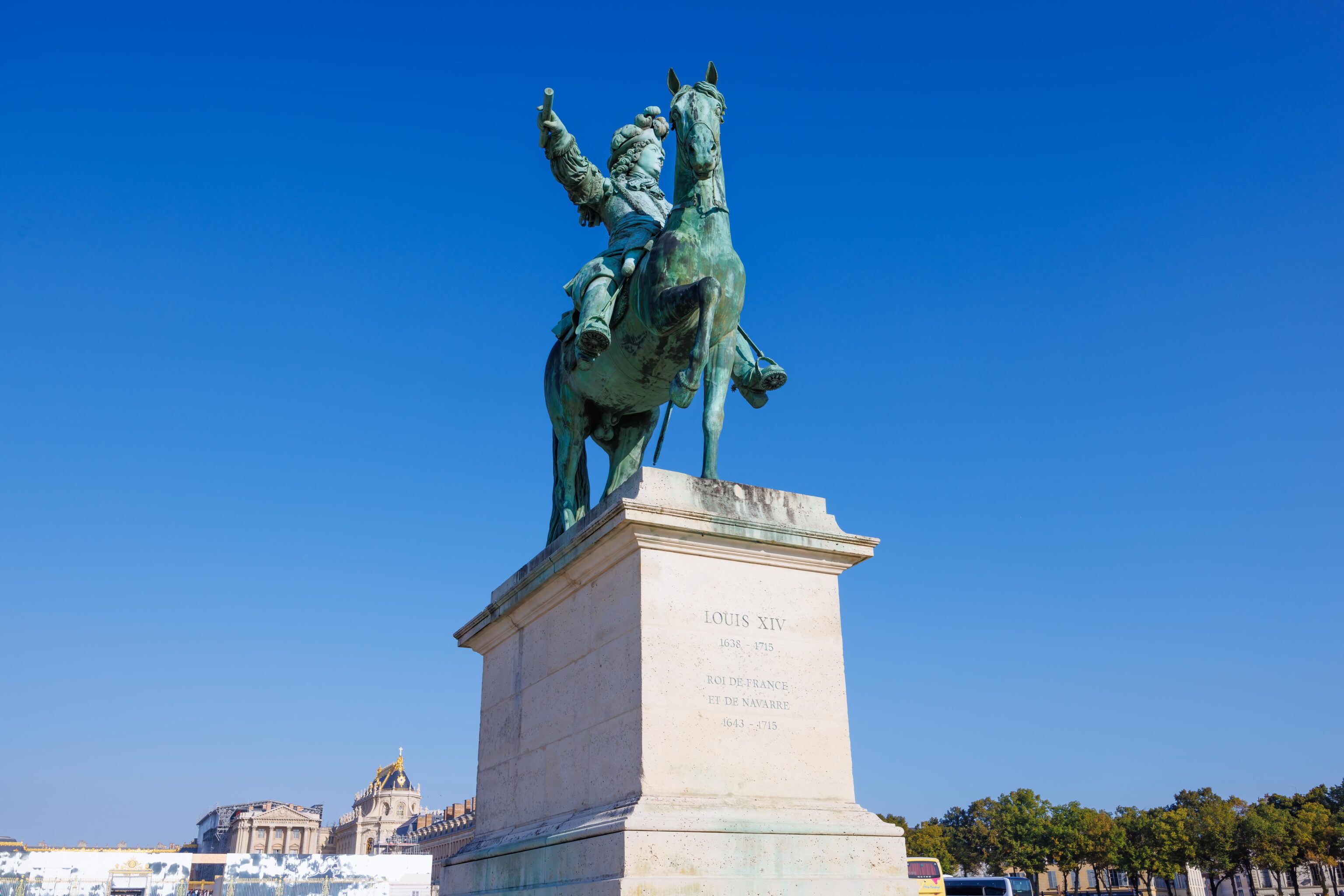
An equestrian statue of Louis XIV stands at the entrance. While the château existed here before Louis XIV, he is the one that expanded it into the palace that we see here today.
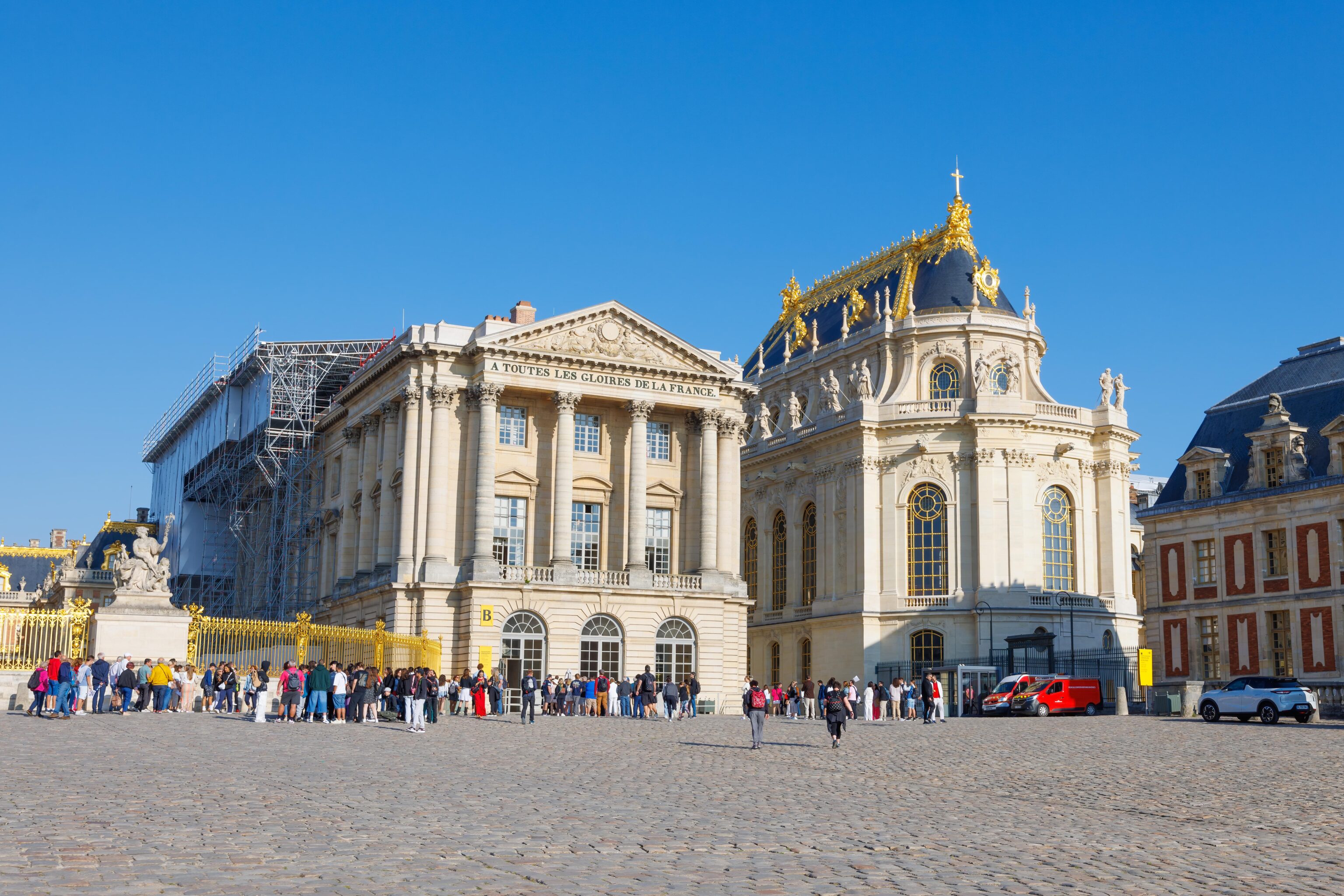
The church-like building on the right is the royal chapel. It is basically a large room that is attached to the rest of the palace buildings.
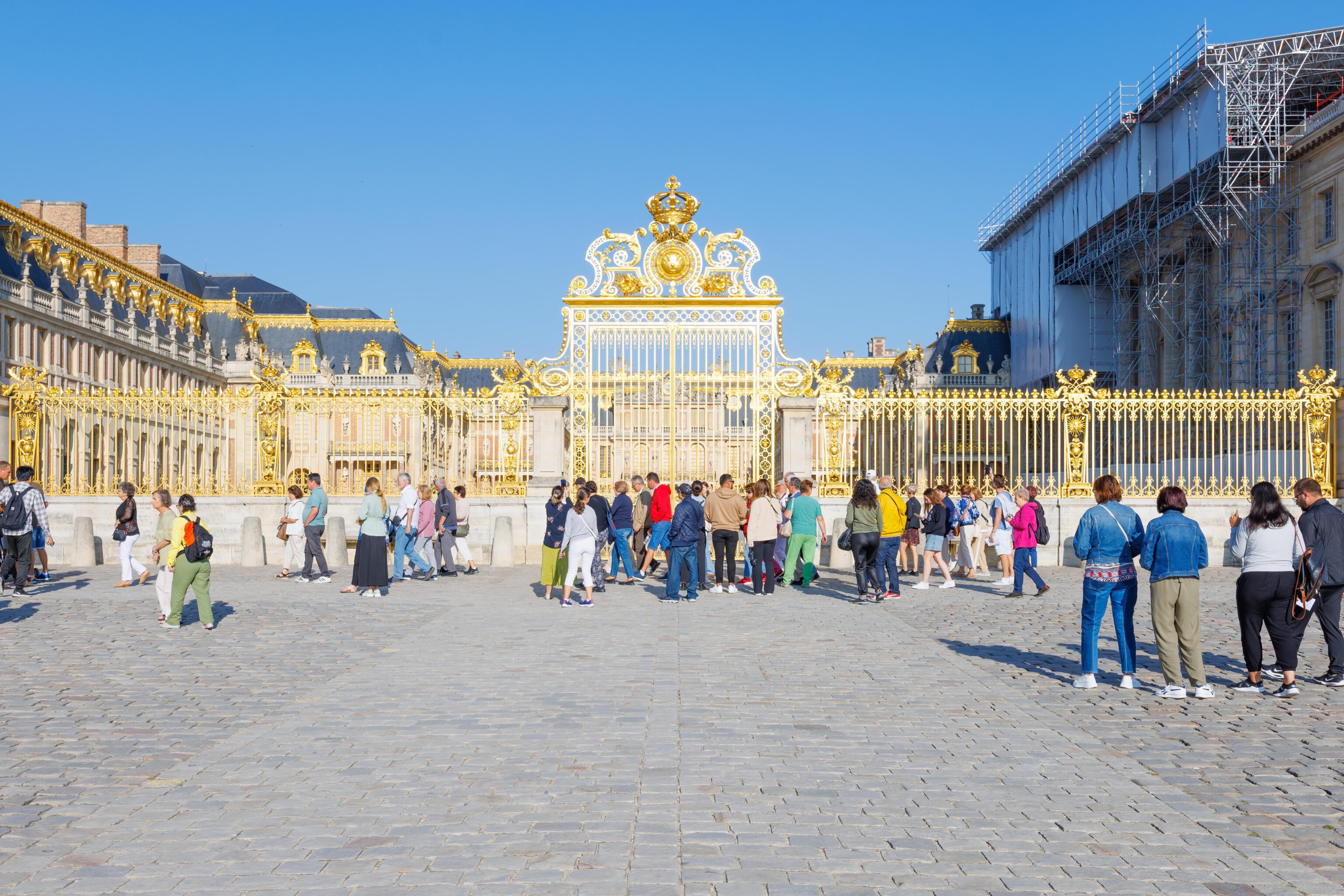
The view from the front of the gate. There were renovations going on, somewhat of a constant right now from what we’ve experienced in Paris the last few days.
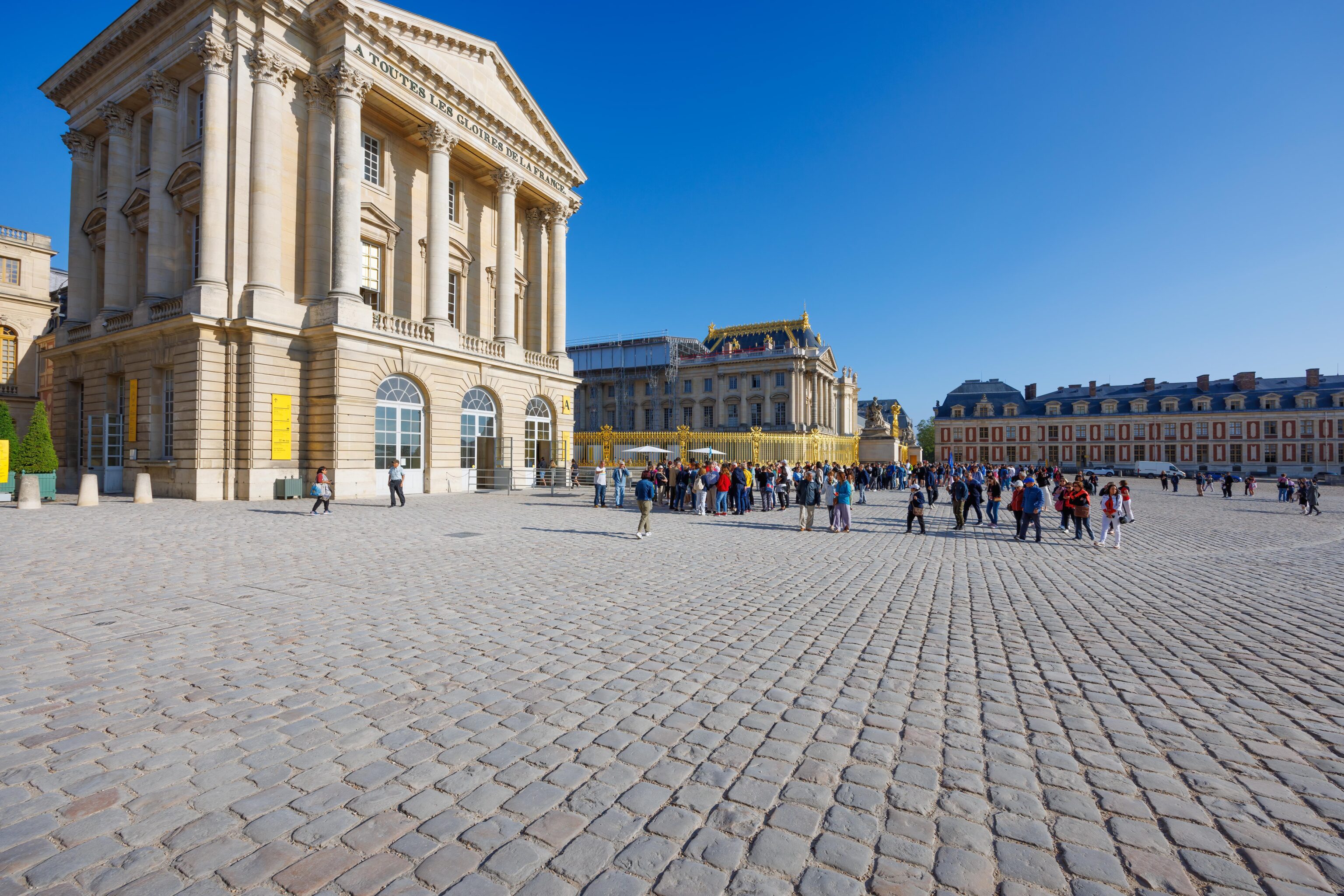
We actually arrived a bit too early for our 10:30am timed entry. The way it works here is similar to other places that we’ve been to in Paris. There are two lines, one for :00 and one for :30 after. They allow one line in at a time while the other is waiting. It seems that each line is allowed in about 15-20 minutes before the scheduled time.
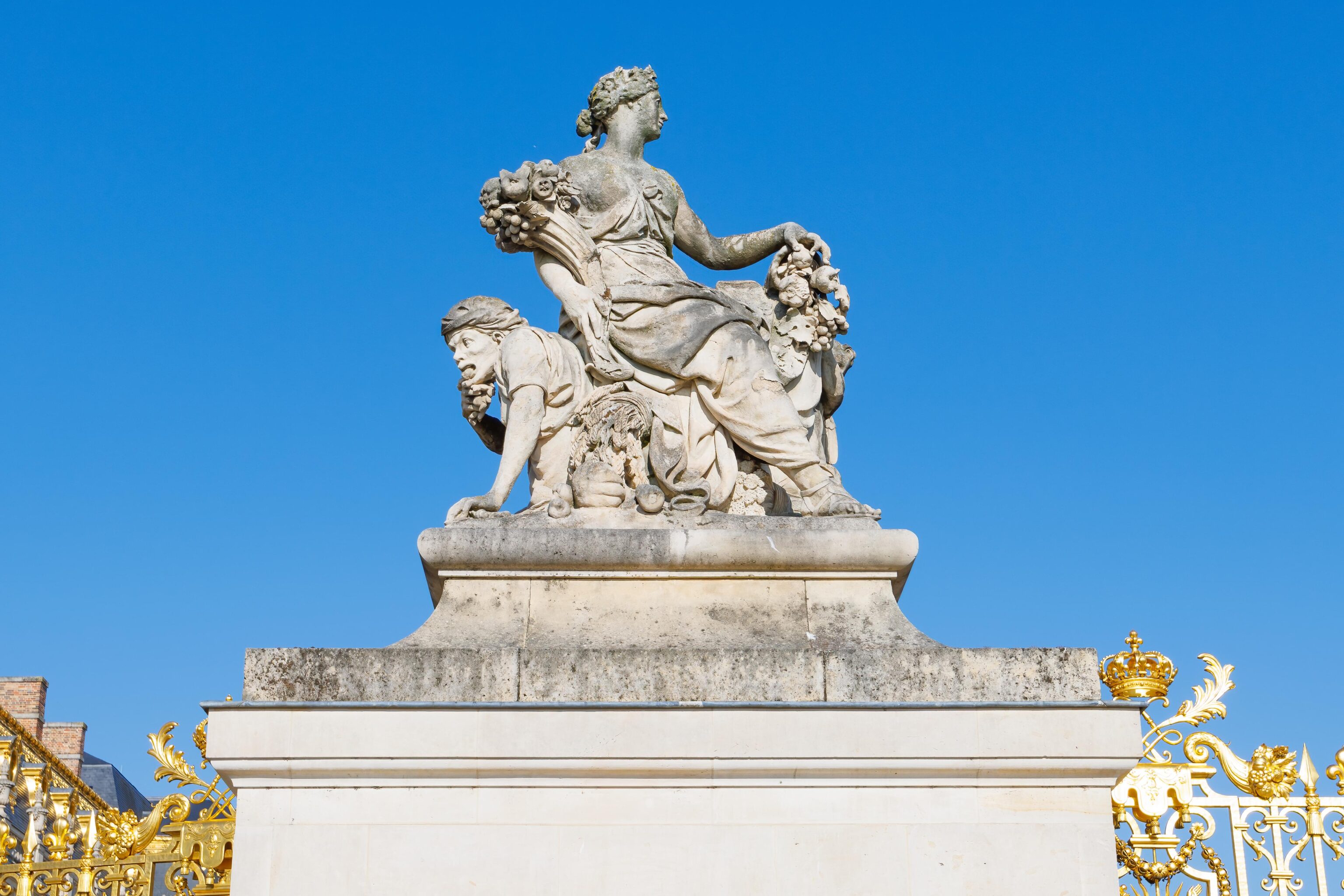
We decided to walk around a bit while waiting. There are two big sculptures on either side of the fence at the entrance. Not sure exactly what this one depicts.
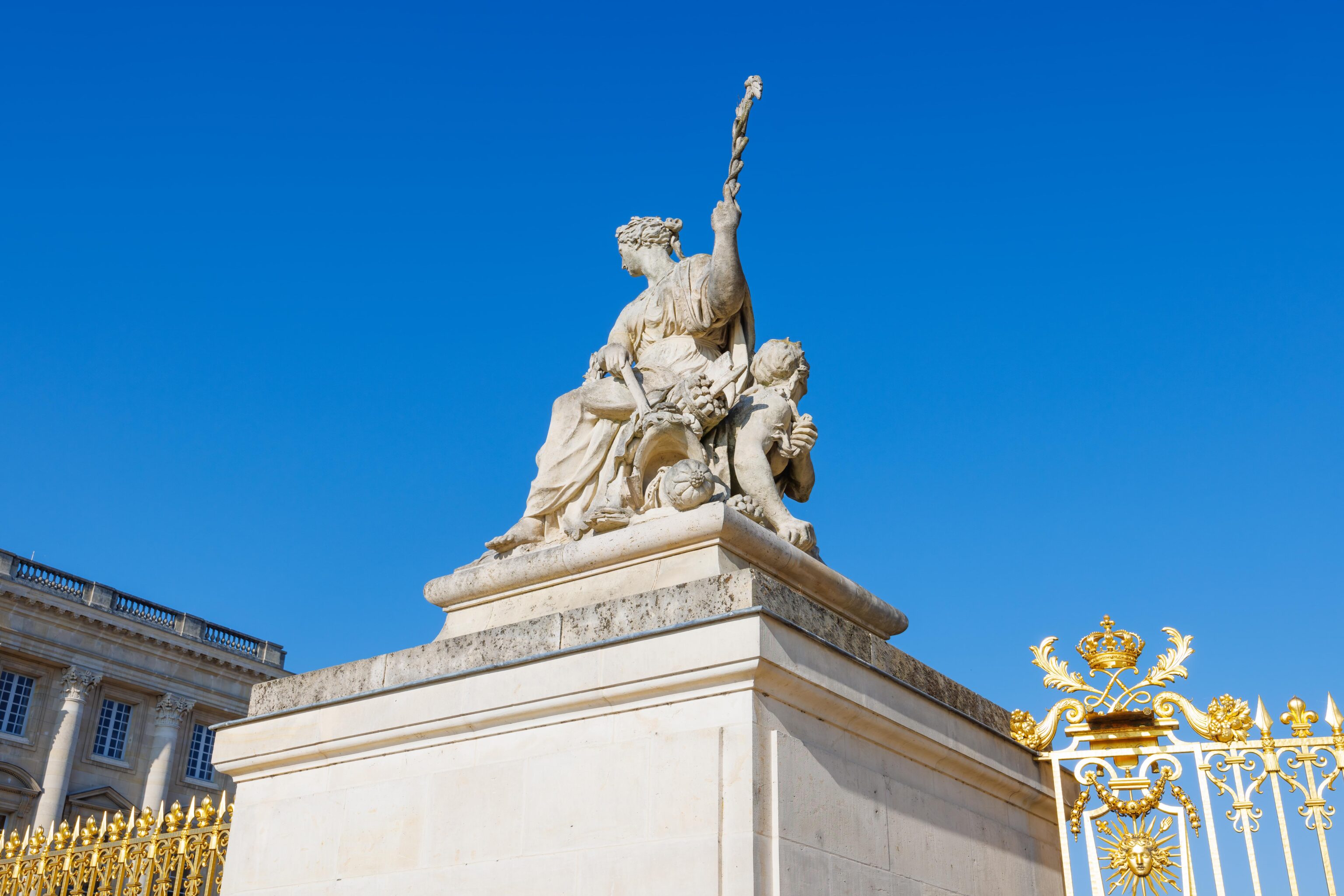
The same applies to this one on the right.
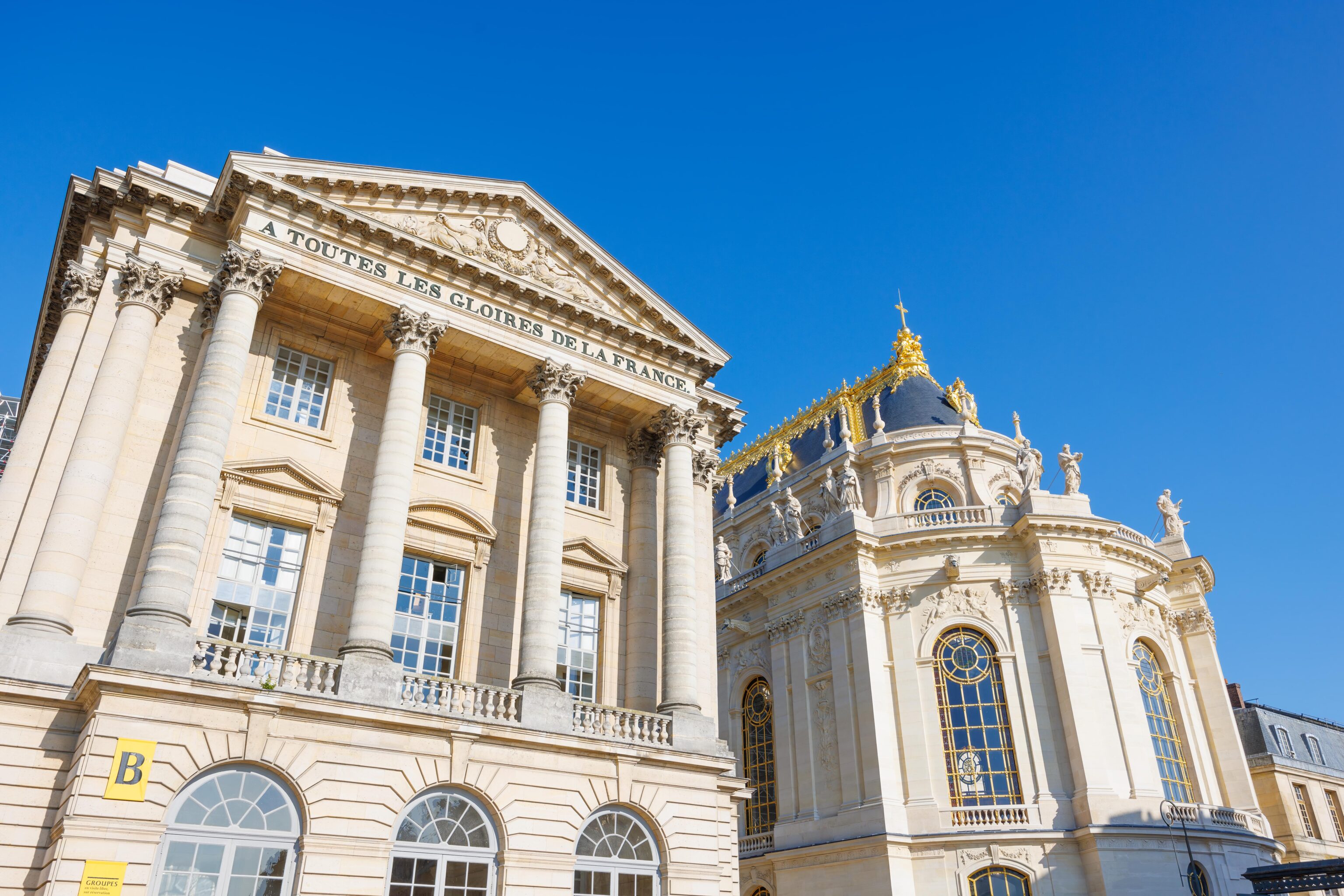
We took a closer look at the chapel building as well as the palace building that serves as the group entrance.
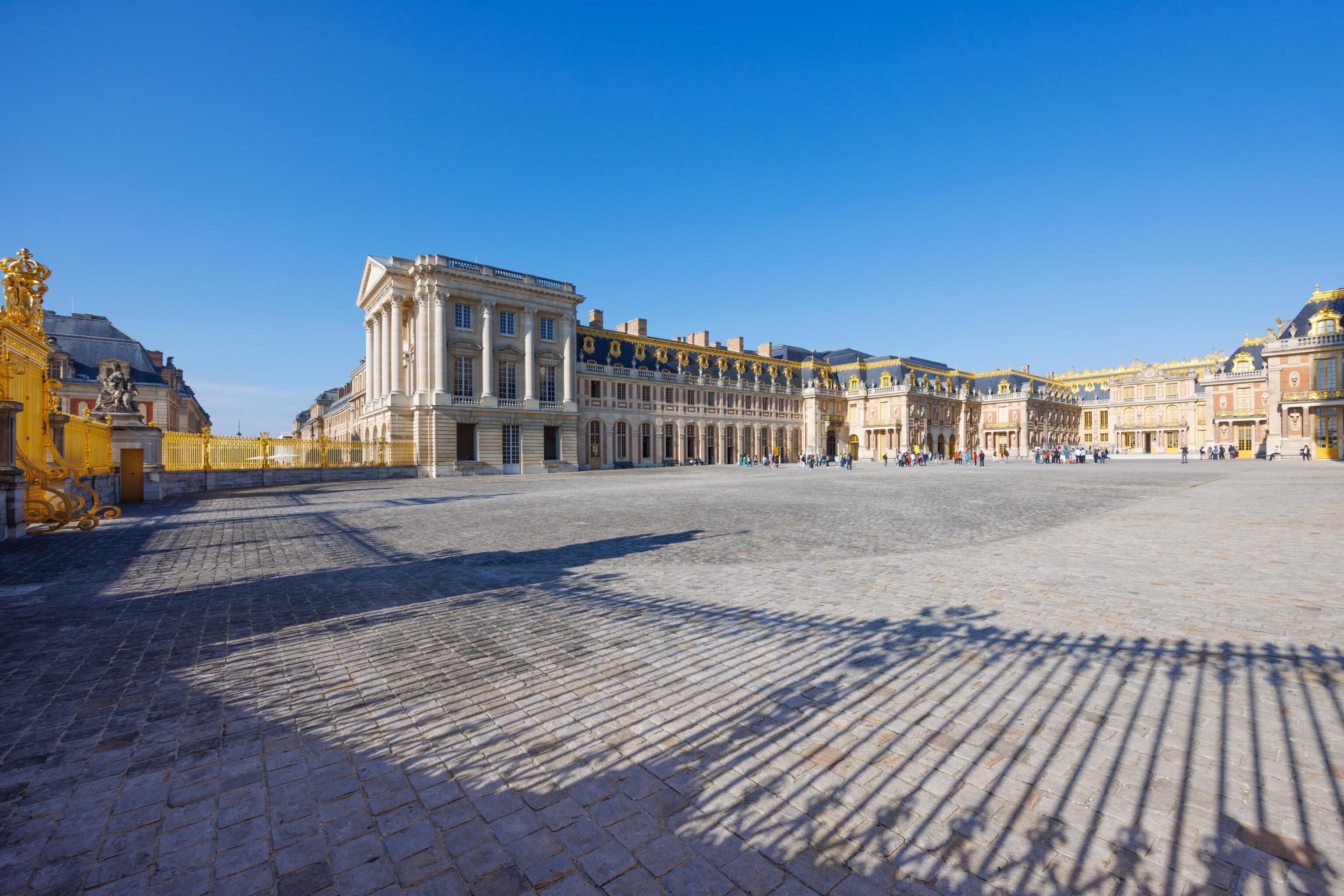
The fence in front of the palace is curved. We took this photo from the very right edge, showing what it looks like from an inside perspective.
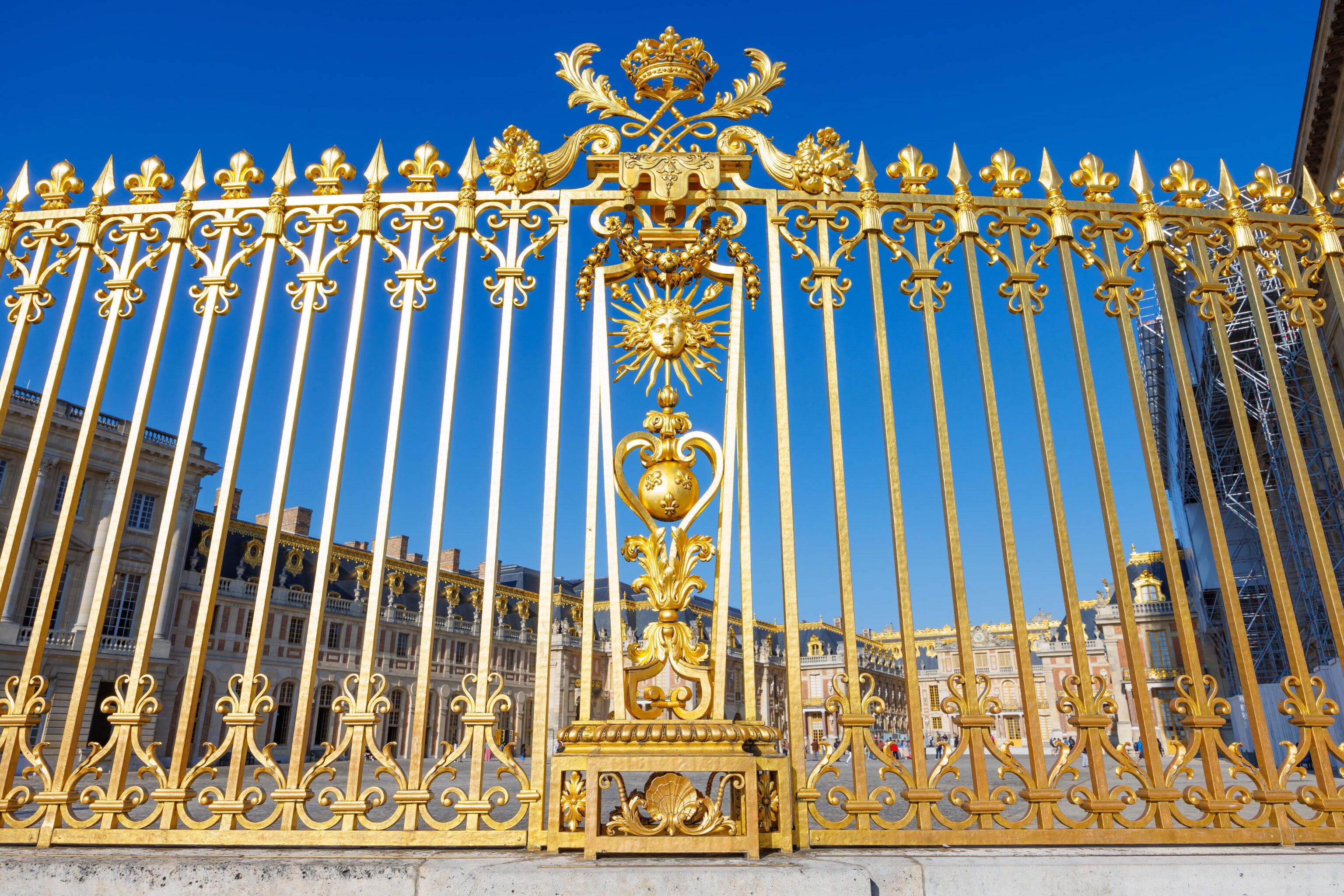
A small section of fence.
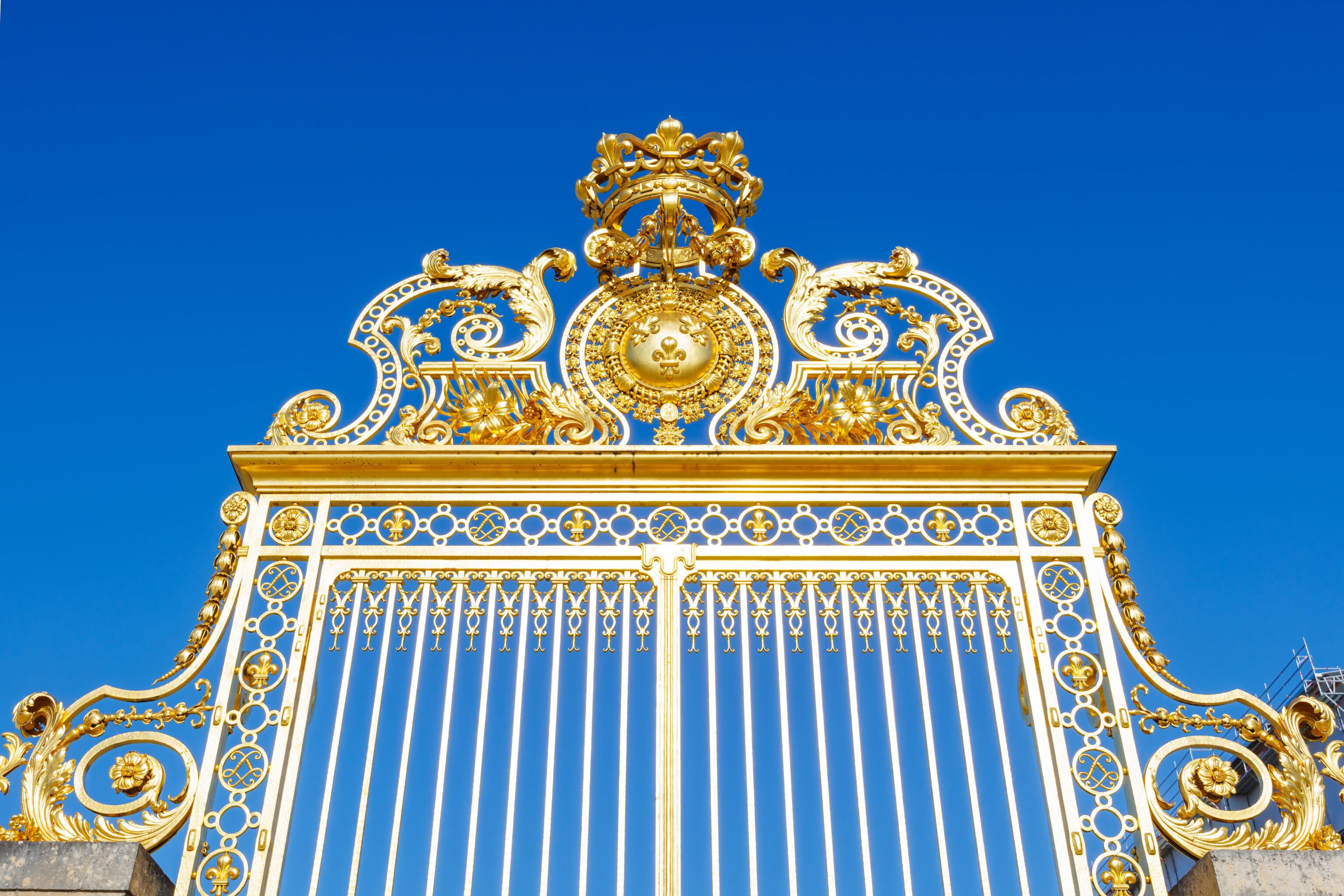
The gate through the fence.
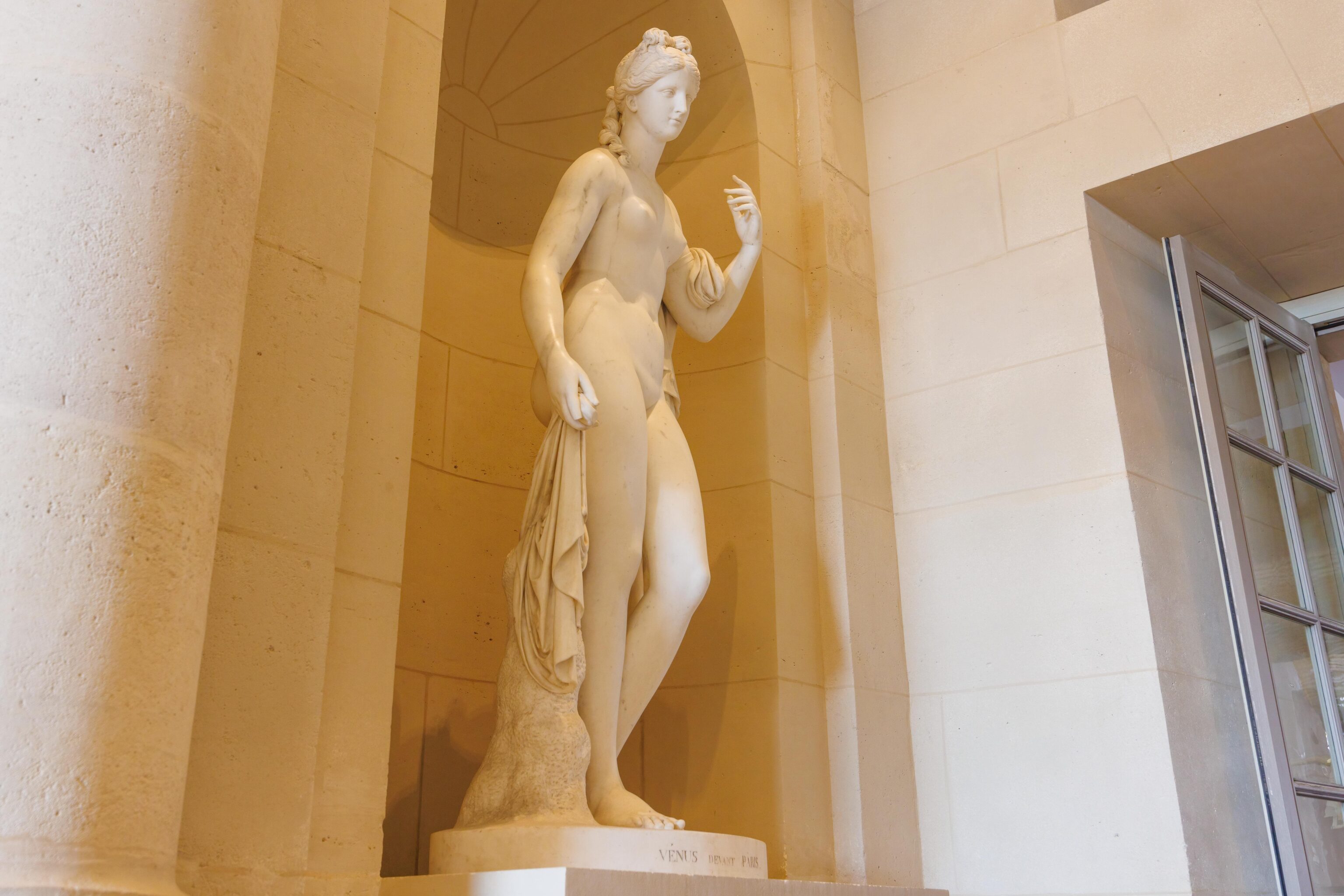
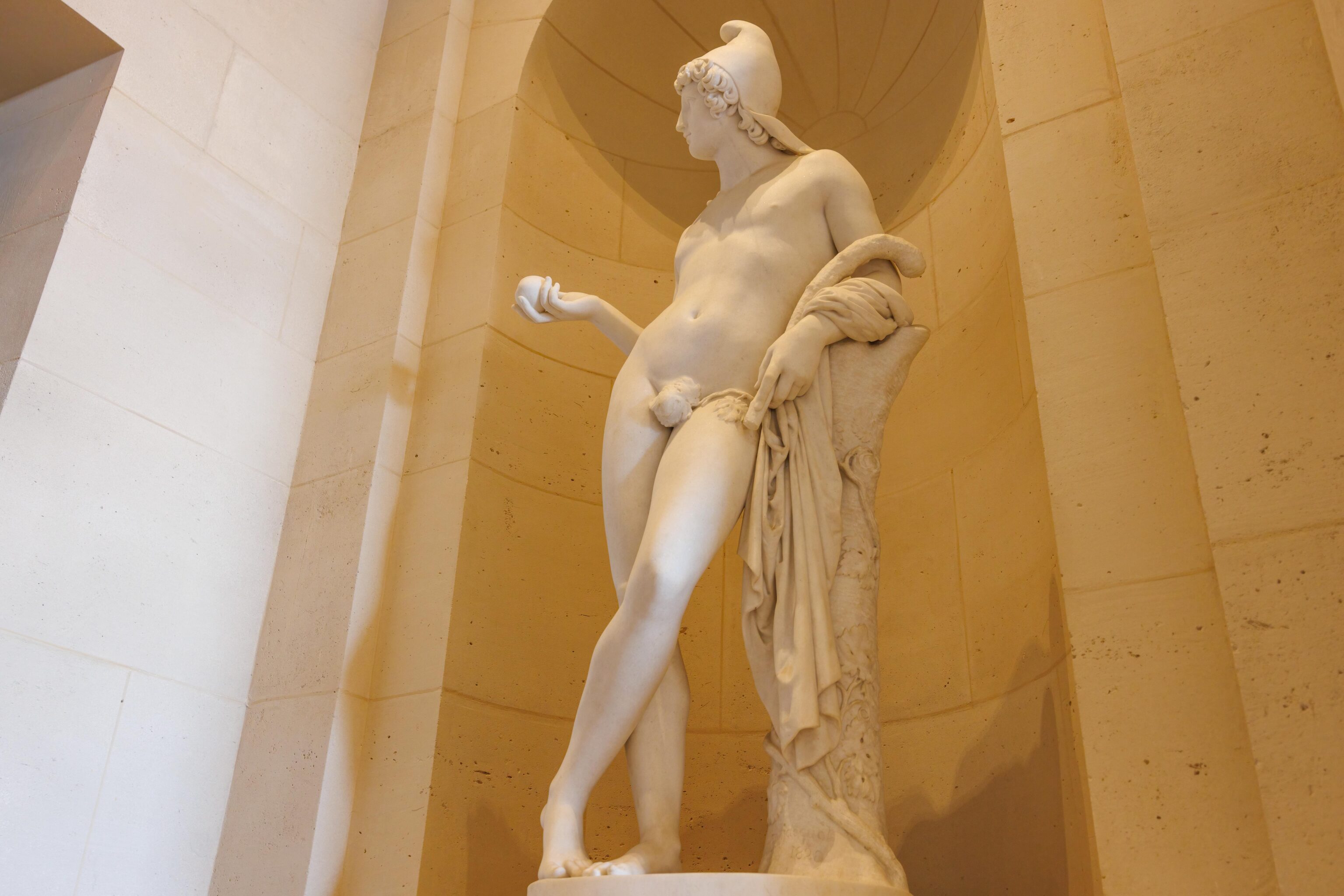
We queued up while the :30 line was still very short. Soon, we were allowed to enter the building. The line backed up a bit for the security check. We waited by these statues for a little bit while the line moved forward.
The statue on the left is Venus, who we learned is the Roman version of the Greek Aphrodite. The statue on the right, a male, is not labelled. He seems to be holding an apple.
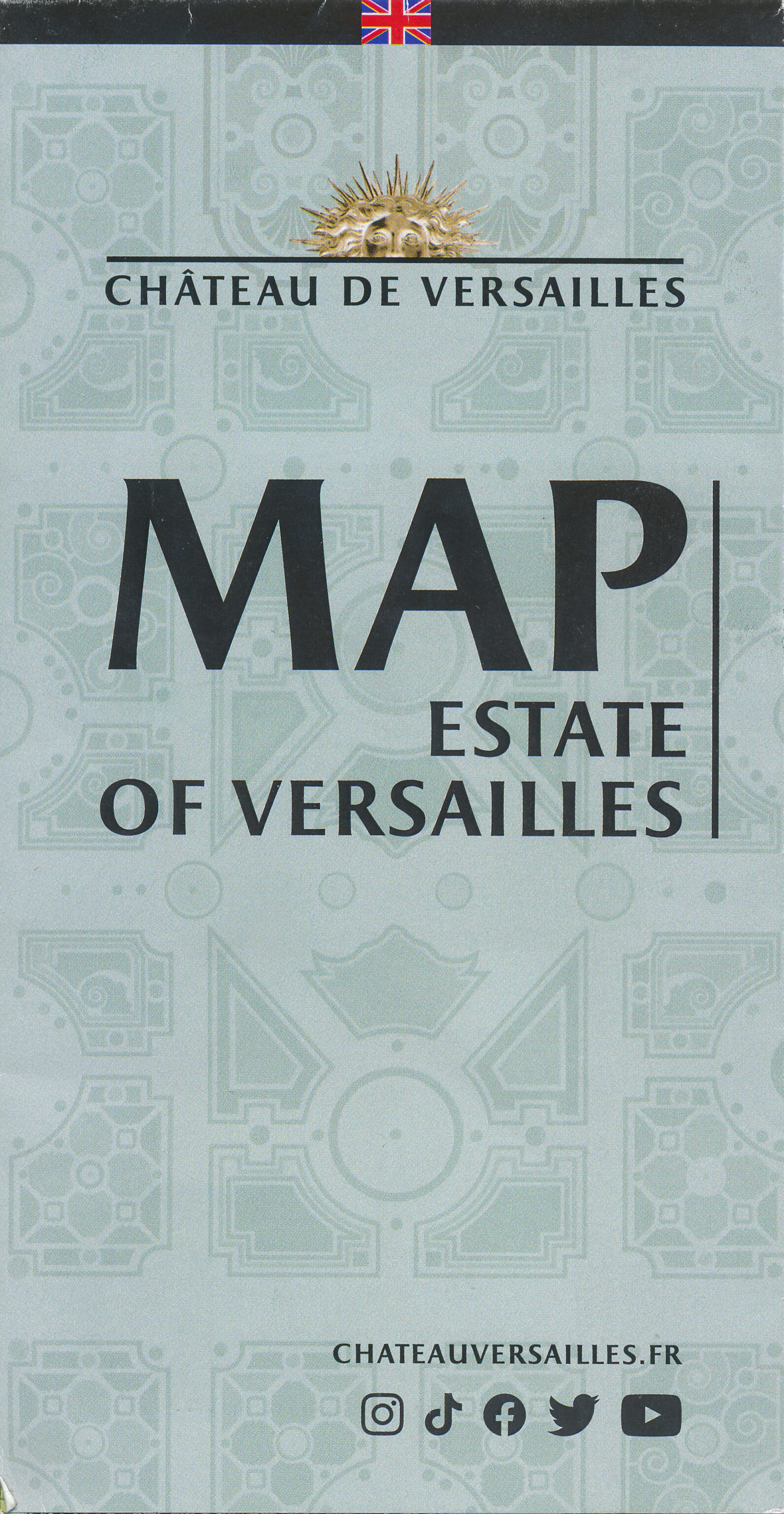
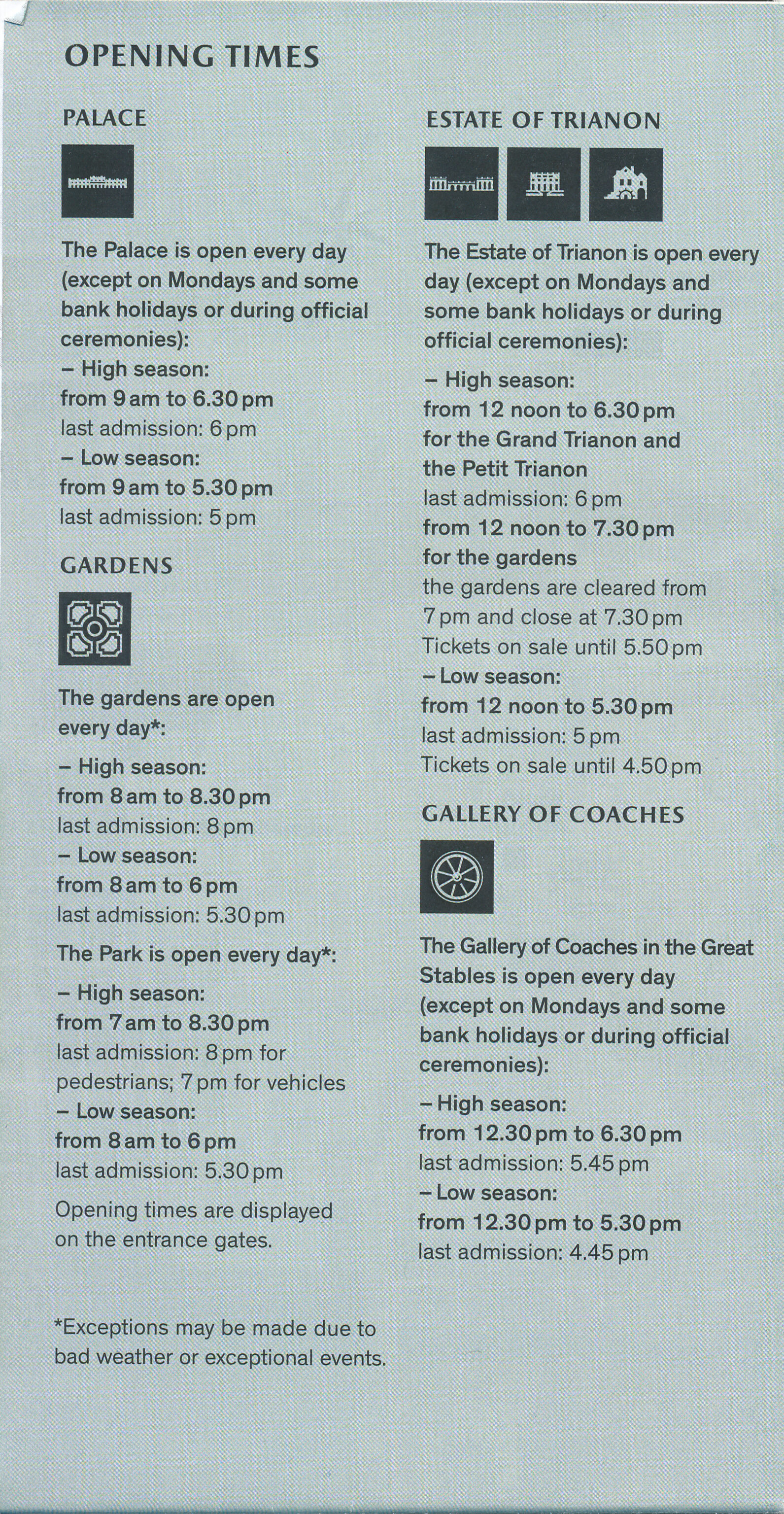
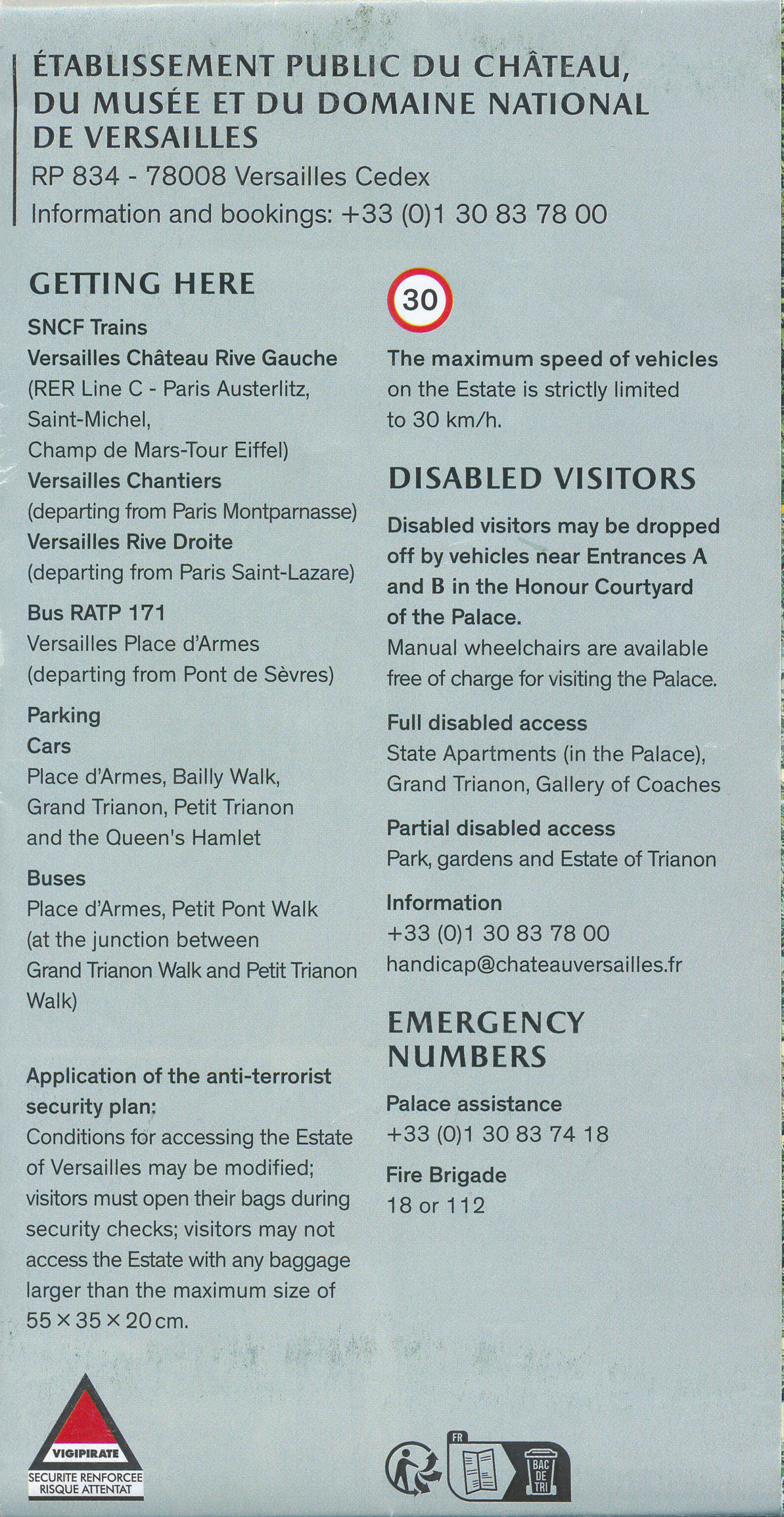
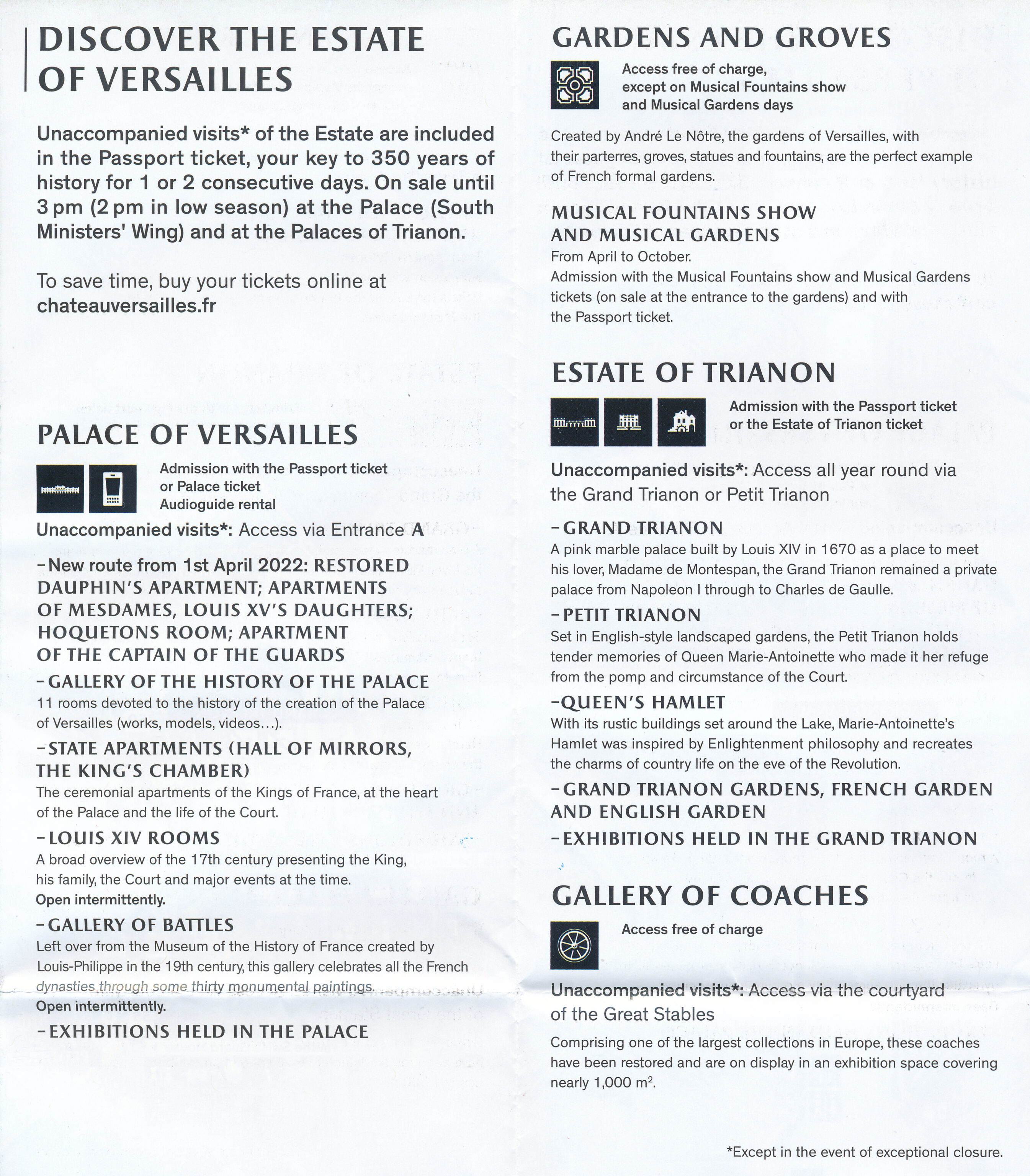
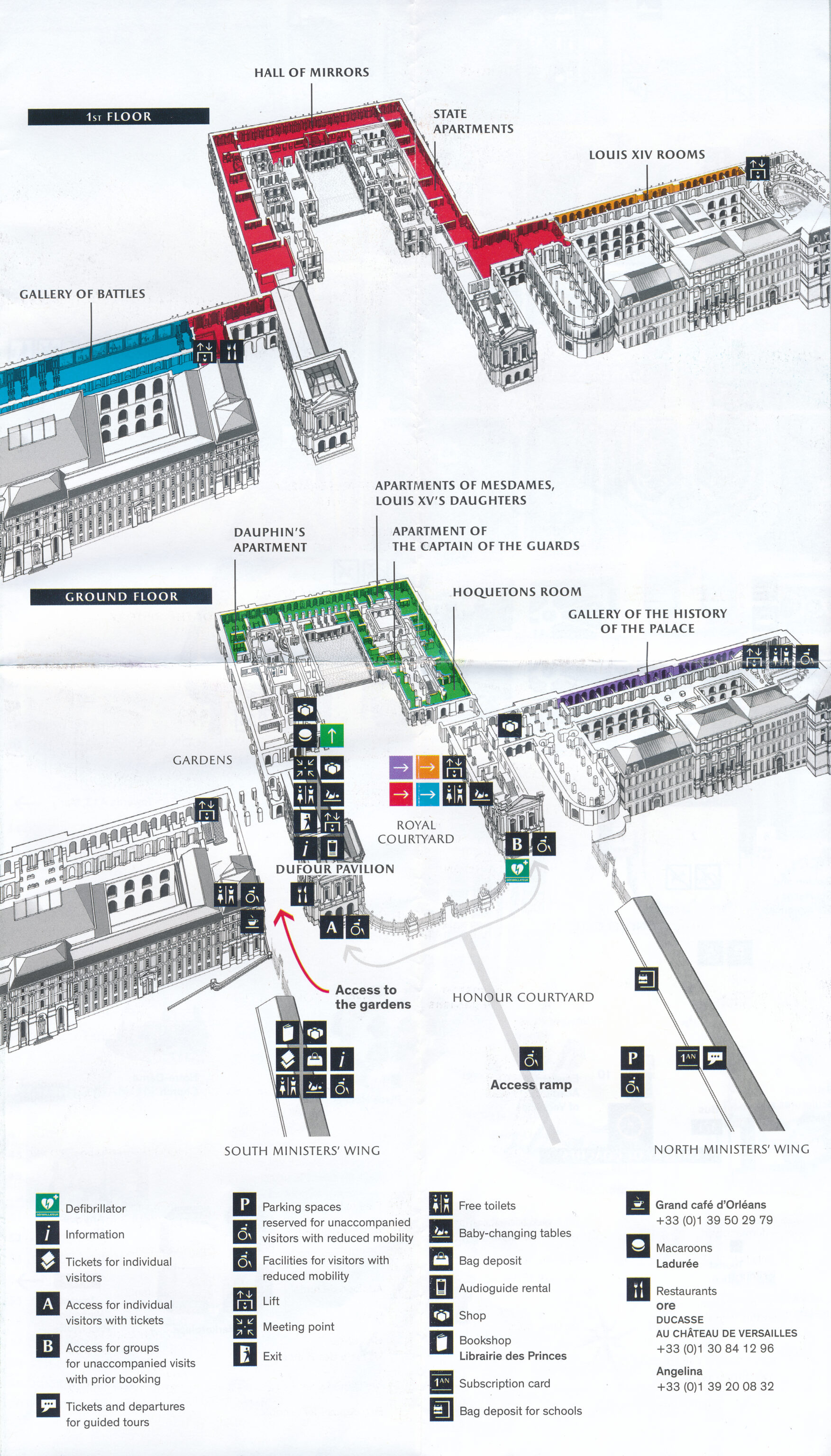
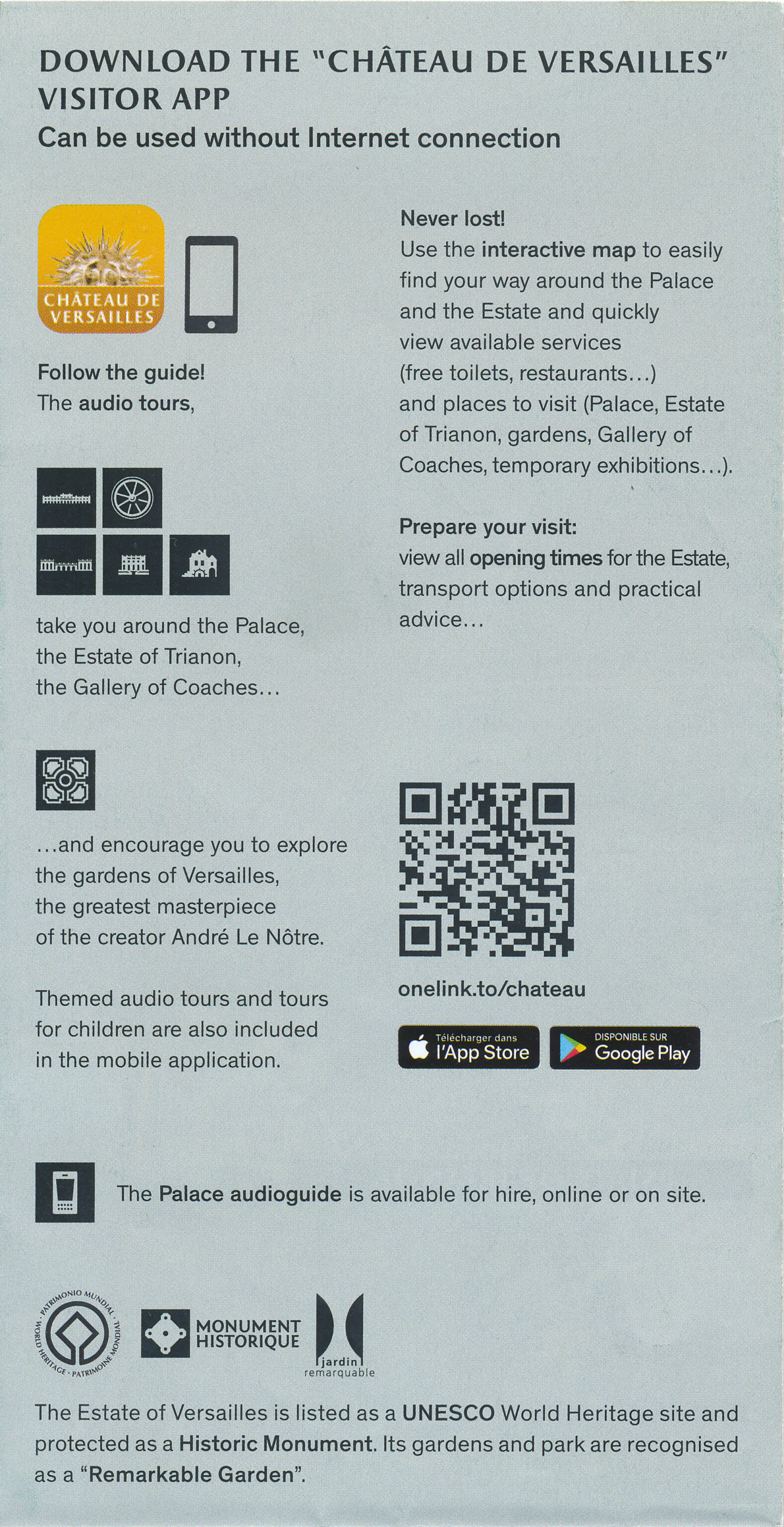
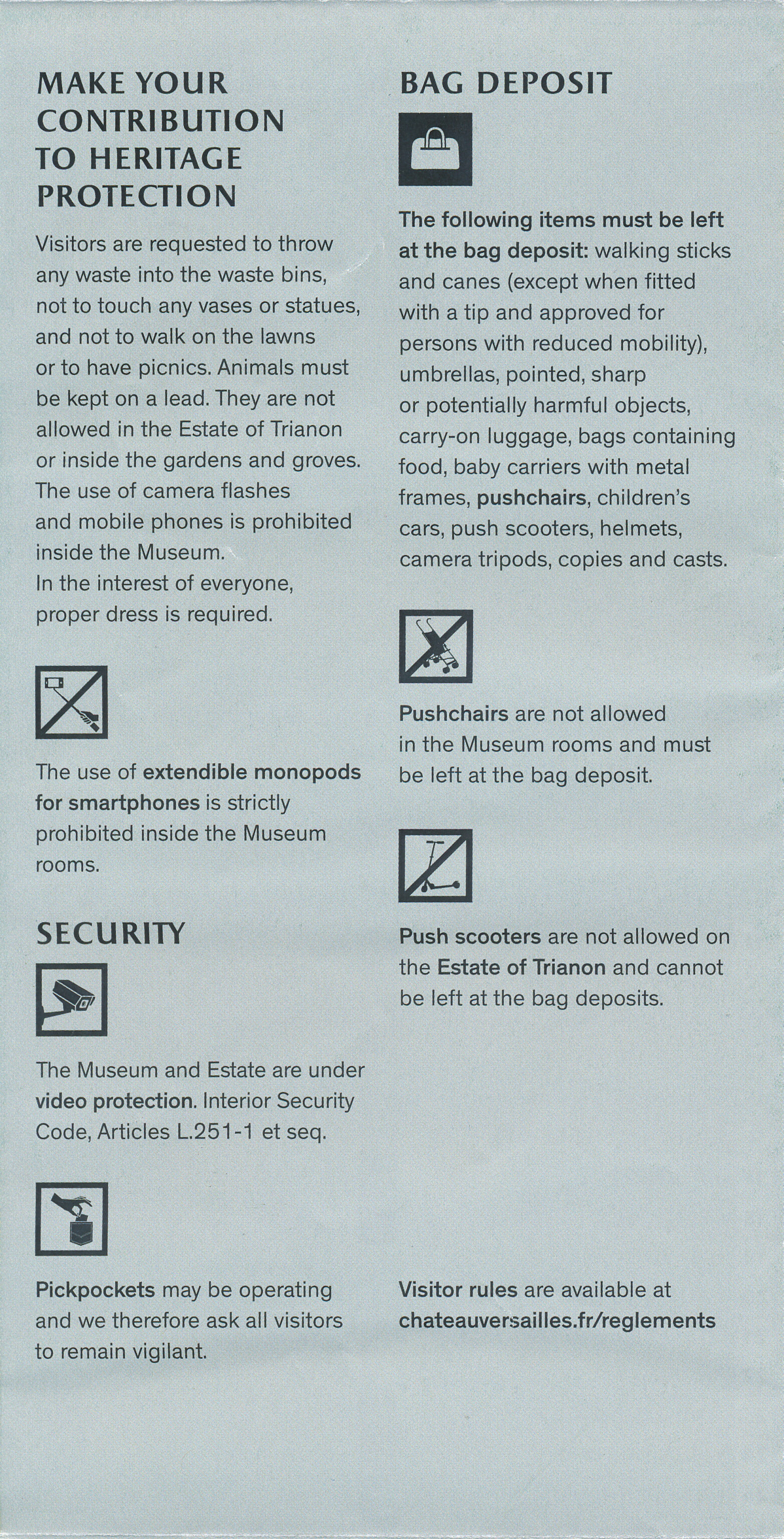
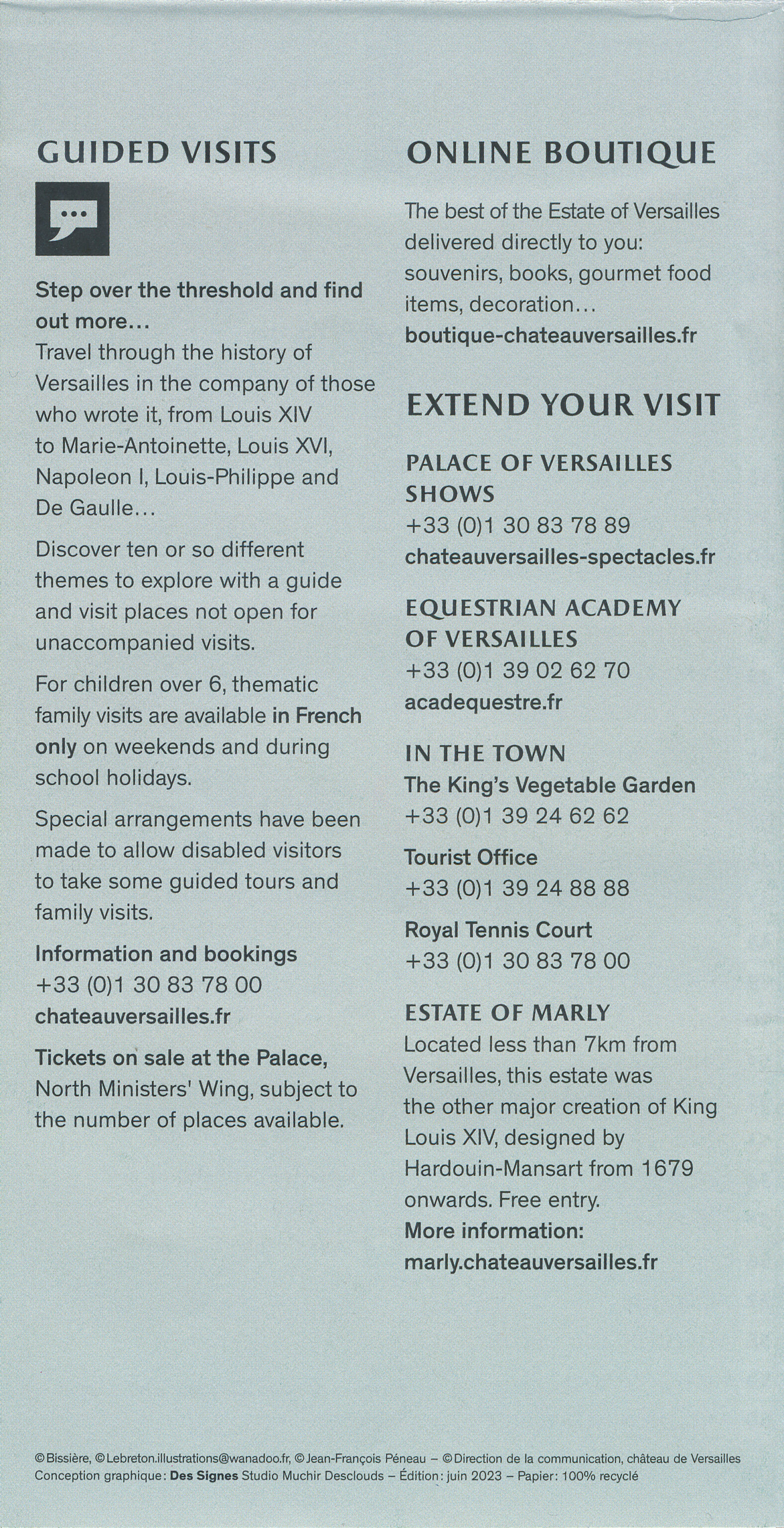
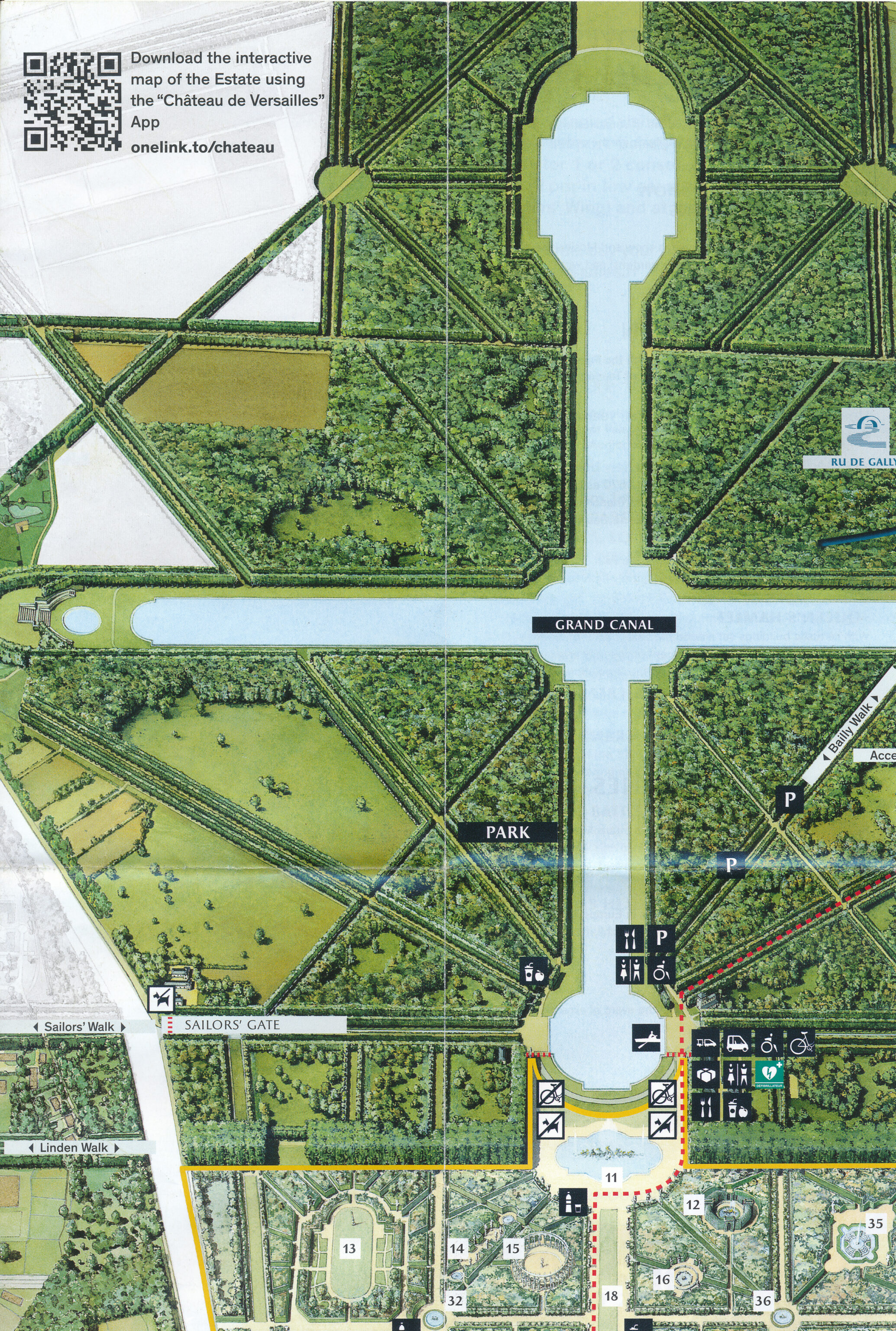
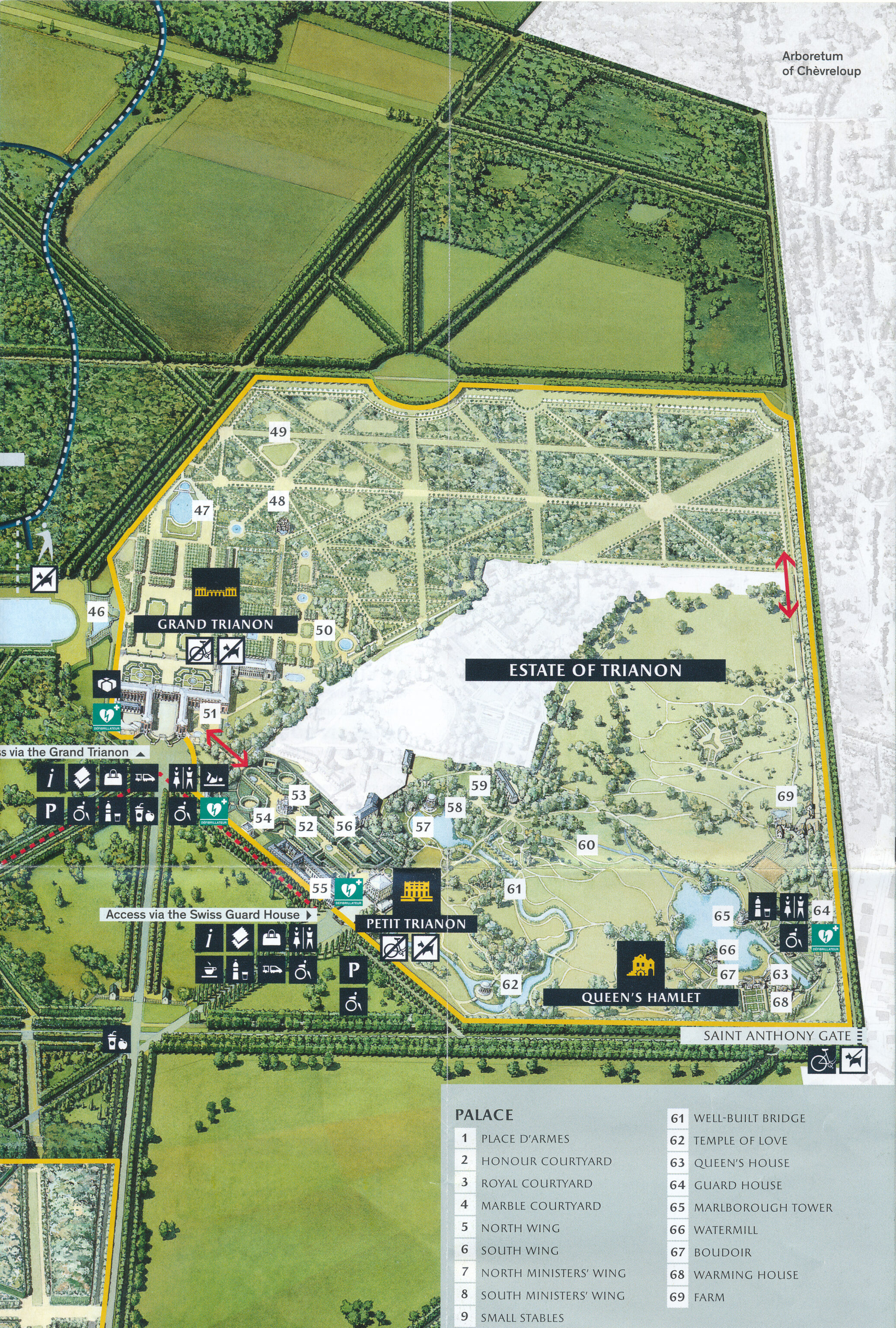
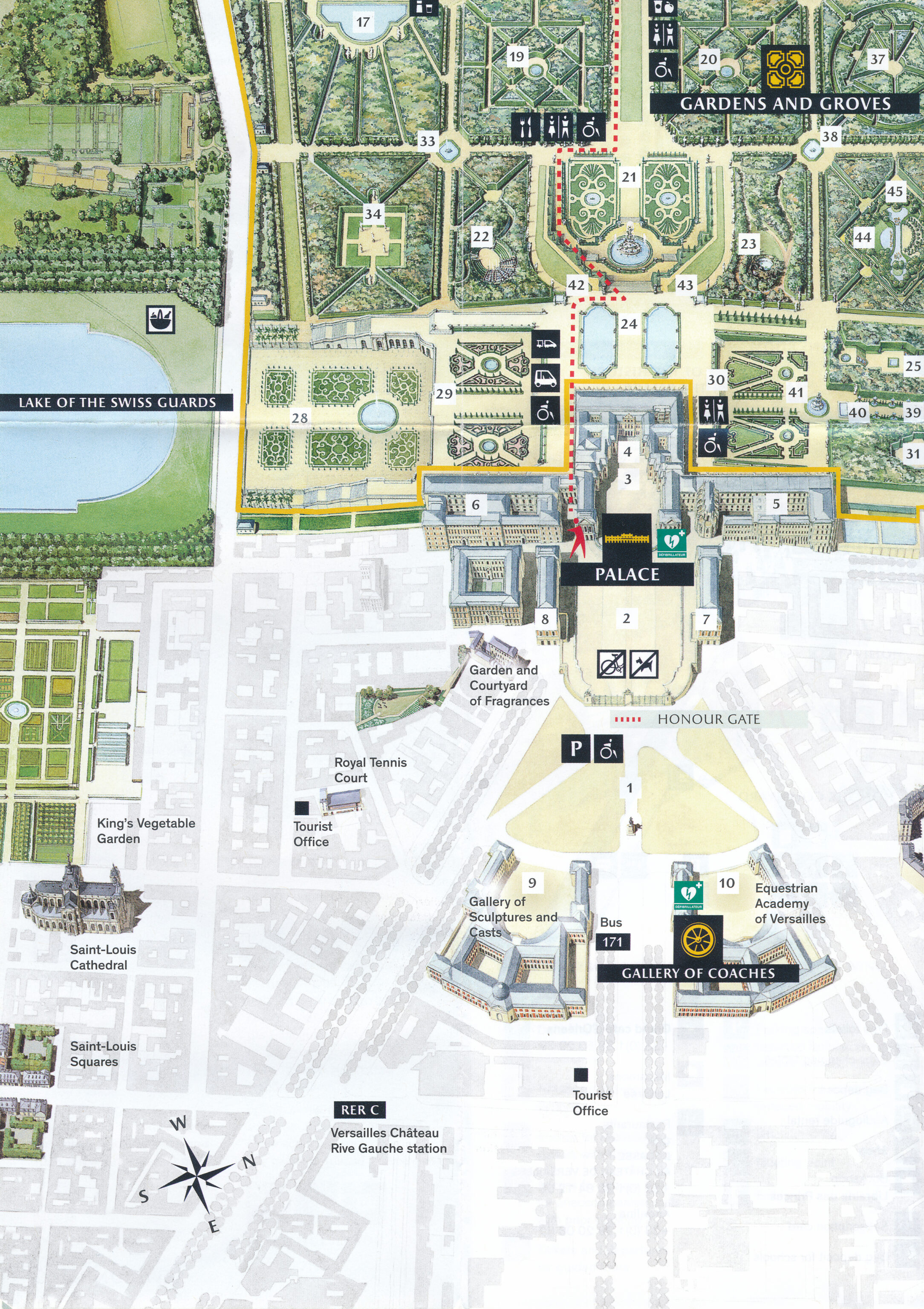
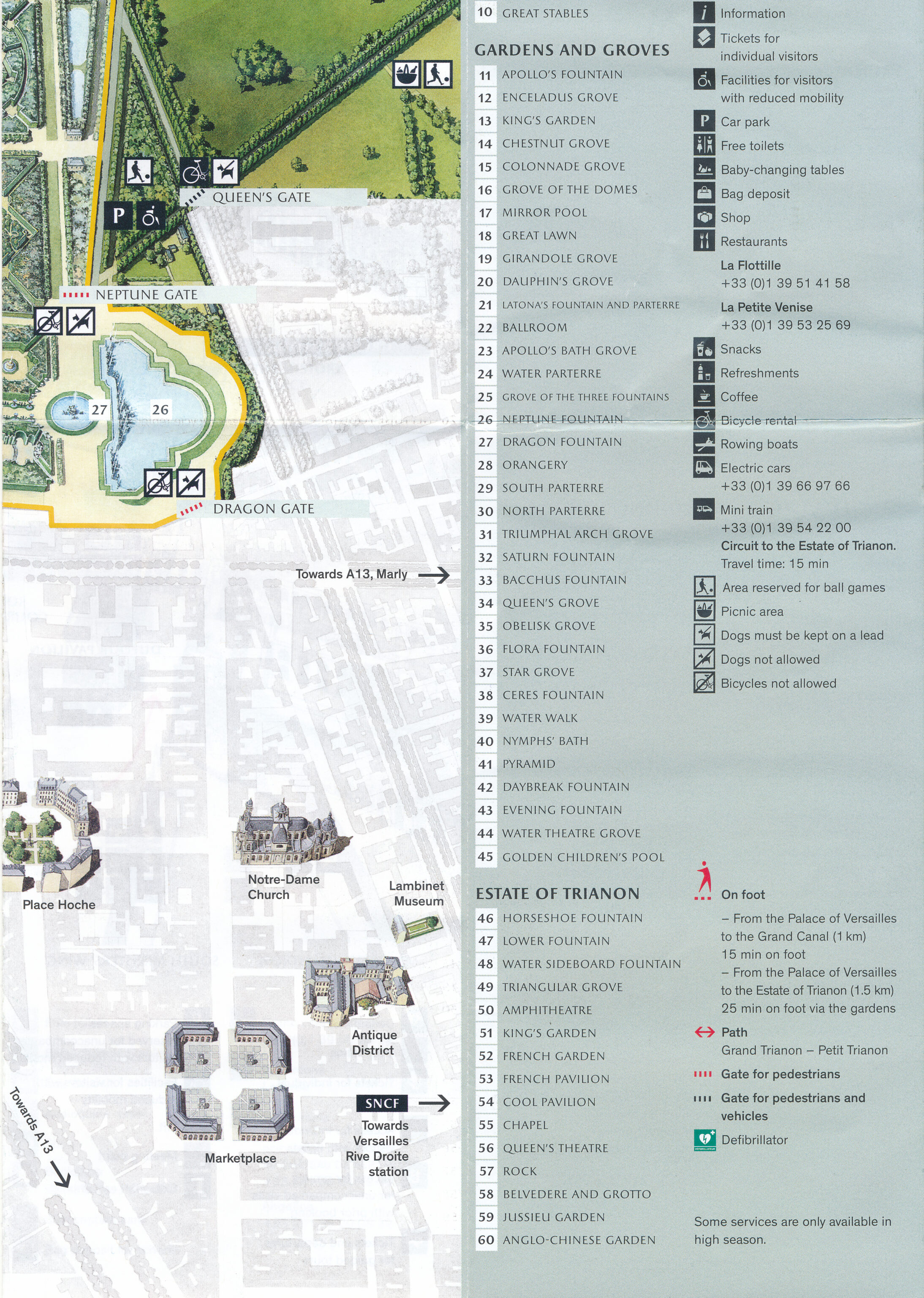
A big map for a big place…
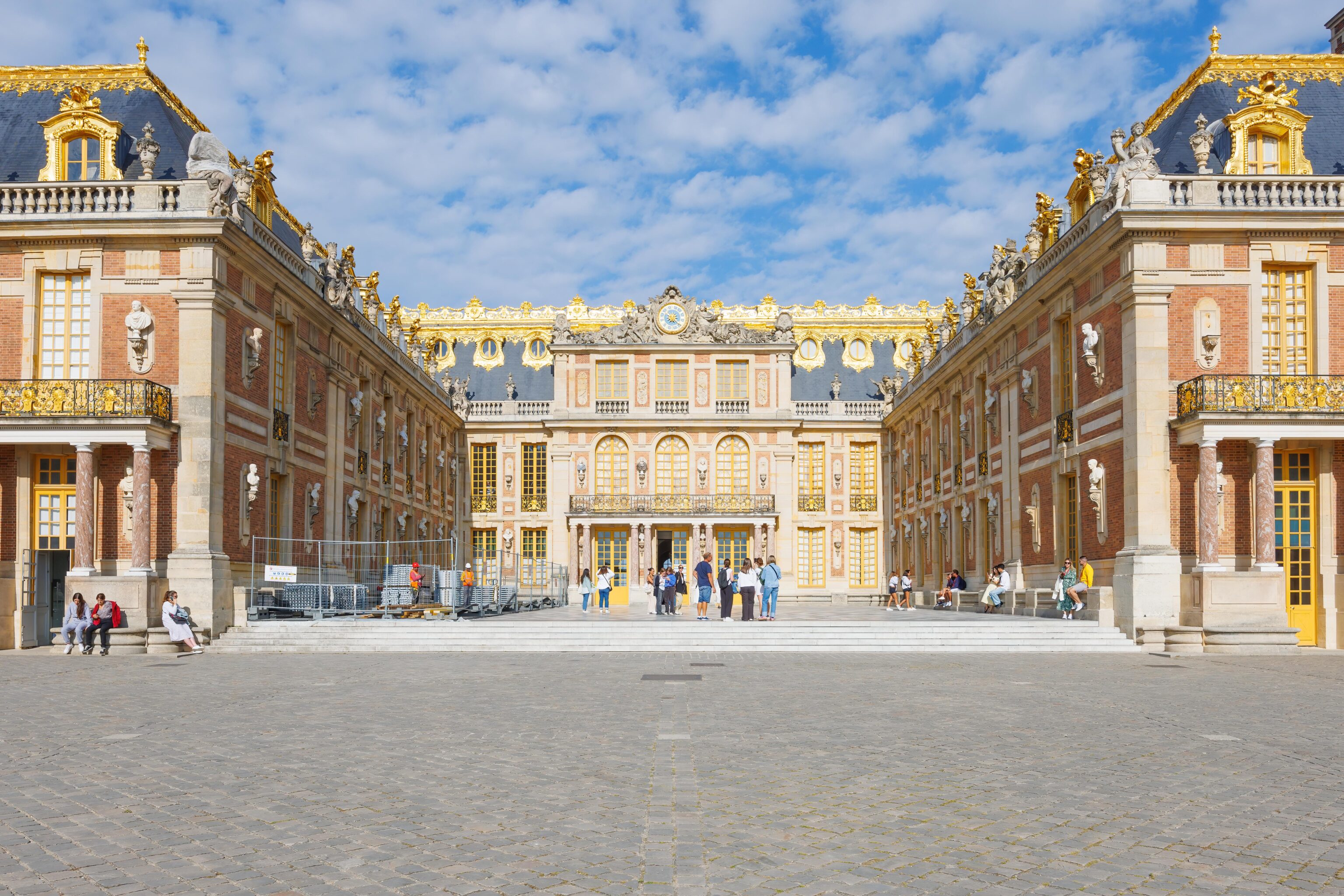
After passing through security, we exited out into the Cour d’Honneur (Honor Courtyard). We entered the palace building somewhere to the right.
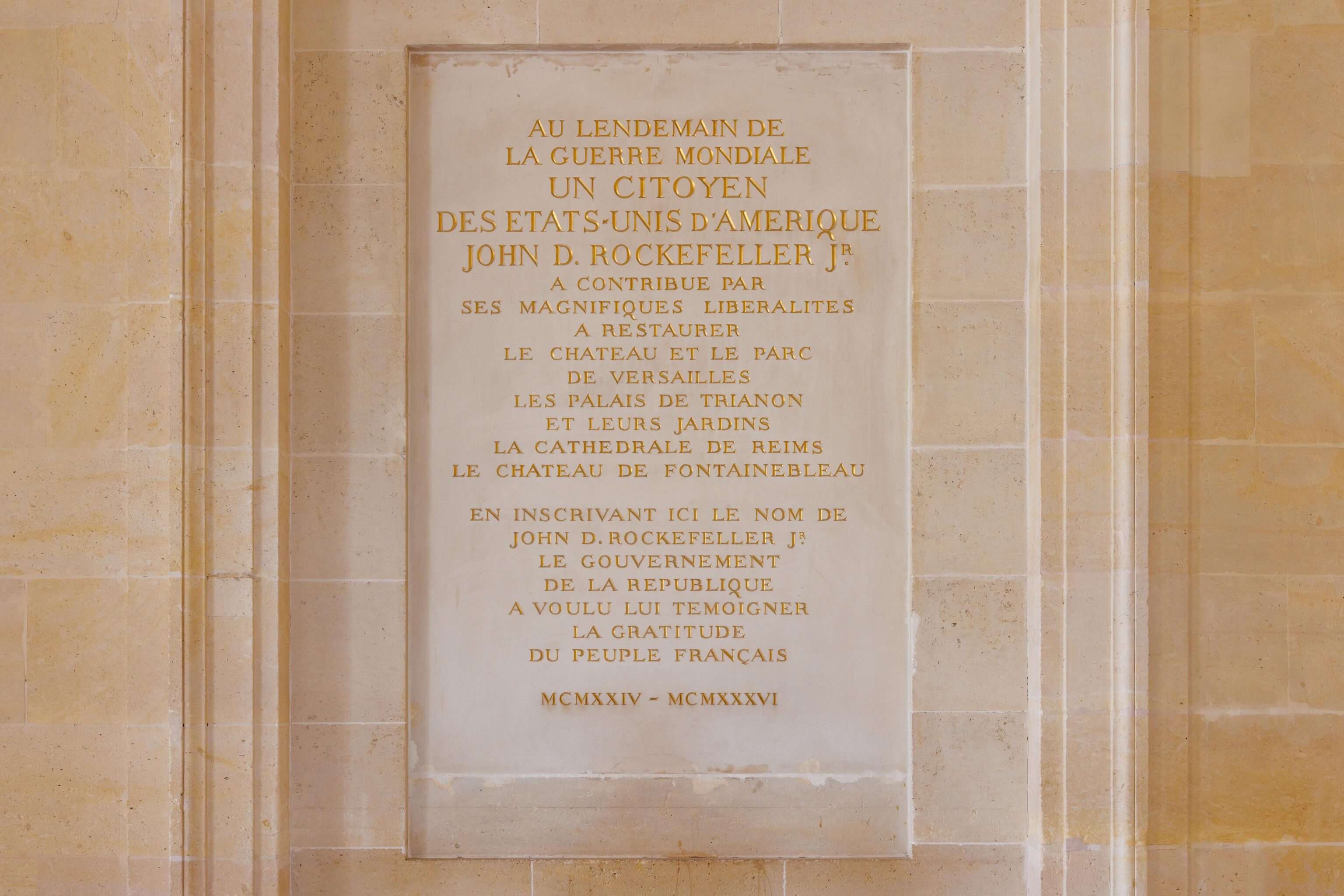
It looks like J.D. Rocekefeller, Jr., donated money to Versailles.
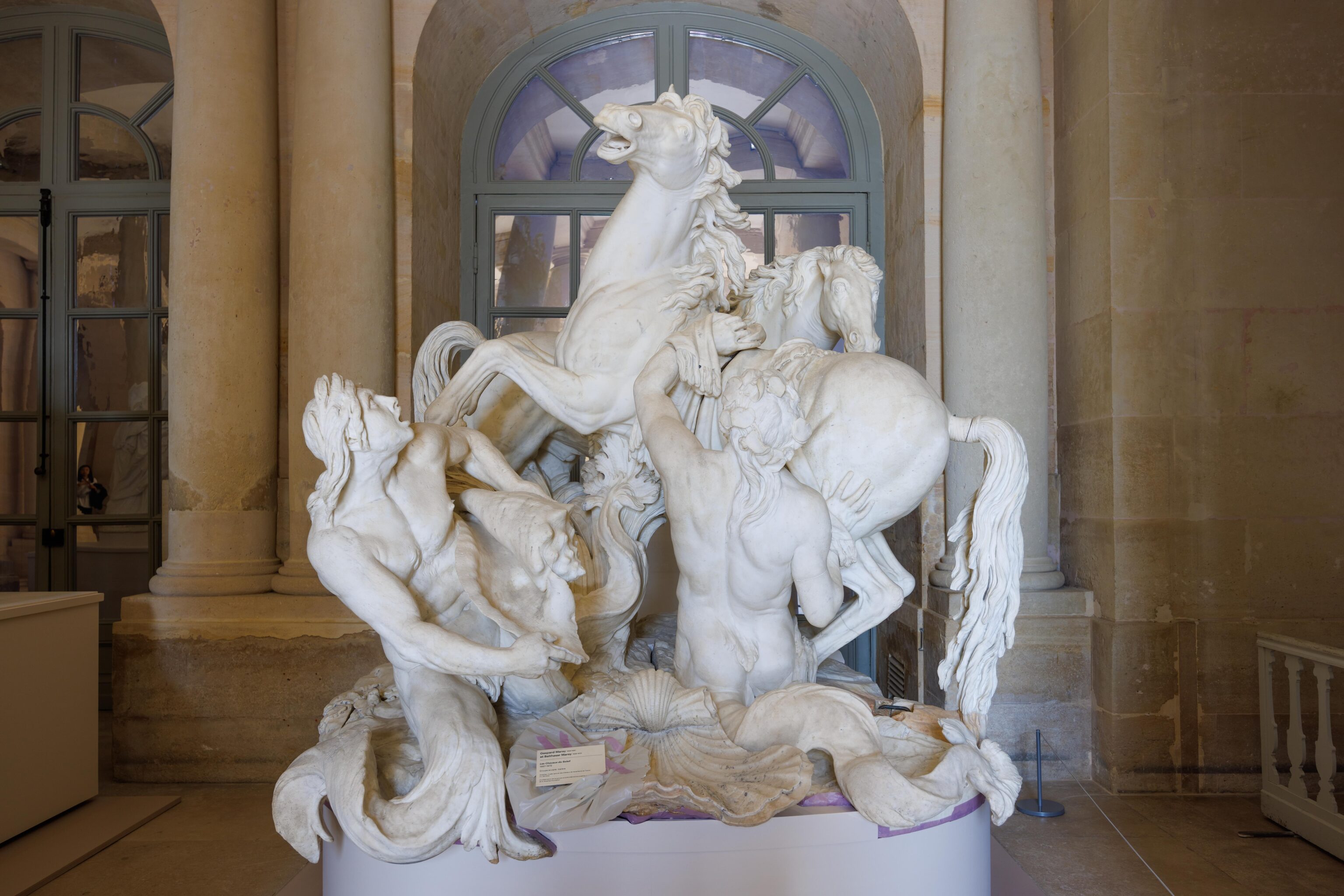
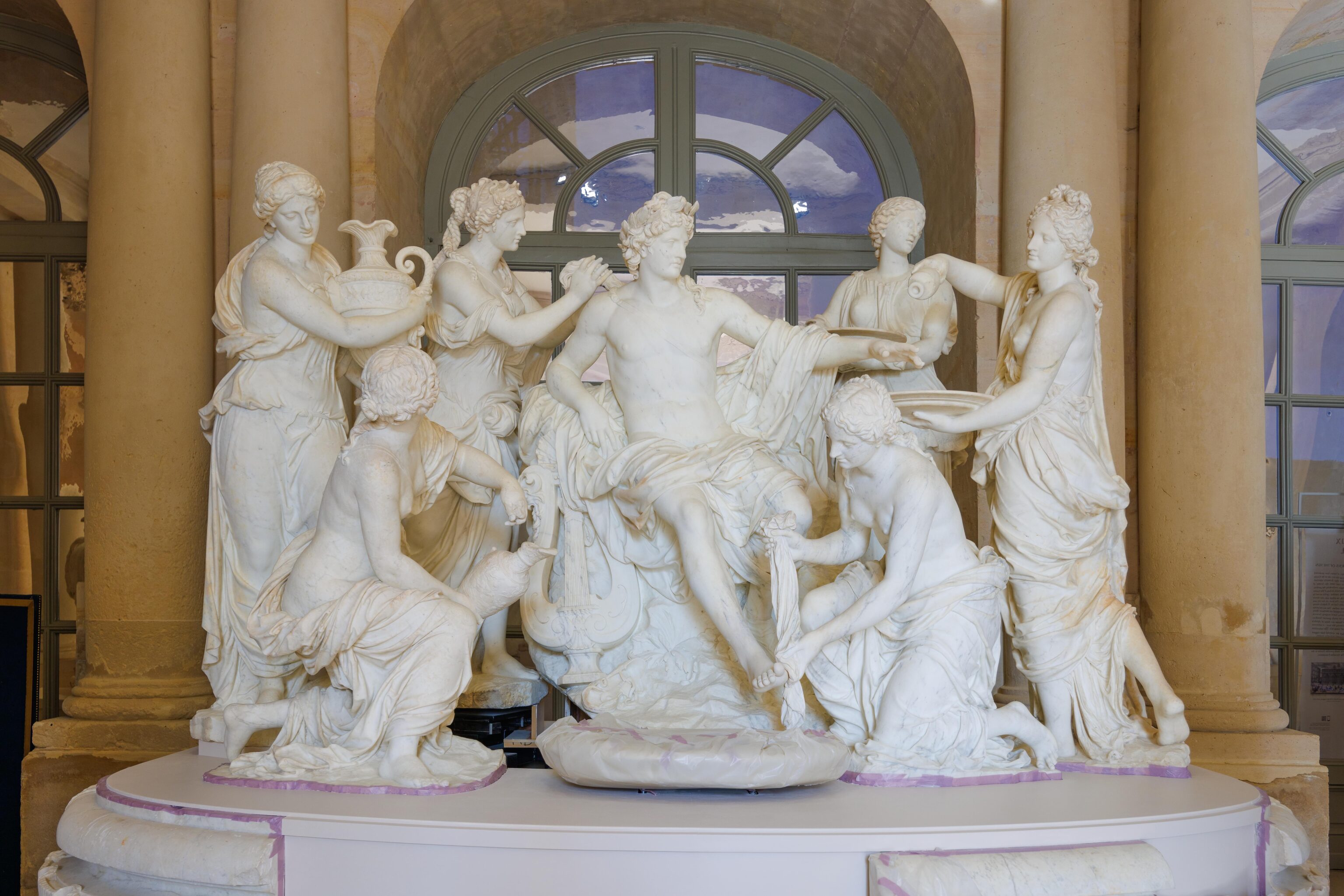
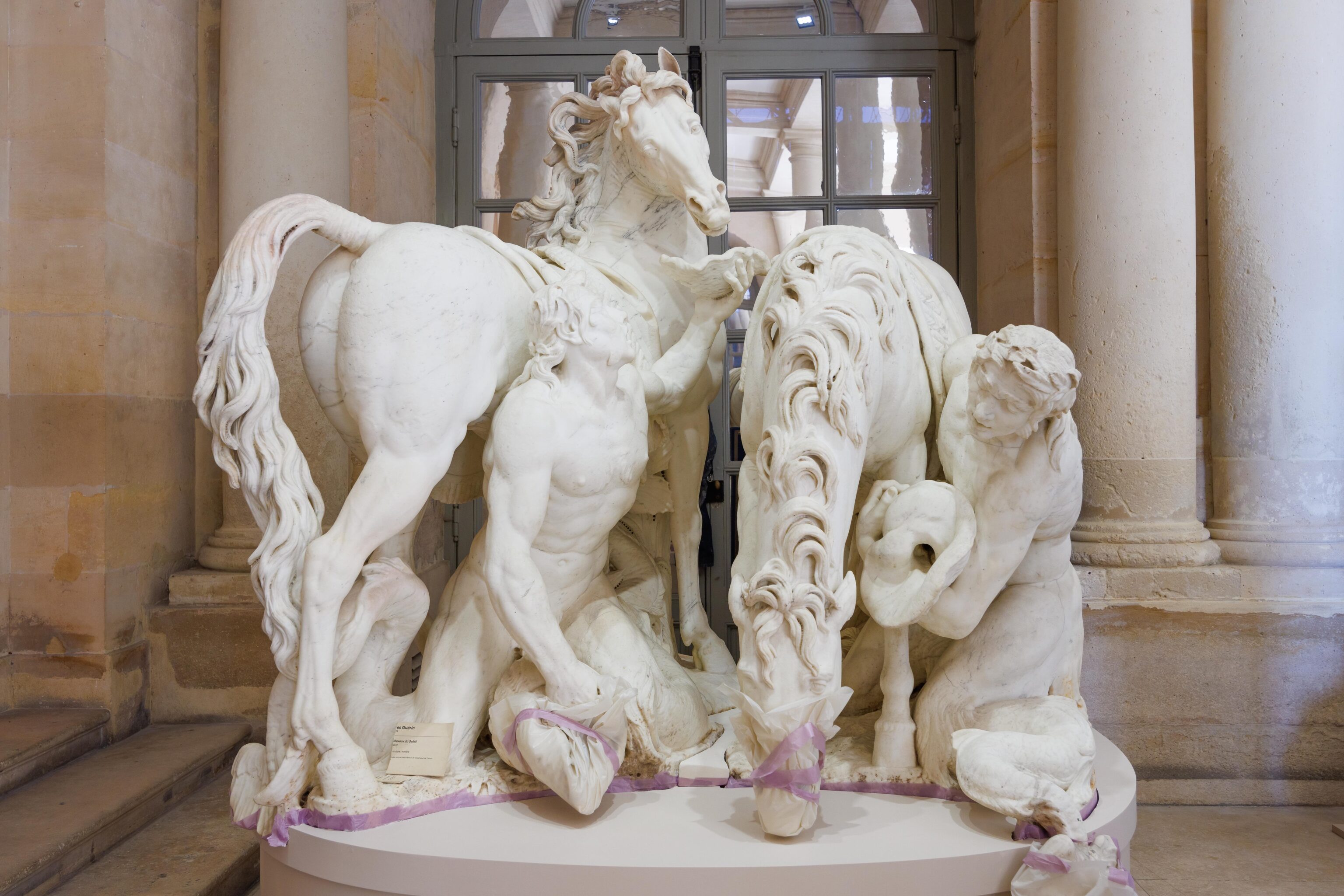
These sculptures were by the gift shop. From top to bottom, they show horses being washed, a person being washed, and giving horses water to drink.
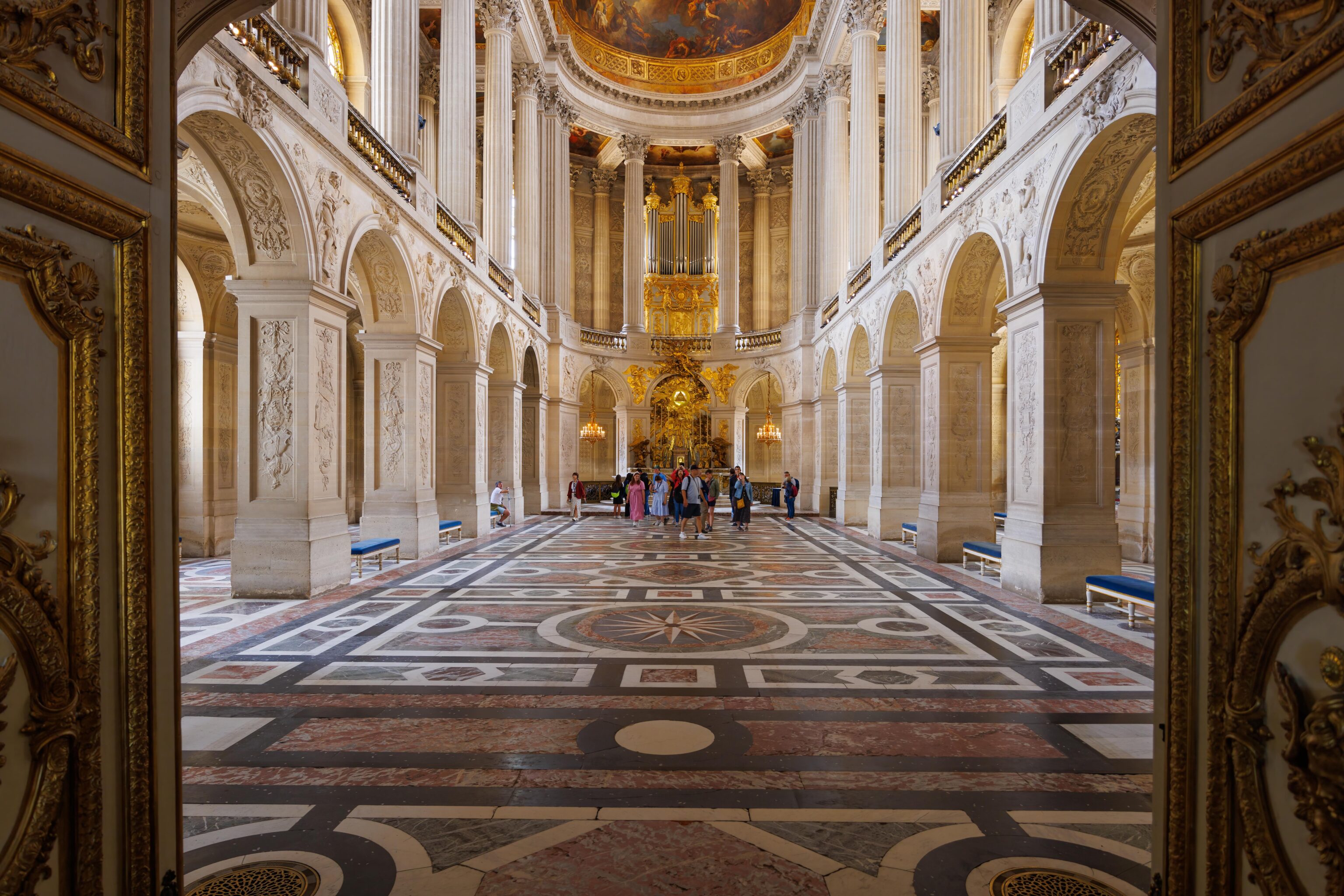
A big, grand room containing the royal chapel. We saw the exterior of this room from outside the fence earlier in the morning.
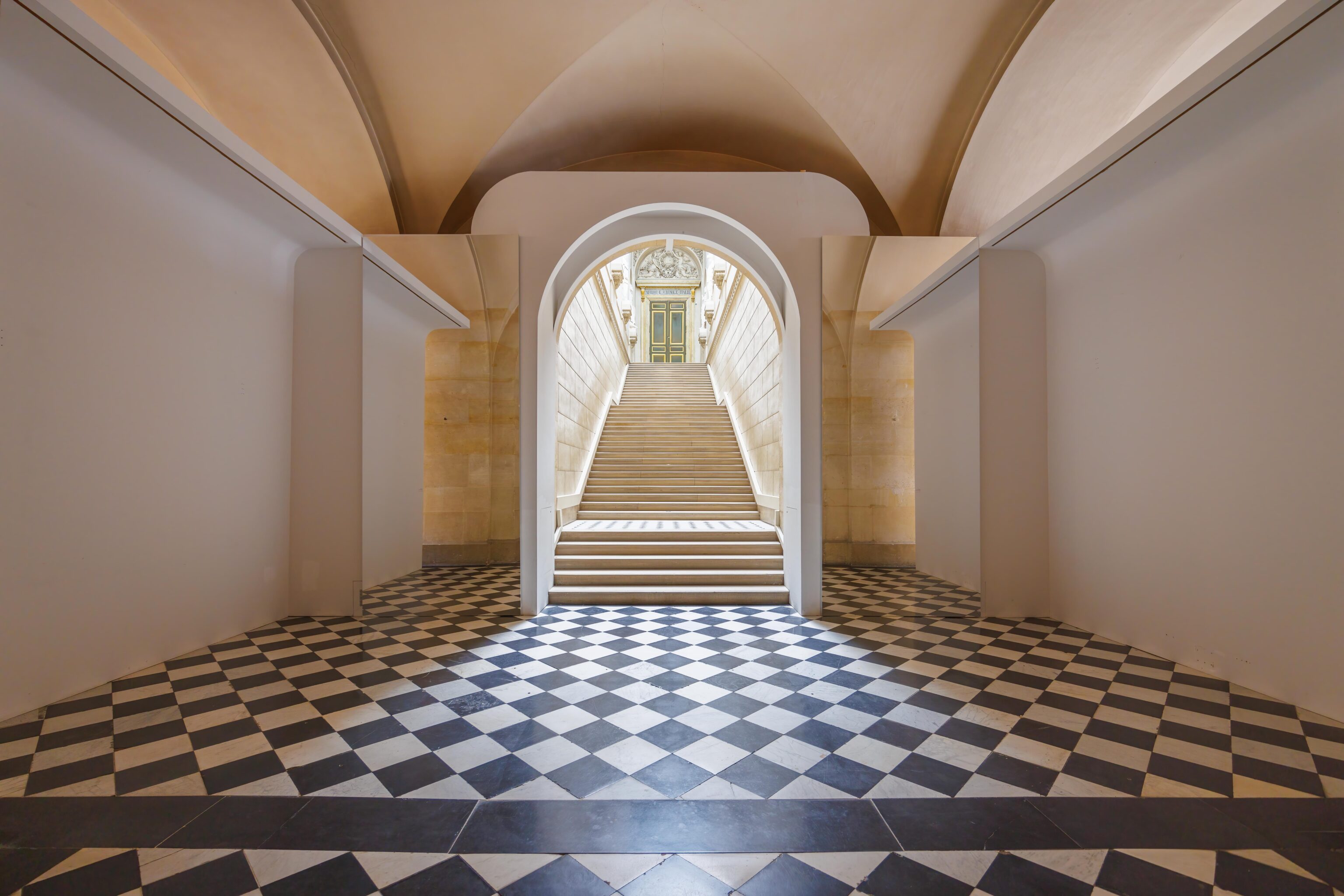
We passed by these stairs leading up to somewhere.
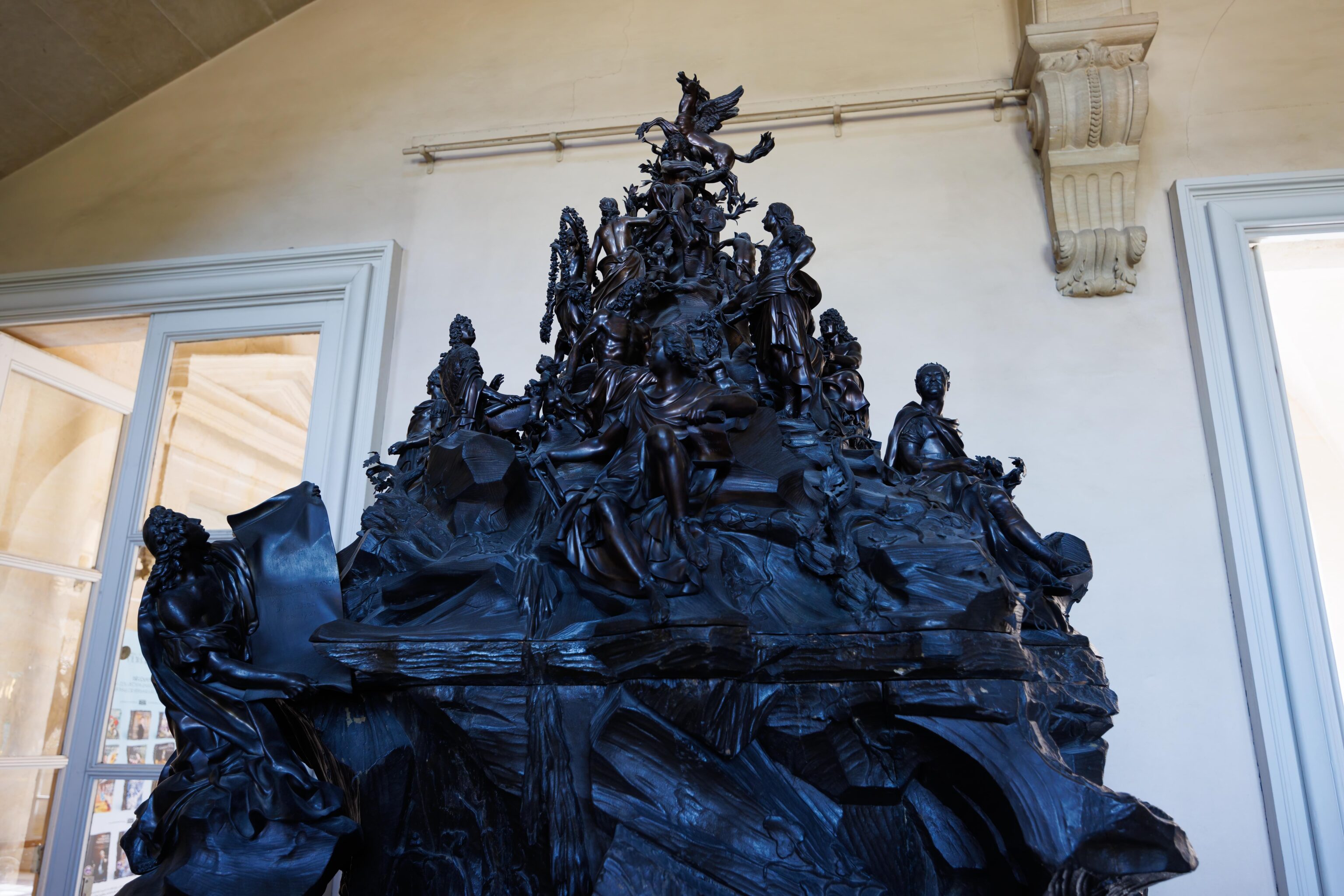
This big sculpture was placed right by a large stairwell. We went up to the next floor here.
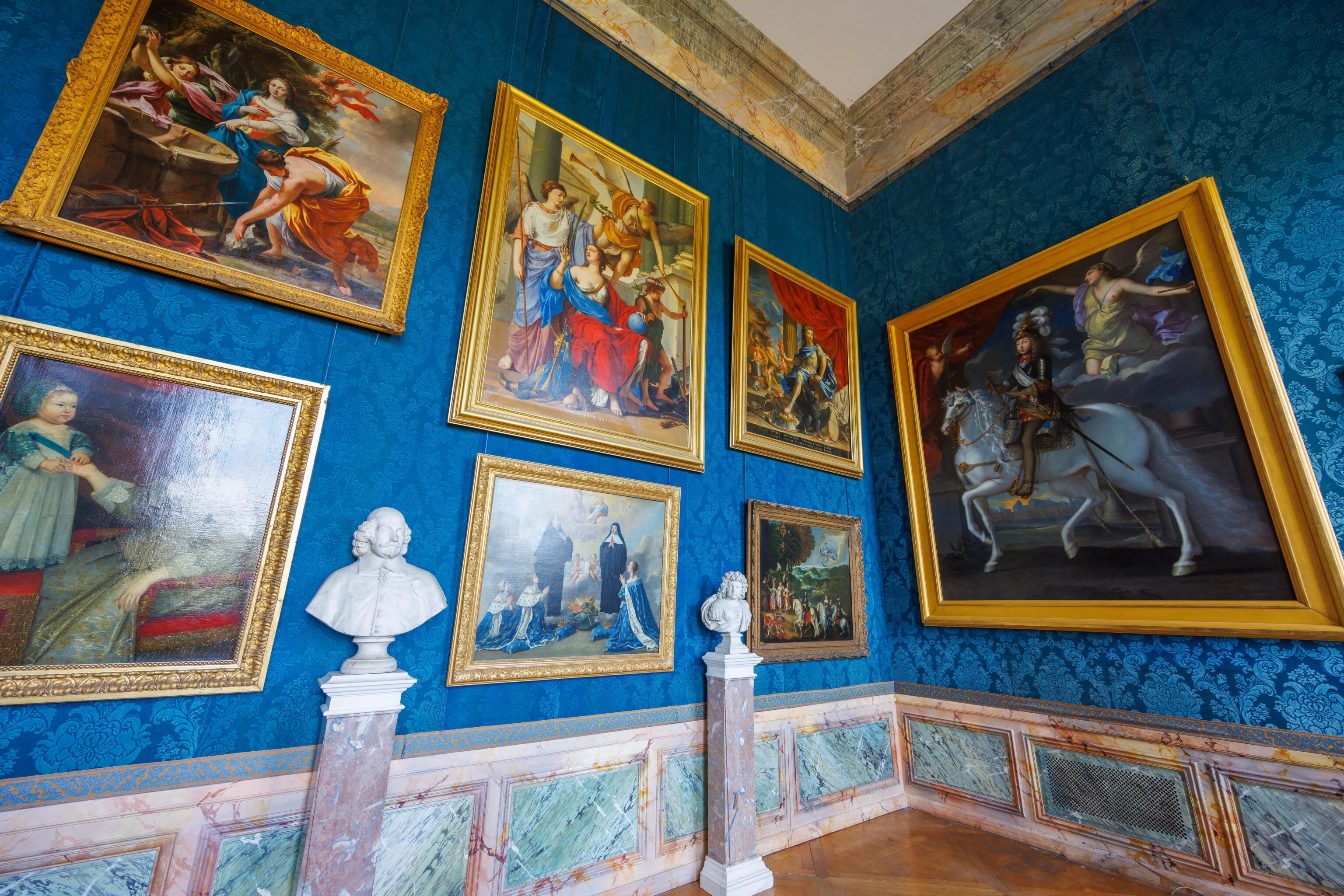
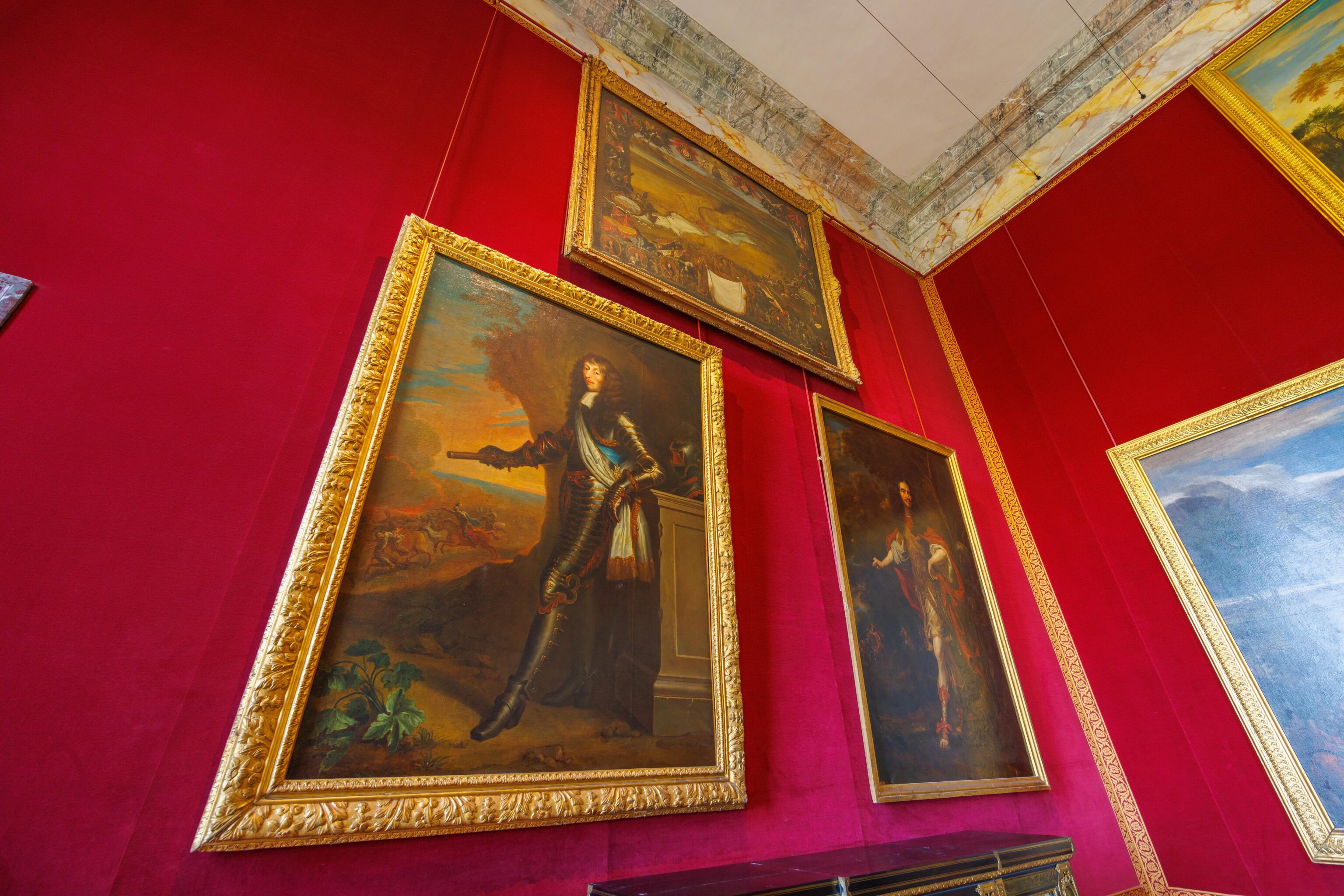
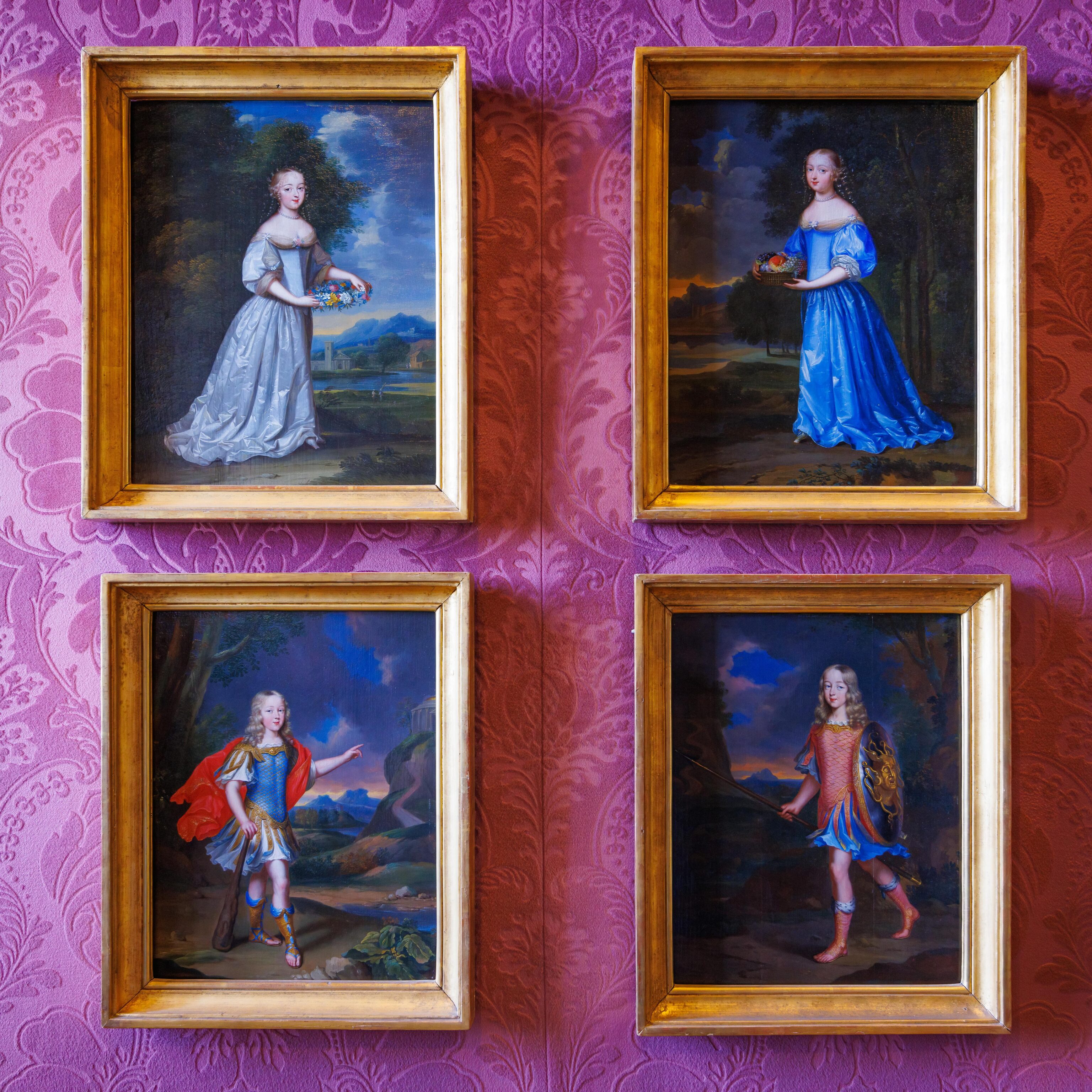
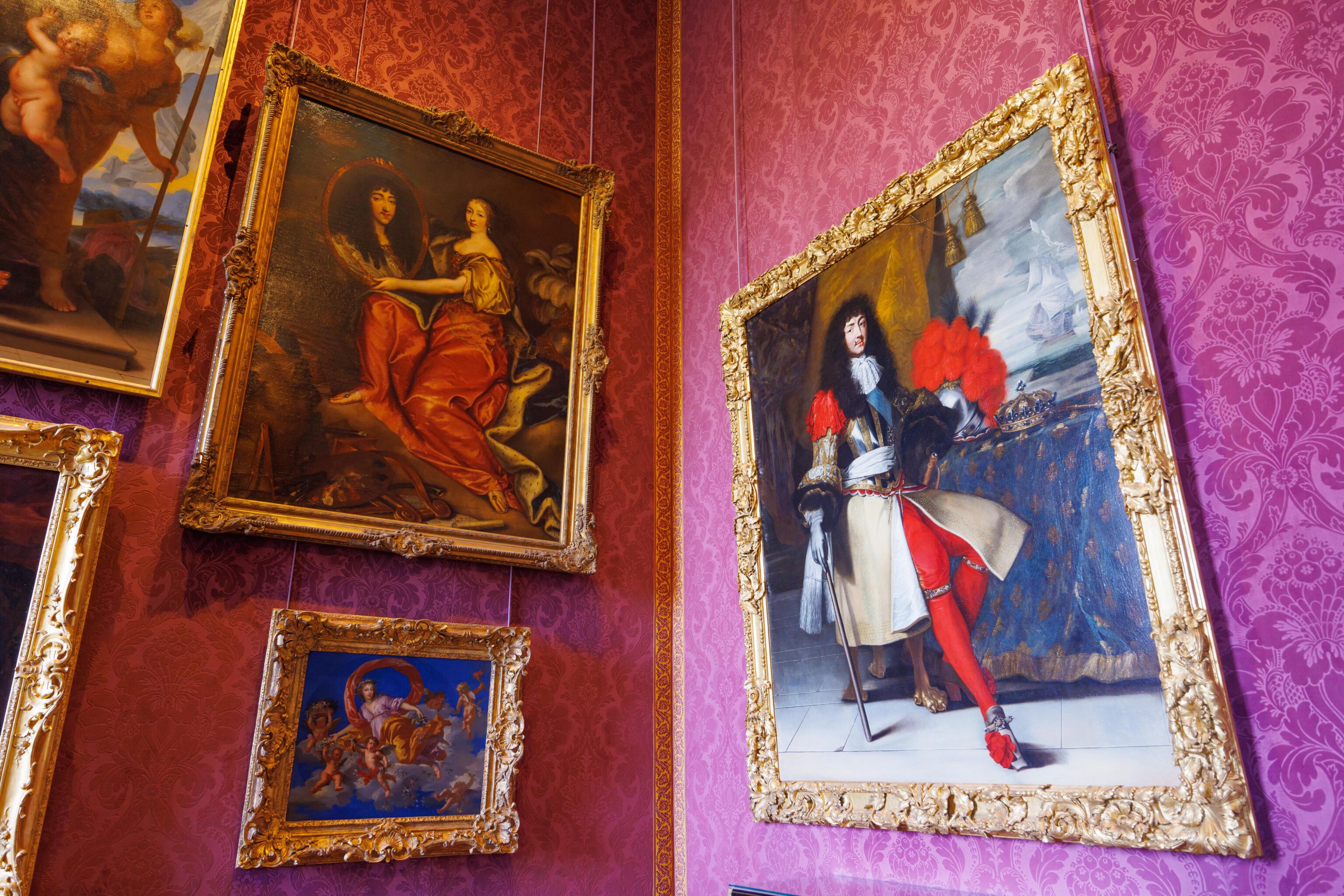
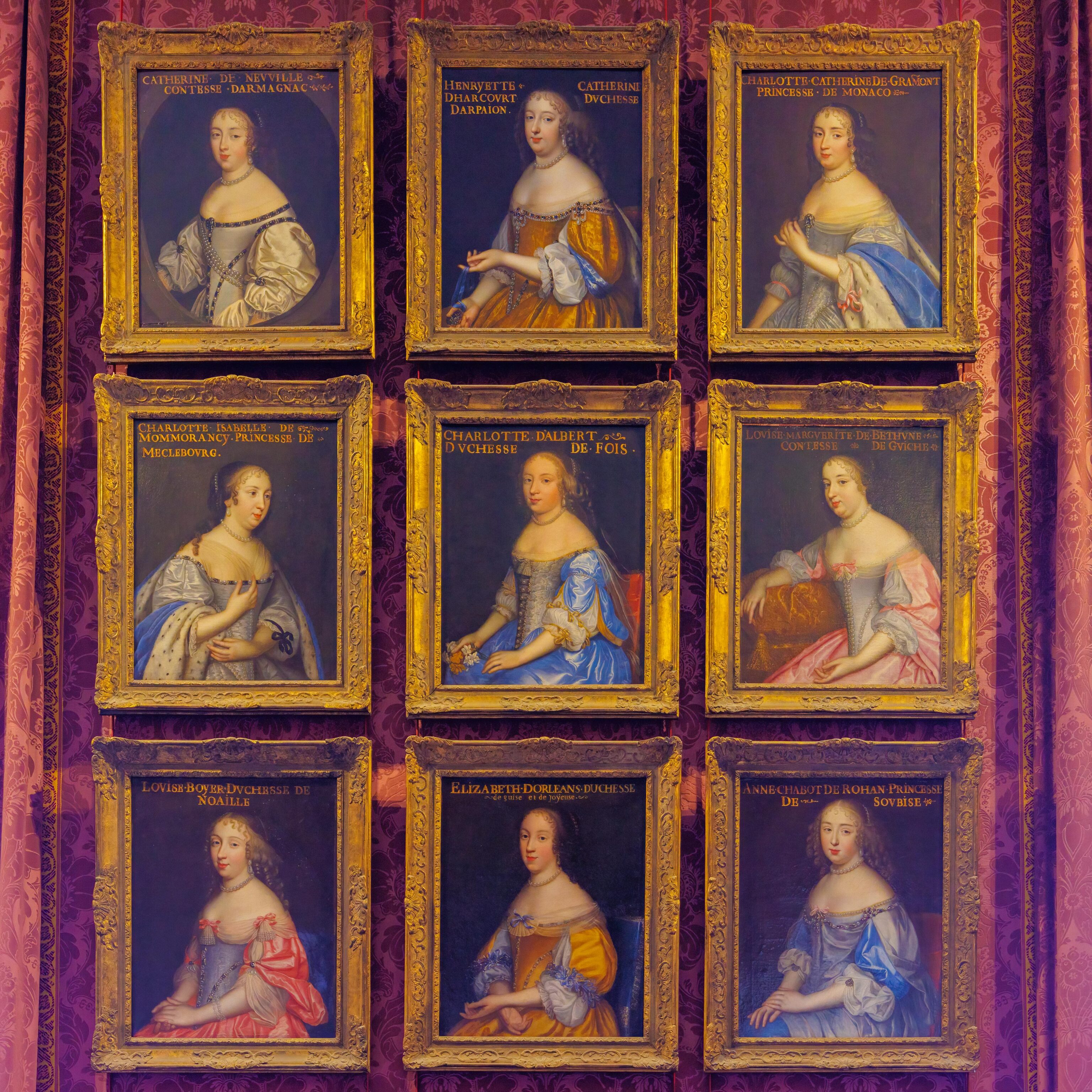
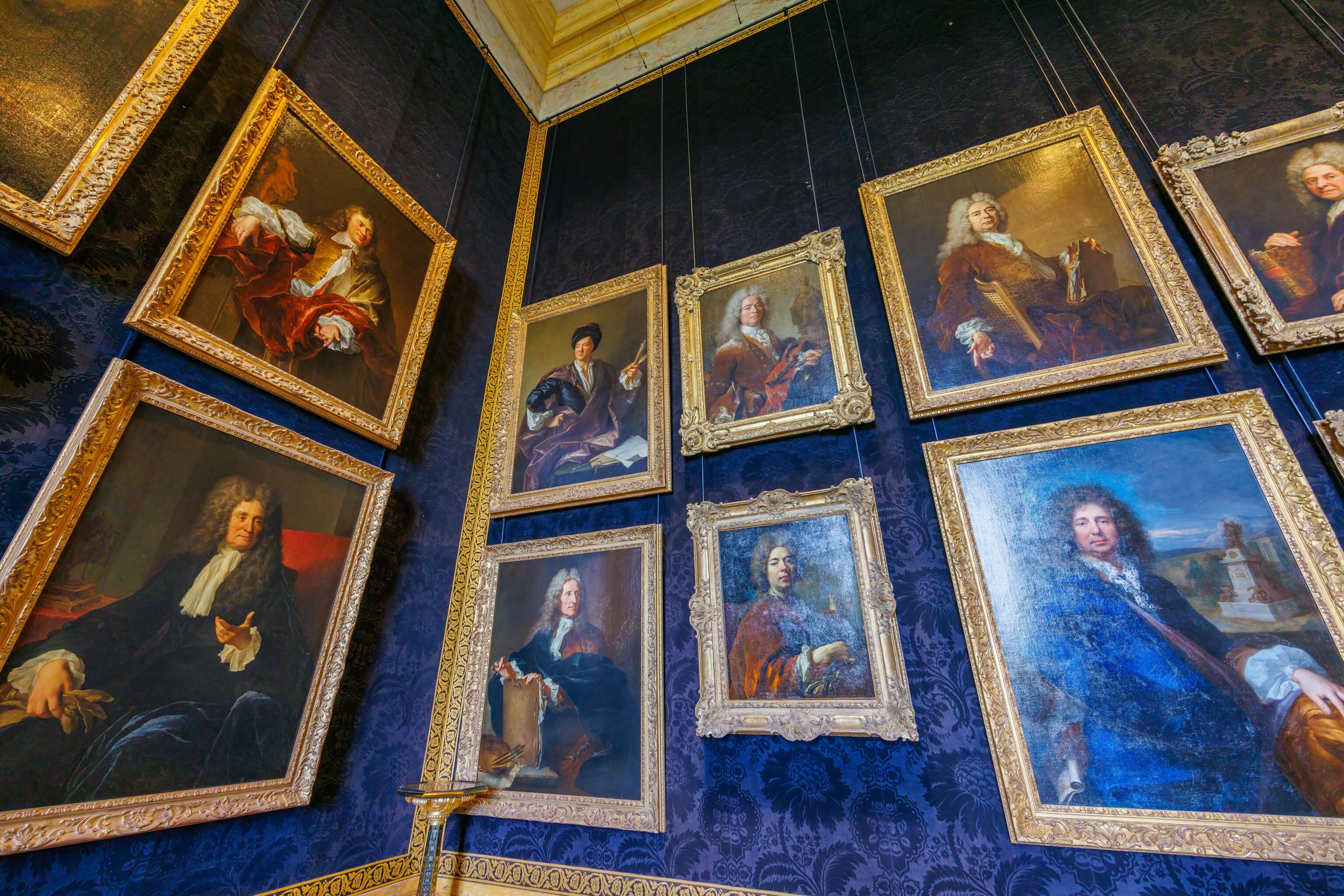
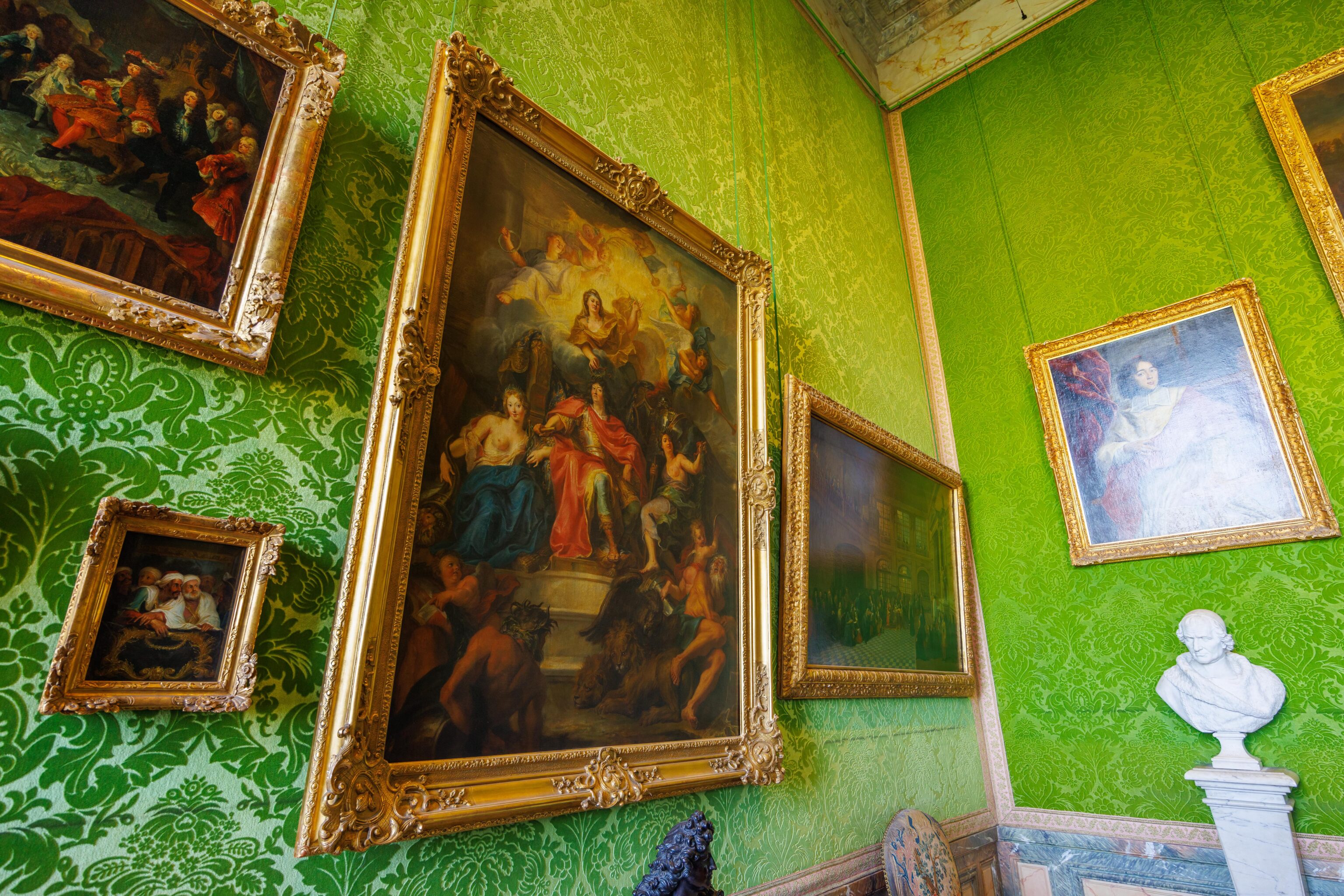
We passed through many rooms, all filled with various paintings. Most seemed to be portraits of people who we assume are members of the the royal family.
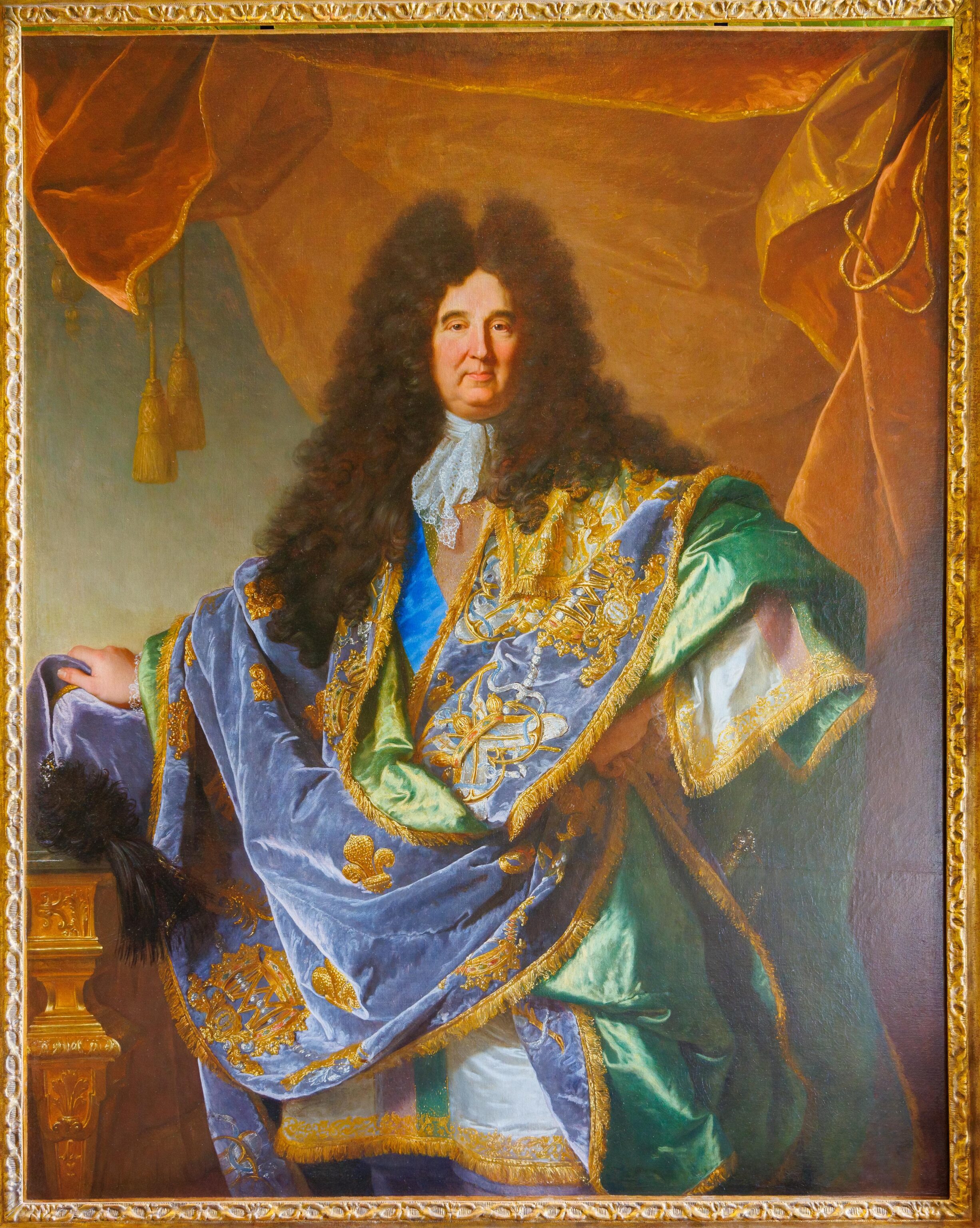
Although this seems like this could be one of the French kings, it is not. It is Philippe de Courcillon, Marquis de Dangeau. Wikipedia provides a brief overview1:
Philippe de Courcillon, Marquis de Dangeau (21 September 1638 – 9 September 1720) was a French officer and author. Born in Dangeau, he is probably most remembered for keeping a diary from 1684 until the year of his death. These Memoirs, which, as Saint-Simon said "of an insipidity to make you sick", contain many facts about the reign of Louis XIV. From 1684 to 1720, he kept a journal on daily life at the court of Versailles. Extracts from it were published by Voltaire in 1770, by Madame de Genlis in 1817 and by Pierre-Édouard Lémontey in 1818. It was whilst writing notes on these memoirs that Saint-Simon undertook to write his own Mémoires. The 19 volumes of the complete edition of Journal de la cour de Louis XIV appeared for the first time between 1854 and 1860.
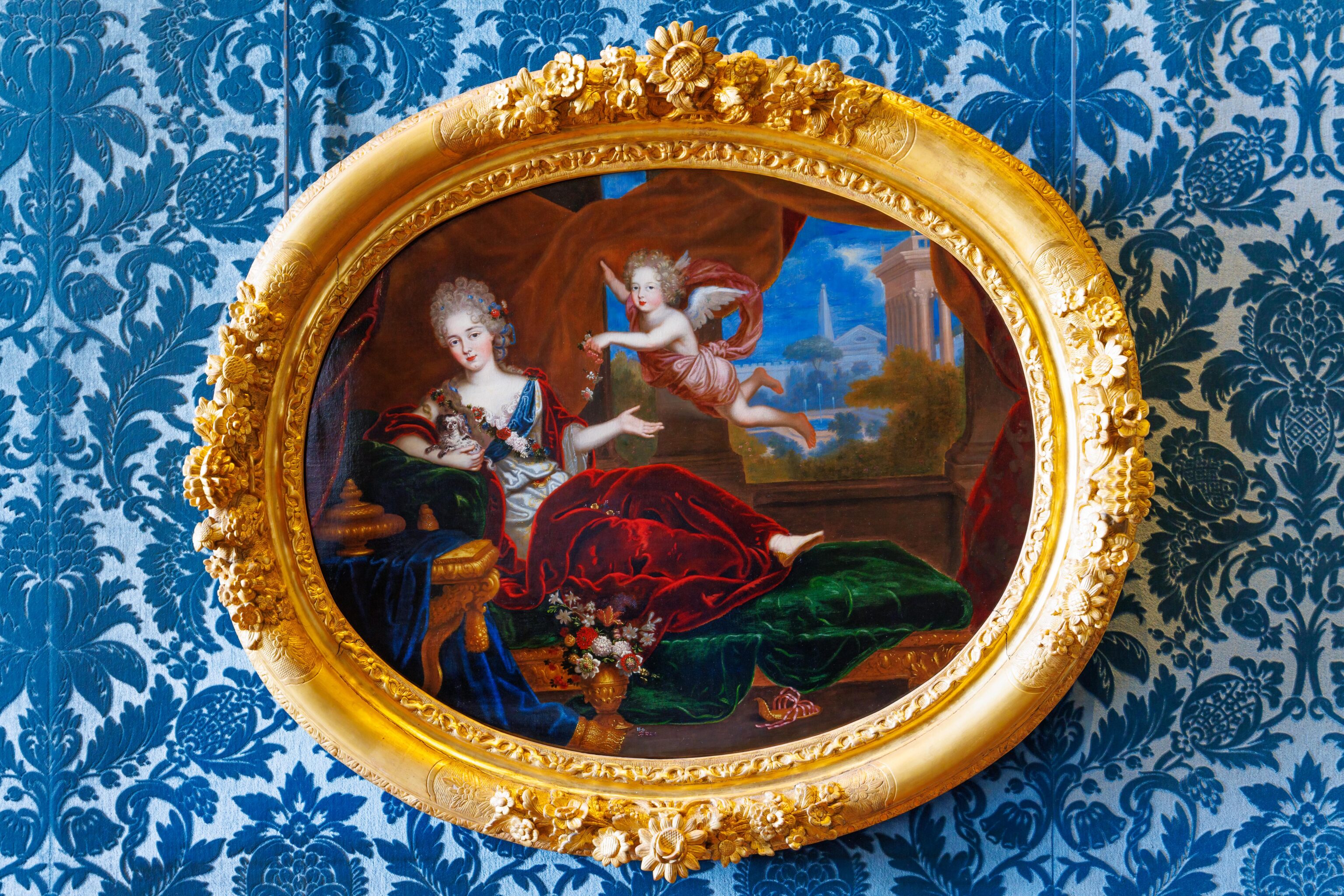
This oval shaped painting is very colorful. The woman is holding a little dog while a little cherub passes her some flowers.
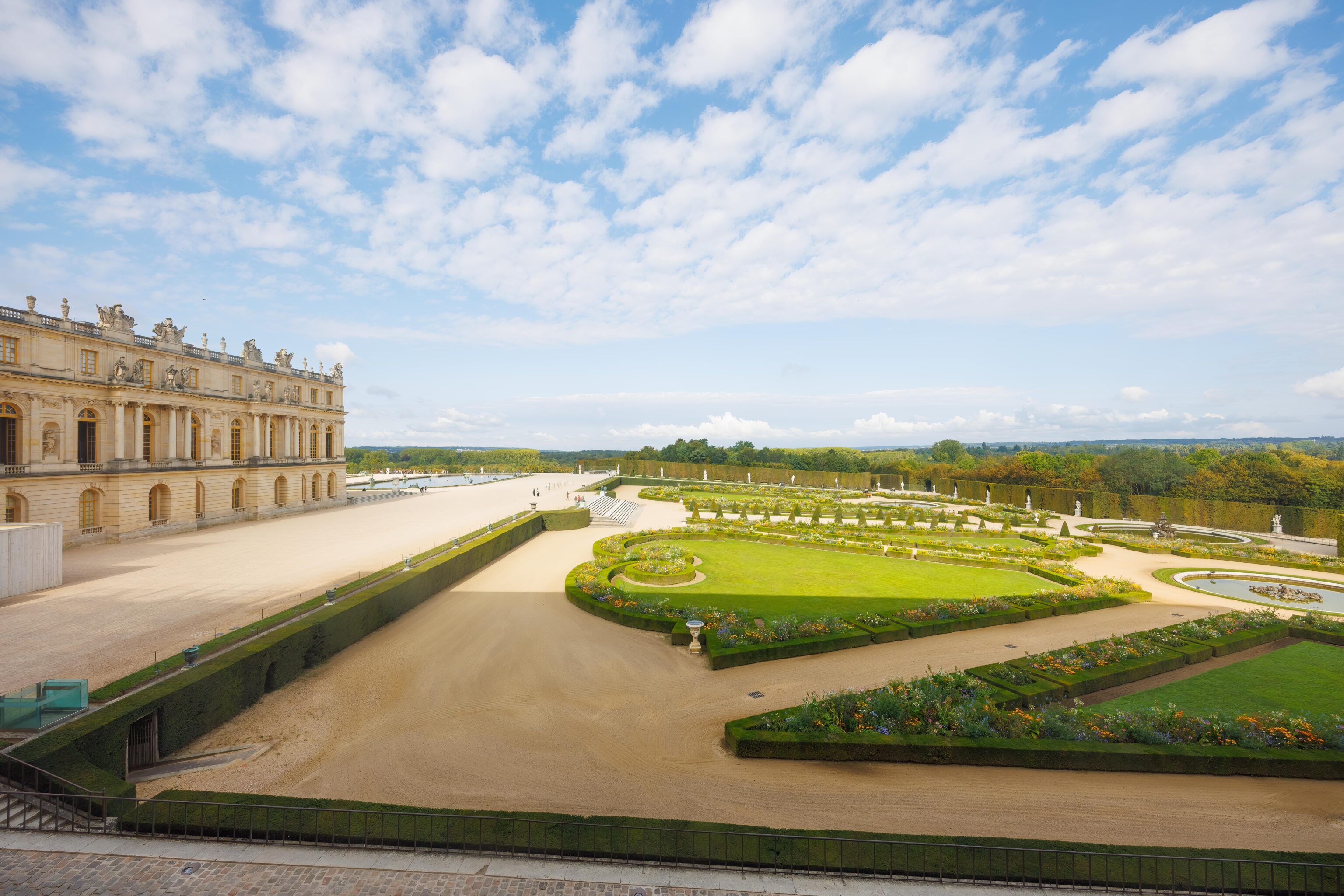
It is hard to figure out exactly where one is while walking through the building. We found ourselves walking south from the north wing of the palace.
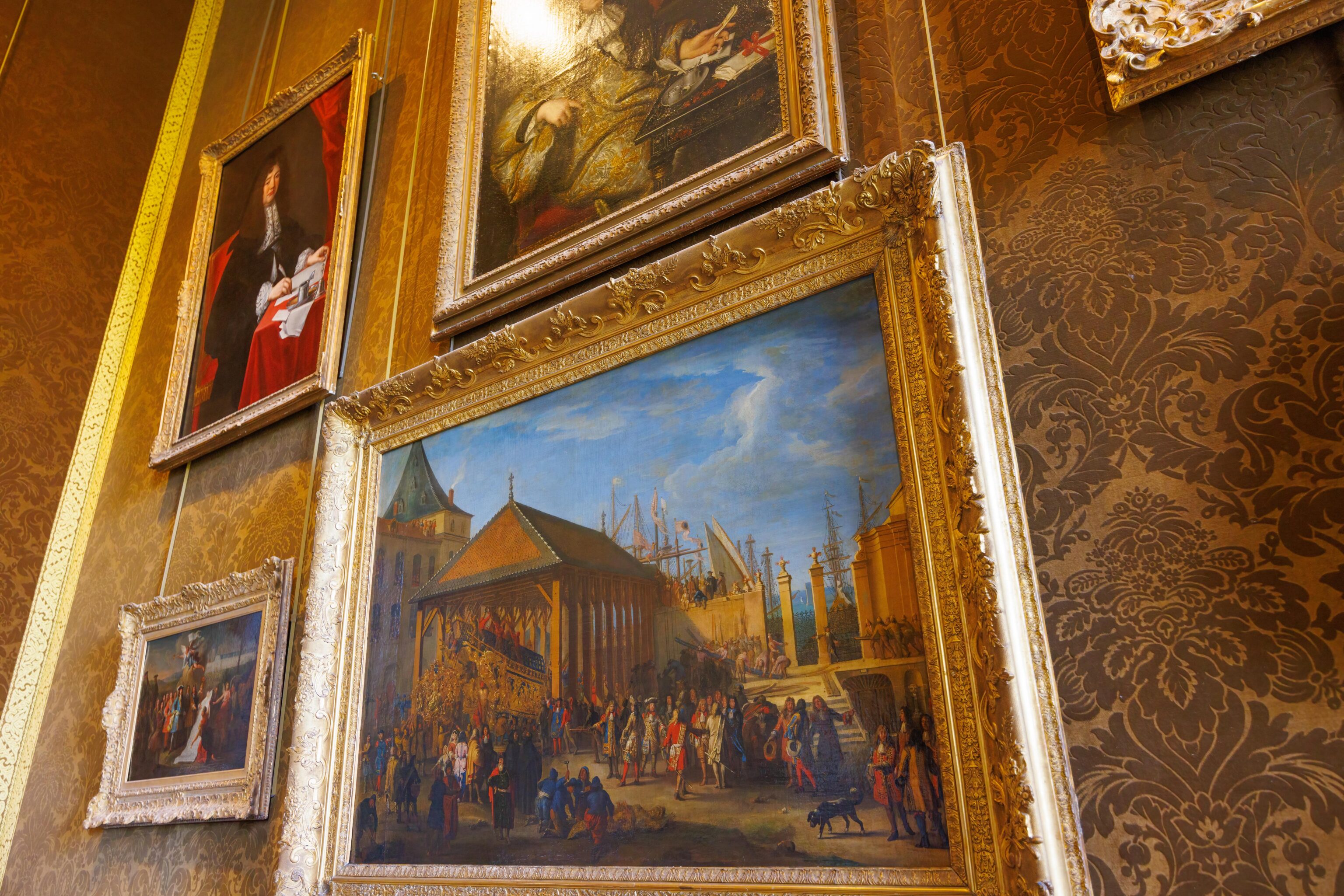
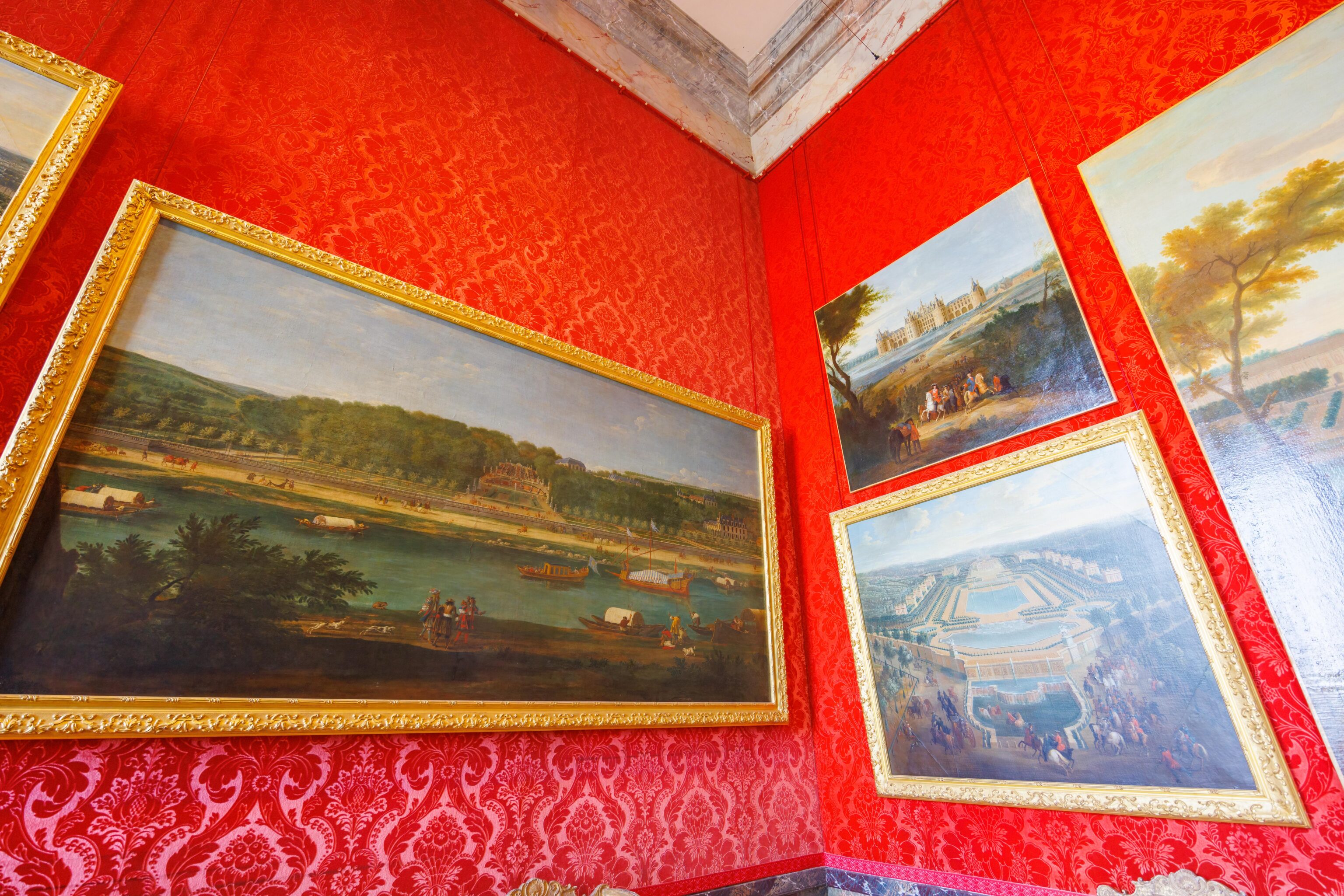
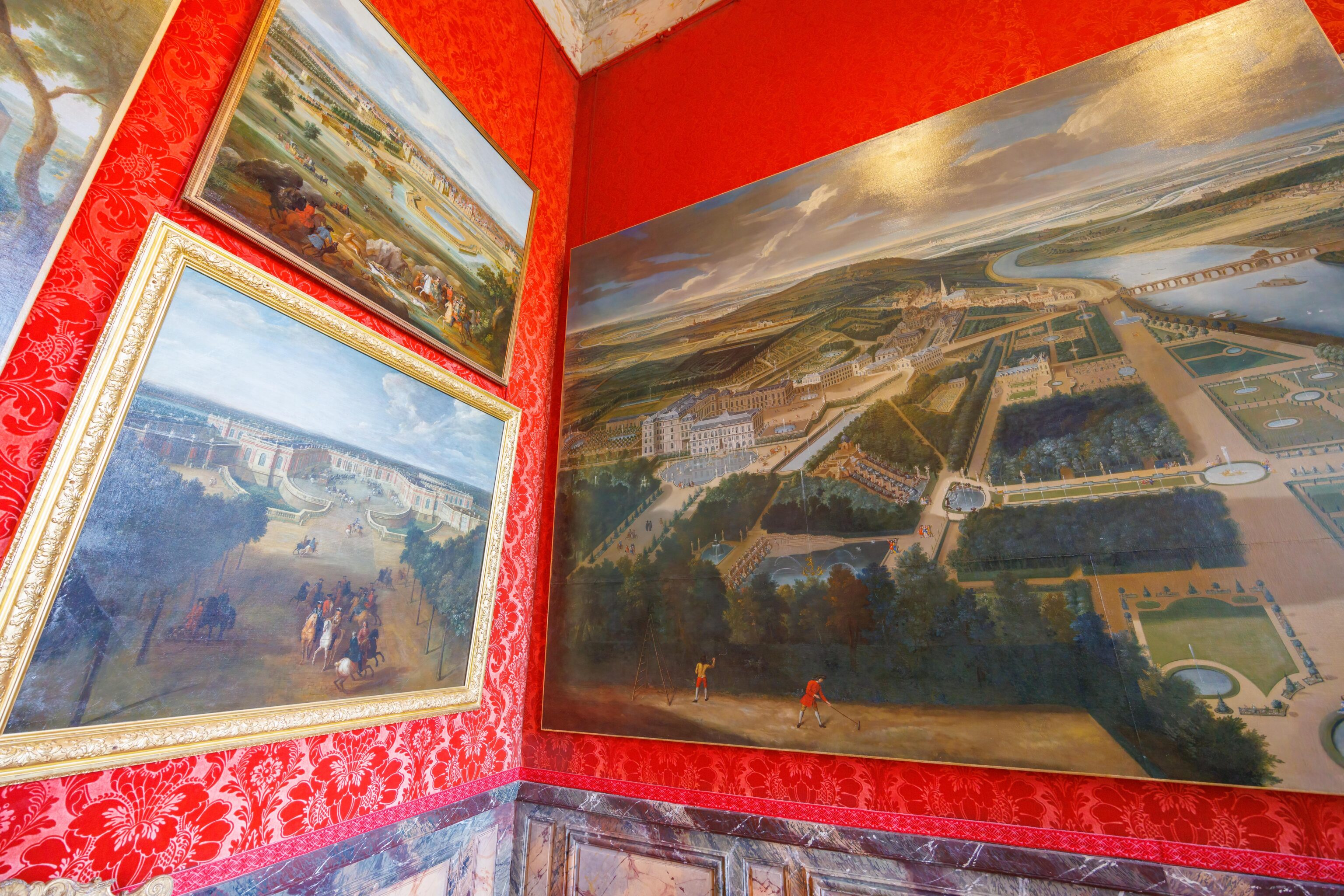
More rooms filled with paintings…
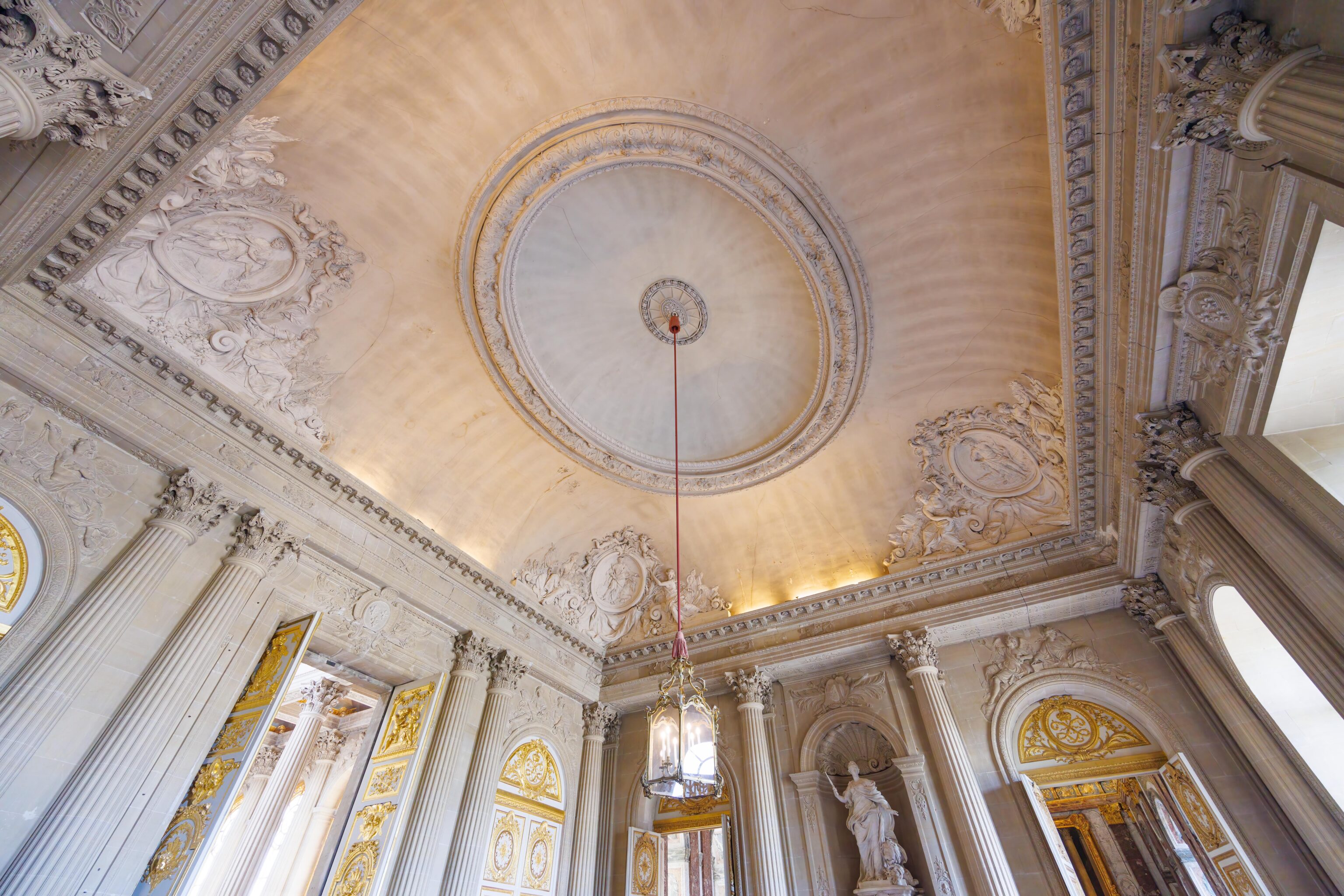
This room had a fairly ornate ceiling with sculpted elements.
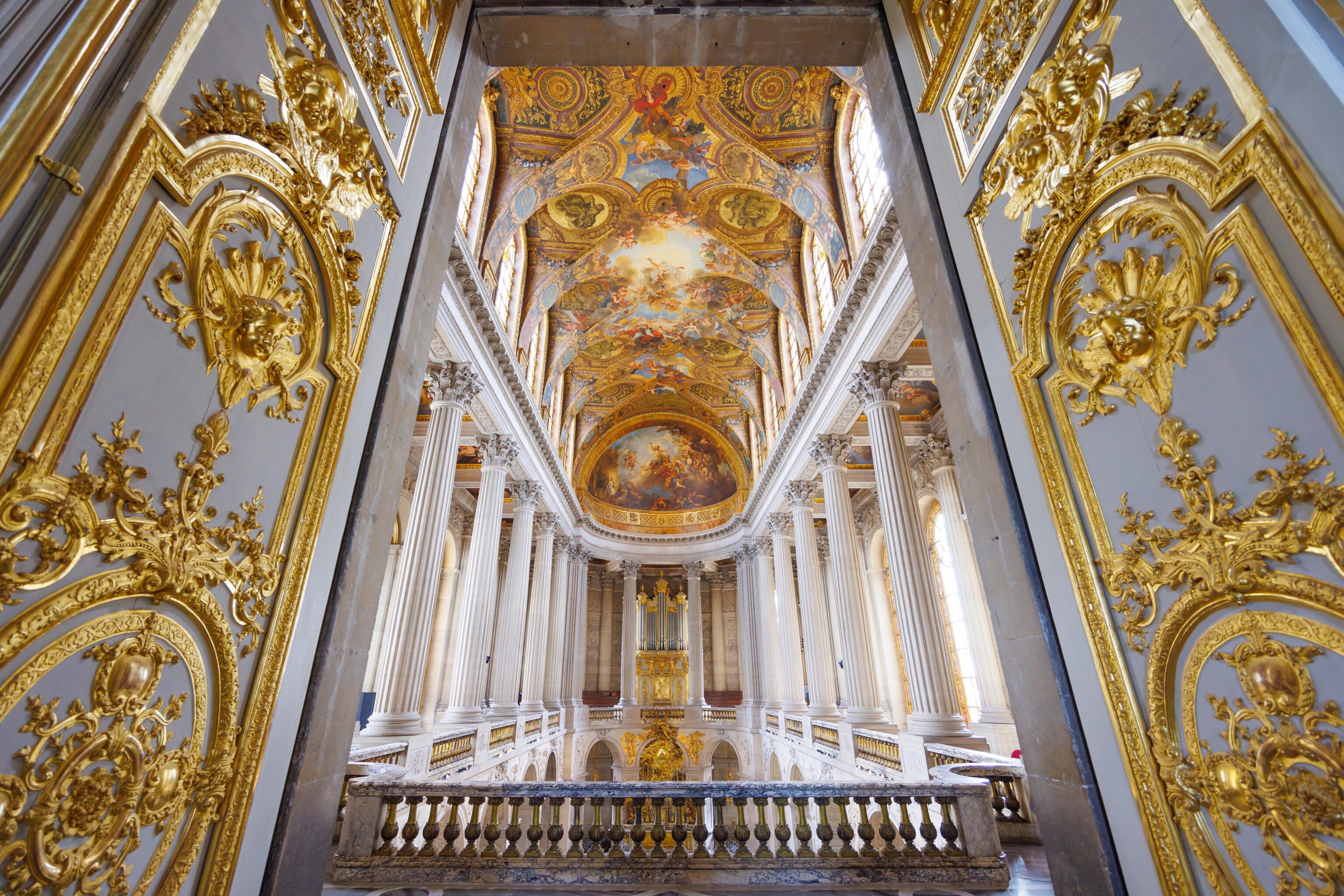
These doors opened up to a balcony that overlooks the royal chapel that we passed earlier while on the ground floor.
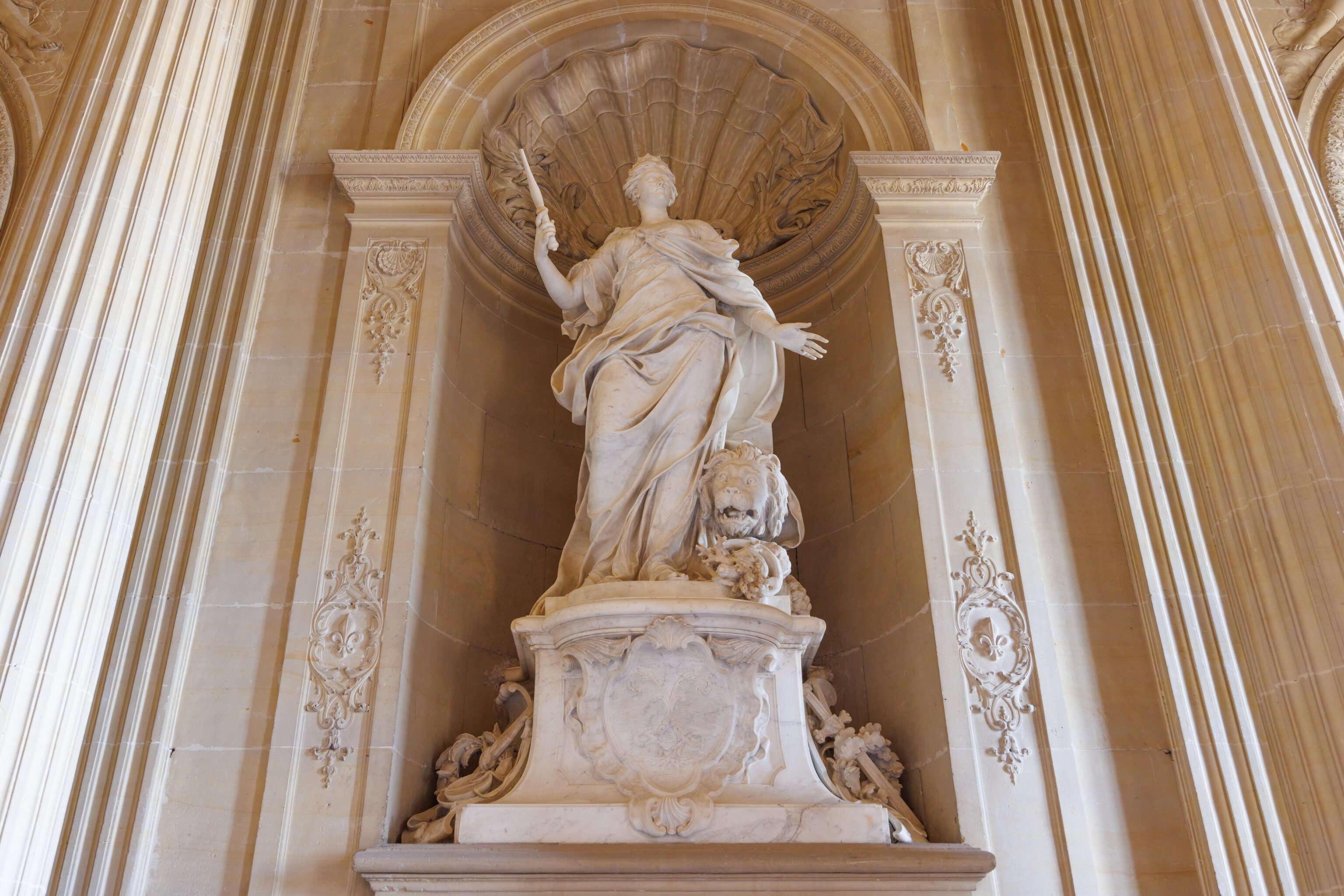
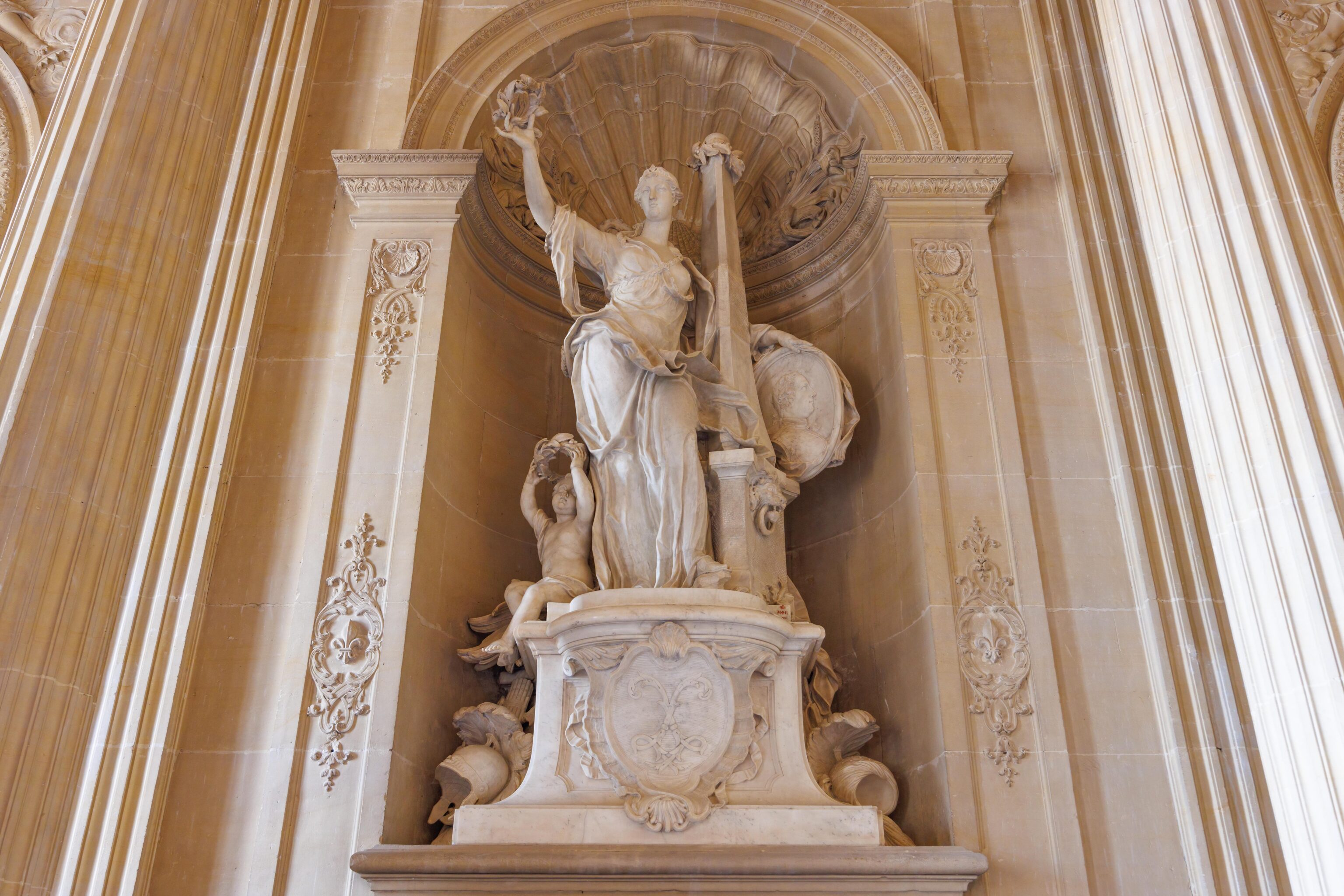
Two very detailed sculptures that we happened to photograph.
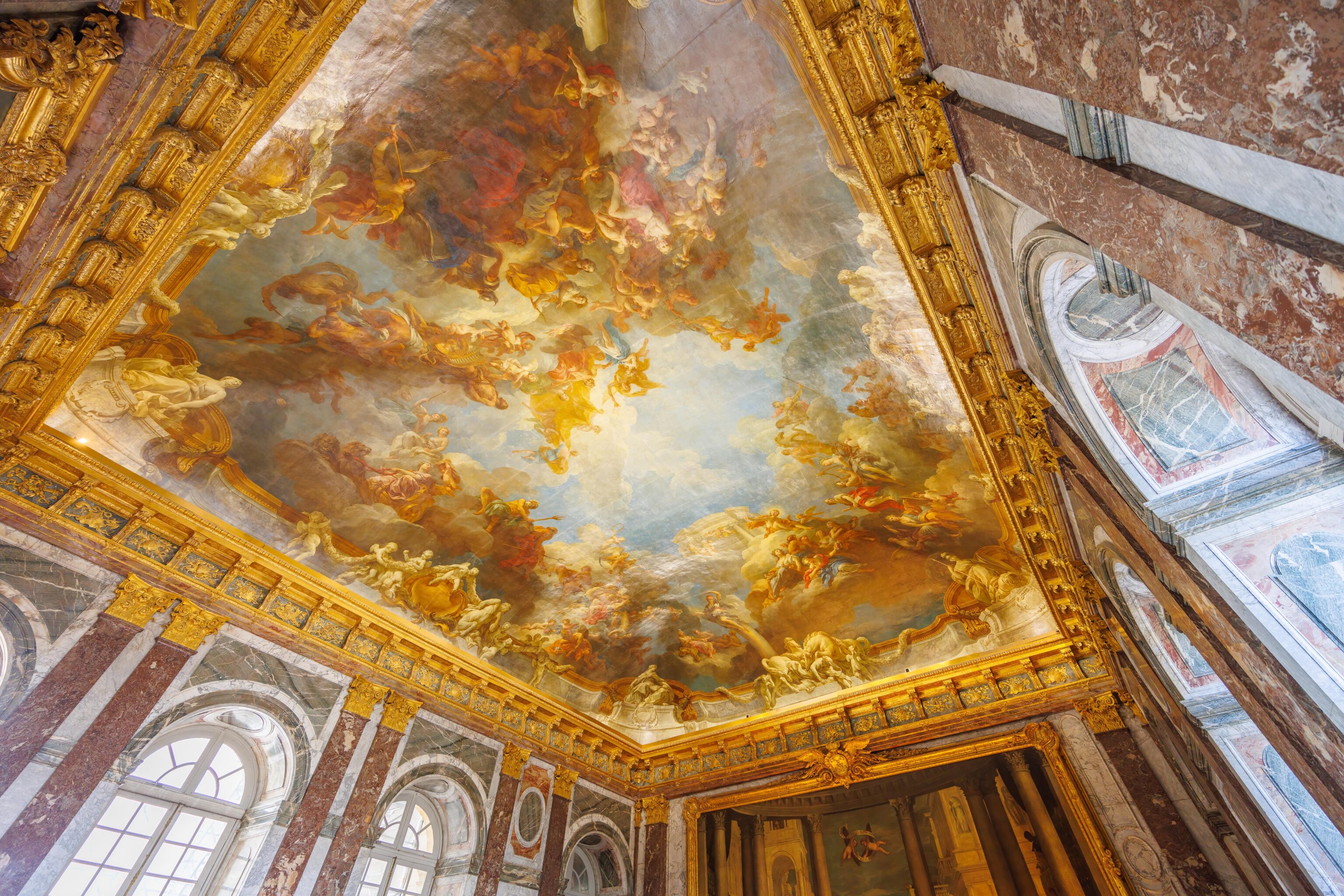
This Hercules Room is quite ornate with a beautifully decorated ceiling and marble walls.
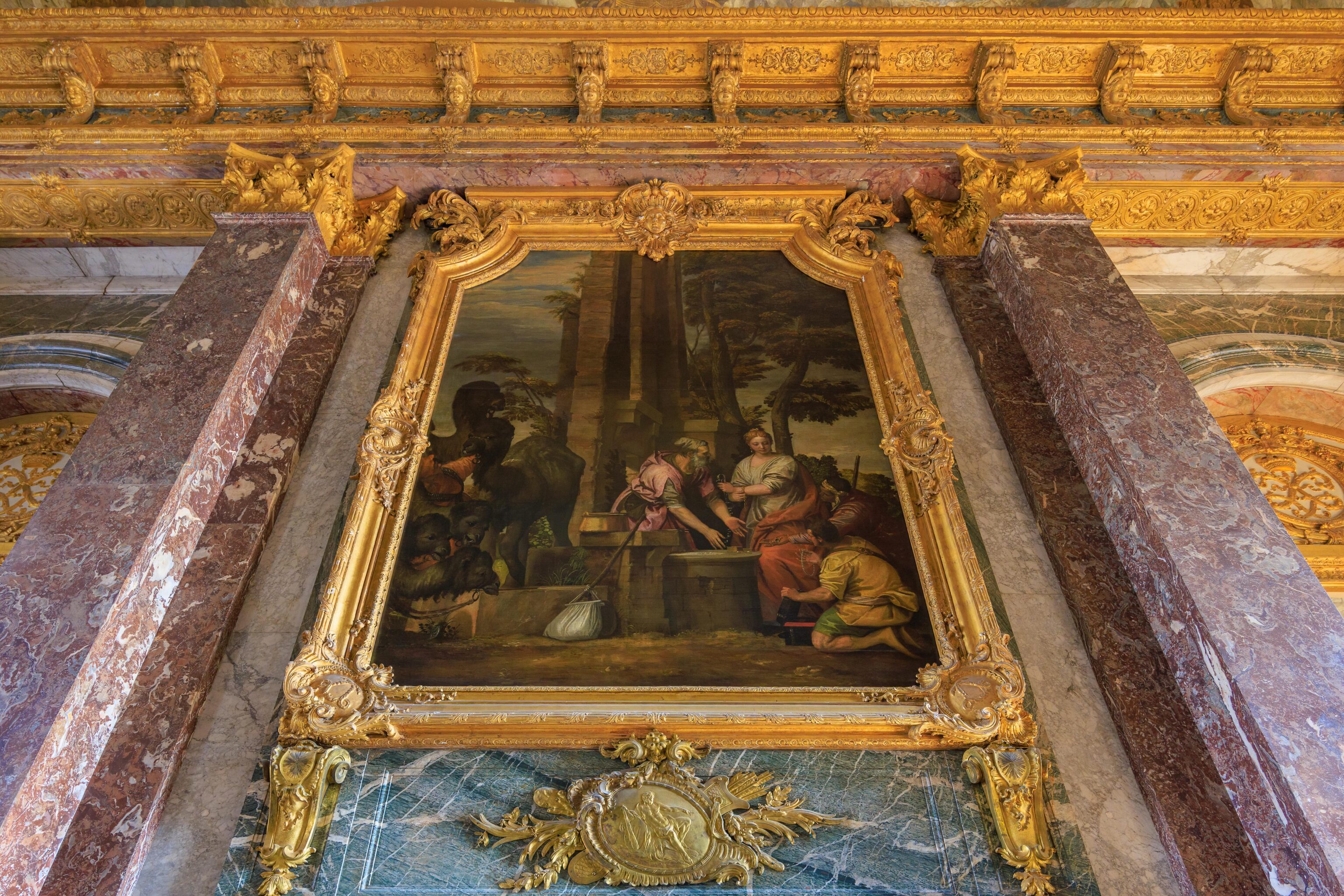
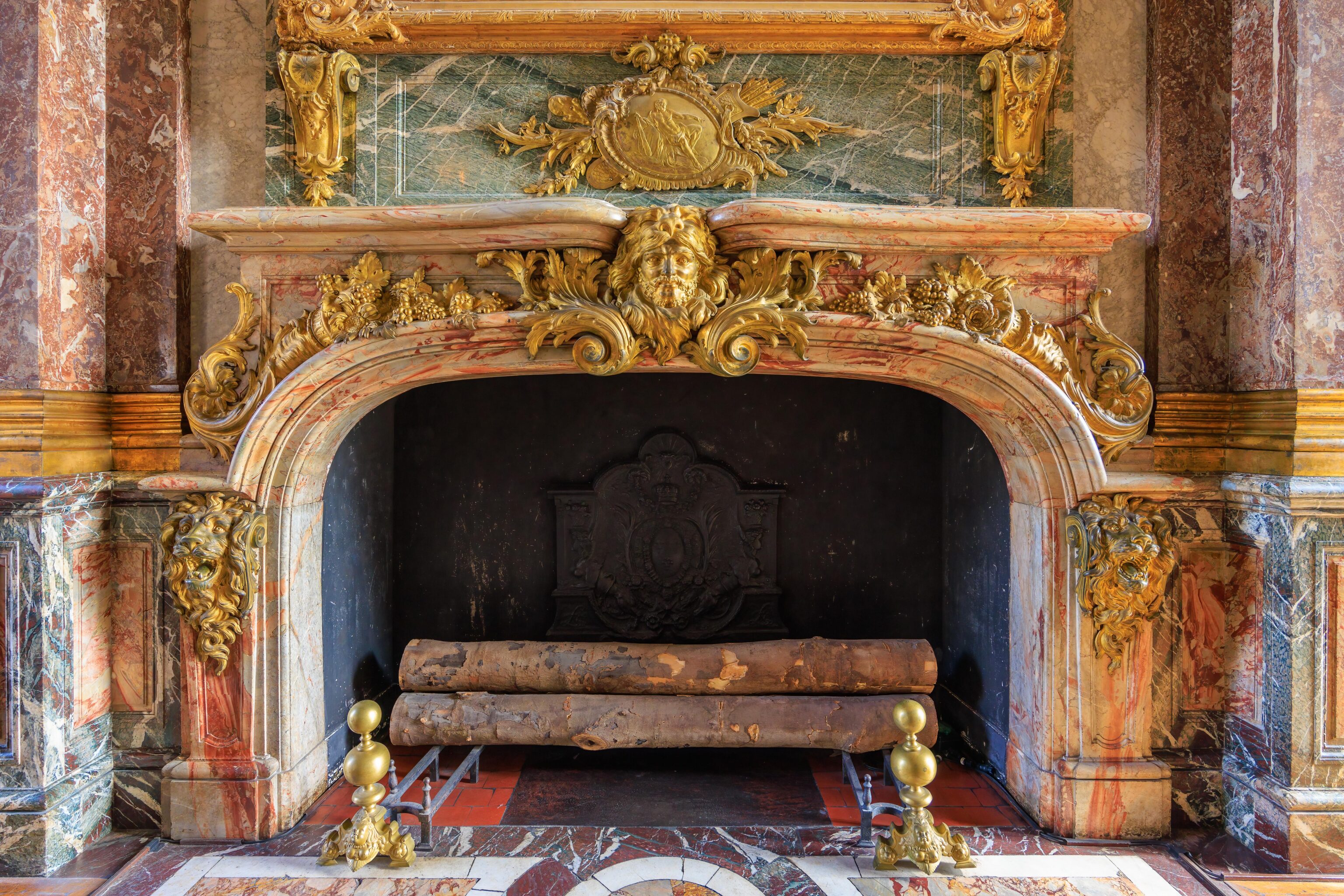
The fireplace in the same room.
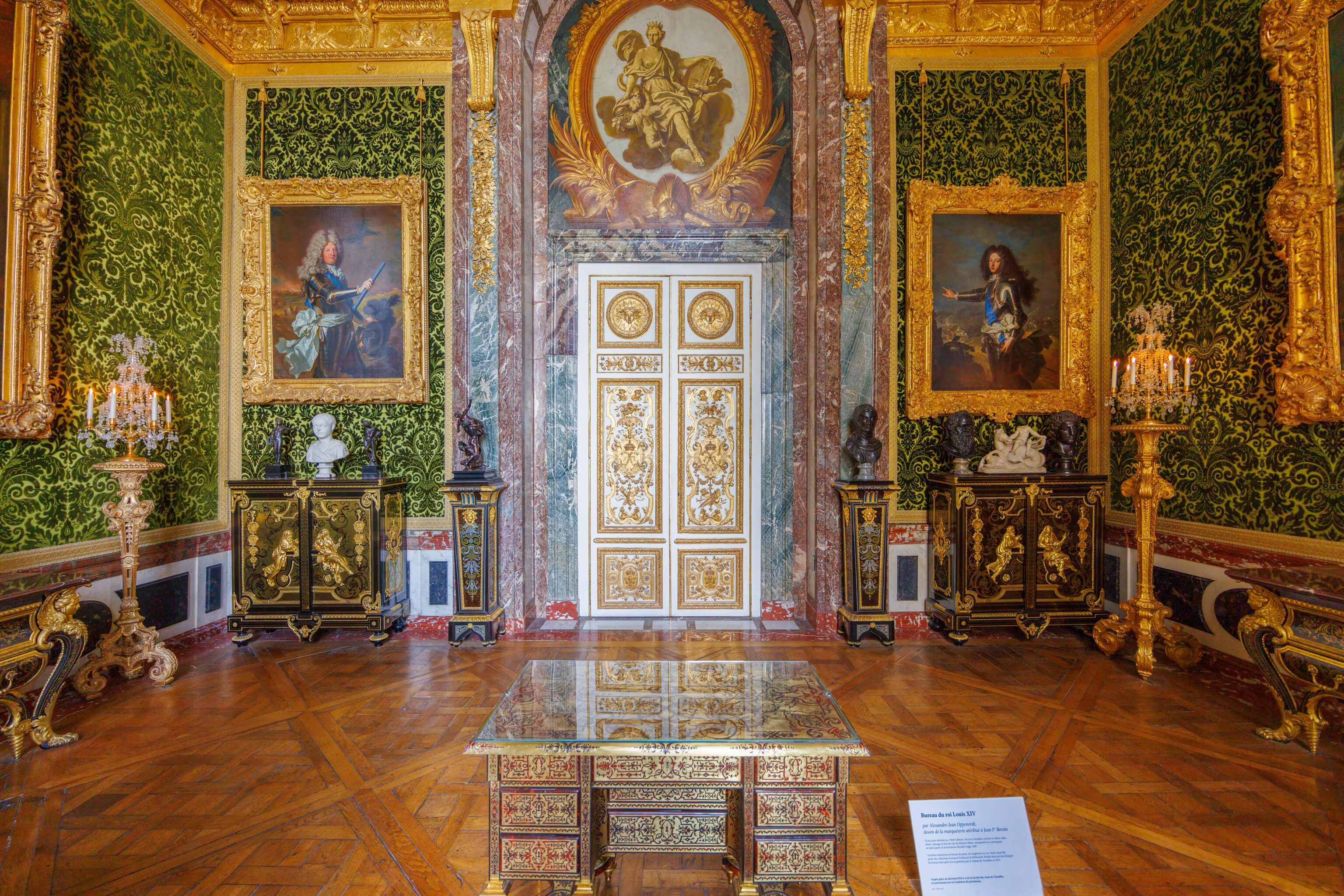
The Room of Abundance contained King Louis XIV’s desk. It is very ornate.
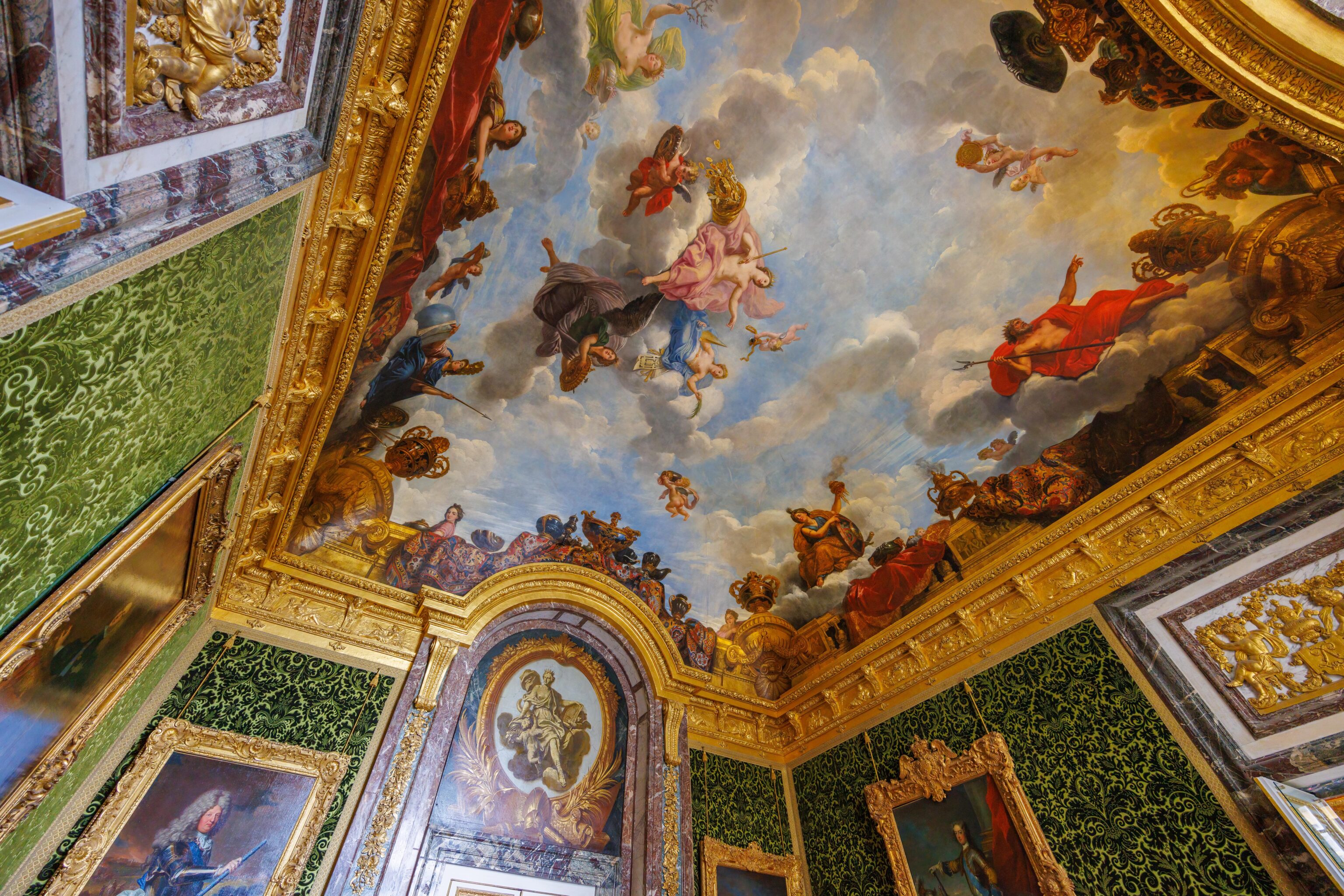
The ceiling in the same room.
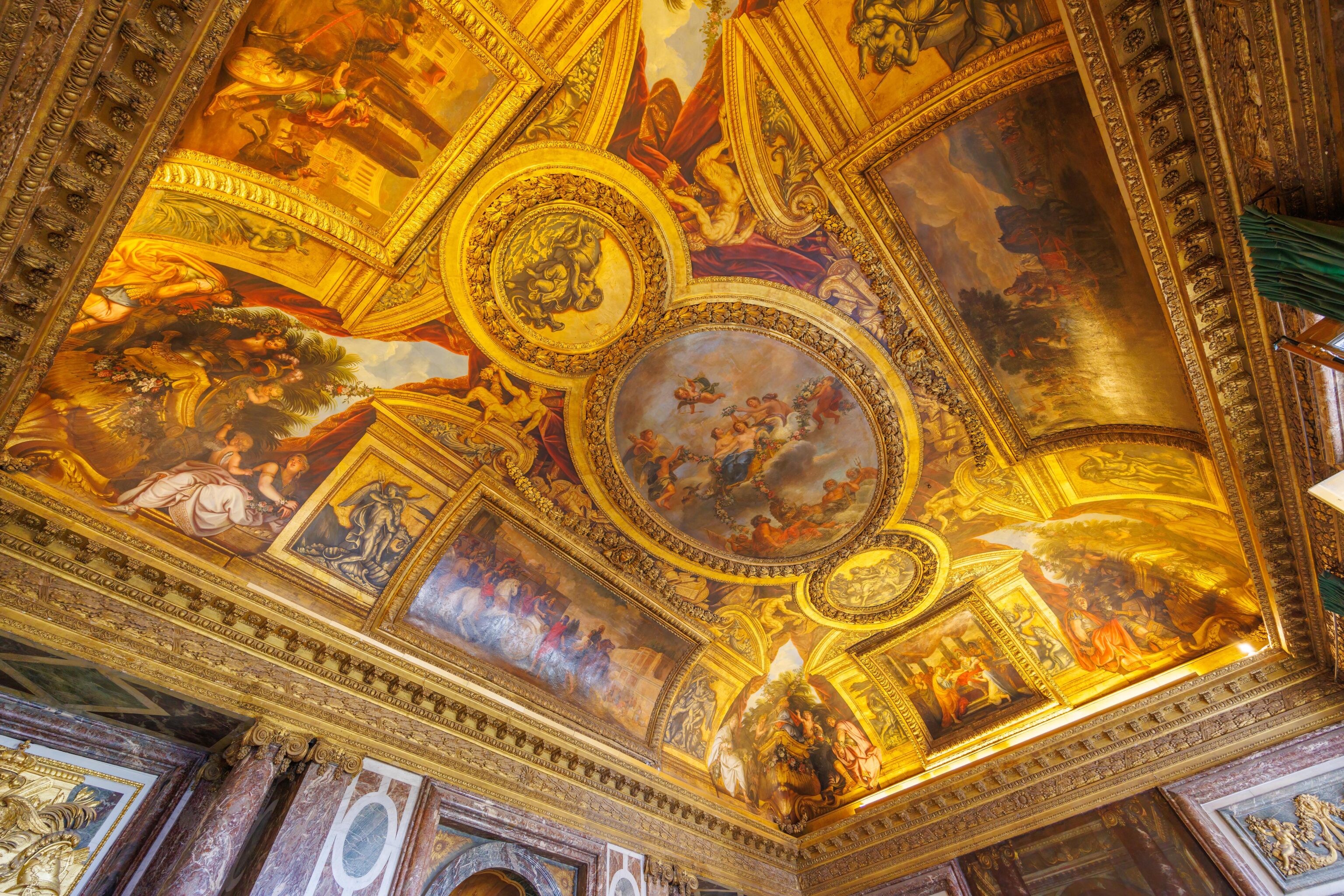
This ridiculously ornate ceiling is in the Venus Room.
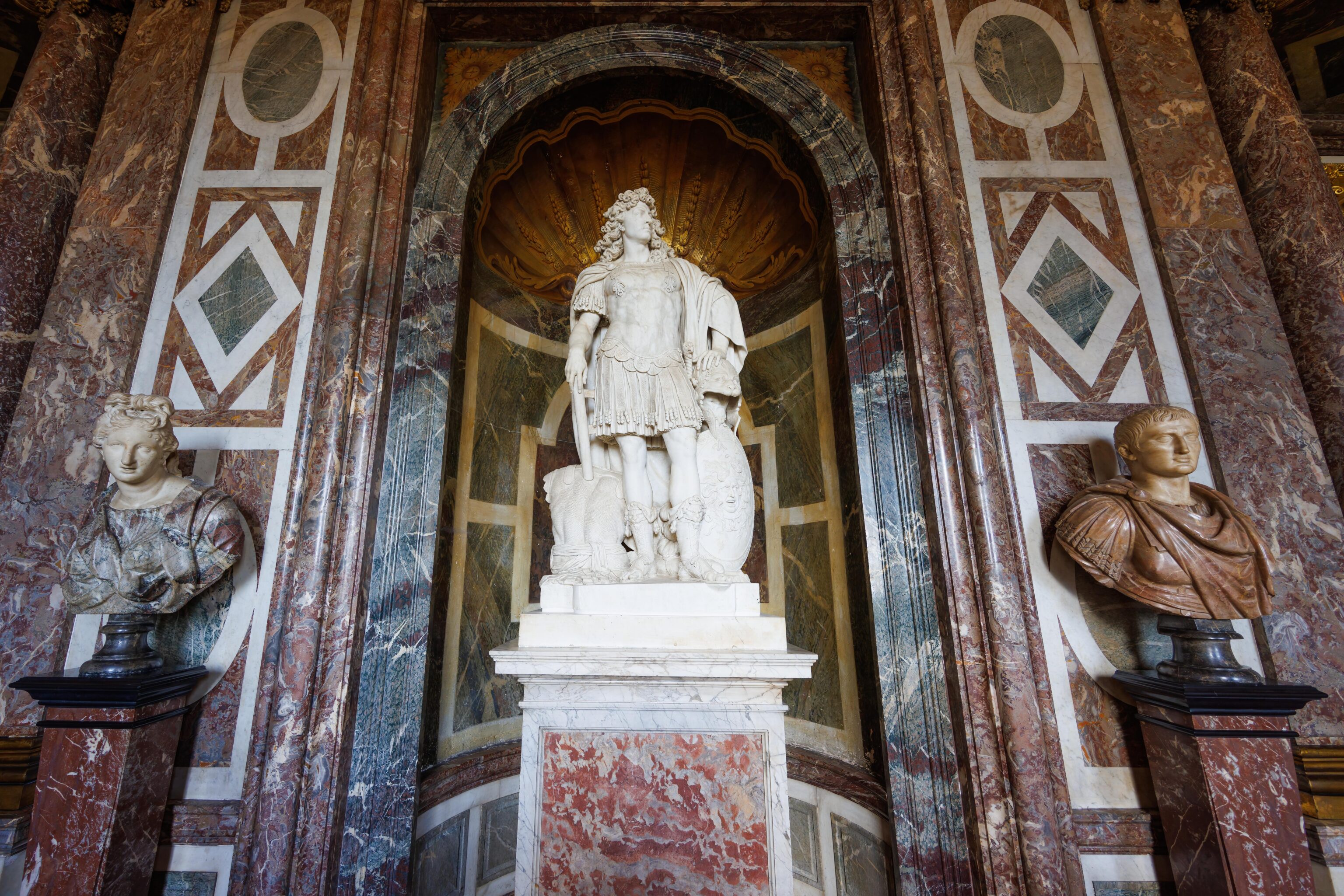
A statue of King Louis XIV in the same room.
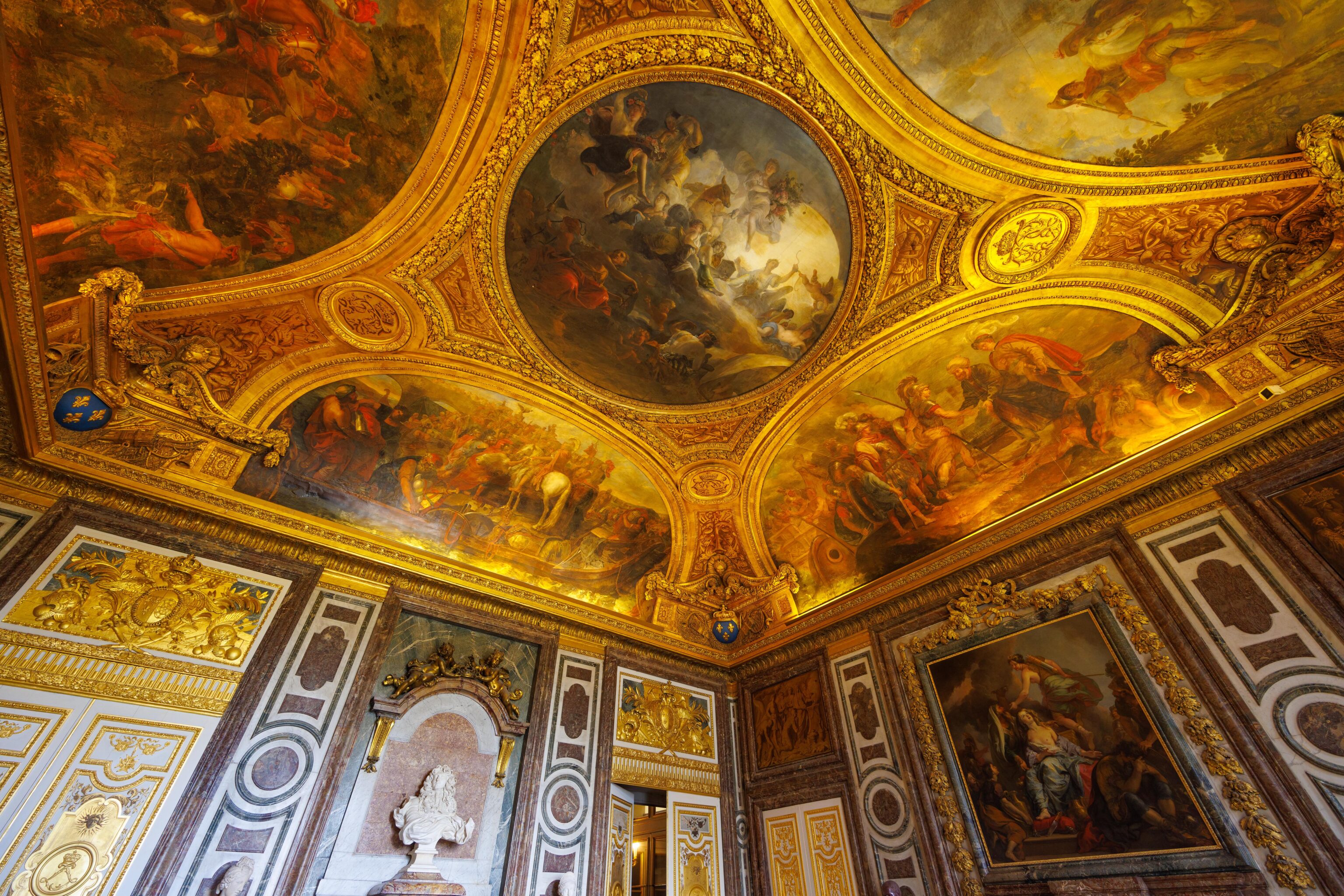
This next room, the Diana Room, is similarly decorated.
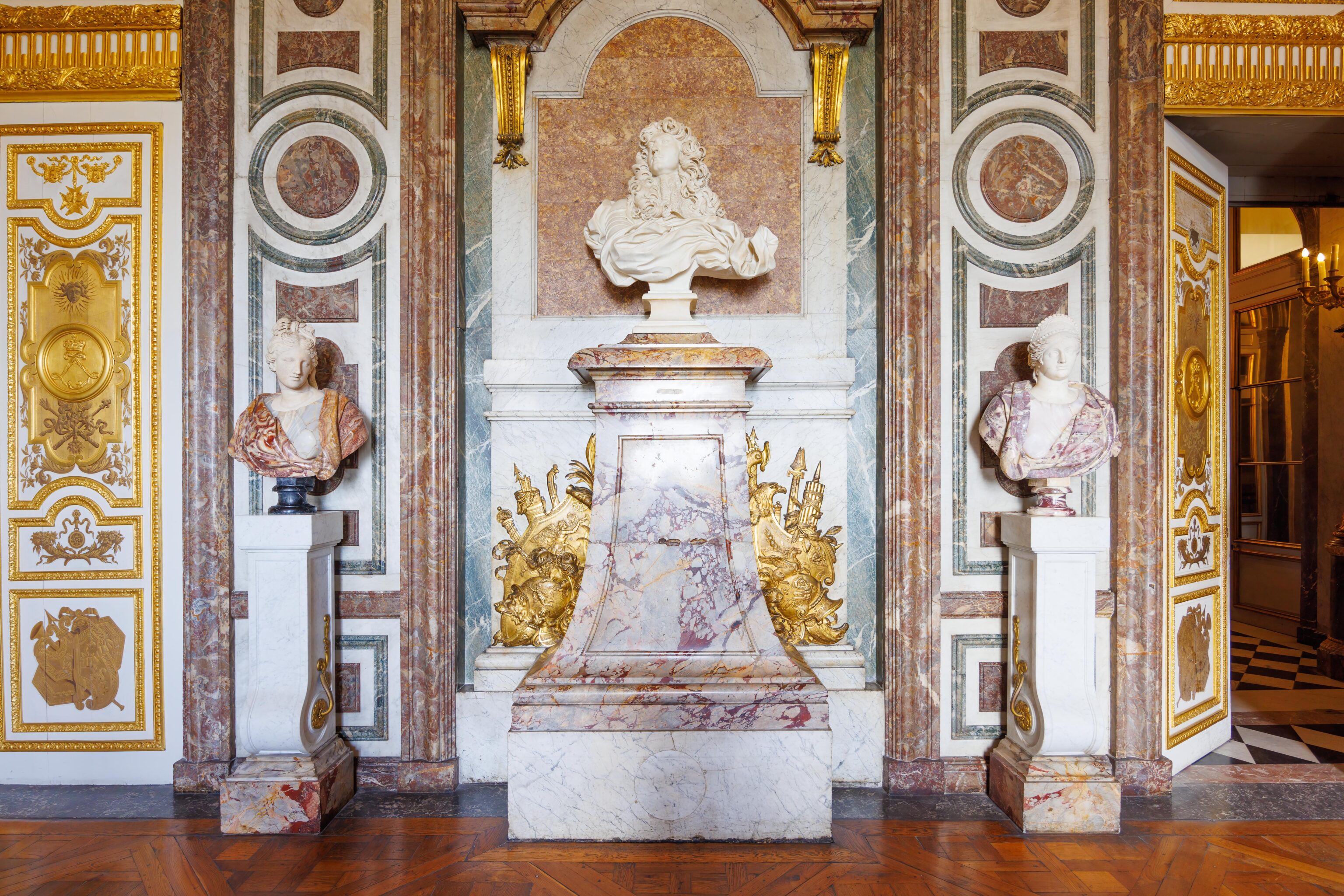
The room contains a bust of Louis XIV.
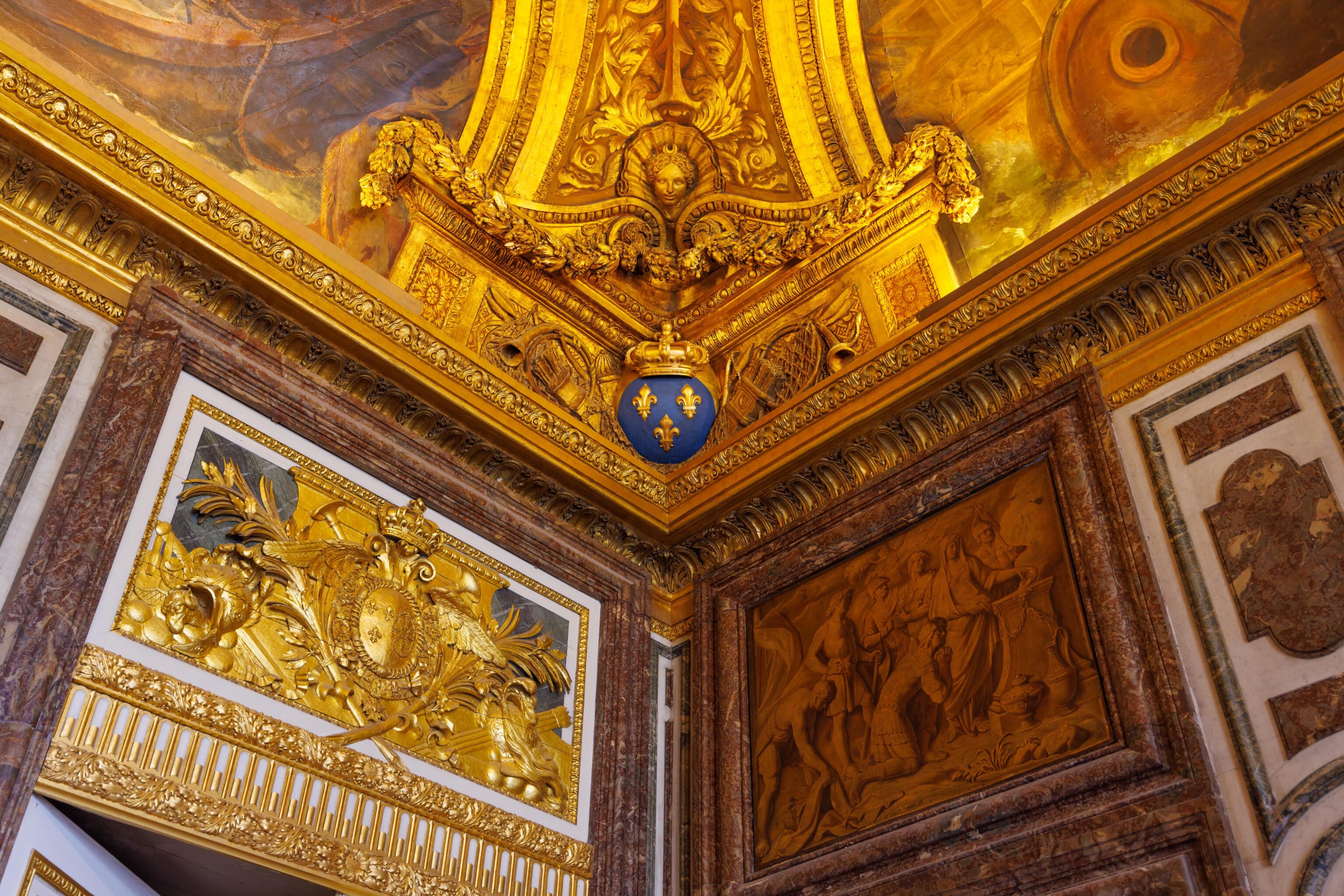
A closer look at one of the corners in this room. Everything is very detailed!
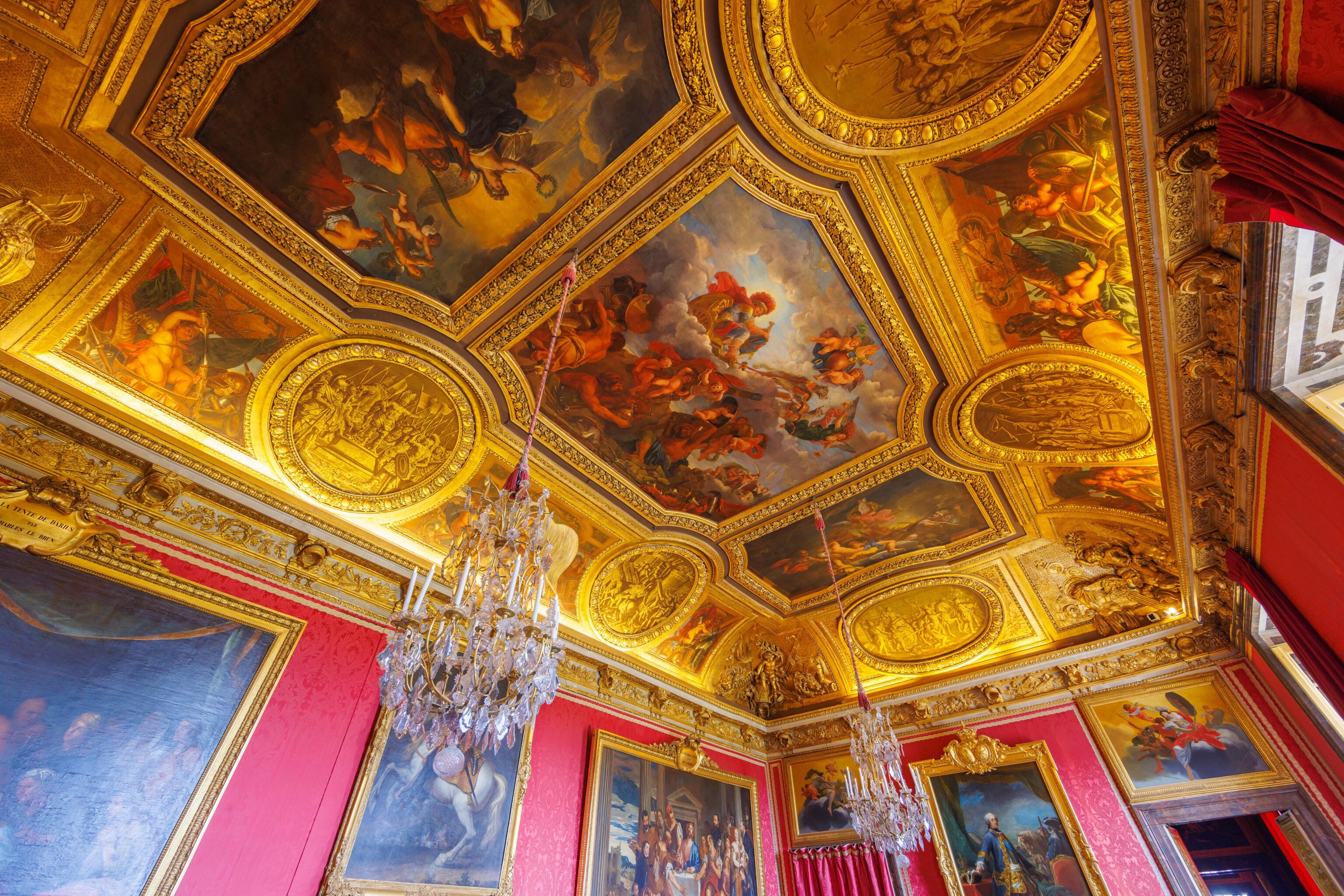
The next room, the Mars Room, is much larger.
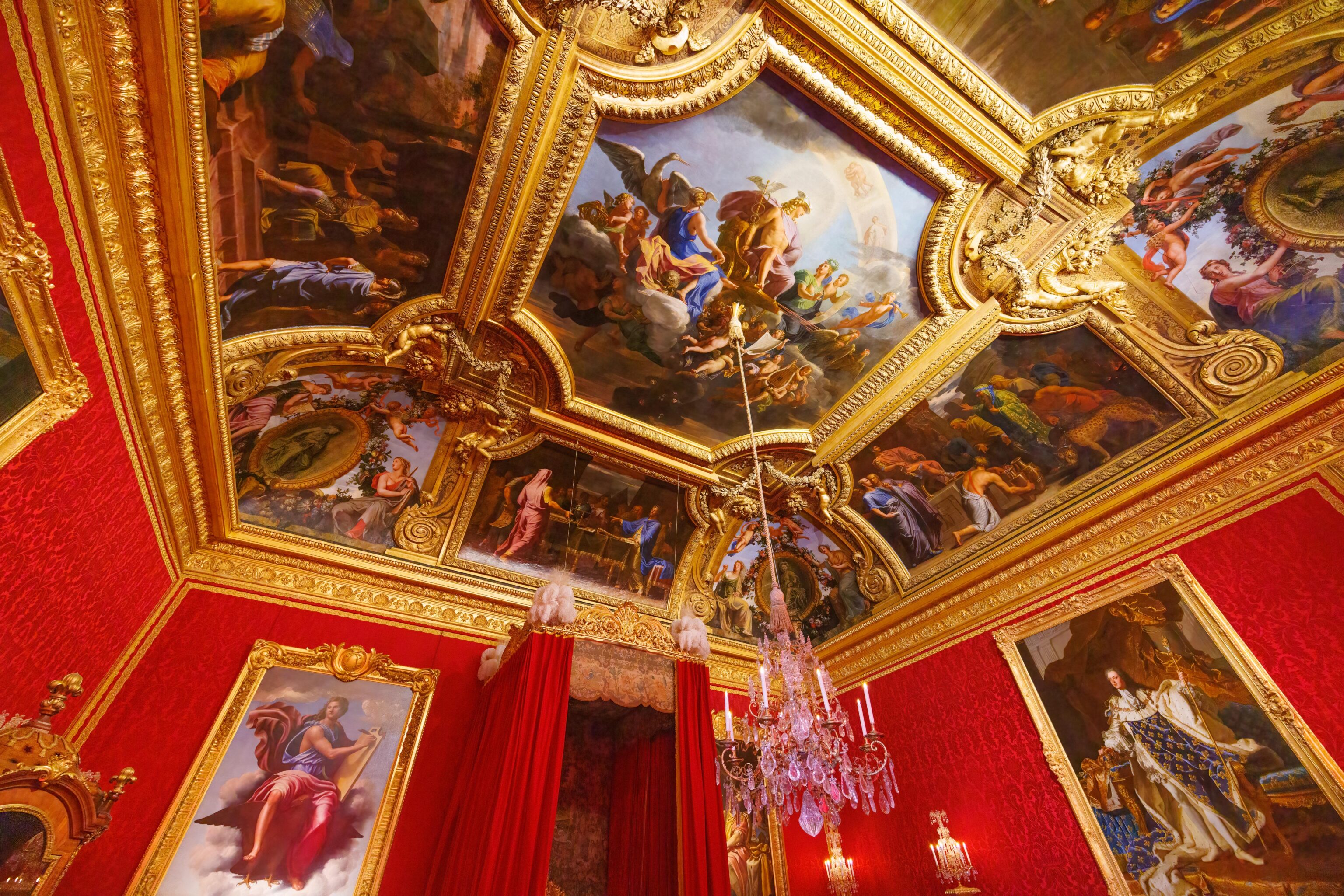
The Mercury Room was next door.
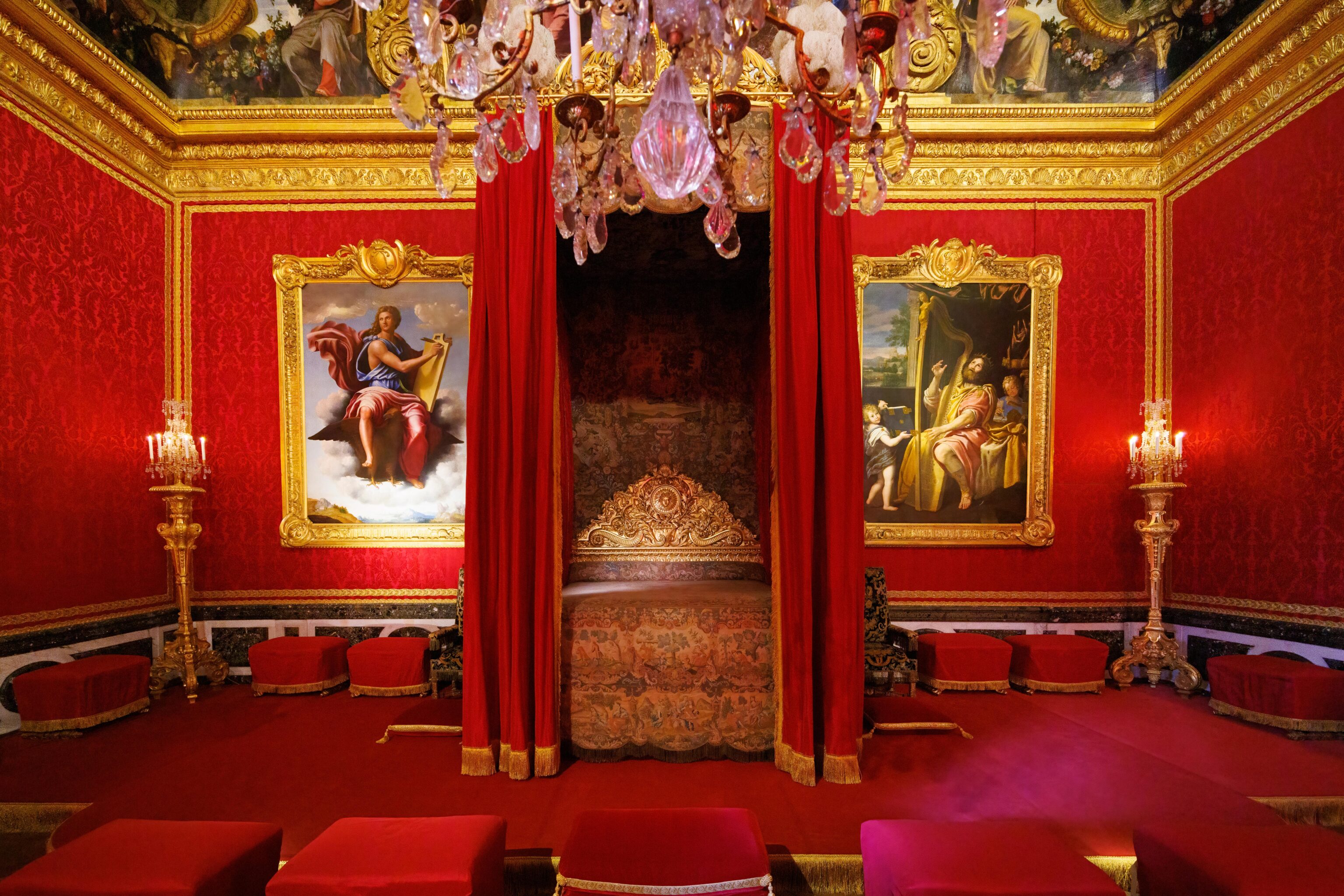
The King’s bed was in this room.
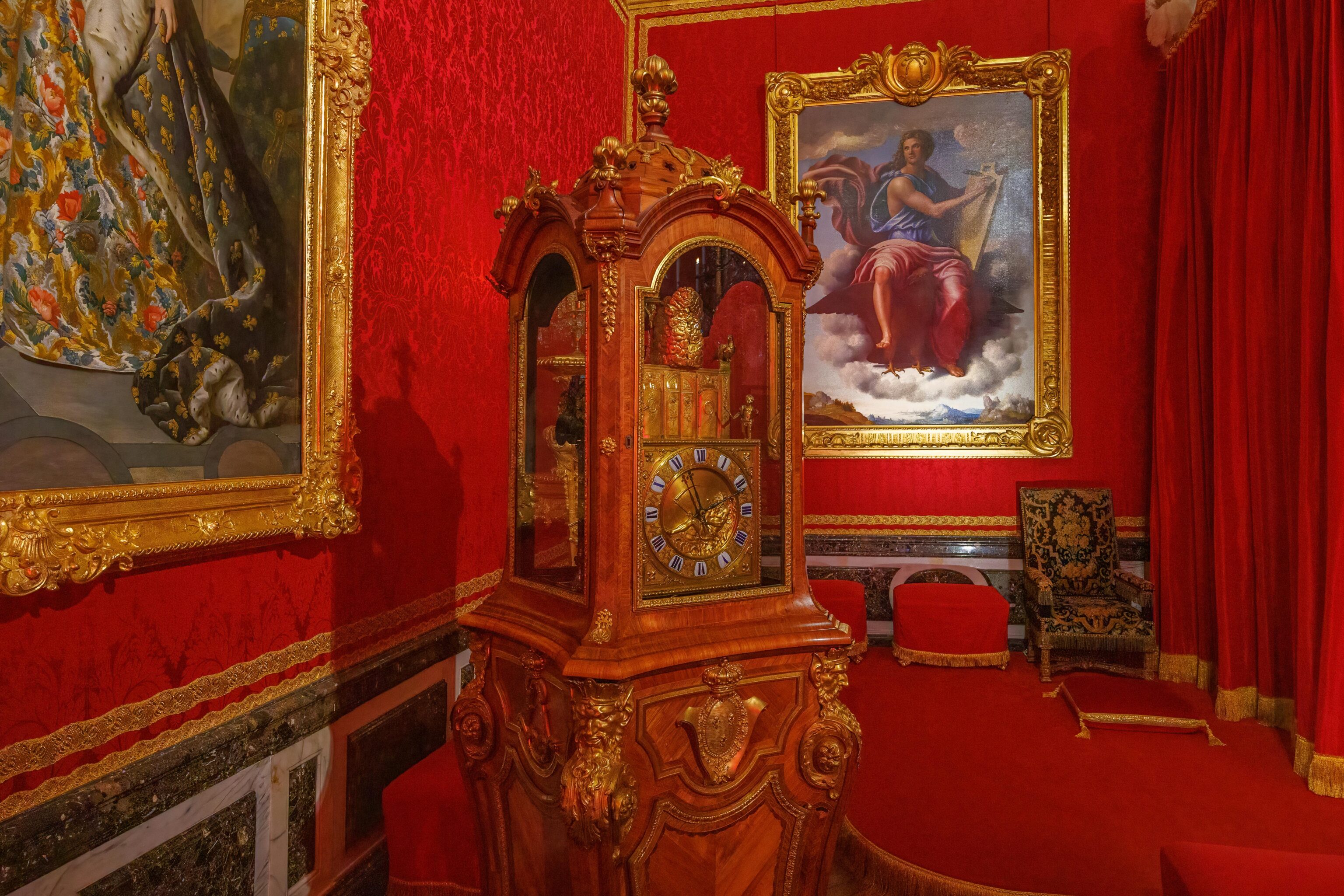
A very ornate clock.
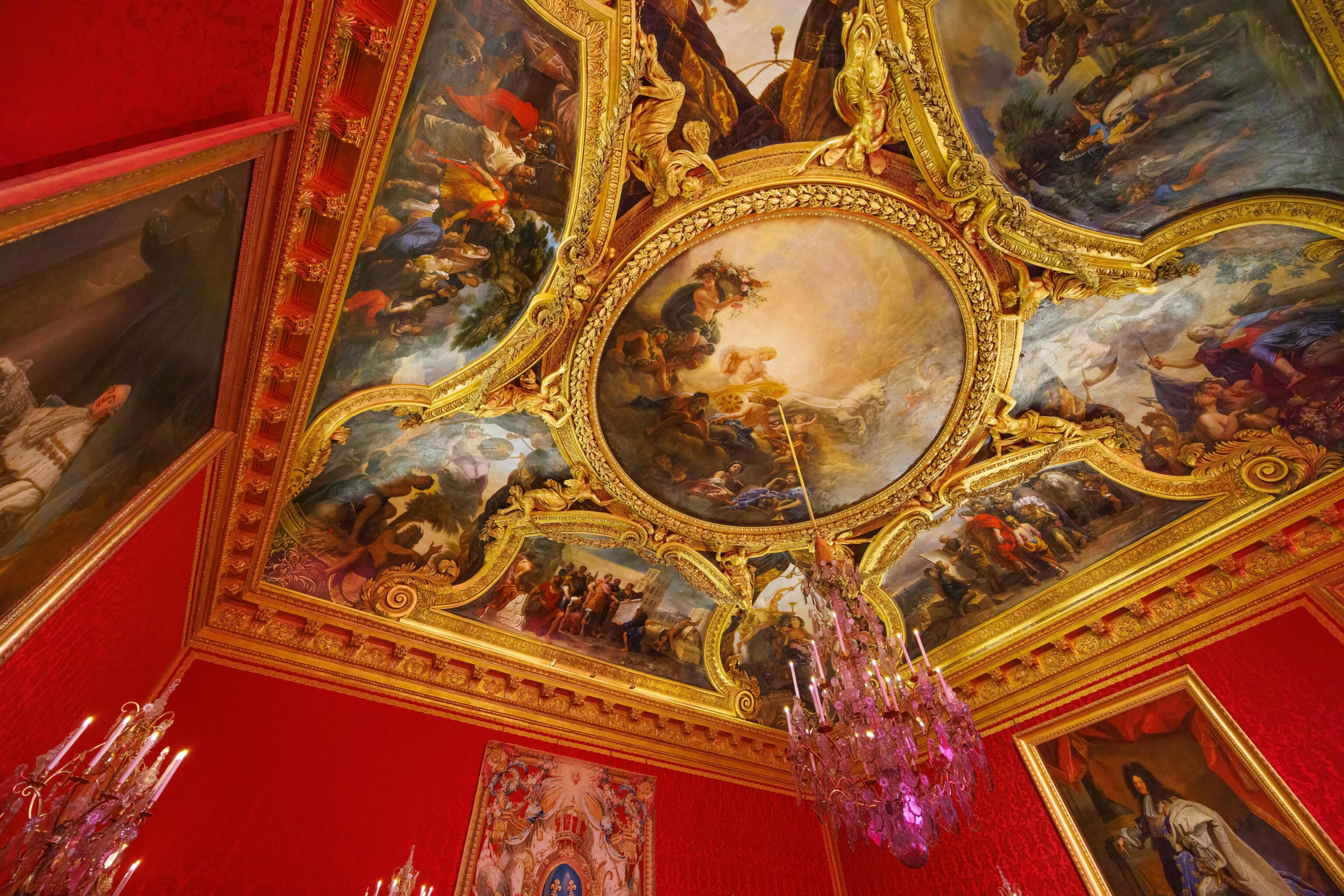
This next room, the Apollo Room, was used as the king’s throne room.
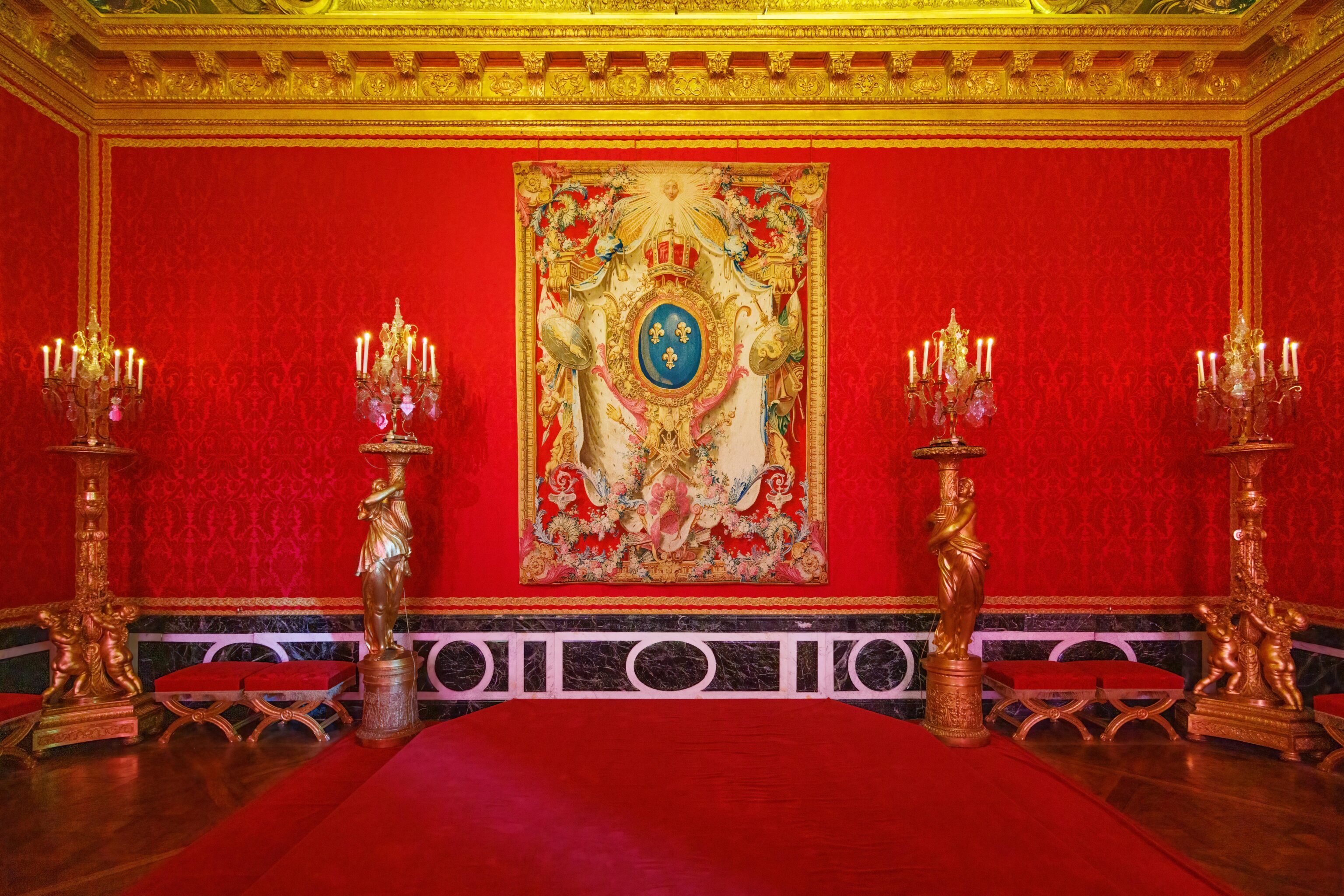
There is no throne in the room right now. But, there would have been back during royal times.
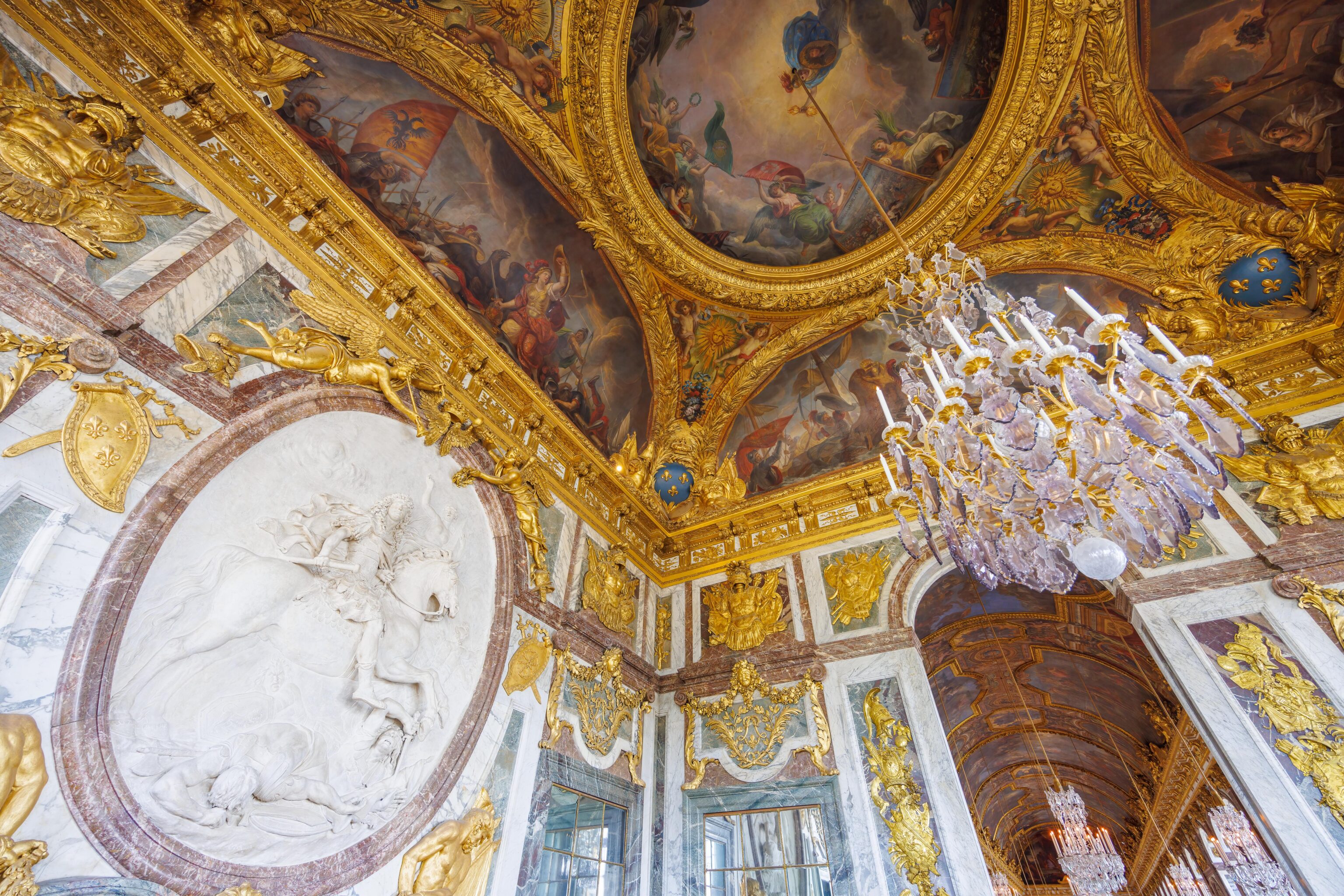
This ornately decorated room is the War Room and is a small prelude to the next room.
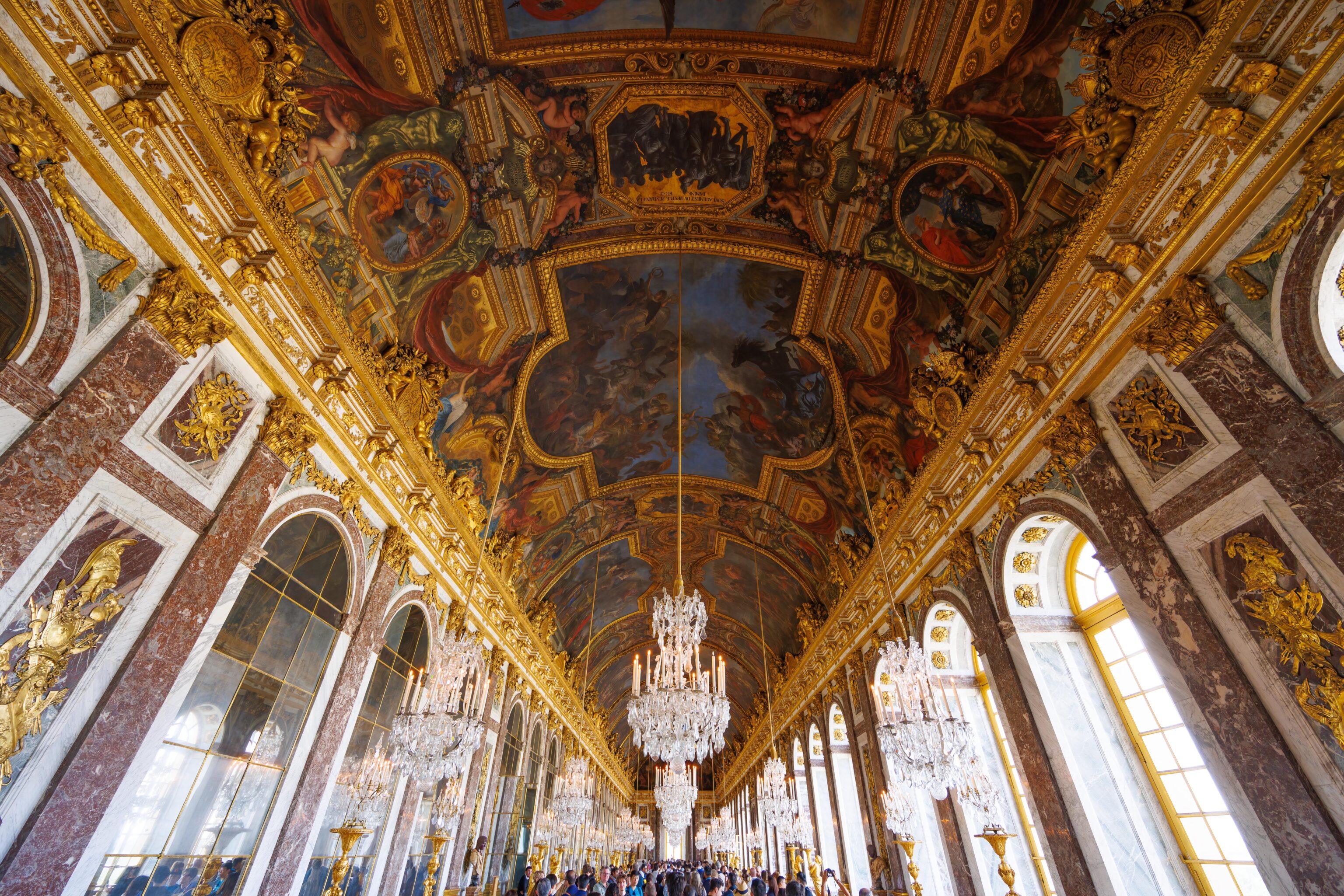
This over the top ridiculously ornate room is the Hall of Mirrors and lies between the King’s and Queen’s apartments.
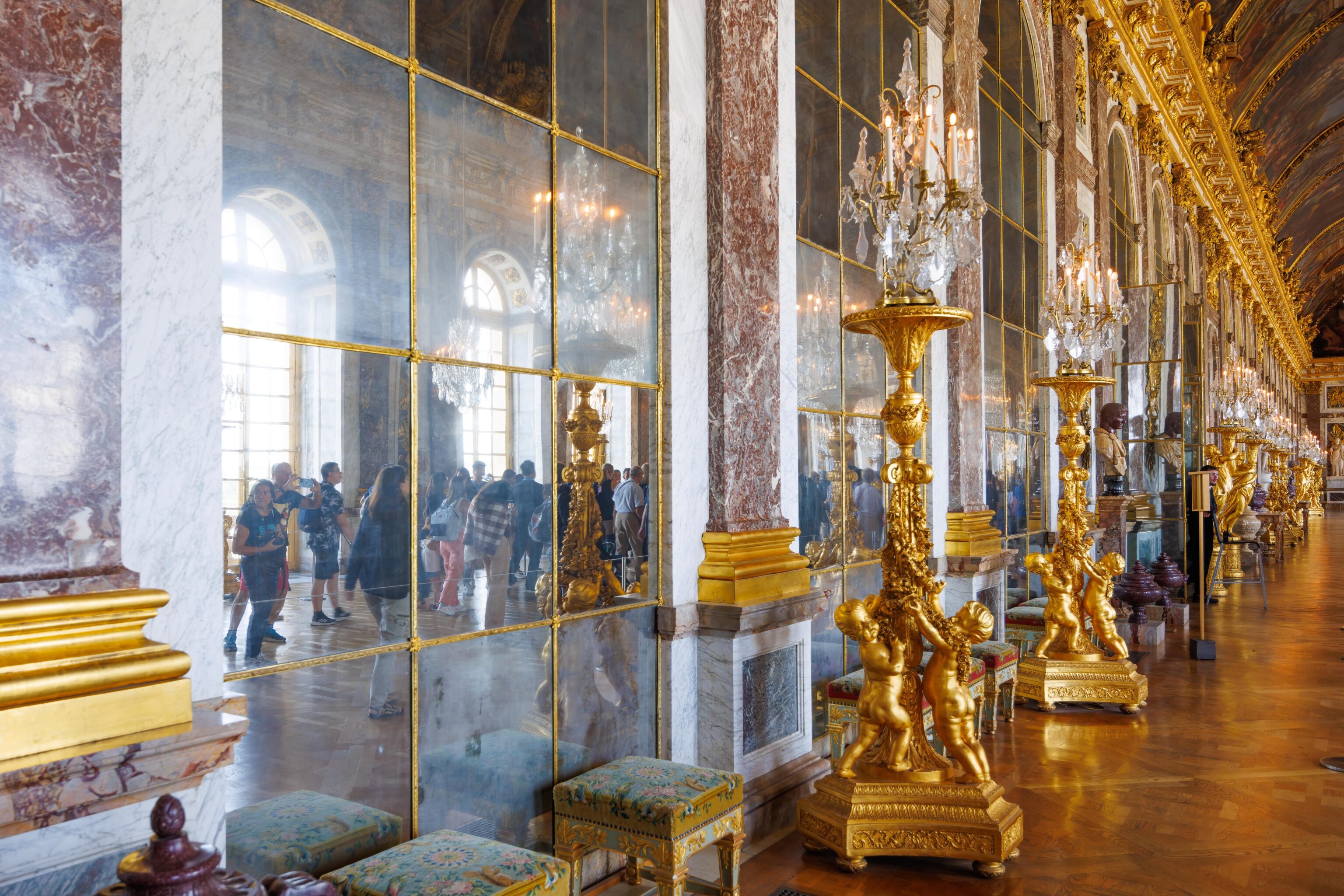
The palace website writes a bit about the mirrors2:
Economic prosperity is revealed in the number and size of the 357 mirrors bedecking the 17 arches opposite the windows, demonstrating that the new French manufacture could rival the Venetian monopoly on mirror manufacturing. At the time such items were a great luxury.
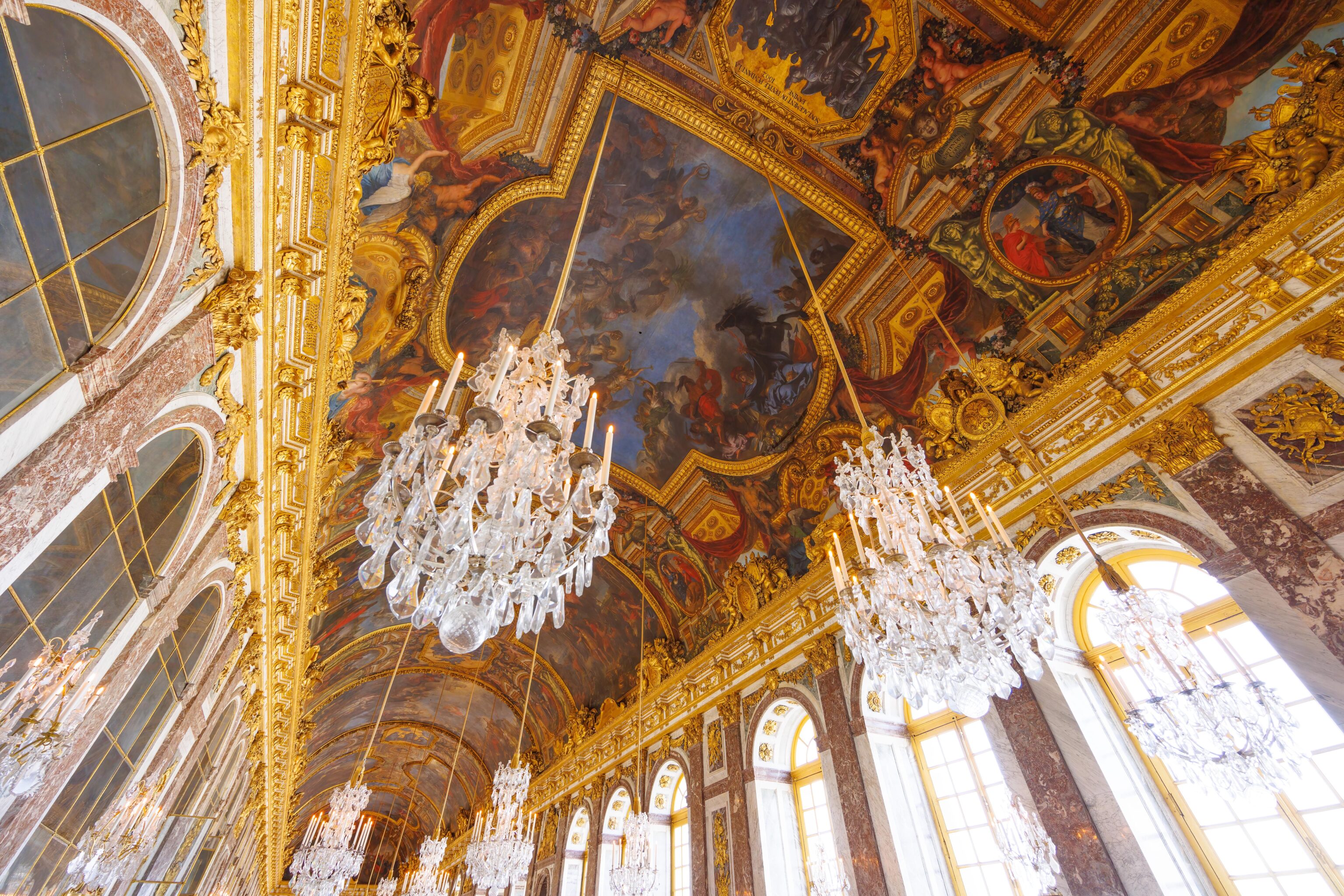
Other than the mirrors, there is plenty of marble and gold. All of the left over space is taken up by windows and paintings!
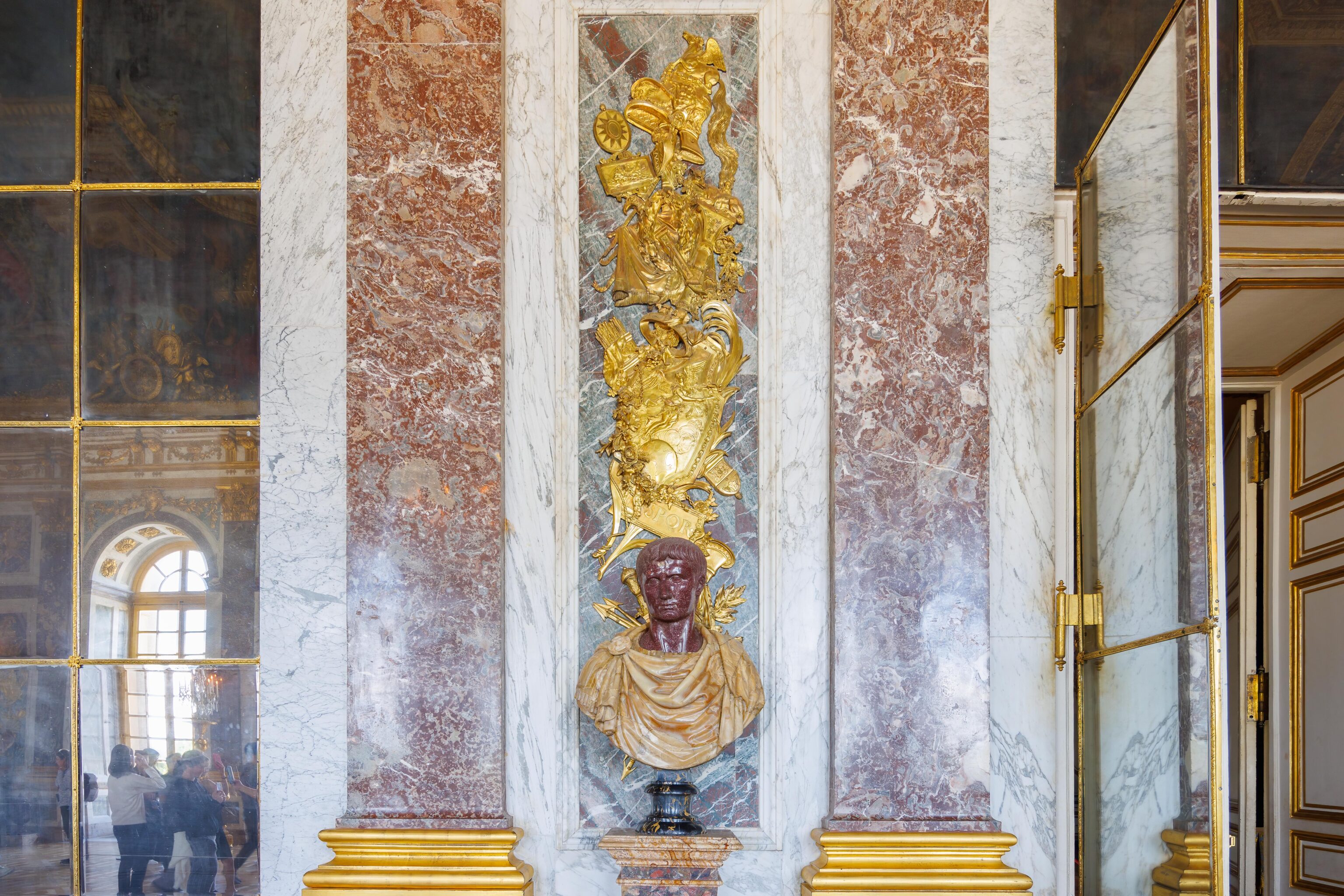
This is a bust of Augustus, founder of the Roman Empire which included France thanks to Julius Caesar, who was Augustus’ adoptive father.
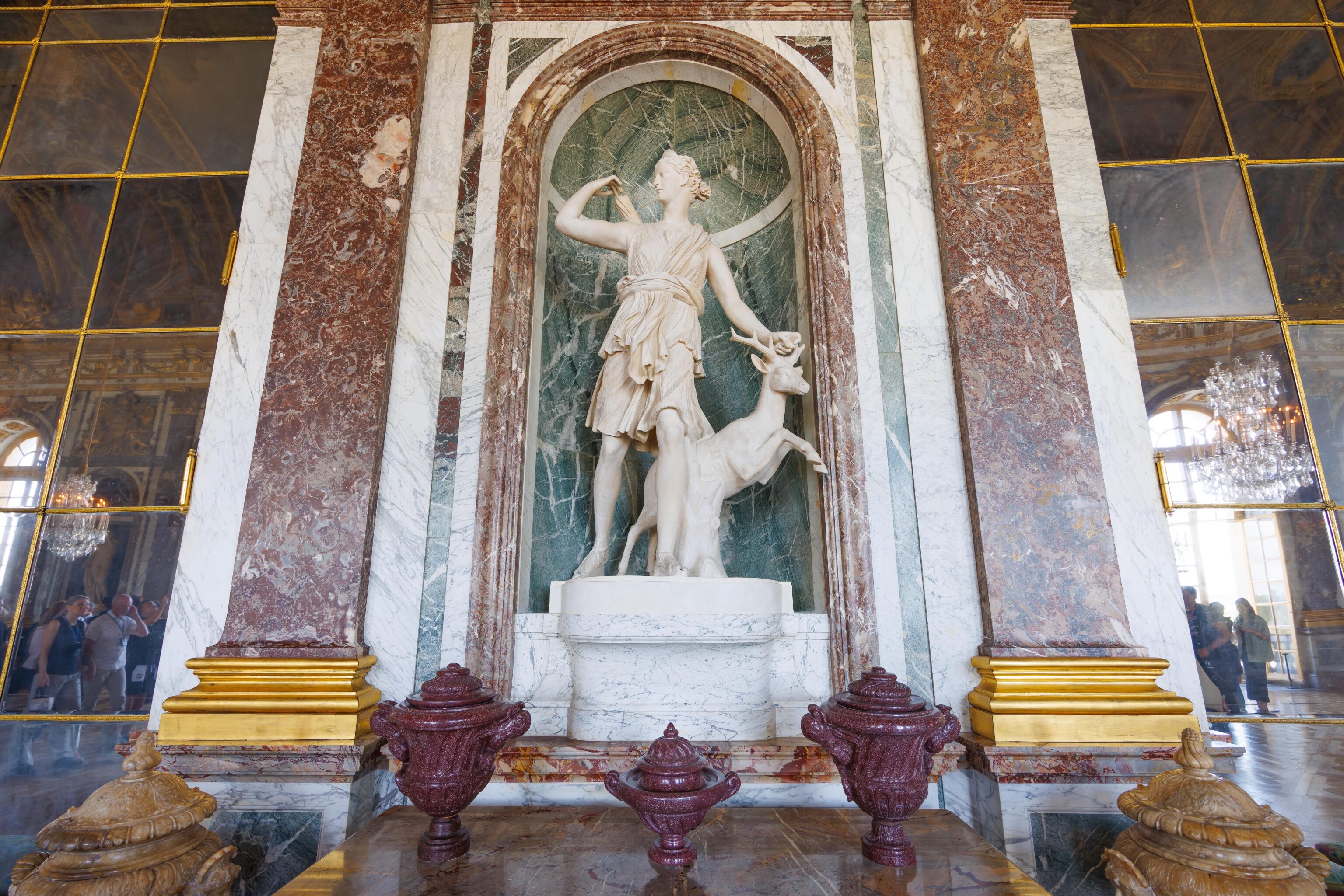
We’ve seen this sculpture, Diane de Versailles, before! The original, which is actually copy of a lost ancient bronze original, was removed from the Louvre and installed here in Versailles by Louie XIV. It was returned to the Louvre during the French Republic where it remains today. This is a copy of the one in the Louvre.
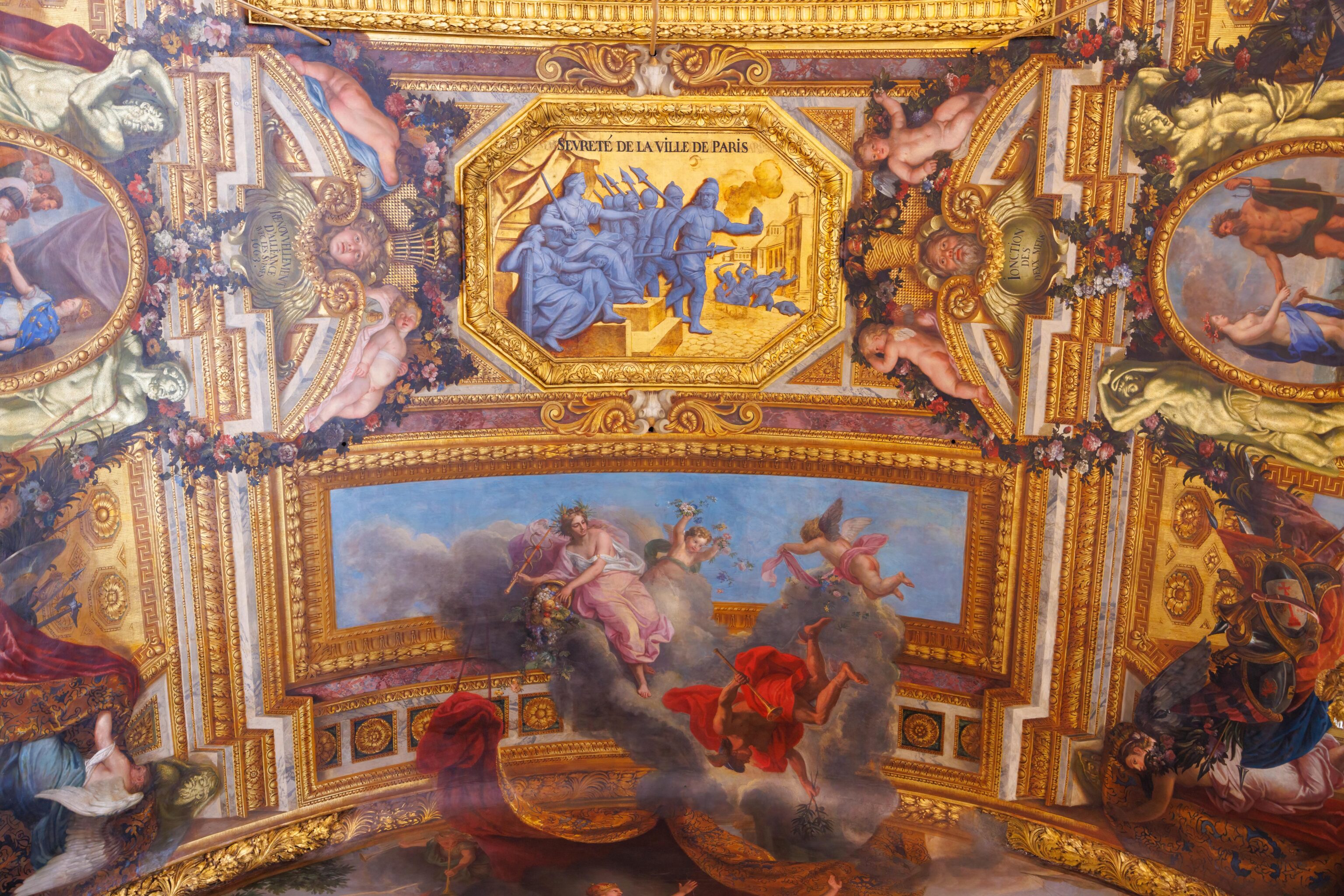
“Security of the City of Paris”
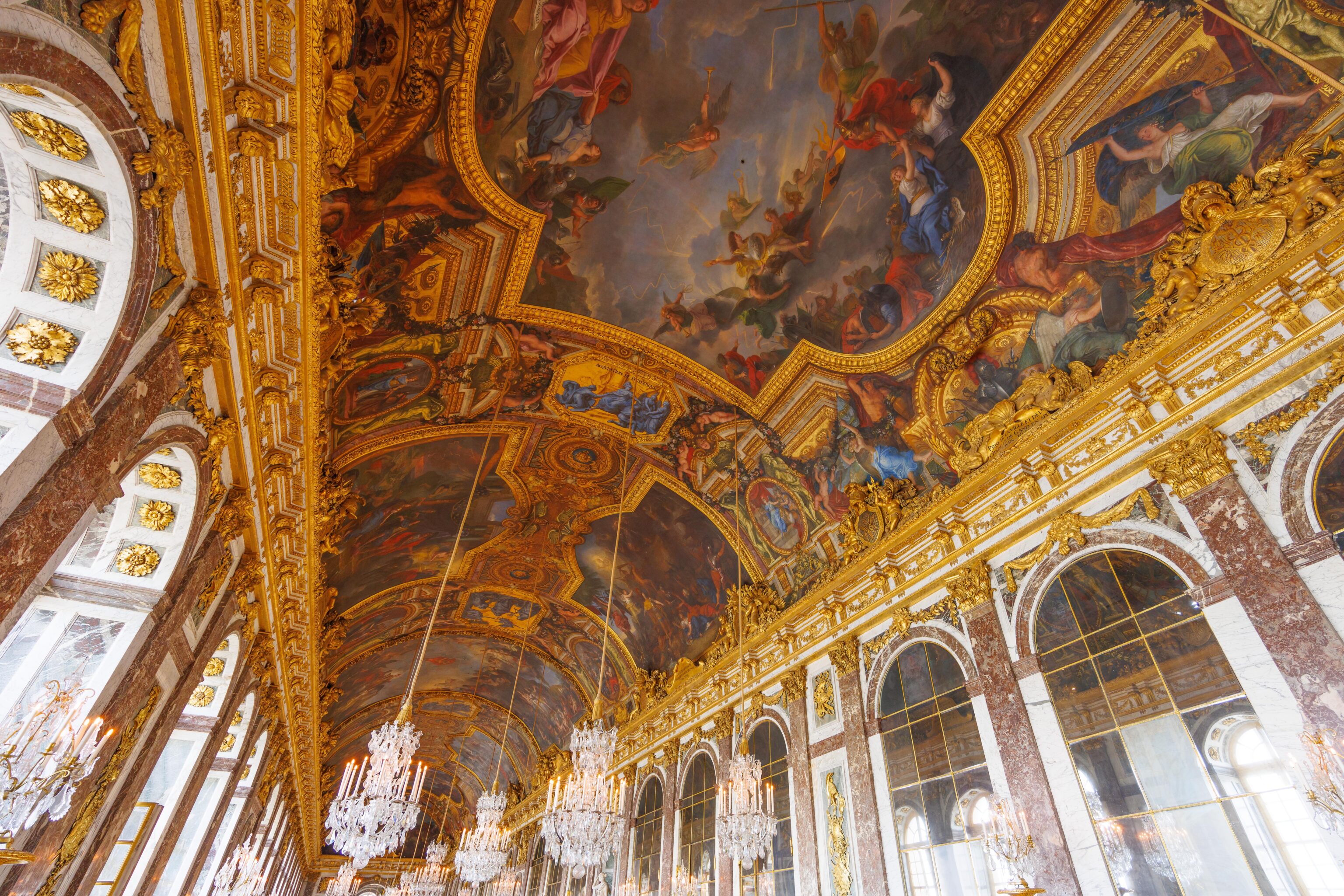
The paintings on the ceiling depict French successes.
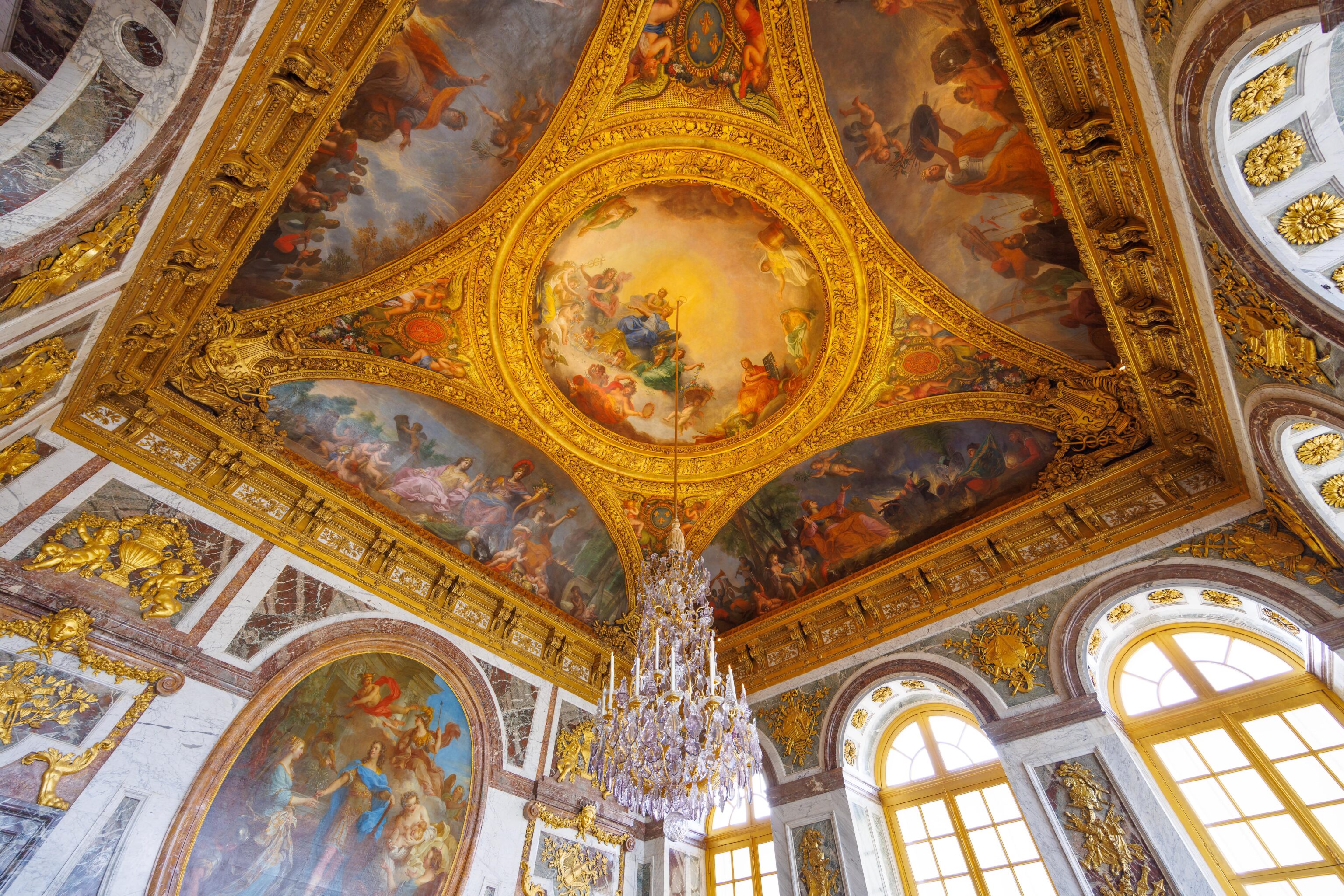
This next room, on the opposite side of the Hall of Mirrors from the War Room, is the Peace Room.
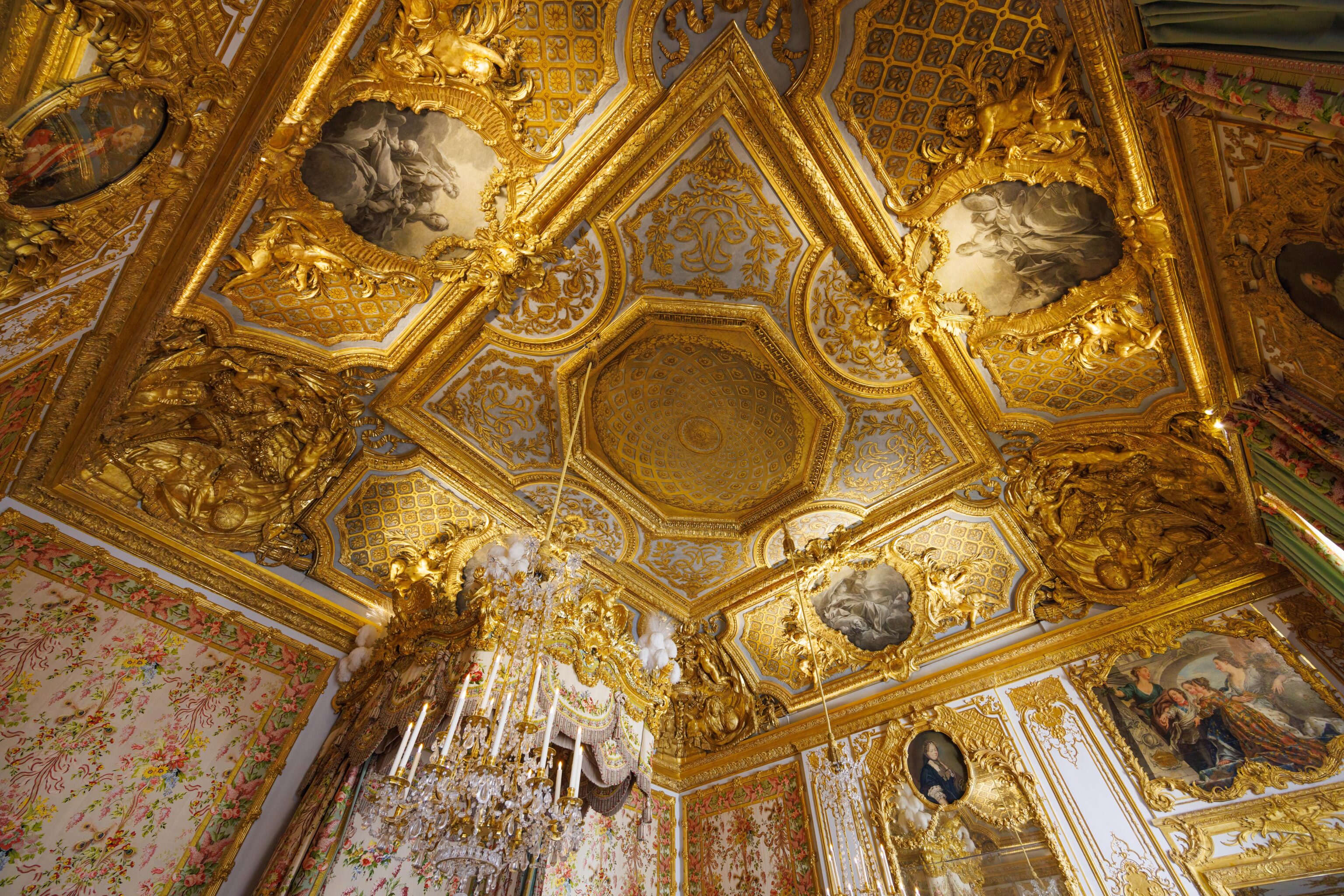
This next room is the Queen’s Bedchamber.
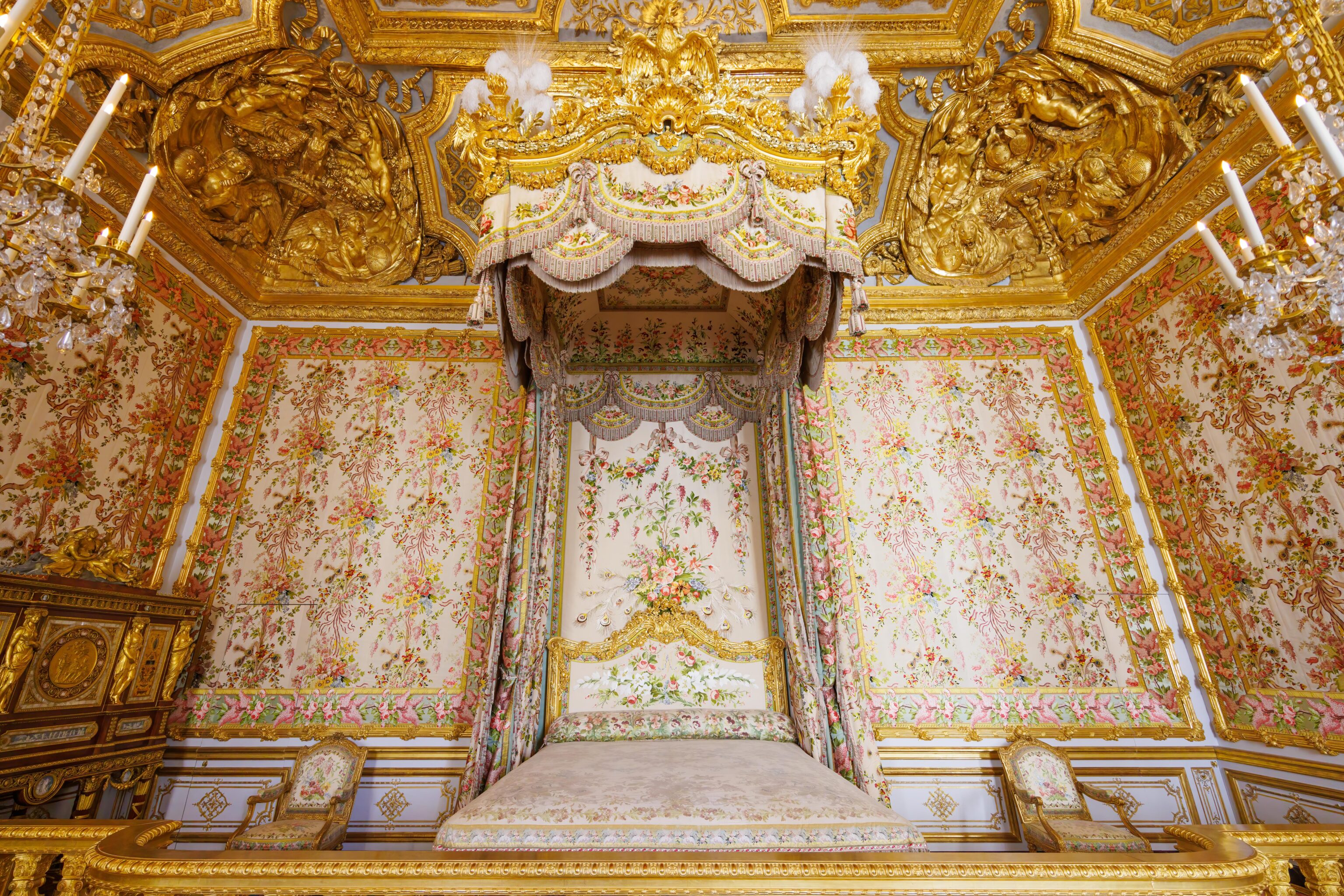
Of course, there is a bed. Stylistically, it is very different from the King’s equivalent room.
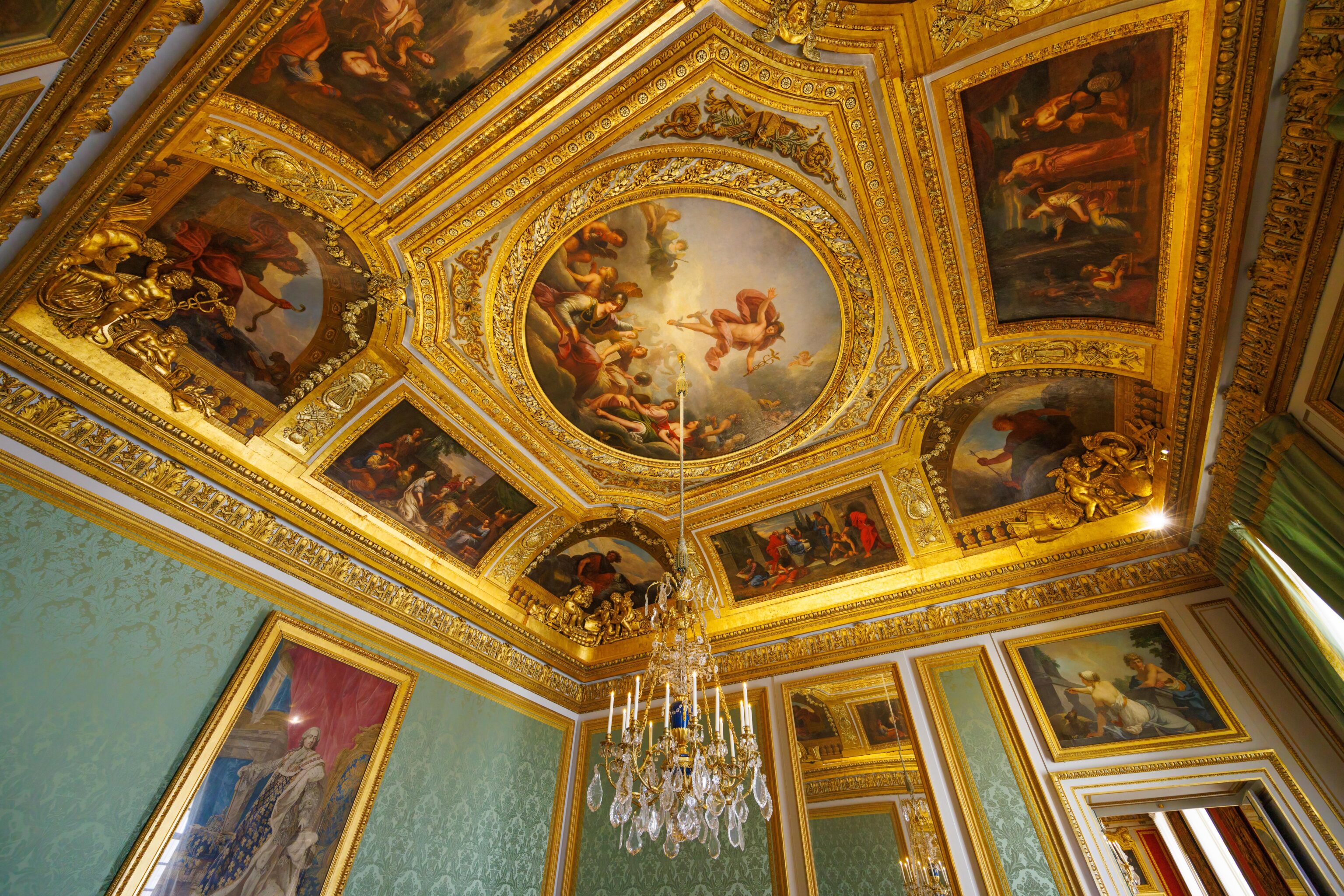
The next room is the Nobles’ Room. Regarding the decor of the room, the palace website states3:
Marie-Antoinette, who was little fond of the Louis XIV style of the room, entrusted her architect Richard Mique with completely redecorating it, except for the ceiling which was kept.
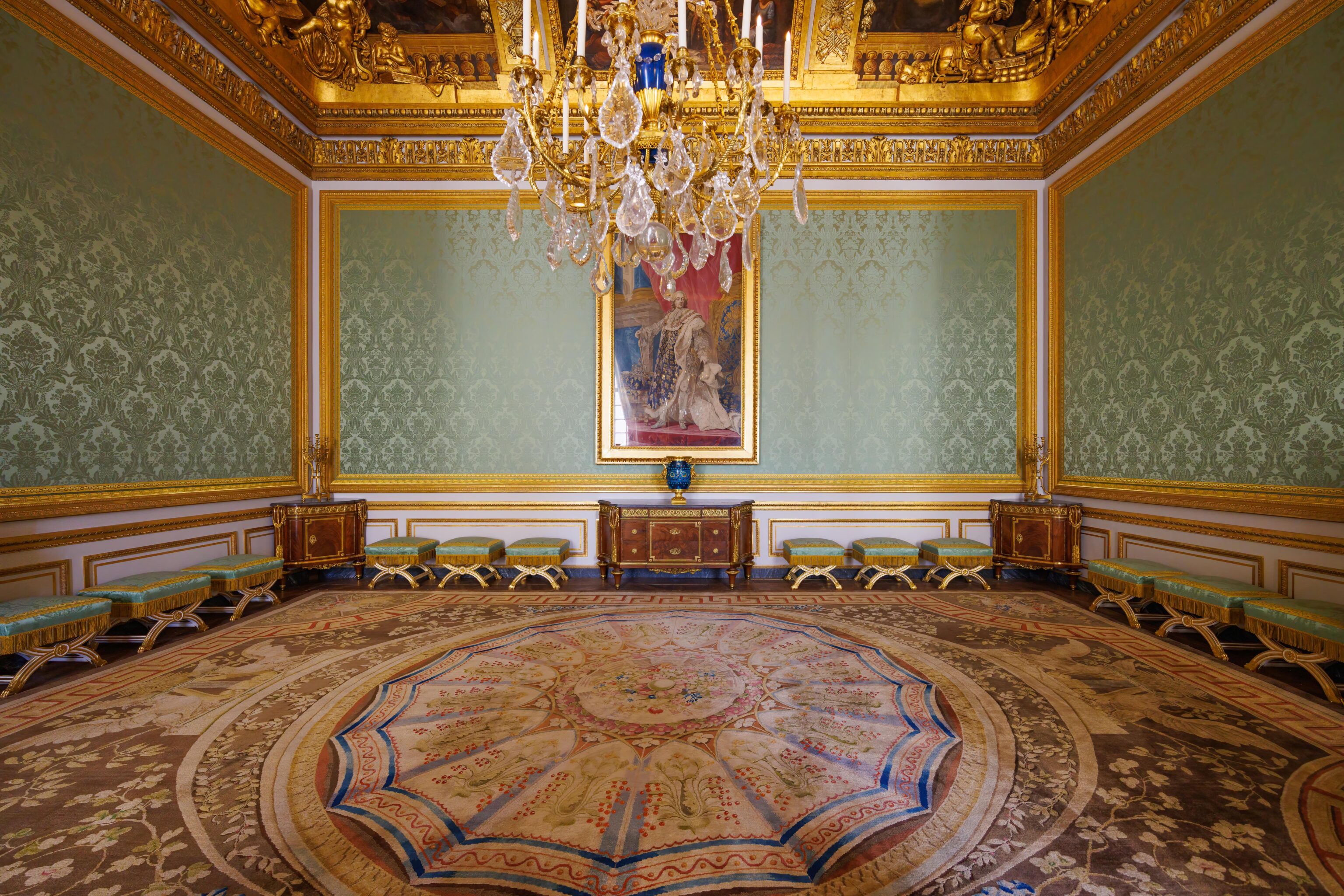
The same room, but looking straight ahead at a portrait at the far end.
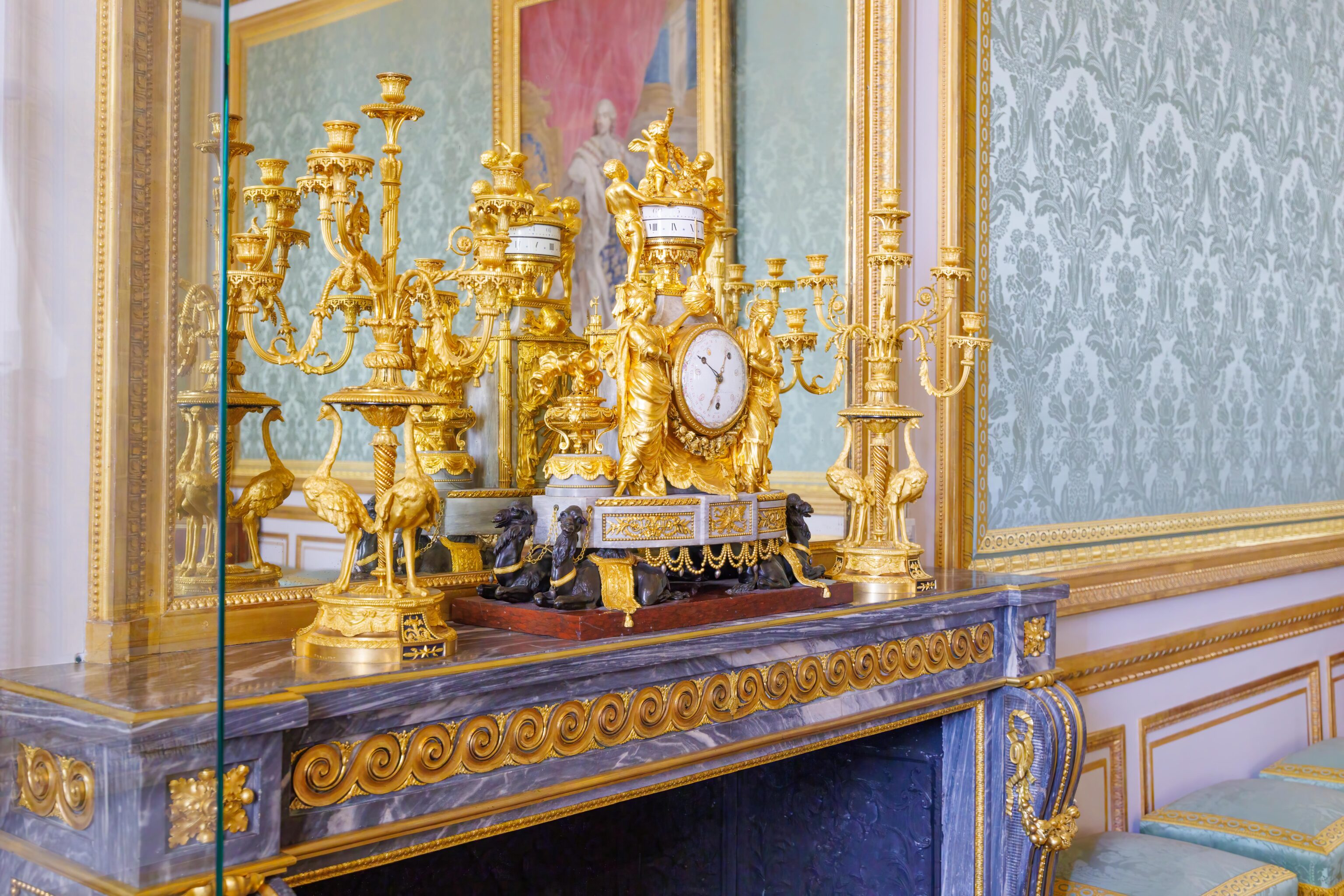
There is a fancy clock sitting on the fireplace.
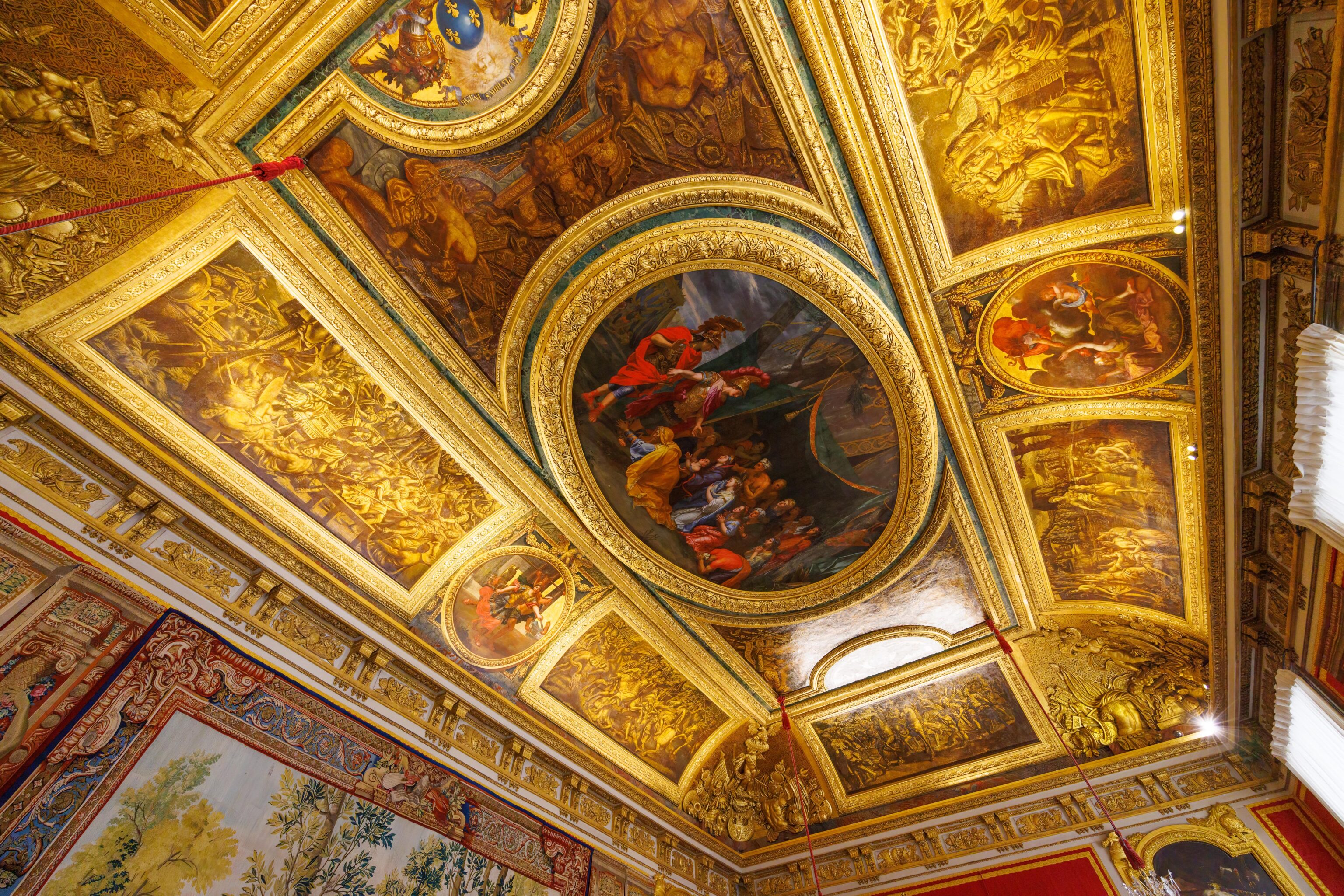
The next room is the Royal Table Antechamber, where public meals were held. Apparently, these meals consisted of the King and Queen eating while everyone else watched. Awkward!
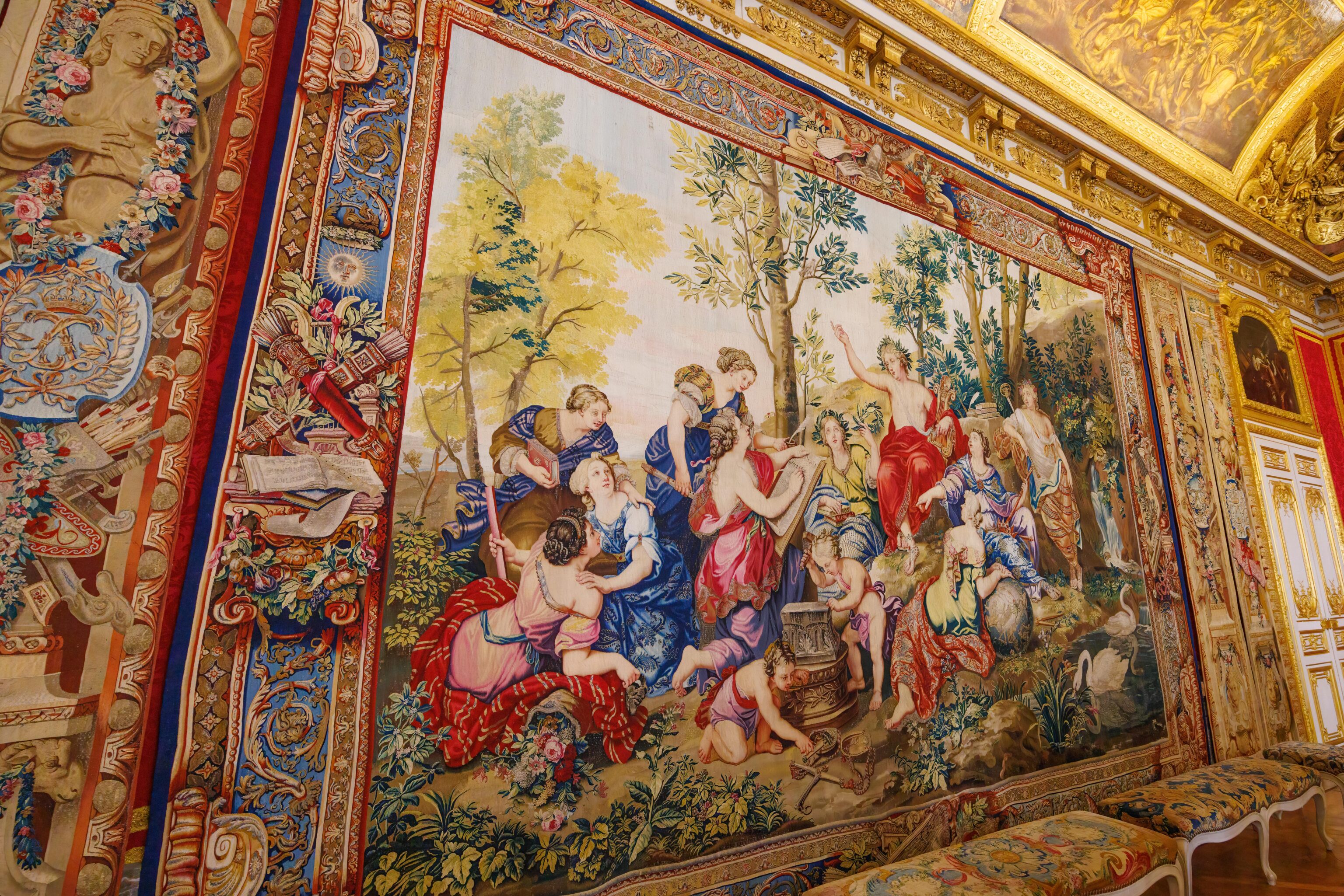
This large tapestry hangs in the room.
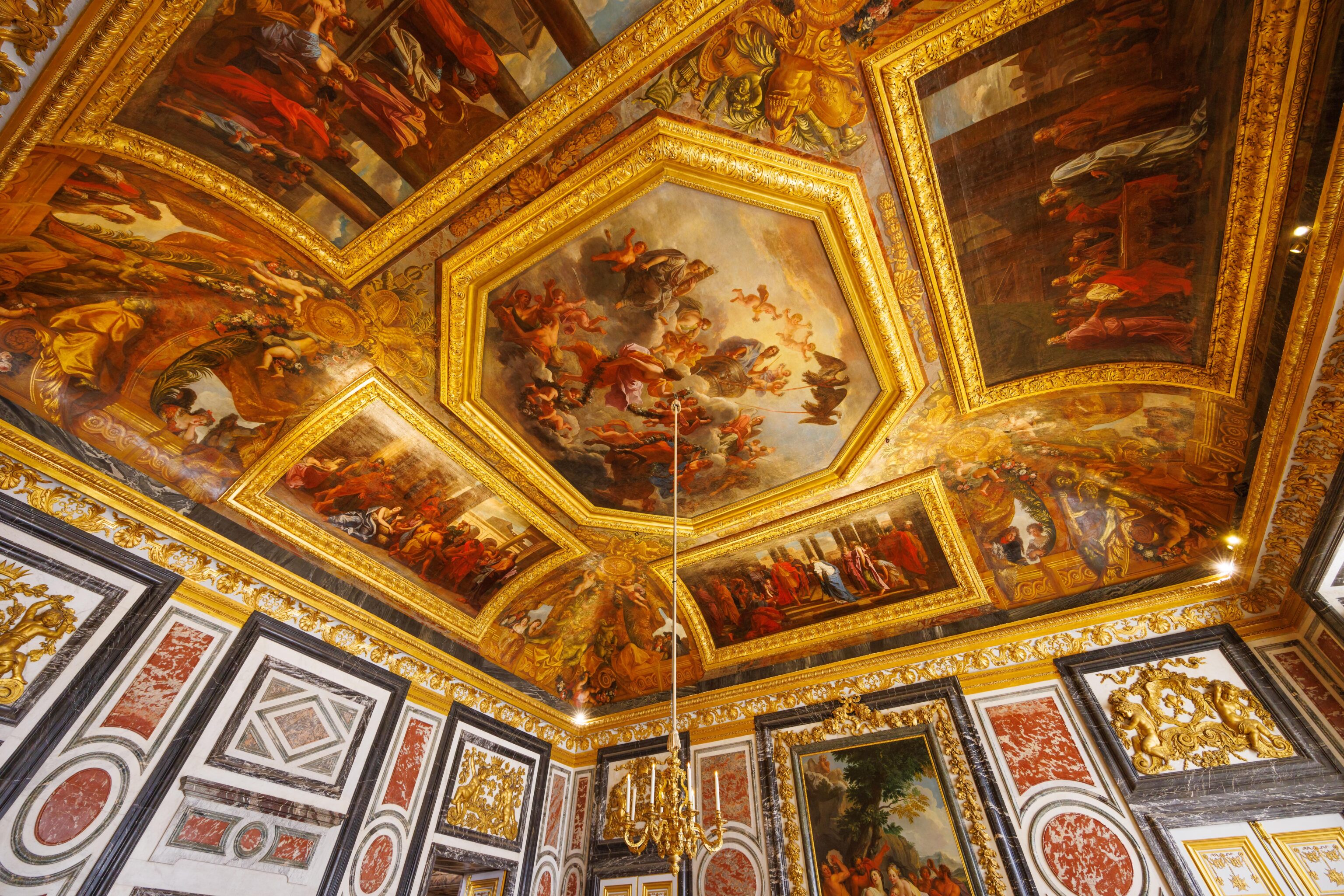
This next room is similar to some rooms that we saw earlier on the King’s side of the Hall of Mirrors. It is the Queen’s Guard Room.
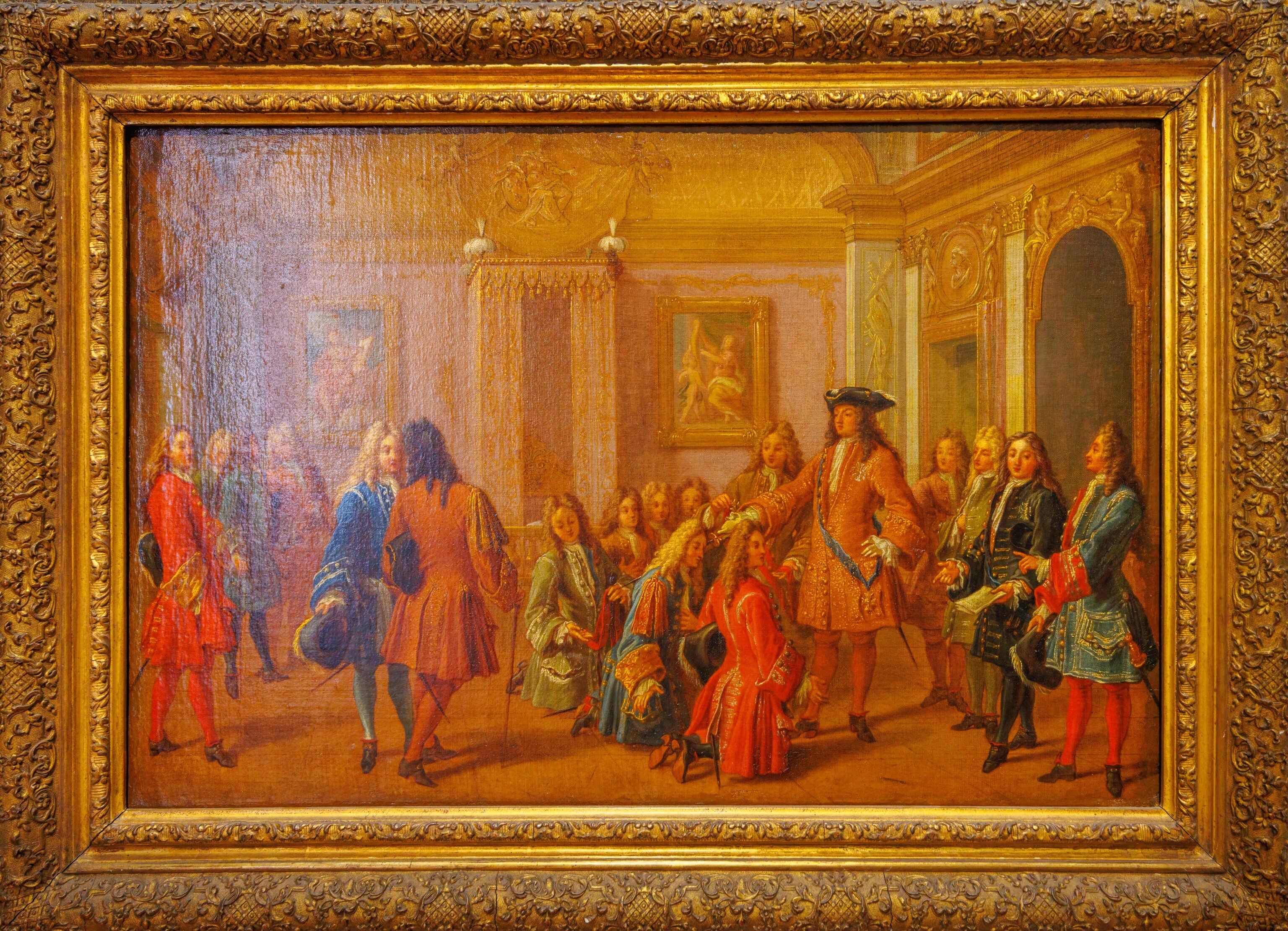
This painting shows the first promotions to the Order of Saint Louis, which Louis XIV founded in 1693. The Versailles Collections website provides this commentary (Google Translated)4:
The order of Saint-Louis, established by edict of April 1693, was intended to reward valiant officers. On May 10, all the princes of the blood were added to the Order. The first major promotion took place on May 11, in the living room of the king's apartment. Louis XIV struck the right shoulder and the left shoulder of each postulant, who was kneeling, with his sword, saying: «By Saint Louis, I Knight You » Marot's canvas is a cardboard project for a tapestry of the History of the King which was never woven. Little concerned with historical accuracy, the painter located the scene of May 11, 1693... in the decor of the King's bedroom fitted out in 1701! Apart from Louis XIV, the only recognizable character is Barbezieux, son of Louvois and his successor as Secretary of State for War, in black, who holds the form of the knights' oath.
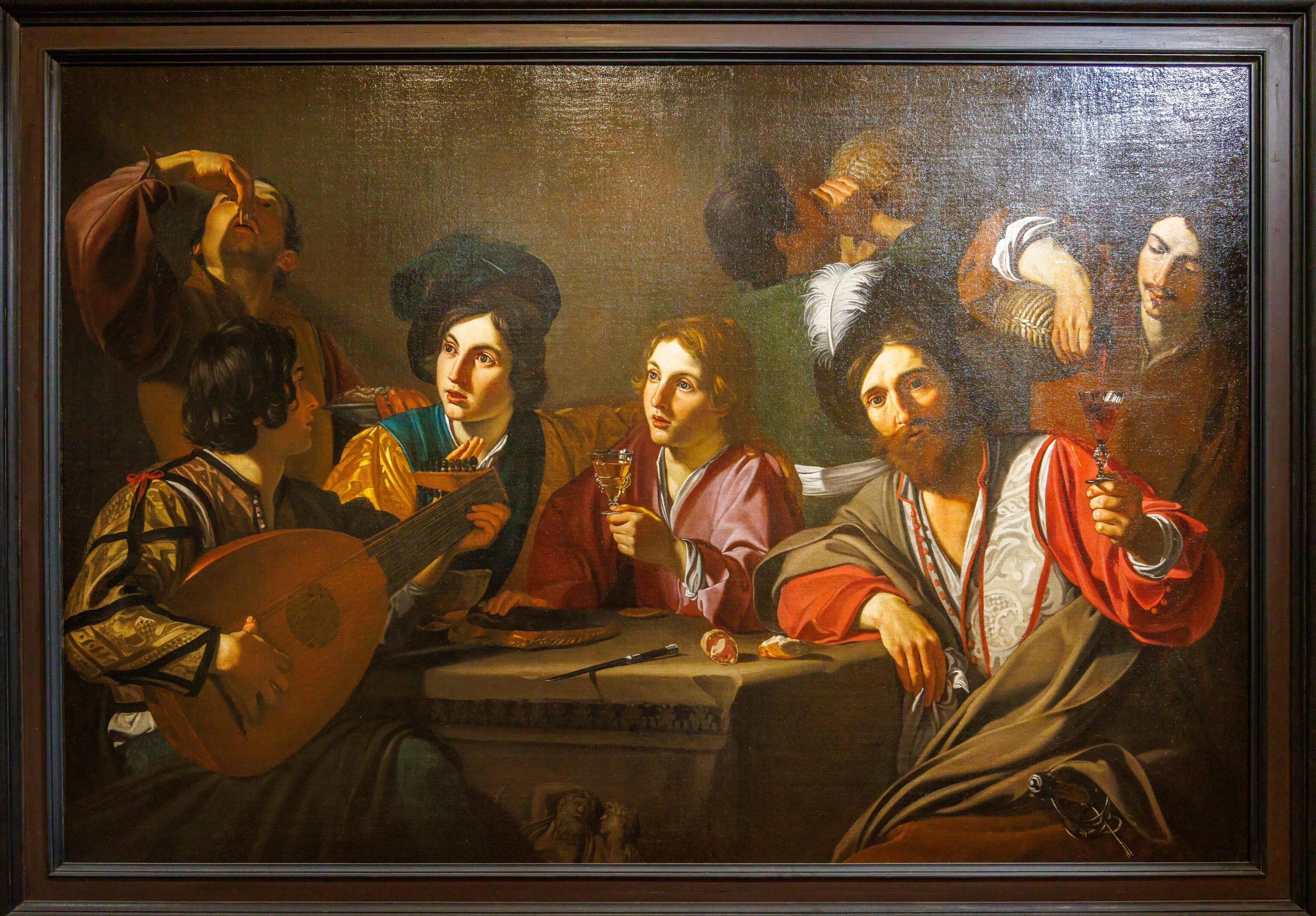
The people in this painting seem rather ordinary compared to the royalty in most of the works here in the palace. They also seem very bold, lifelike, and alive. This painting is a copy, the original is in the Louvre, though currently on loan. It was originally sold to Louis XIV in 1662.
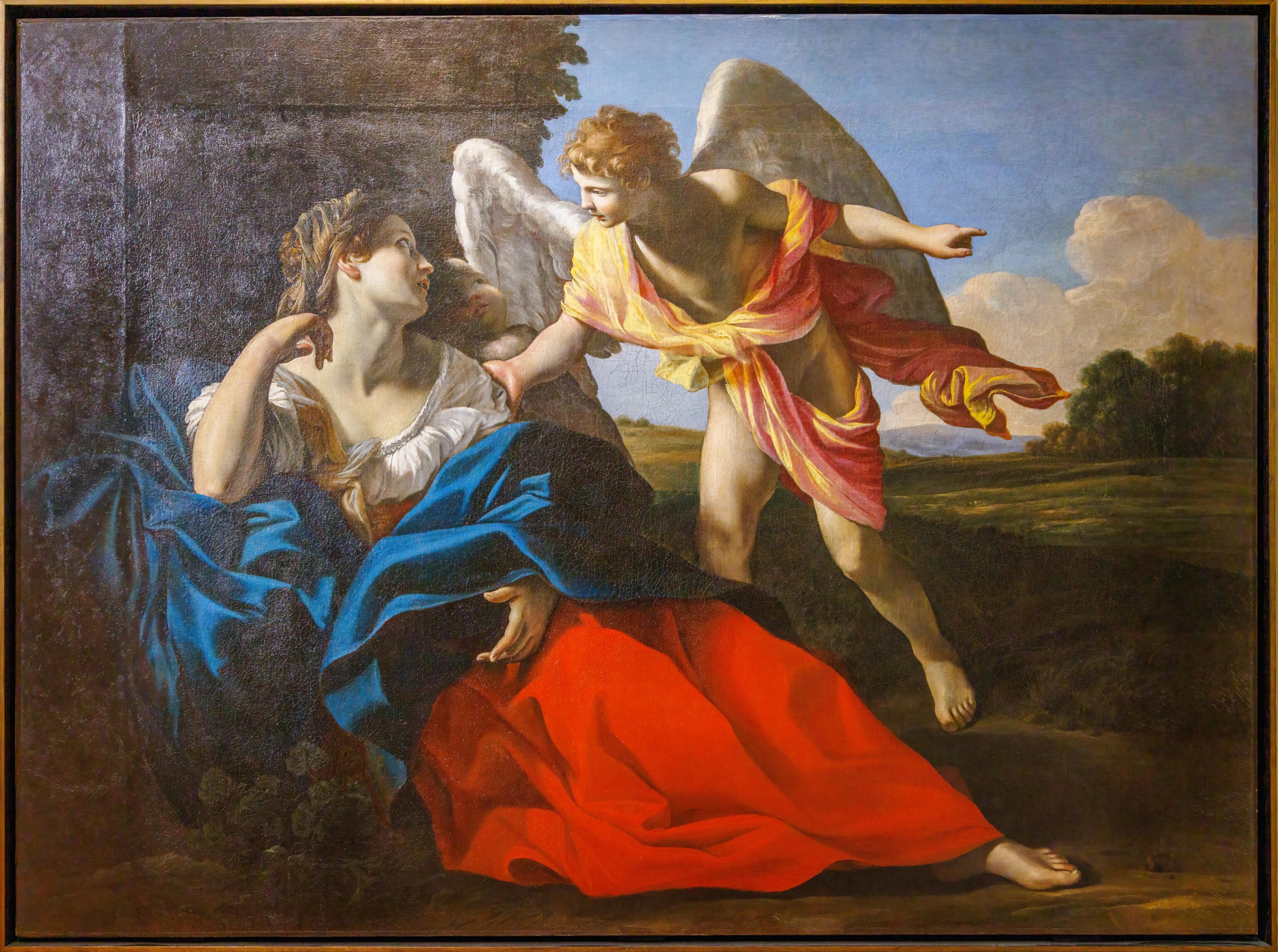
This painting is particularly colorful. It was also acquired by Louis XIV in 1662. It was here in Versailles until the French Revolution. It ended up at the Louvre but was returned here in 1949.
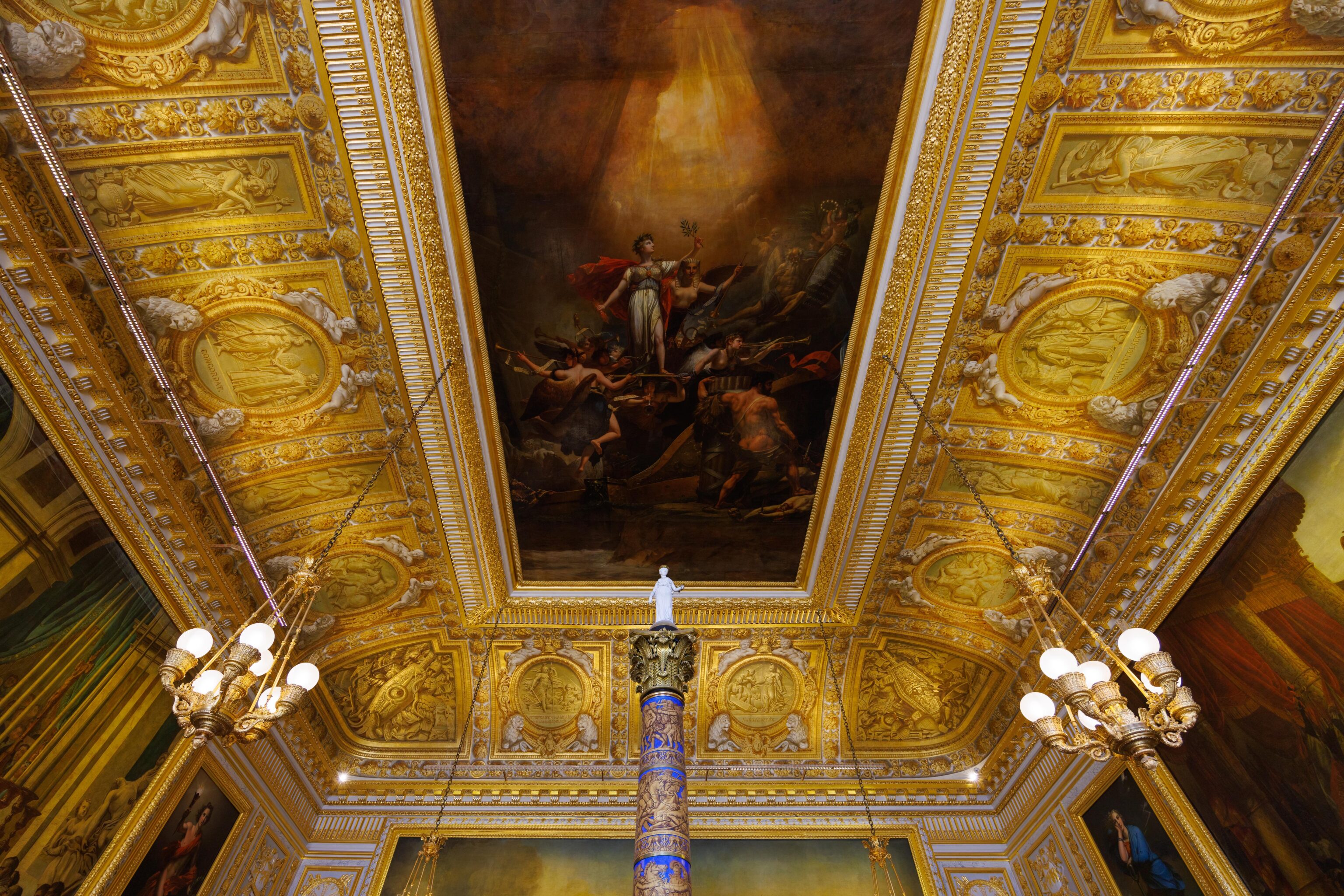
This is the Coronation Room and was created to honor Napoleon. The column in the room is the Austerlitz Column, commissioned to celebrate his victory over Germany, which was then the last remnant of the Holy Roman Empire.
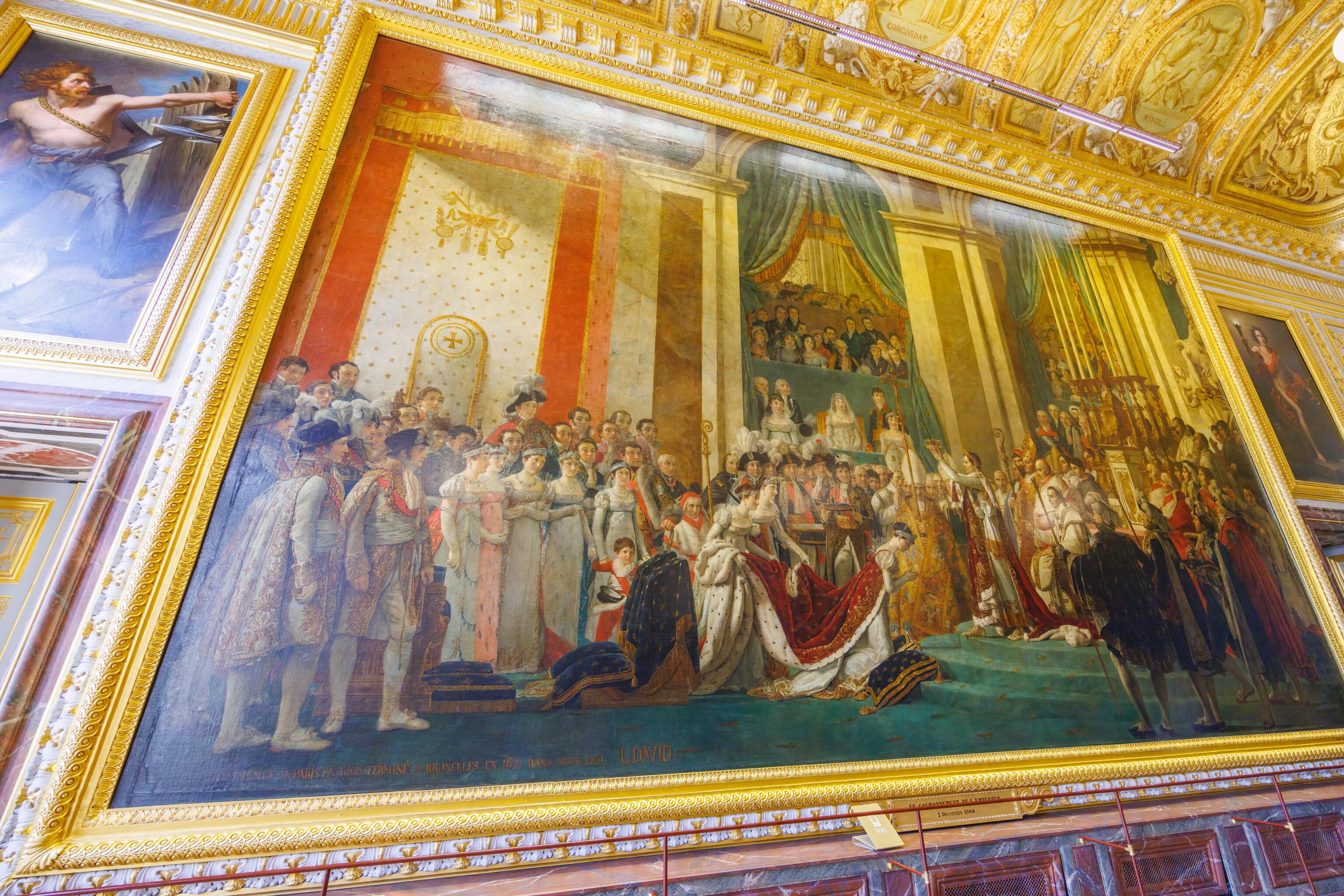
The original of this painting, showing the Emperor and Empress being crowned, is located in the Louvre. We saw it during our visit two days ago. This painting is a copy that was created by the original artist.
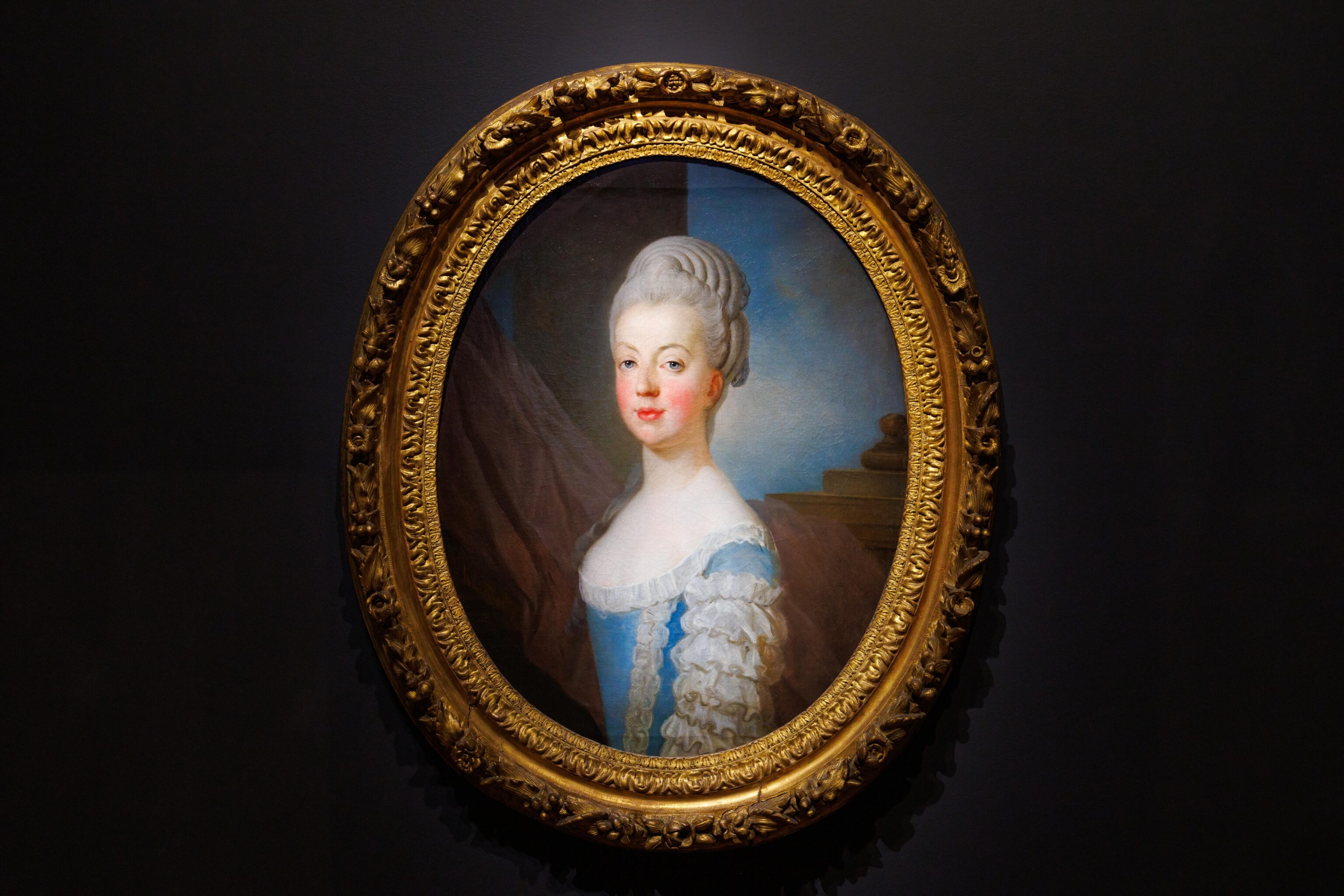
This is a painting of Marie Antoinette, Queen of France and wife of Louis XVI. She was executed, along with Louis XVI, during the French Revolution. Accompanying text reads (Google Translated):
MARIE-ANTOINETTE (1755-1793), DAUPHINE BY JOSEPH SIFFRED DUPLESSIS This portrait constitutes an essential milestone in the creation of the image of Marie-Antoinette: it is the first oil effigy of the princess on French soil. It is also a previously unpublished work which, until now kept in a private collection, was referred to by its former owners as “the little marquise”, Portrait of the dauphine After four years of talks, the Prince of Kaunitz and the Duke of Choiseul decided to consolidate peace between France and Austria through a matrimonial alliance sealing the fate of Marie-Antoinette, who was to marry the dauphin Louis-Auguste, grandson. son of Louis XV. In 1770, France welcomed its new dauphine. Painters, sculptors, engravers and miniaturists aspired to portray her. It was to the academician Louis-Michel Van Loo (1707-1771), formerly First Painter to Philip V, King of Spain, that this honor fell. The artist died before completing his work. Jean-Baptiste-Marie Pierre (1713-1789), First Painter to the King and Director of the Royal Academy of Painting, then suggested the name of Joseph Siffred Duplessis (1725-1802), academician with a well-established reputation as a portrait painter. A realistic brush After having sketched the face of the dauphine (fig. 2), the painter, praised for the truth of his portraits, delivered an effigy without concession. The bulging eyes, the domed forehead, the Austrian lip and the heavy chin inherited from the Habsburgs reveal an unflattering brush. Despite the elaborate treatment of the hairstyle, the perfect complexion and the remarkable posture of the head, the realism of this effigy displeased Marie-Antoinette: she rejected its naturalness. The resemblance expert had described the features of the dauphine so well that he was thanked. Disappointed, he did not take the trouble to complete the architectural background against which the illustrious model stands out. Other artists, after Duplessis, still encountered the perilous exercise of pleasing the Archduchess of Austria. It was not until 1778 that Marie-Antoinette, then queen, found satisfaction in the art of Élisabeth Louise Vigée Le Brun (1755-1842). This acquisition endows the Versailles collection with a new painting by Duplessis, an important artist for the institution in more than one way since he was curator of the castle's collections from 1794 until his death in 1802. This work was acquired thanks to the patronage of the Society of Friends of Versailles, with the support of the Heritage Foundation.

We next entered the 1792 Room, representing the year when the monarchy fell.
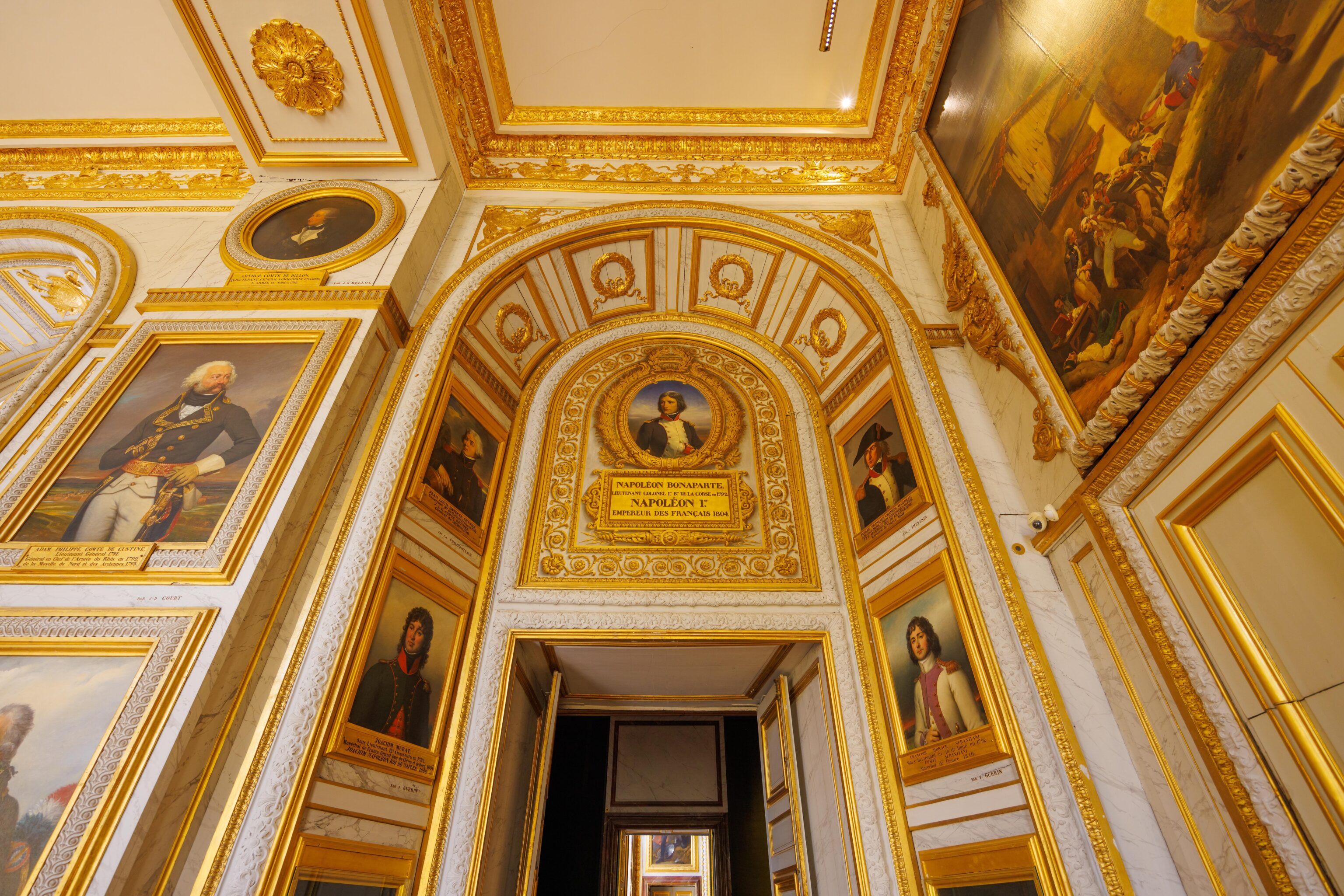
There is a small portrait of Napoleon above a door. Even at this young age, he is depicted doing the hand in shirt thing!
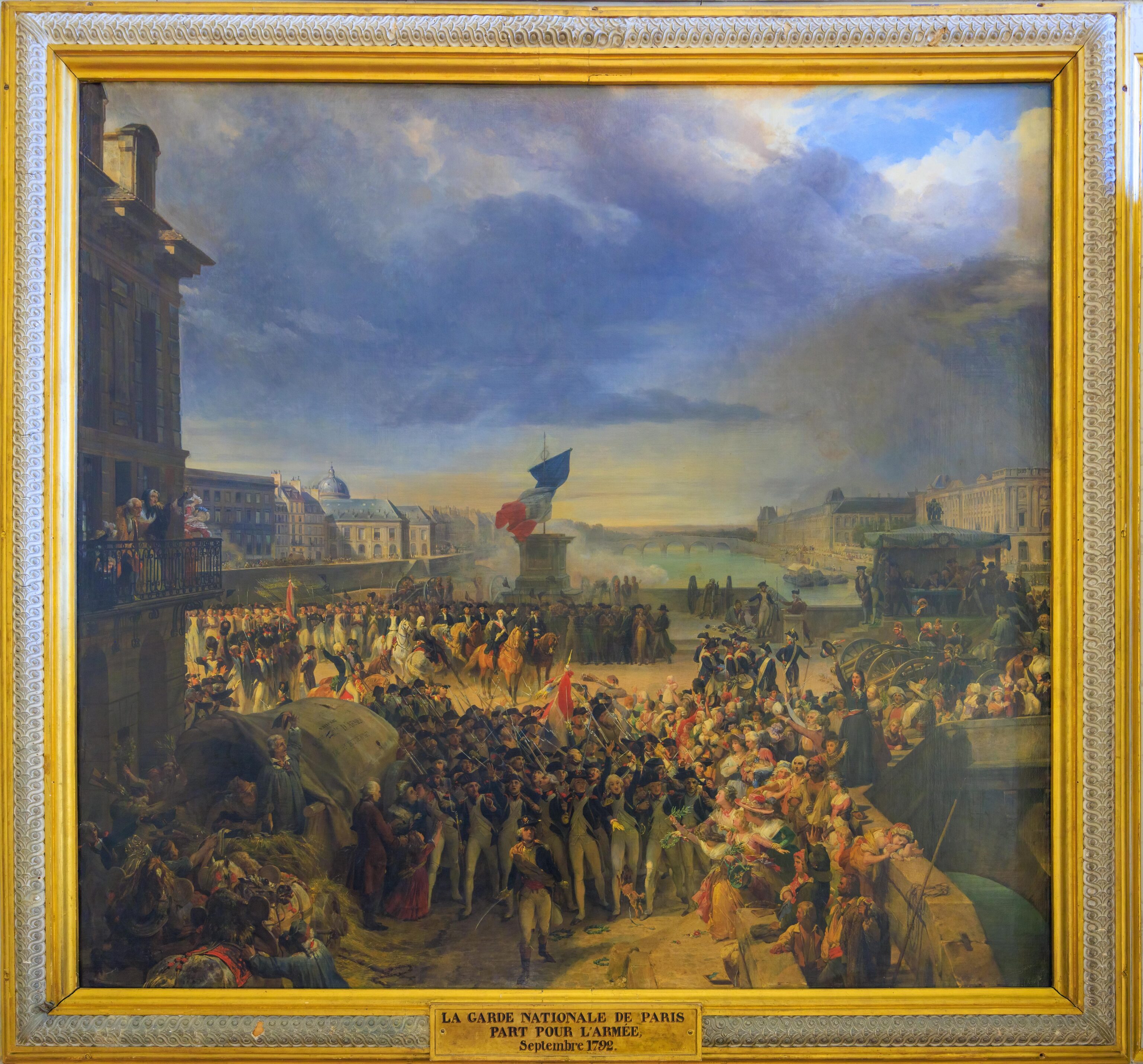
[The National Guard of Paris Leaves to Join the Army in September 1792] (1834)
This painting depicts the National Guard of Paris leaving to join the French Revolution.
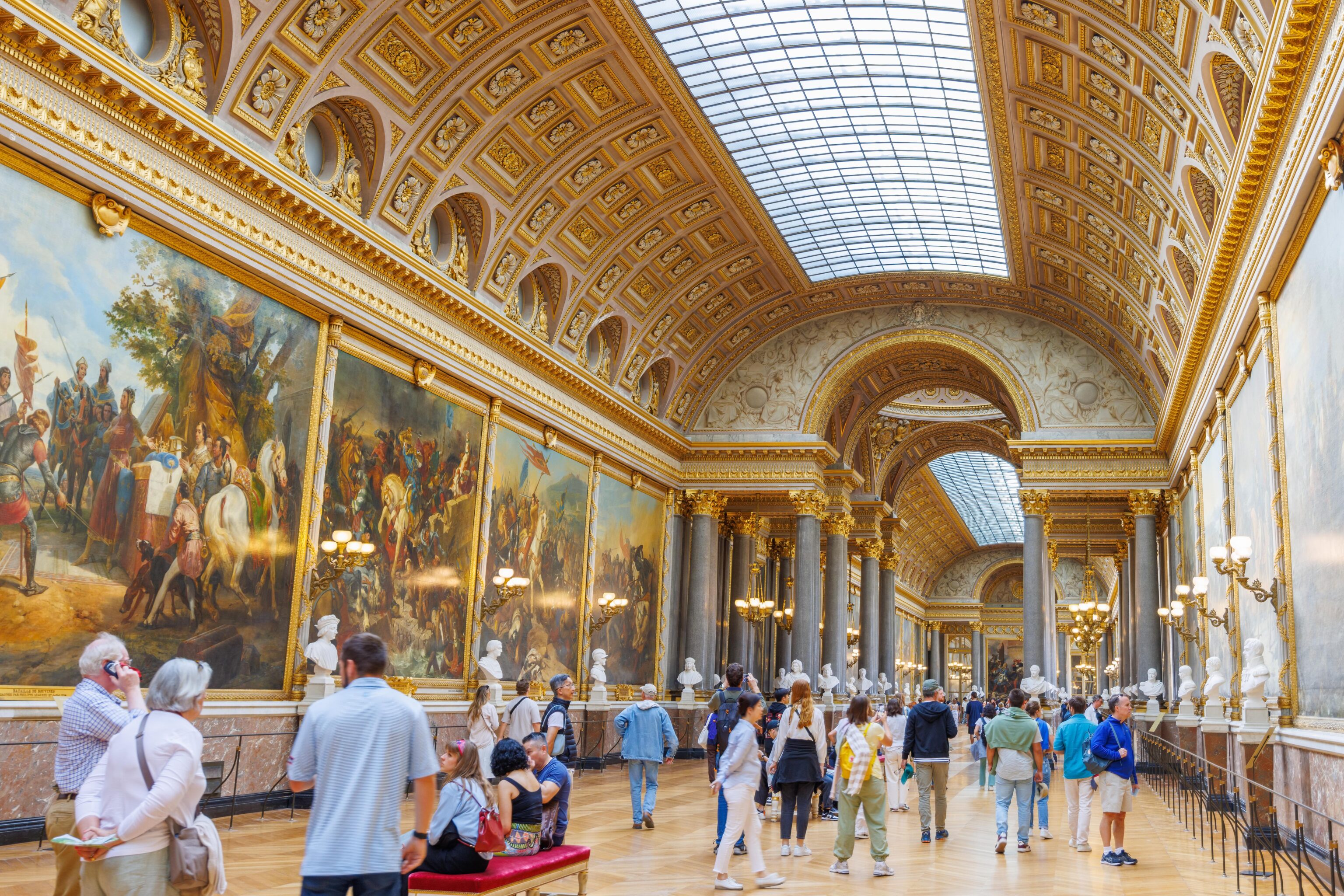
The next room we entered was the Gallery of Great Battles. It is exactly what it sounds like. This is the largest room in the palace and resembles parts of the Louvre as a museum.
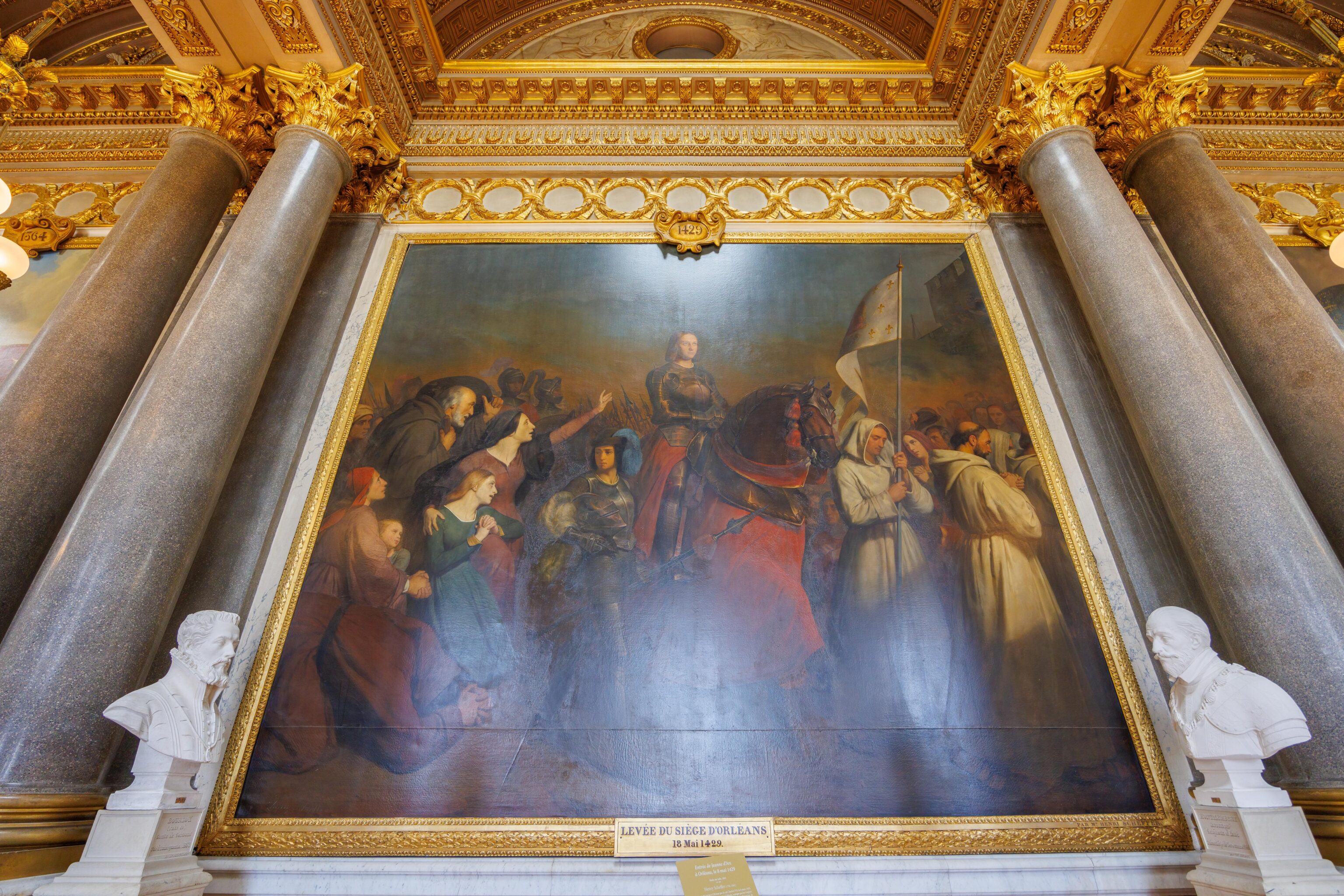
This painting depicts Joan of Arc at Orleans after defeating the British. This painting seems to be known as “Entrée de Jeanne d’Arc à Orléans, 8 mai 1429,” despite the formal title not matching what is written at the bottom of the frame.
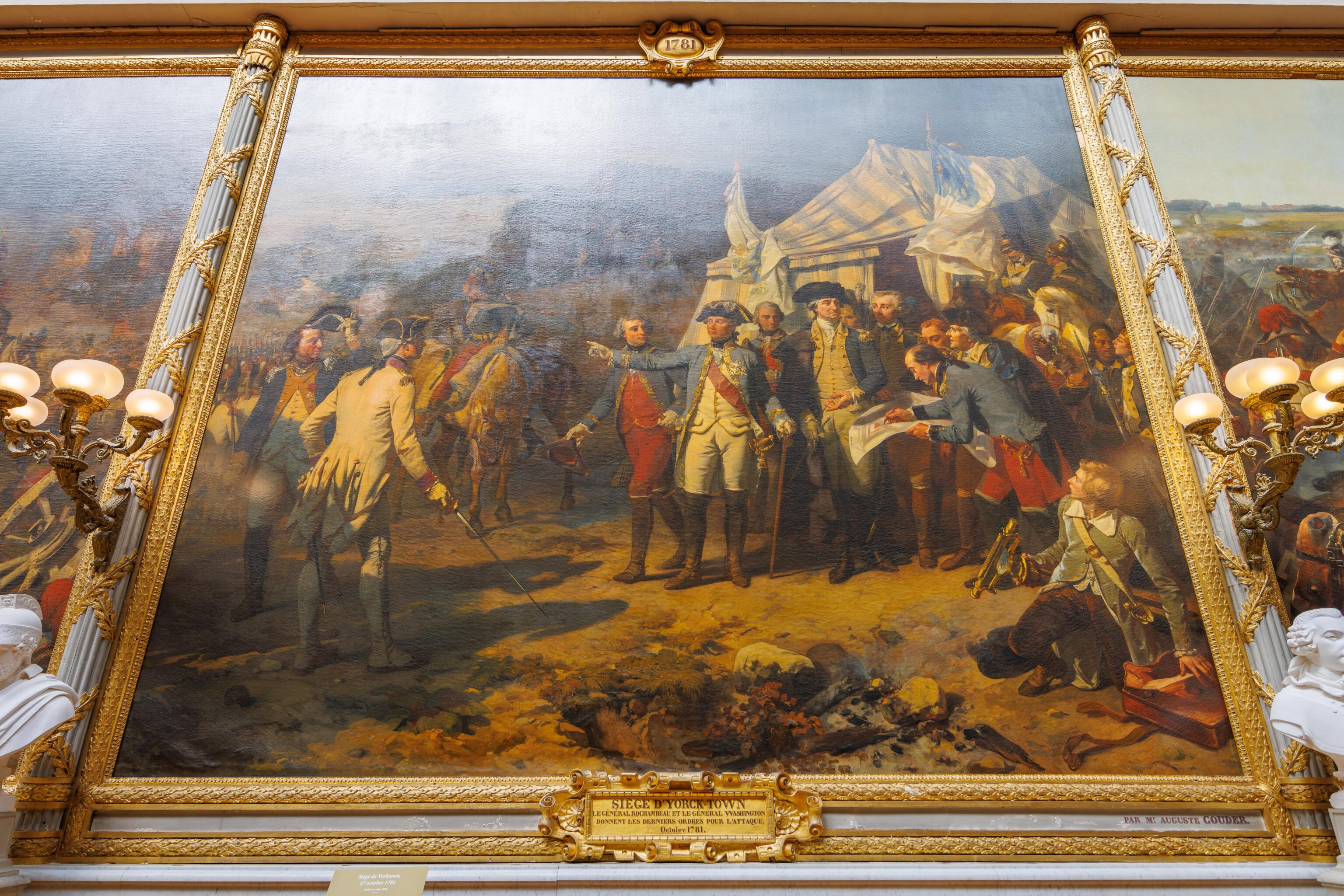
Auguste Couder – Siège de Yorktown, 17 octobre 1781 [Siege of Yorktown, October 17, 1781]
This scene depicts American General George Washington with French General Rochambeau at Yorktown, the last major battle of the American Revolutionary War.
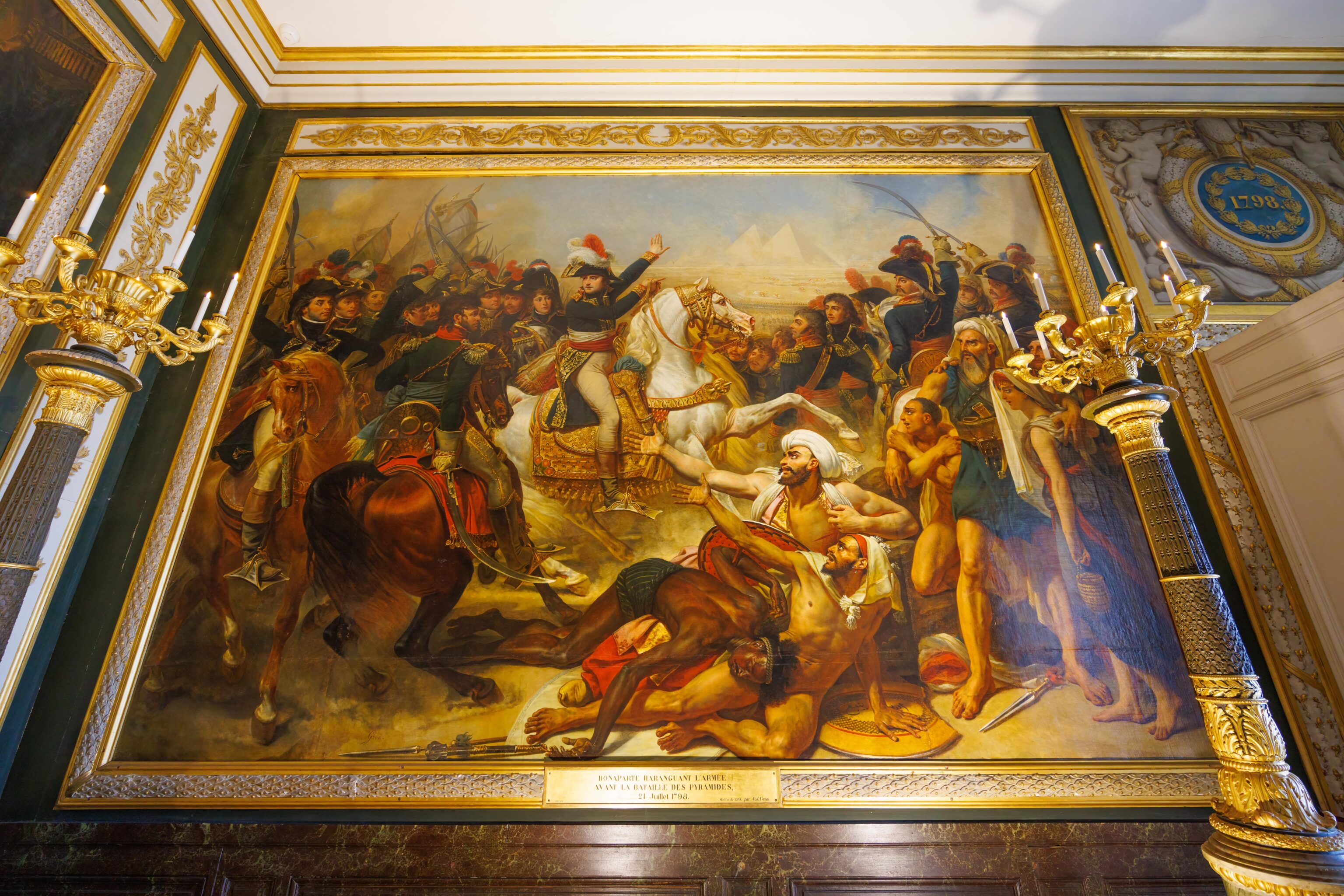
The Versailles Collections website offers this commentary (Google Translated)5:
On July 21, 1798, Bonaparte encouraged his army to battle against the Mamluks. The fight will take place on the edge of the desert, not far from the pyramids of Giza. In the center of the painting, the general in chief, mounted on a white horse richly caparisoned in the oriental style, points to the Pyramids. He wears the outfit of a general of the Directory, a blue coat embroidered with gold, a red and white scarf around his waist and a cocked hat plumed with white and red feathers. The artist wanted to represent the moment when Bonaparte harangues his troops and pronounces the famous phrase: “Remember that from the top of these monuments, forty centuries contemplate you.” Behind him, we recognize several of his generals: in the foreground, bareheaded, Murat; in the right group, Duroc, Sulkowski, Berthier, Junot and Eugène de Beauharnais and in the left group, Desaix, Rampon, Lasalle. In the background stretches the plain of Giza, dominated by the three pyramids of Cheops, Khephren and Mykerinos. The French army won this battle, with very few losses. Mourad Bey, who commanded the Mamluk army, retreated towards Giza with the 2,500 surviving cavalrymen of his army. This victory opened the doors of Cairo to Bonaparte who entered there on July 24, 1798. This painting was commissioned in 1809 for the Senate Session Hall but it was removed during the Restoration. Louis-Philippe bought it for his historic galleries of the Palace of Versailles, inaugurated in 1837. It was then enlarged on each side by Gros himself and one of his students, Debay. F.L.
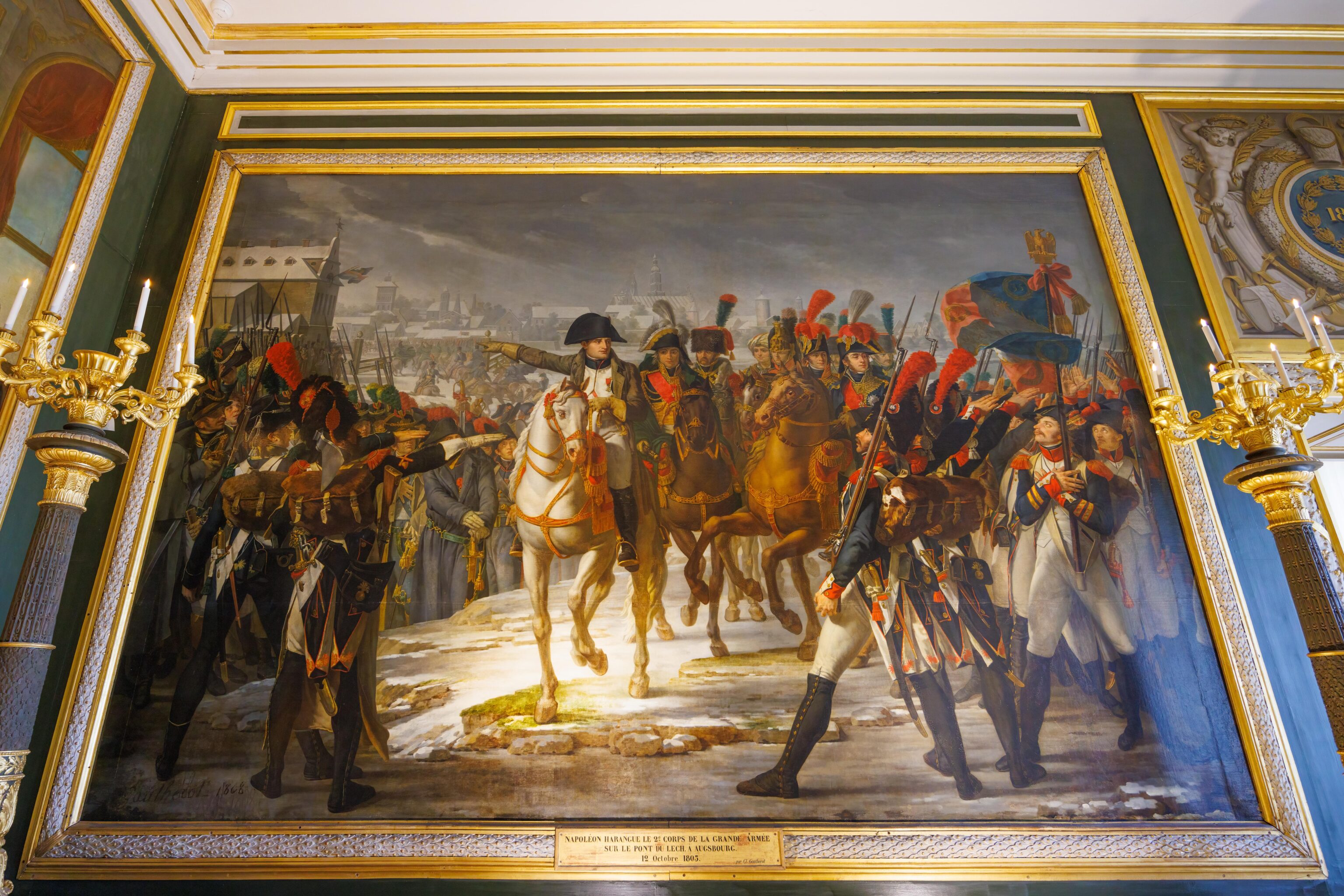
Napoleon once again.
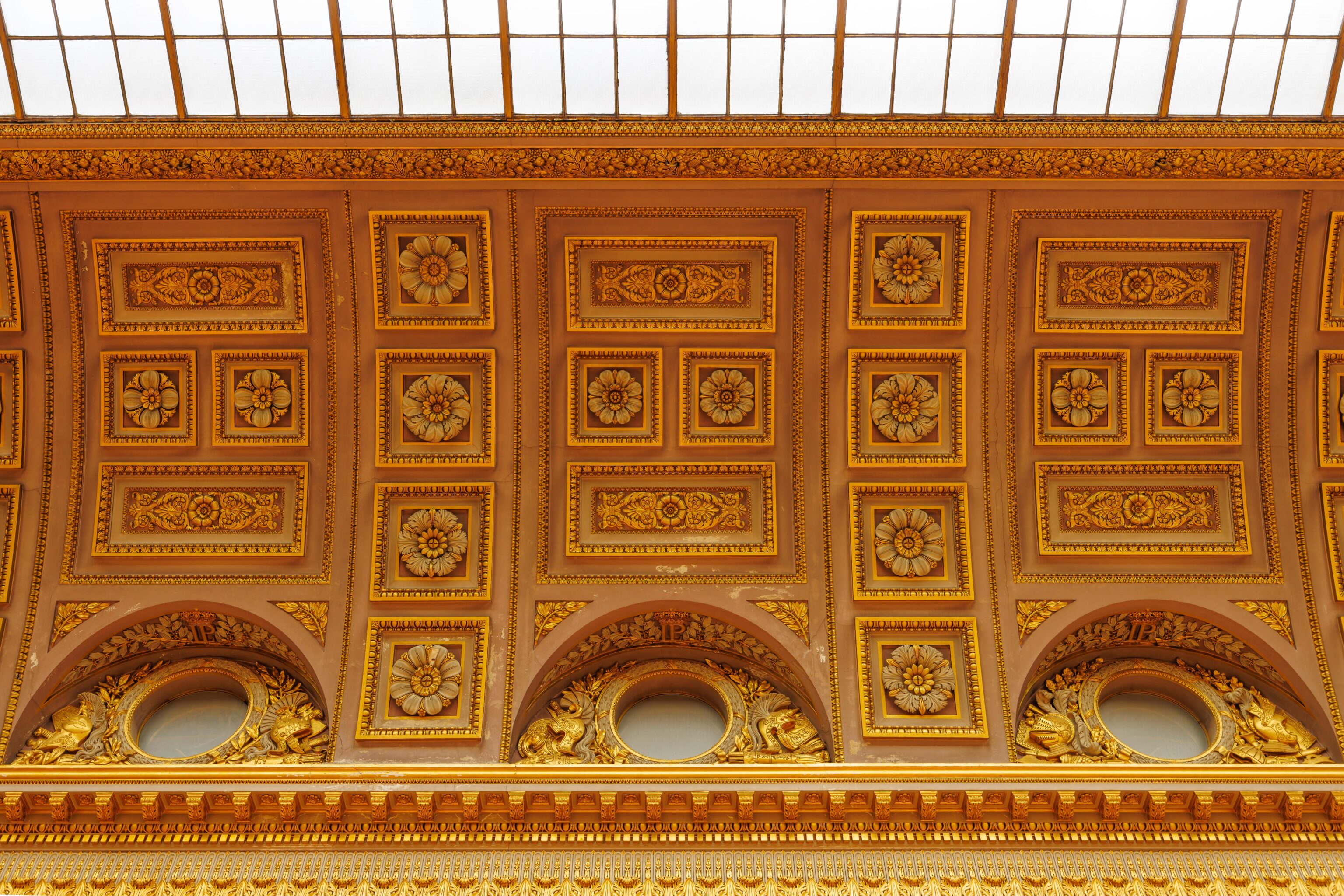
The ceiling in this room is decorated with sculpted flowers similar to the ones we’ve seen at the Arc de Triomphe and Musée d’Orsay. There are actually a variety of flowers here if one looks closely.
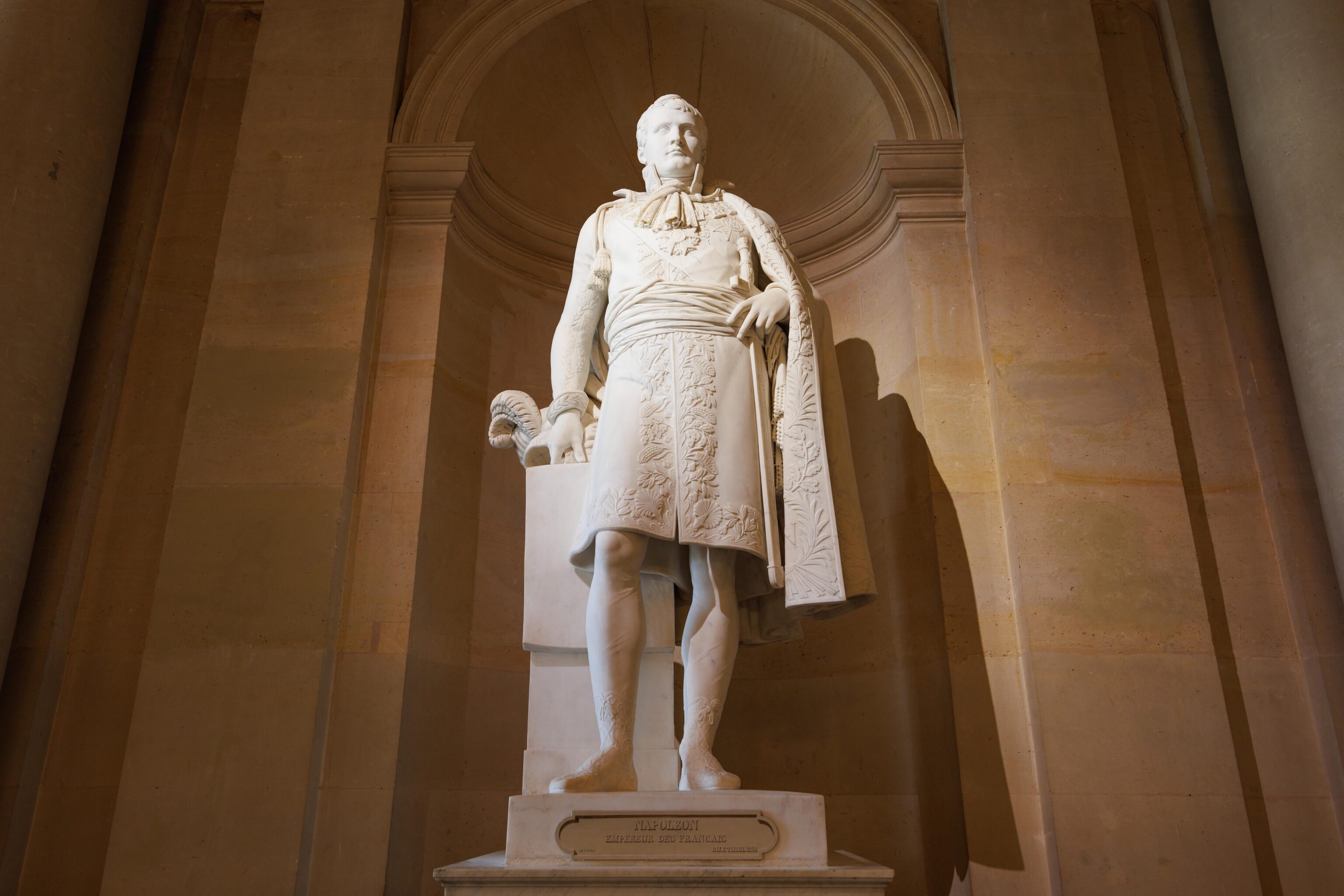
We next entered a room lined with sculptures. This one is of Napoleon.
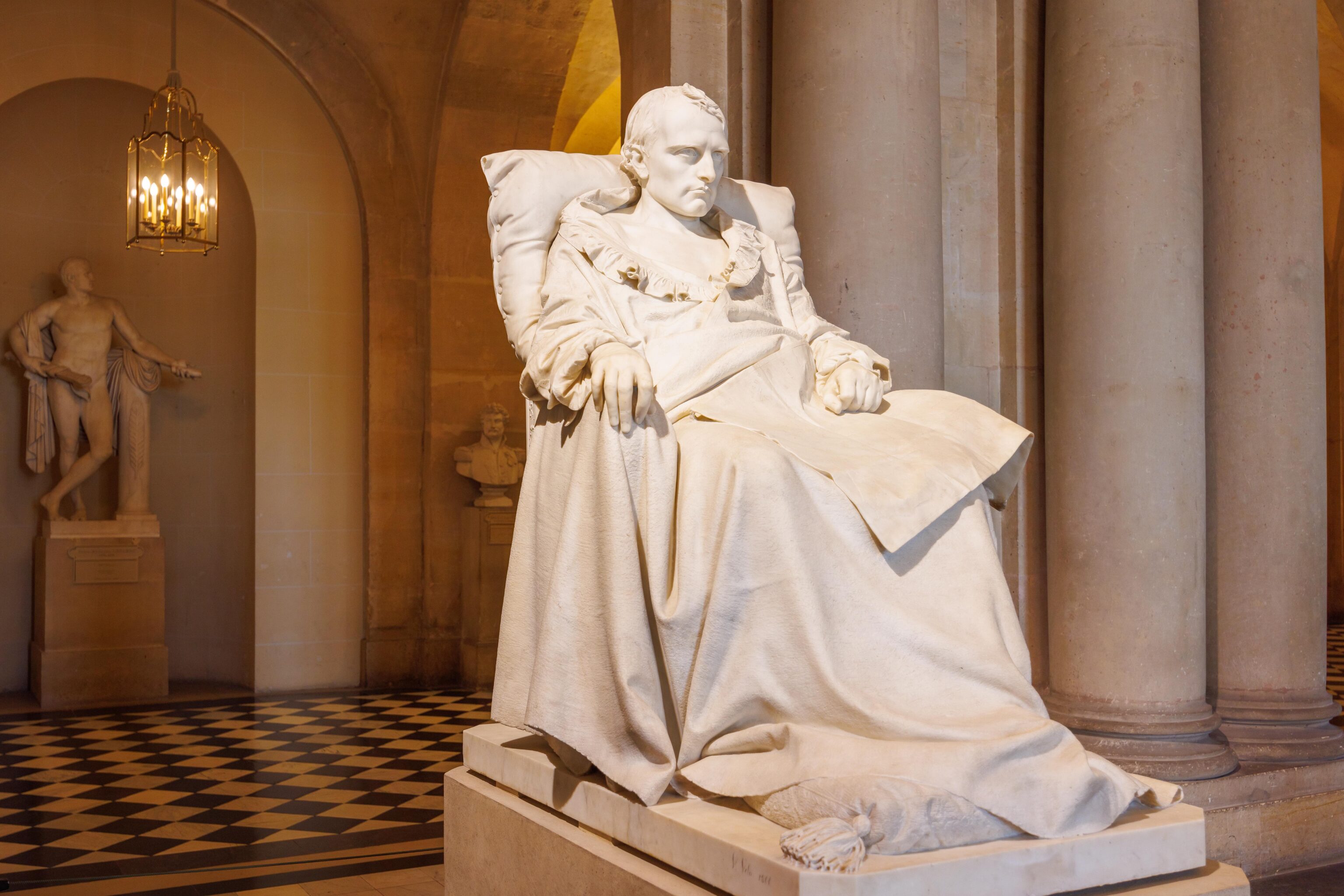
This is also Napoleon, but near the end of his life. It is titled “The Last Moments of Napoleon at Saint Helena.”
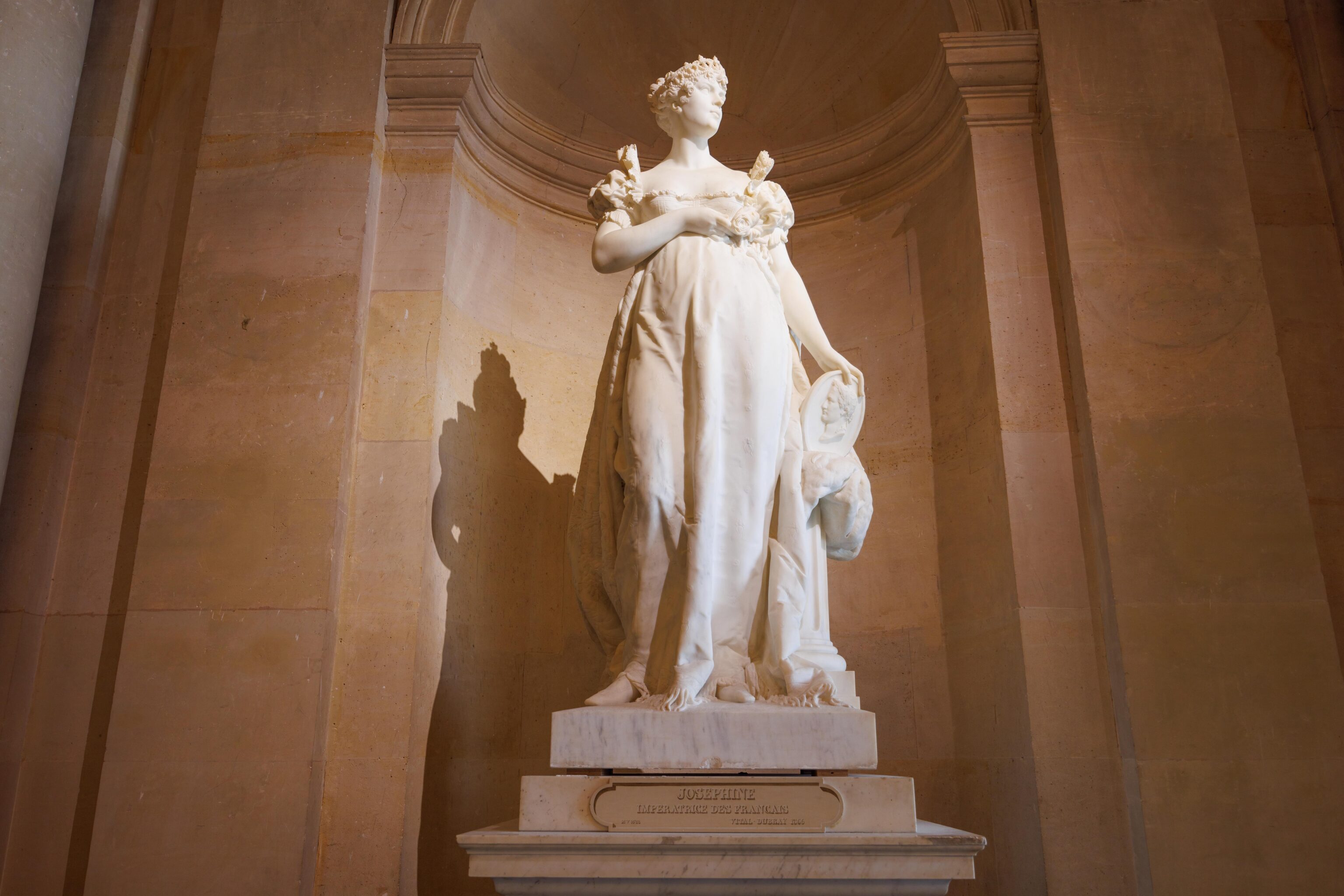
This sculpture is of Josephine, Empress of France.
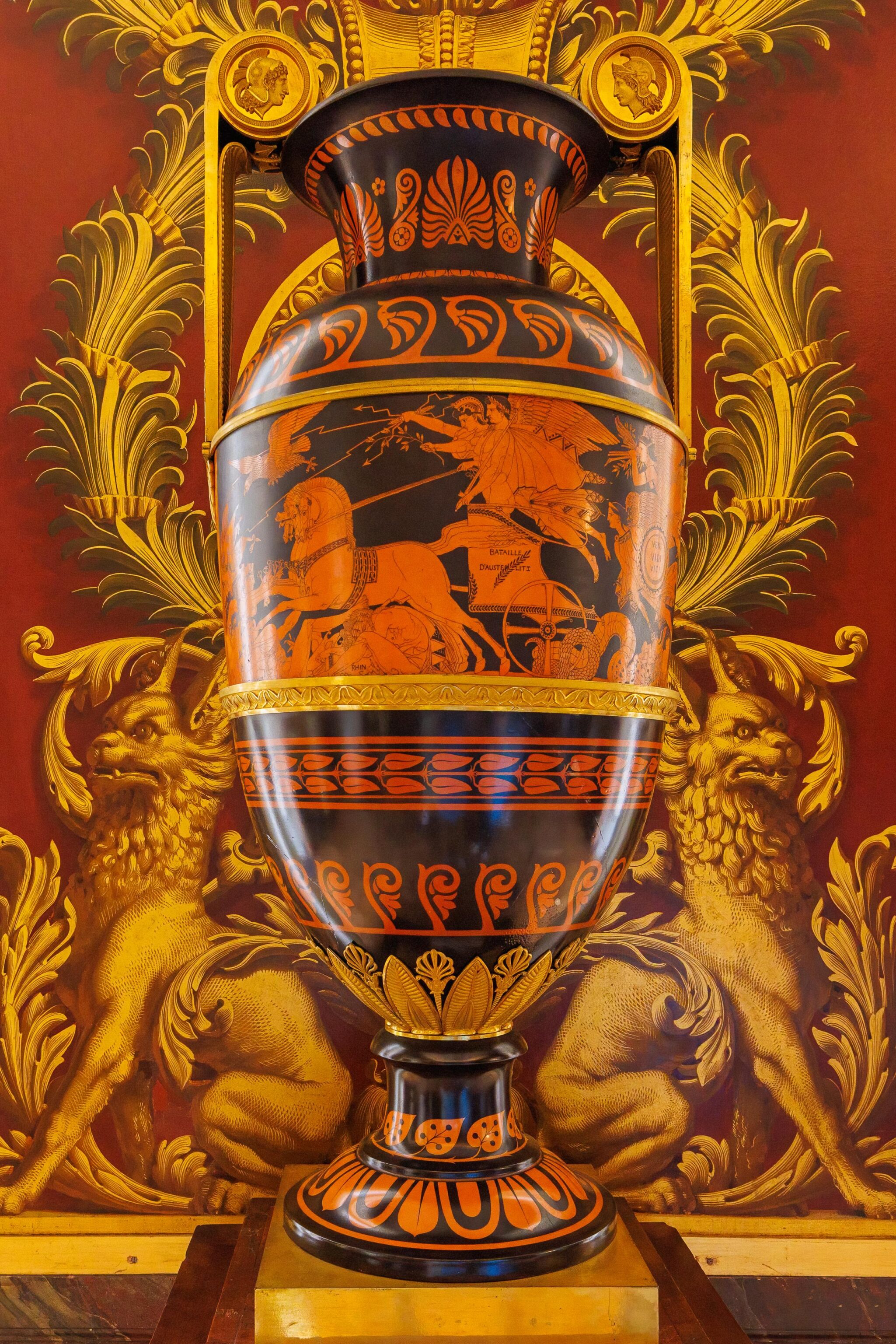
This fancy object is the Vase d’Austerlitz.
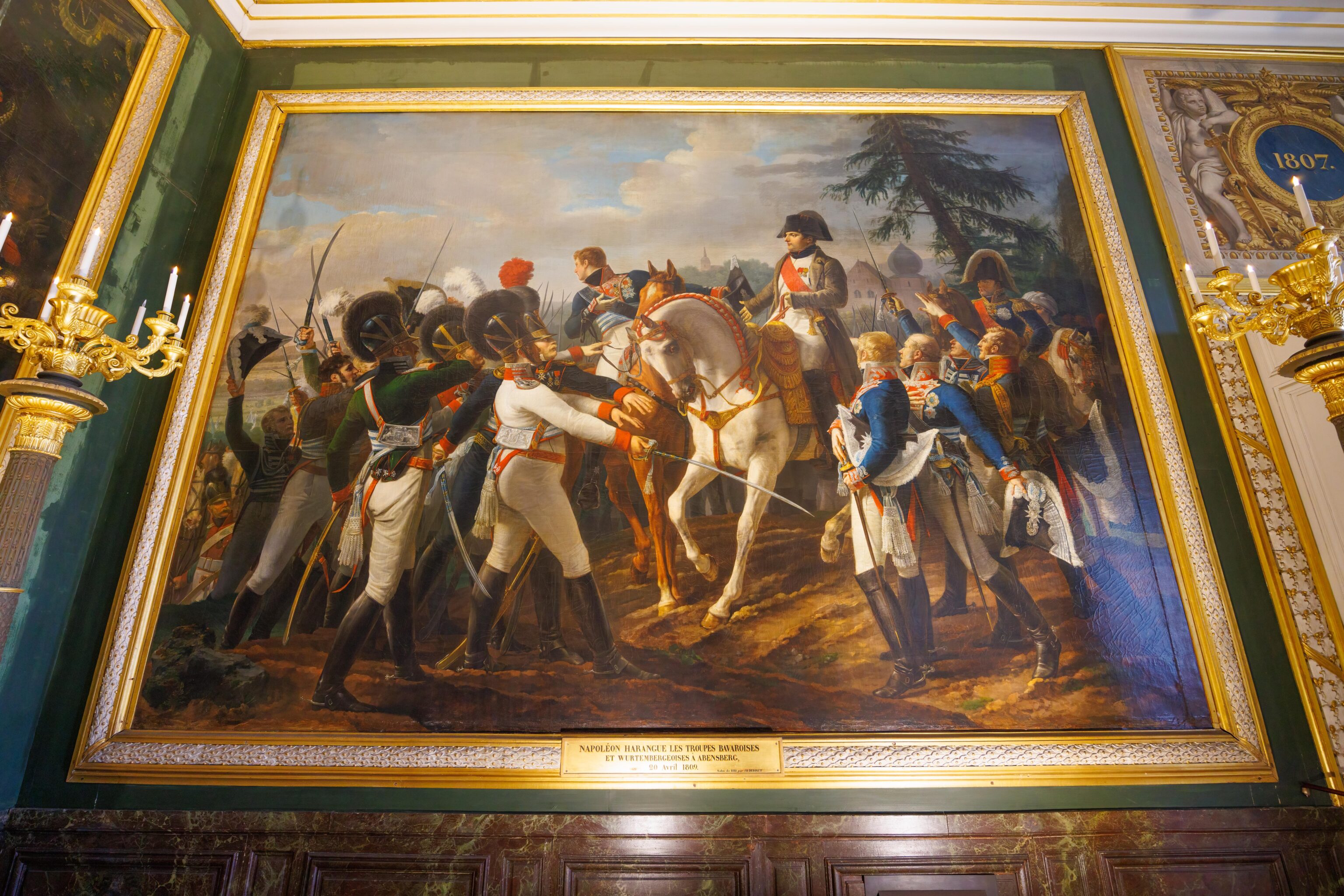
Another painting of Napoleon, this time, in Germany where the French would defeat the Austrians at the Battle of Abensberg.
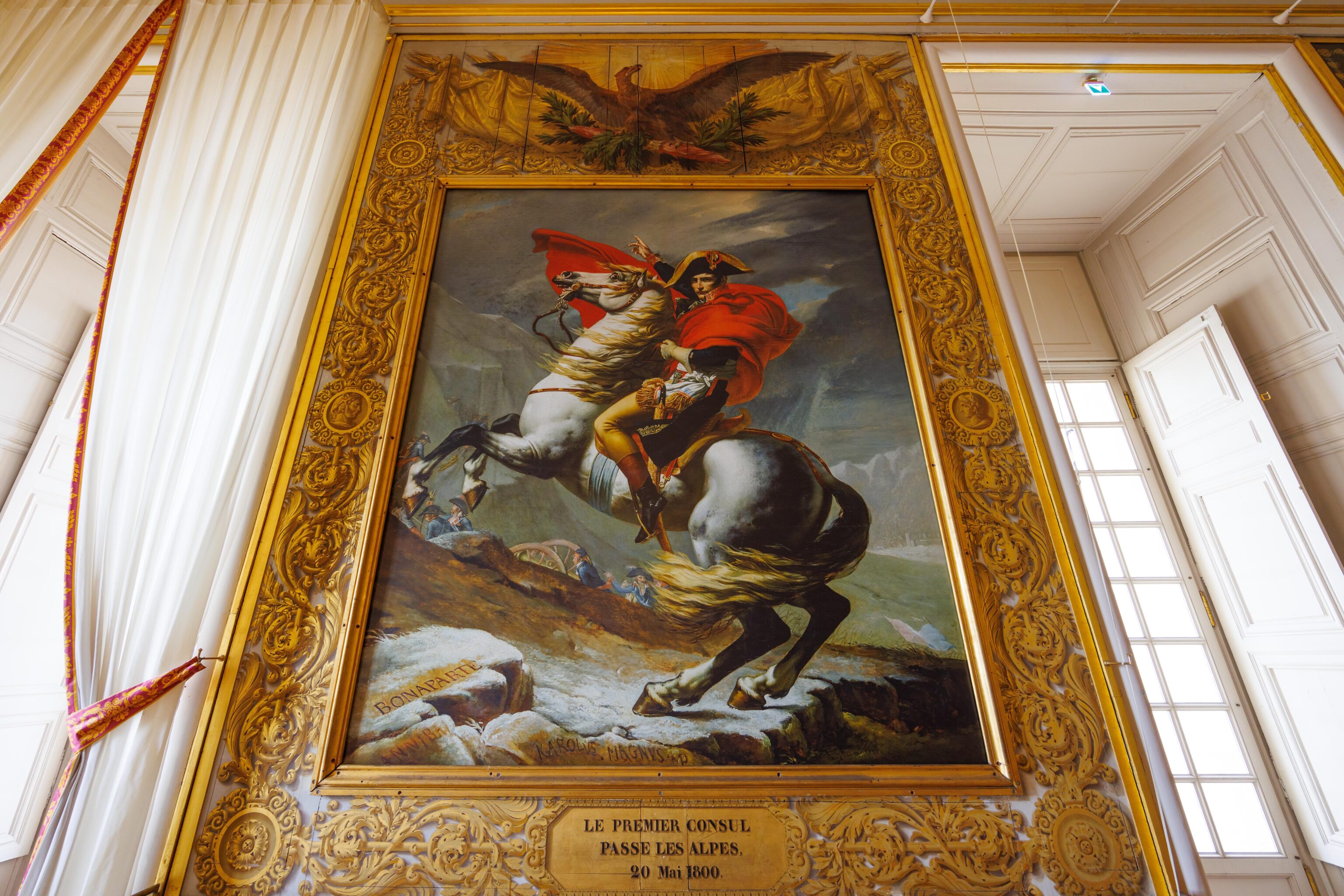
This is a famous painting of Napoleon crossing the Great Saint Bernard Pass, which lies between current-day Switzerland and Italy. There are five versions of this painting. This is the third version from 1802. The original was in the estate of Joseph Bonaparte, older brother of Napoleon and King of Spain, in Bordentown, NJ while he was in exile. The New Jersey connection is surprising. It is currently nearby at the Château de Malmaison.
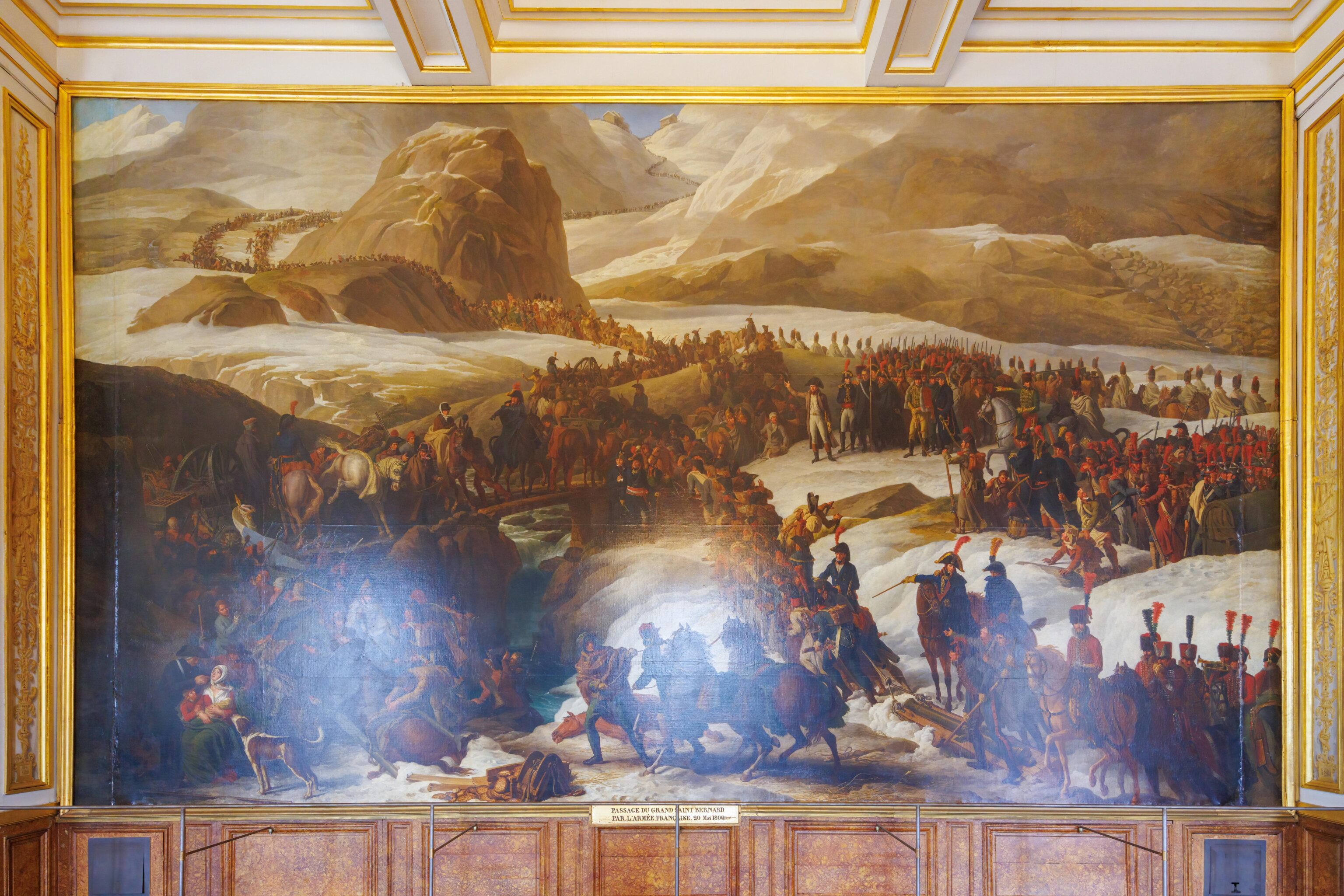
Charles Thévenin – Passage du Grand Saint-Bernard par l’armée française, 20 mai 1800 [Passage of the Great Saint-Bernard by the French Army, May 20, 1800]
This next piece shows the French army going over the pass. Probably a more realistic rendition than the previous featuring Napoleon!
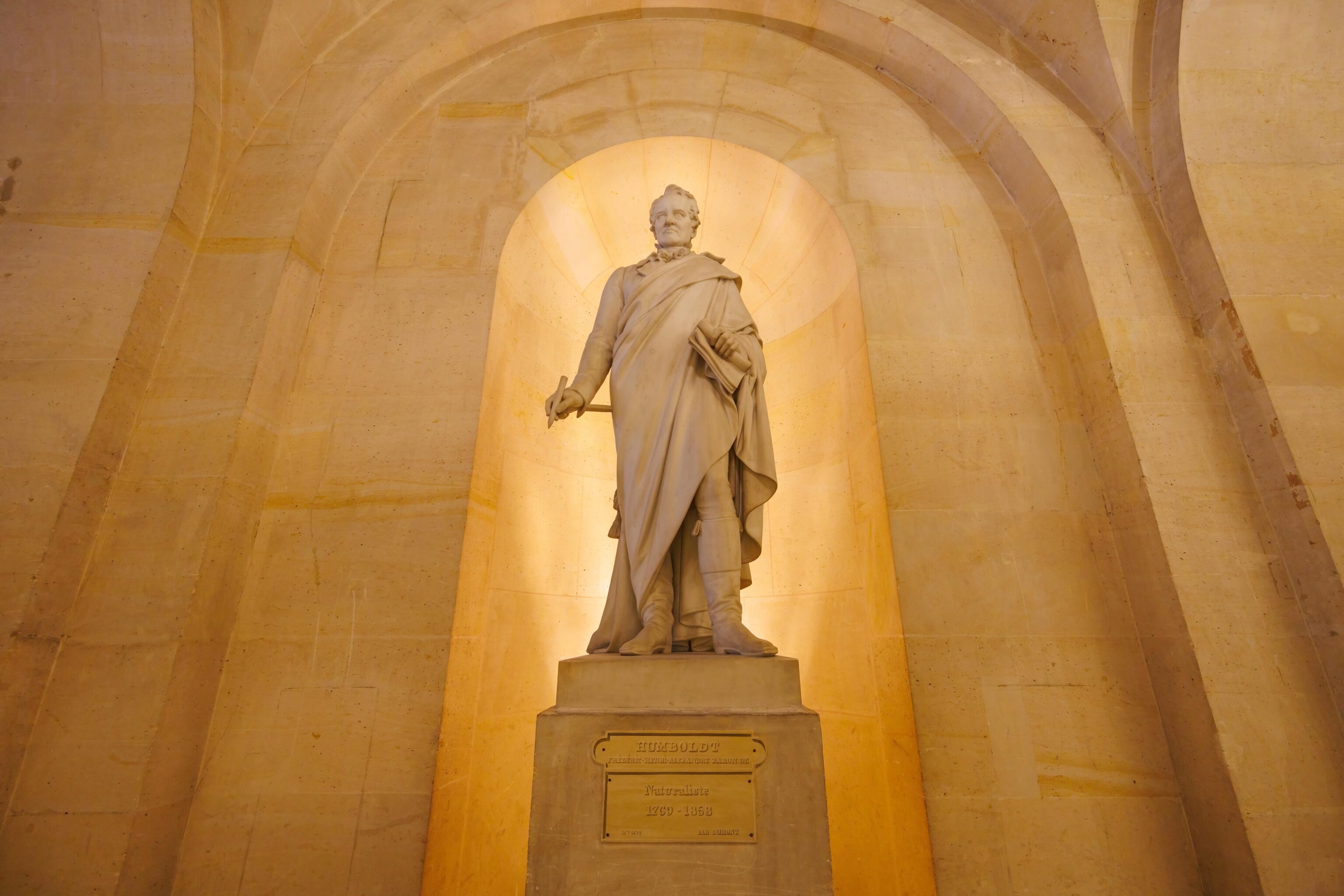
This sculpture depicts Friedrich Wilhelm Heinrich Alexander von Humboldt. We noticed him only because we saw Humboldt University in Berlin which was founded by his brother, Wilhelm. What is a German doing here? There is a French connection according to Wikipedia:6
In the Napoleonic wars, Prussia had capitulated to France, signing the Treaty of Tilsit. The Prussian royal family returned to Berlin, but sought better terms of the treaty and Friedrich Wilhelm III commissioned his younger brother Prince Wilhelm with this. Friedrich Wilhelm III asked Alexander to be part of the mission, charged with introducing the prince to Paris society. This turn of events for Humboldt could not have been better, since he desired to live in Paris rather than Berlin. In 1814 Humboldt accompanied the allied sovereigns to London. Three years later he was summoned by the king of Prussia to attend him at the congress of Aachen. Again in the autumn of 1822 he accompanied the same monarch to the Congress of Verona, proceeded thence with the royal party to Rome and Naples and returned to Paris in the spring of 1823. Humboldt had long regarded Paris as his true home. Thus, when at last he received from his sovereign a summons to join his court at Berlin, he obeyed reluctantly. Between 1830 and 1848 Humboldt was frequently employed in diplomatic missions to the court of King Louis Philippe of France, with whom he always maintained the most cordial personal relations. Charles X of France had been overthrown, with Louis-Philippe of the house of Orléans becoming king. Humboldt knew the family, and he was sent by the Prussian monarch to Paris to report on events to his monarch. He spent three years in France, from 1830 to 1833. His friends François Arago and François Guizot, were appointed to posts in Louis-Philippe's government.
The Musical Gardens
After exiting via the gift shop, a different one from the one we passed by at the beginning of our visit, we found ourselves by the garden entrance. We likely missed a portion of the palace due to exiting via this route. The garden is considered a separate area from the palace, though our ticket did include access.
The gardens host both Musical Fountains and Musical Gardens days. We happened to be there on a Musical Gardens day. There are also days where there are Night Fountains.
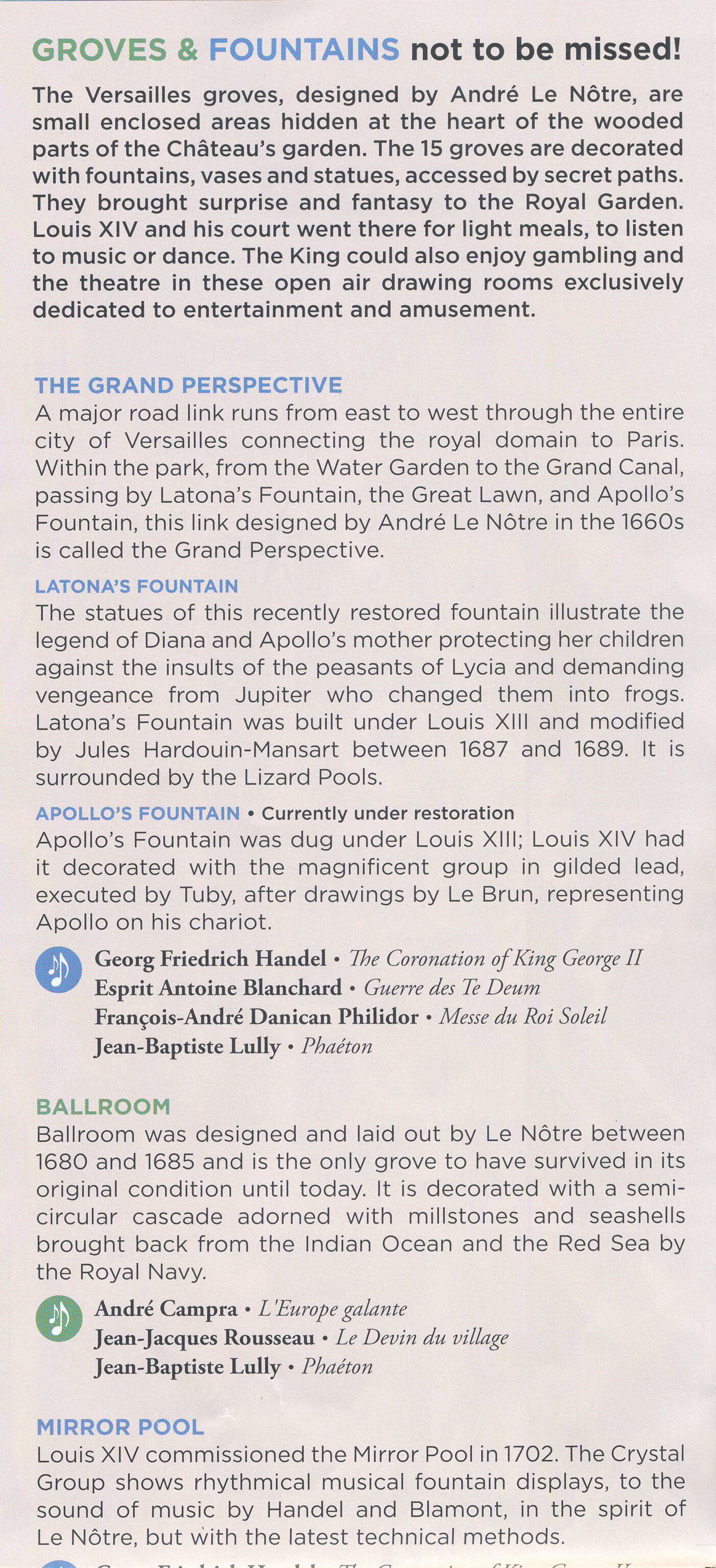
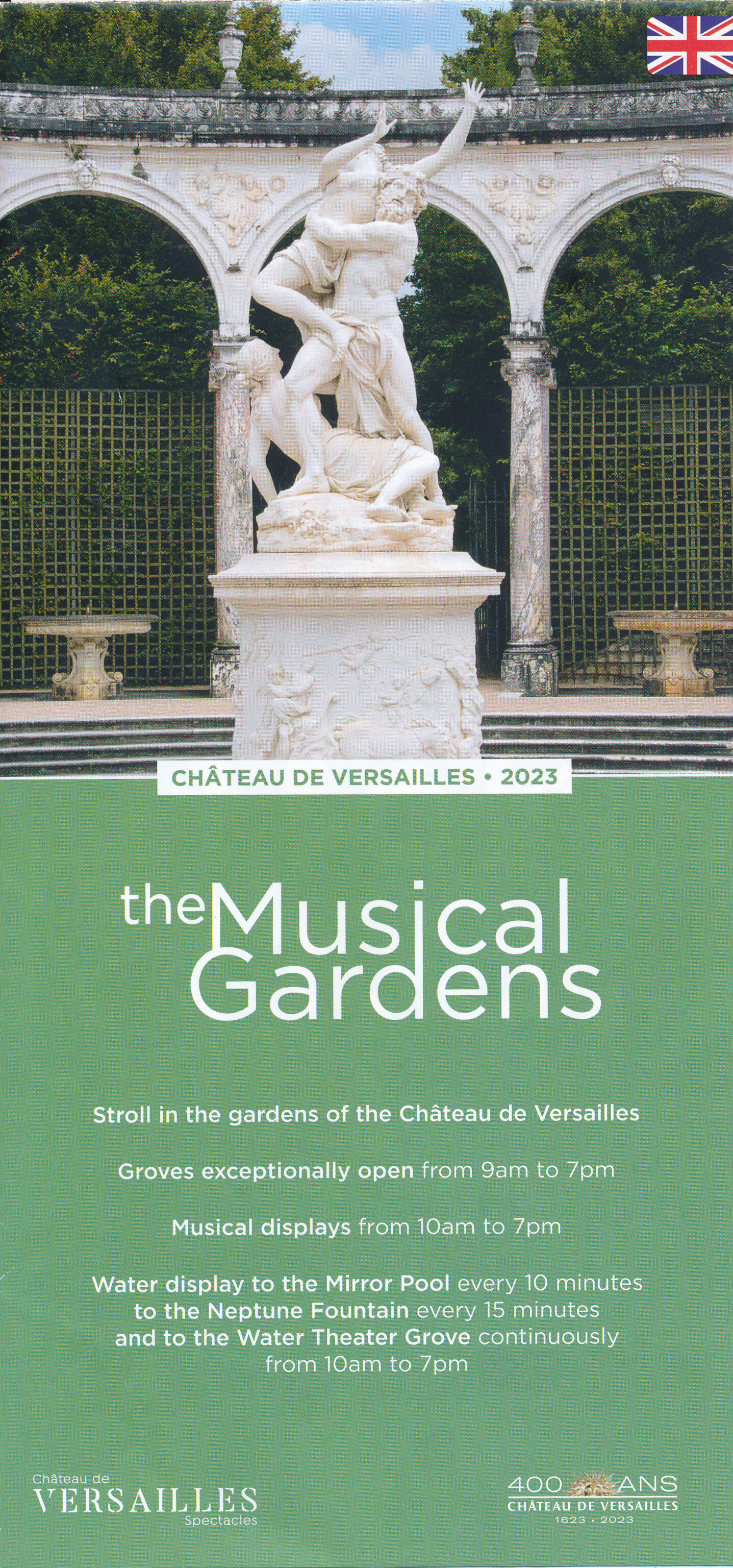
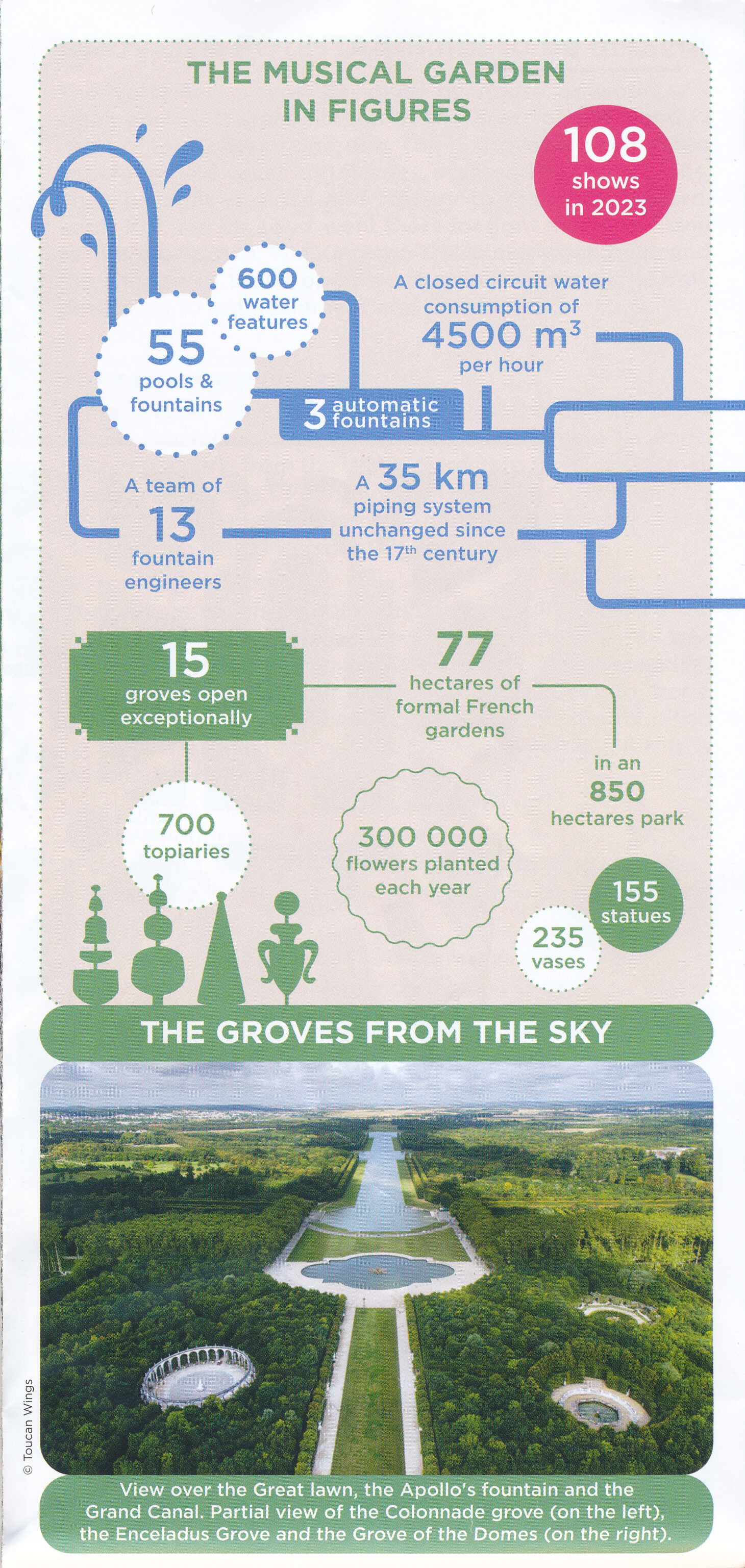
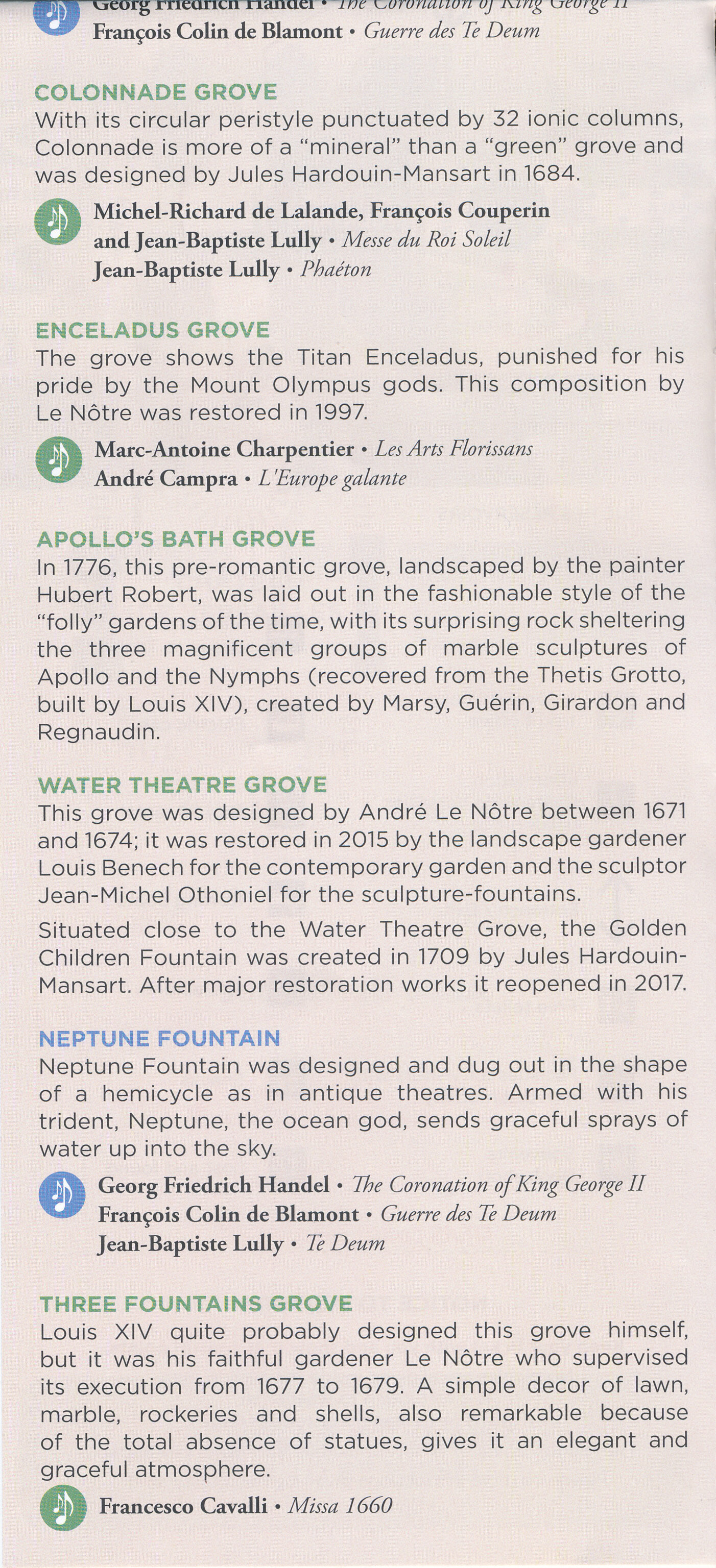
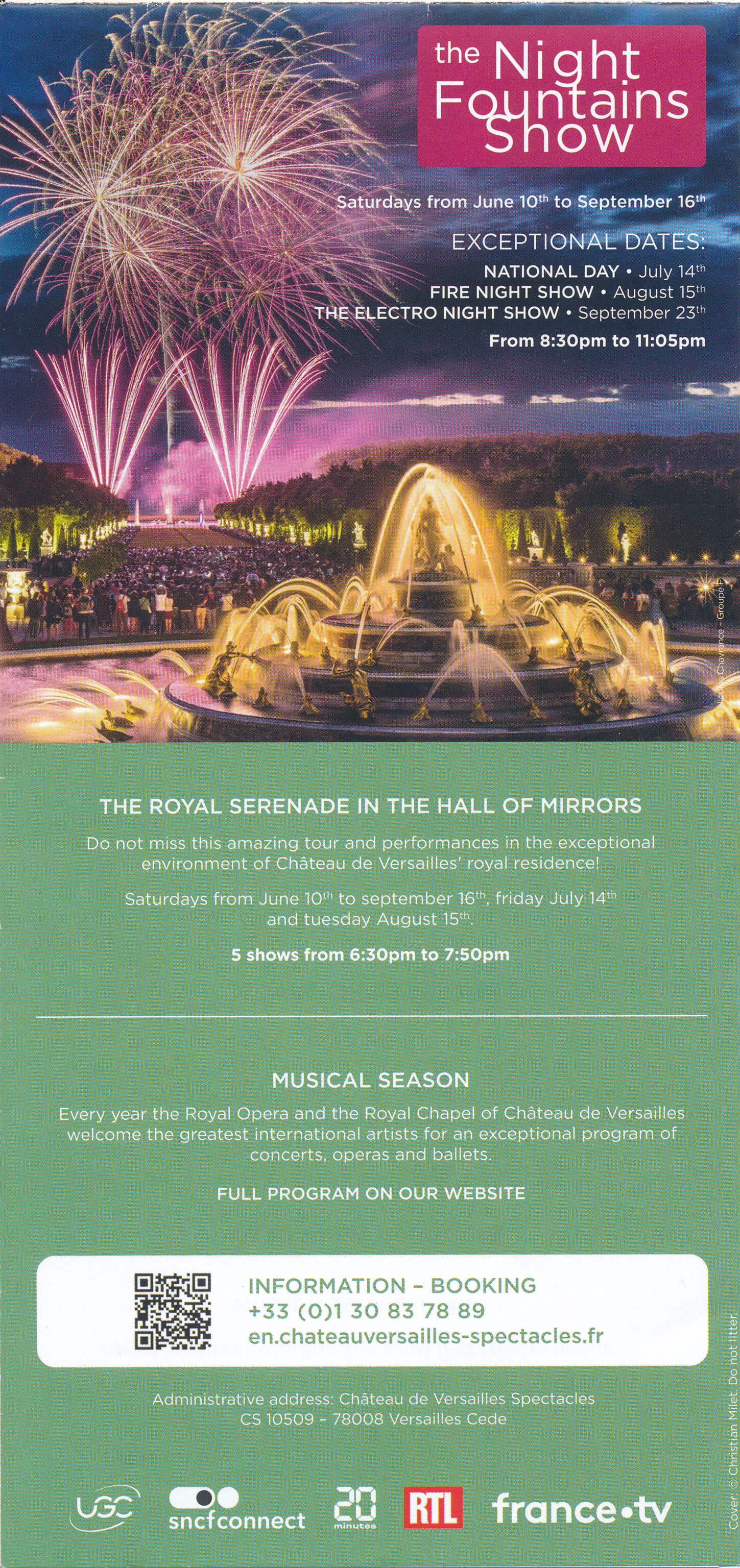
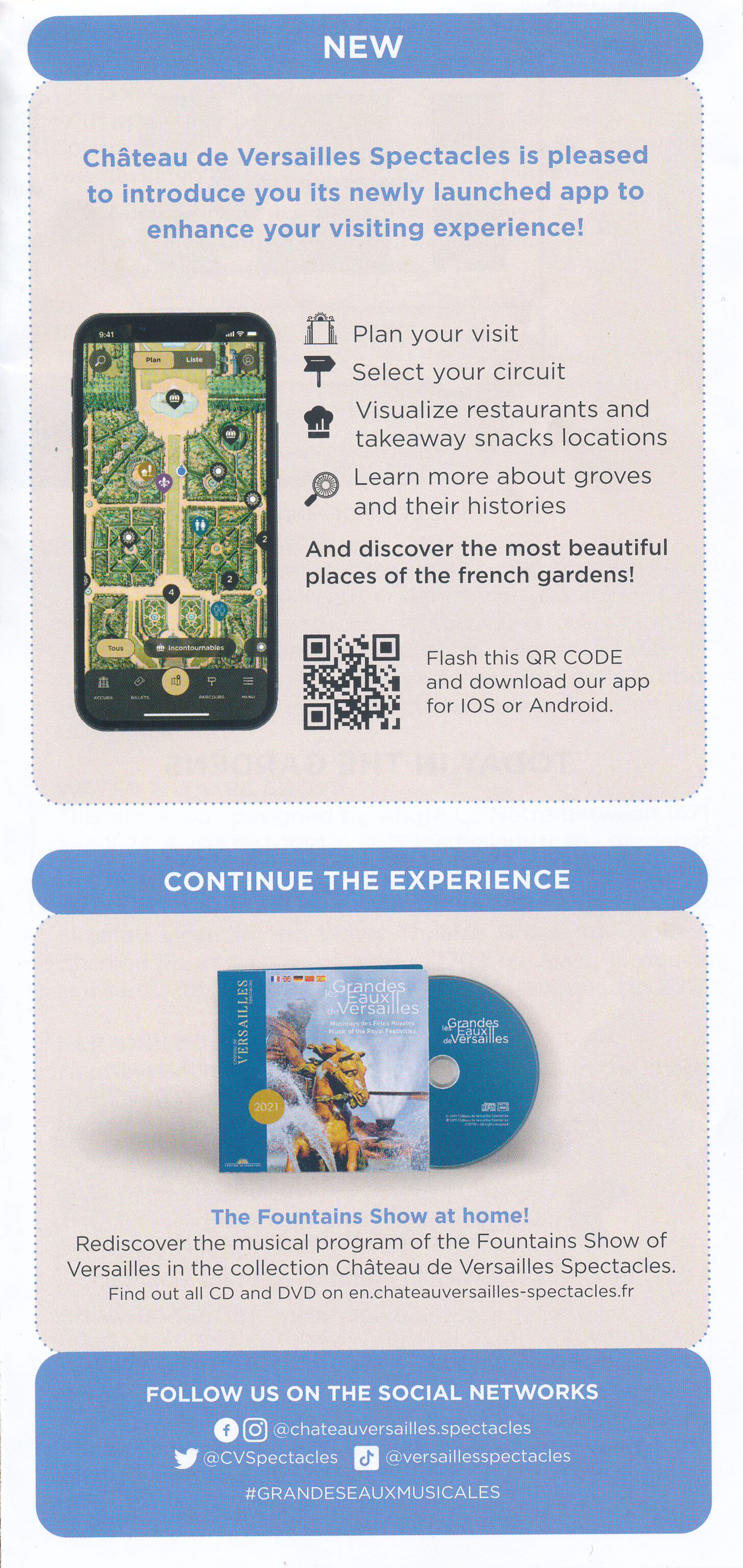
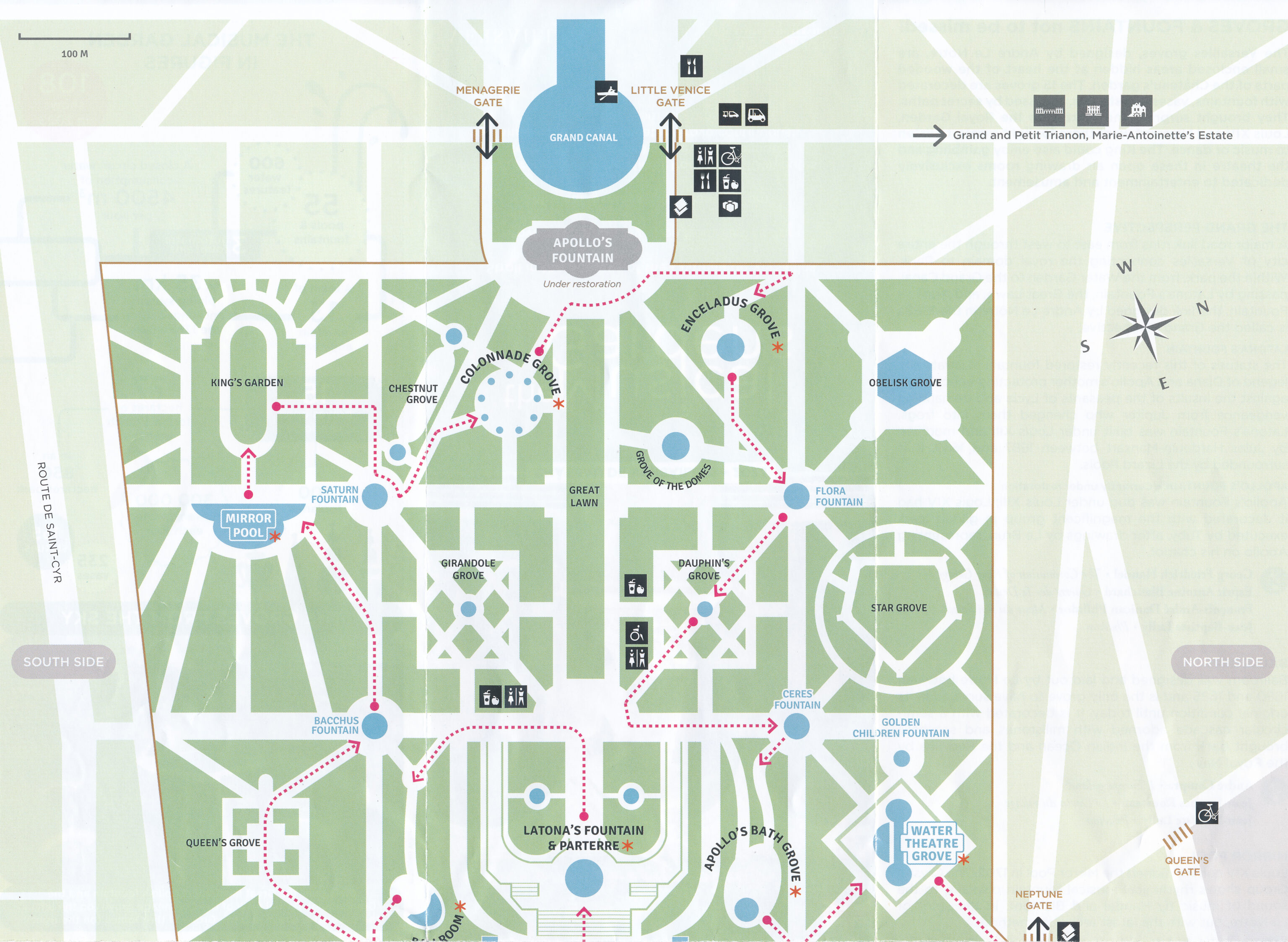
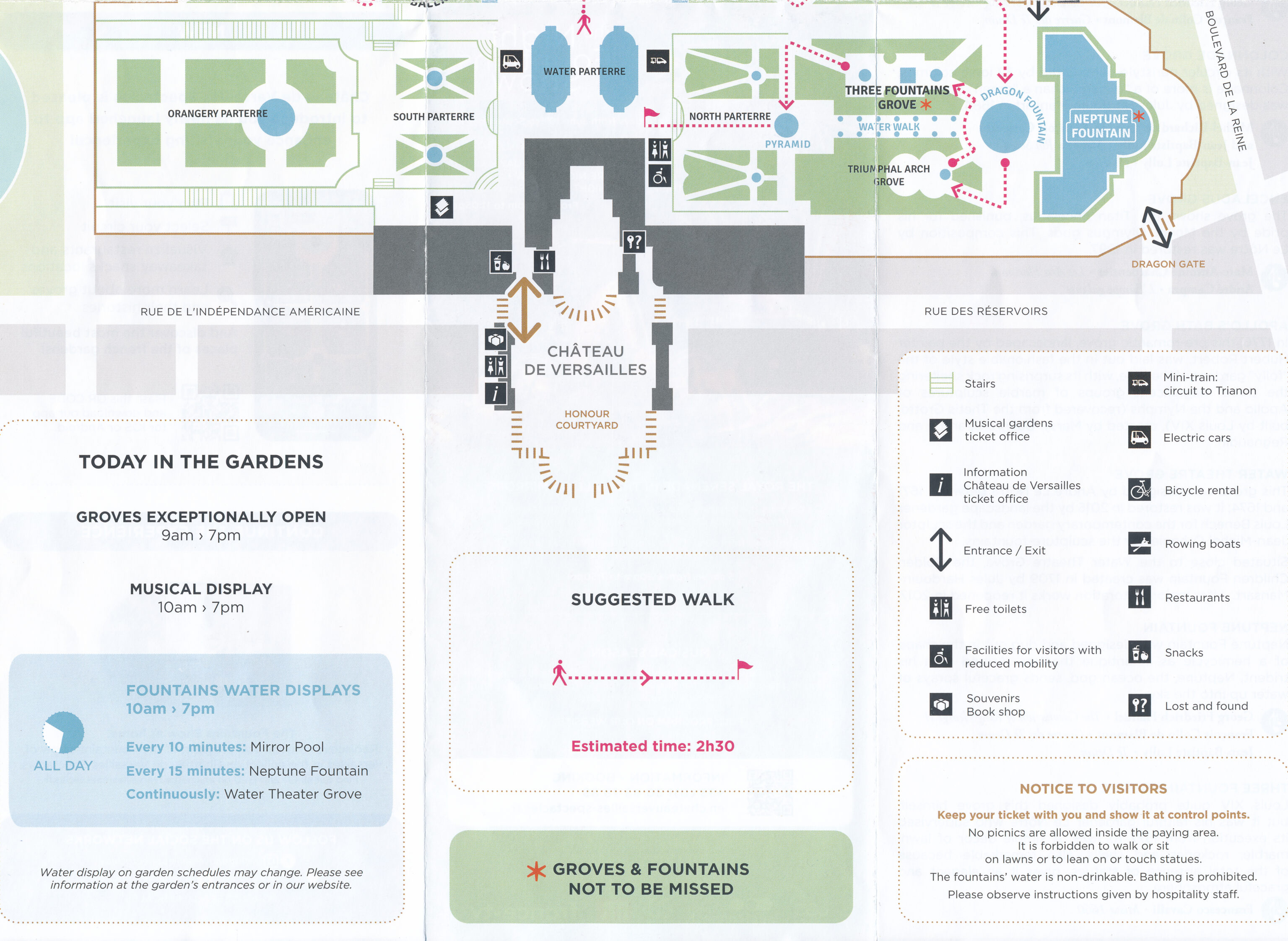
The gardens are vast. The estimated time for the suggested walk is 2 hours and 30 minutes. We tried to, more or less, walk the suggested route.
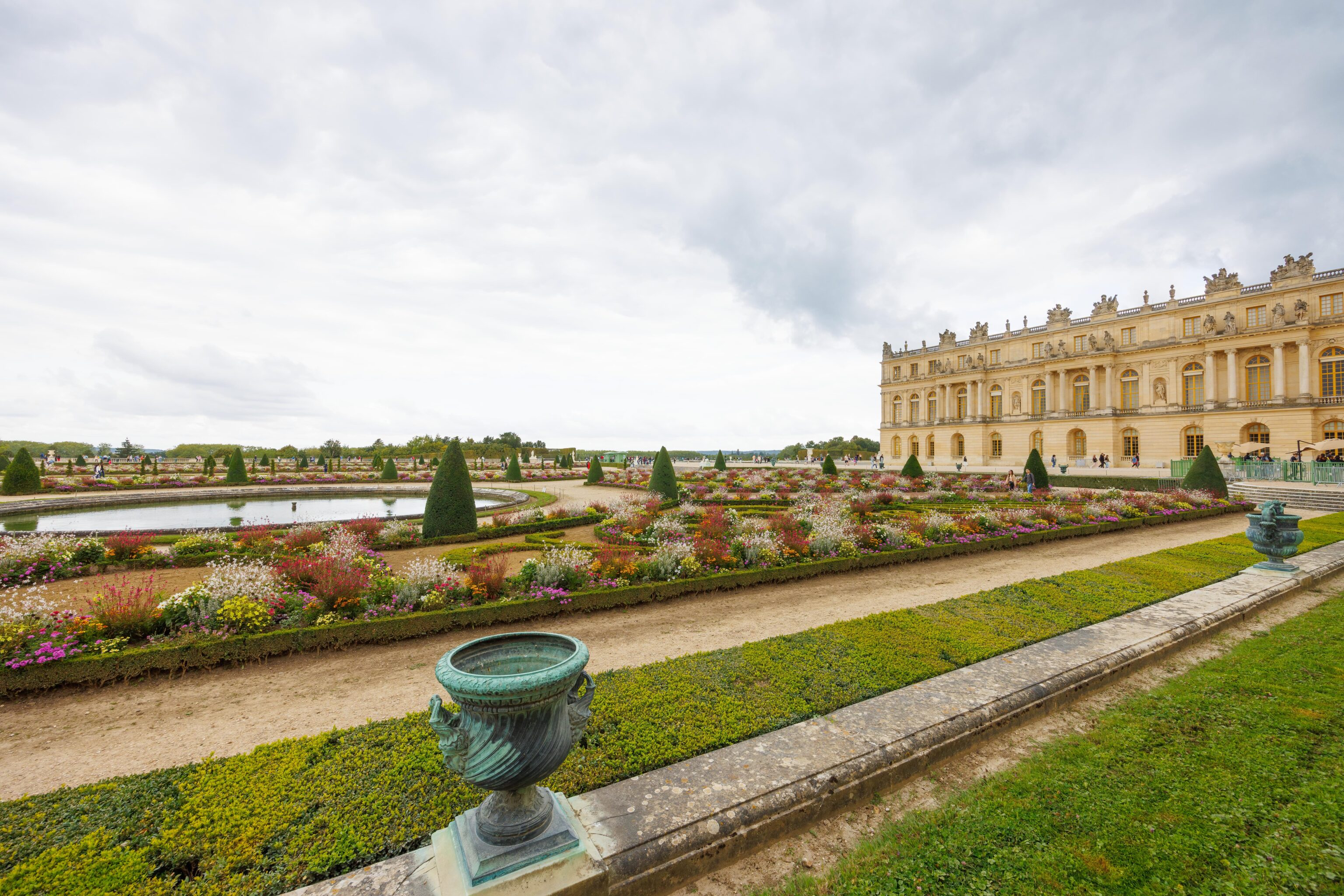
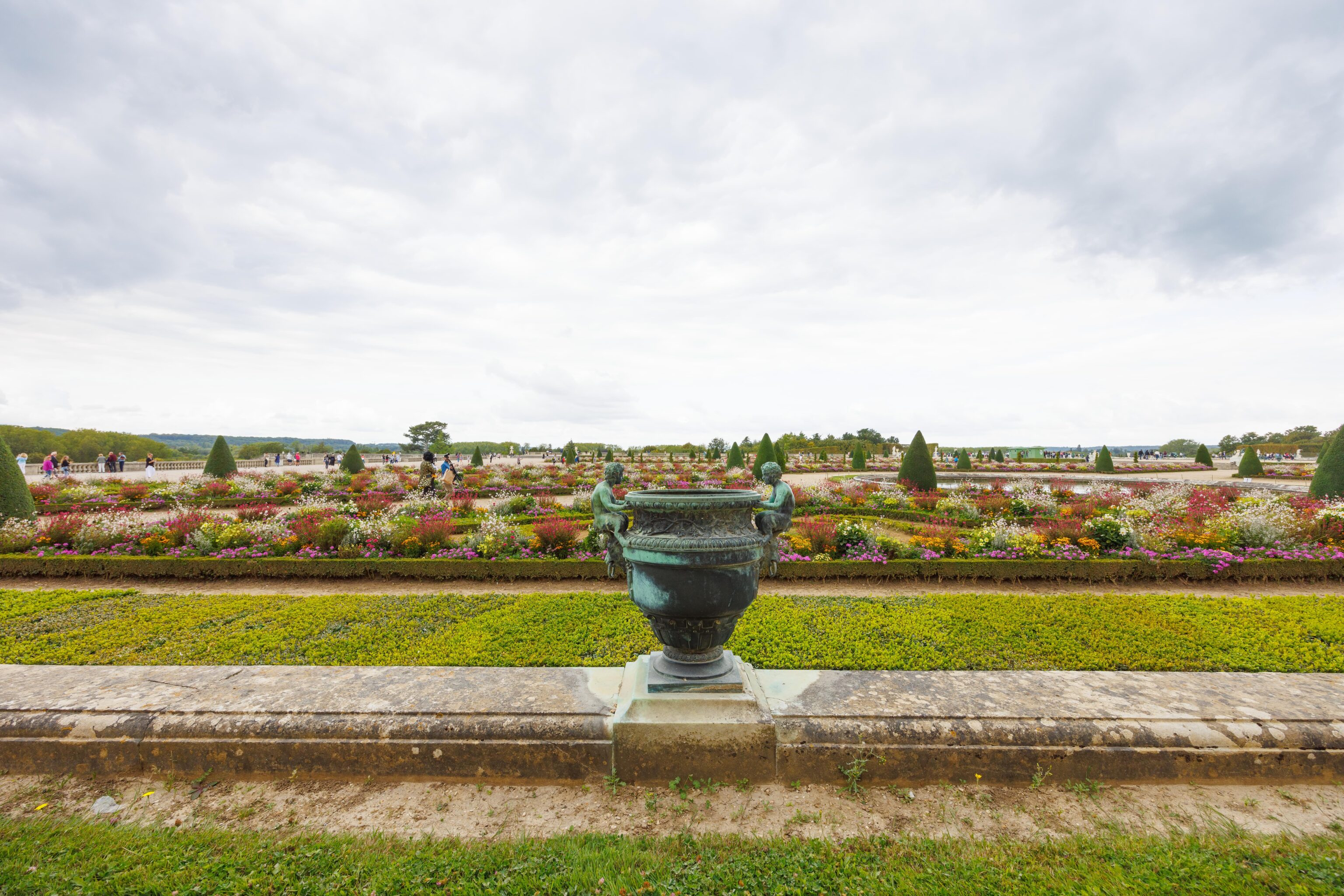
We started out on the south side, labelled on the map as the South Parterre.
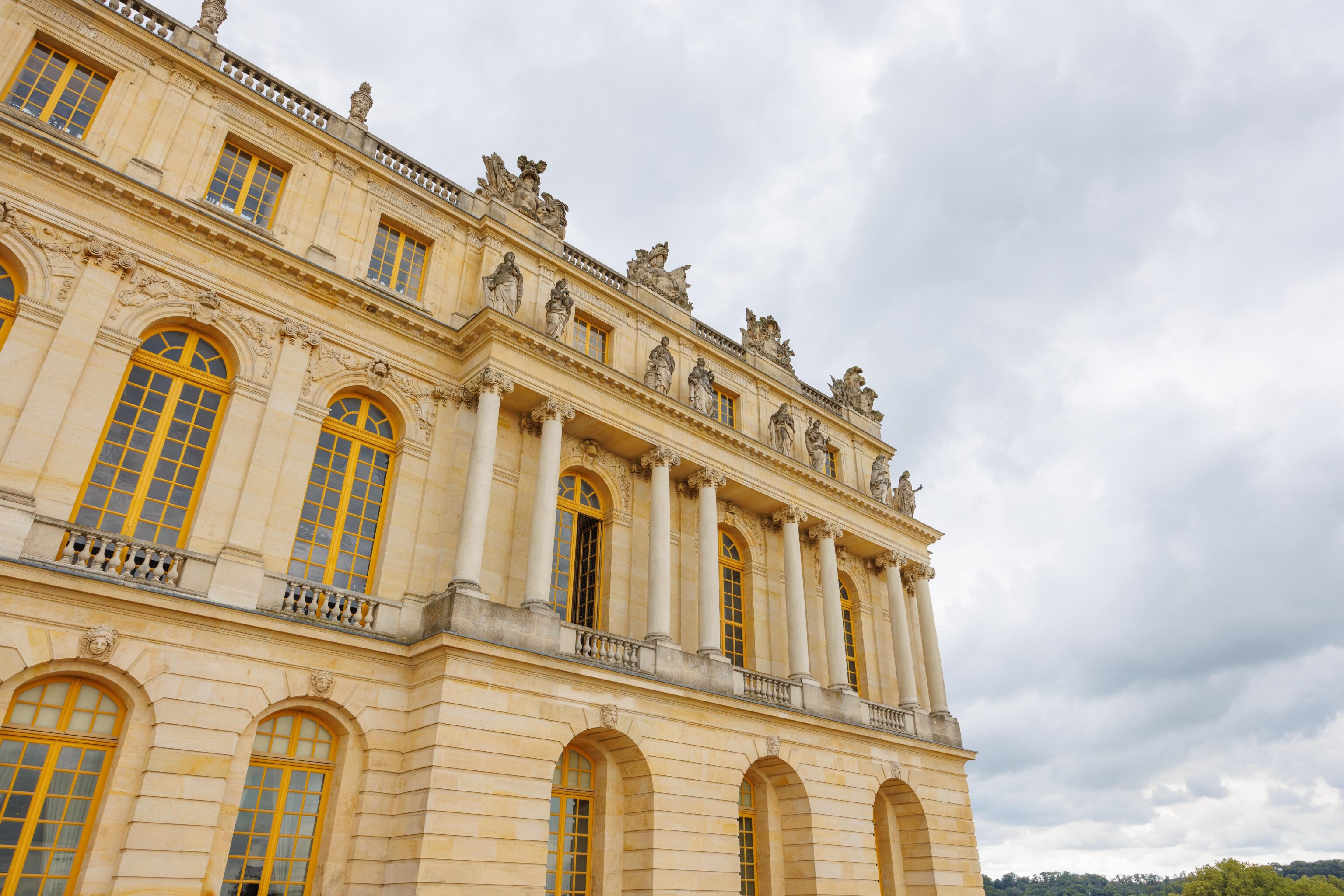
There are many sculptures at and near the top of the exterior of the palace building.
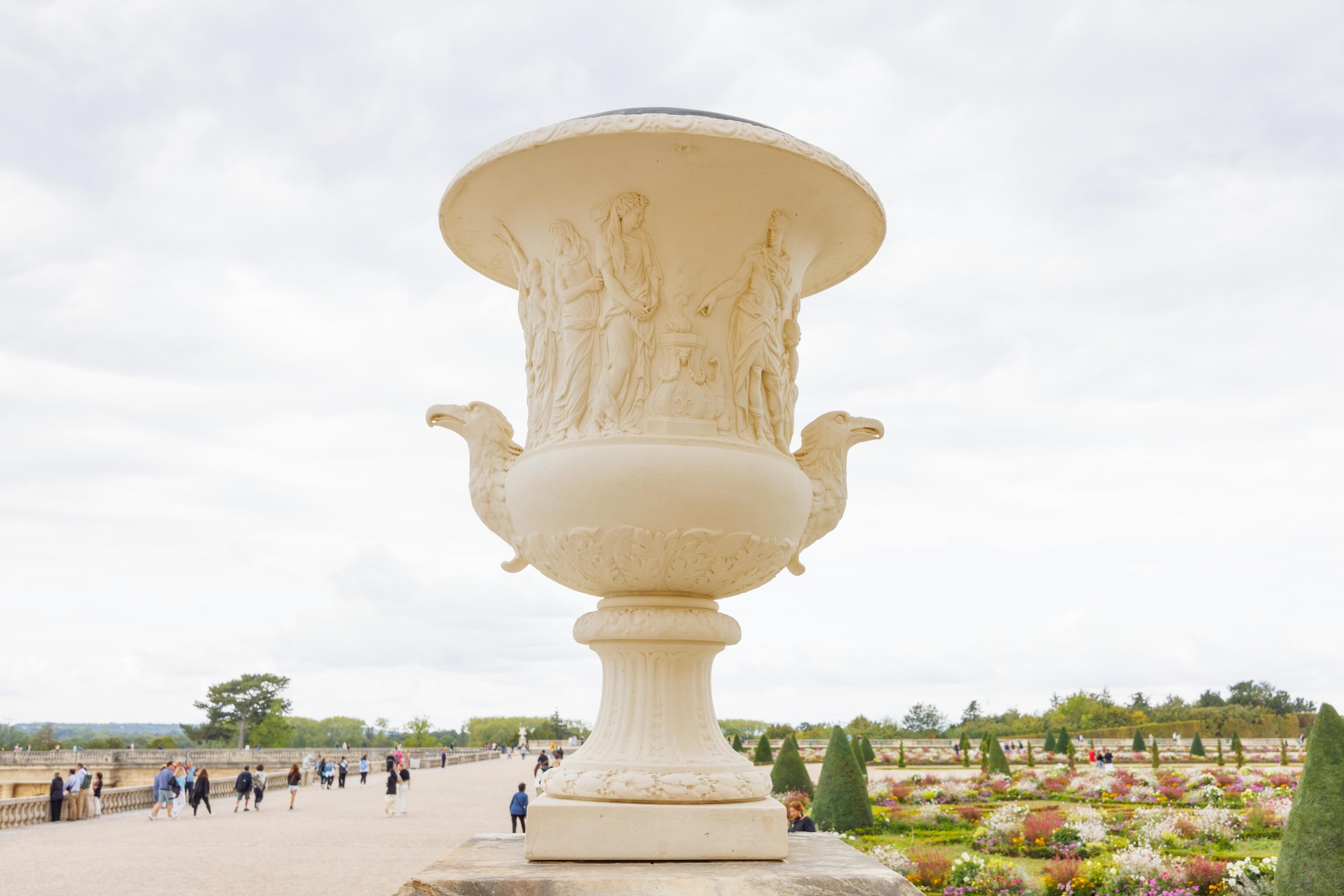
A big and detailed planter, or something like that.
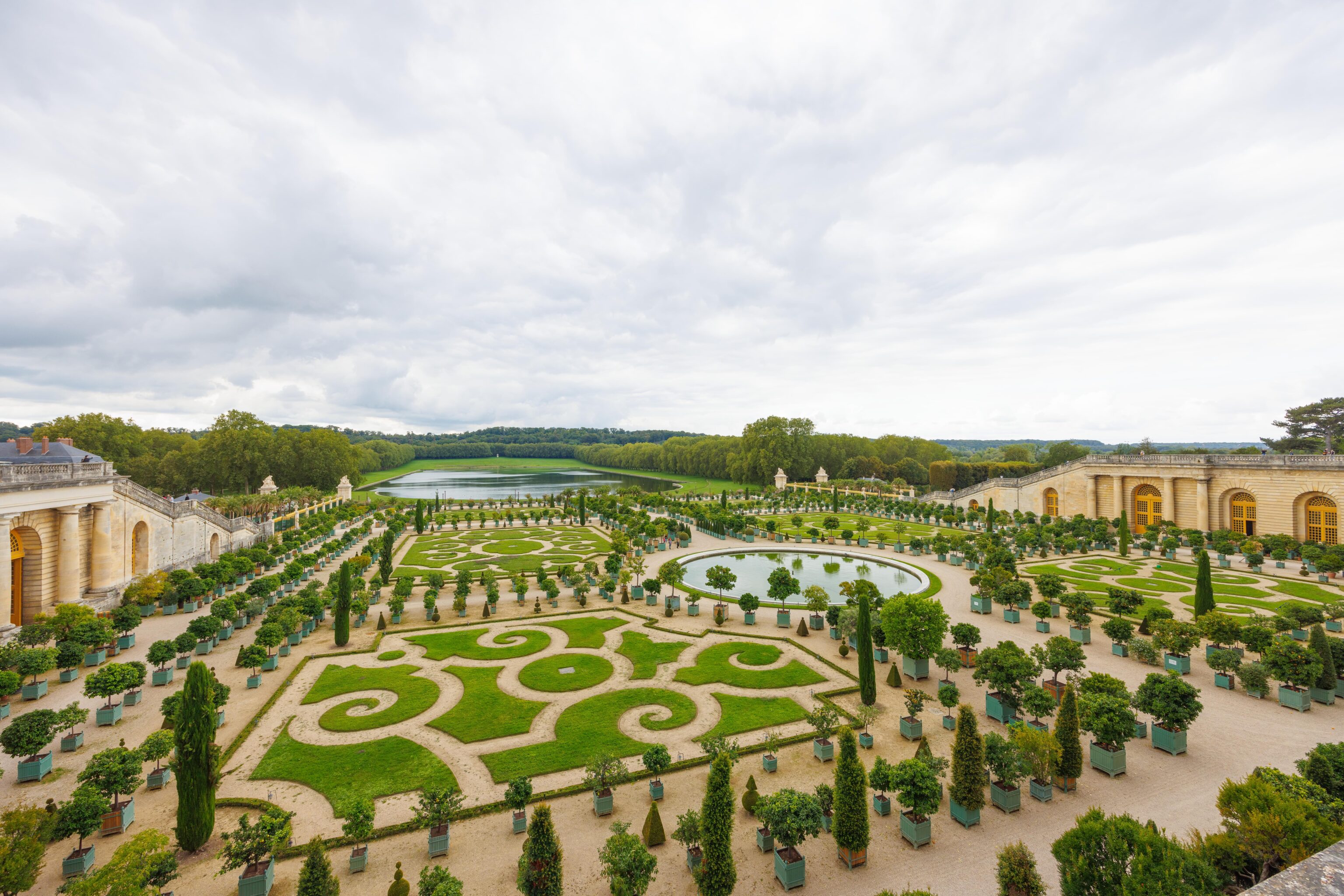
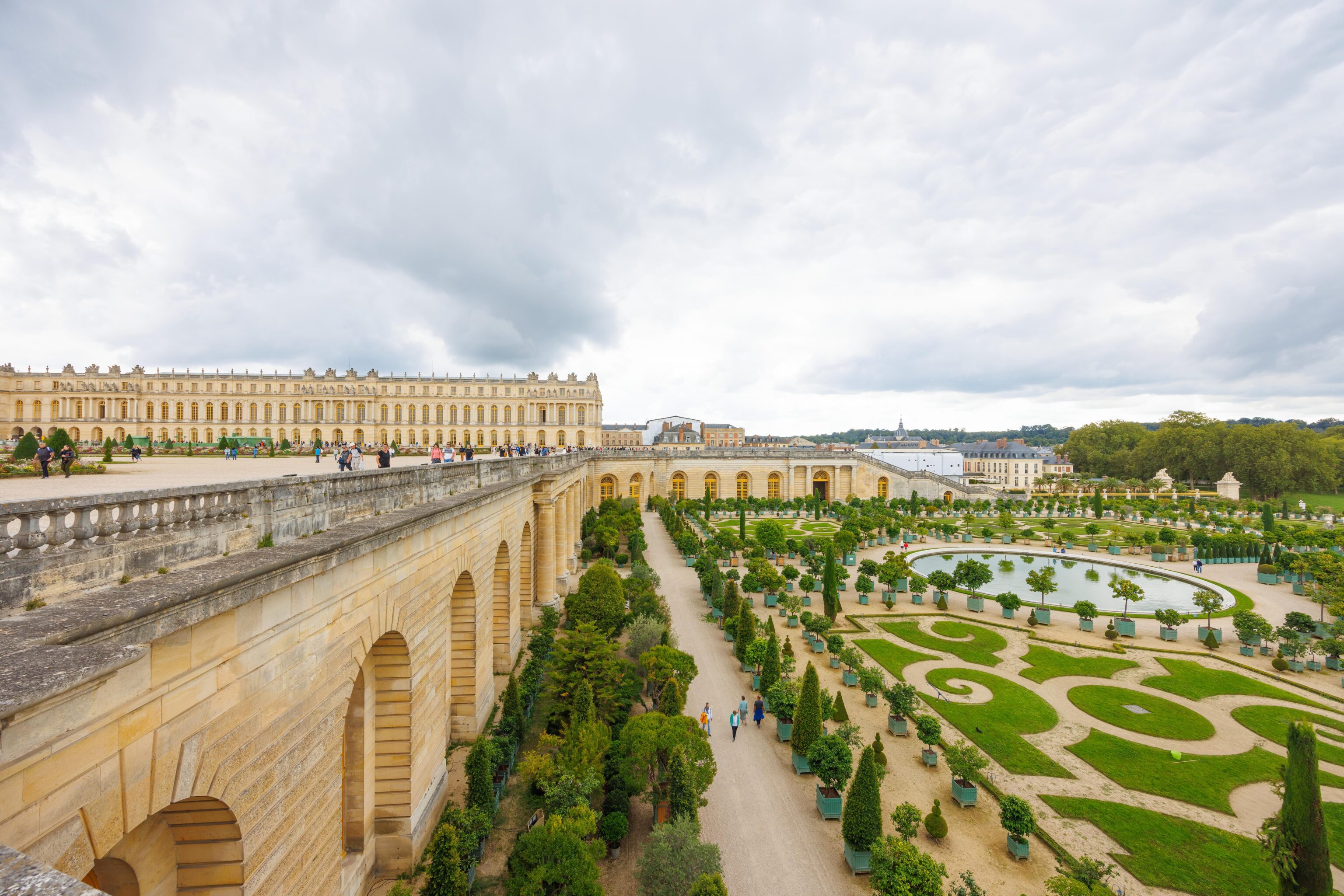
The South Parterre overlooks the Orangery. We didn’t go down there to take a look as the gardens are too big to be able to go everywhere in one day!
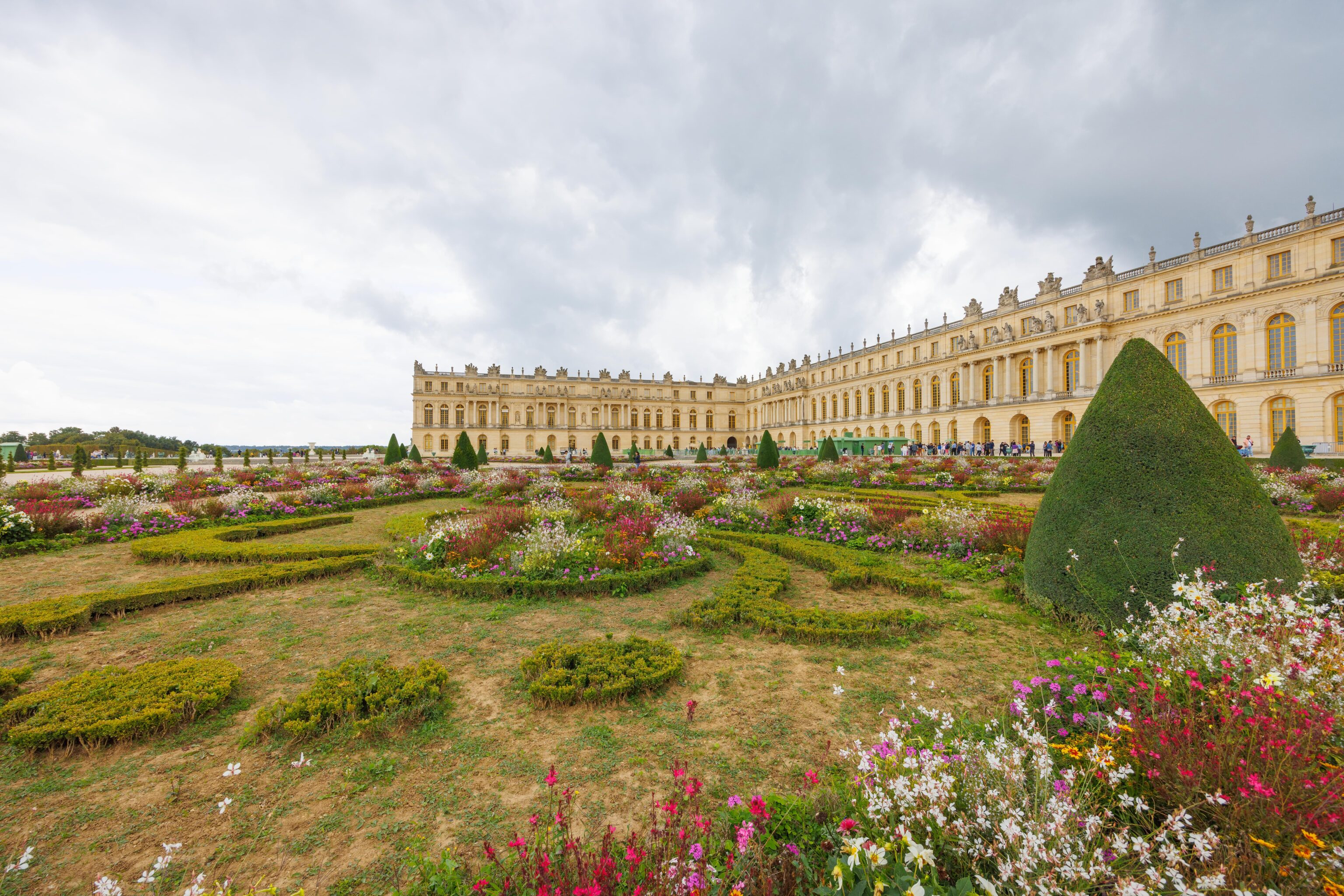
It is hard to emphasize the scale of the palace building. This is just the south wing of the building.
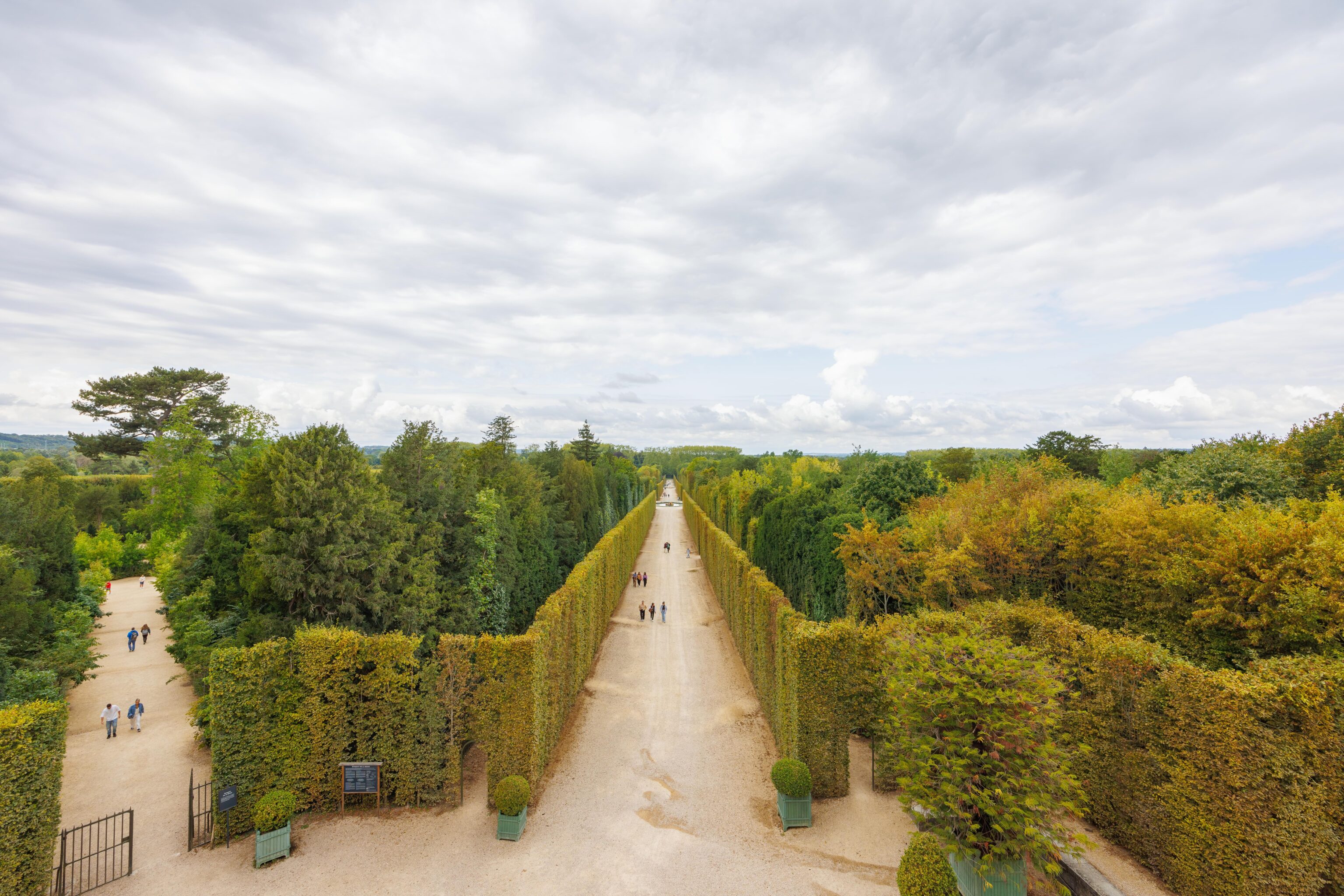
The view to the west. The Bacchus Fountain is at the first junction, seemingly almost at the horizon.
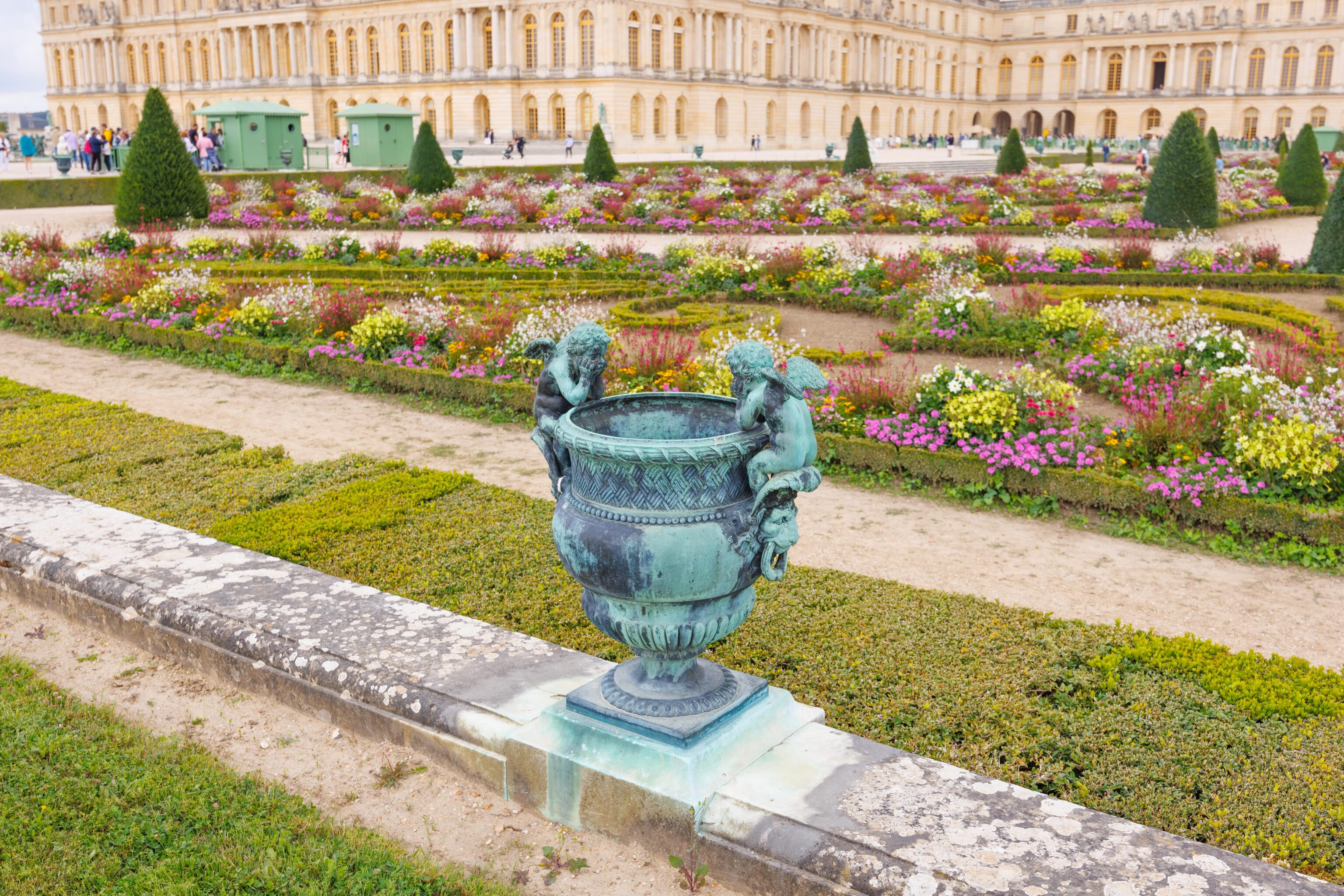
This copper planter has two little cherubs sitting on Lions’ heads.
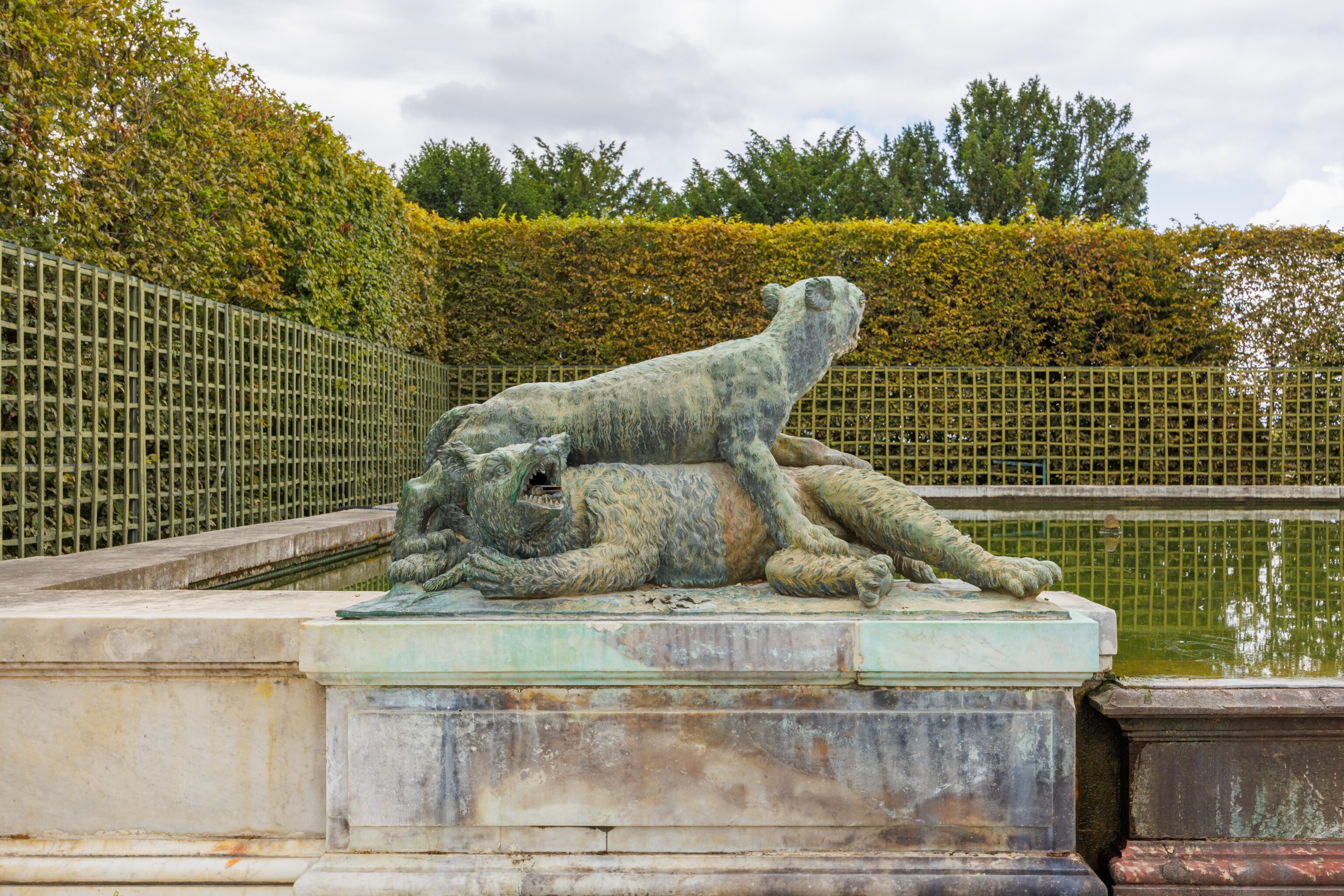
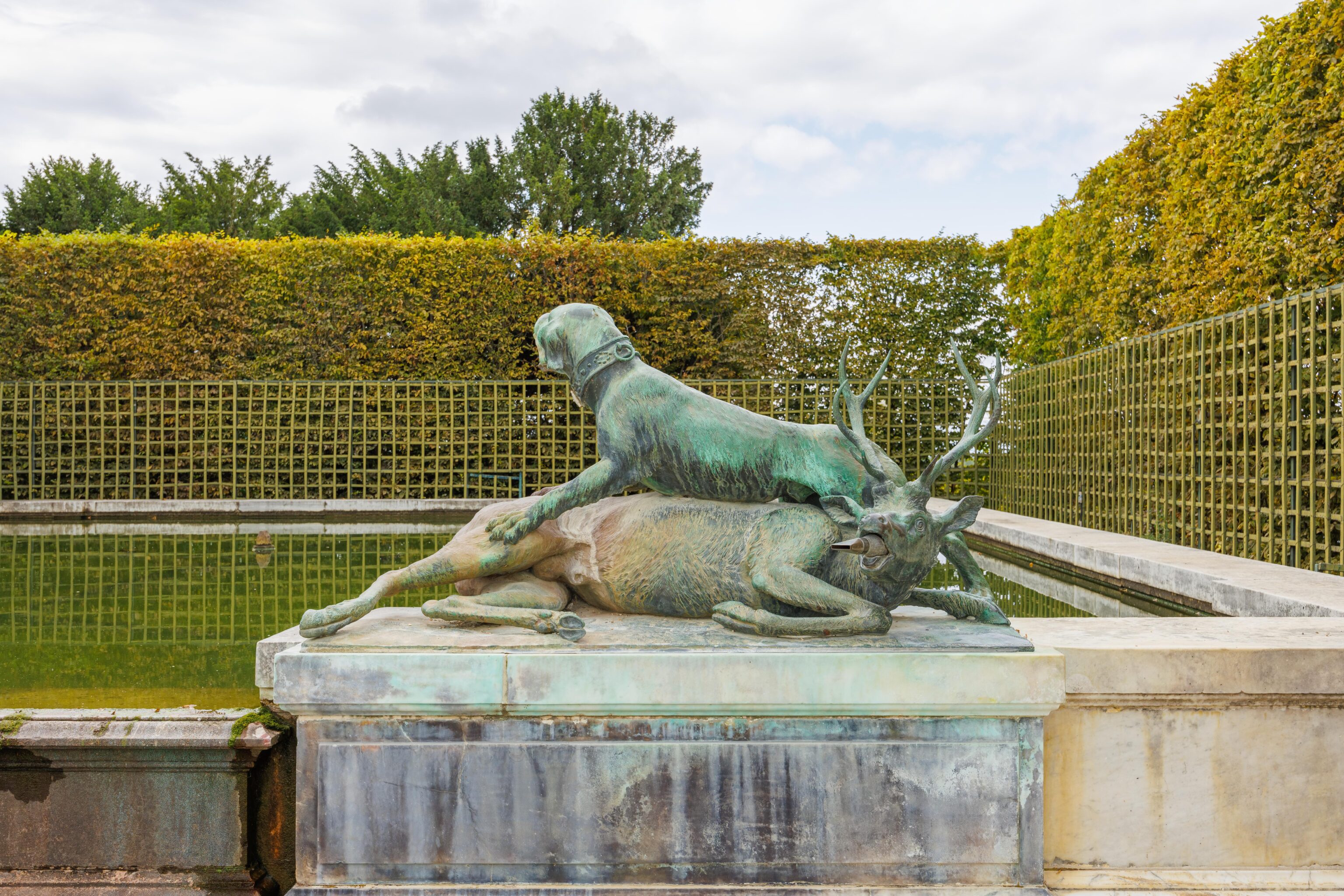
Not sure what these two sculptures are trying to depict!
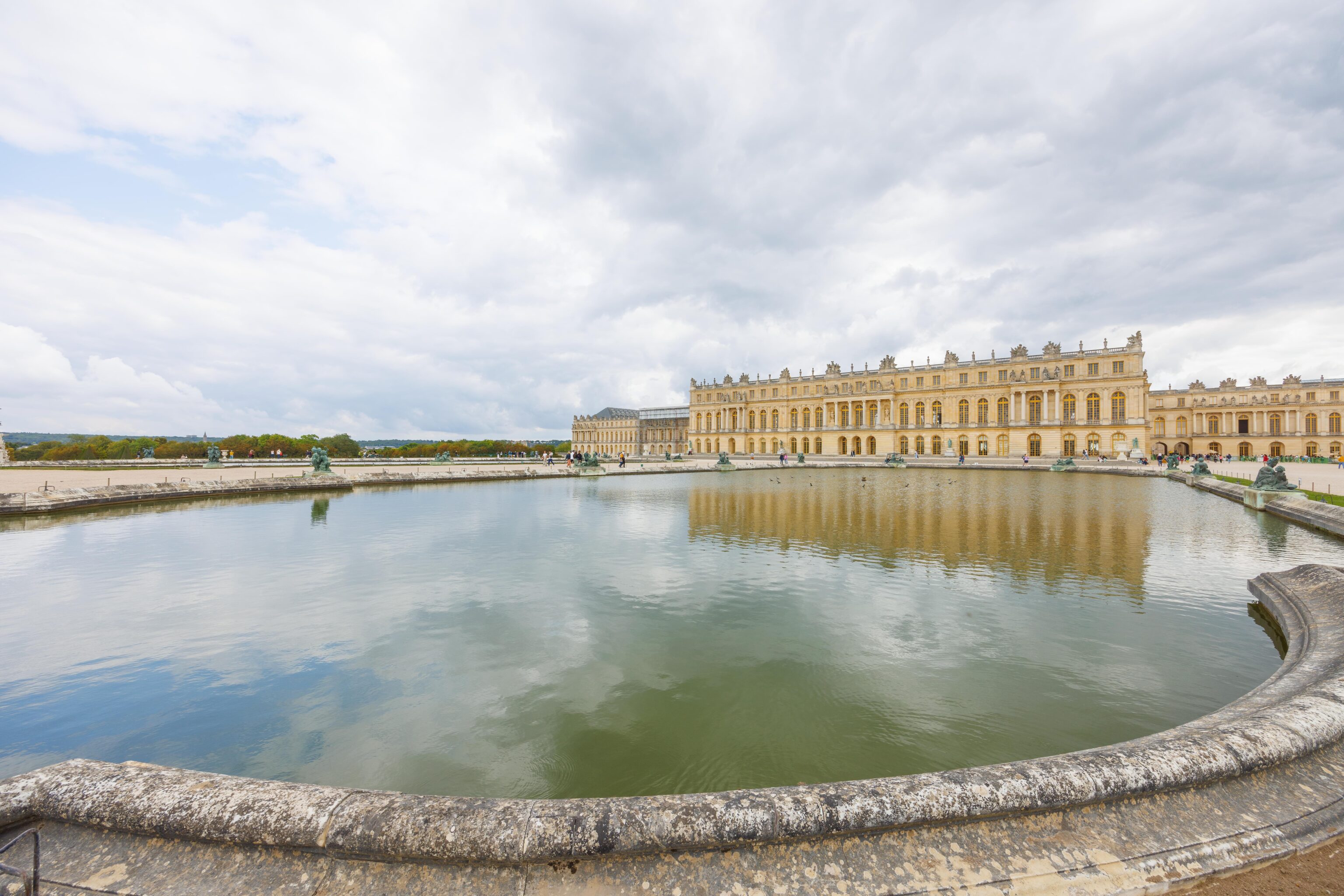
There are two large basins of water in front of the palace at the Water Parterre. This is the southern basin.
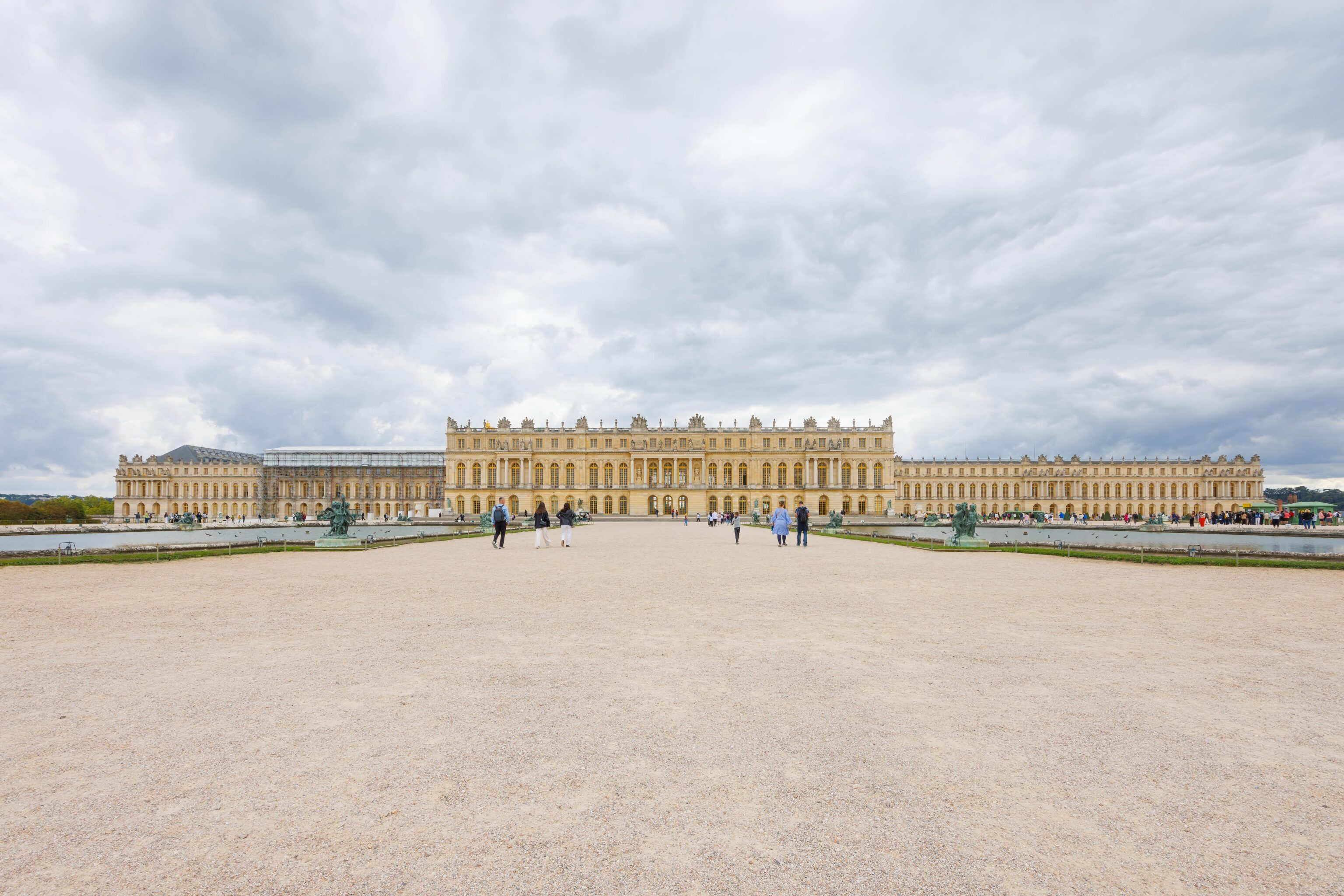
The palace from the middle of the Water Parterre.
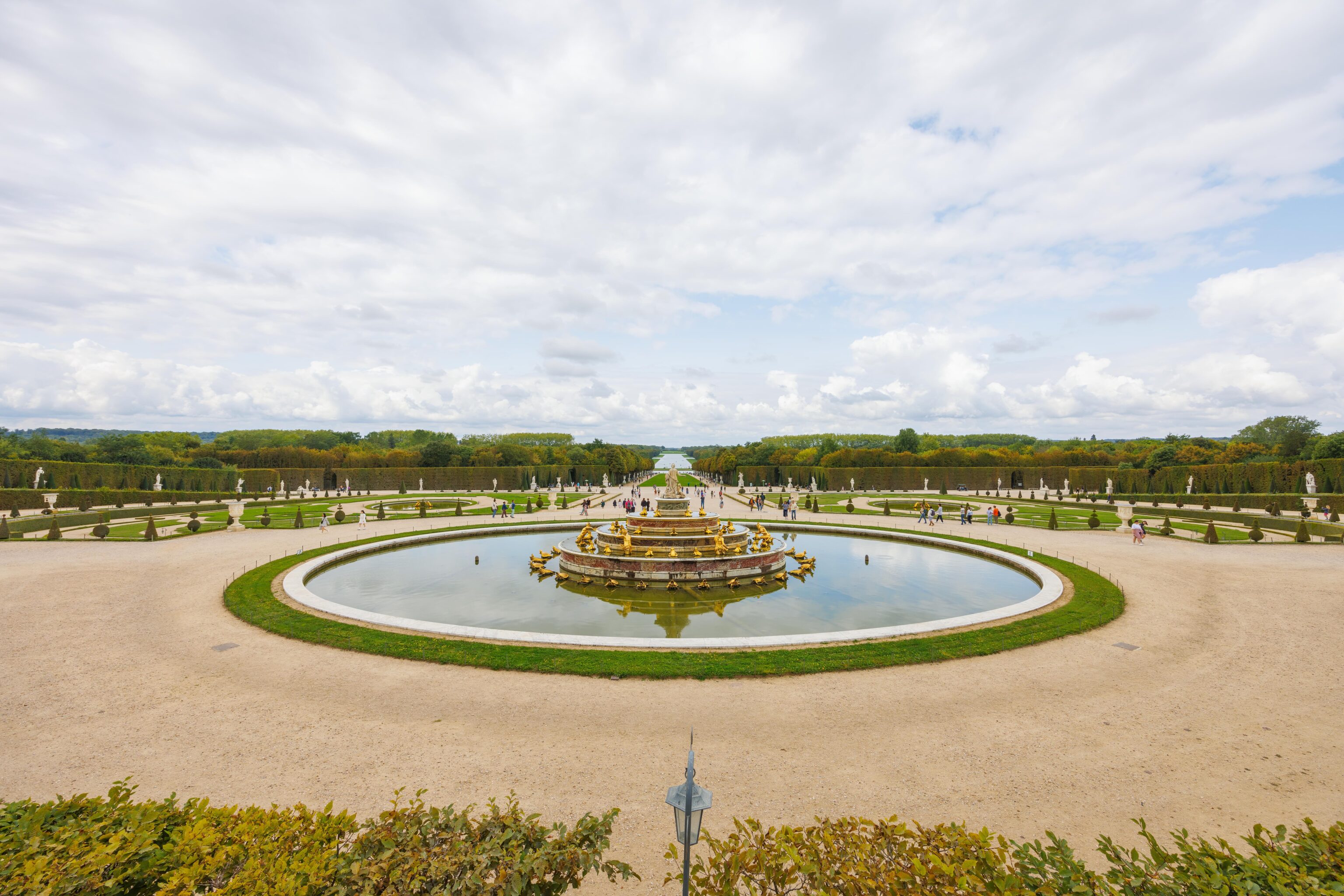
Latona’s Fountain was below us and to the west. The garden extends to the horizon. There are stairs to either side of us.
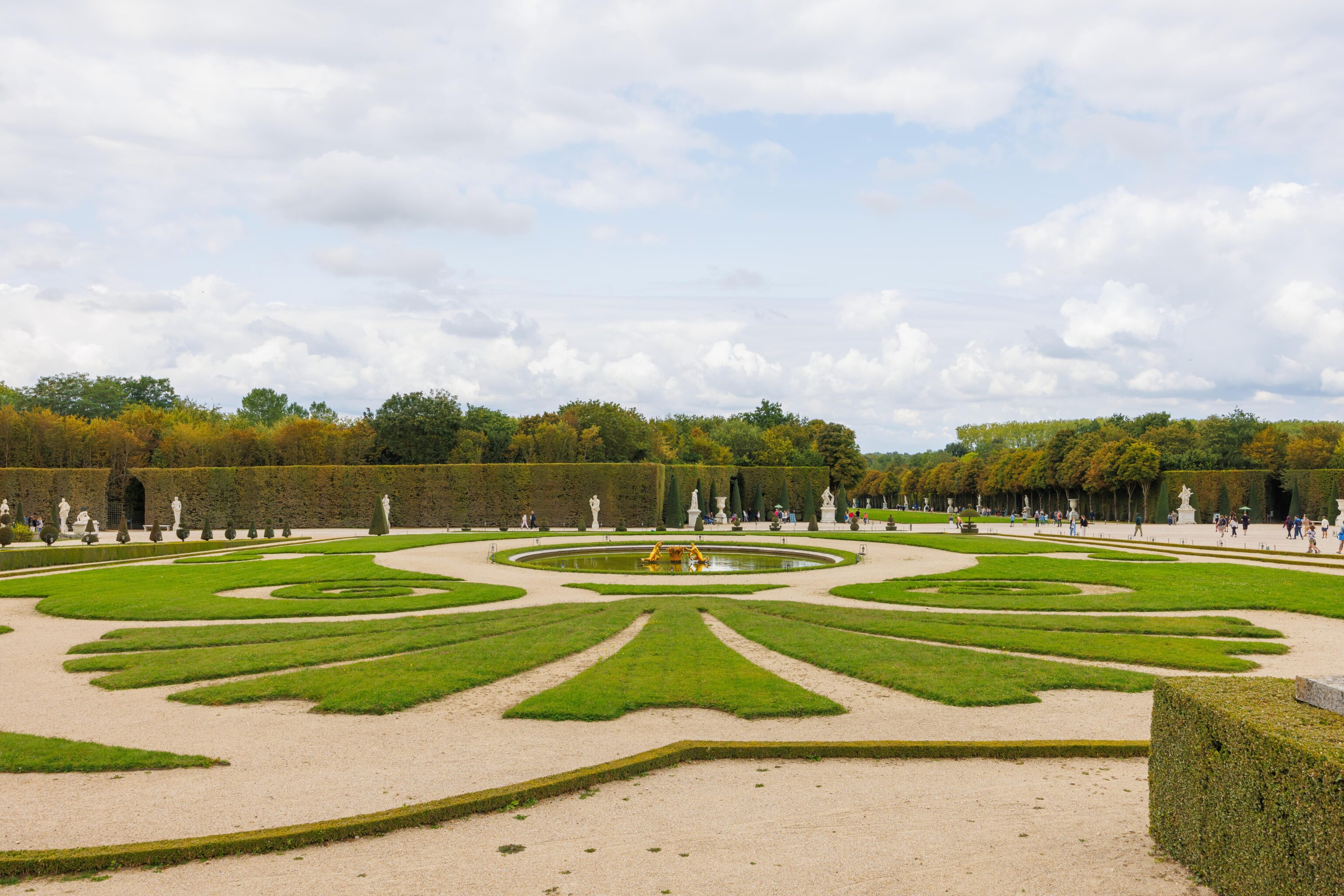
We took the stairs to the left. There are two smaller fountains near Latona’s Fountain. This is the one to the south.
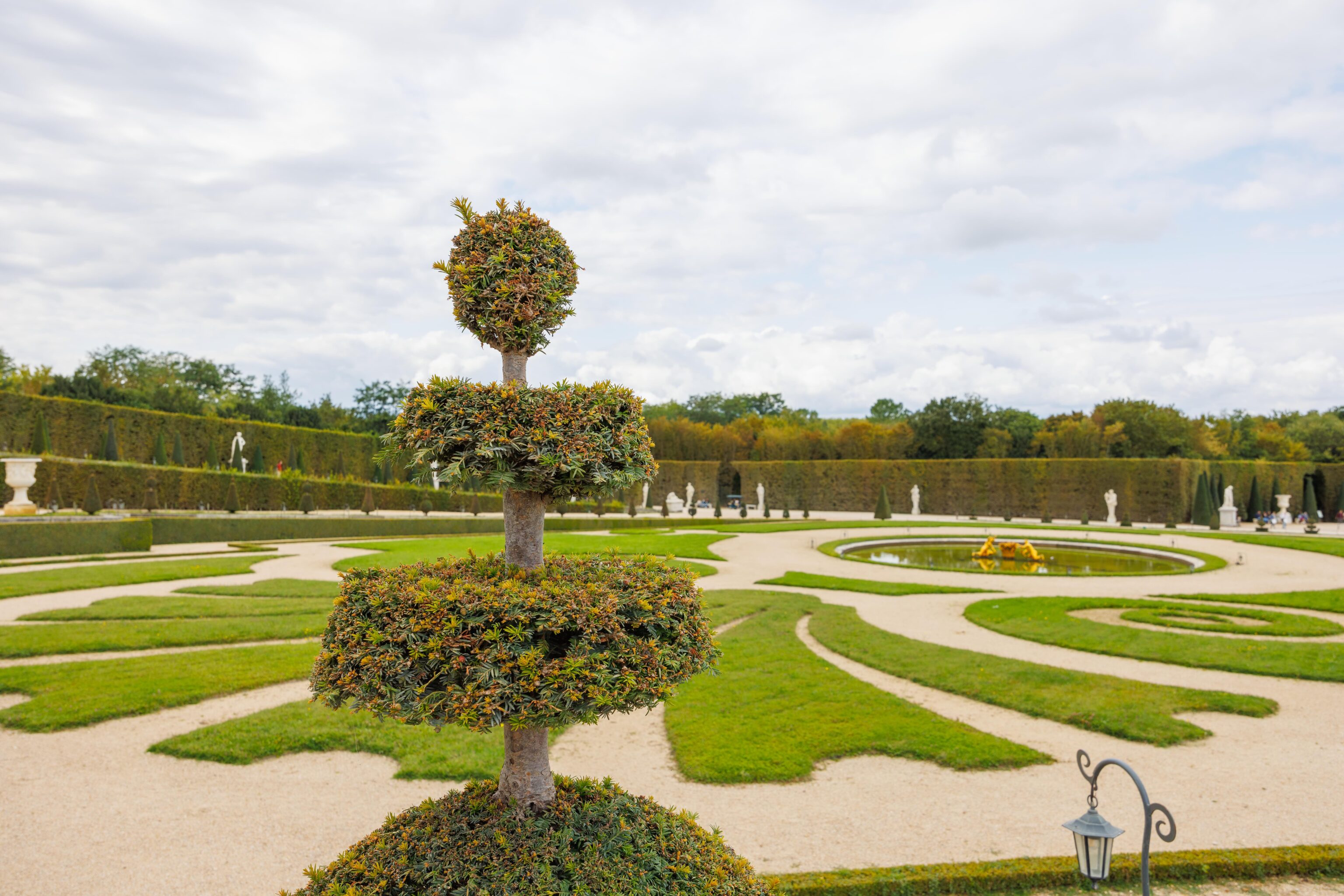
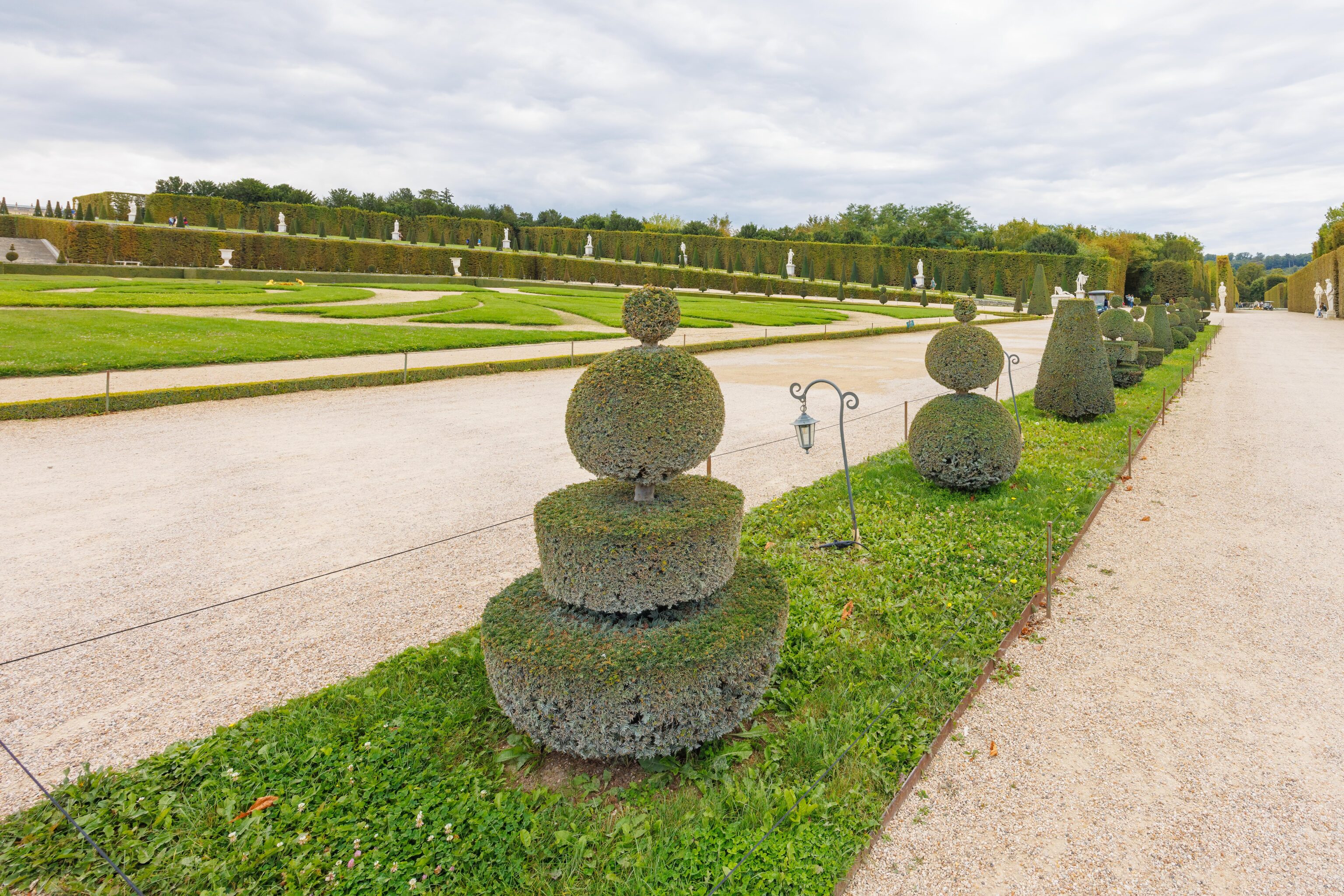
Many of the plants are trimmed to make various geometric shapes. Later on, we saw how they trim the trees. There is a big pattern that they use to ensure the trimming is done correctly.
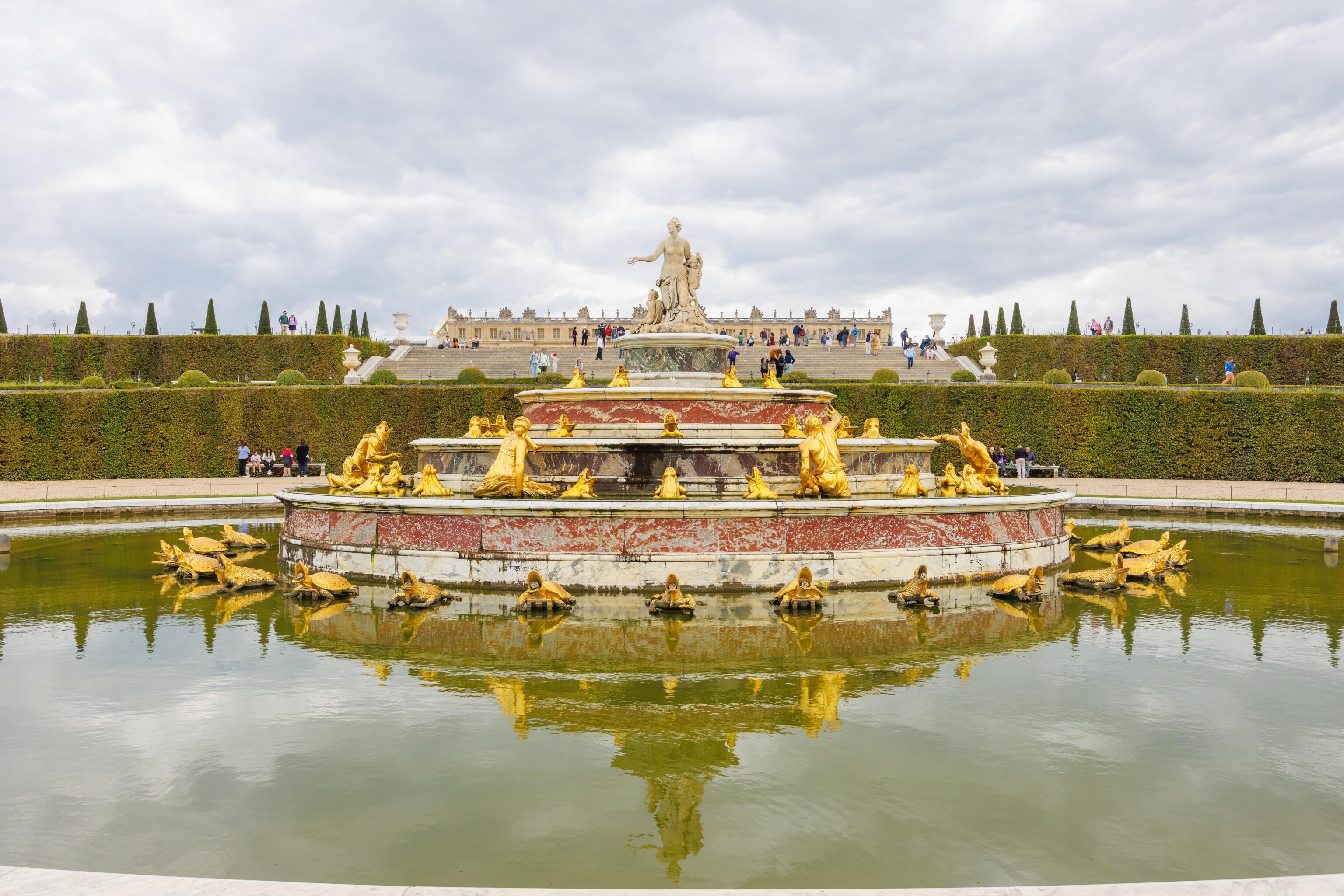
Latona’s Fountain from the west. While the basin held water, the fountain was not on. Presumably, it is active on the Musical Fountains days.
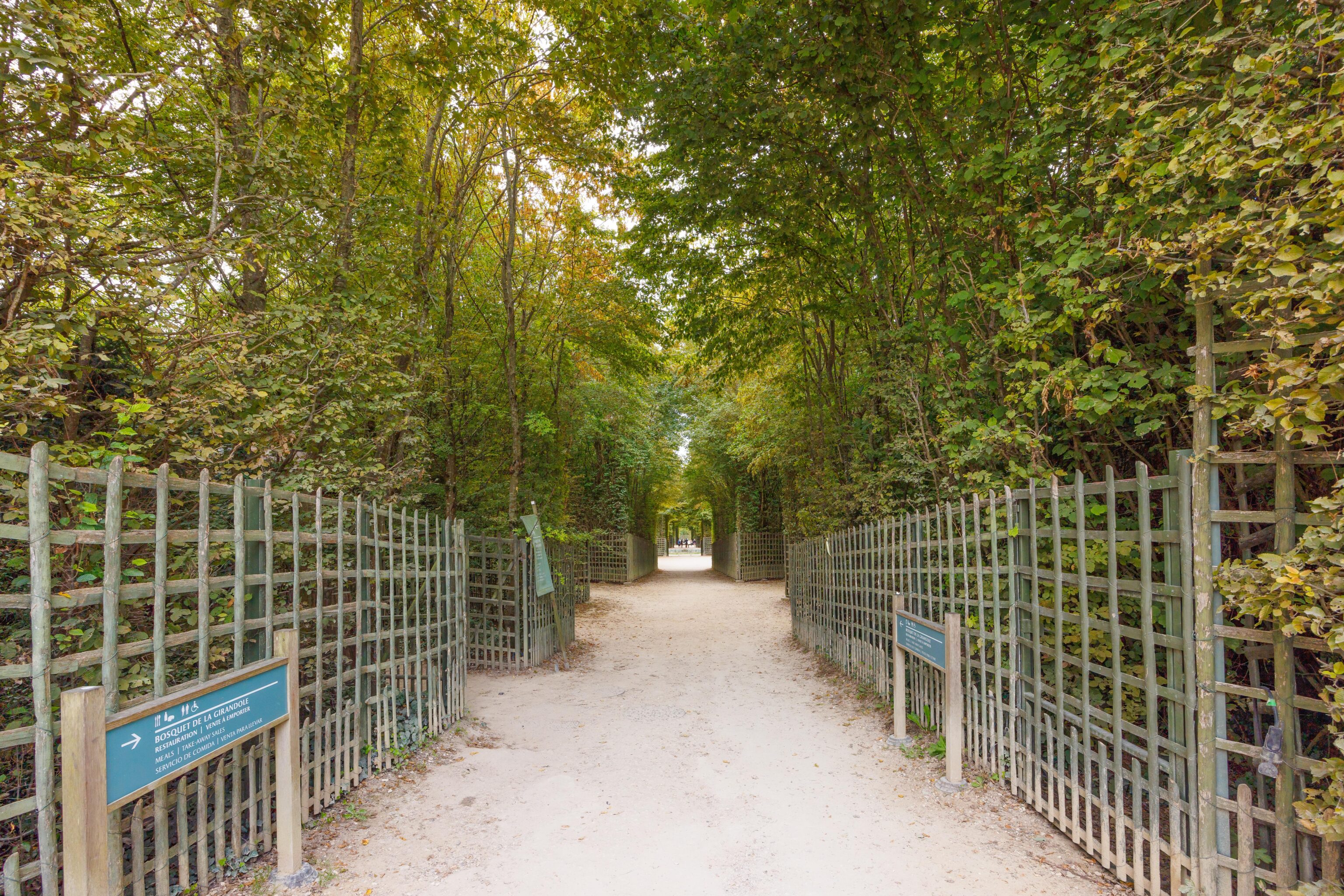
We continued into the Girandole Grove, diverting from the suggested path as there is food and bathrooms here. It was 1pm and we were hungry. The food options are, obviously, limited.
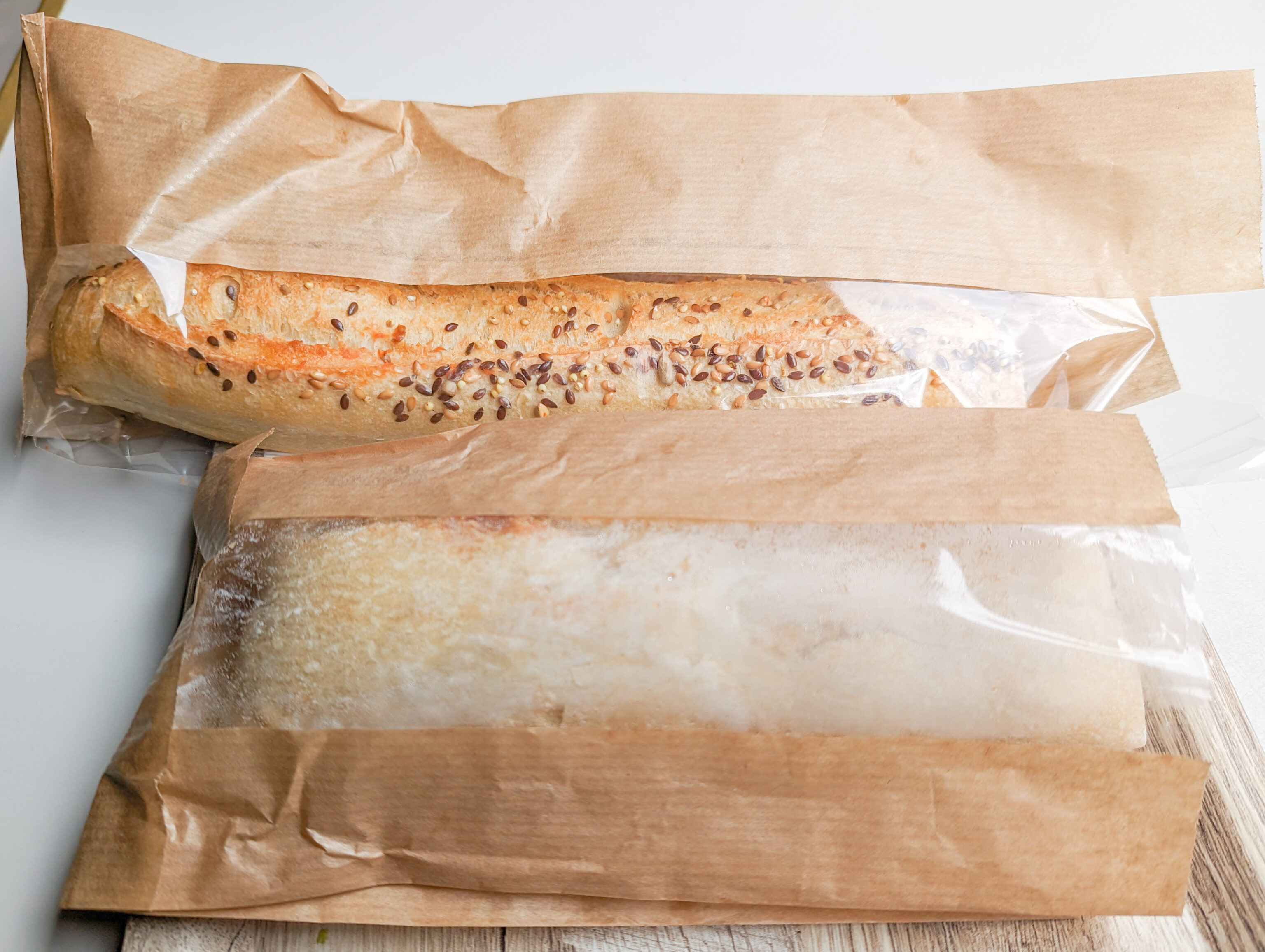
The food quality was more or less equivalent to American tourist attraction dining. Which is to say, overpriced and bad.
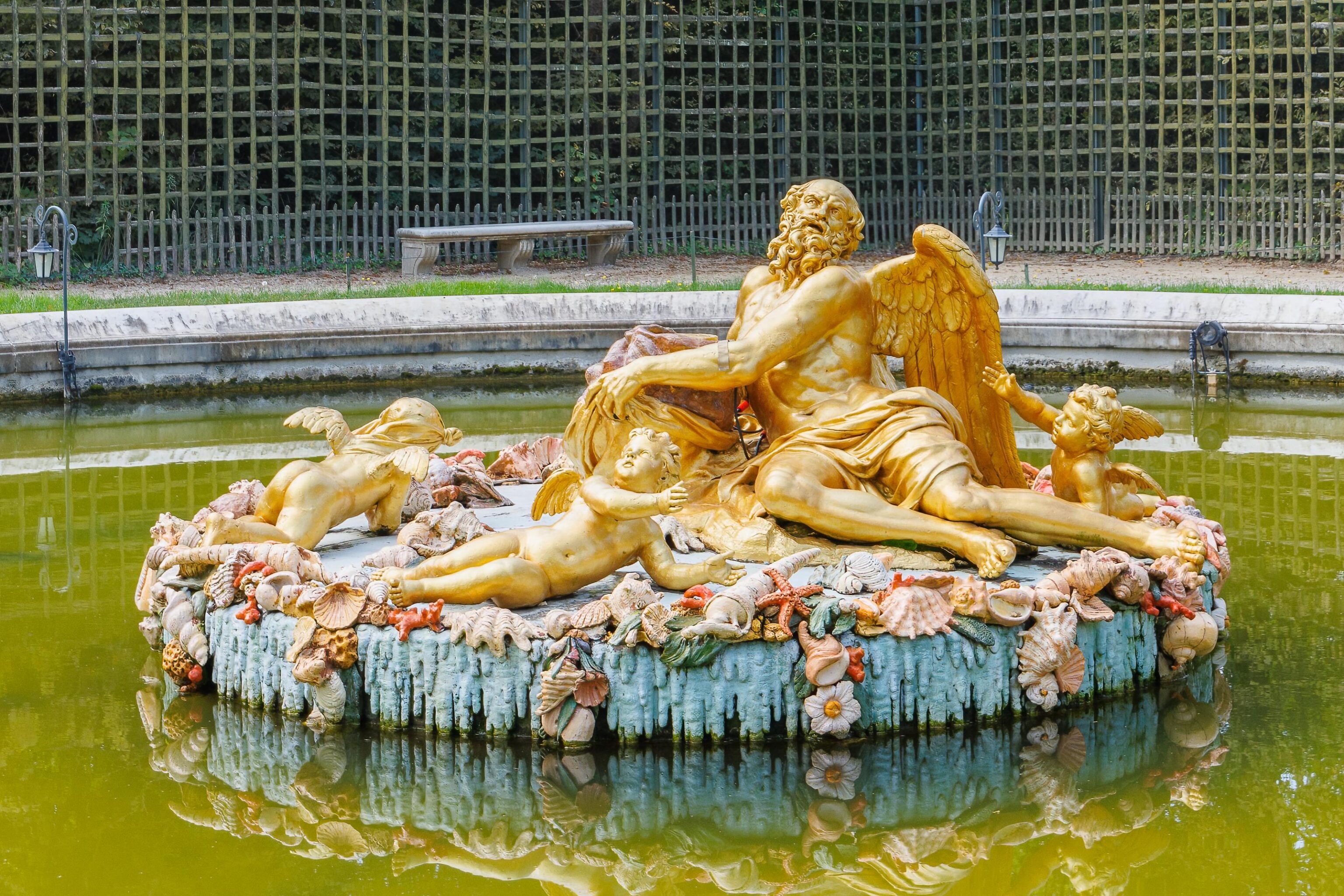
After eating and visiting the bathrooms, we ended up at the Saturn Fountain.
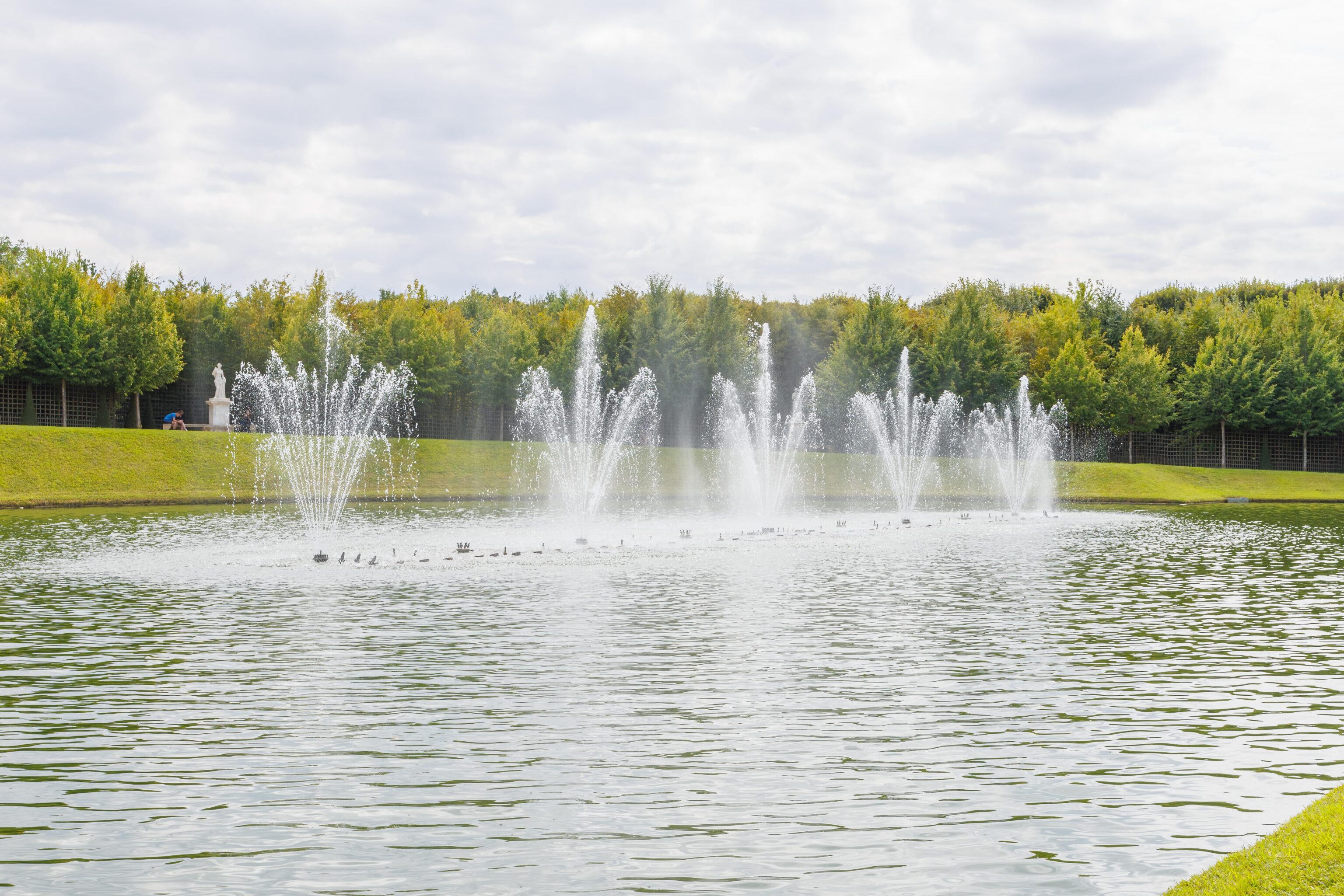
We turned south to find the Mirror Pool. This is one of the main attractions of the Musical Gardens. There was a fountain show synchronized to music.
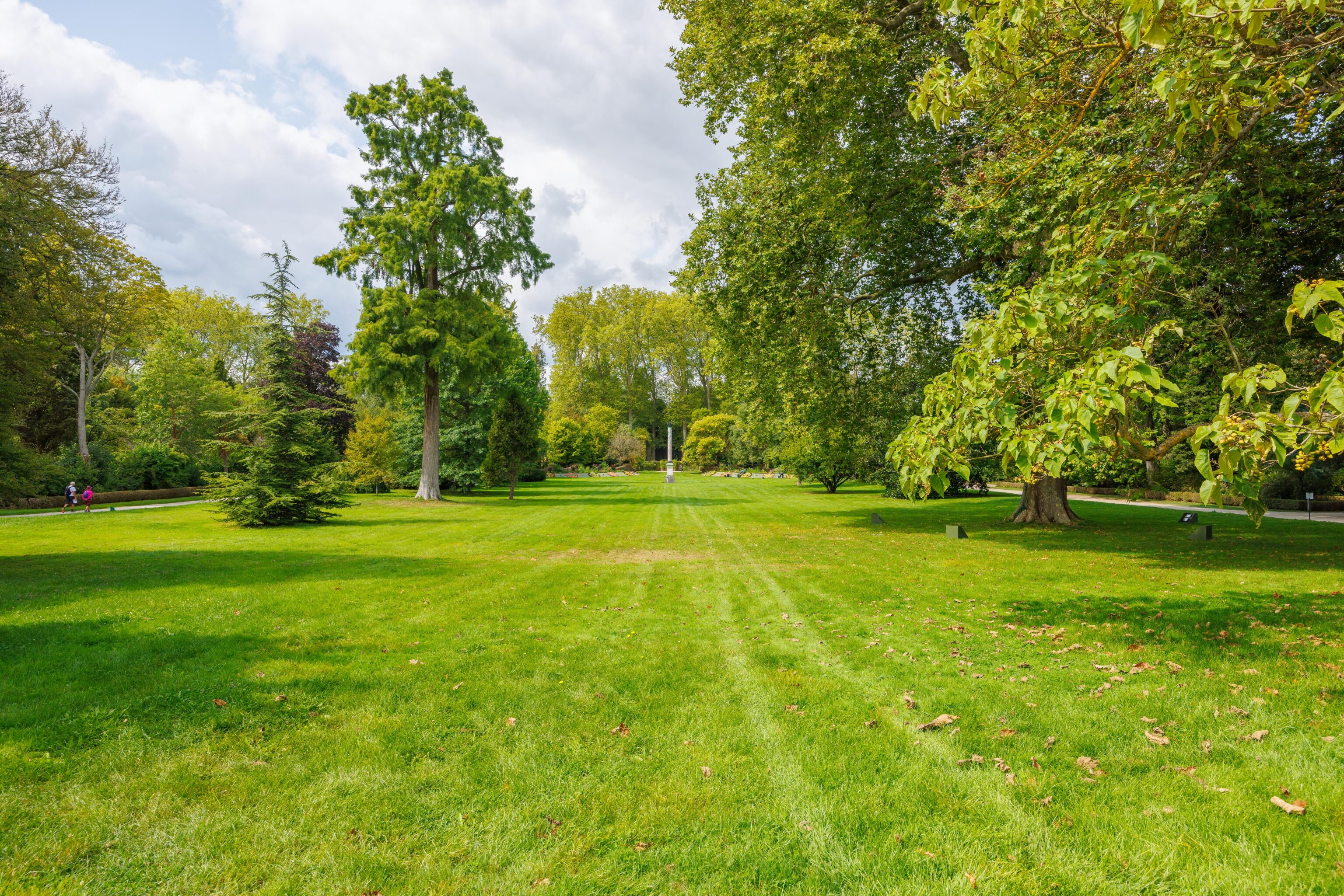
The King’s Garden was to the west of the Mirror Pool. We took a look at it from the eastern edge.
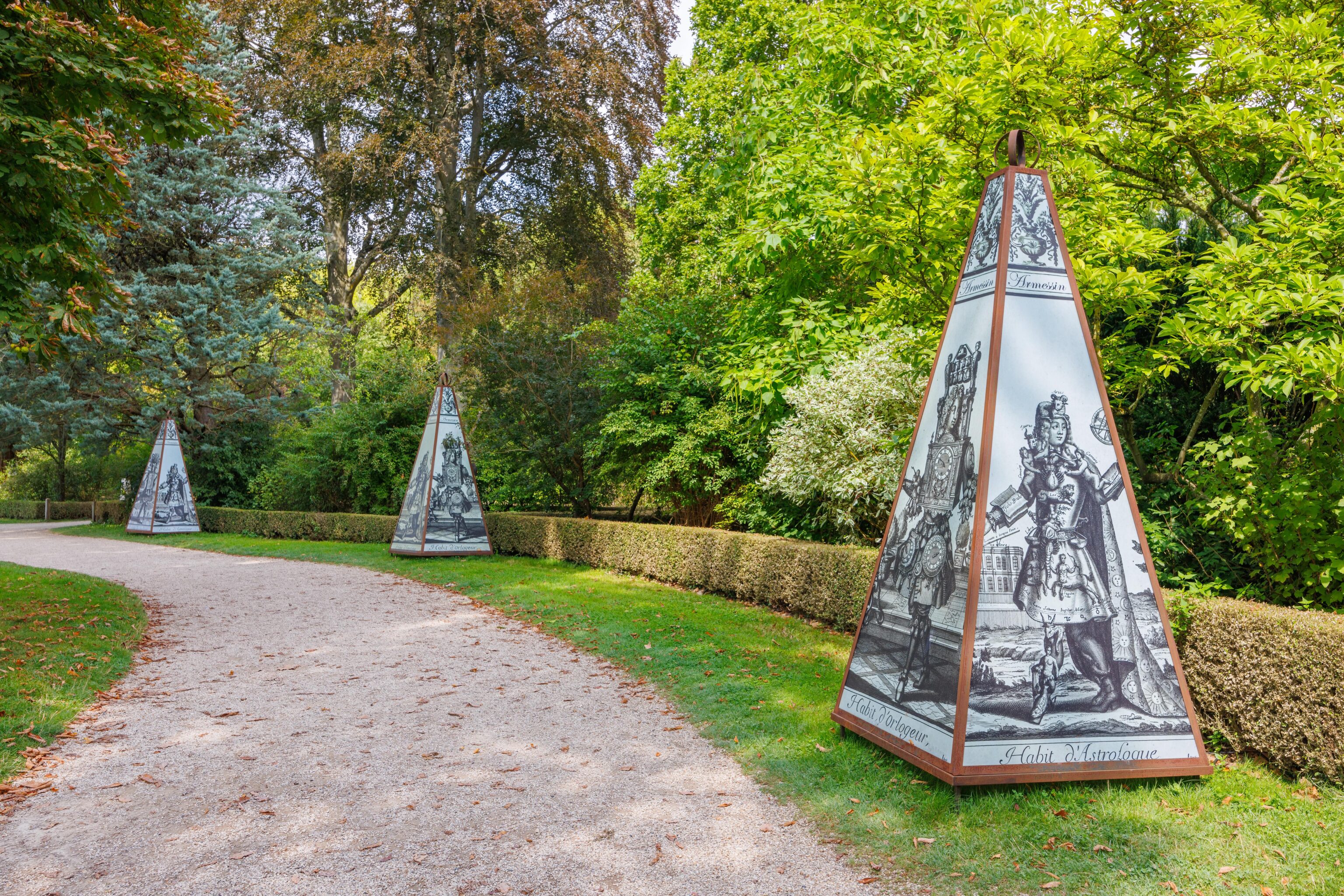
We walked around the northern side of the King’s Garden as indicated by the suggested route on the map.
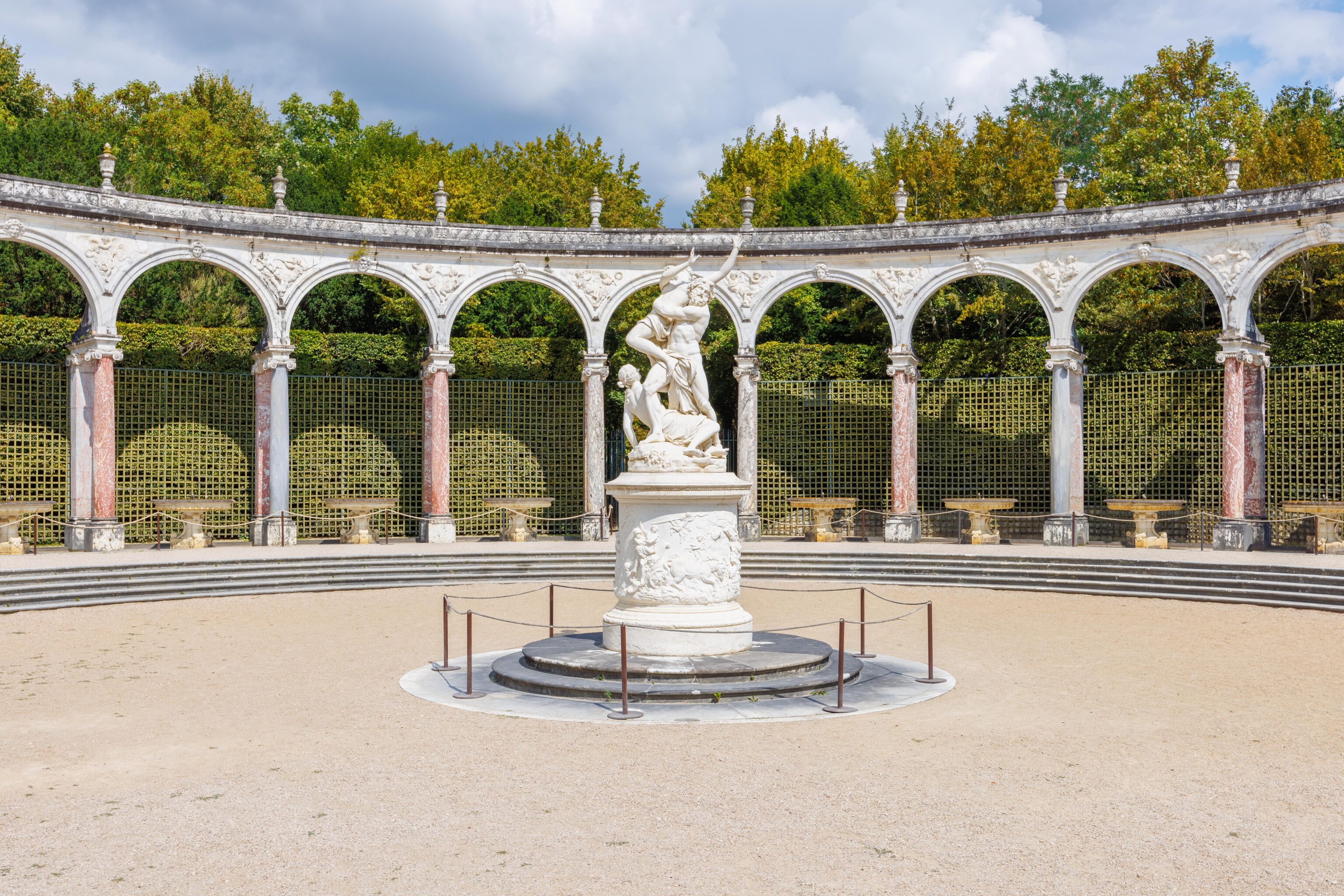
We made our way to the Colonnade Grove.
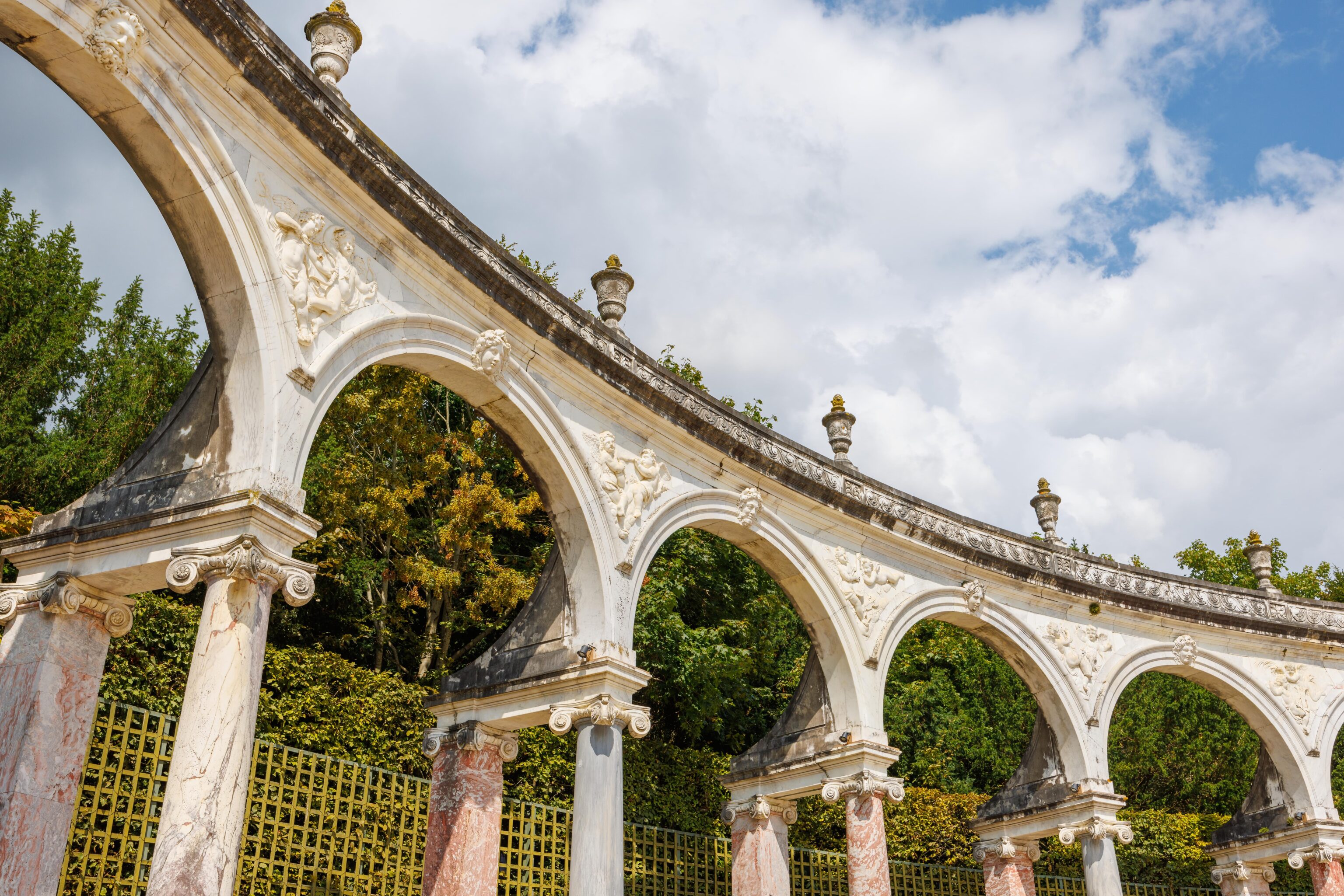
Lots of marble and sculpted features, though a bit weathered in appearance. Music was playing, though there wasn’t anything else going on here.
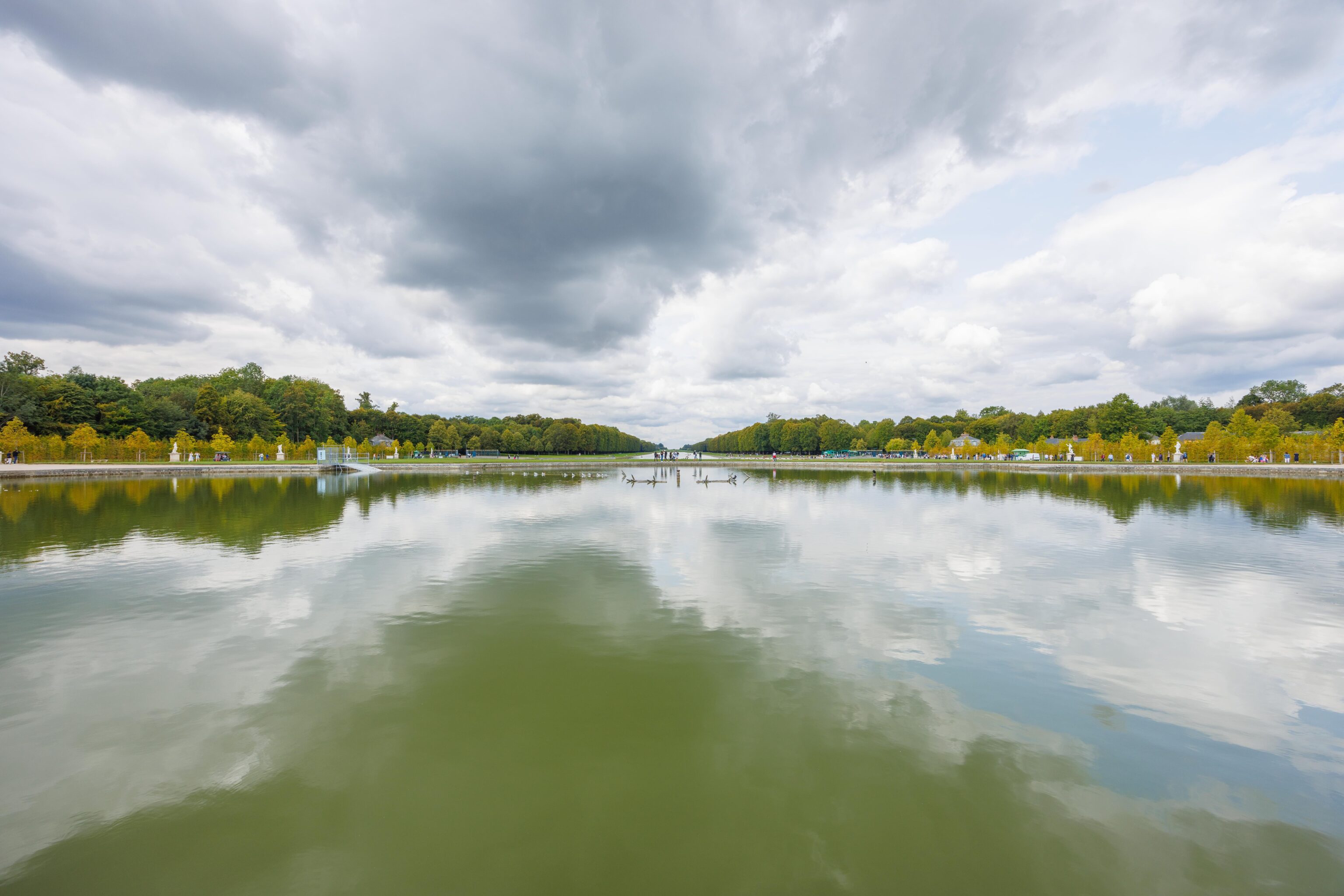
We headed west to reach Apollo’s Fountain. There is supposed to be something here in the water. However, it is currently being renovated.
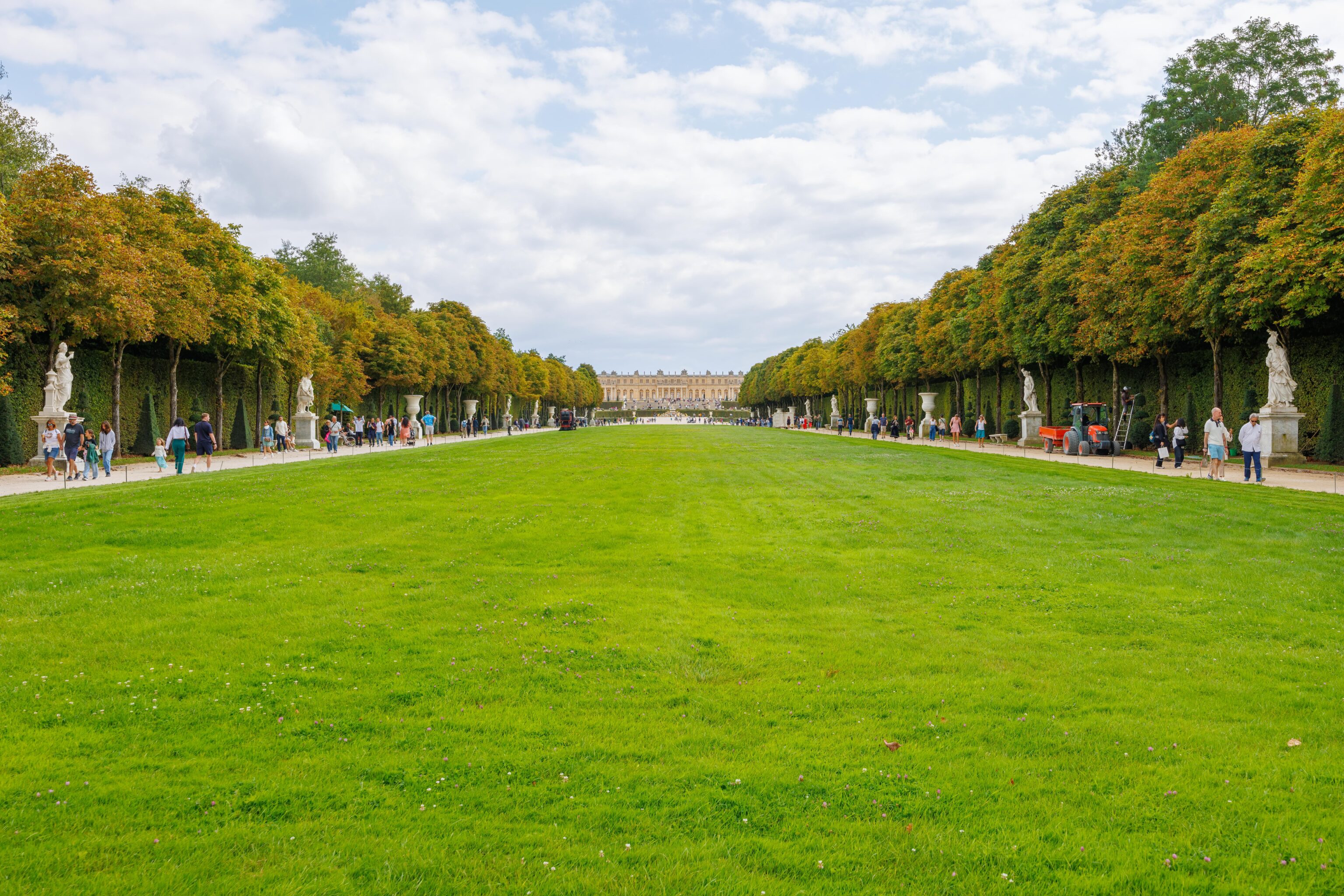
The view looking back towards the palace. We’ve gone a long way!
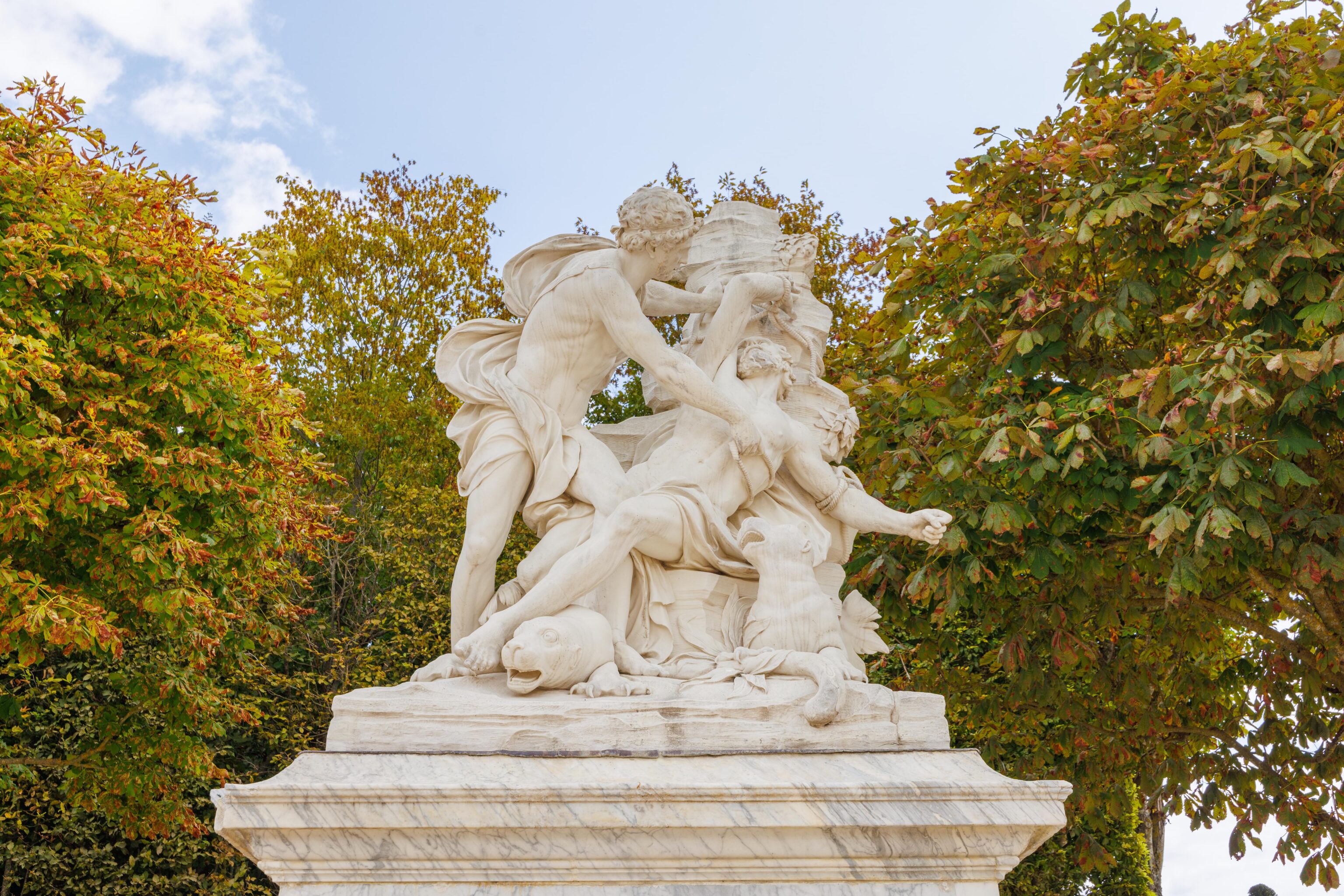
Just one of many sculptures. Not sure what is going on here!
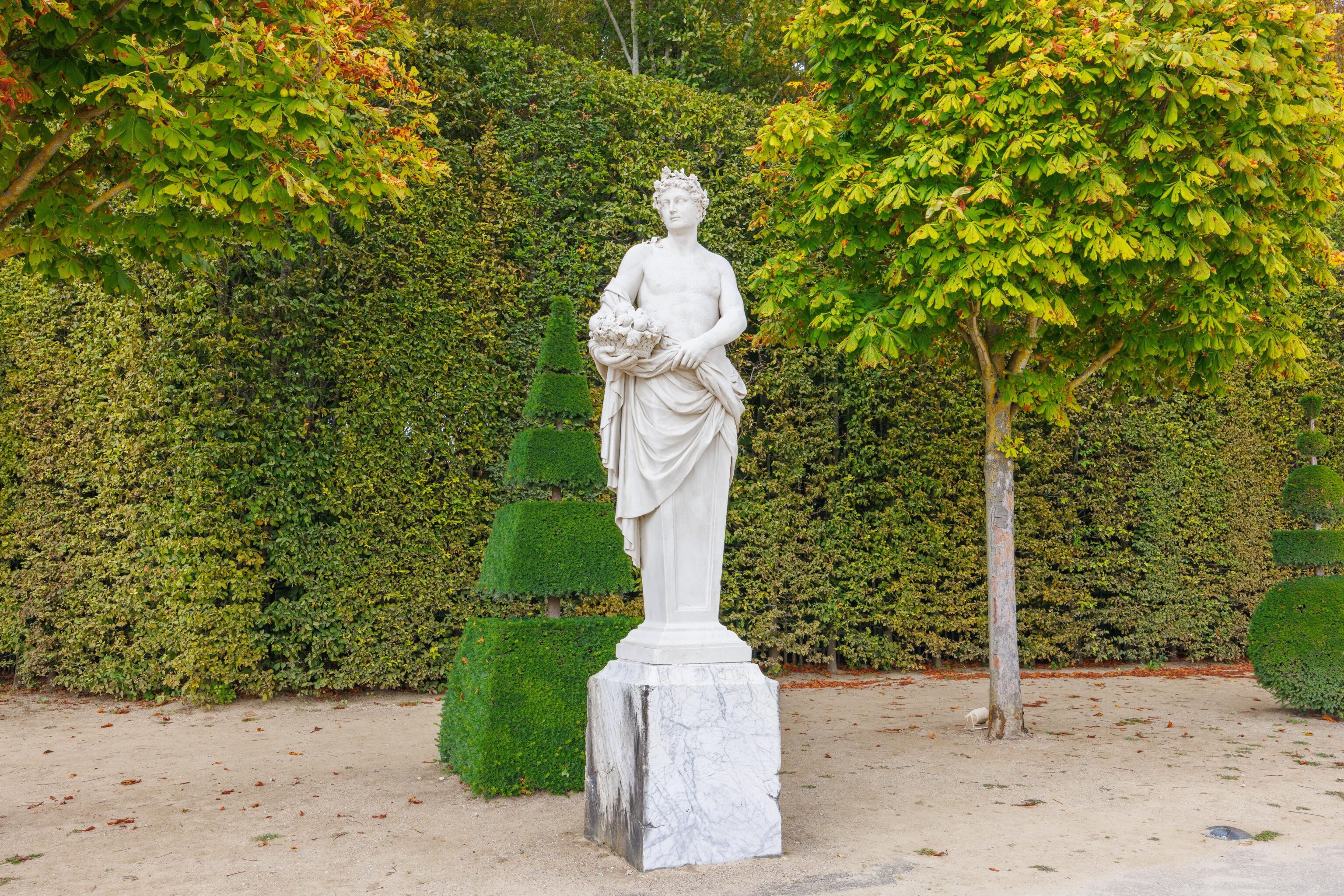
Another one of the many sculptures.
Estate of Trianon
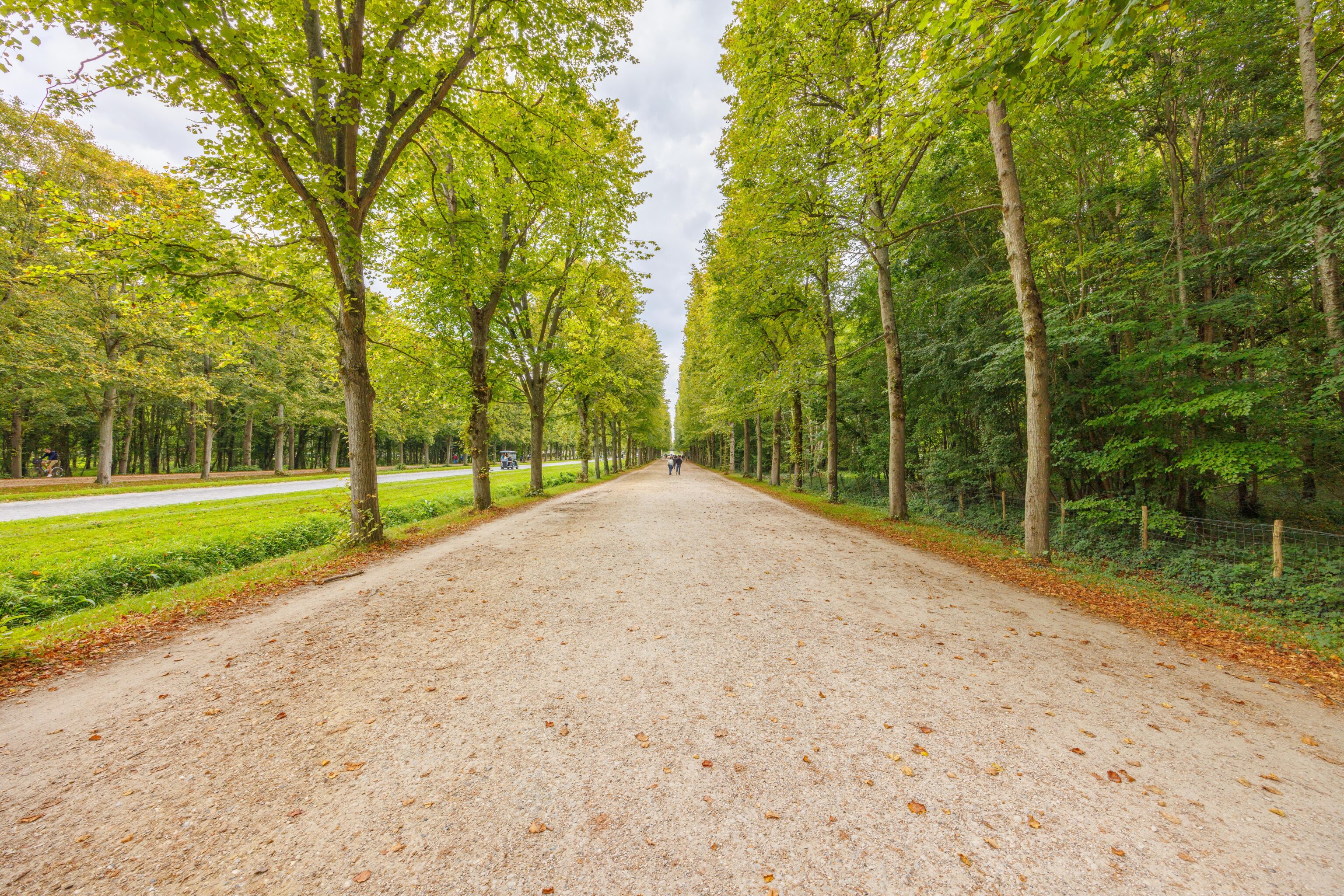
After leaving the ticketed area of the garden, we took this tree lined path to head north to the Estate of Trianon. This area was designed as a more private location for the King and Queen, though it wasn’t far from the palace at all.
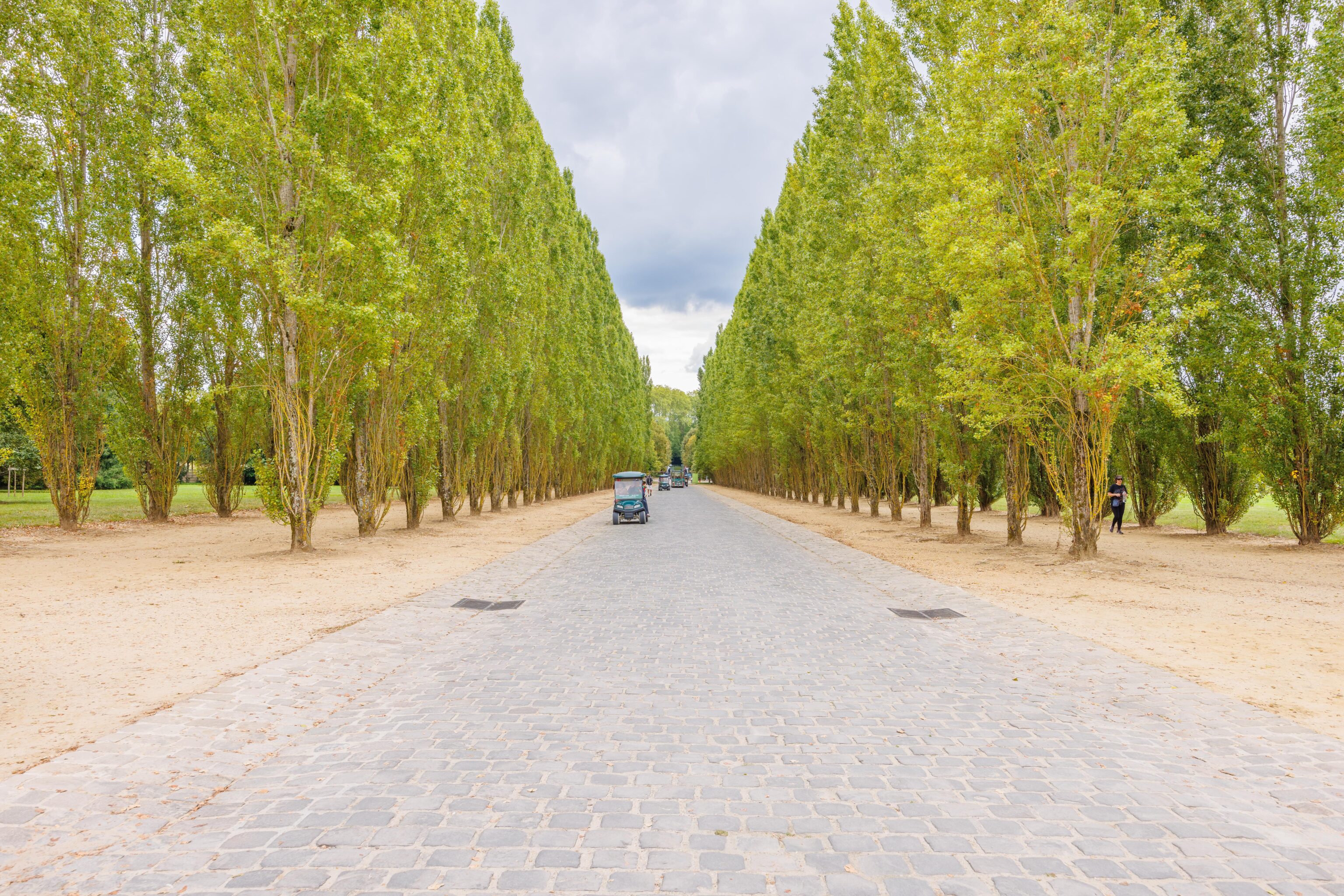
It is possible to rent small vehicles to get around, although we just walked.
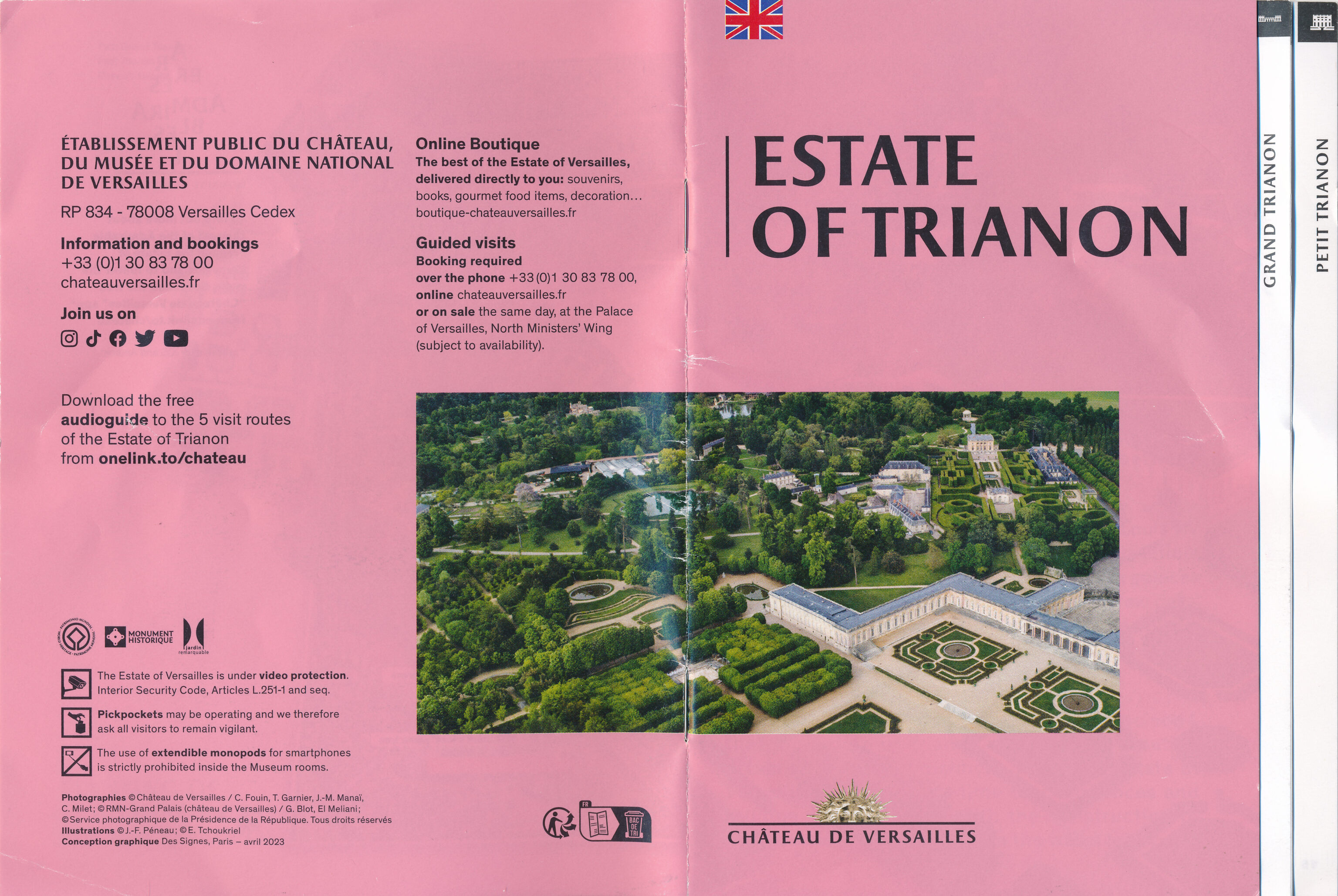
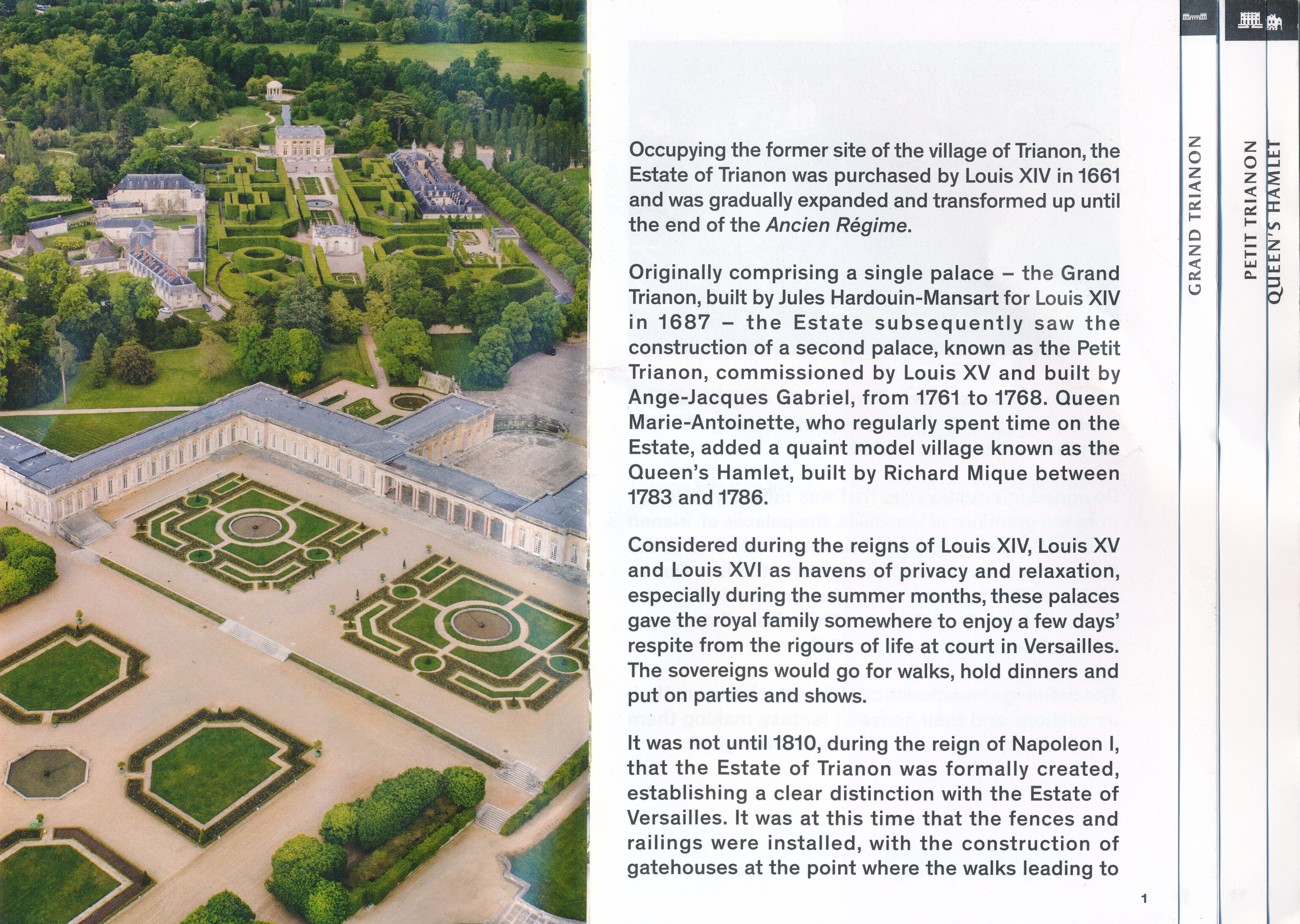
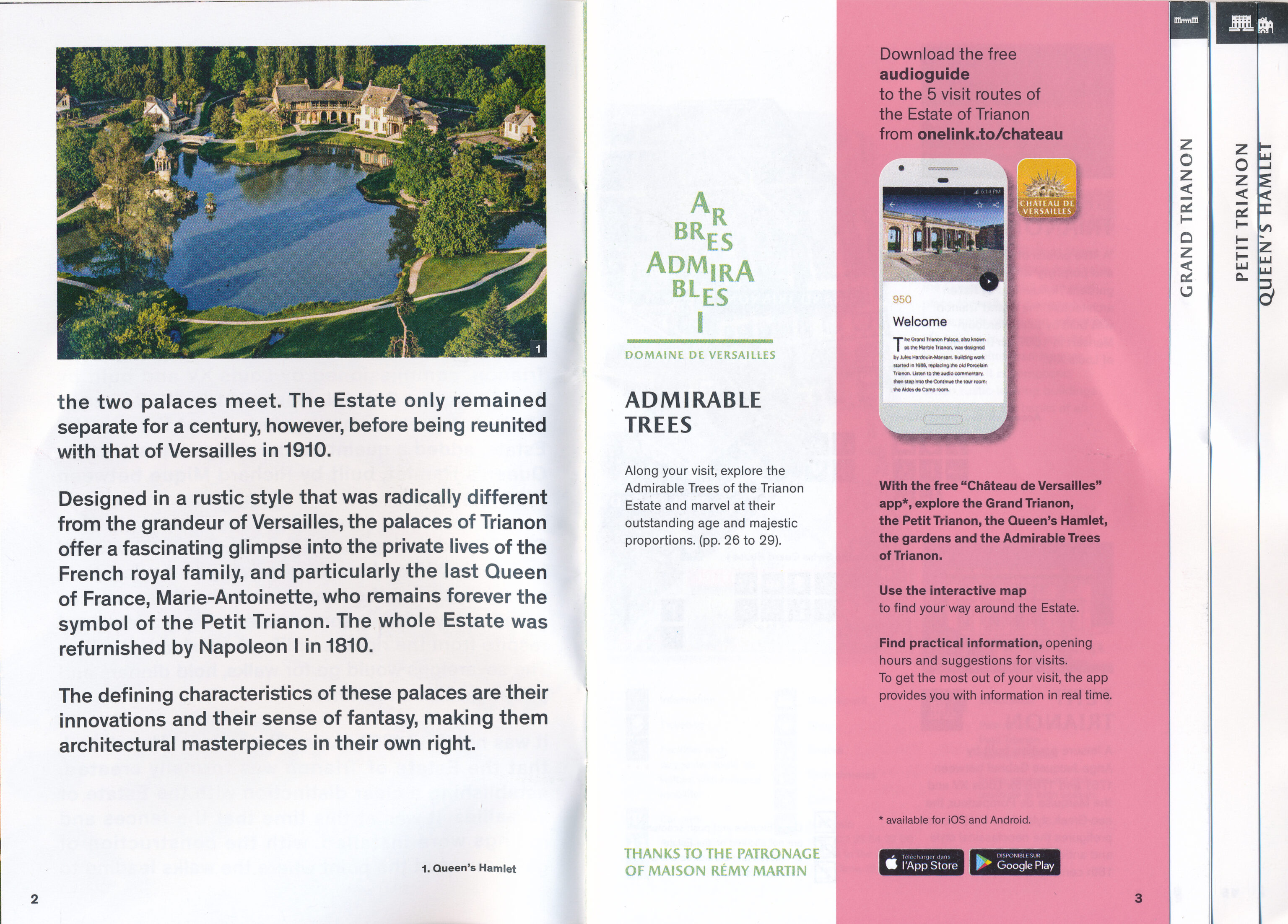
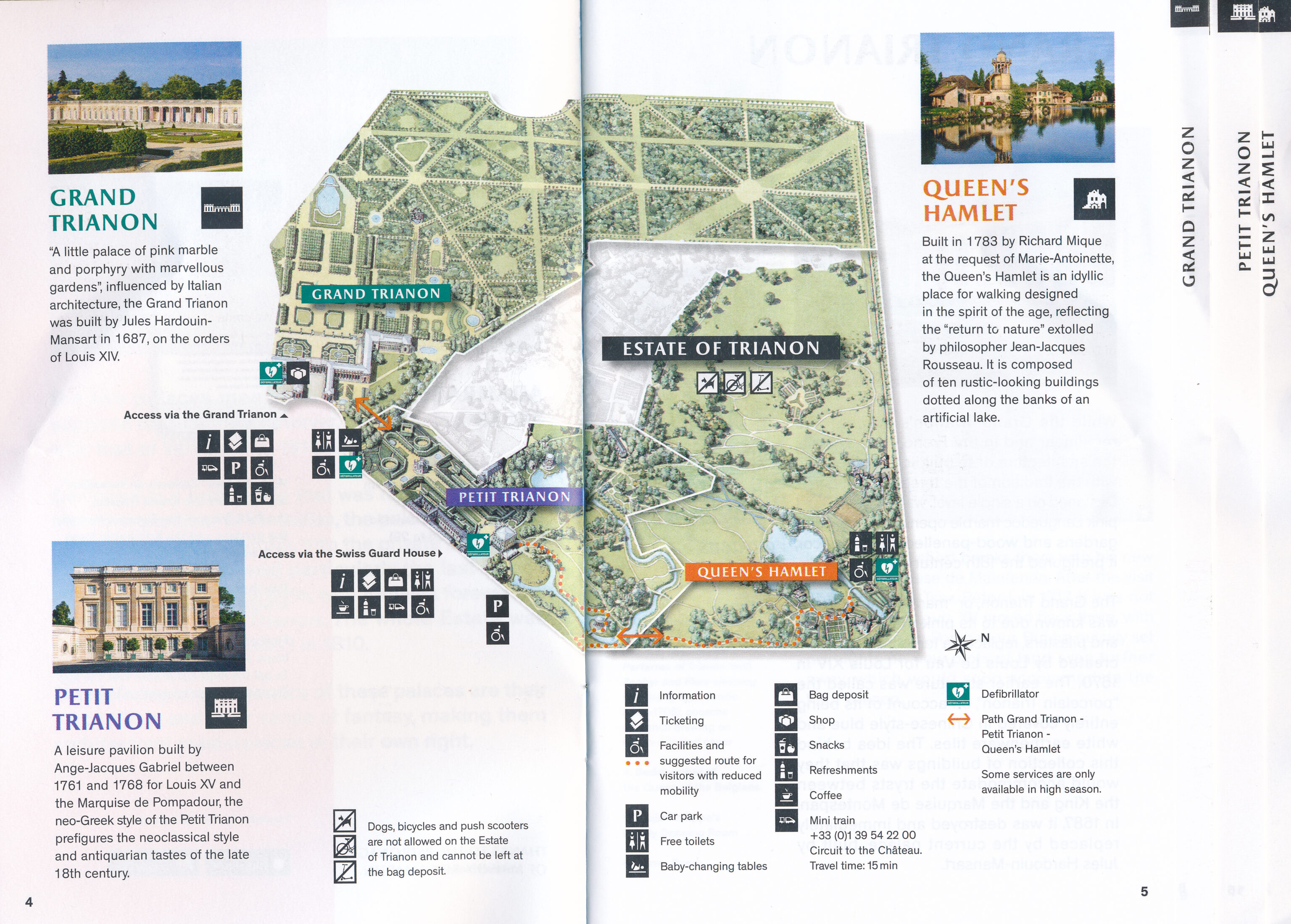
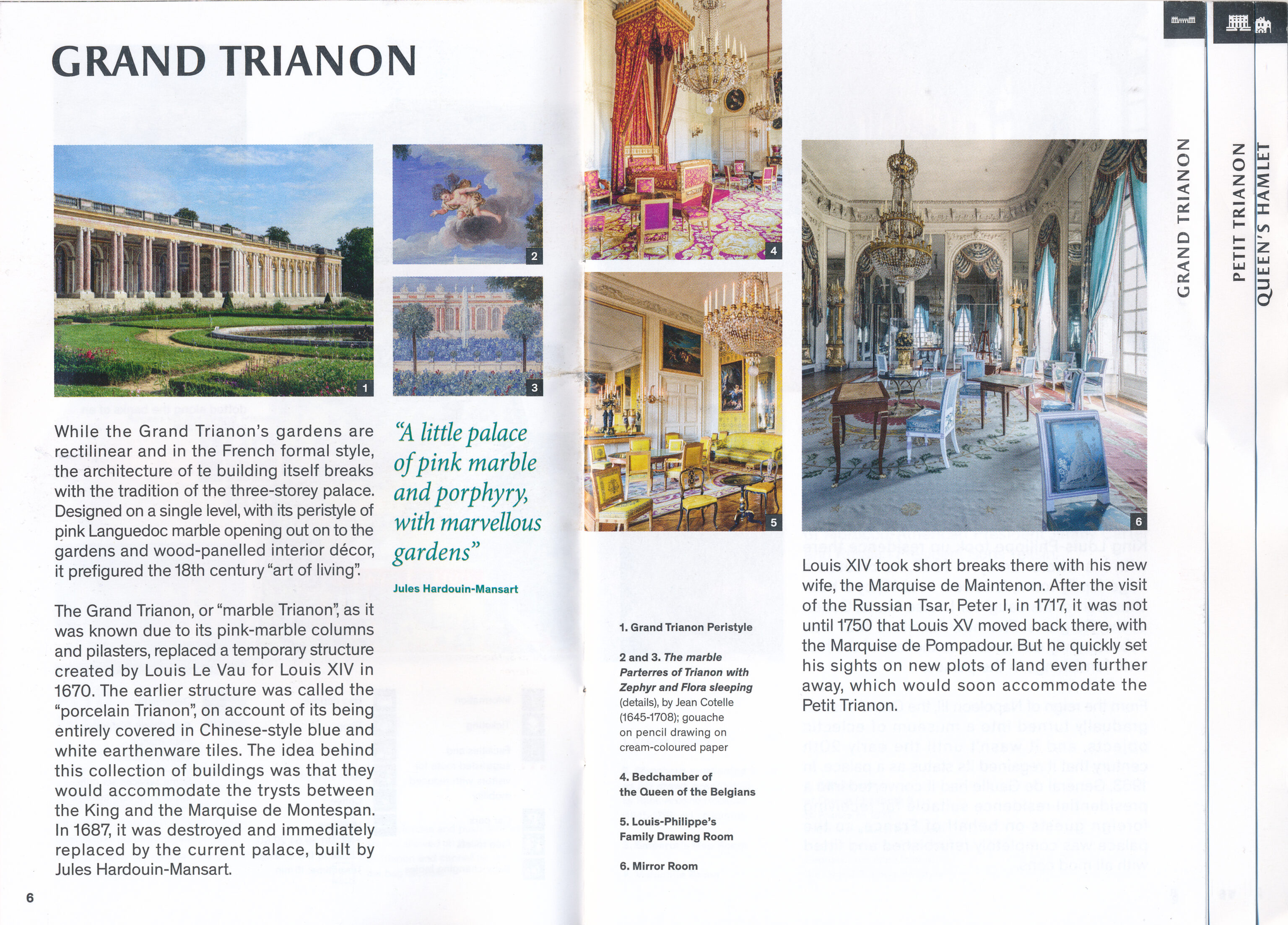
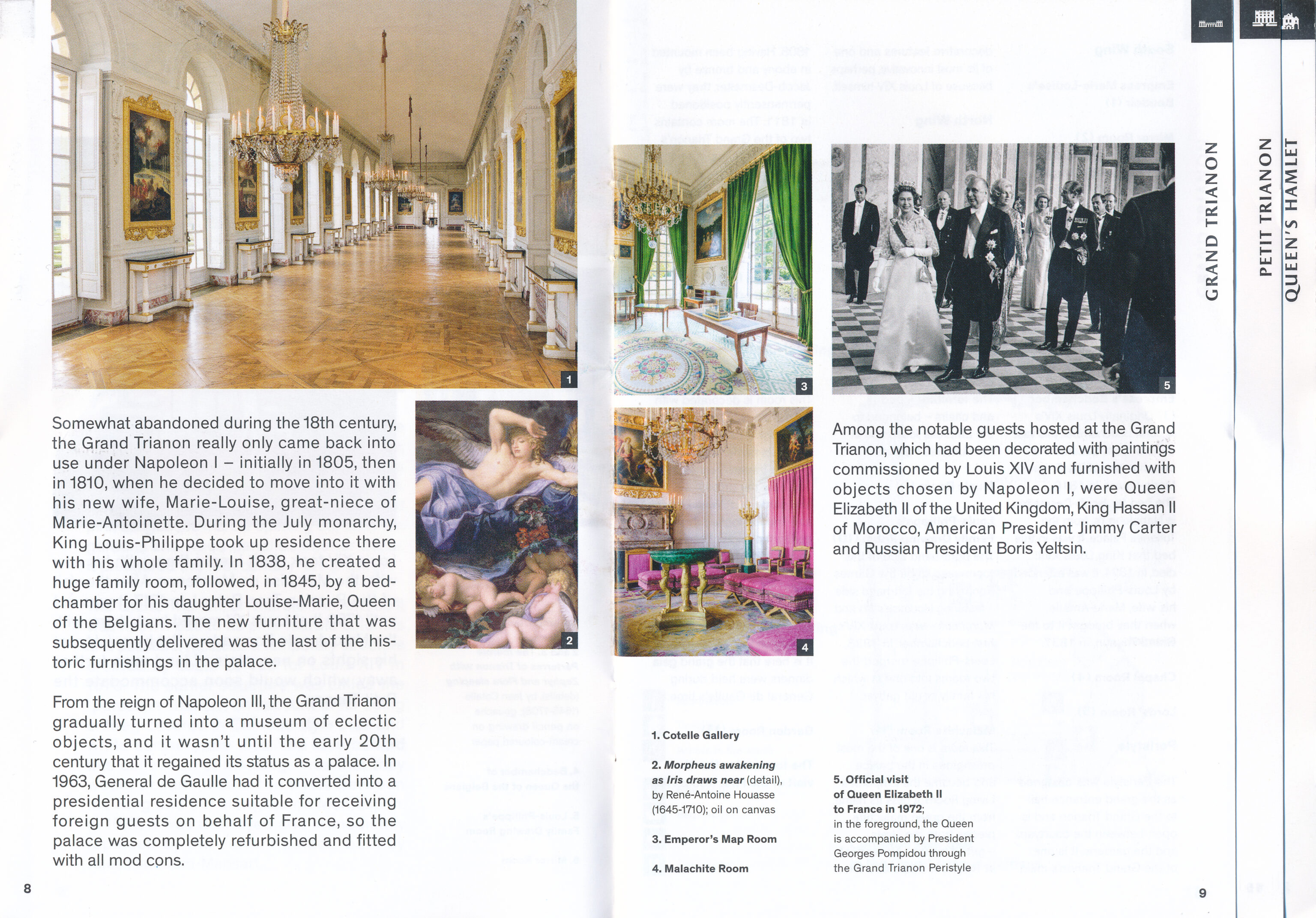
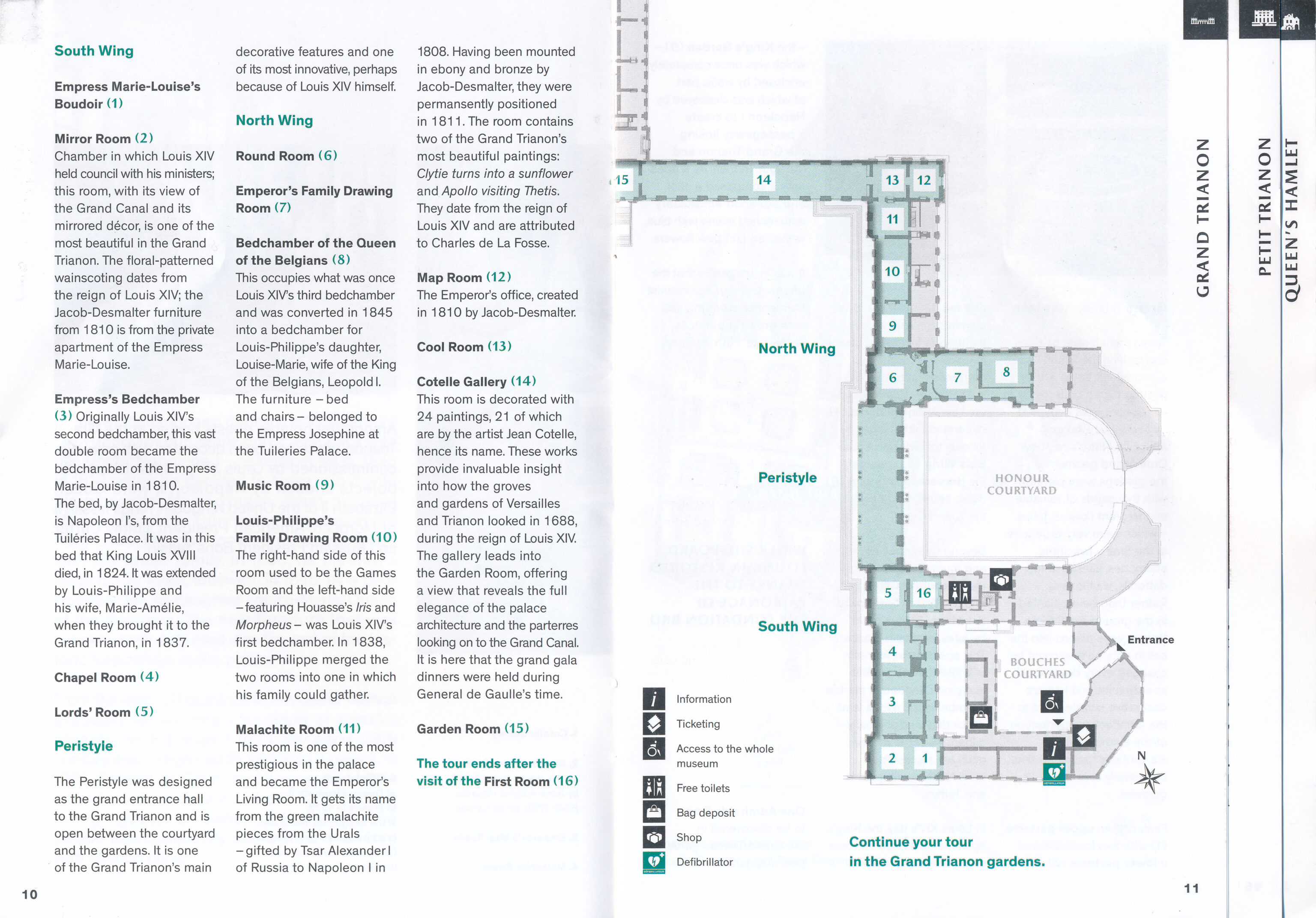
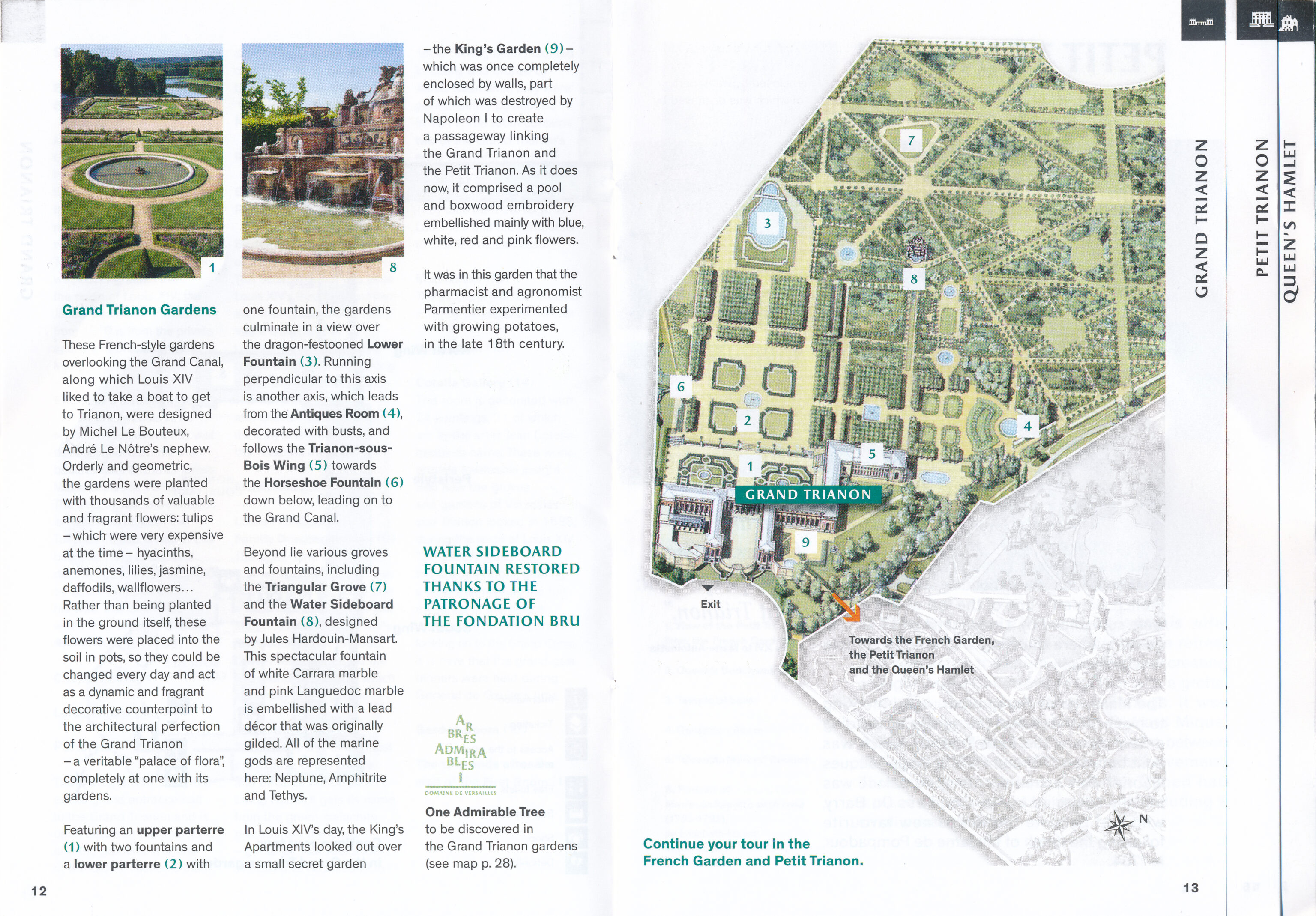
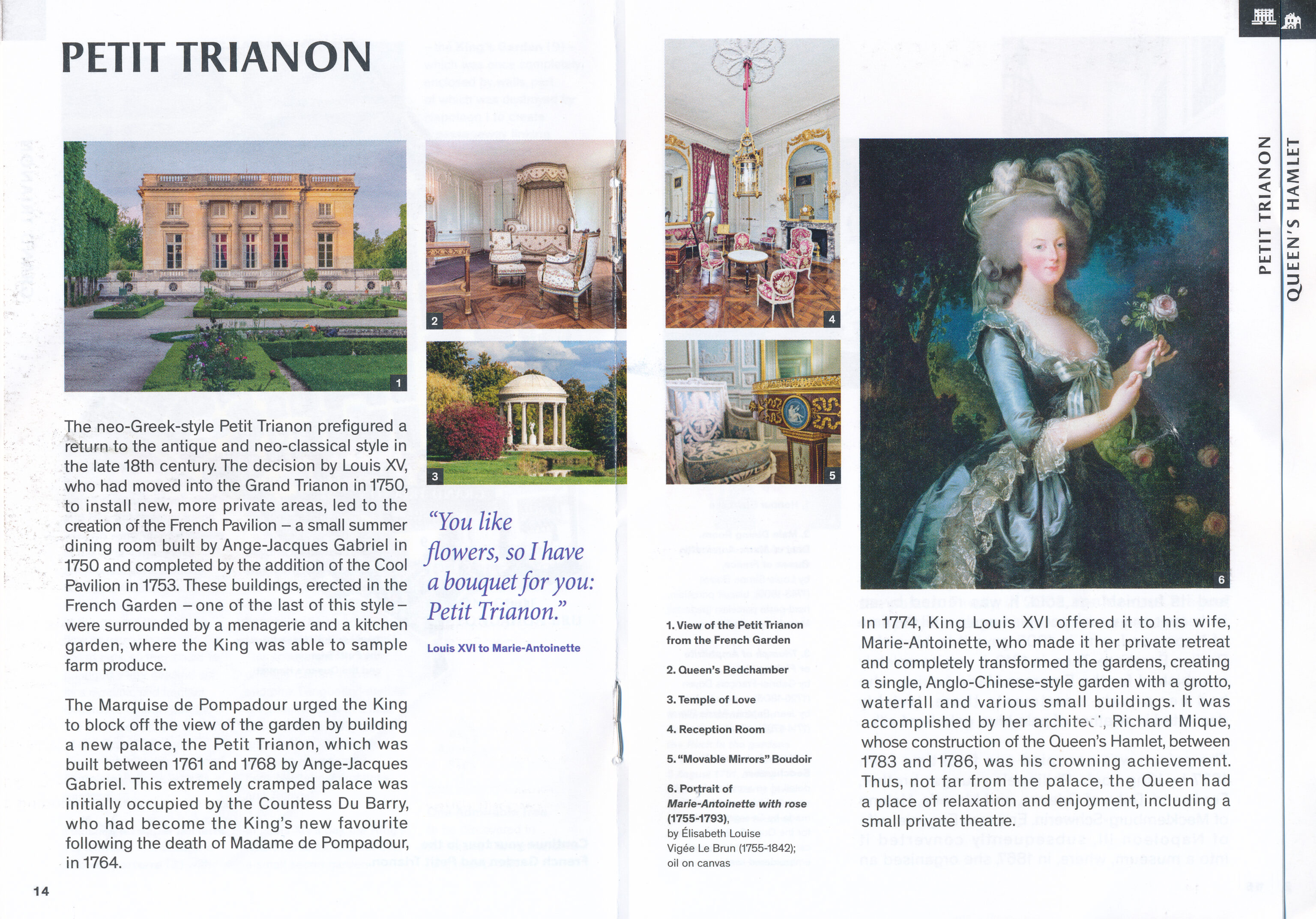
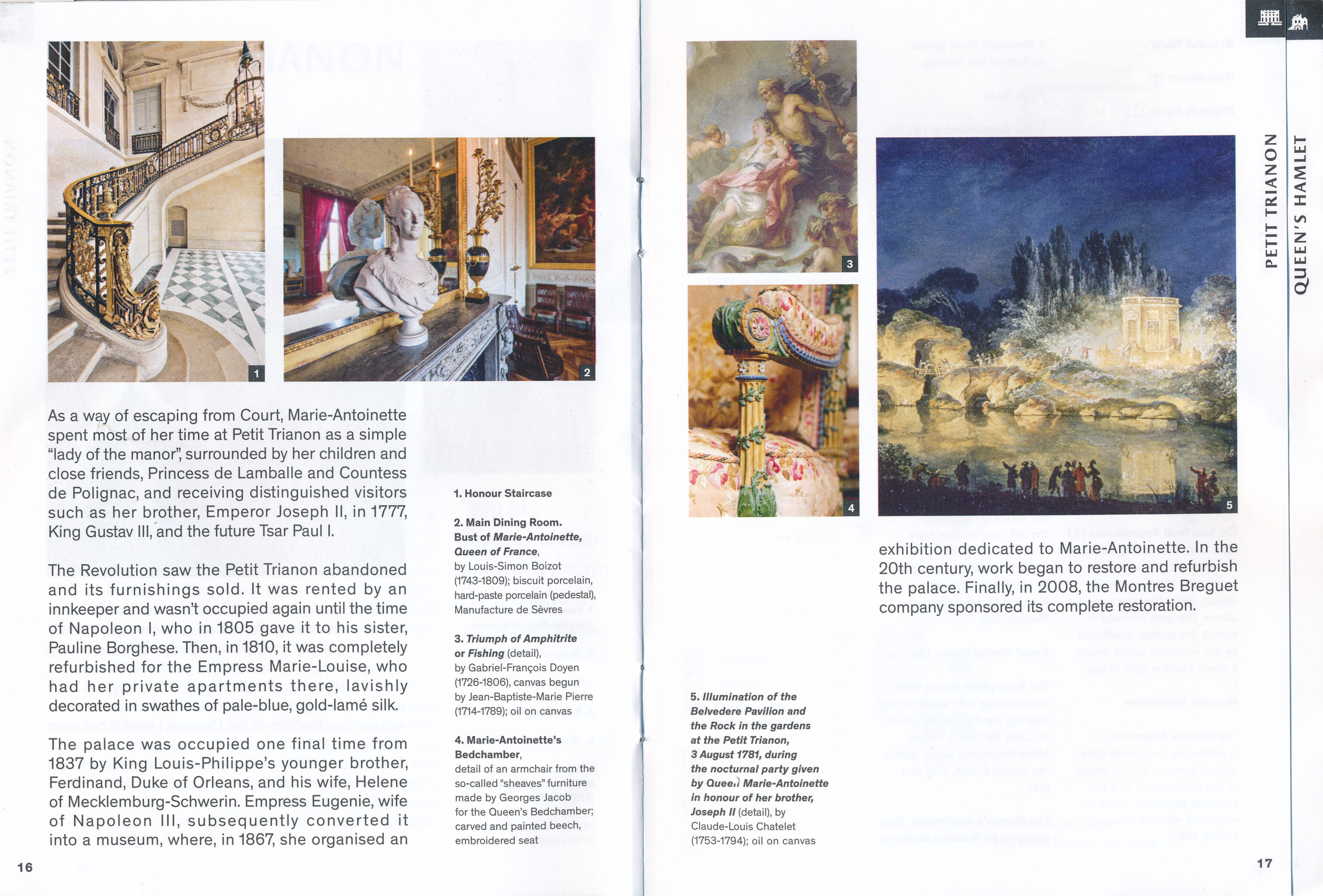
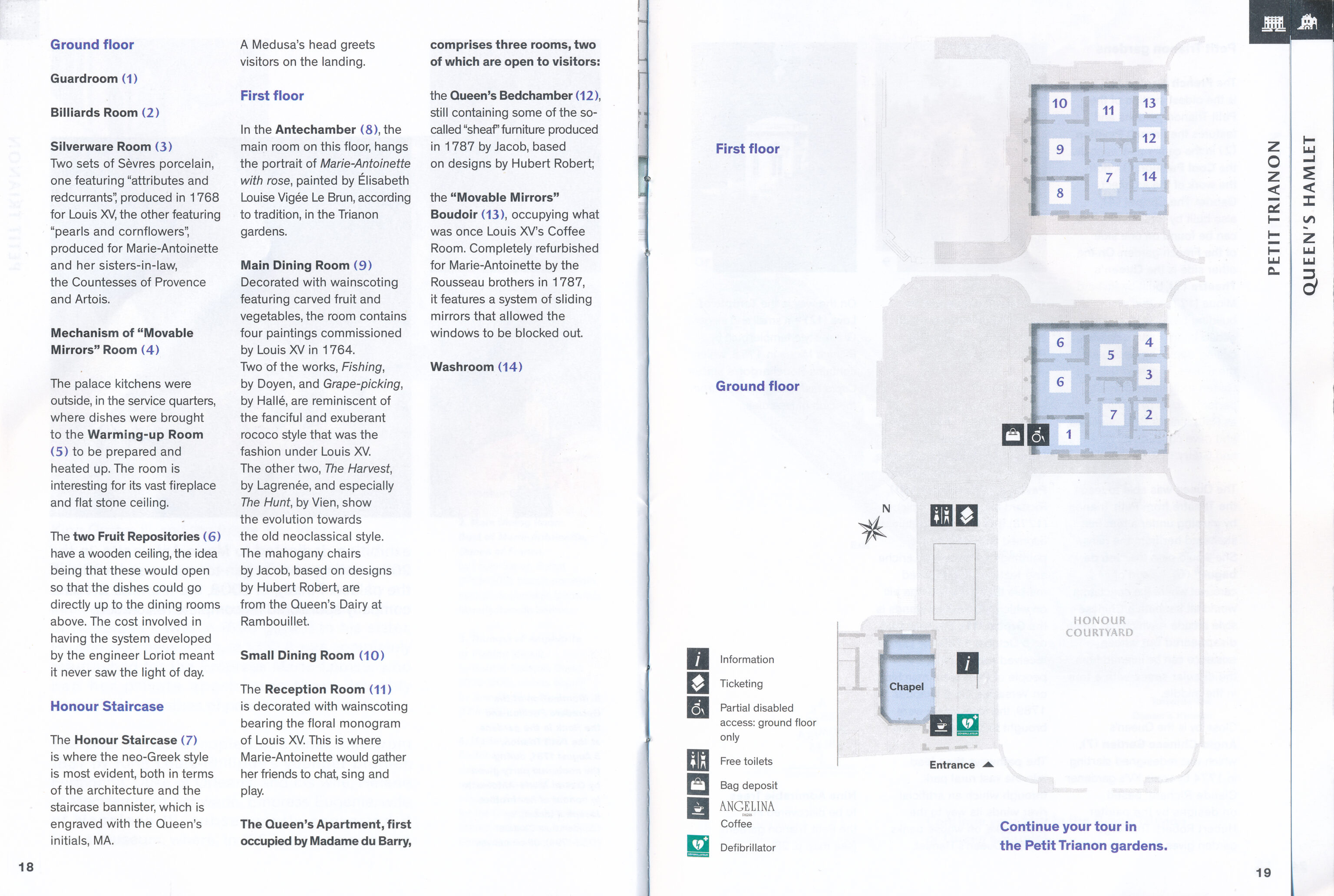
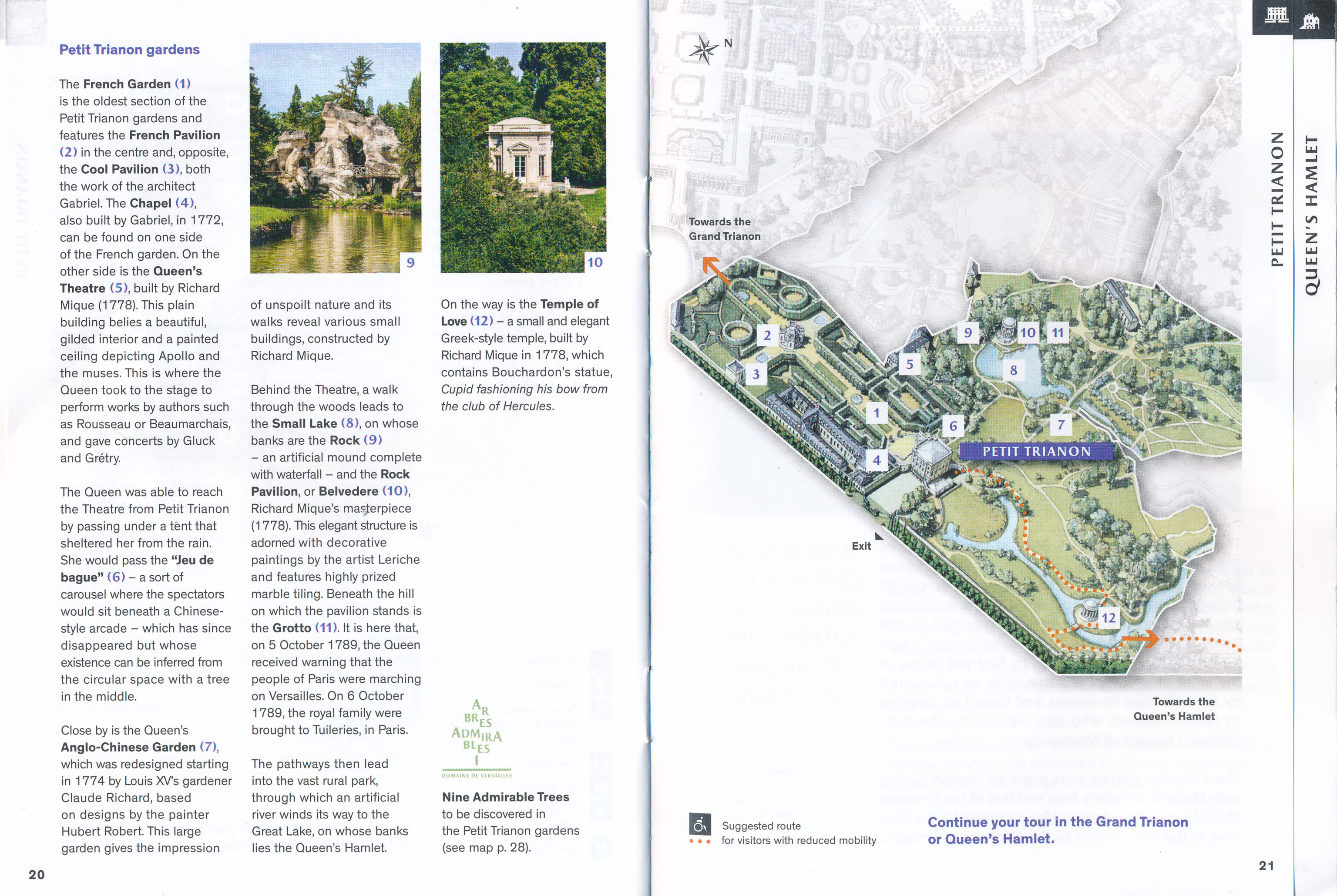
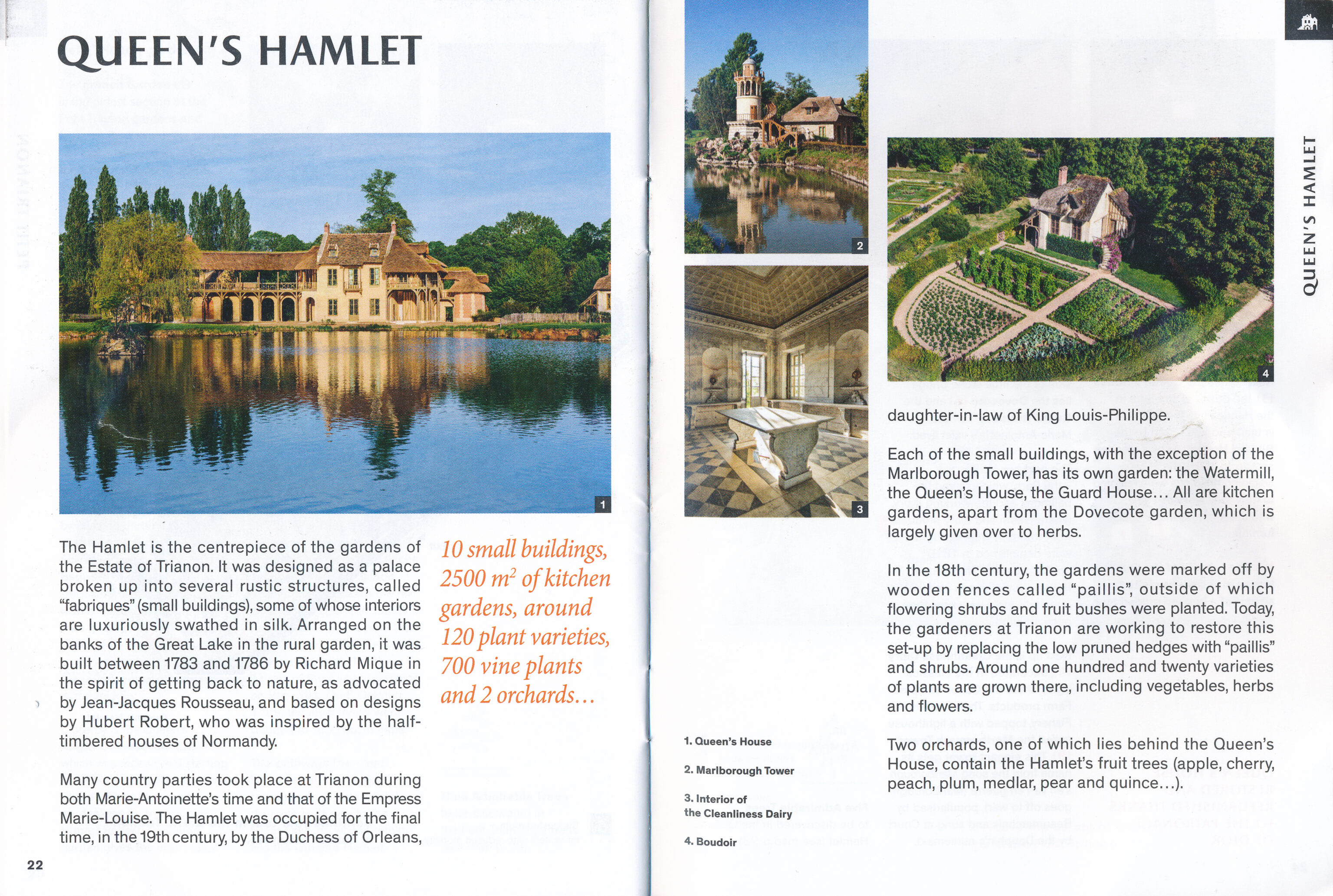
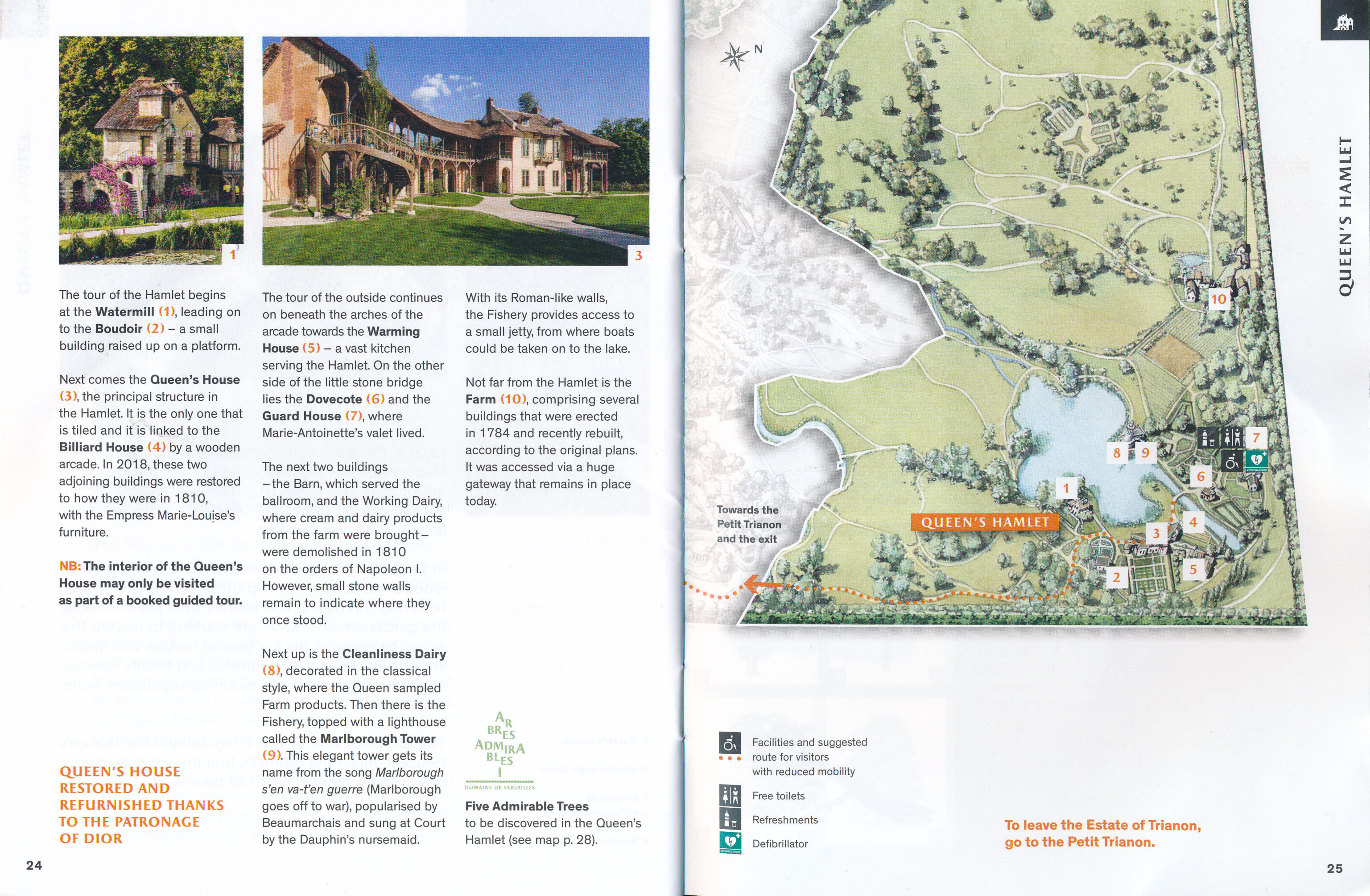
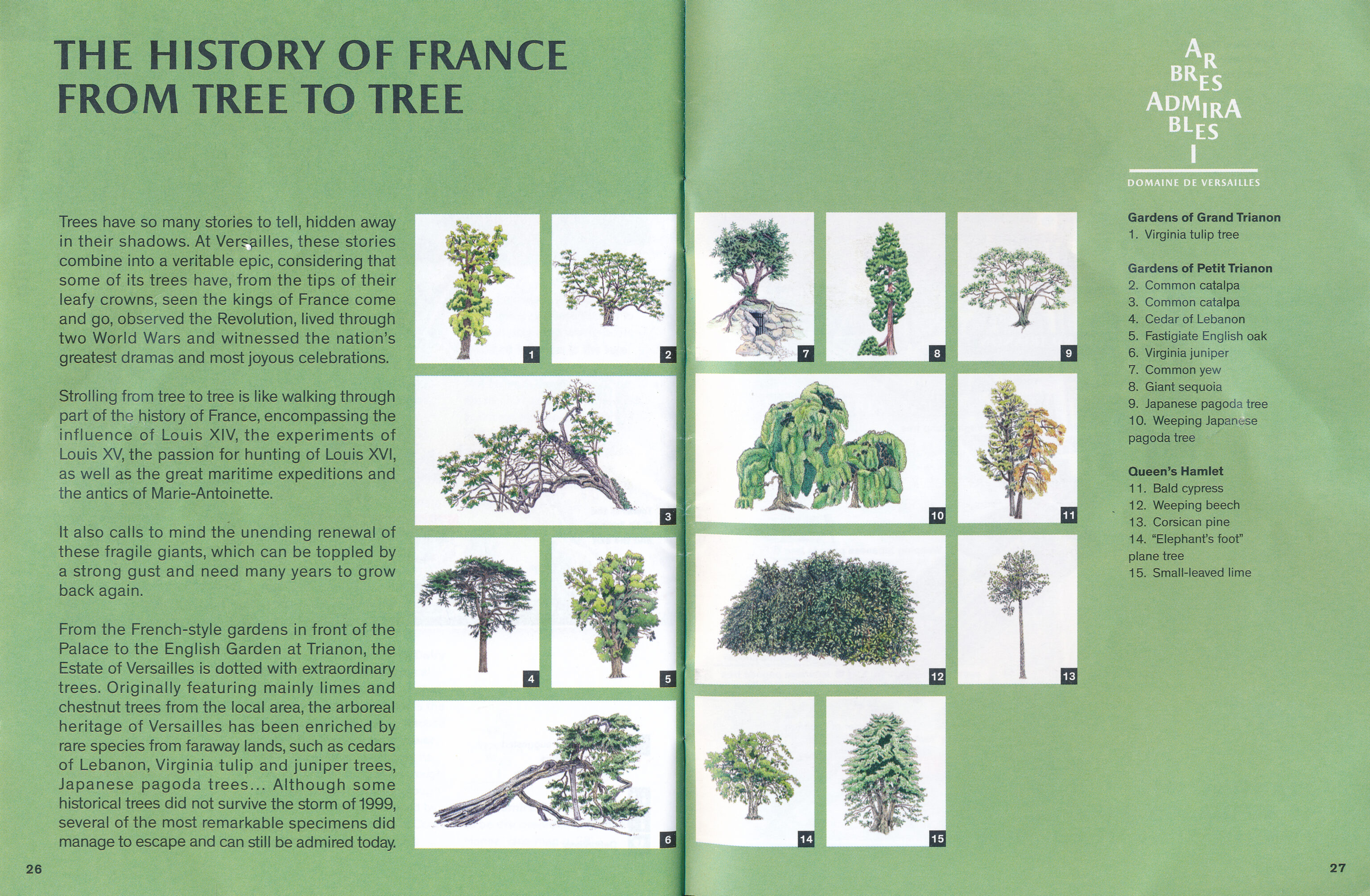
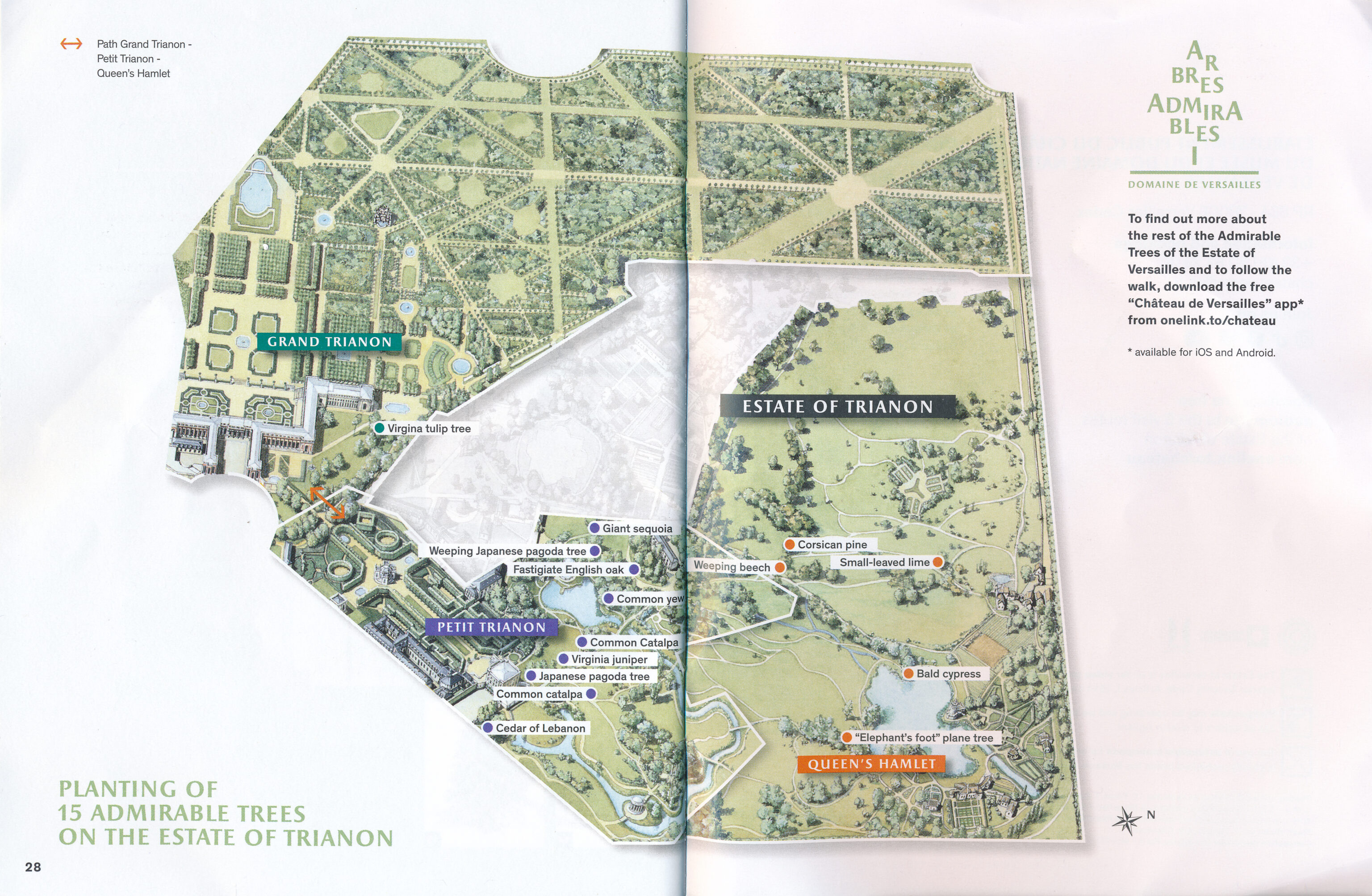
The estate contains two primarily buildings, the Grand and Petit Trianons. There is also a smaller building, the Queen’s Hamlet, that we didn’t visit as there wasn’t nearly enough time.
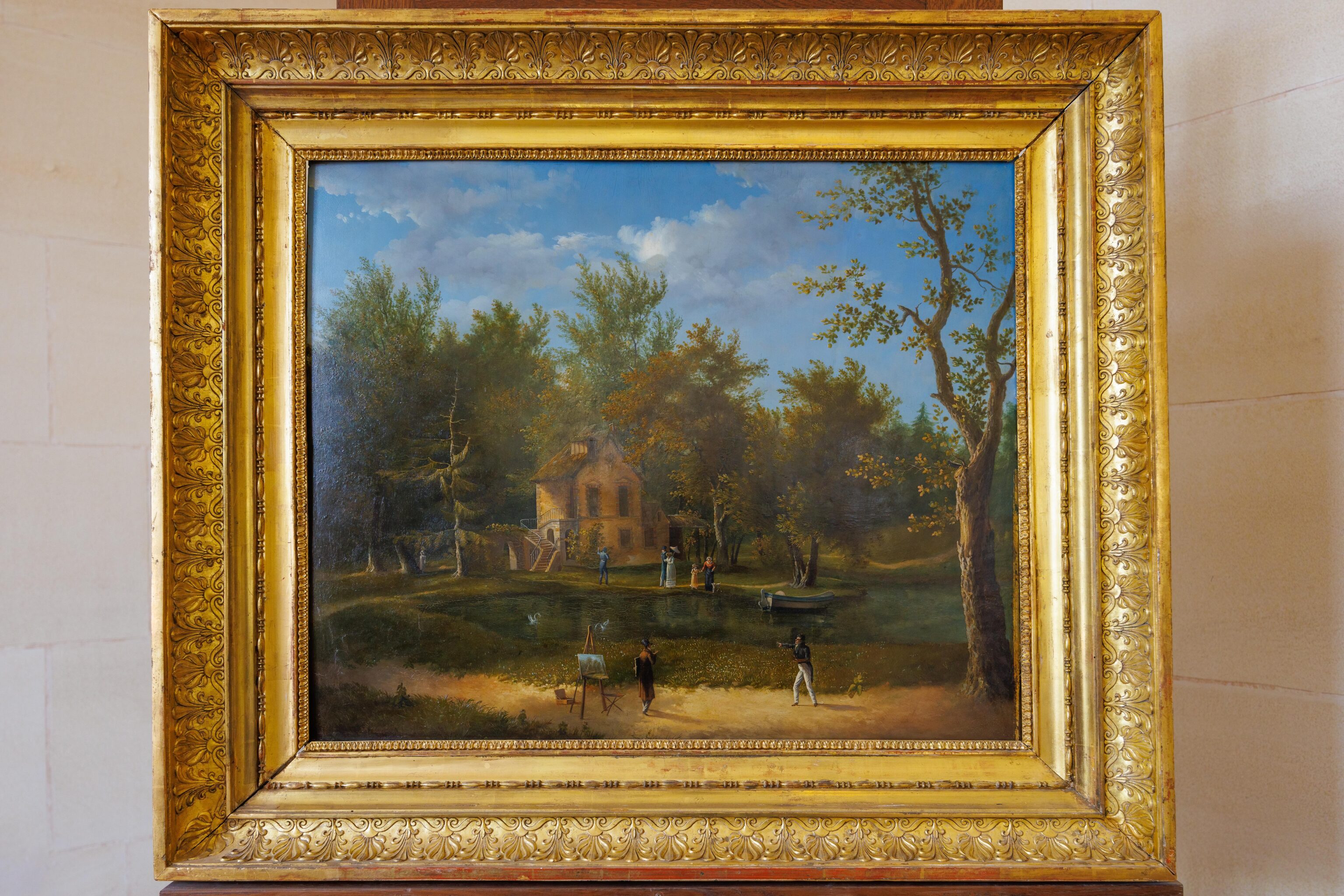
A painting at the Petit Trianon.
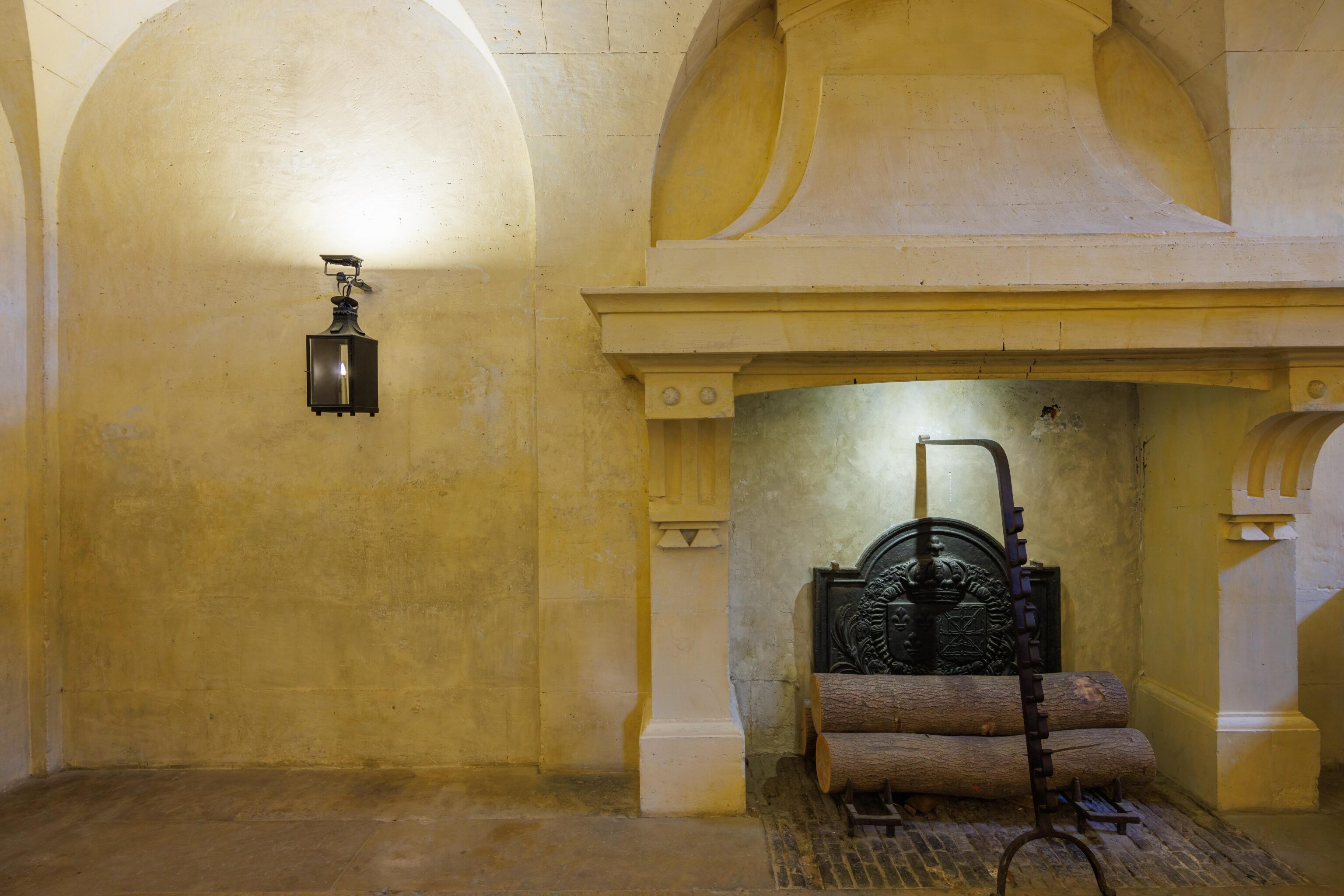
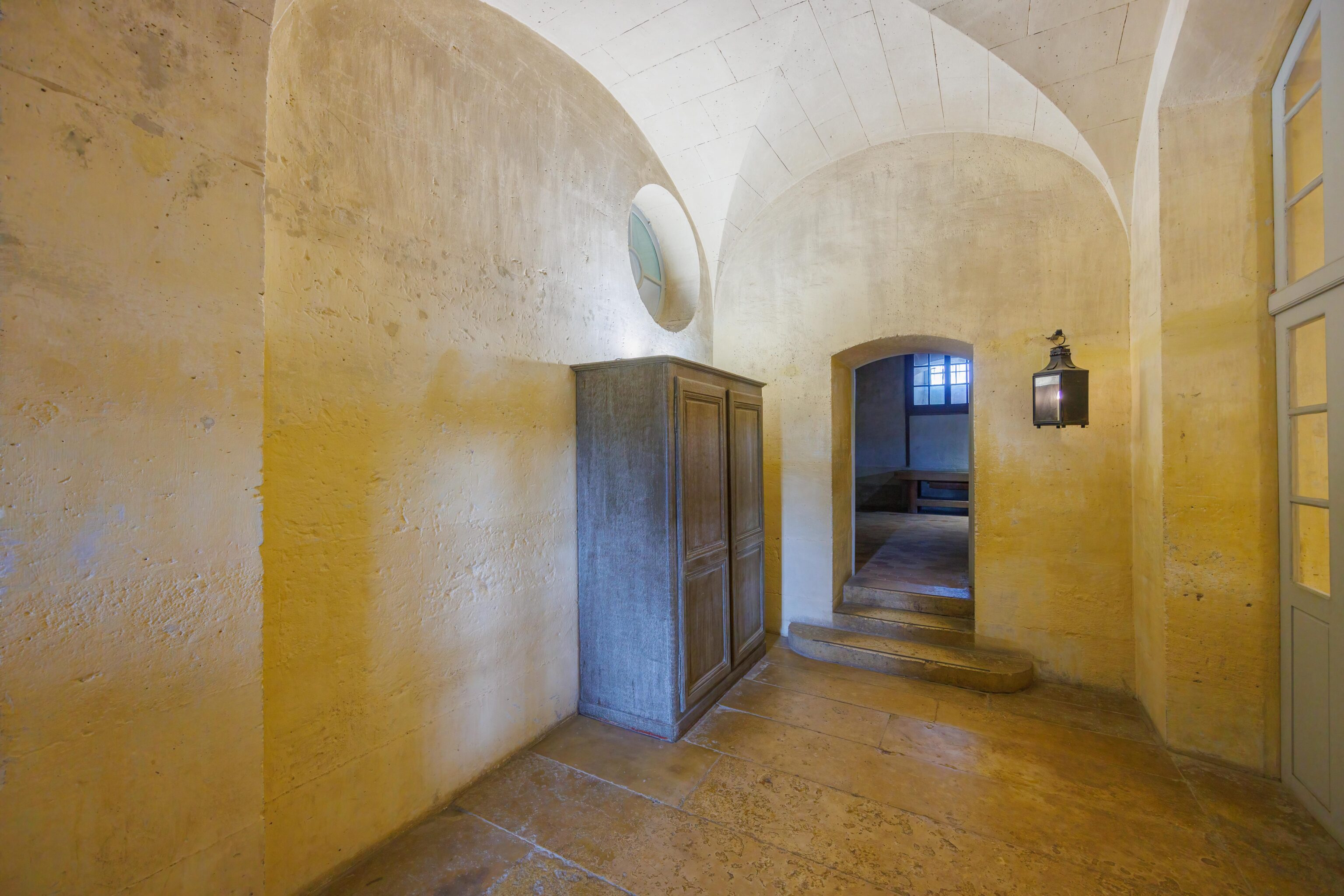
This section on the ground floor contained the Warming-up Room, used to warm up food before it was served.
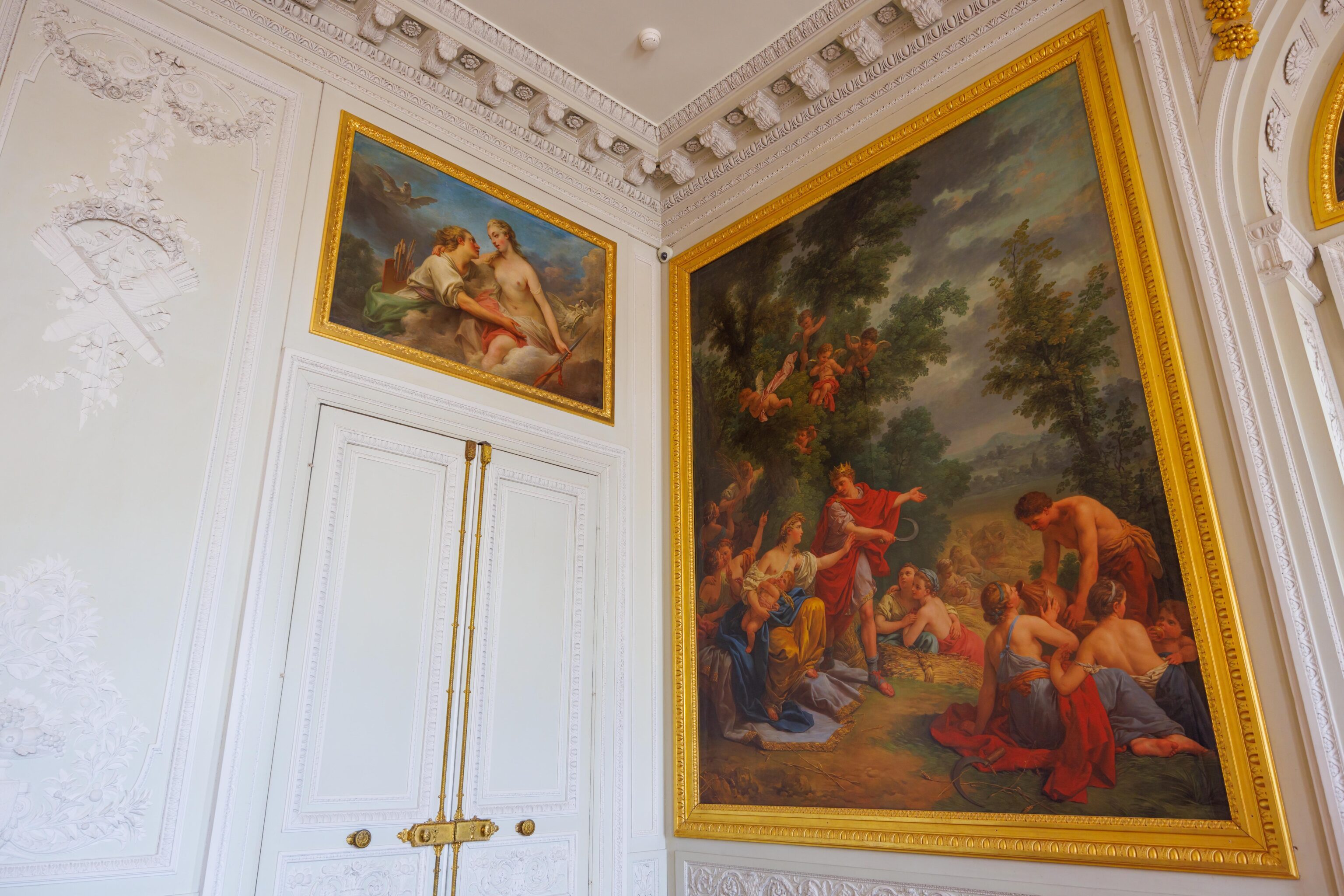
A bit grander, though not at the level of the palace.
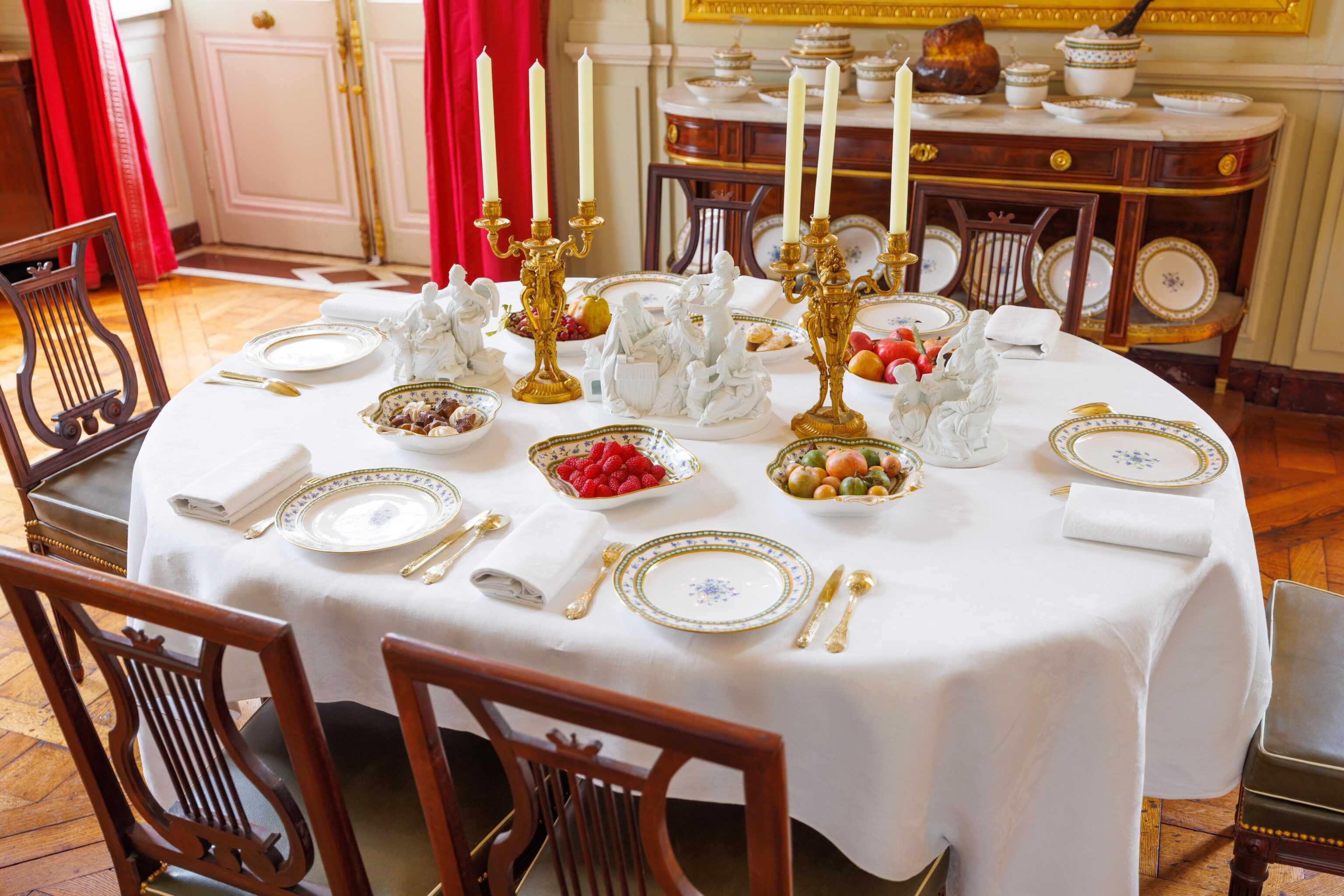
One of the dining rooms on the first floor.
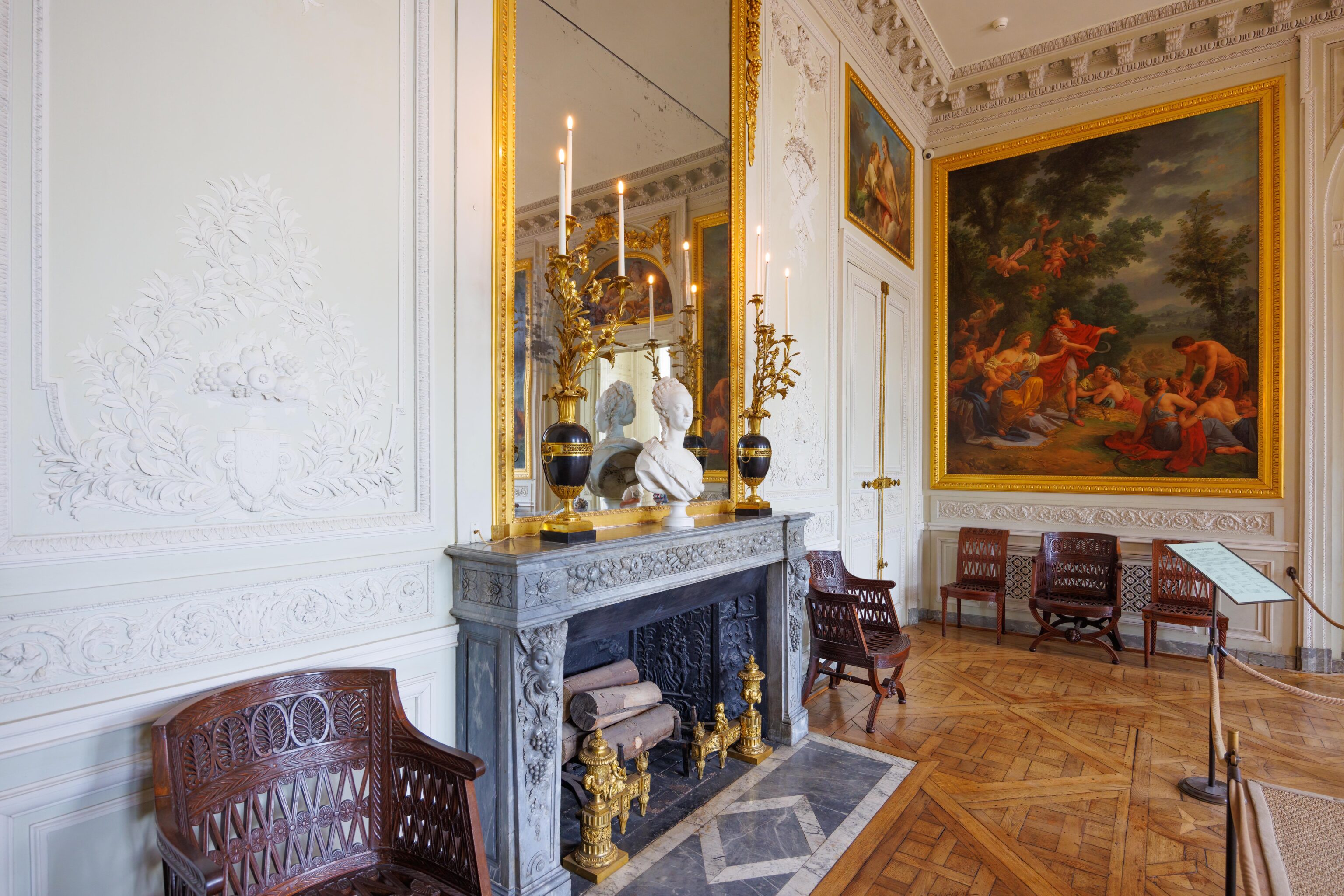
The fireplace in the Main Dining Room.
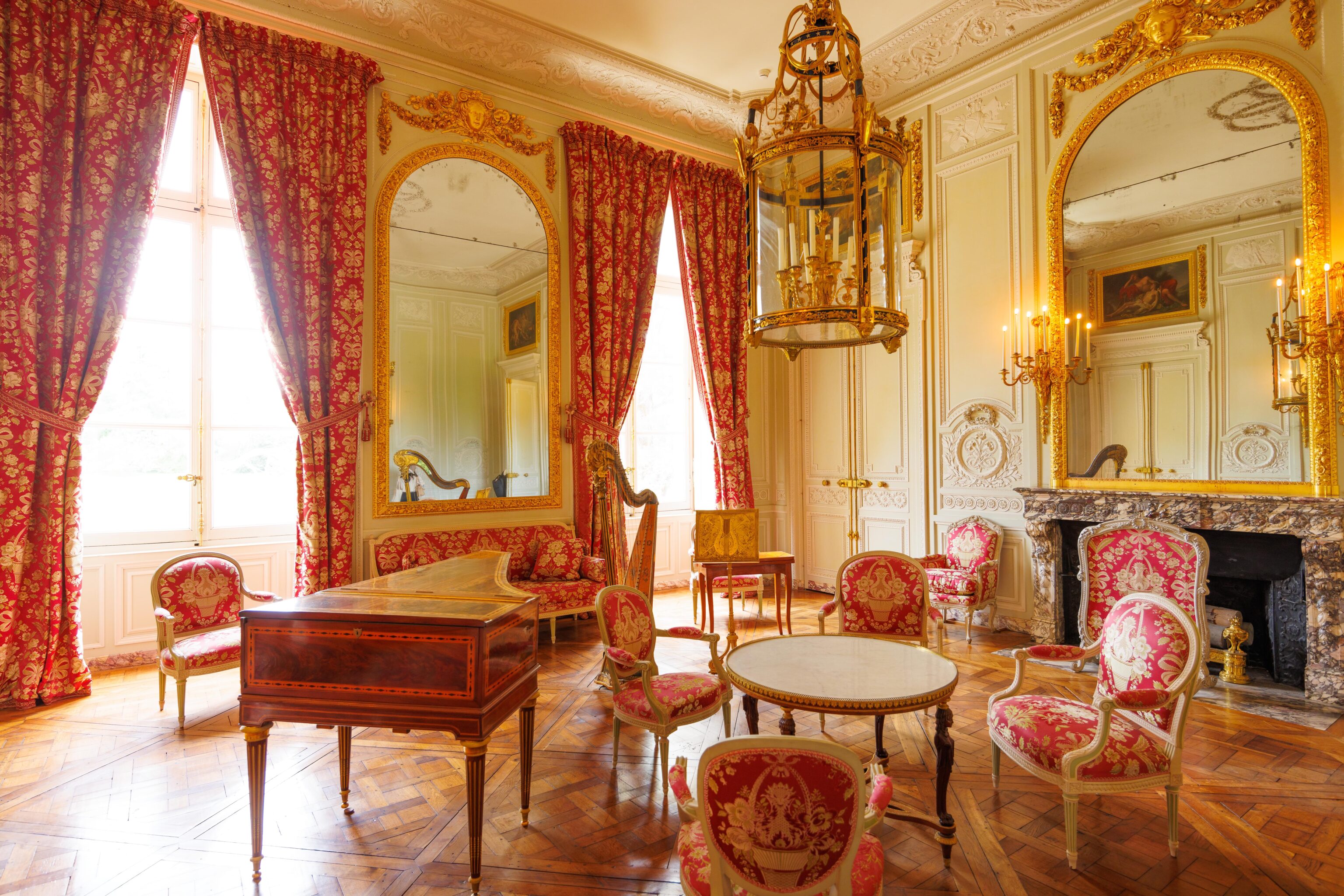
The Reception Room. The harp and piano in the room were both instruments that the Queen played.
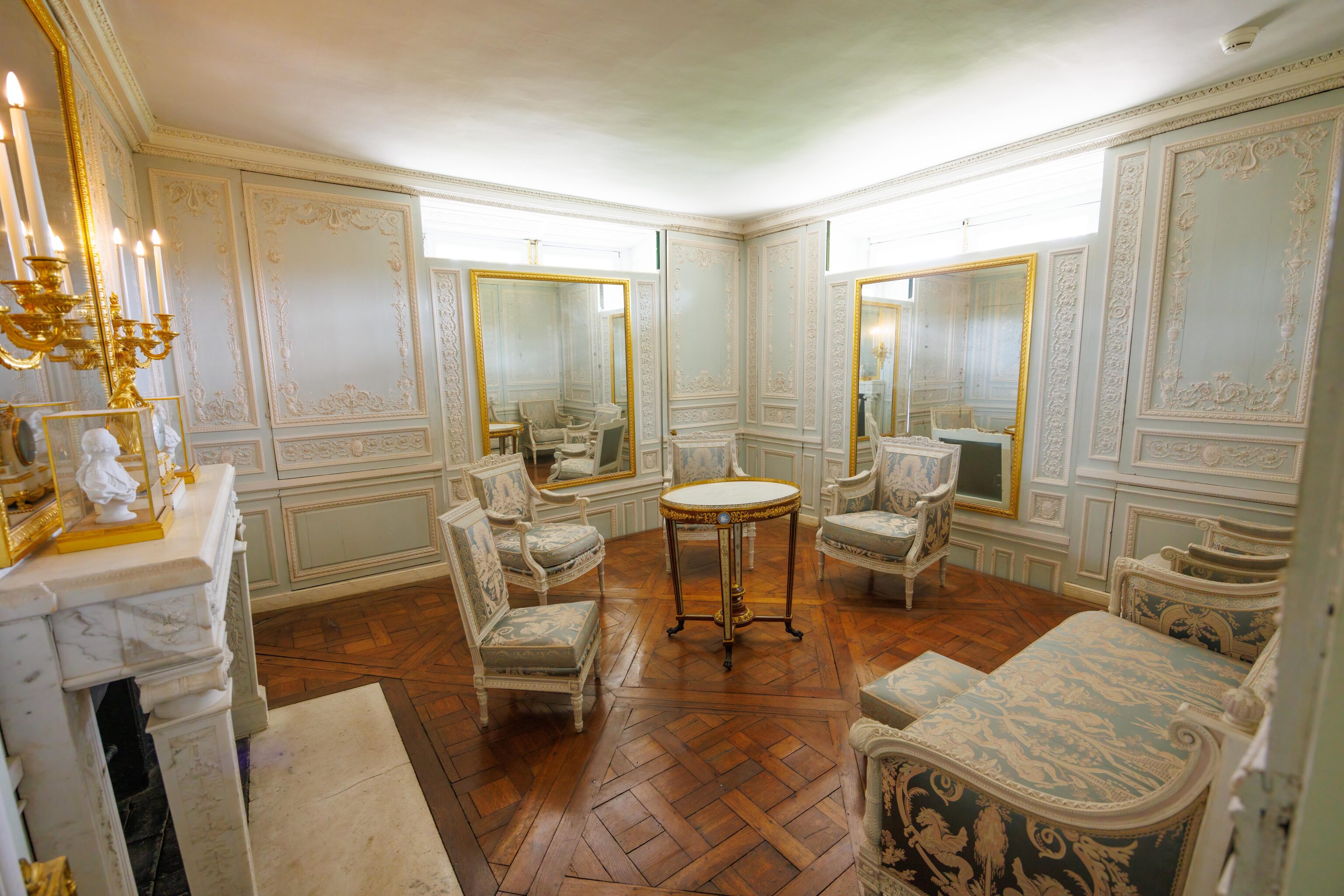
This room is described as the Movable Mirrors Boudoir. The Versailles website explains the name of this room7:
Formerly used by Louis XV, this room features a private staircase, which enabled the king to reach the mezzanine just above. When Marie-Antoinette moved into the Petit Trianon in 1777, she had the staircase removed and turned this small corner room into a private place of sanctuary. It still features her exquisitely detailed wainscoting, as well as the wood panels and movable mirrors requested by the queen. A mechanism on the floor below could be used to raise or lower these panels, which, here, replace the shutters and, when raised, completely conceal the doorways.
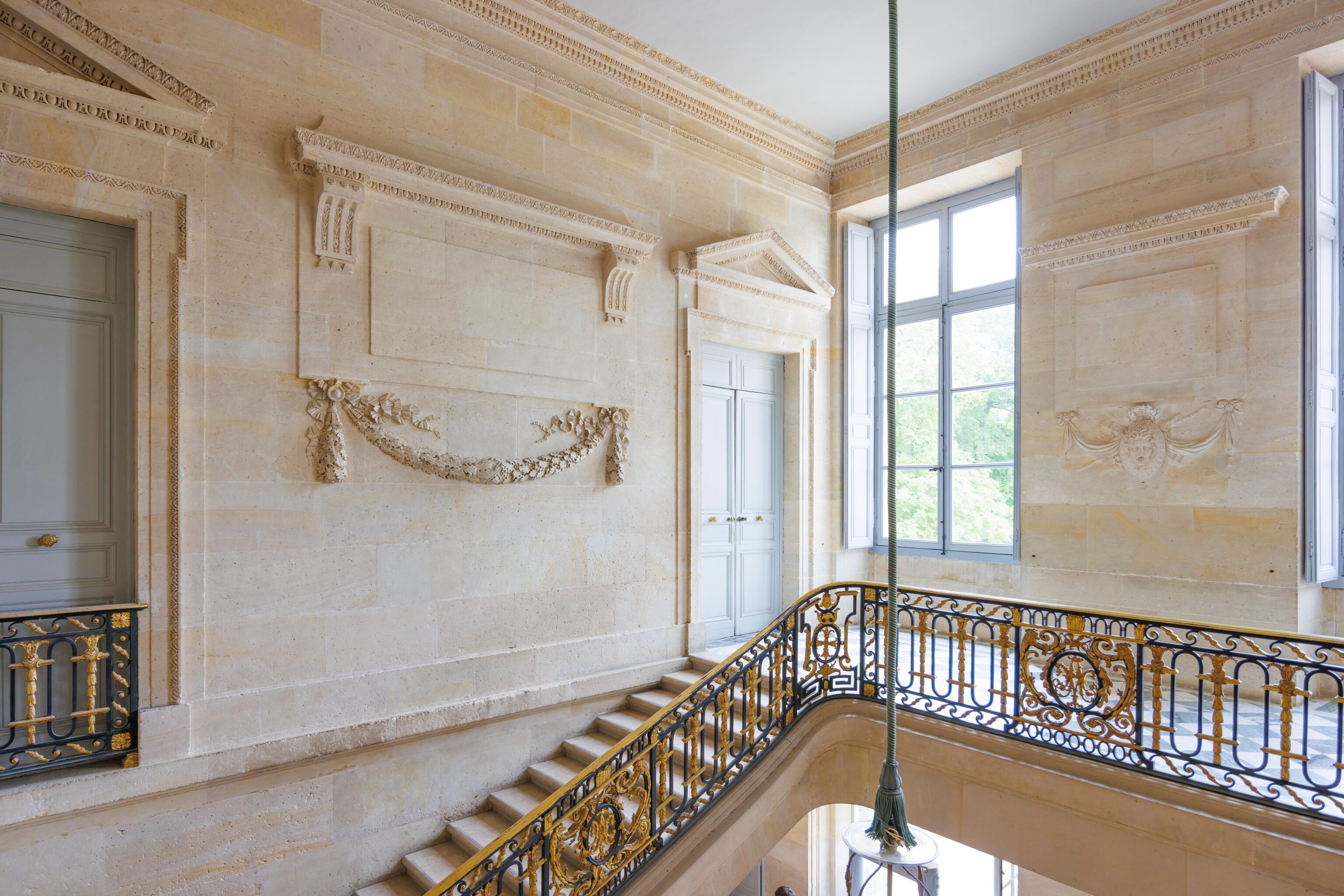
The top of the Honour Staircase.
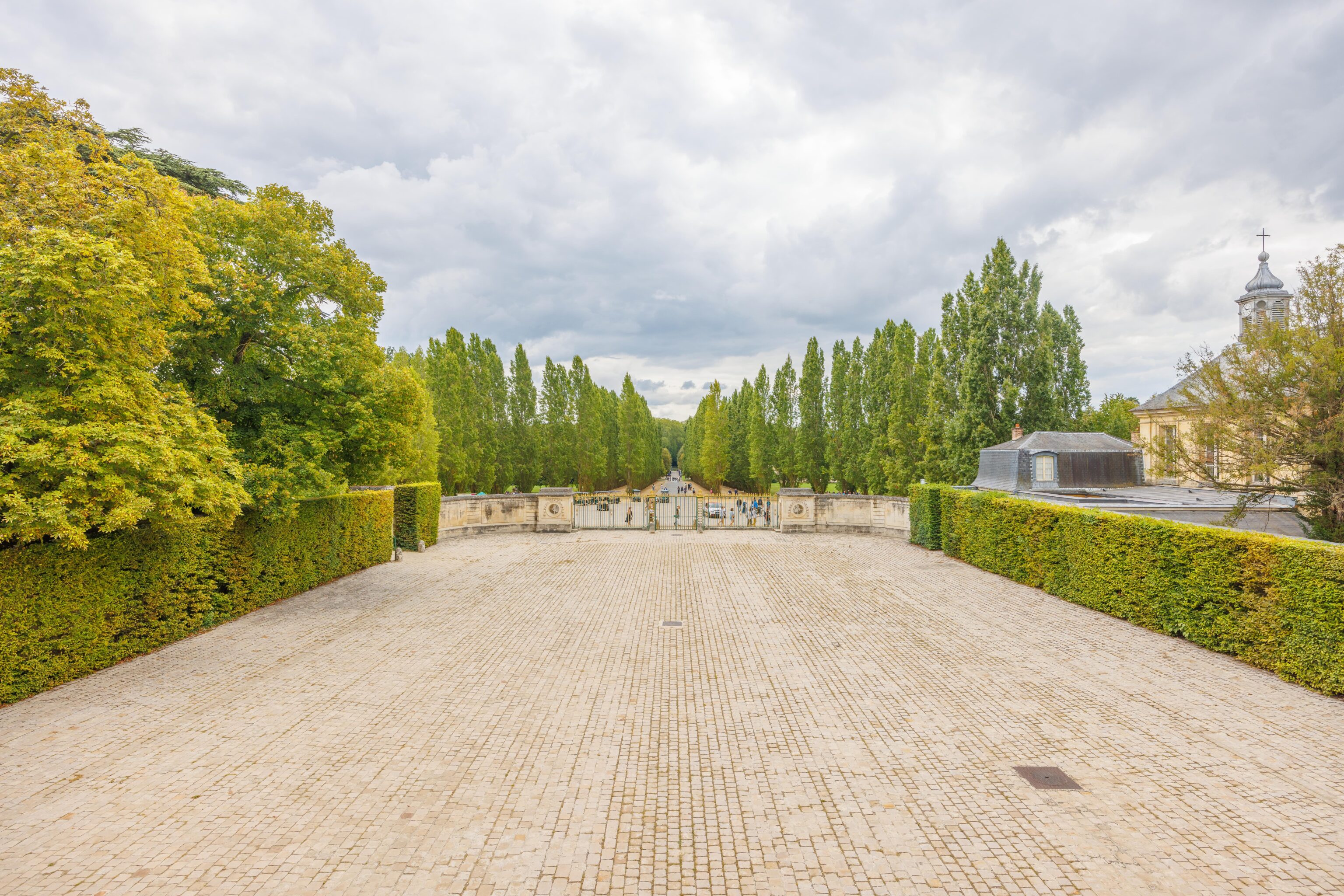
The view from within the Petit Trianon to the south where we entered.
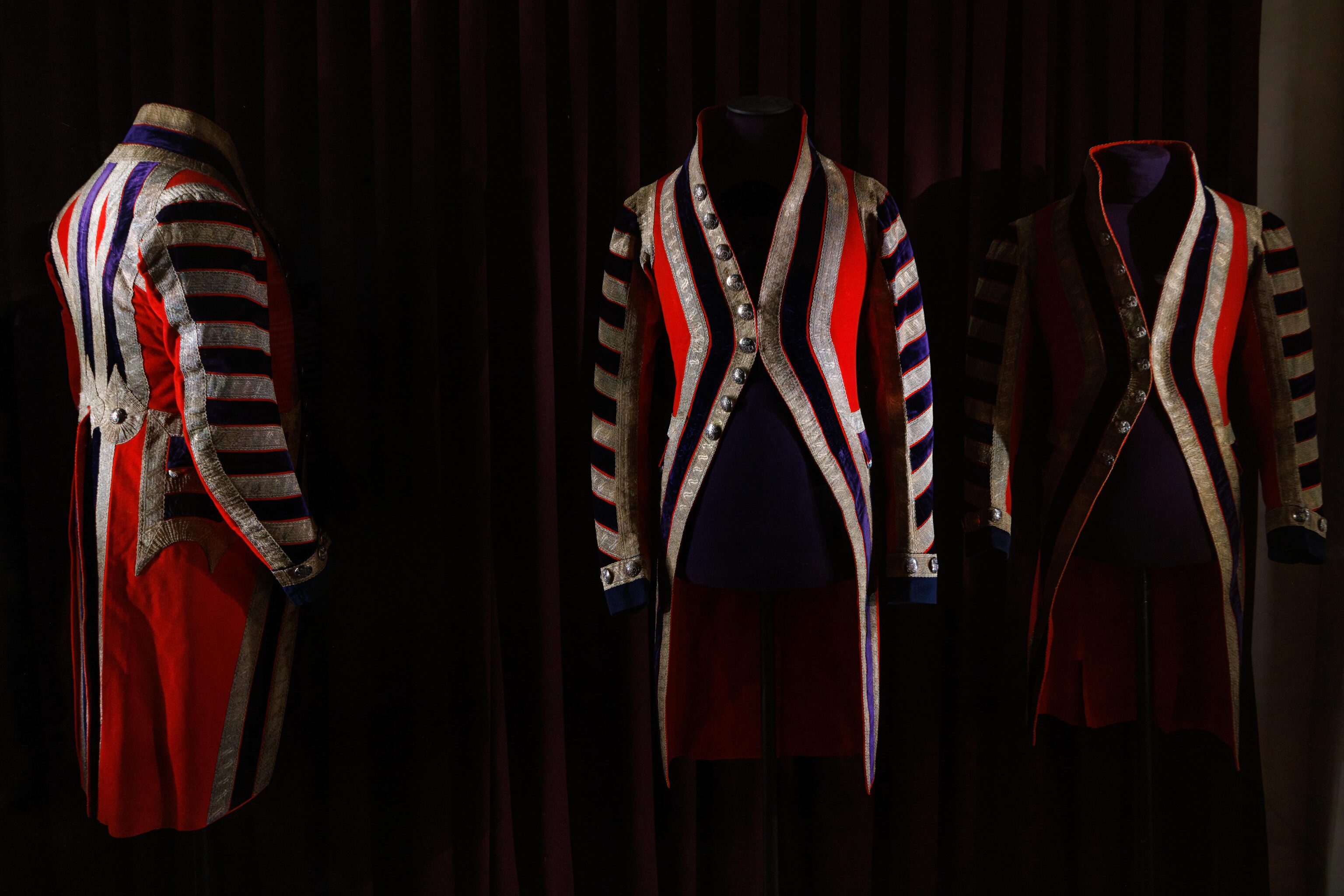
This uniform that was on display is described in a Flickr photo as being the uniform of the Swiss Guards. They were hired by the King as a defensive force for the French royal court. The Lion Monument in Lucerne, Switzerland honors the Swiss Guards who died defending the Tuileries Palace during the French Revolution.
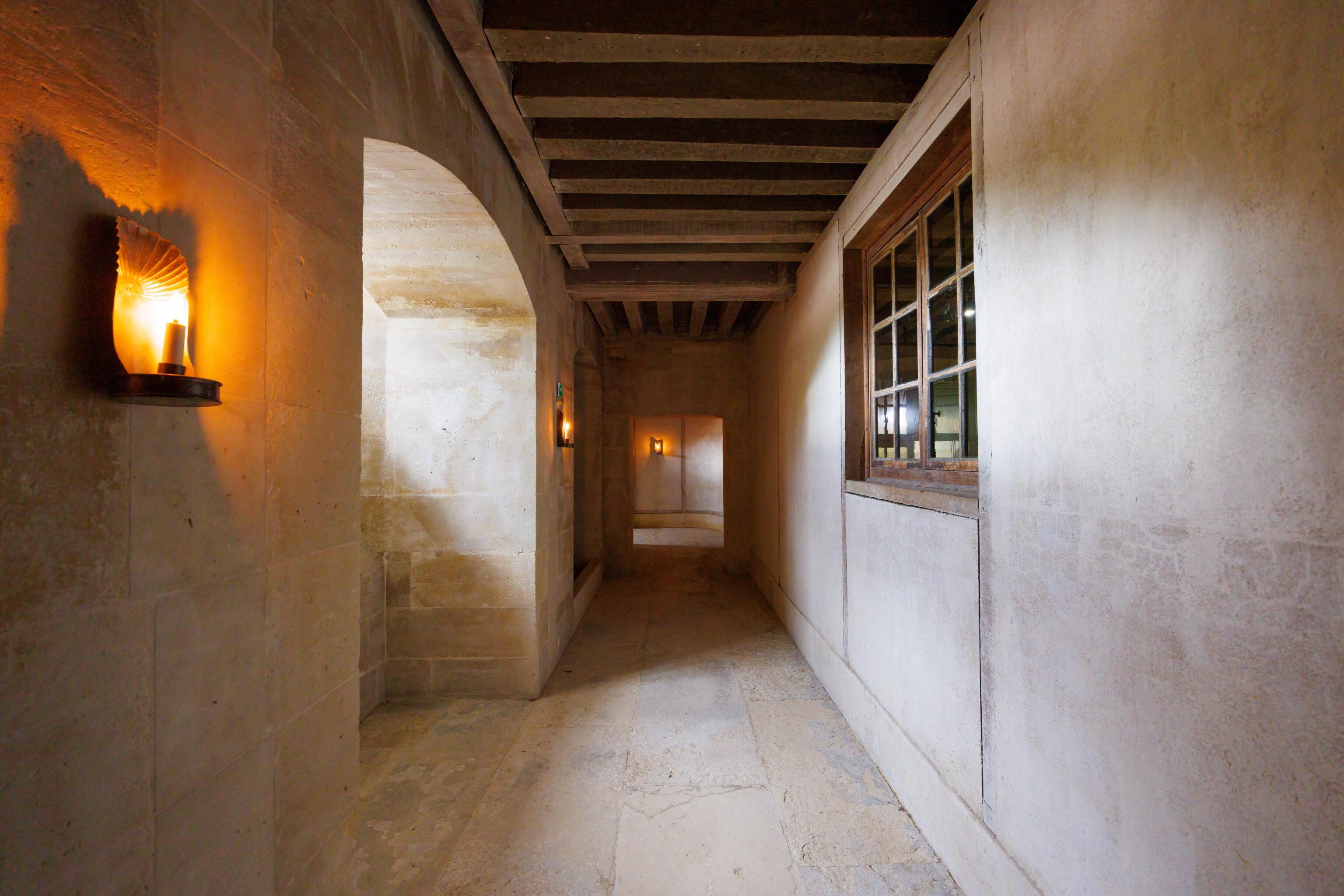
A simple undecorated hallway on the ground floor.
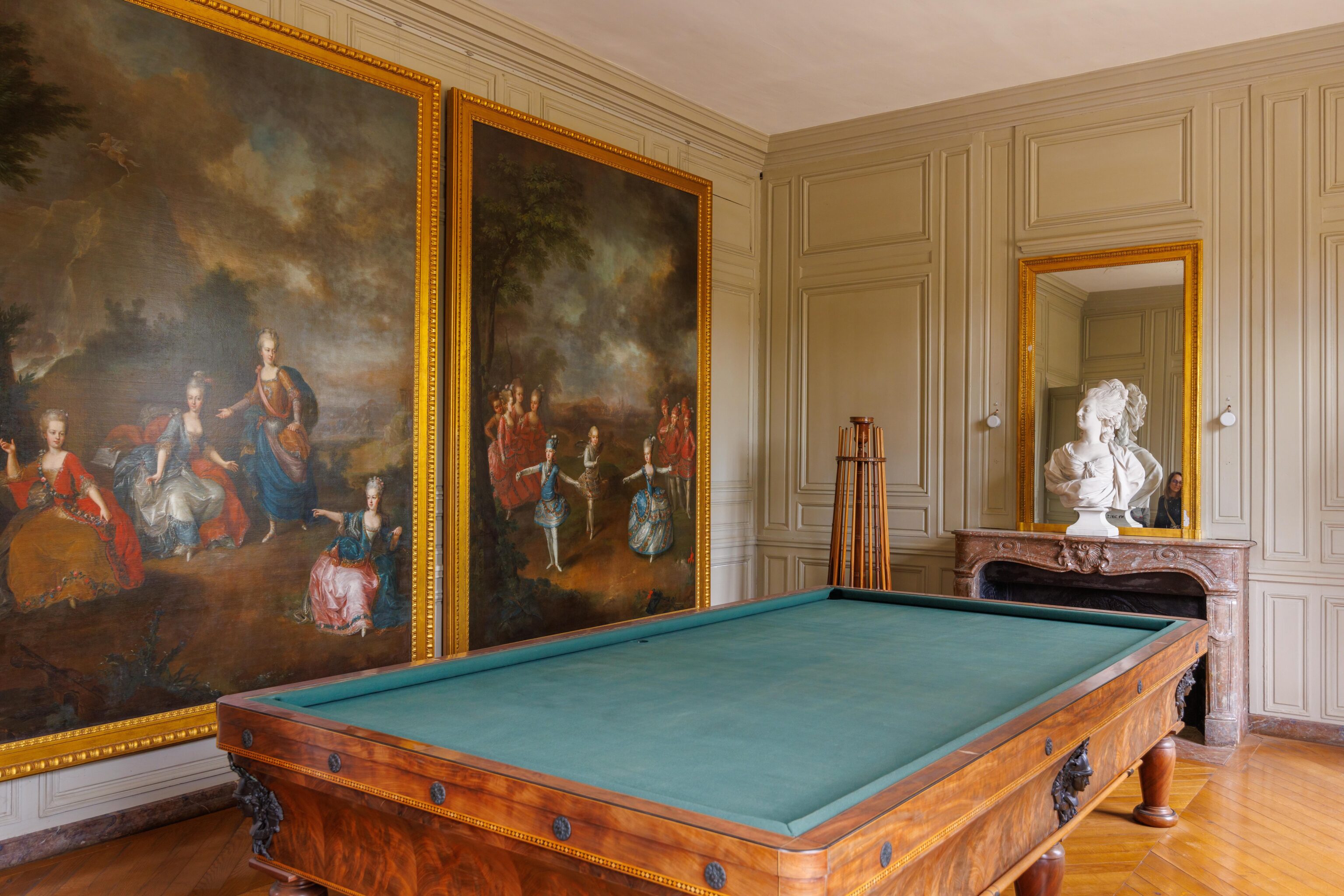
The Billiards Room on the ground floor. The billiards table is different from modern tables as it does not have pockets for the balls to fall into. This seems to be a variation that originated in France in the 18th century.
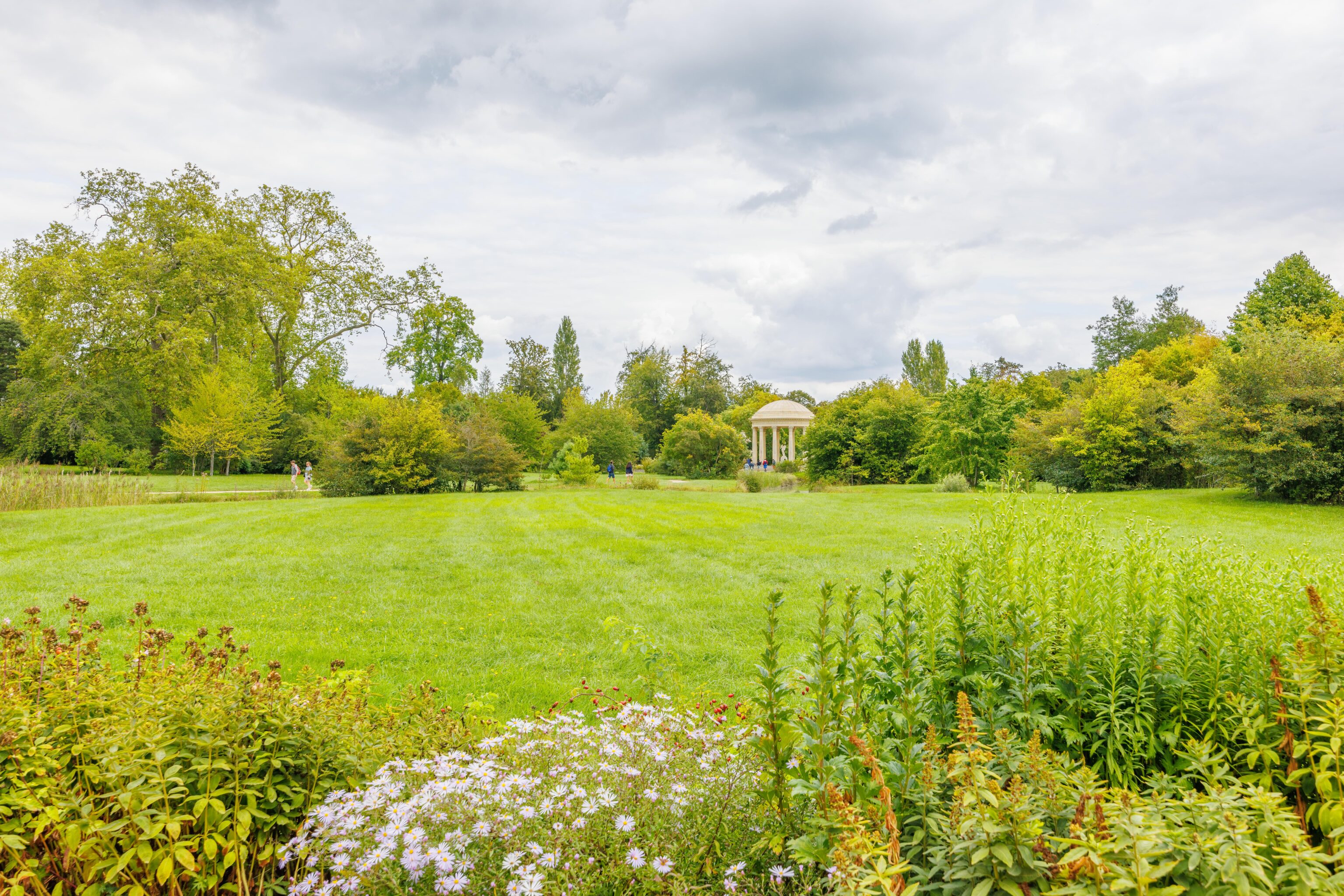
After touring the Petit Trianon, we went for a short walk through a small section of its gardens.
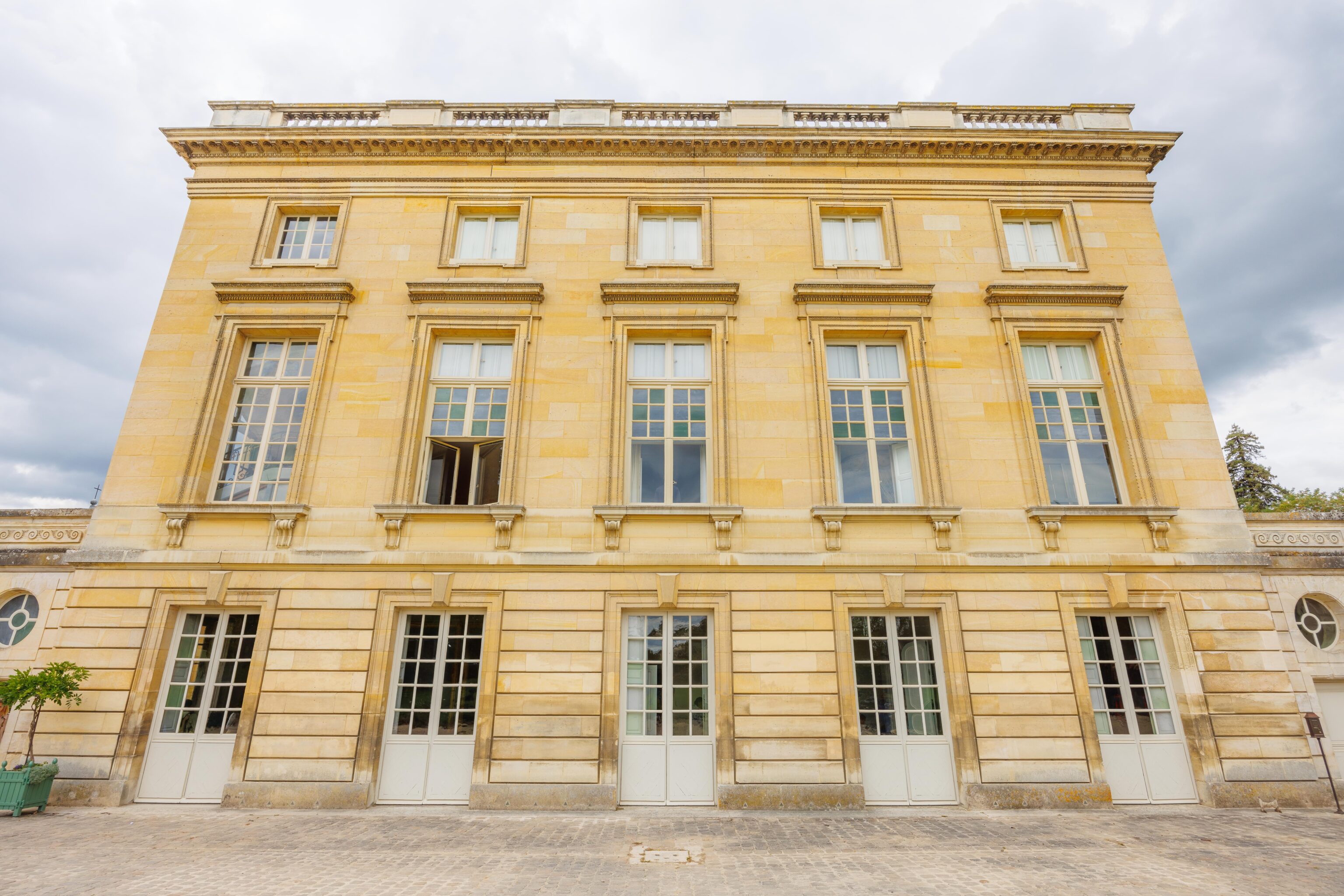
The east side of the Petit Trianon.
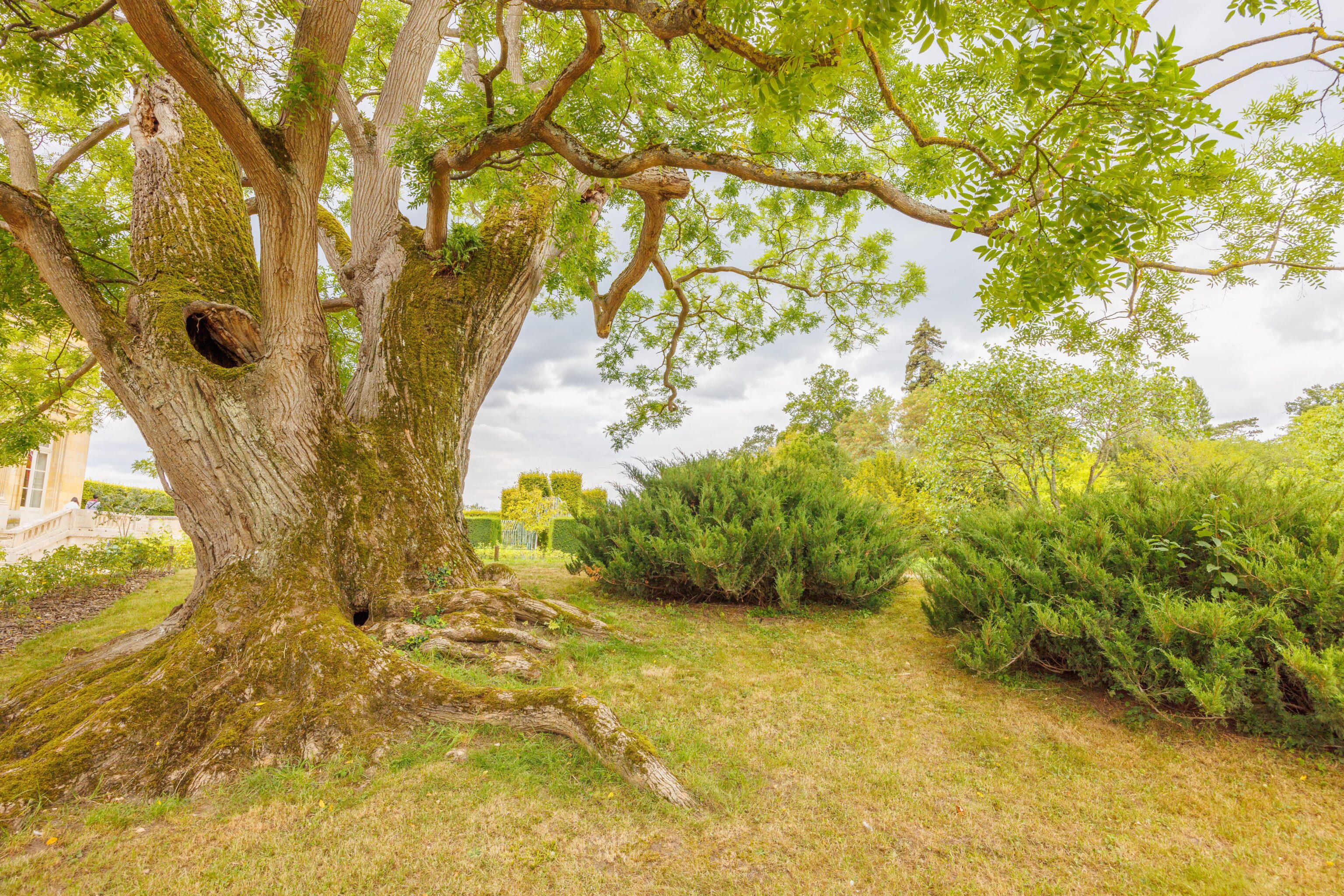
We walked to the north, passing by this large tree.
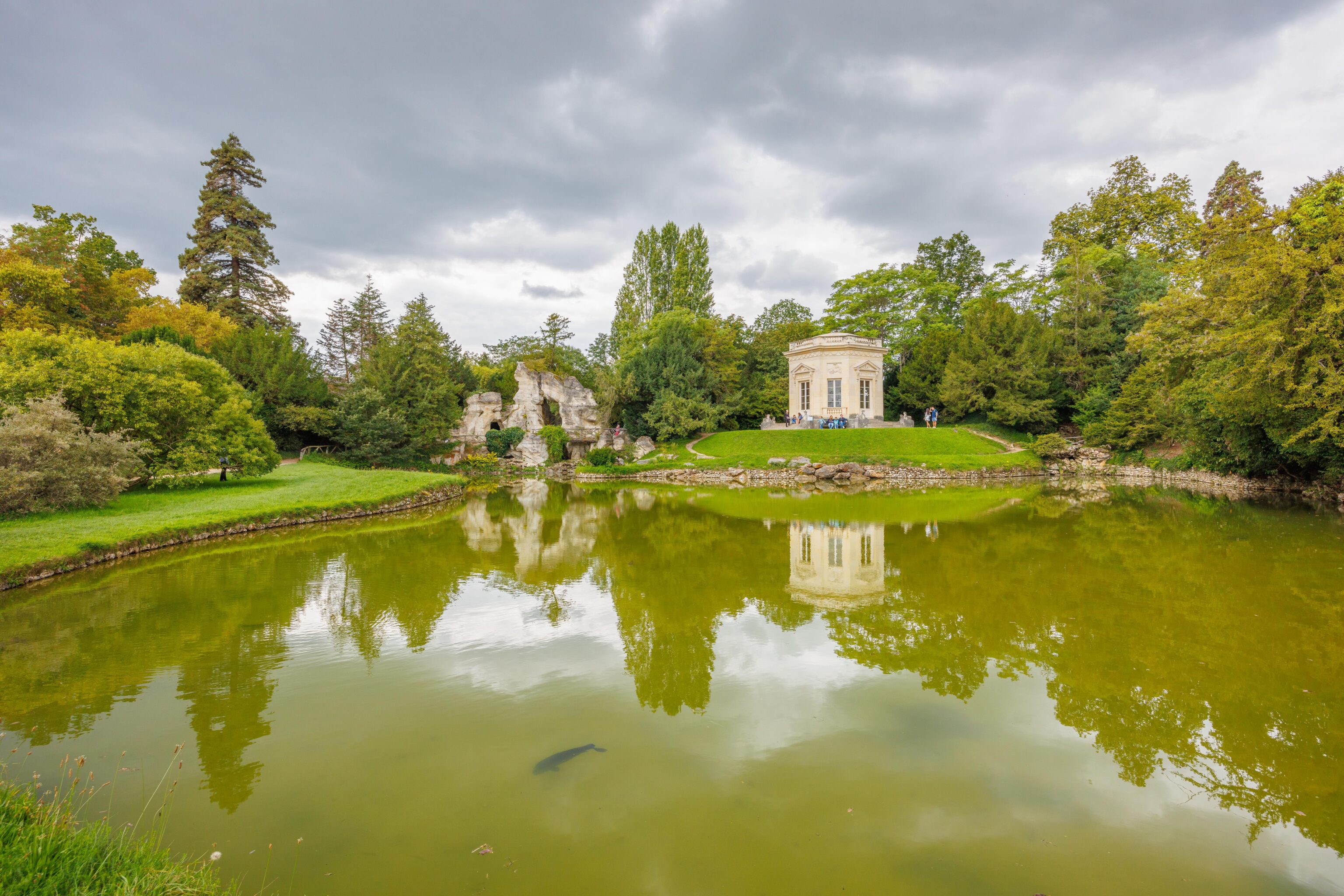
We soon reached this small lake, creatively named the Small Lake on the map.
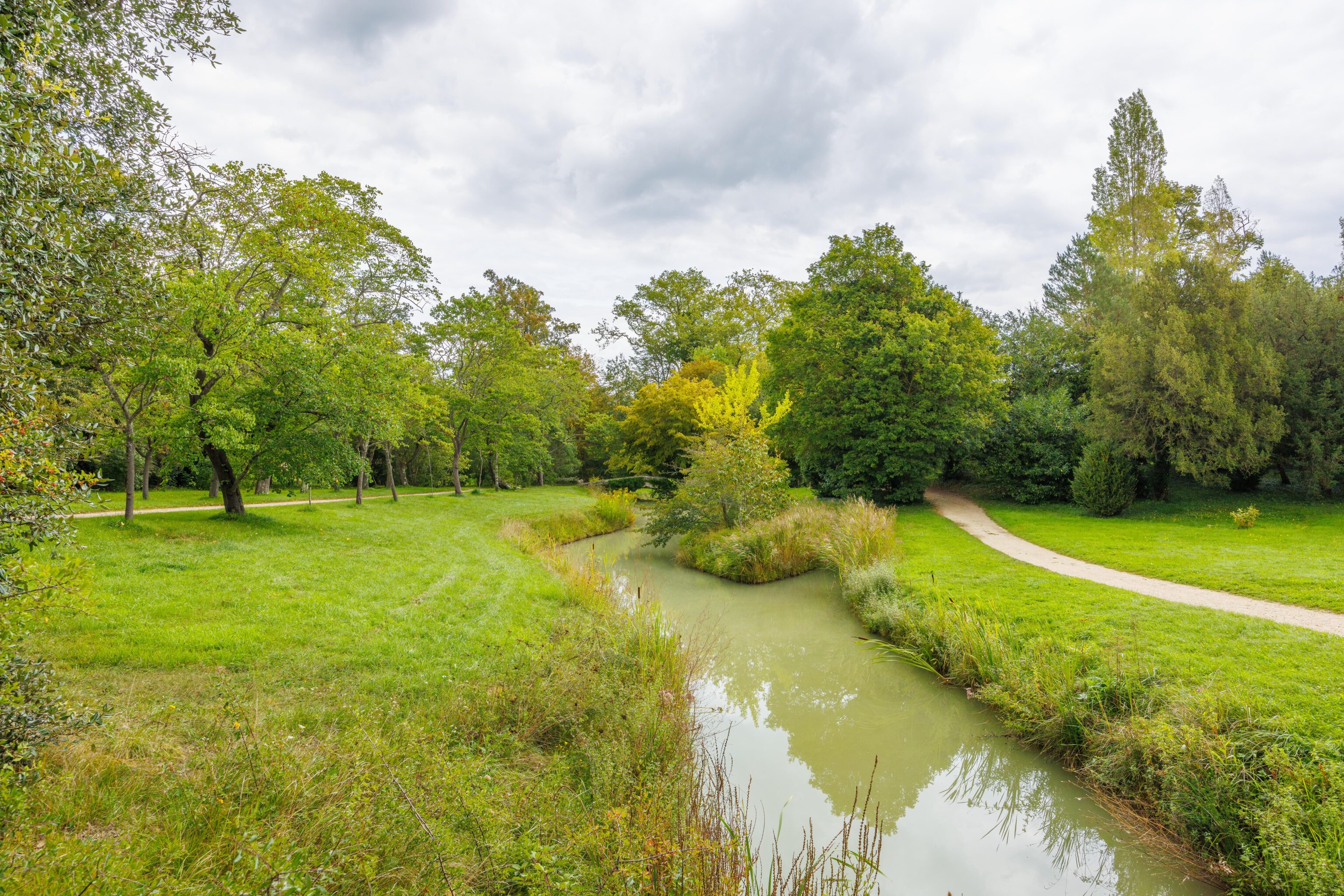
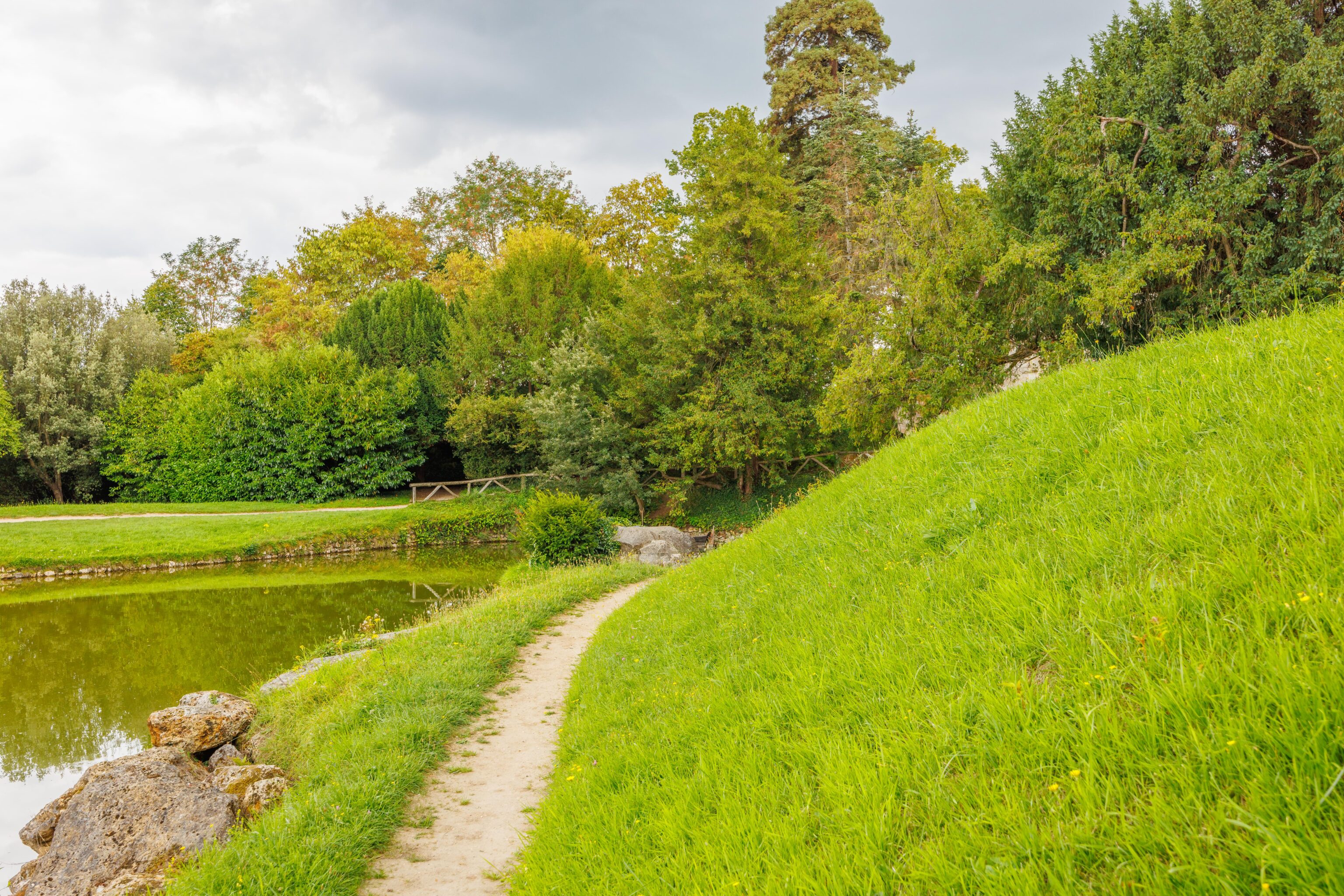
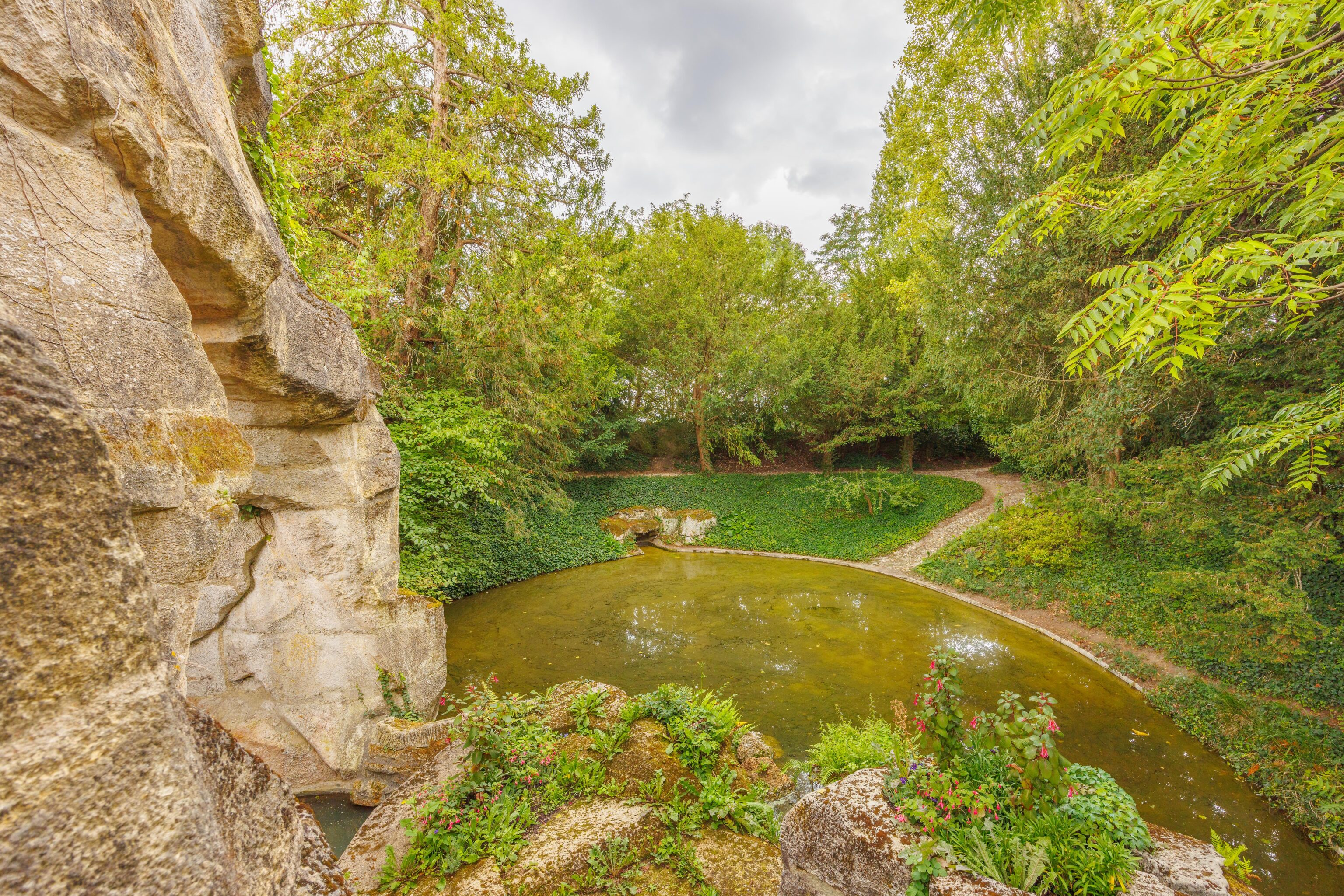
We walked around the lake, eventually ending up at the also creatively named Rock.
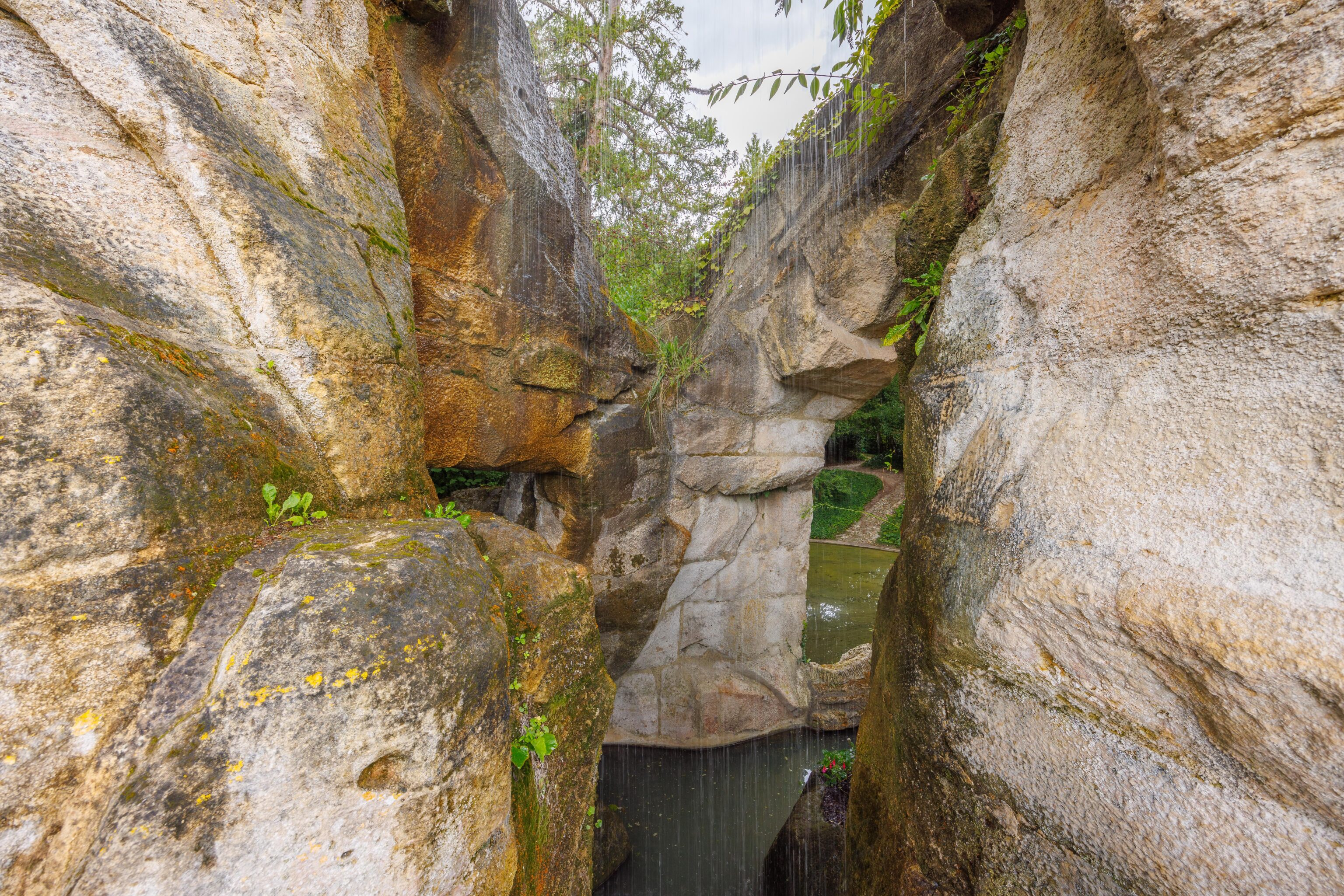
The Rock has a small artificial waterfall.
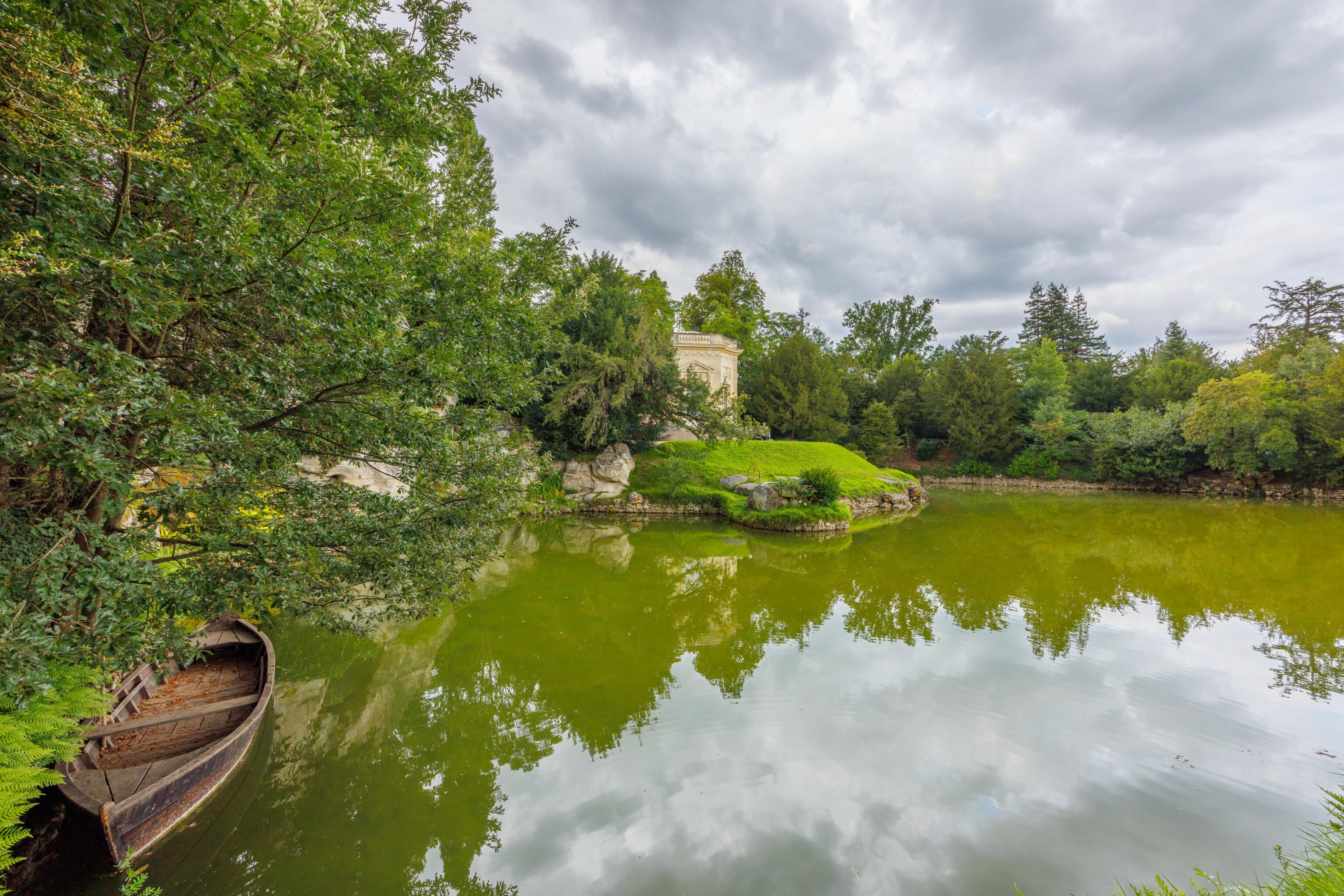
We continued on to complete our partial loop around the lake.
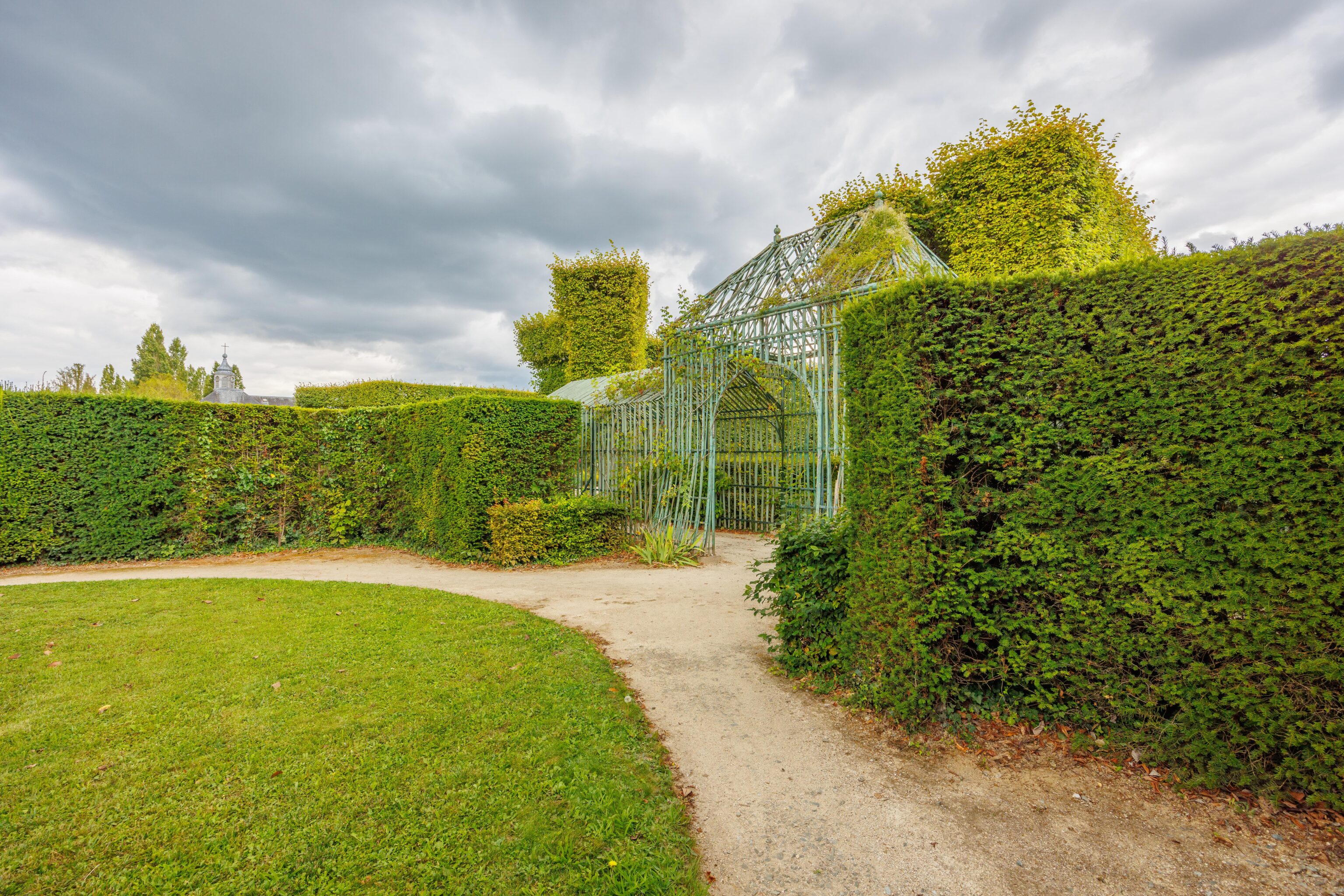
From here, we headed towards the French Garden which sits between the Grand and Petit Trianons.
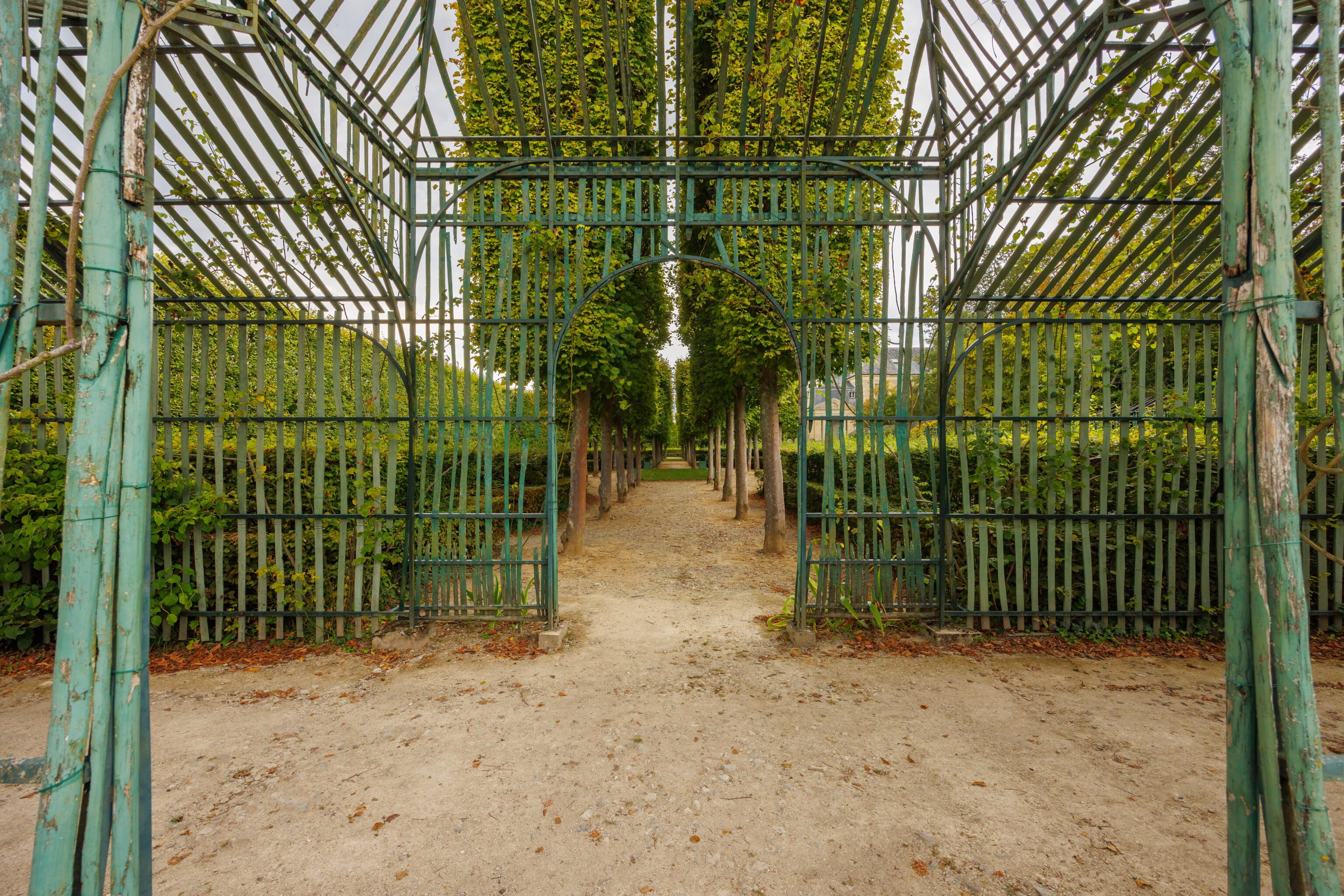
The landscaping is quite elaborate.
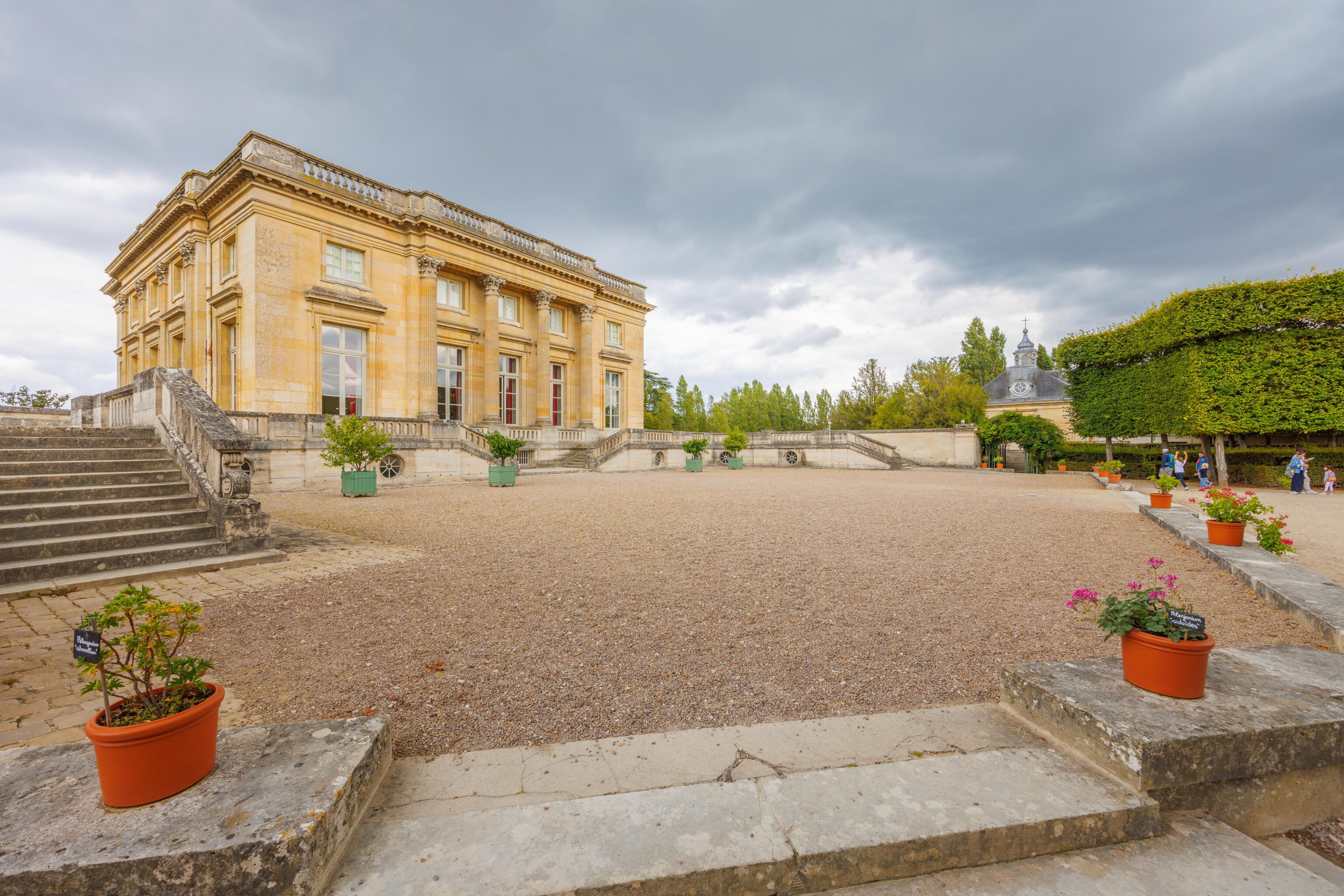
We passed by Petit Trianon on its west side.
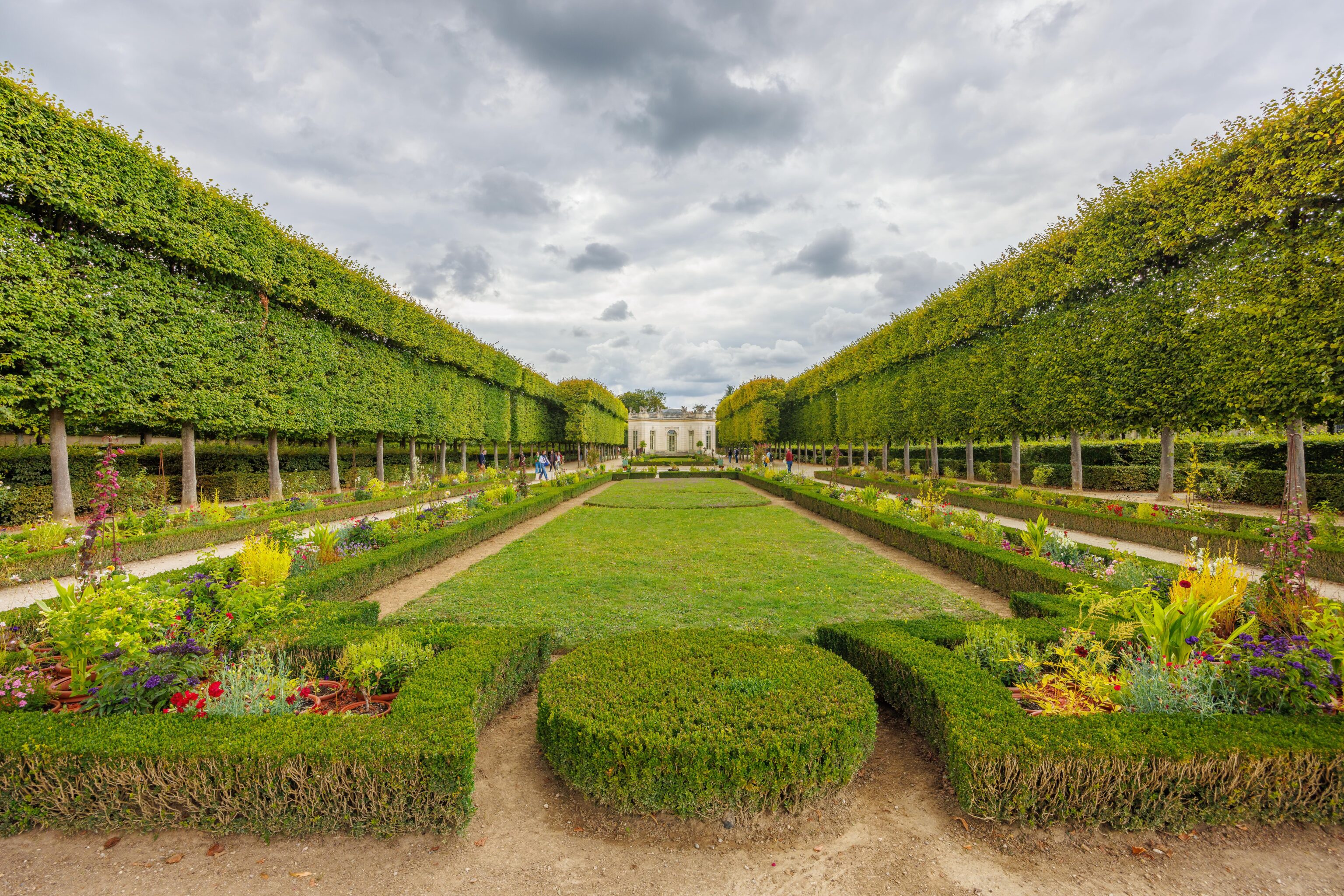
We entered the center section of the French Gardens. The building in the distance is the French Pavilion.
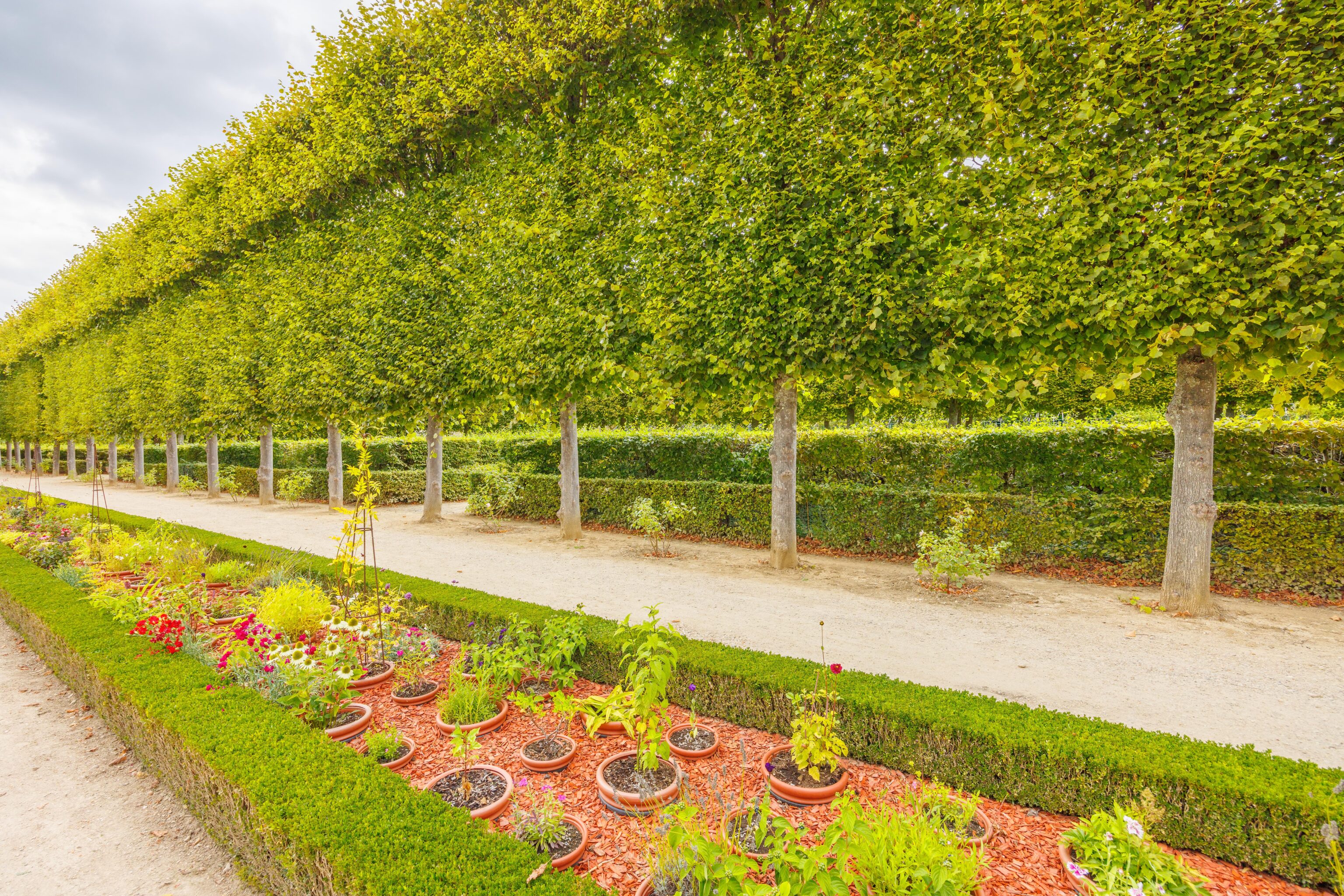
The gardens here are of a much smaller scale compared to the ones by the palace but no less grand.
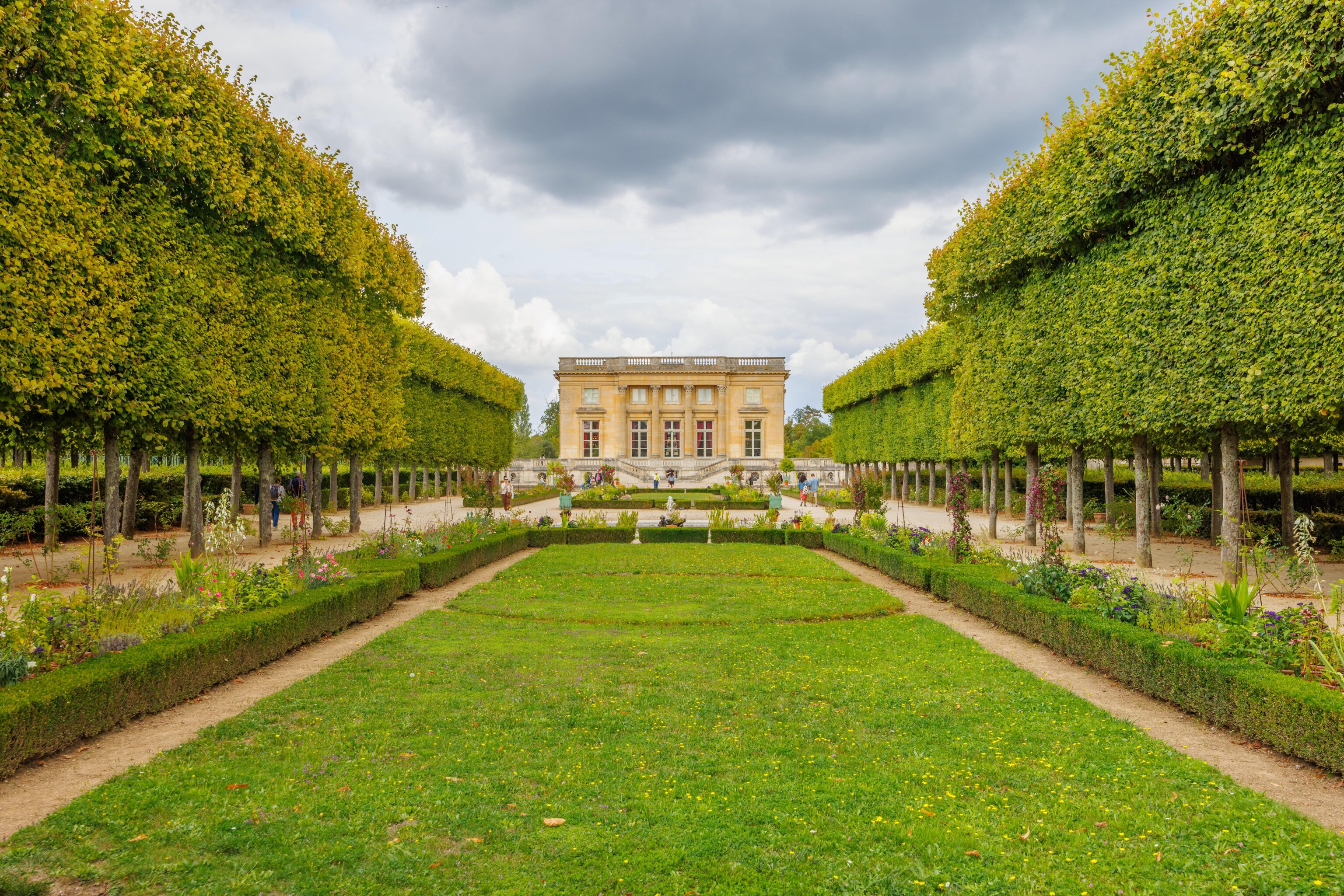
The Petit Trianon from around the middle of the French Garden.
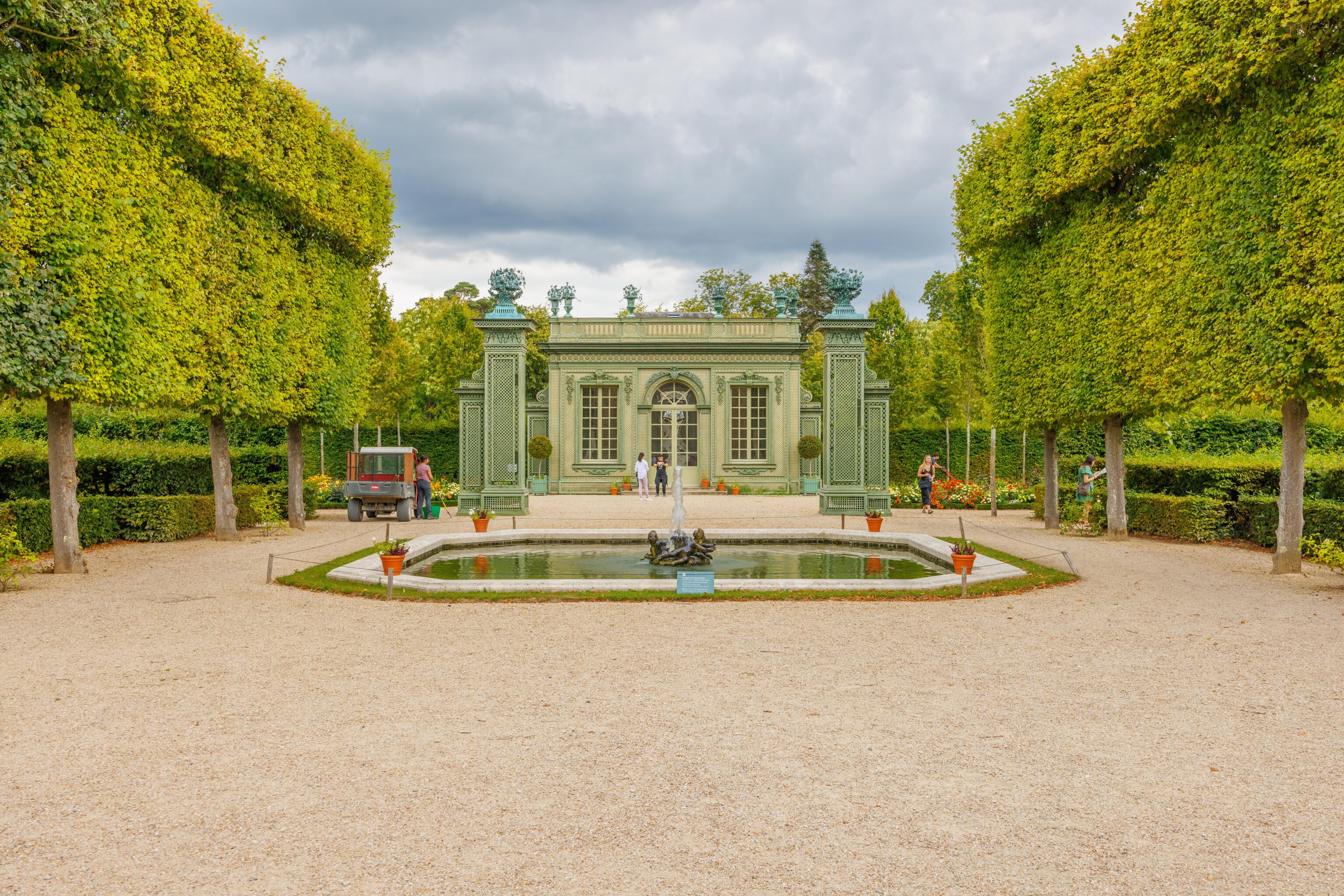
We walked by the French Pavilion to get to the Grand Trianon.
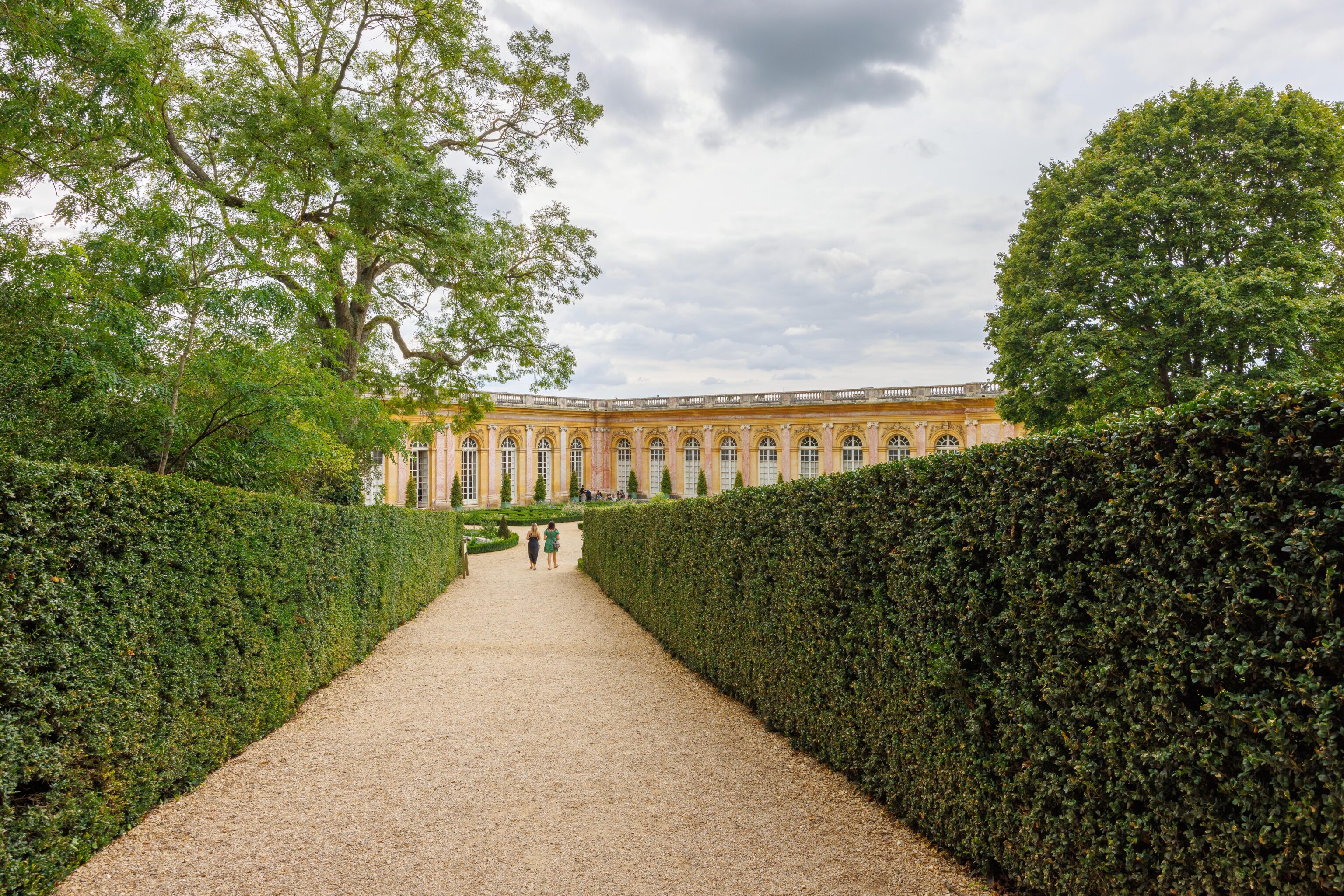
We could see the Grand Trianon in front of us! We could already tell that it is a much larger building than the Petit Trianon that we just visited.
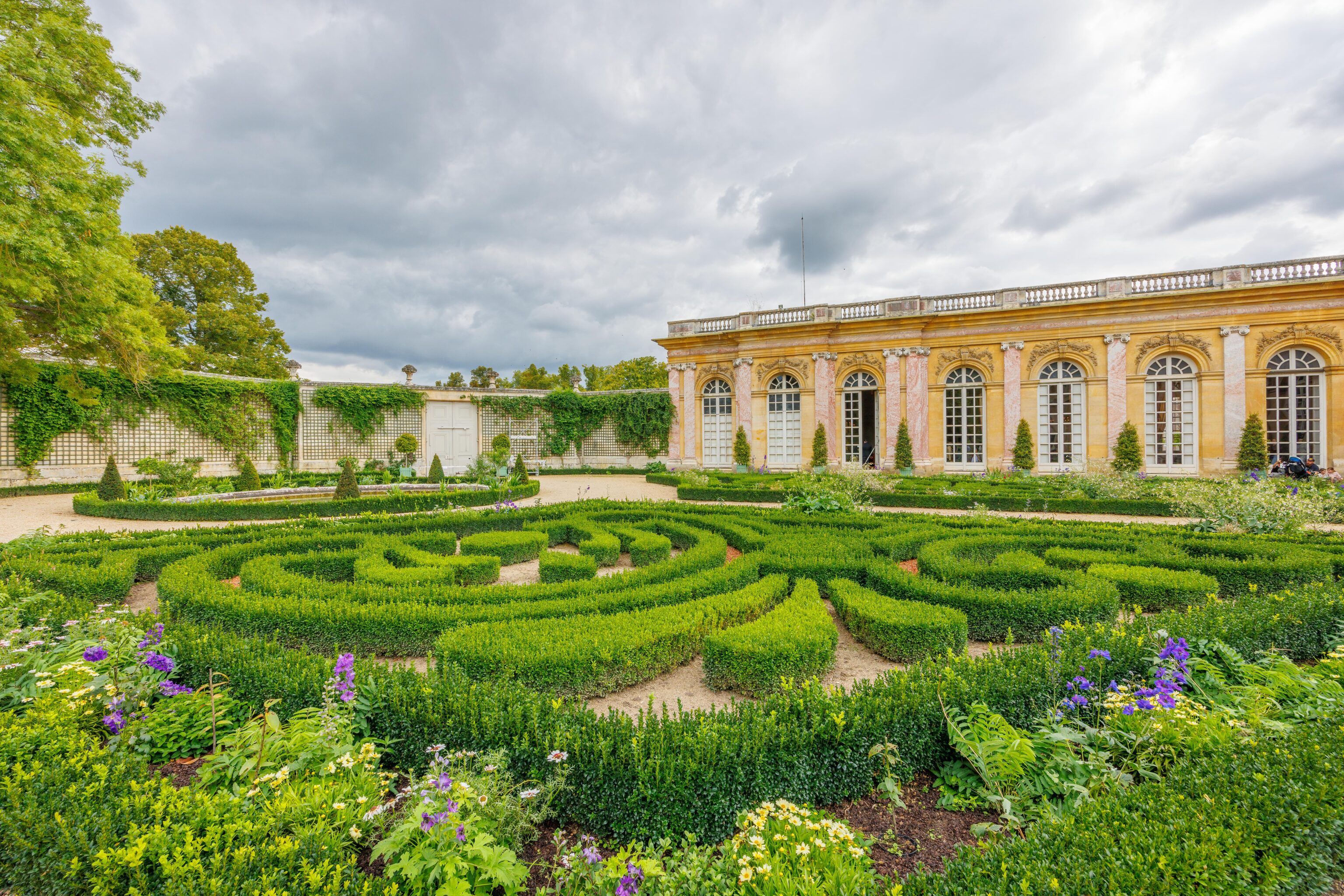
The King’s Garden. The brochure describes it as being formerly surrounded by walls. Napoleon removed the walls to link the Grand and Petit Trianons.
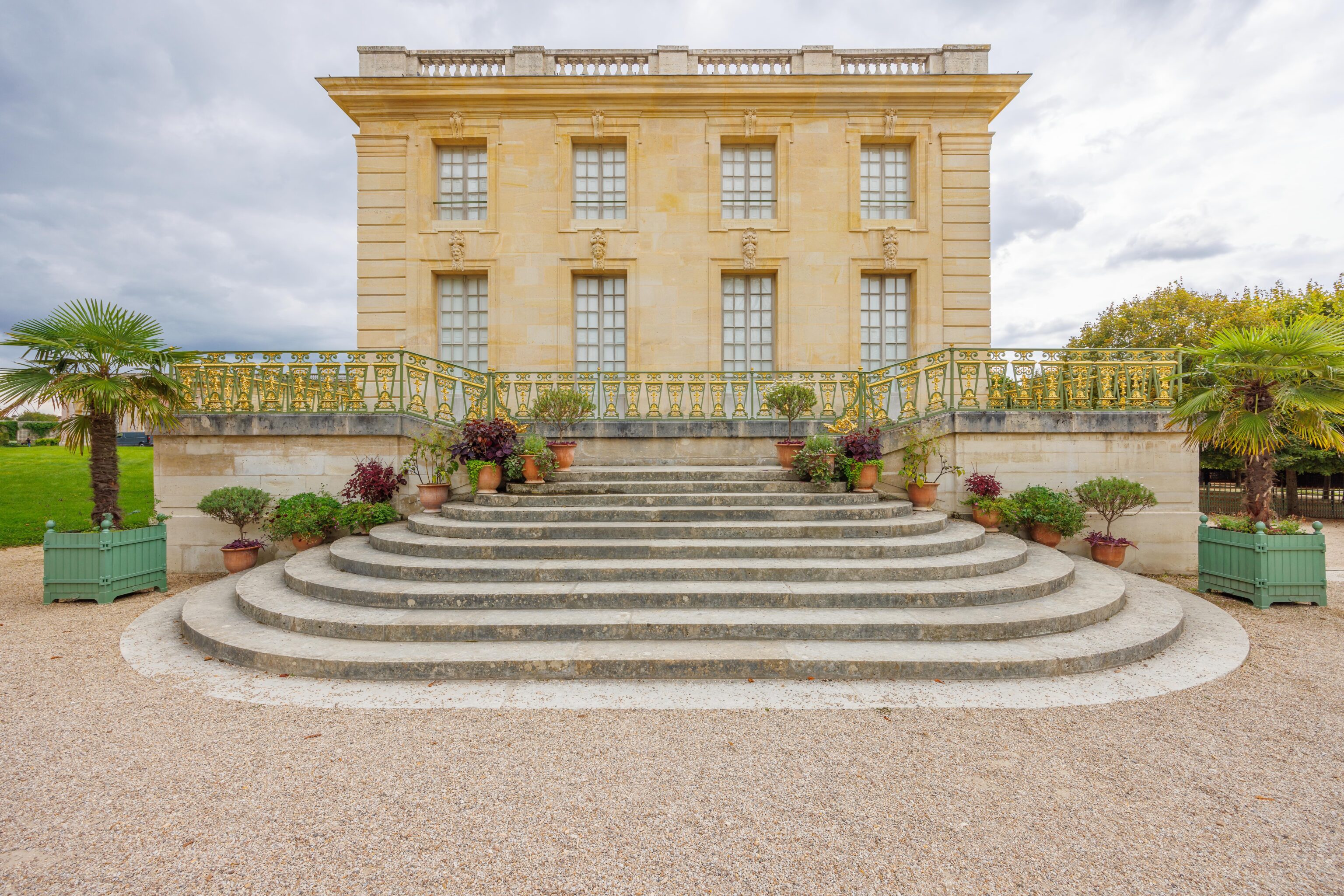
We walked by the north side of the building, hoping to come across an entrance.
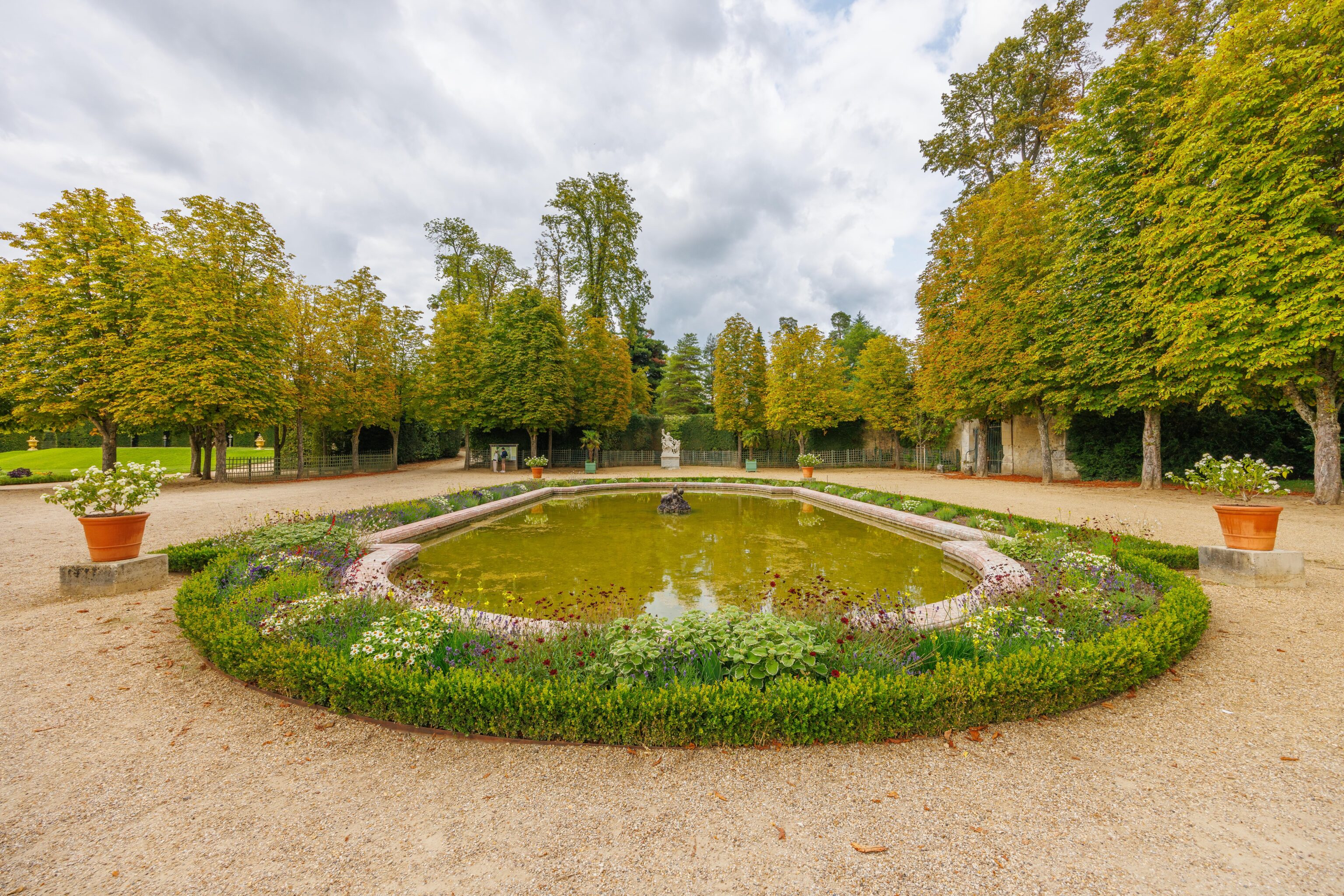
This pool was directly opposite of the previous view.
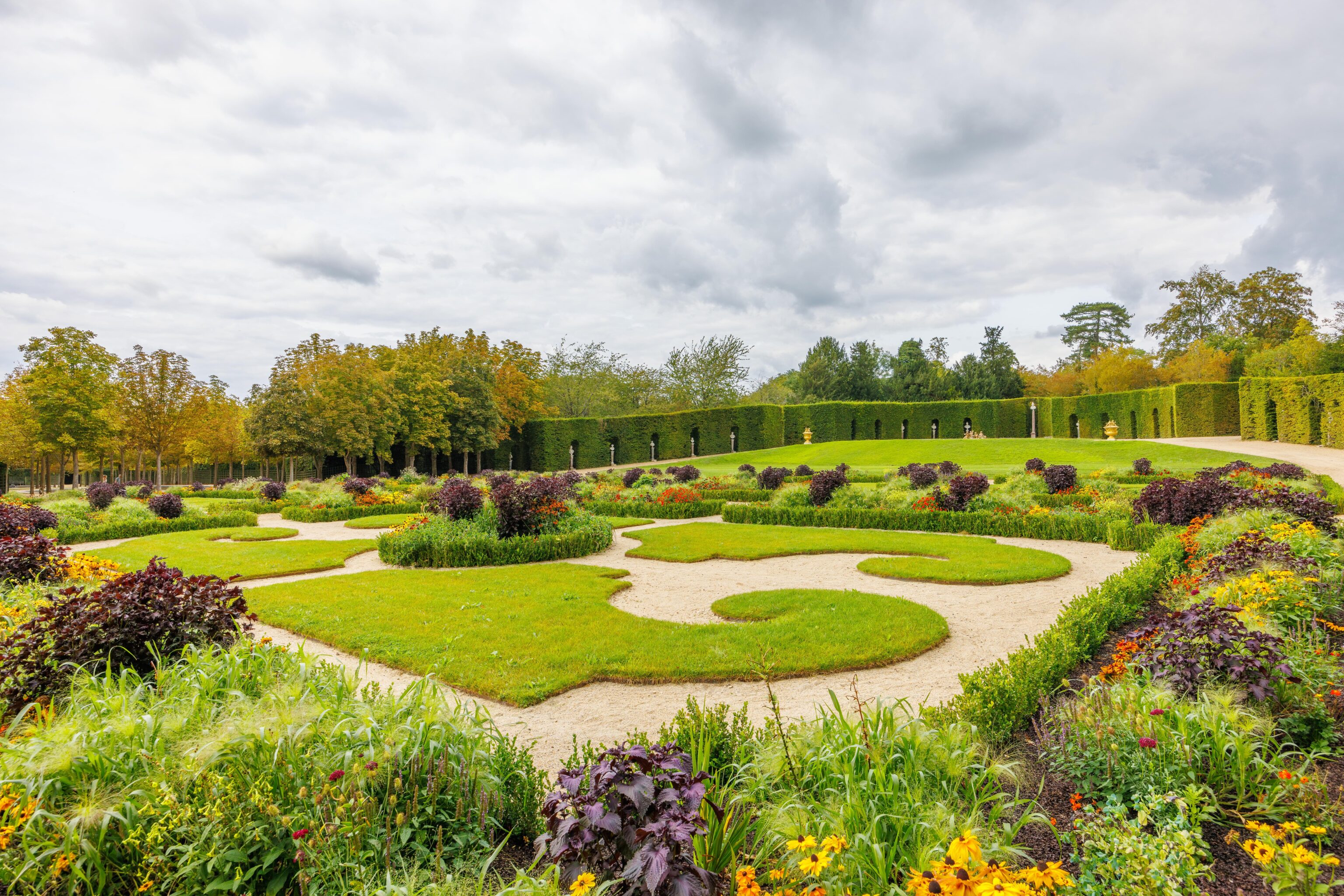
Another garden area within the gardens.
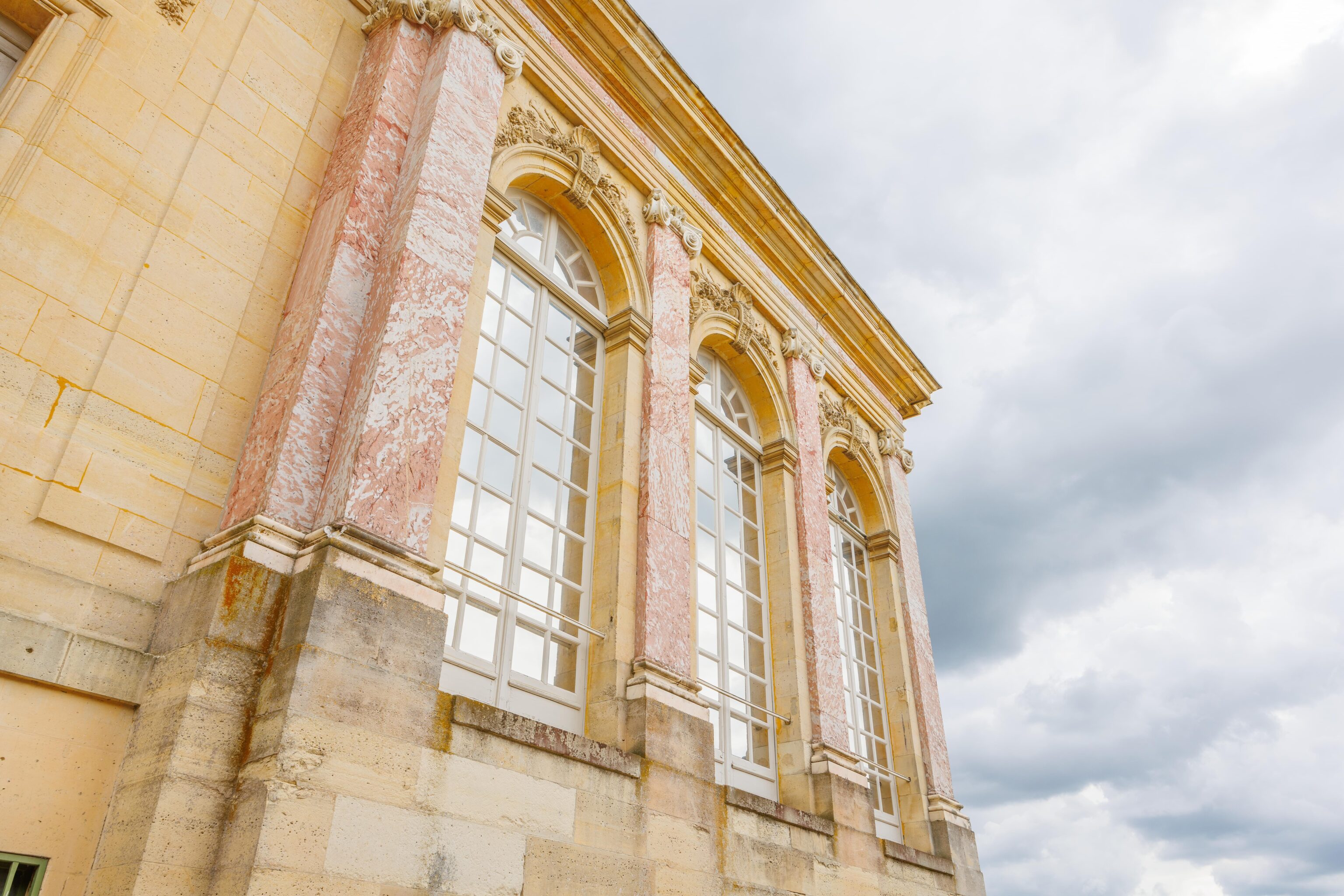
The columns on the side of the building incorporated pink marble.
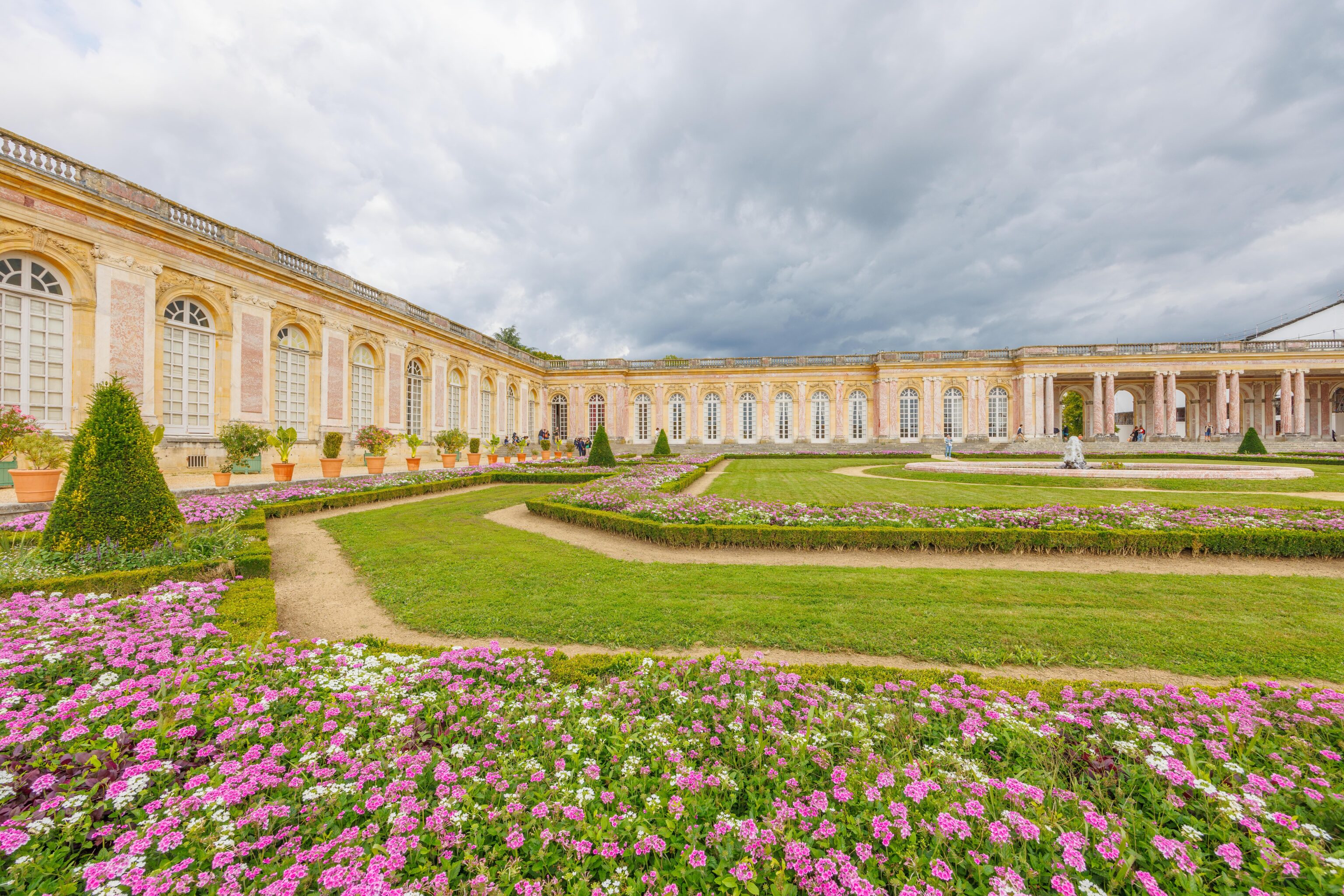
We continued walking around the corner to see the west side of the Grand Trianon.
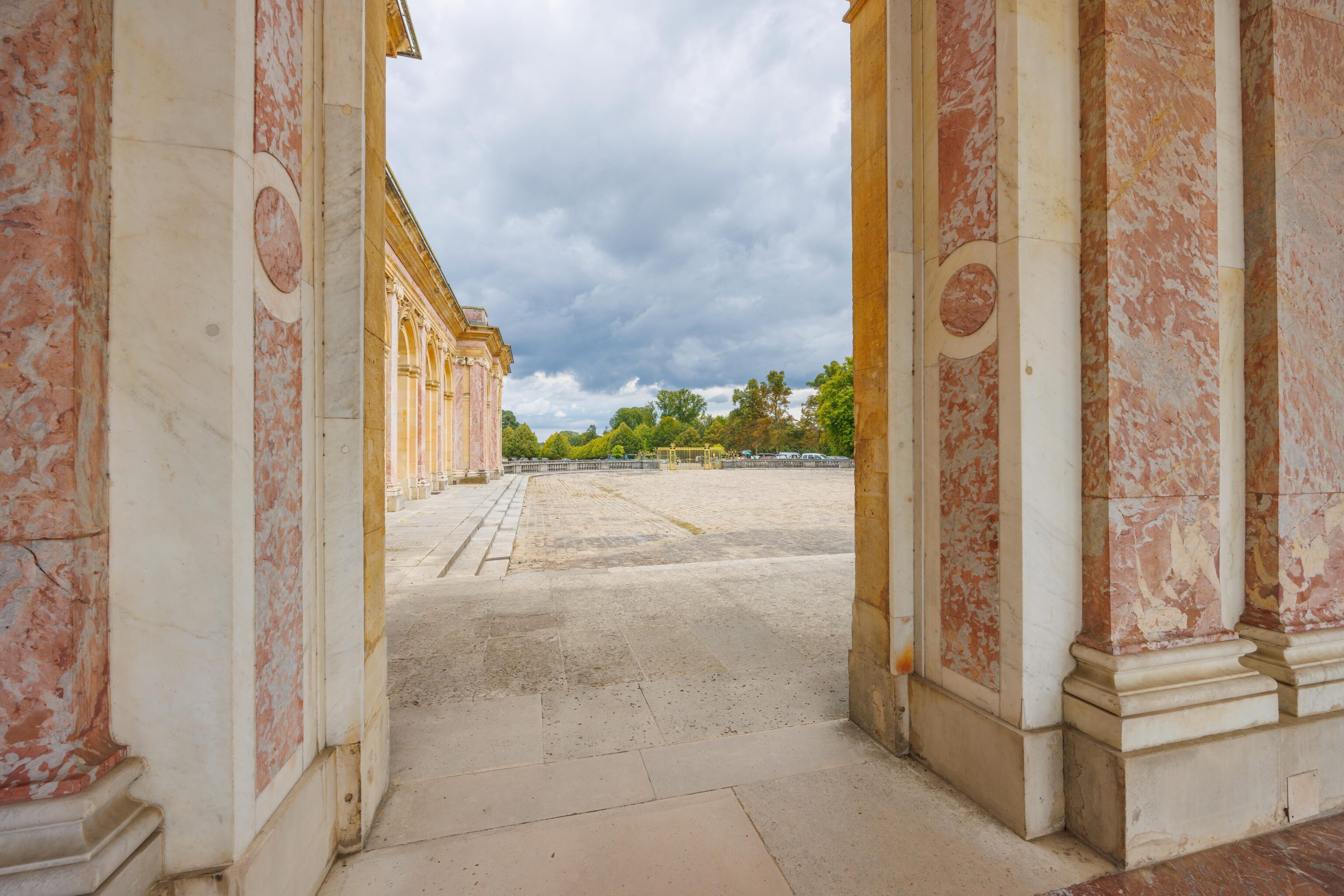
The building is split into north and south halves, connected by a columned corridor. We could see through to the main entrance of the Grand Trianon from here.
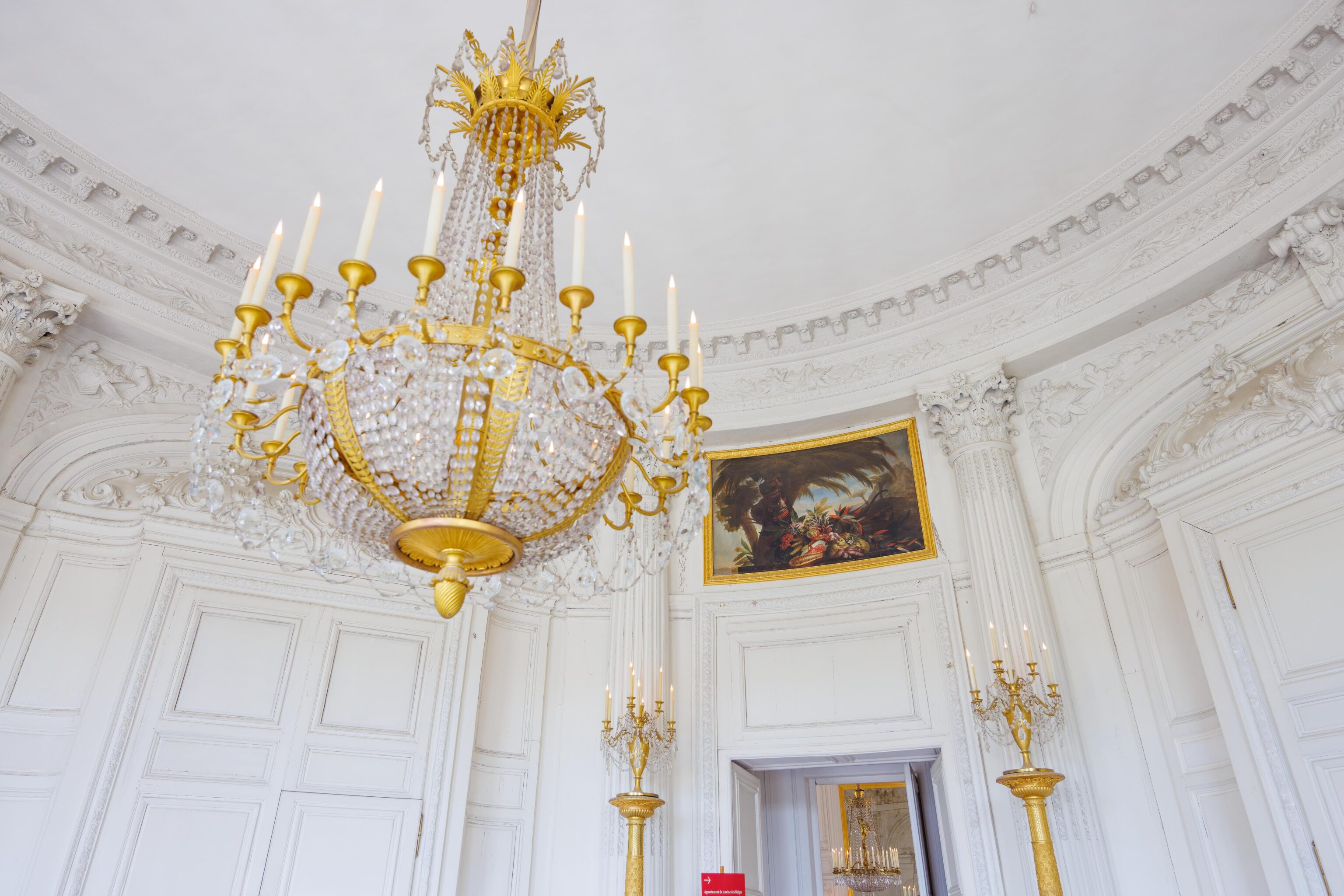
We entered the north side of the building from here, arriving at the Round Room.
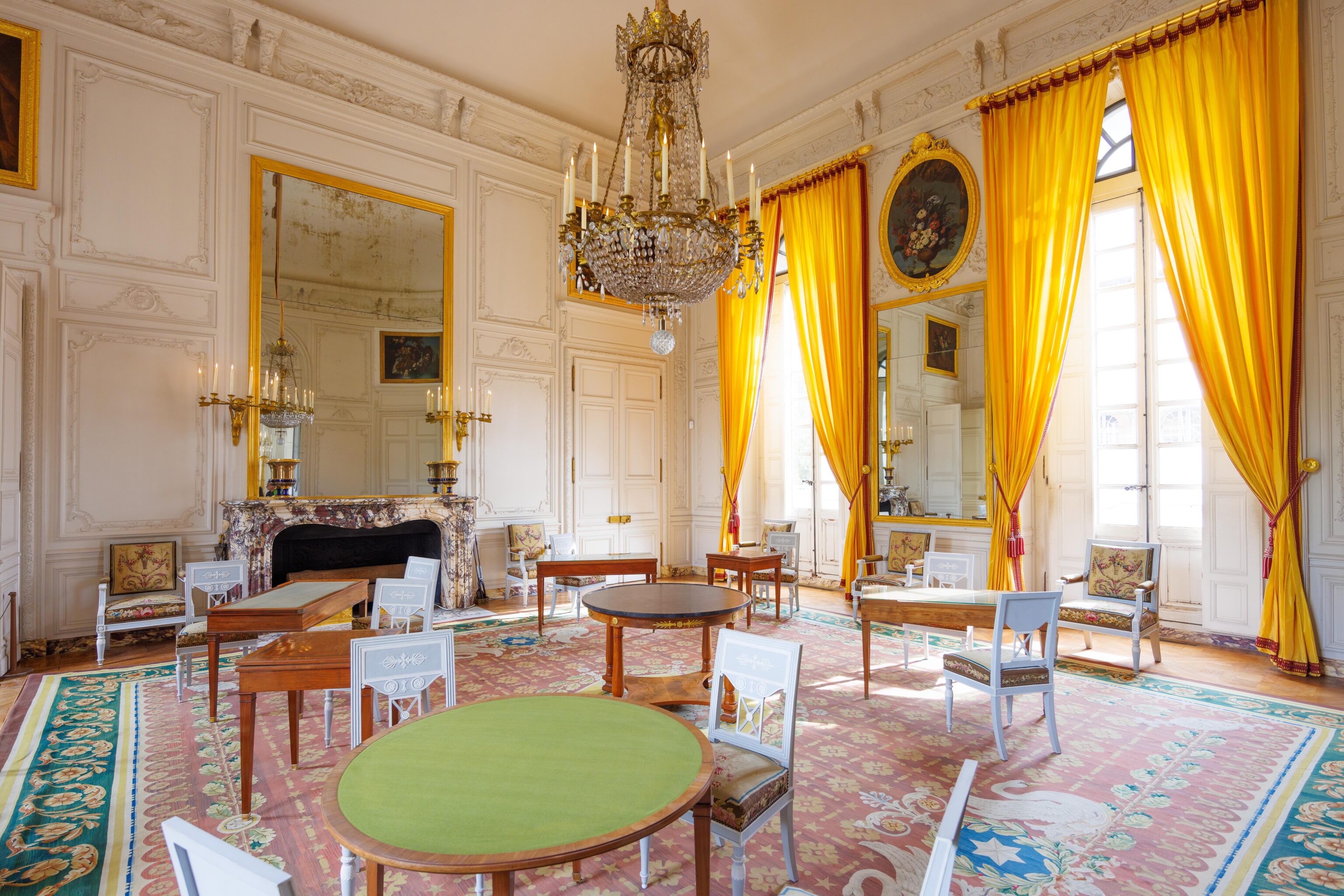
This room had yellow curtains and was set up with many chairs and small tables.
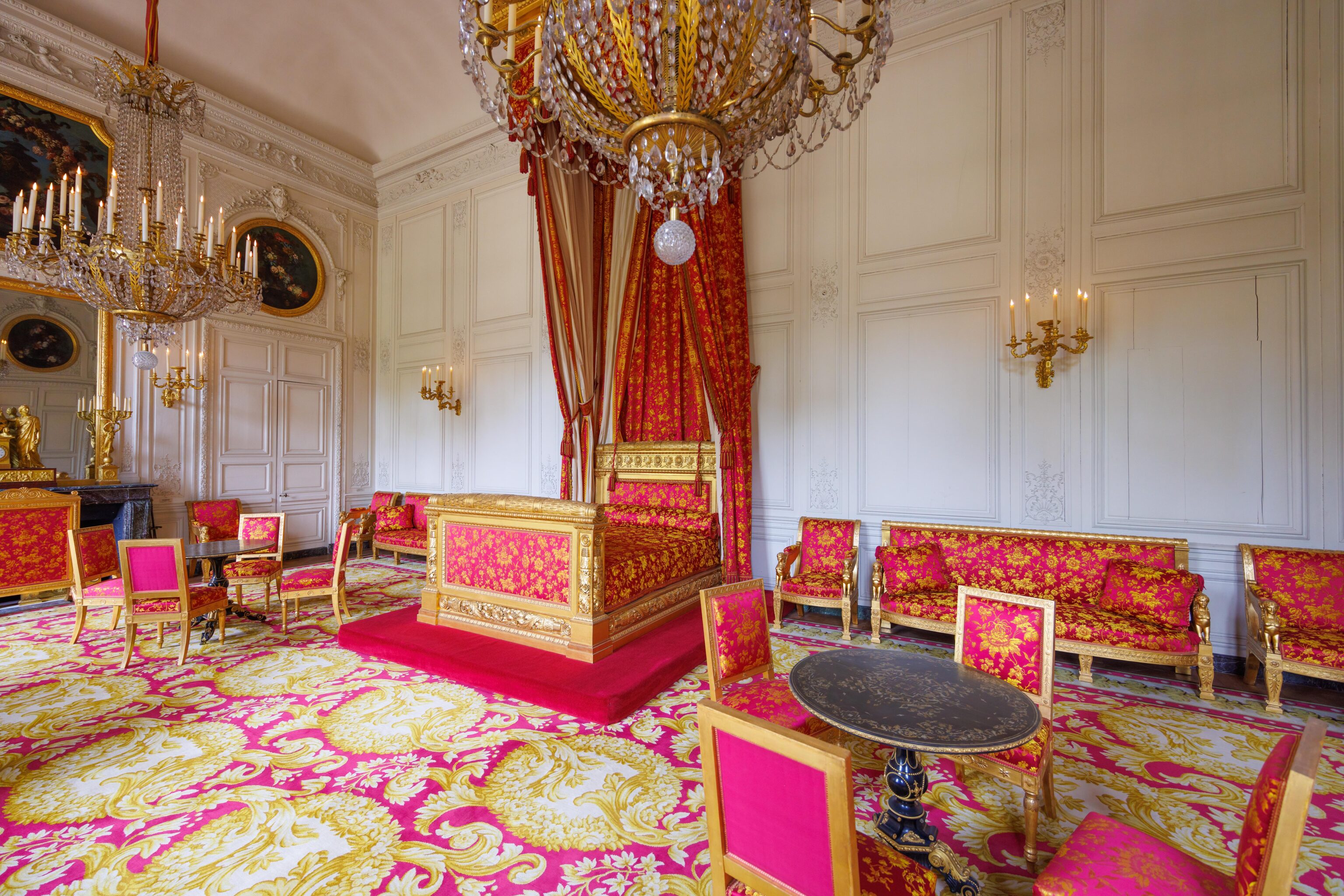
A bedroom.
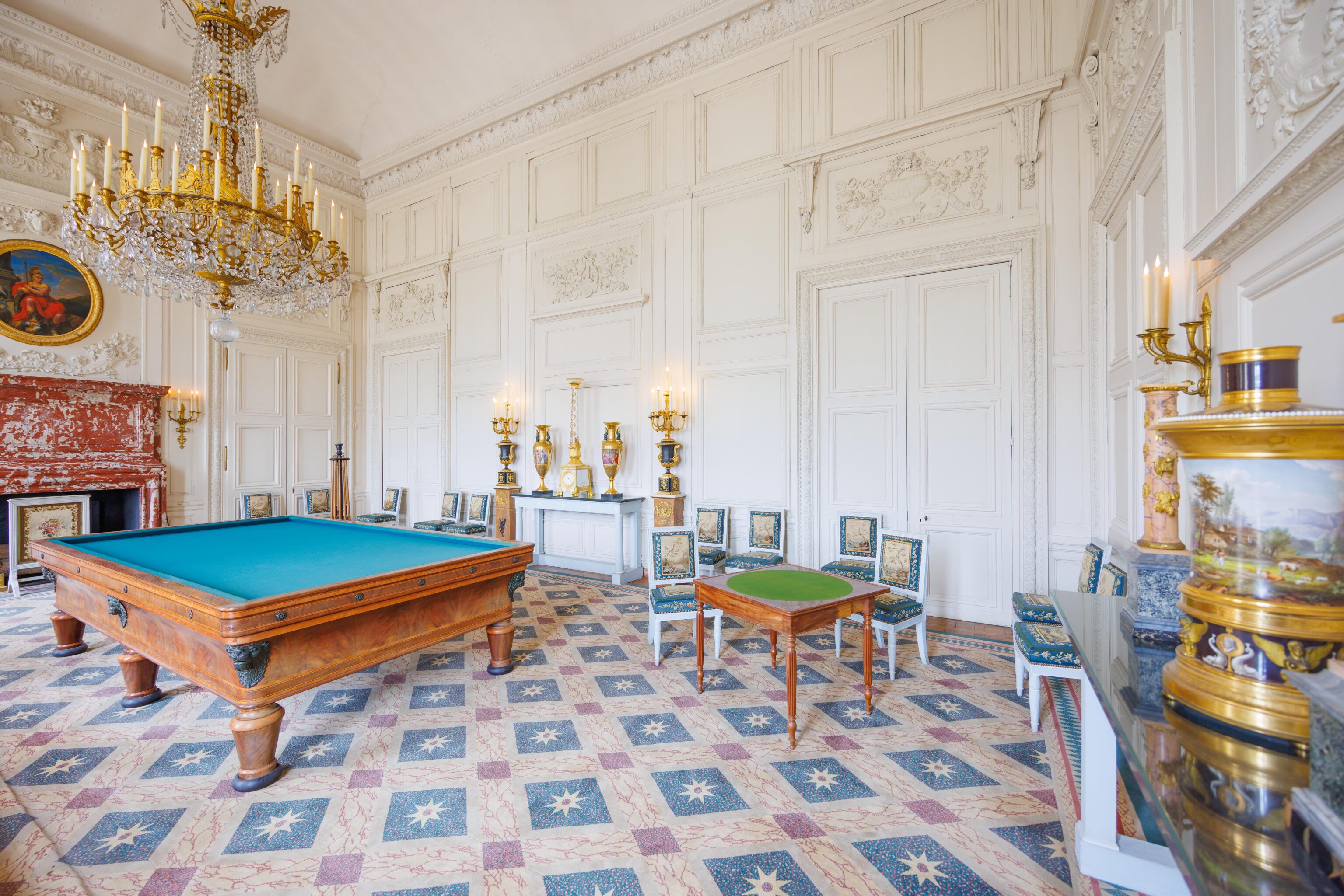
This room has a billiards table, similar to the one we saw in the Petit Trianon.
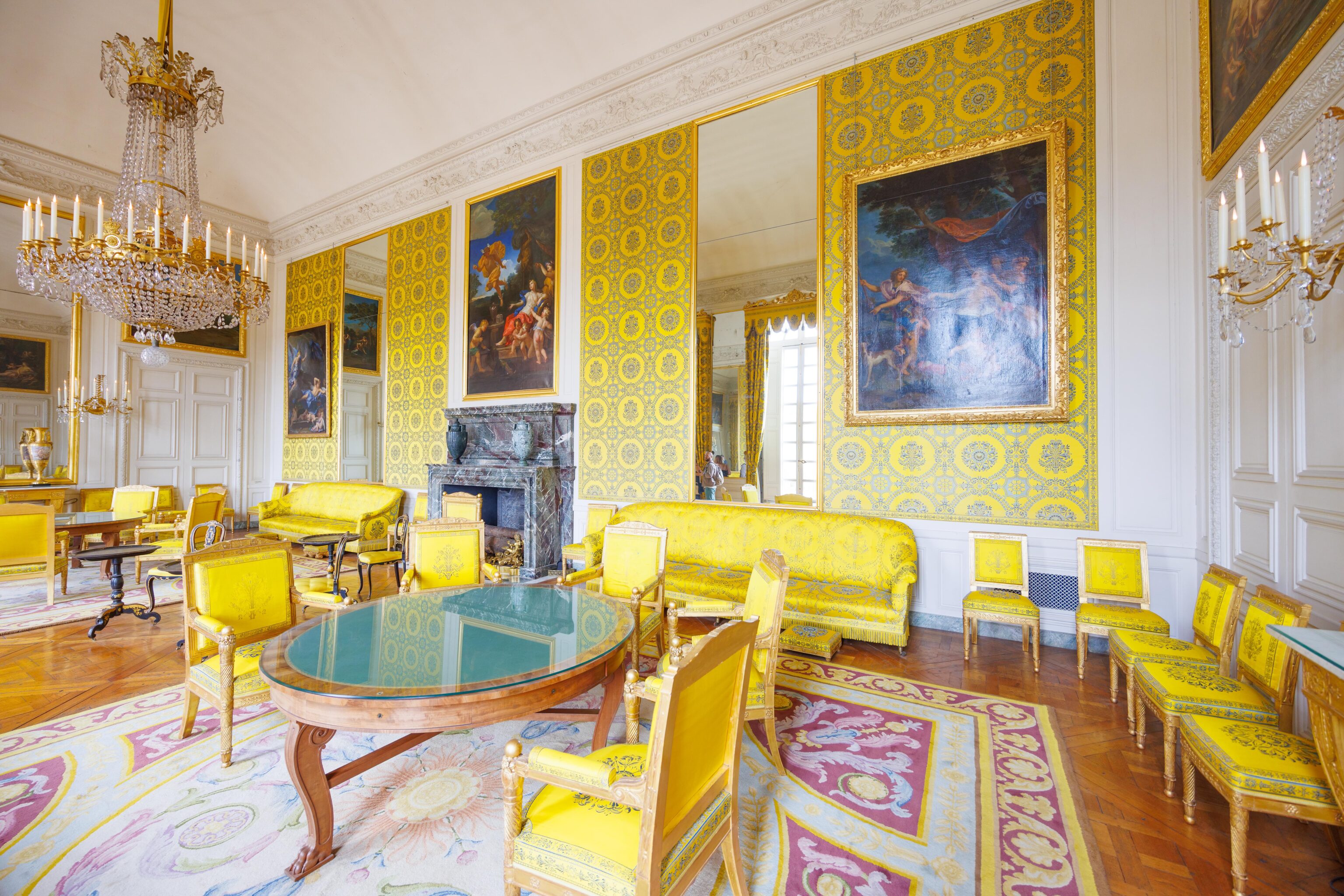
This yellow room is Louis-Philippe’s Family Room. It is described as being created by combining two separate rooms.
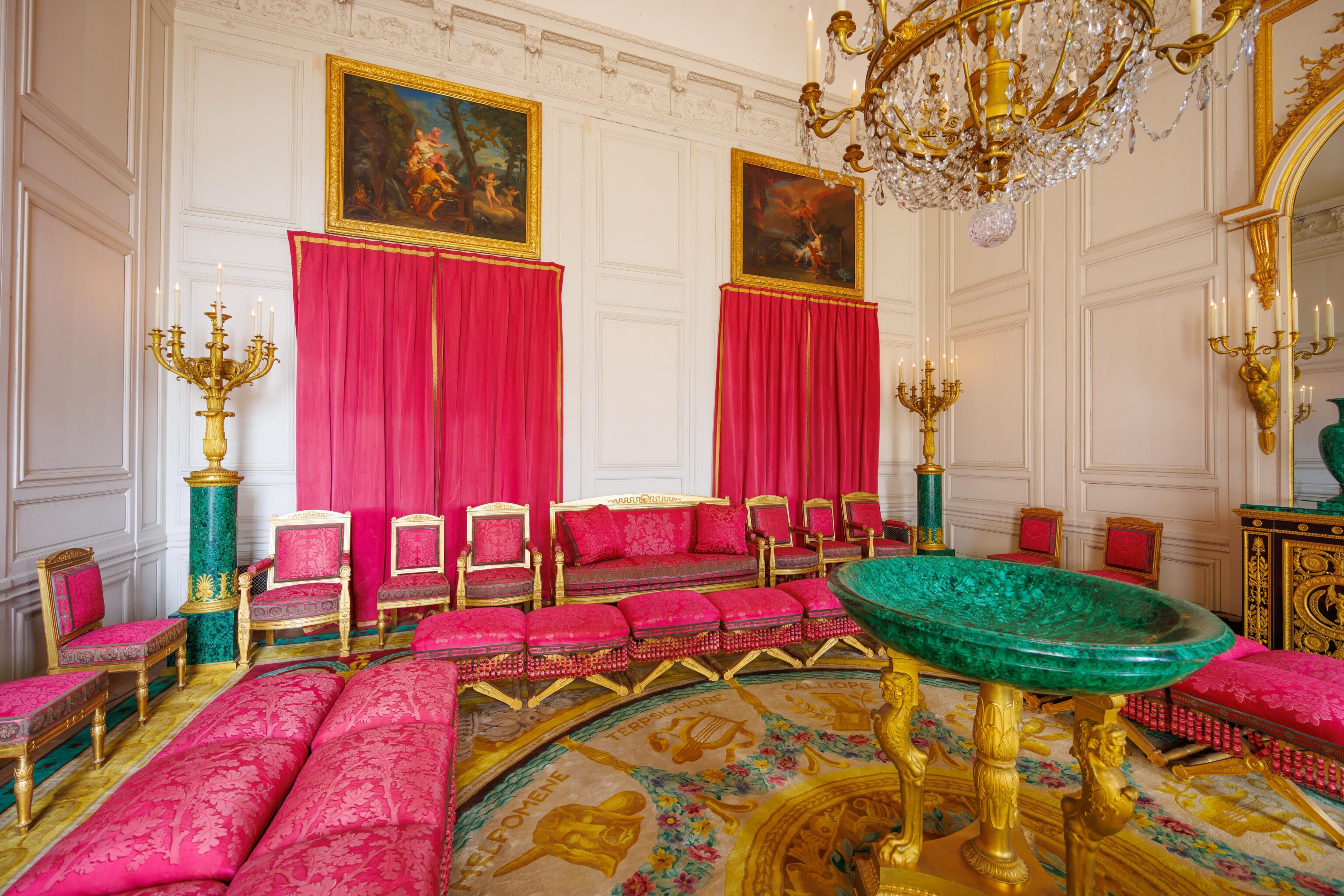
This room is named Malachite Room because it was used to house malachite sculptures given to Napoleon by Tsar Alexander I.
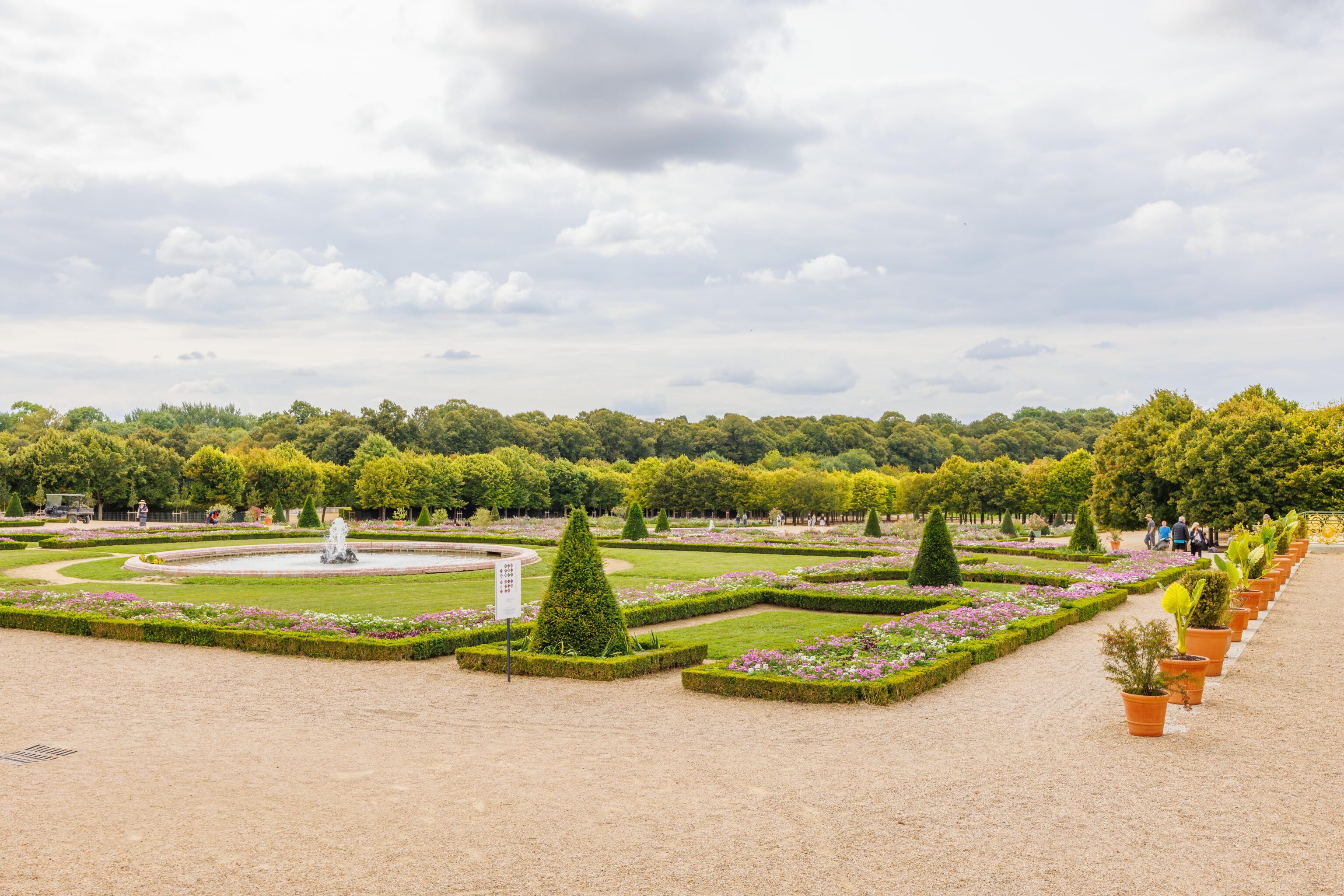
We backtracked and exited the north wing of the building. We could only find the exit to the south wing. We found out that the only way to get to the nearby entrance was to basically exit and re-enter, which we did.
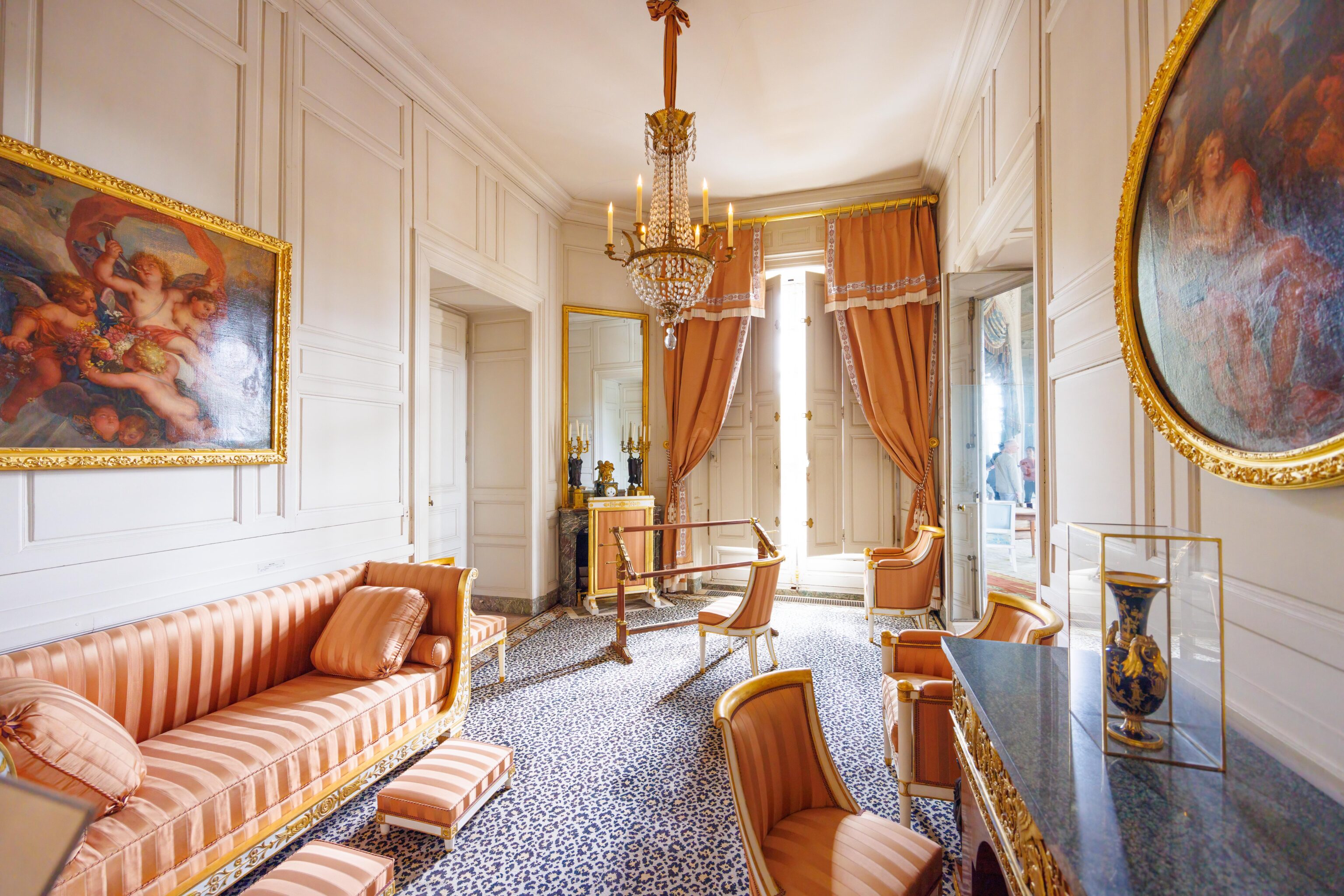
This is probably Empress Marie-Louise’s Boudoir.
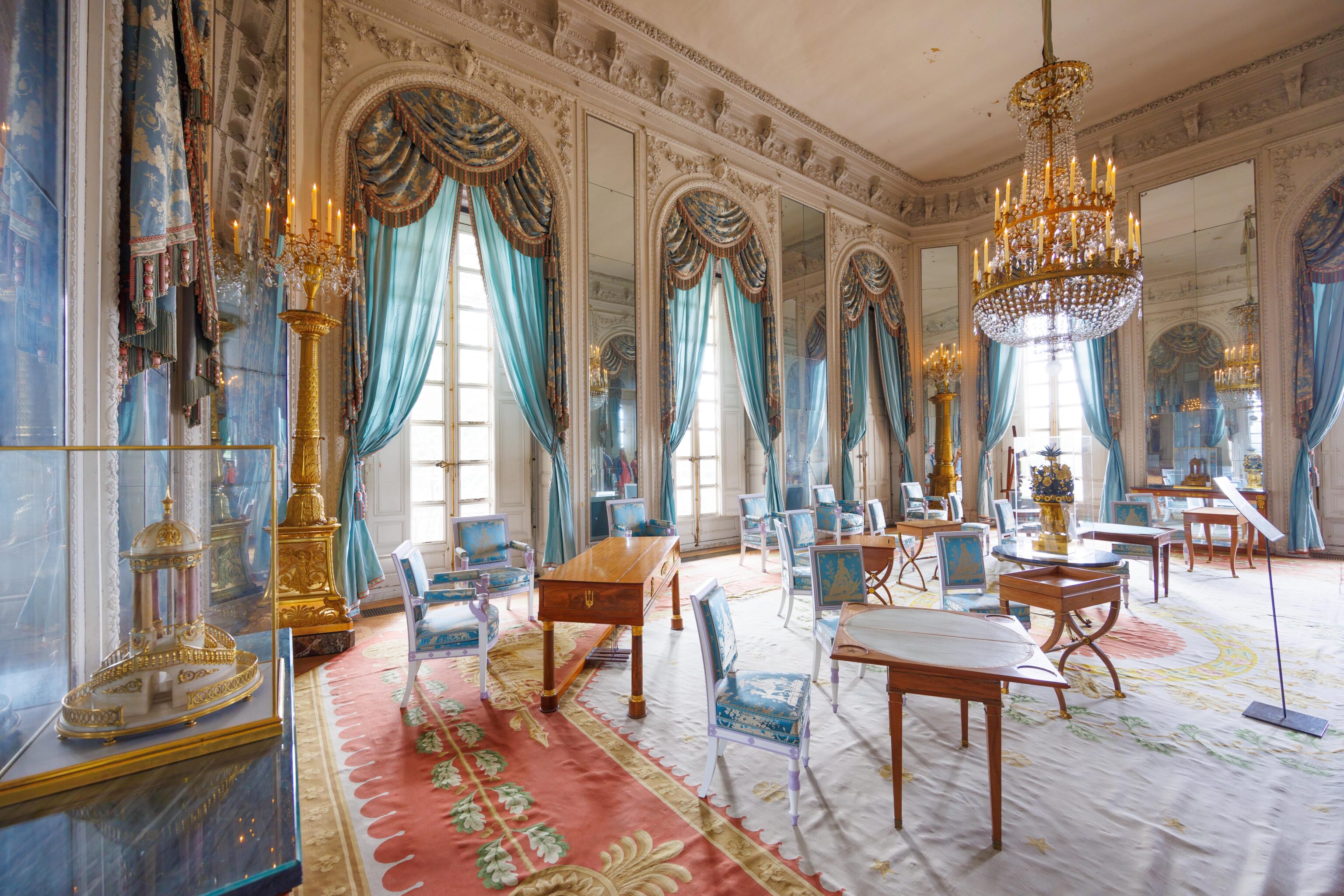
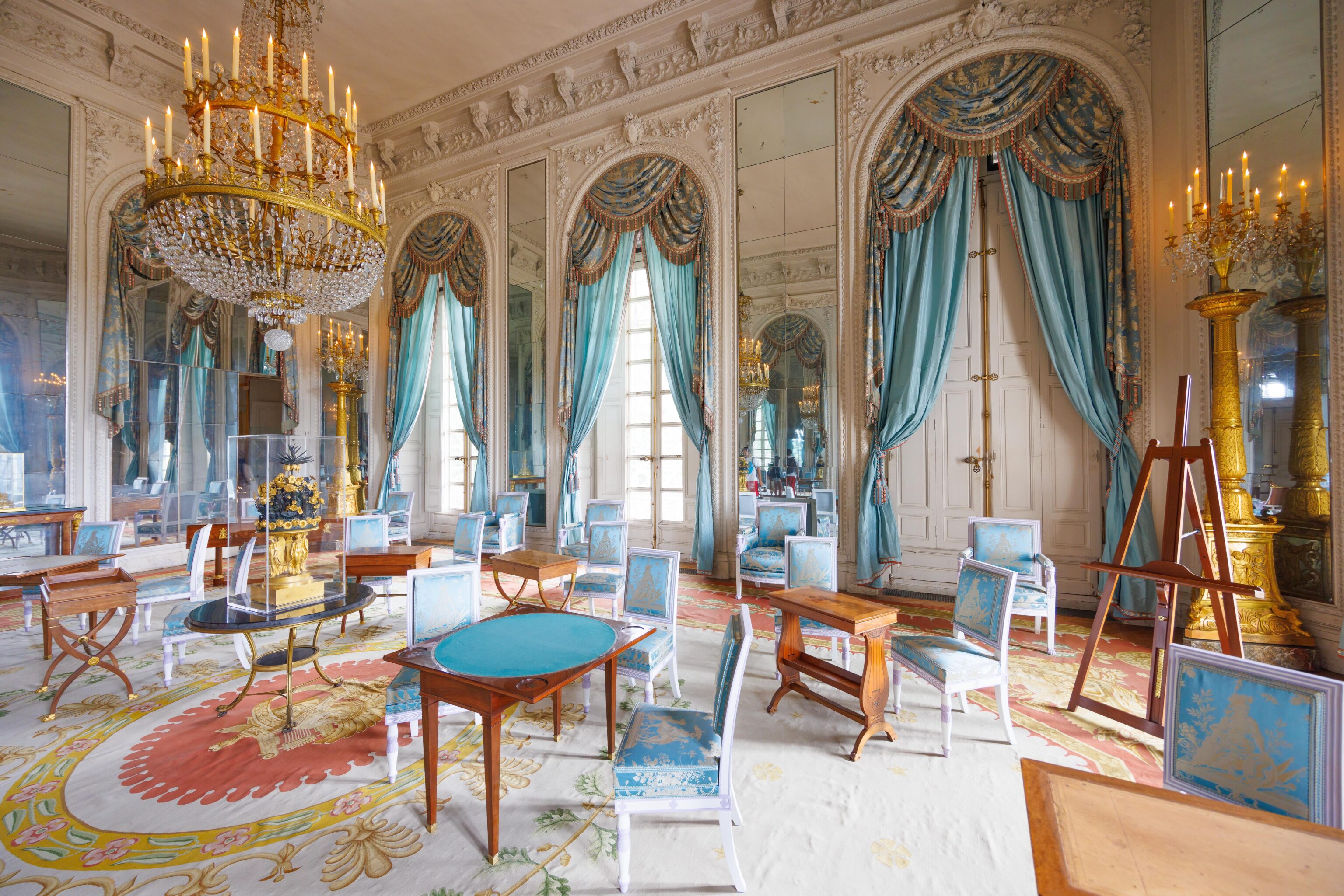
This room had a turquoise theme. It seems to be the Mirror Room and is described as one of the most beautiful in the Grand Trianon by its brochure.
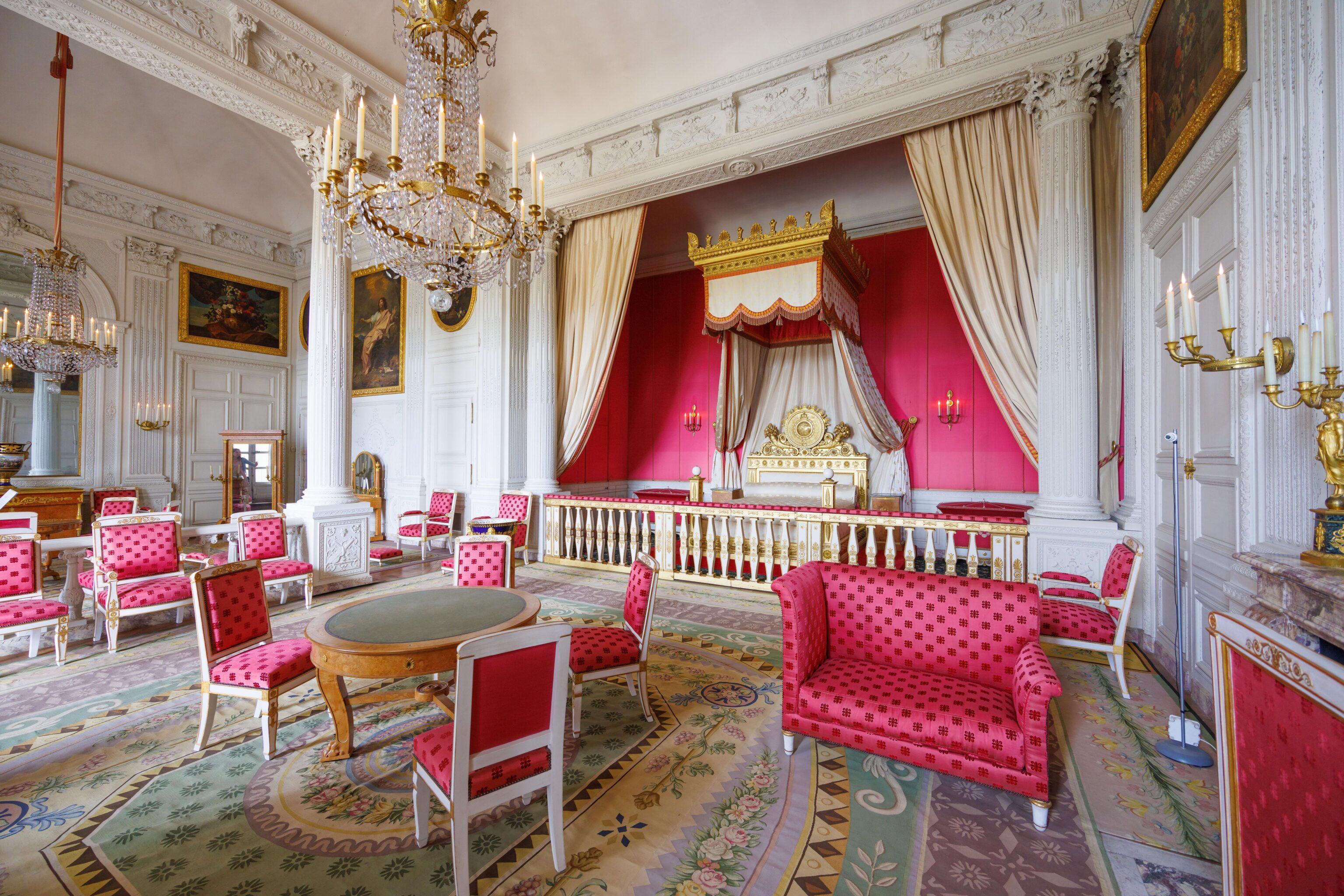
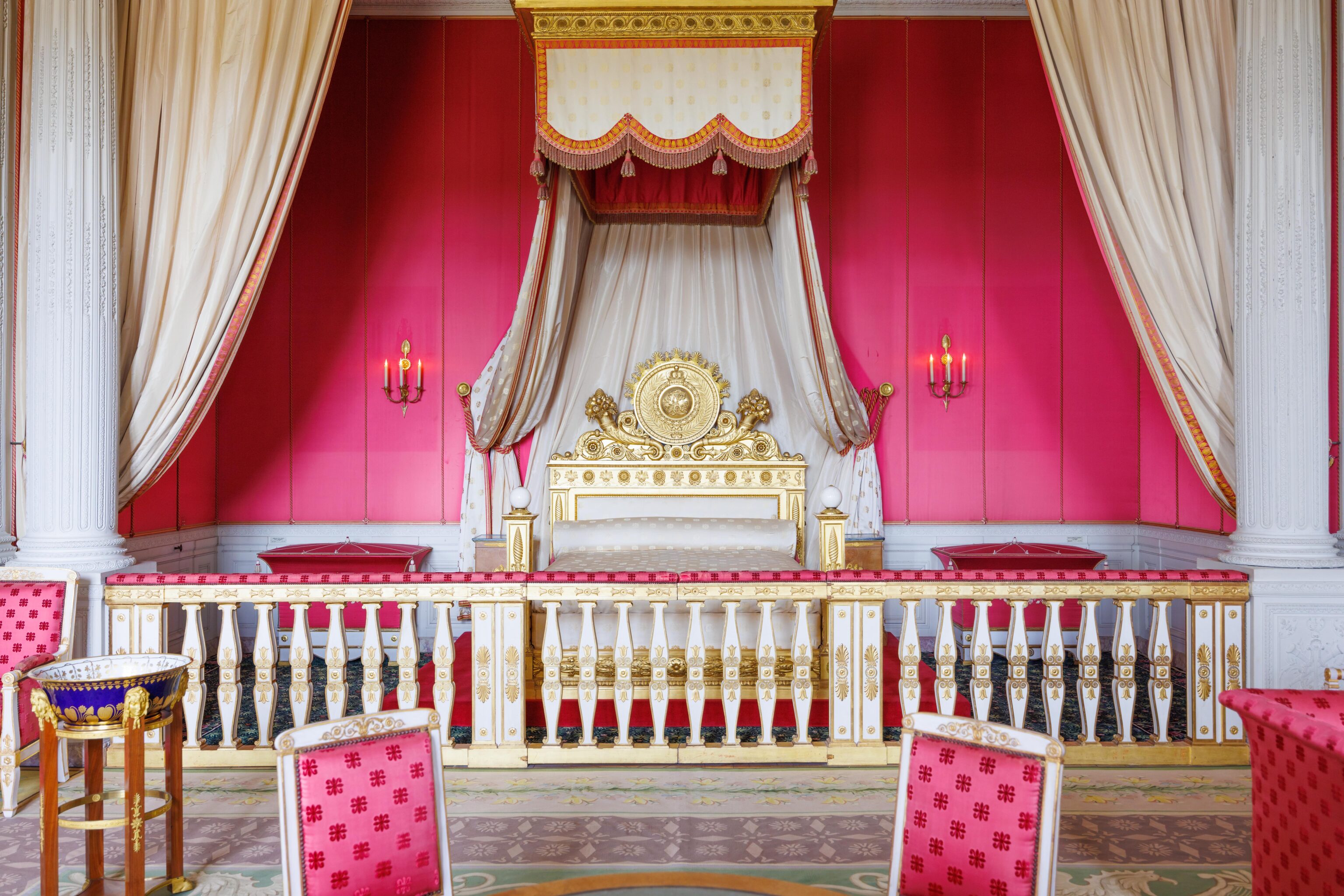
The Empress’ Bedchamber, formerly used by Louis XIV. The bed was used by Napoleon in Tuileries Palace and is the same bed that Louis XVIII died in.
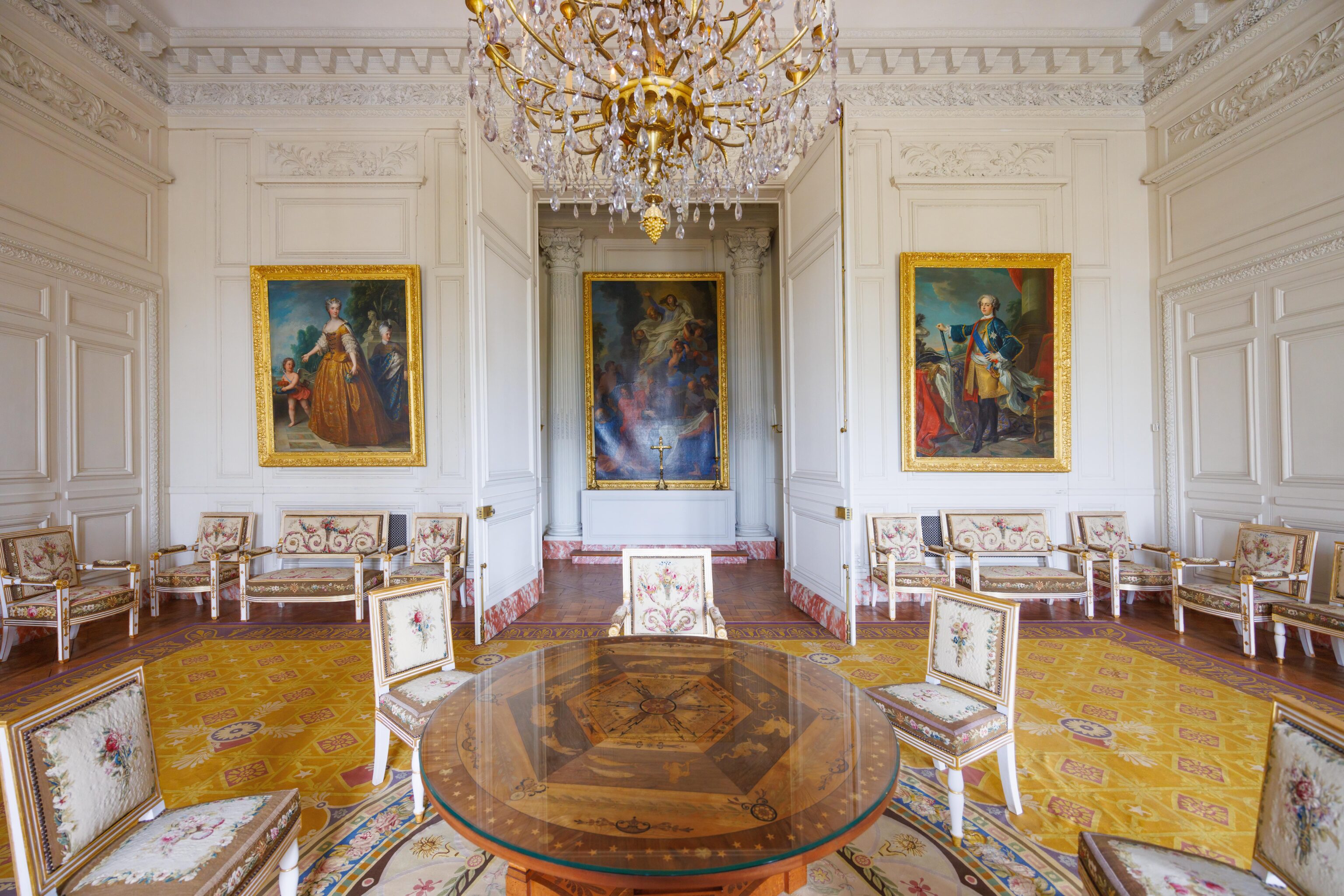
This is the Chapel Room. As the name suggests, it was formerly a chapel. It still contains an altar at the far end of the room. The doors, which are currently open, can be closed to hide it.
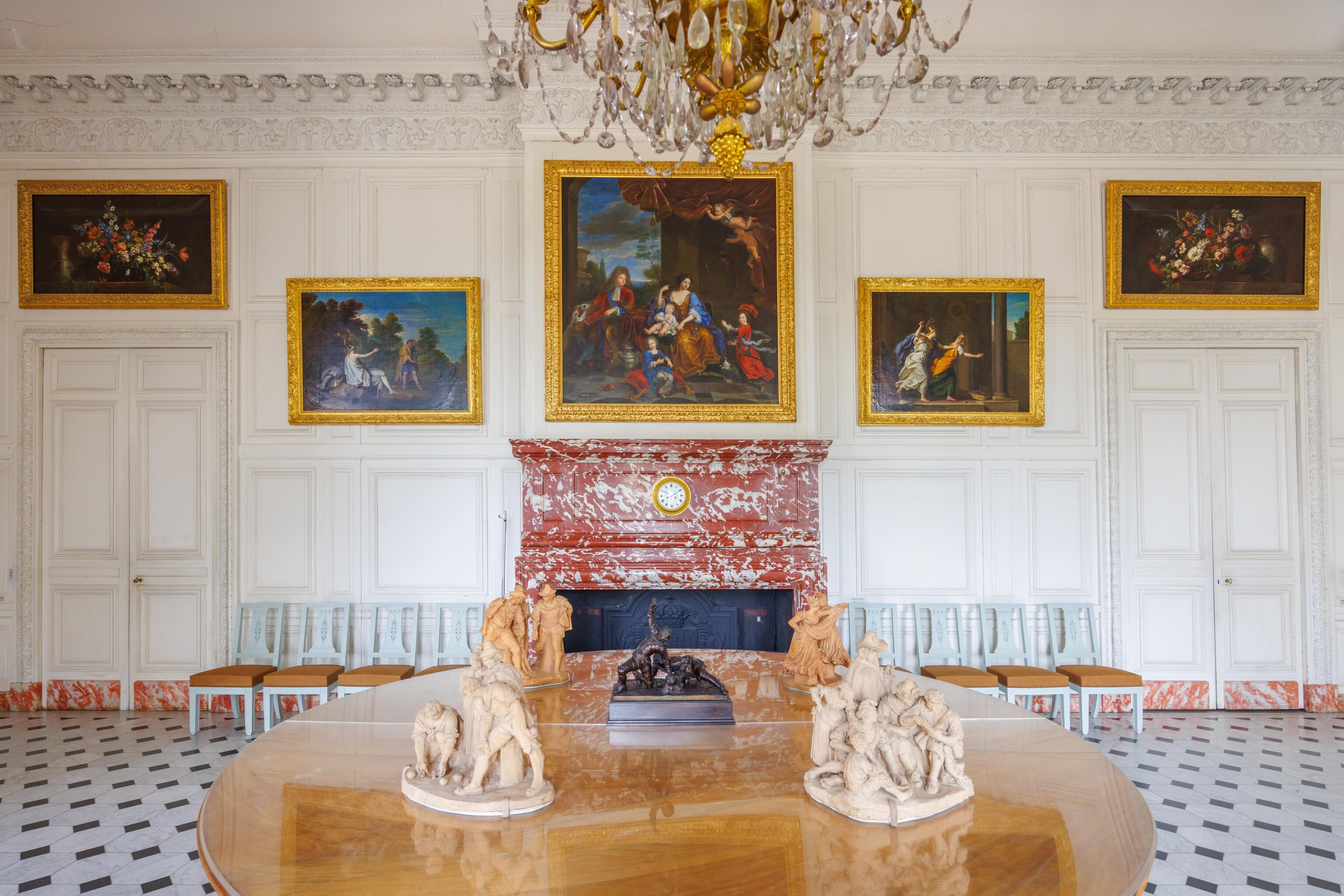
Looking on the map, the only two remaining rooms are the Lords’ Room and First Room. This could be either.
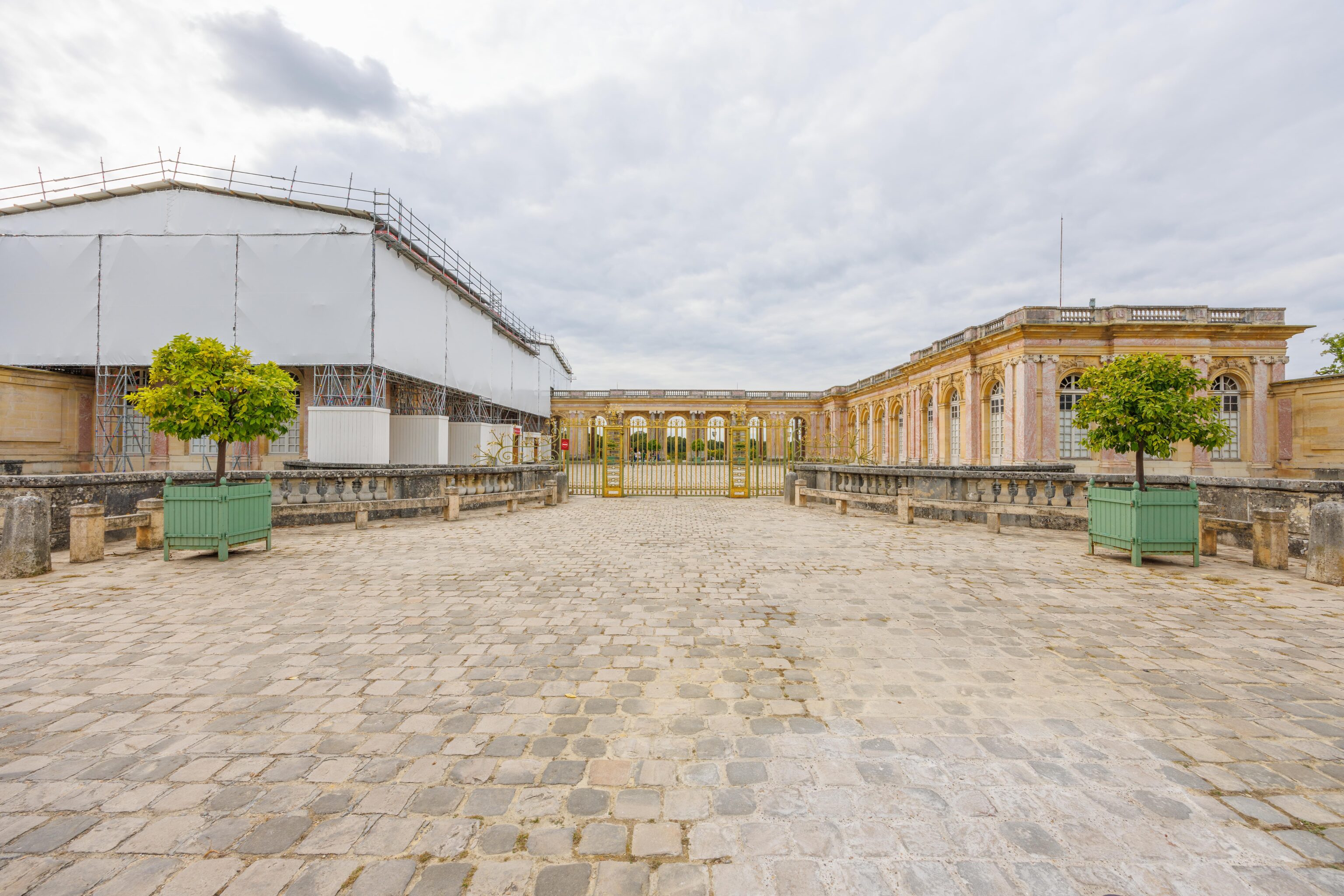
We exited once again, but this time for real! The Grand Trianon has a very different appearance from the front, though half of the building can’t be seen due to renovation activity.
Back to the Gardens of Versailles
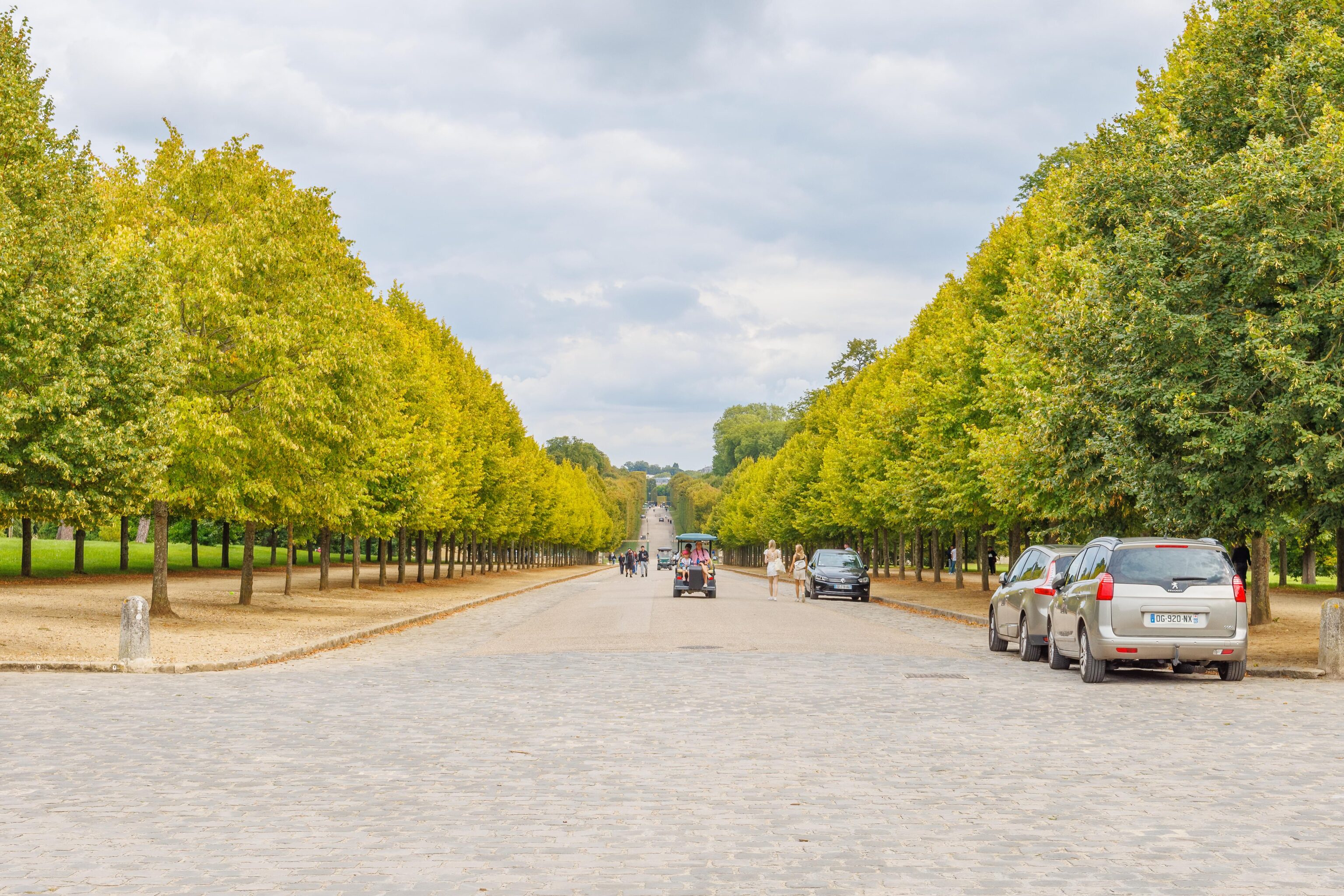
It was starting to get late, almost 4:40pm. We started to head back to the Gardens of Versailles. Though, not down this road! It bypasses the gardens and leads directly into town.
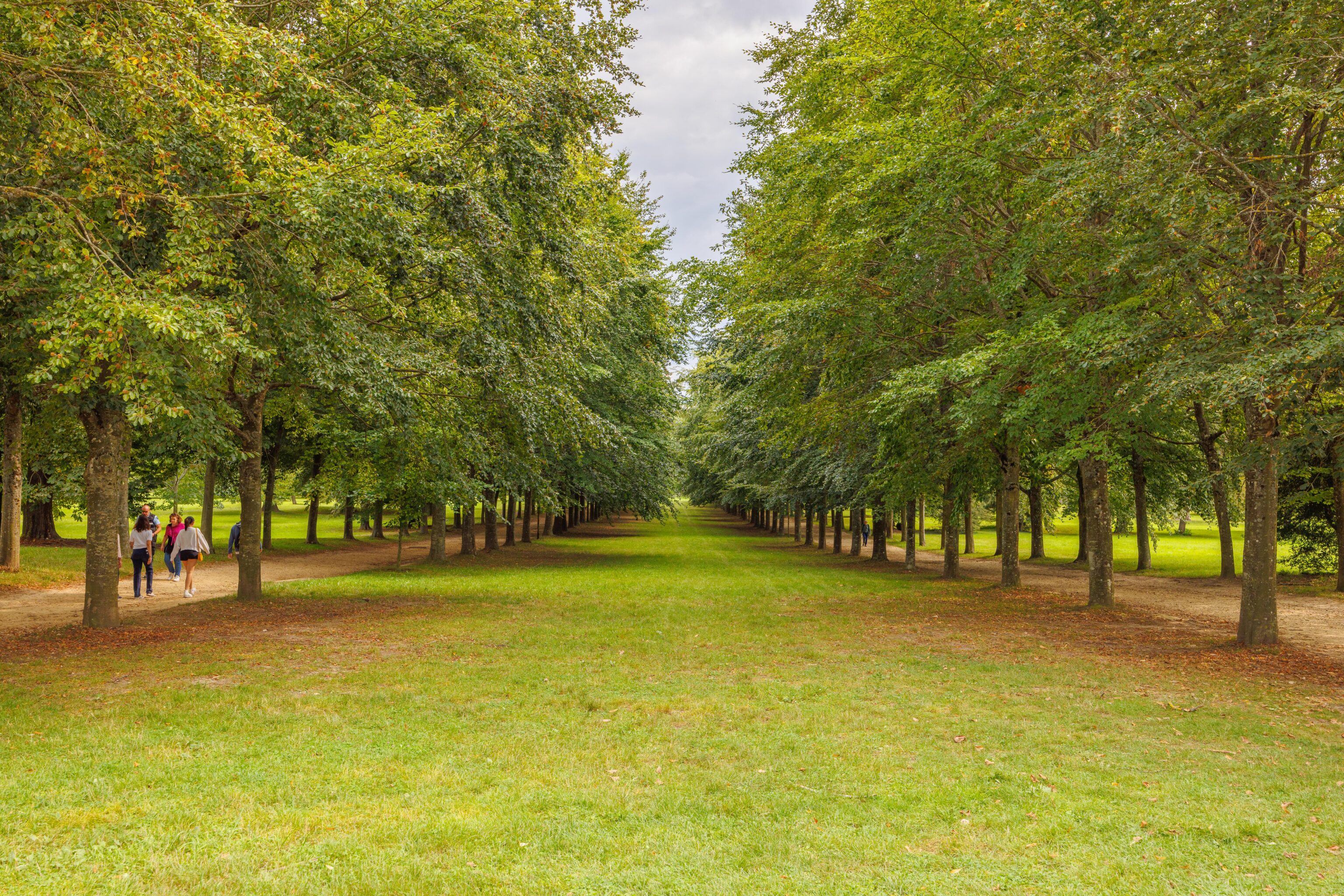
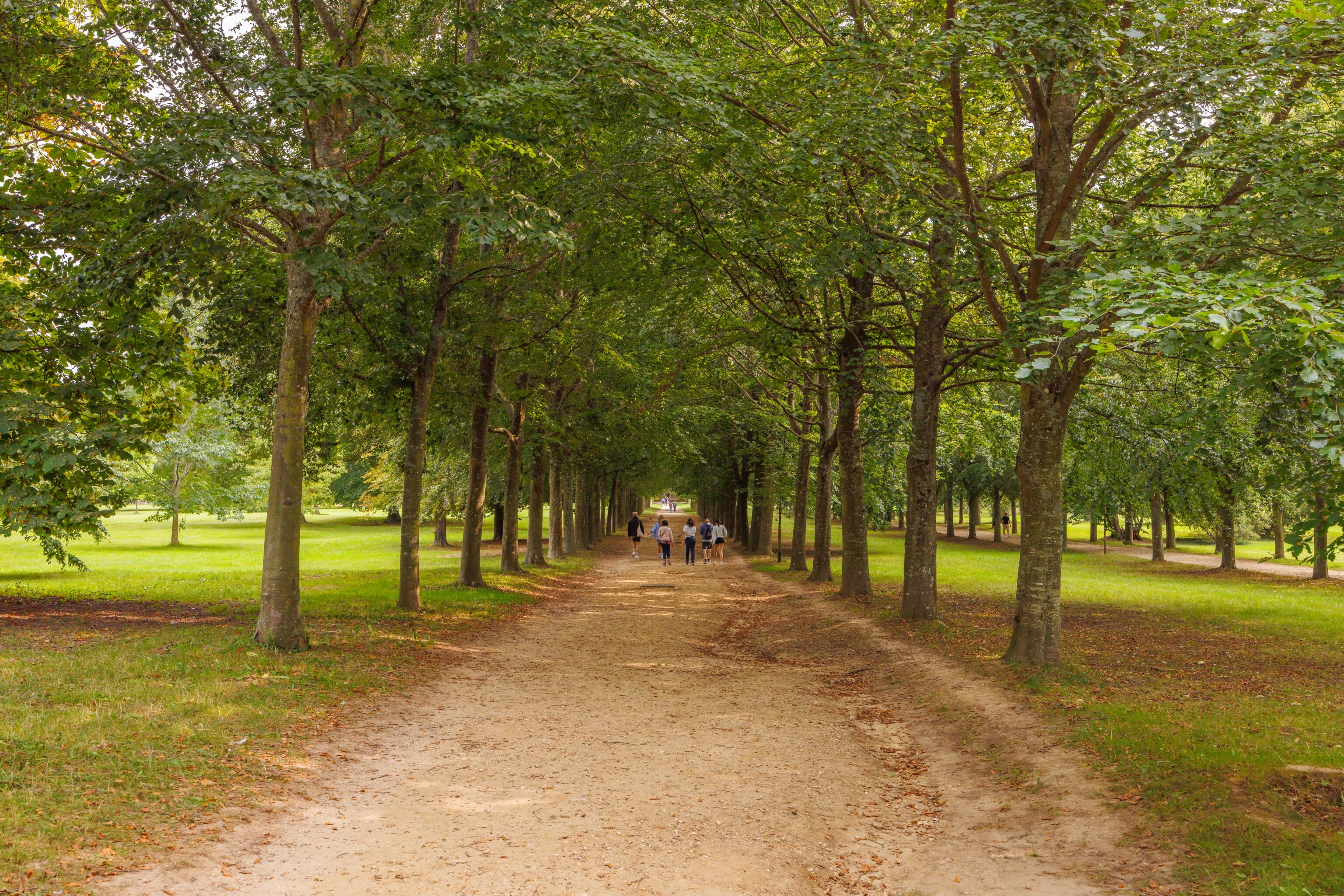
We followed this tree lined path.
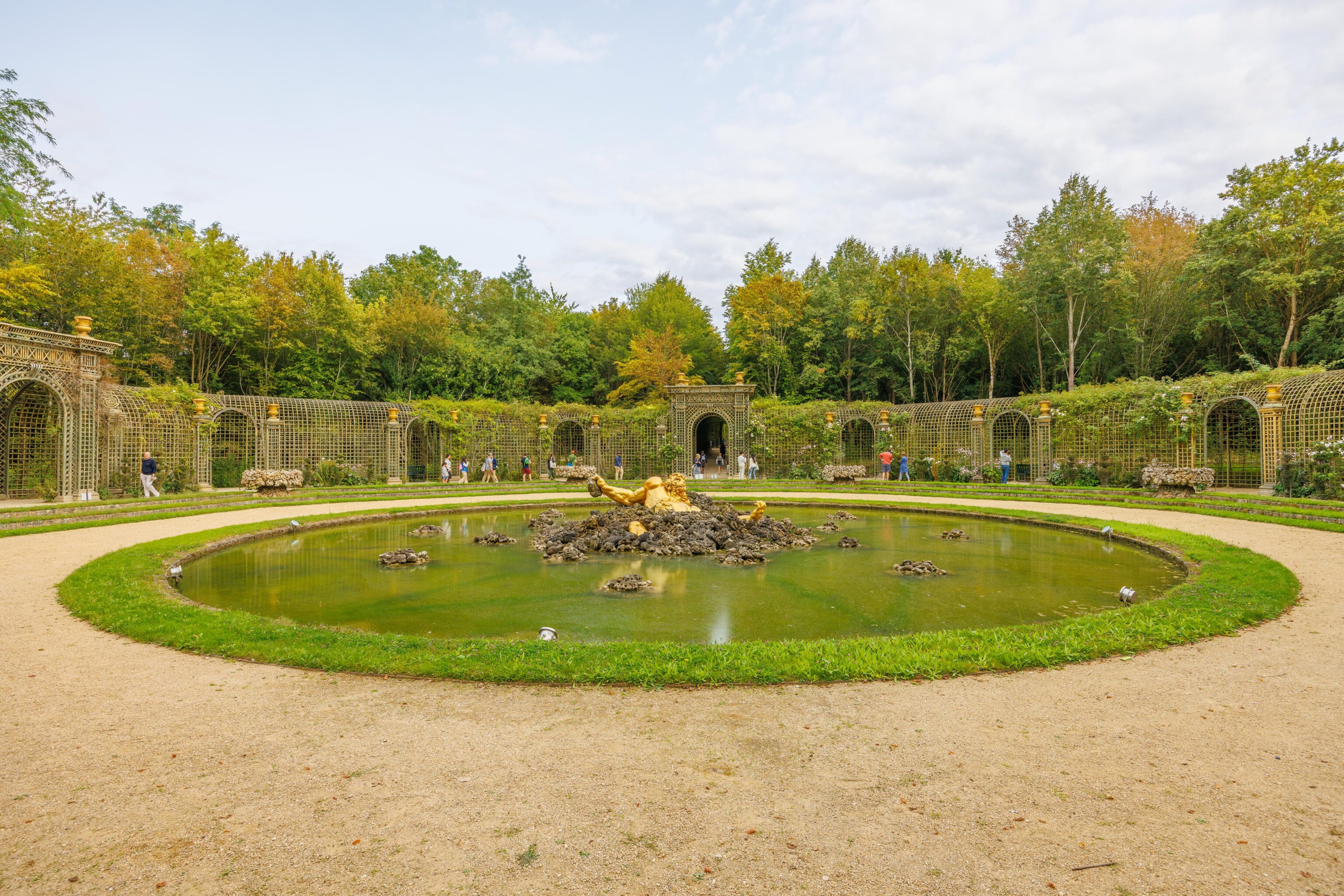
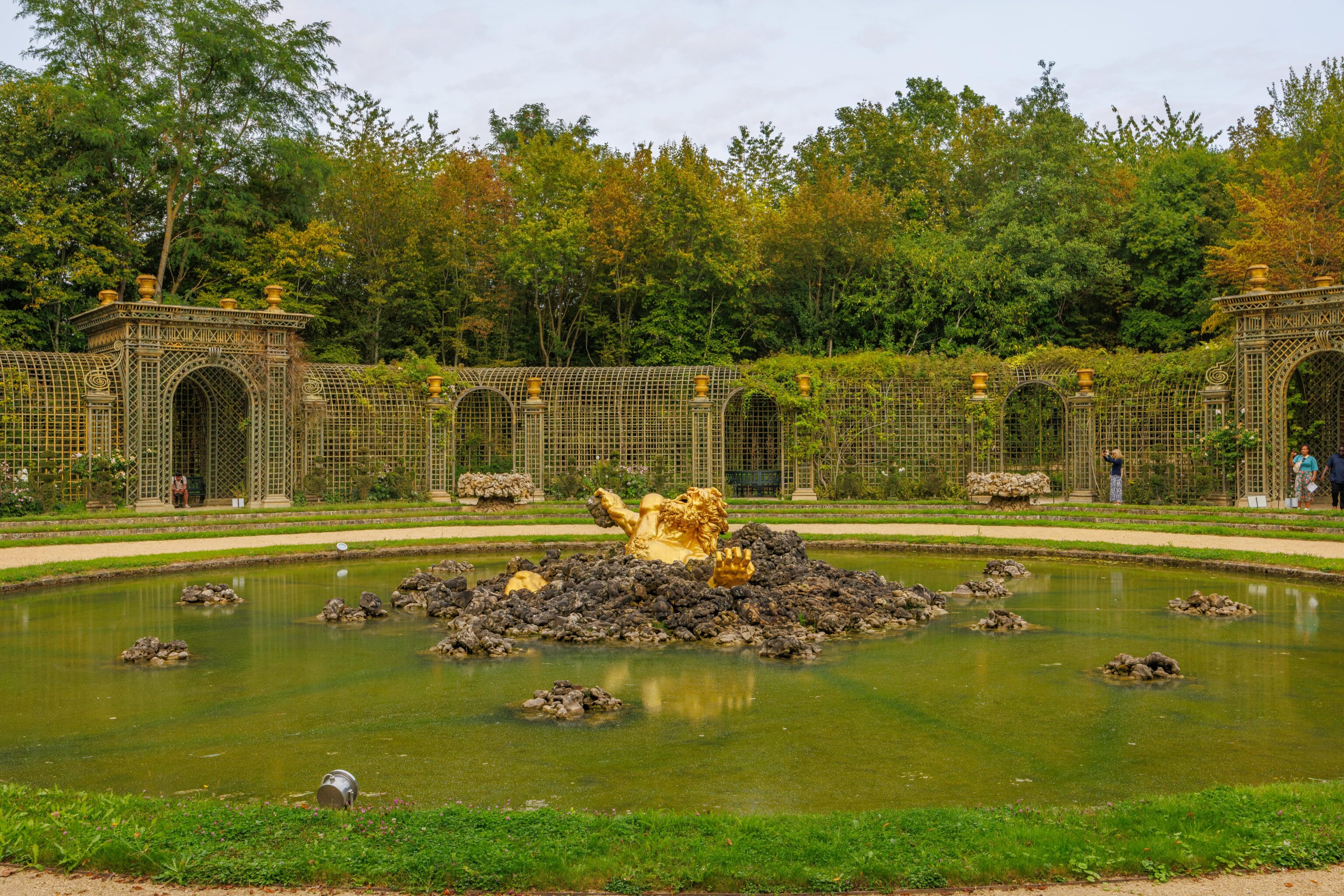
We followed the suggested route on the map to reach the Enceladus Grove. It shows the titan Enceladus being punished by the gods of Mount Olympus. He does not look happy!
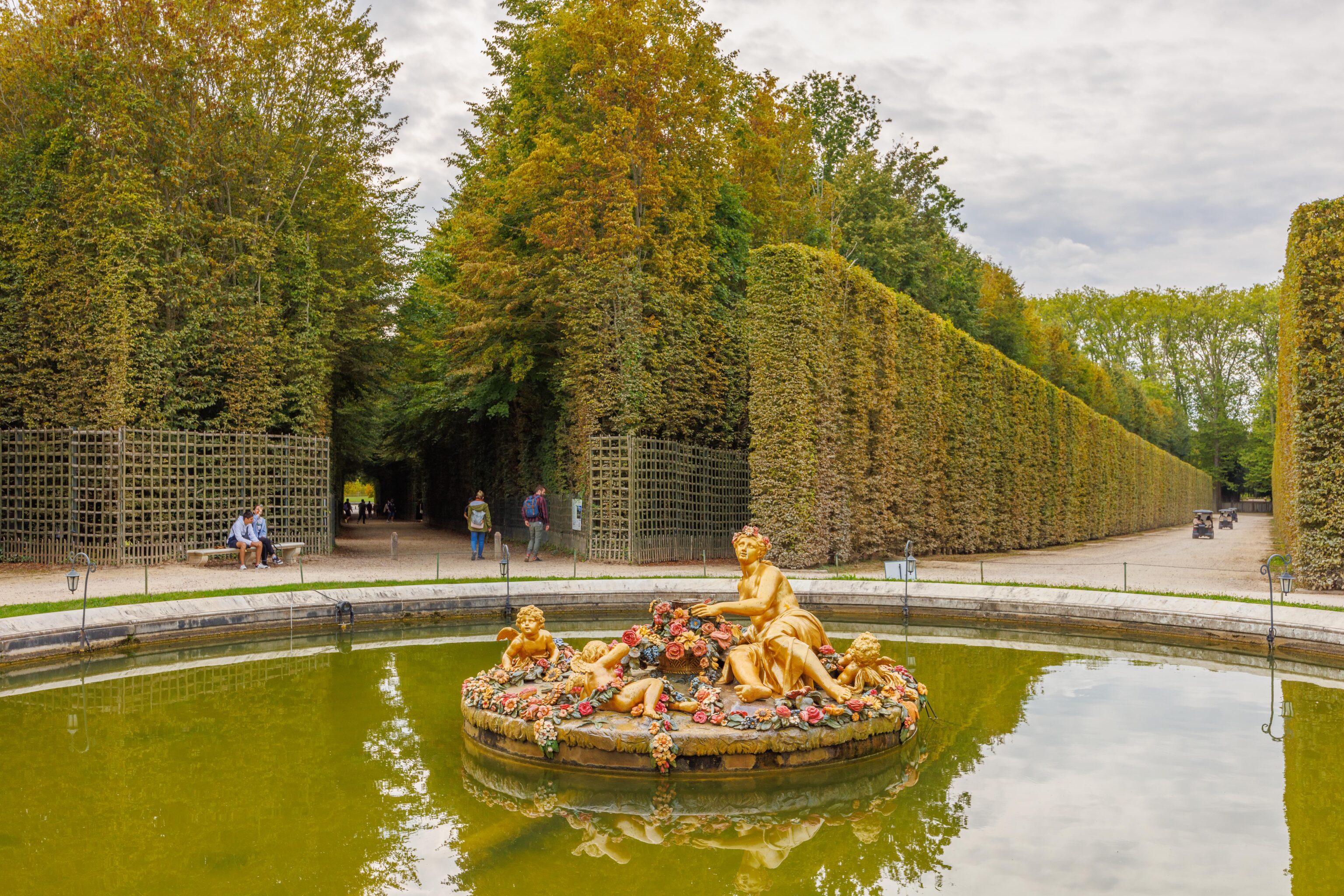
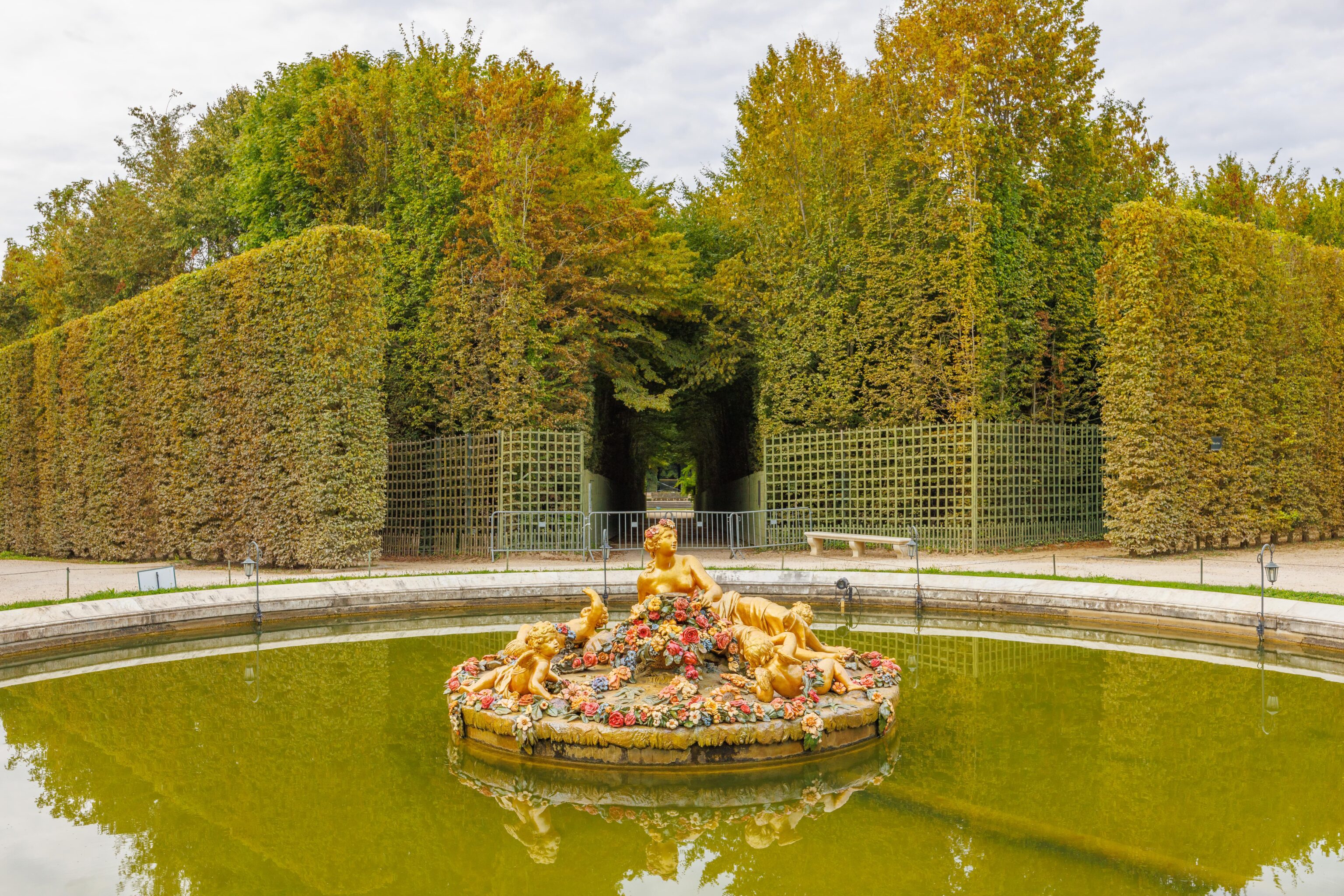
We continued on to reach the Flora Fountain at an intersection of 8 paths. The sculpture had many flowers as expected from the name.
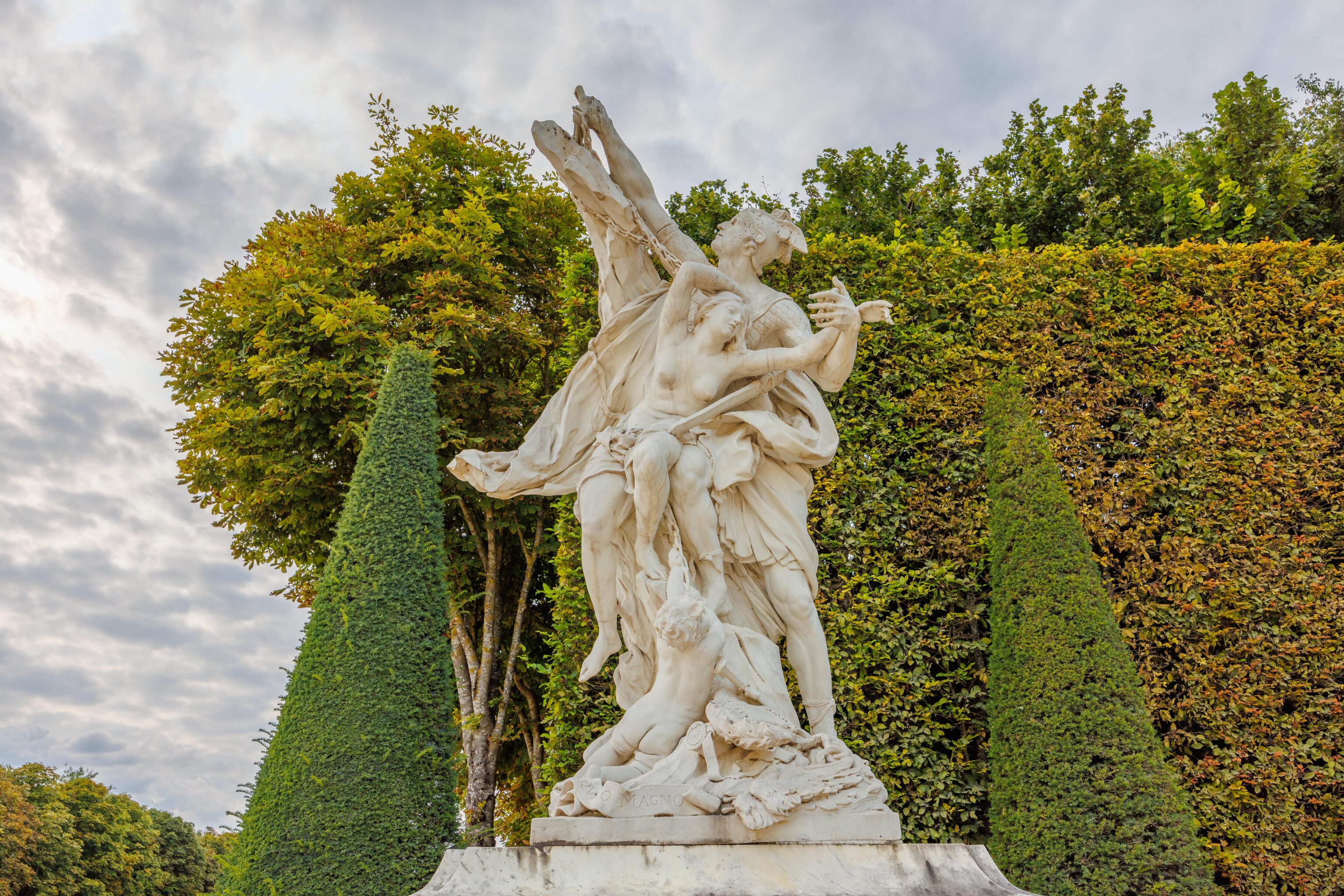
We continued walking, passing by this statue near Latona’s Fountain.
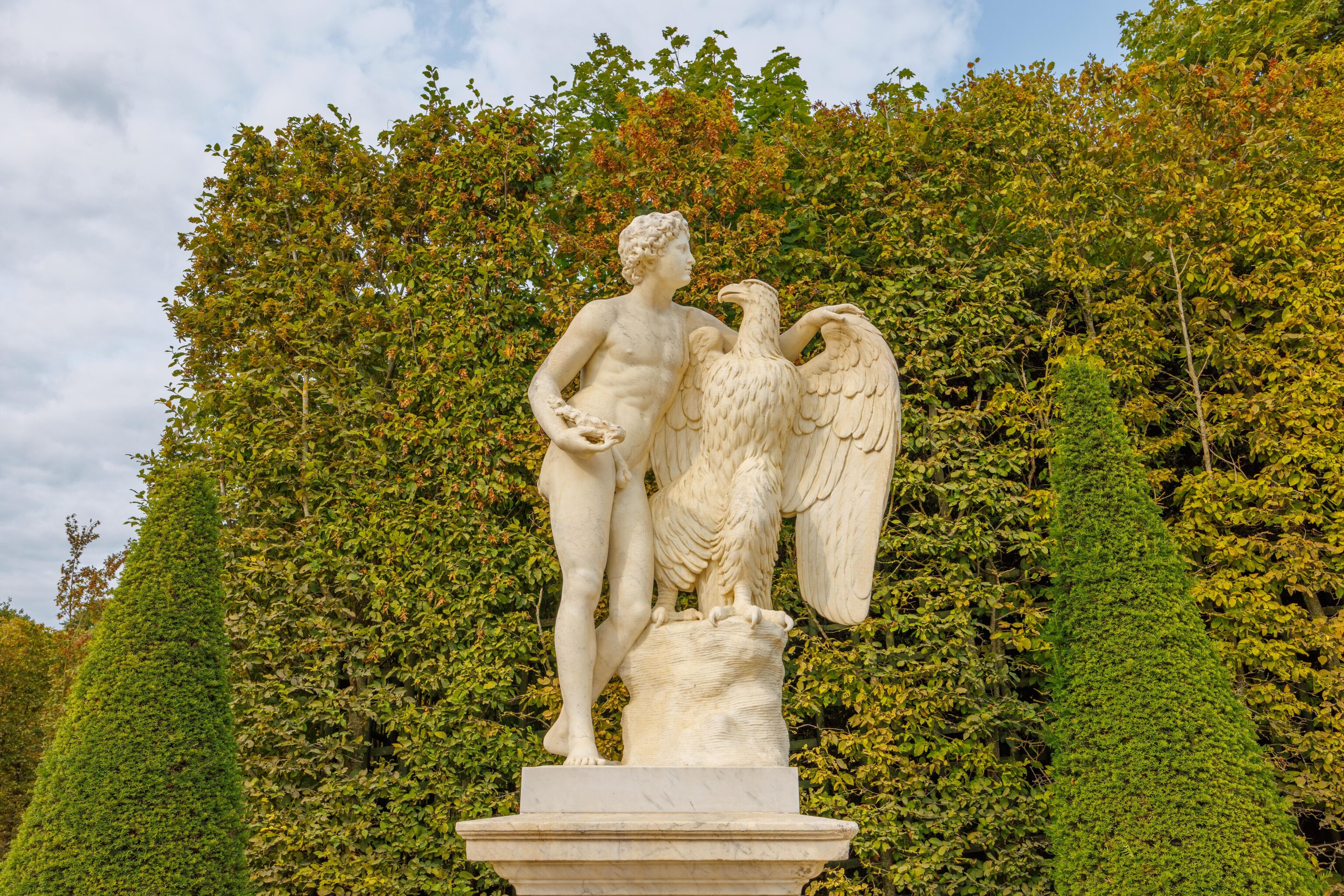
This nearby statue shows a young man having a nice chat with his eagle friend. That probably isn’t exactly what is depicted here.
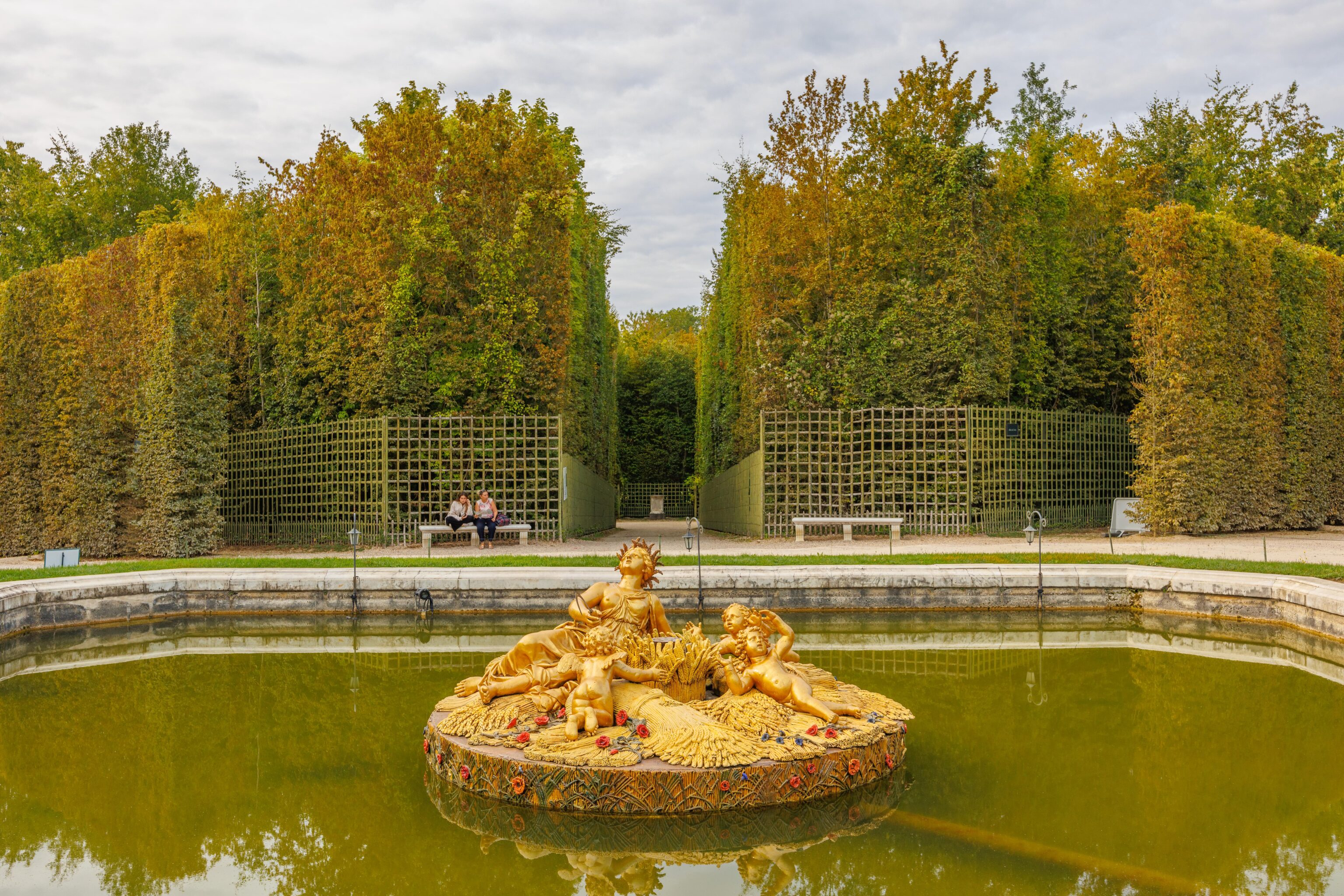
We passed by the Ceres Fountain. These are probably more interesting when the water is turned on.
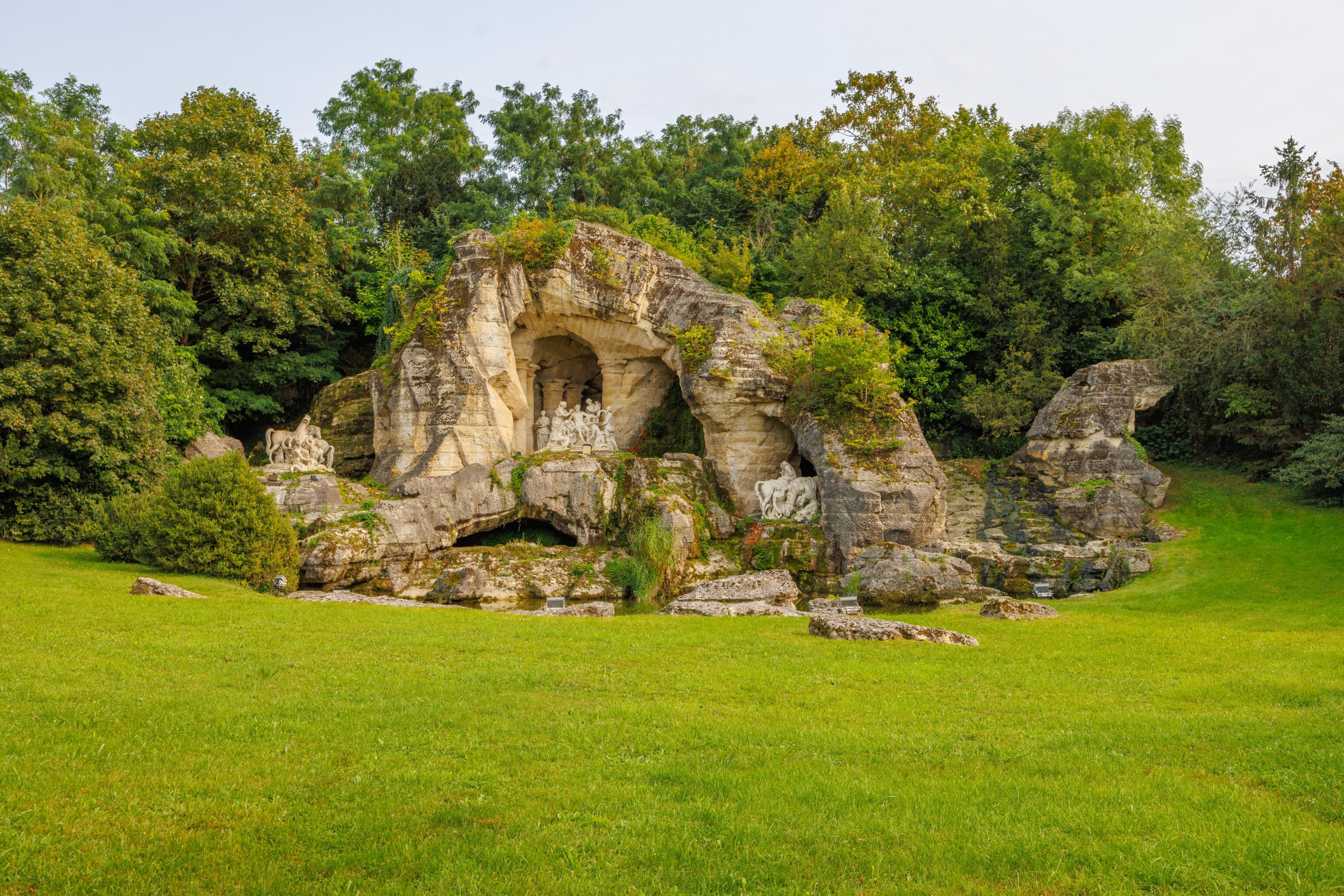
We continued to reach the Apollo’s Bath Grove. We assume there is water involved during the fountain days.
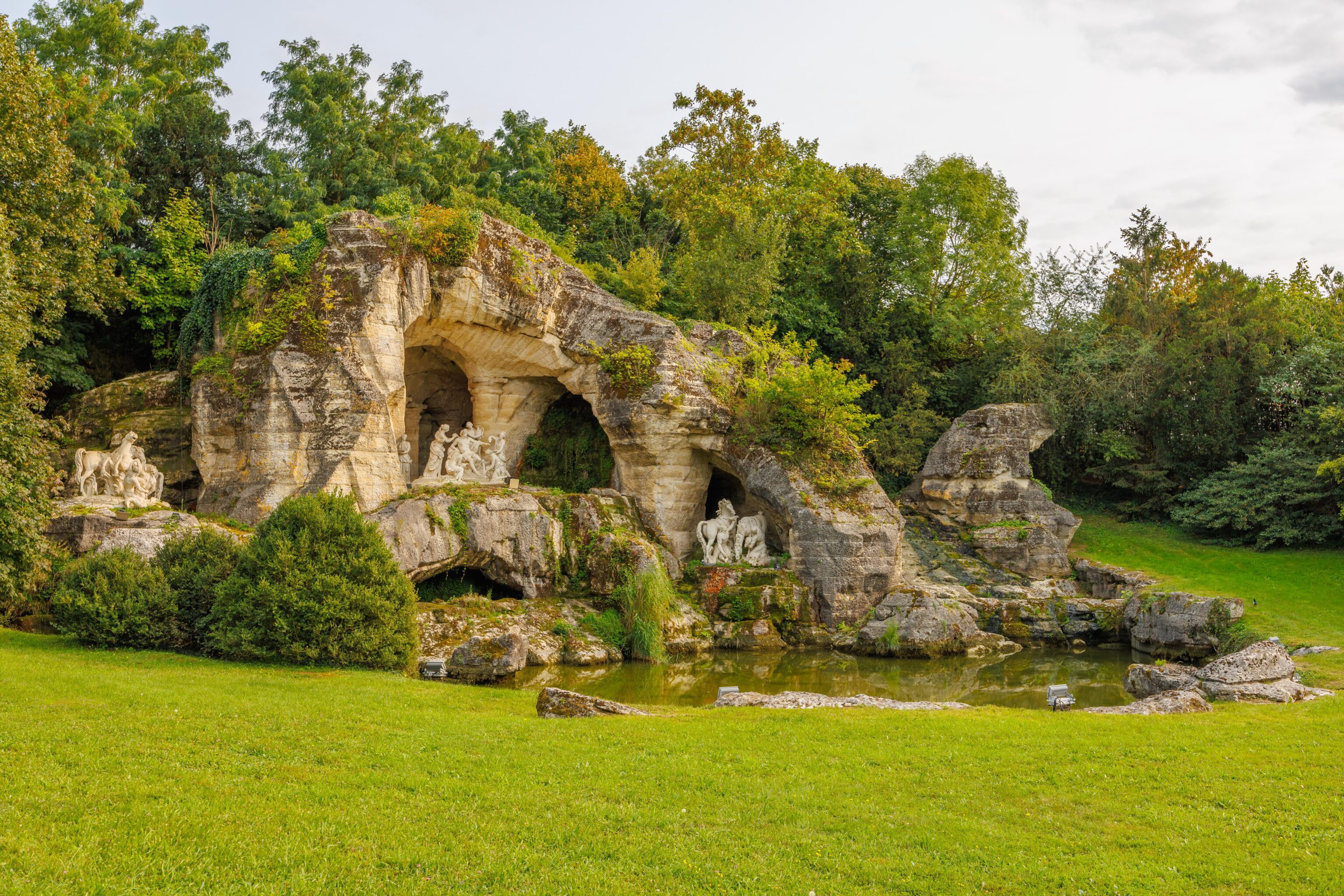
There are three sculptures here. They were very familiar as they are the same ones that we saw at the beginning of our visit to the palace!
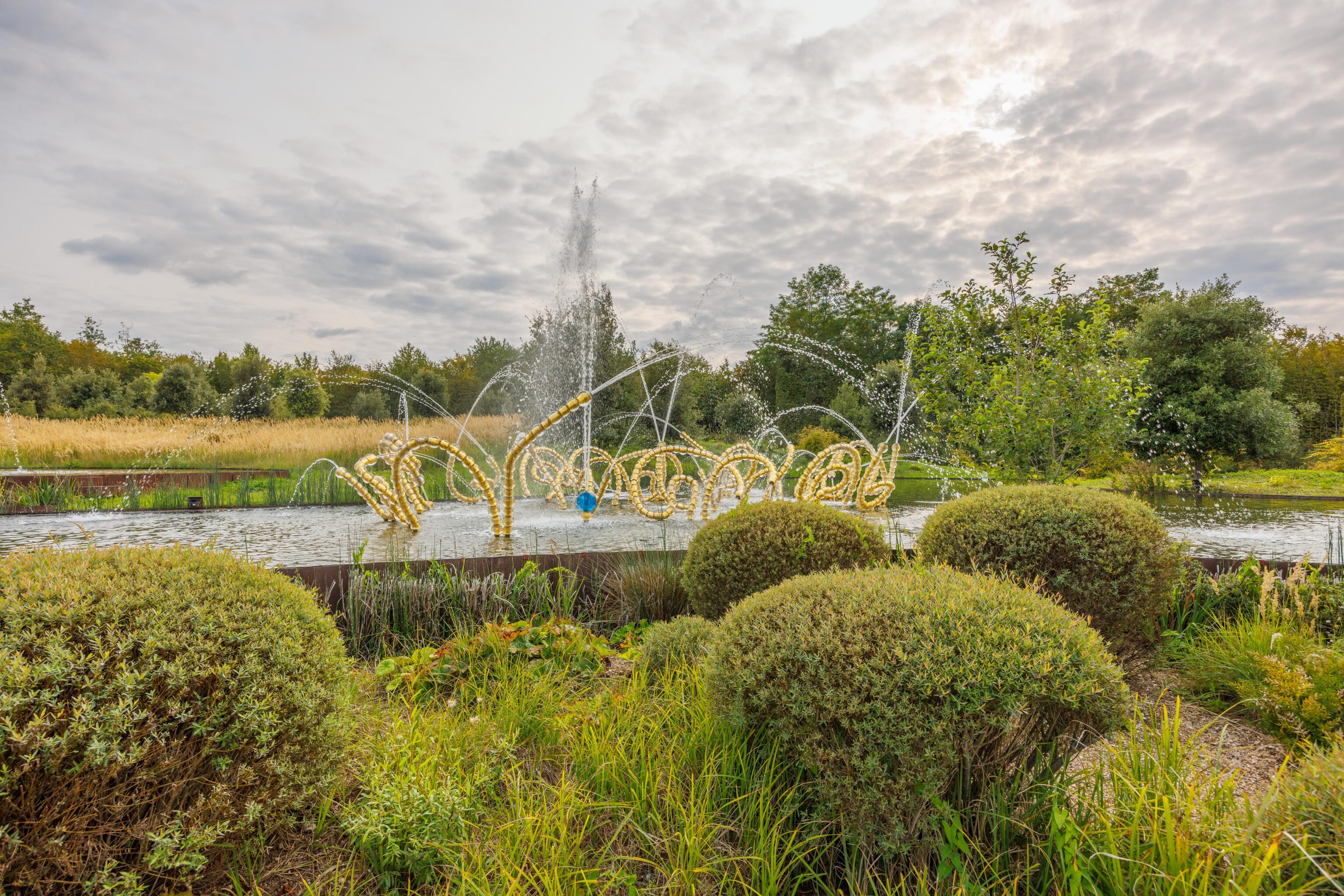
Our next stop was the Water Theatre Grove. We arrived on the back side and had to loop around to be able to see the actual water feature here. This installation, Les Belles Danses (The Beautiful Dances), is by Jean-Michel Othoniel, a French artist. We actually passed by one of his other installations in Paris by the Louvre, Le Kiosque des noctambules (The Kiosk of the Night Walkers), though we didn’t photograph it.
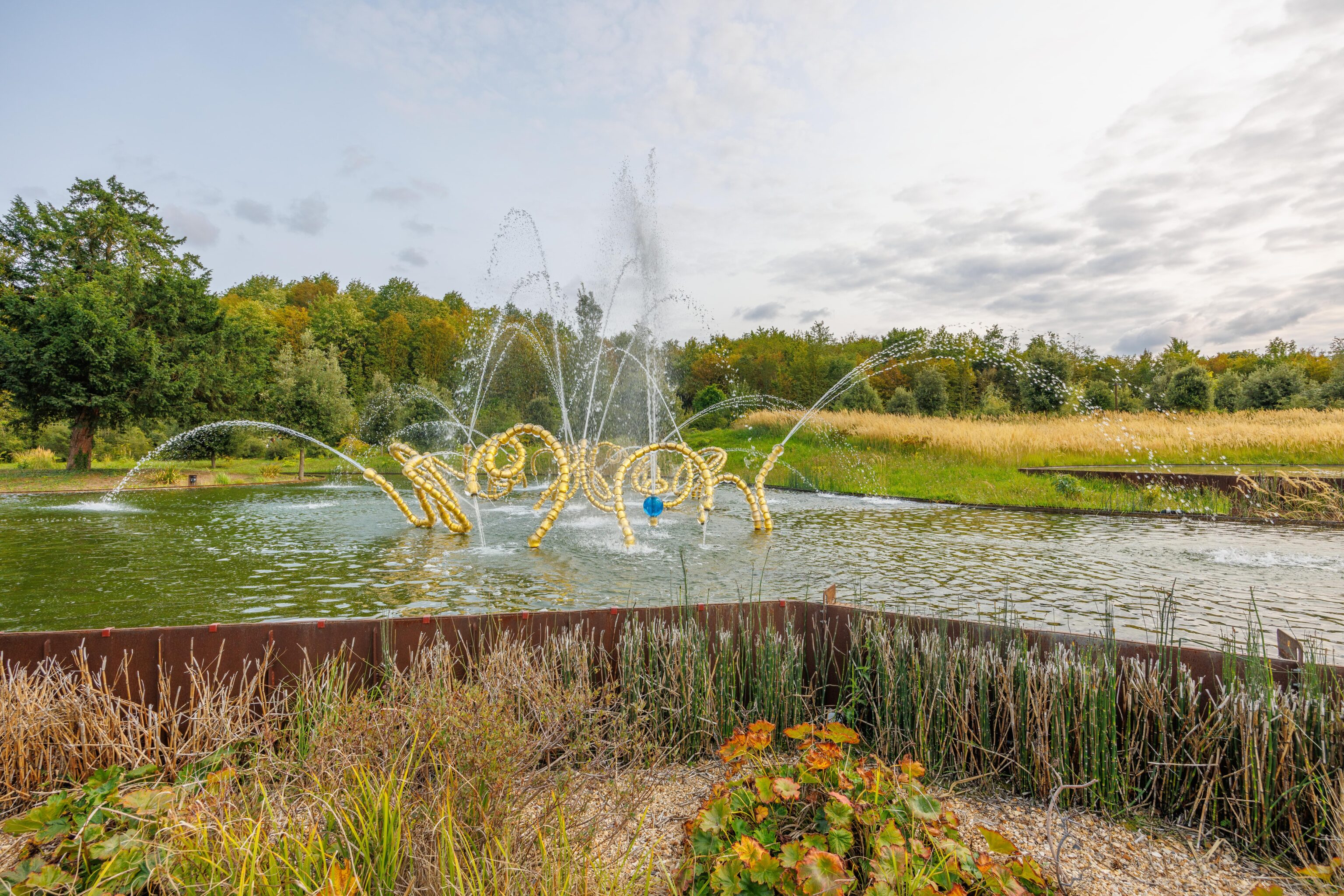
There are multiple water spraying sections that make up the overall installation.
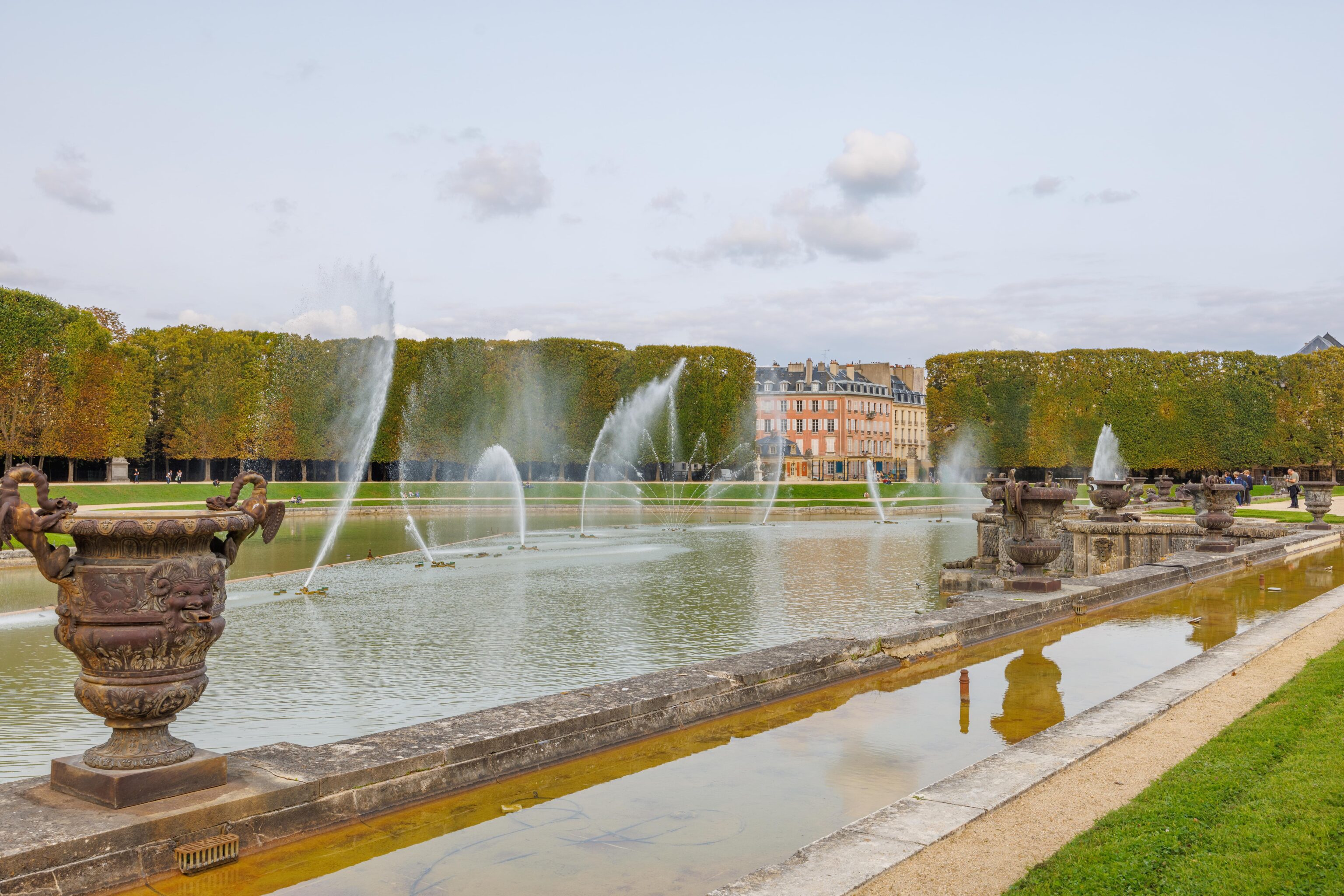
We continued on, reaching the Neptune Fountain. This area is huge!
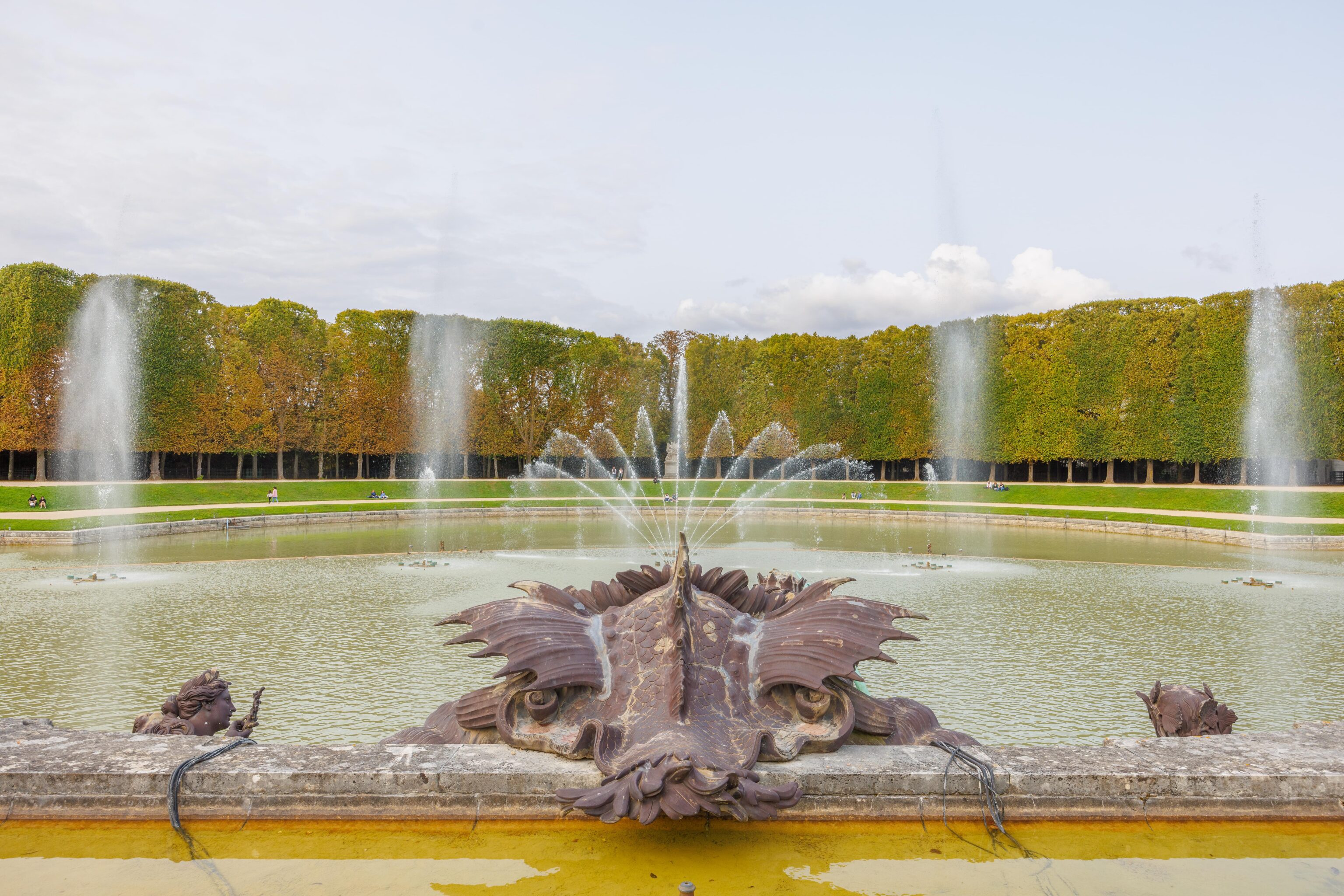
We were, unfortunately, on the wrong side of the show. Given the time and size of this portion of the gardens, we decided to move on.
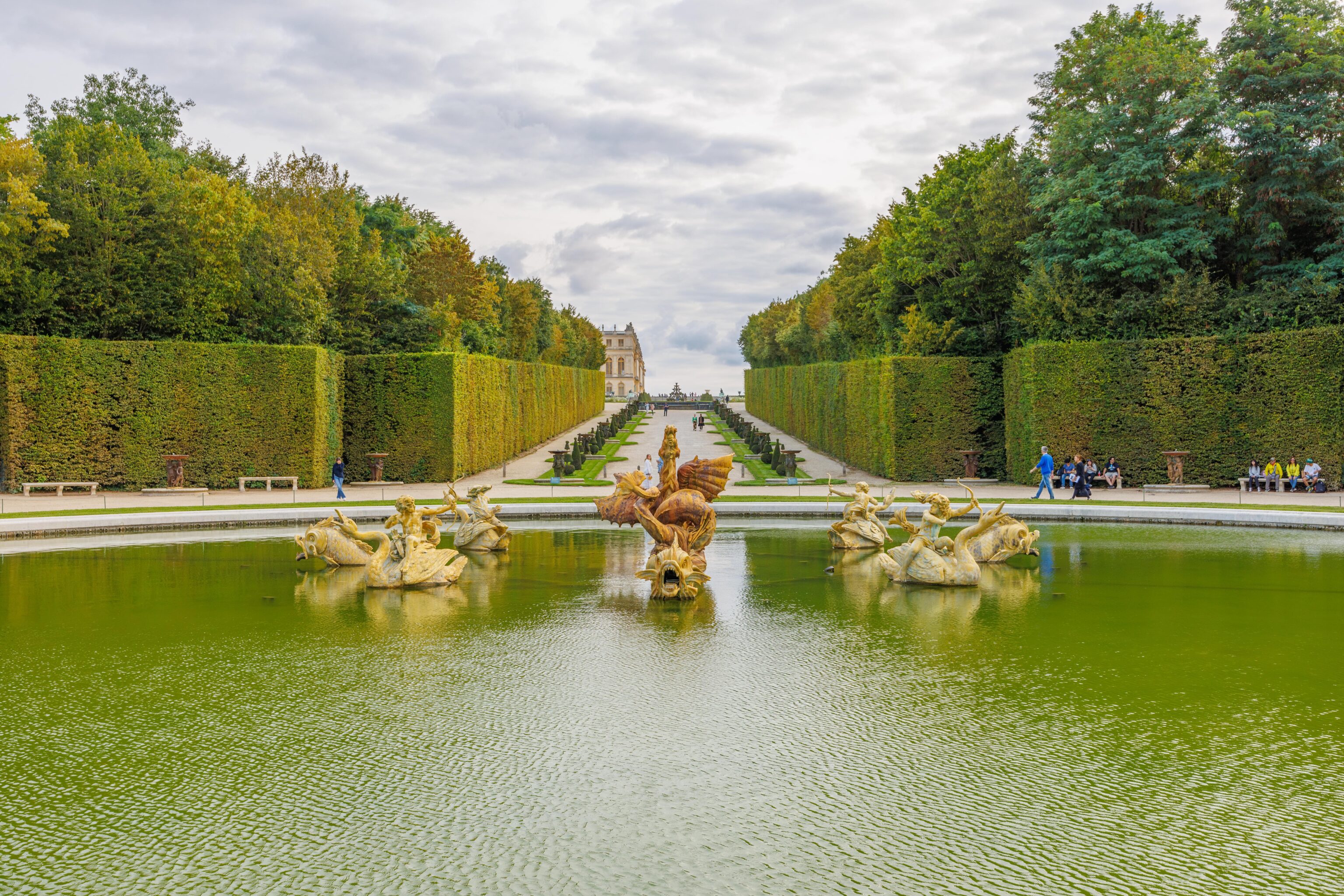
The Dragon Fountain sits between the Neptune Fountain and the hill leading back up to the palace.
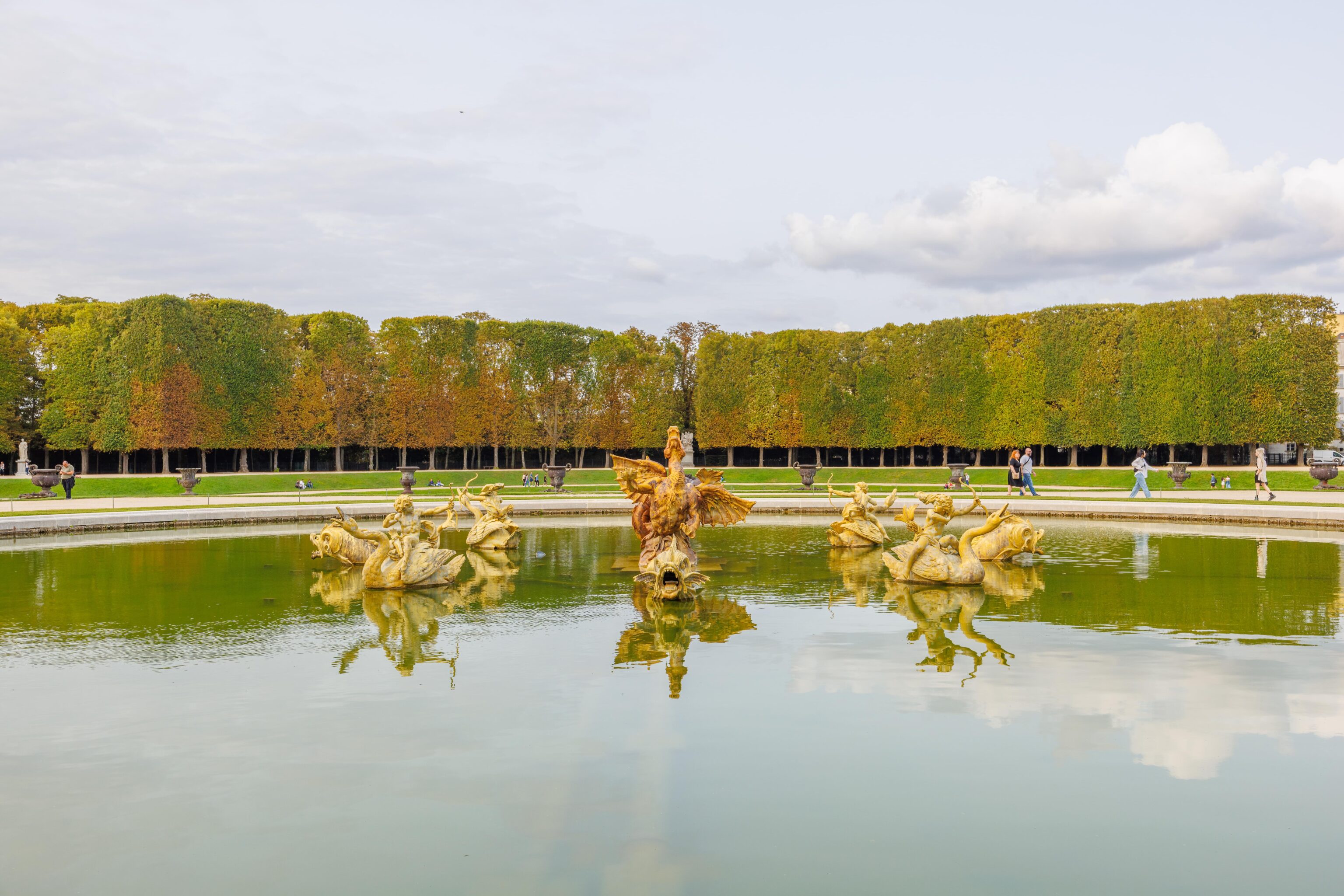
A dragon in the middle of the fountain is riding a fish. Little people, seated on swans, are shooting arrows at the dragon. At least, that’s what it looks like!
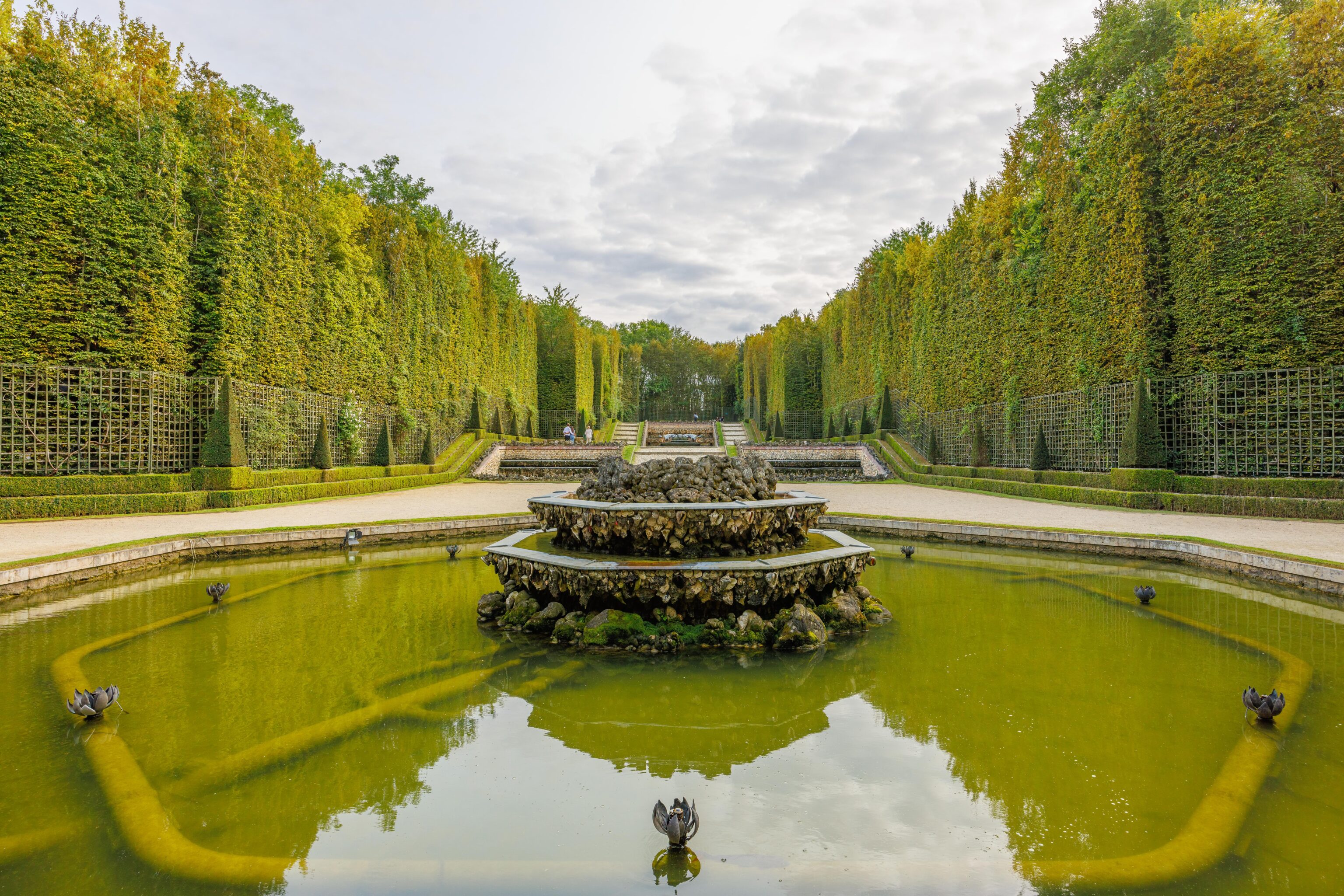
This next section is the Three Fountains Grove. There are three fountains. All were off.
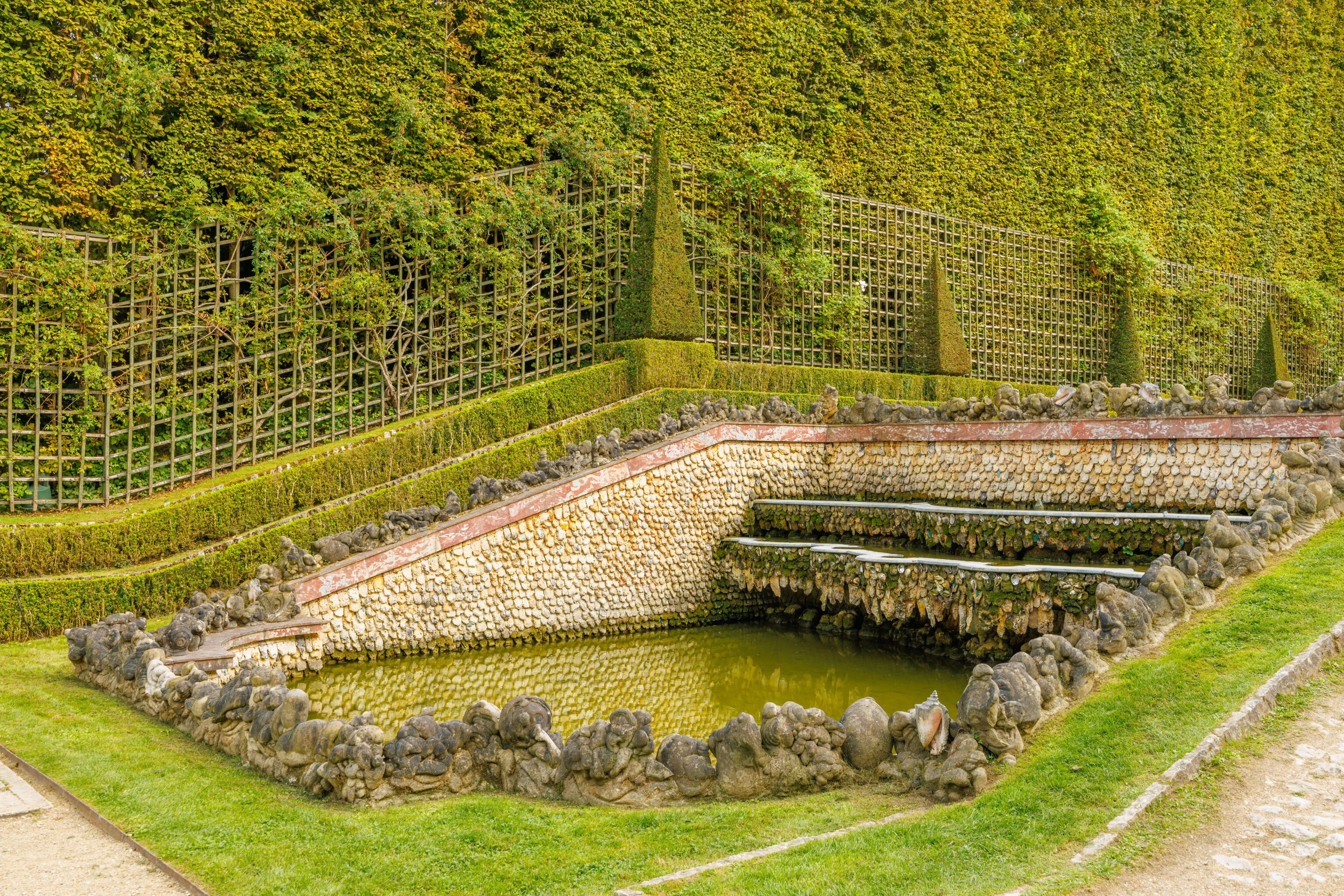
The design of this area involves what seems like many rocks and shells.
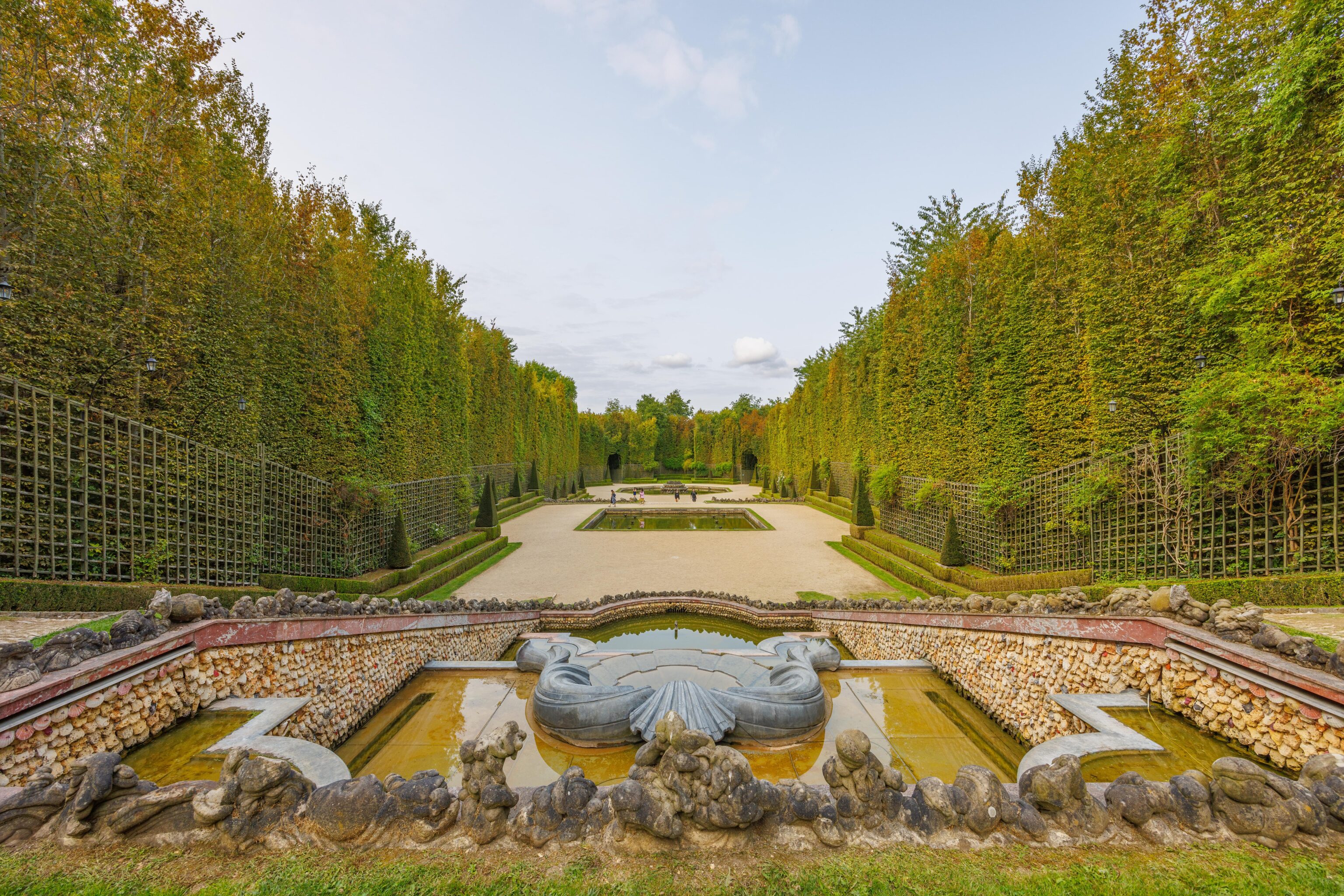
The view from atop the uppermost fountain. The map describes this grove as being “remarkable because of the total absence of statues.” It is quite different from most of the gardens as there are statues everywhere!
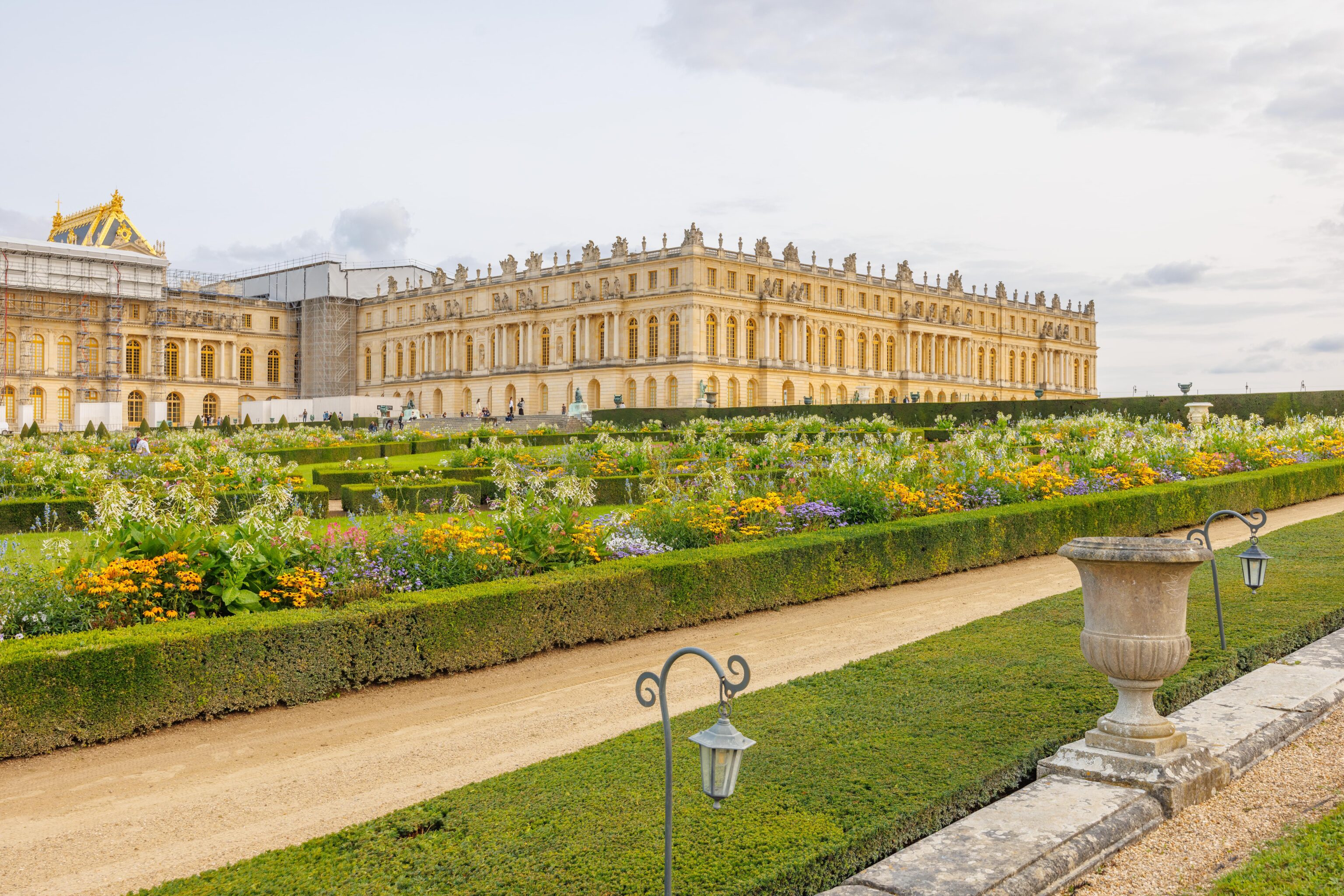
Almost back to the palace!
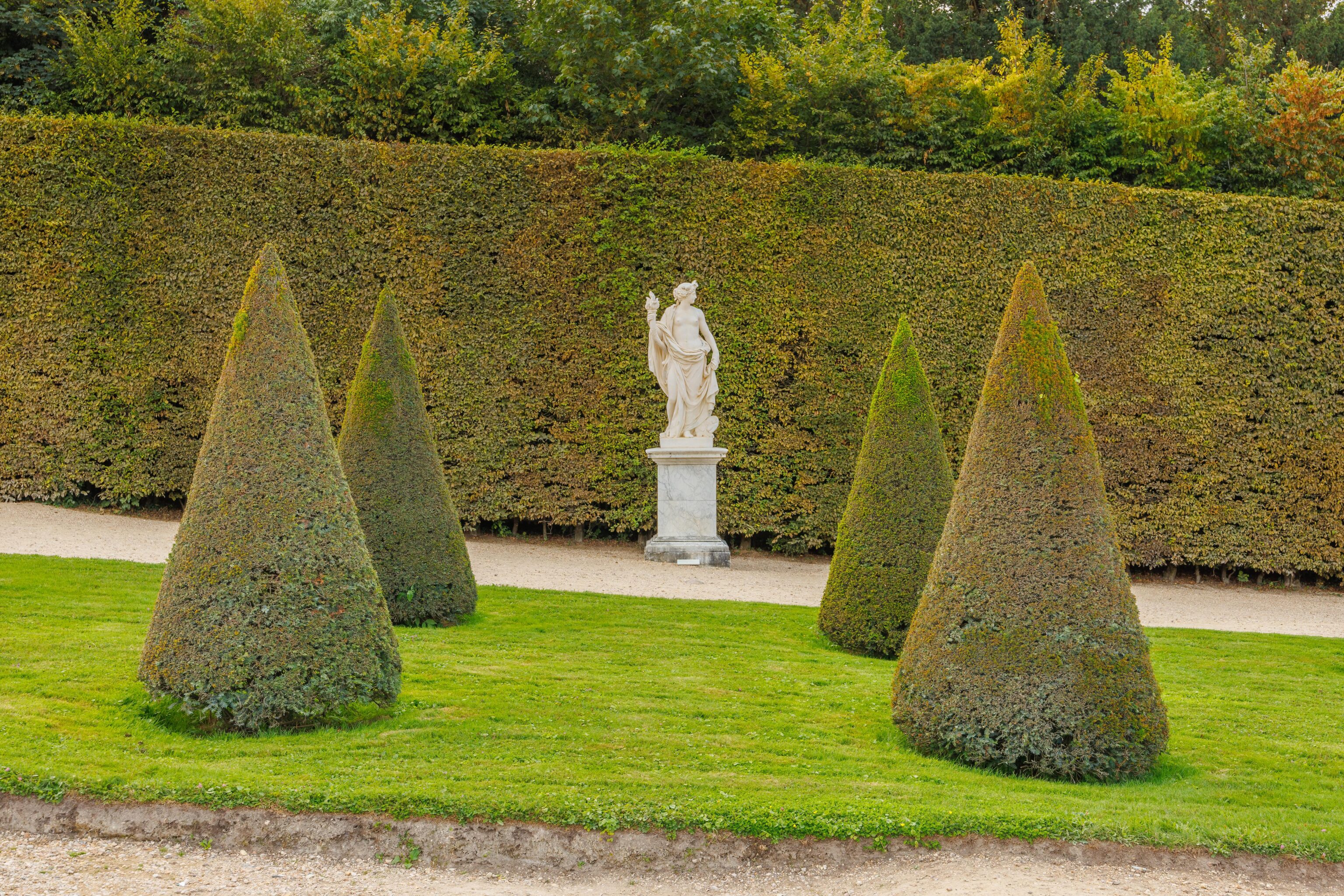
We walked uphill to get back up to the Water Parterre at the rear of the palace.
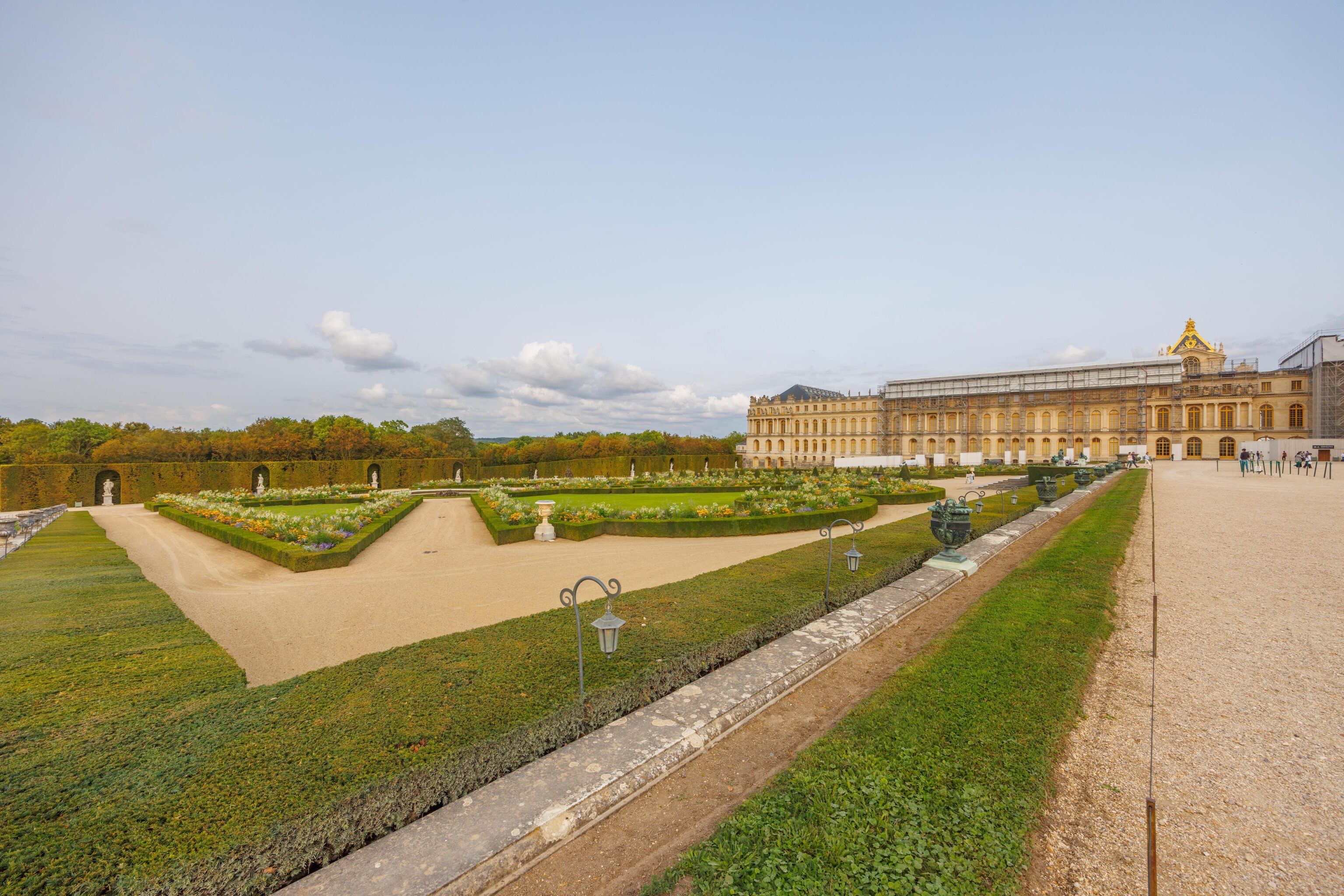
We made it! The view looking over the North Parterre, which we did not walk through.
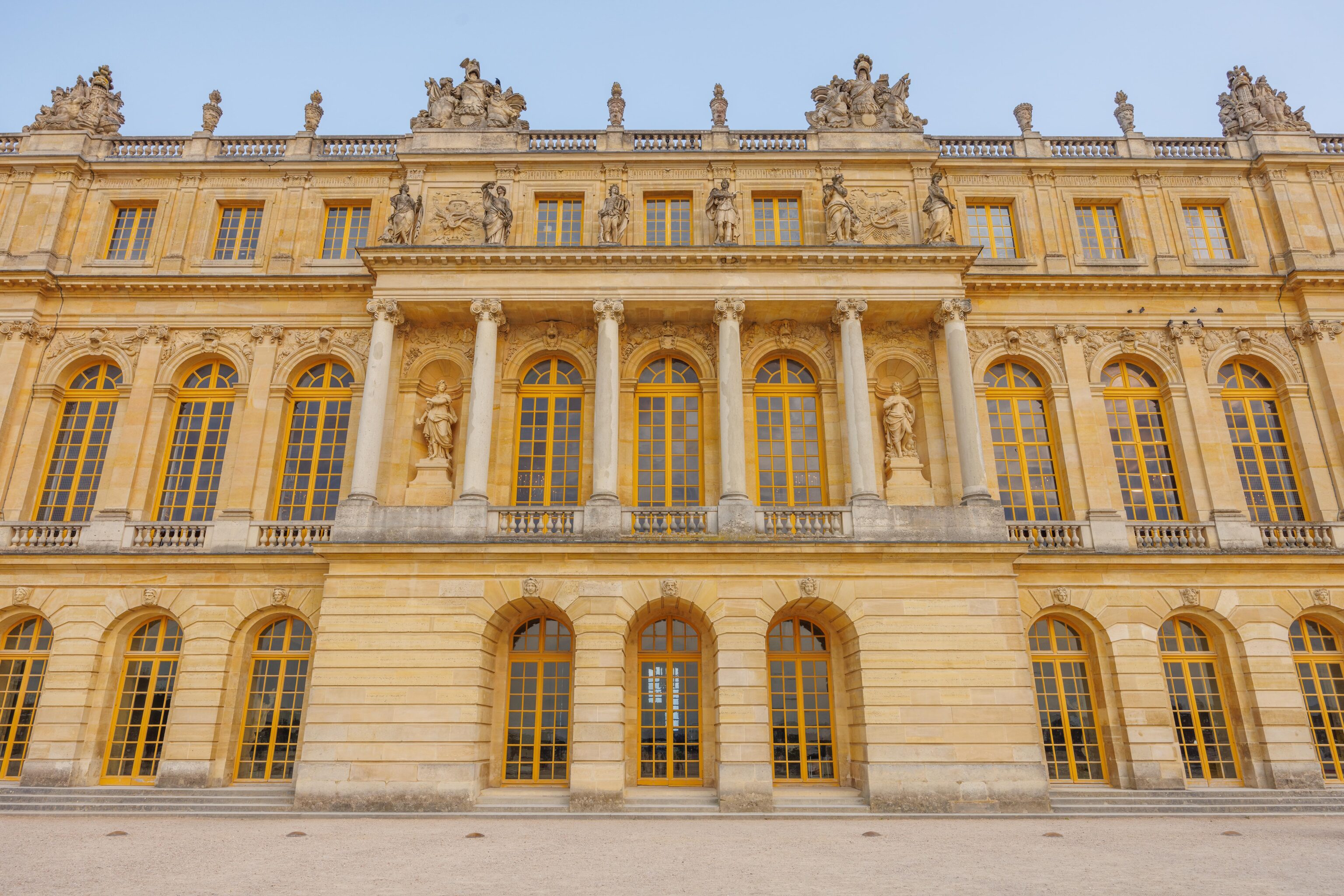
One final look at the building before departing. We made it out at around 6:30pm, 30 minutes before closing time for the gardens.
We decided to have dinner in Versailles before heading back to Paris on the RER. We decided on the Café des Arts, a small restaurant seven blocks or so away from the Versailles Château Rive Gauche station where we arrived.
We decided to sit outside at the restaurant, which was probably somewhat of a mistake as it started getting pretty cold once the sun set. Luckily, they had warm blankets for us to use. It felt a bit like being in Switzerland!
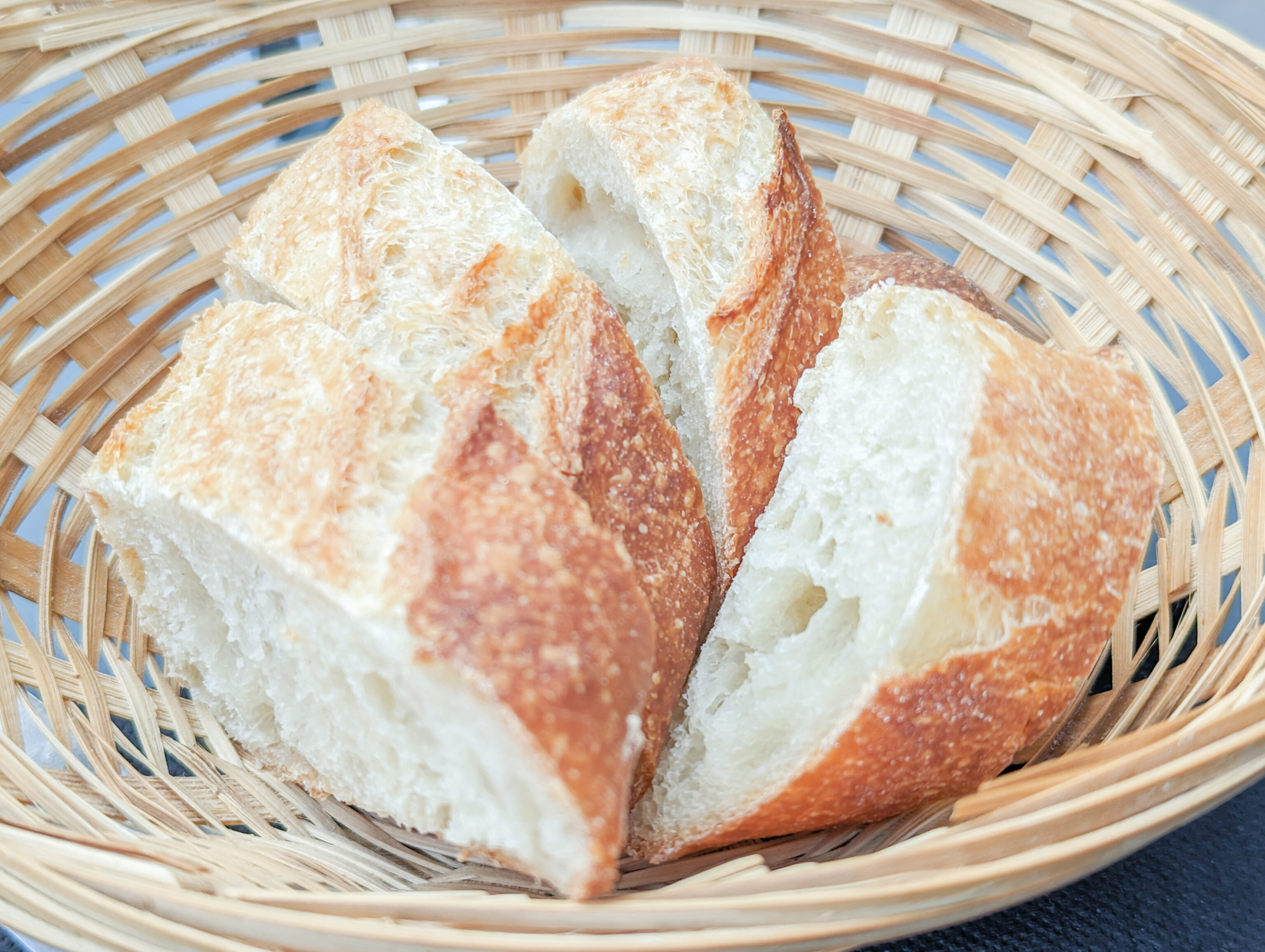
The bread was very good, as one would expect from France!
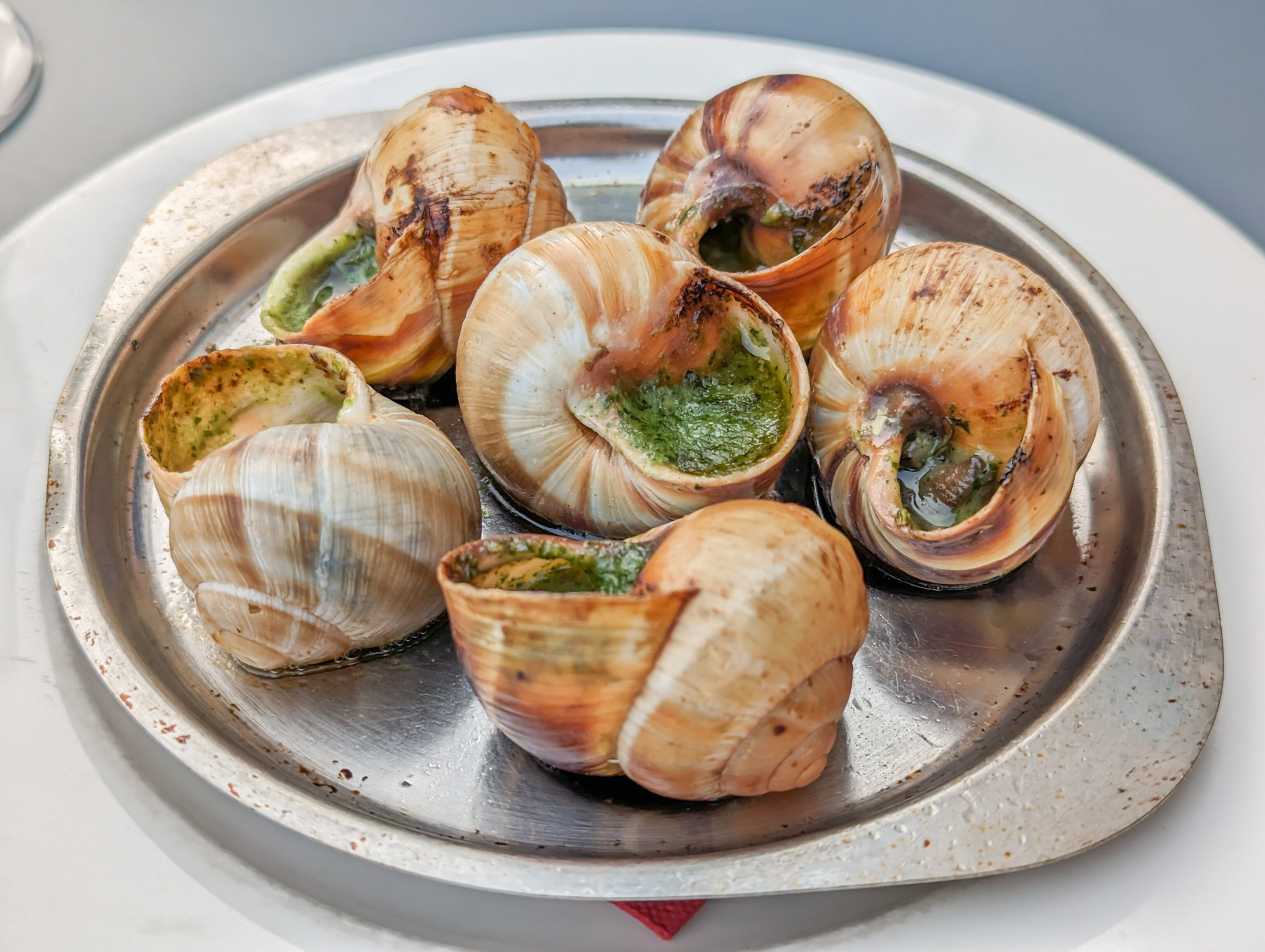
The escargot was better than the last ones we had that were prepared this way.
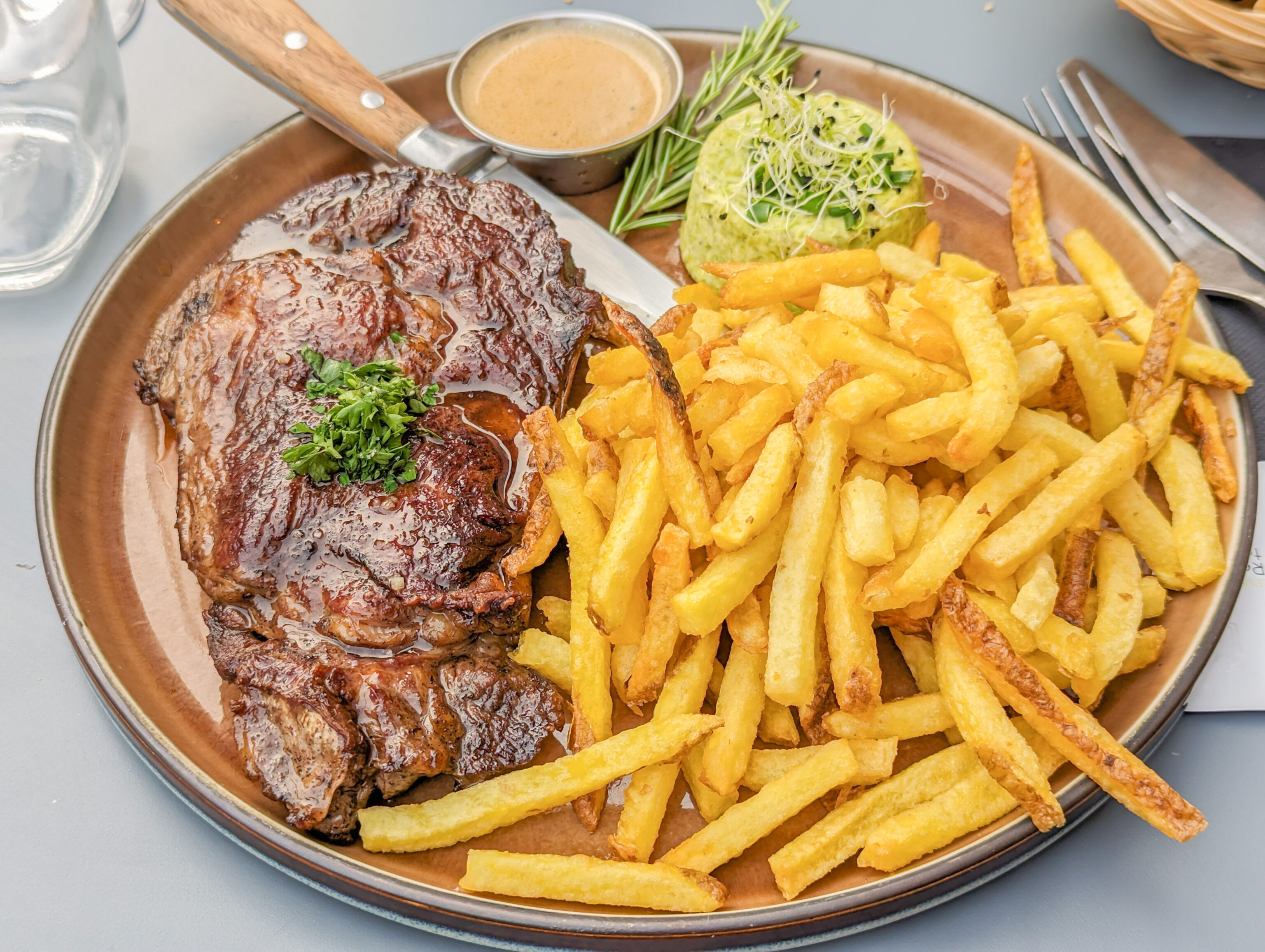
We ordered an Entrecôte as we haven’t had it yet. It was better than it appears, particularly with the pepper sauce which was fantastic. A bit cooked too much for medium rare, though we don’t know what the term is in French for the equivalent preparation. It probably would have been good to look that up to avoid any misunderstandings.
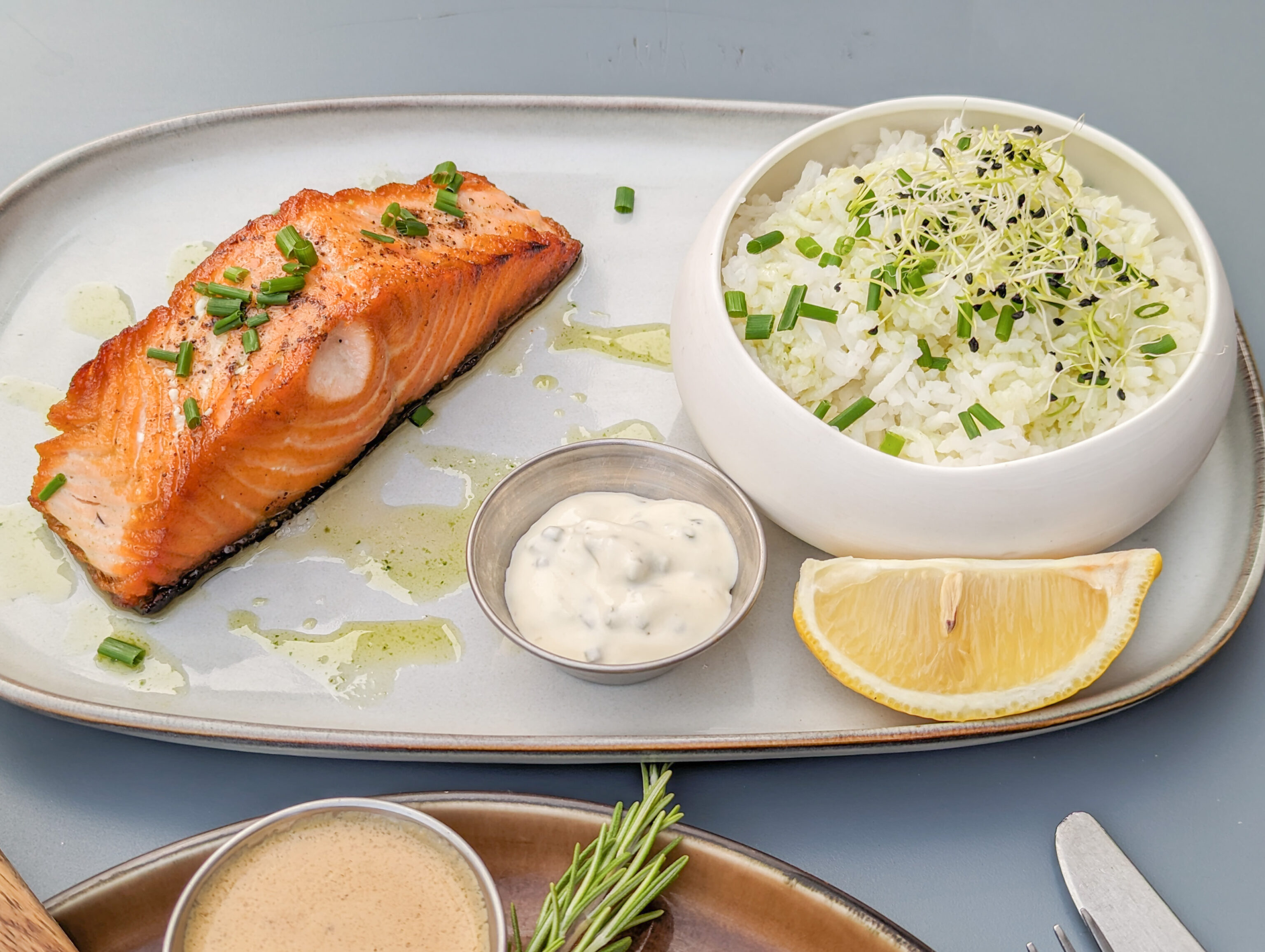
The salmon was rare but still rather well done by our standards, though we think salmon is still best raw.
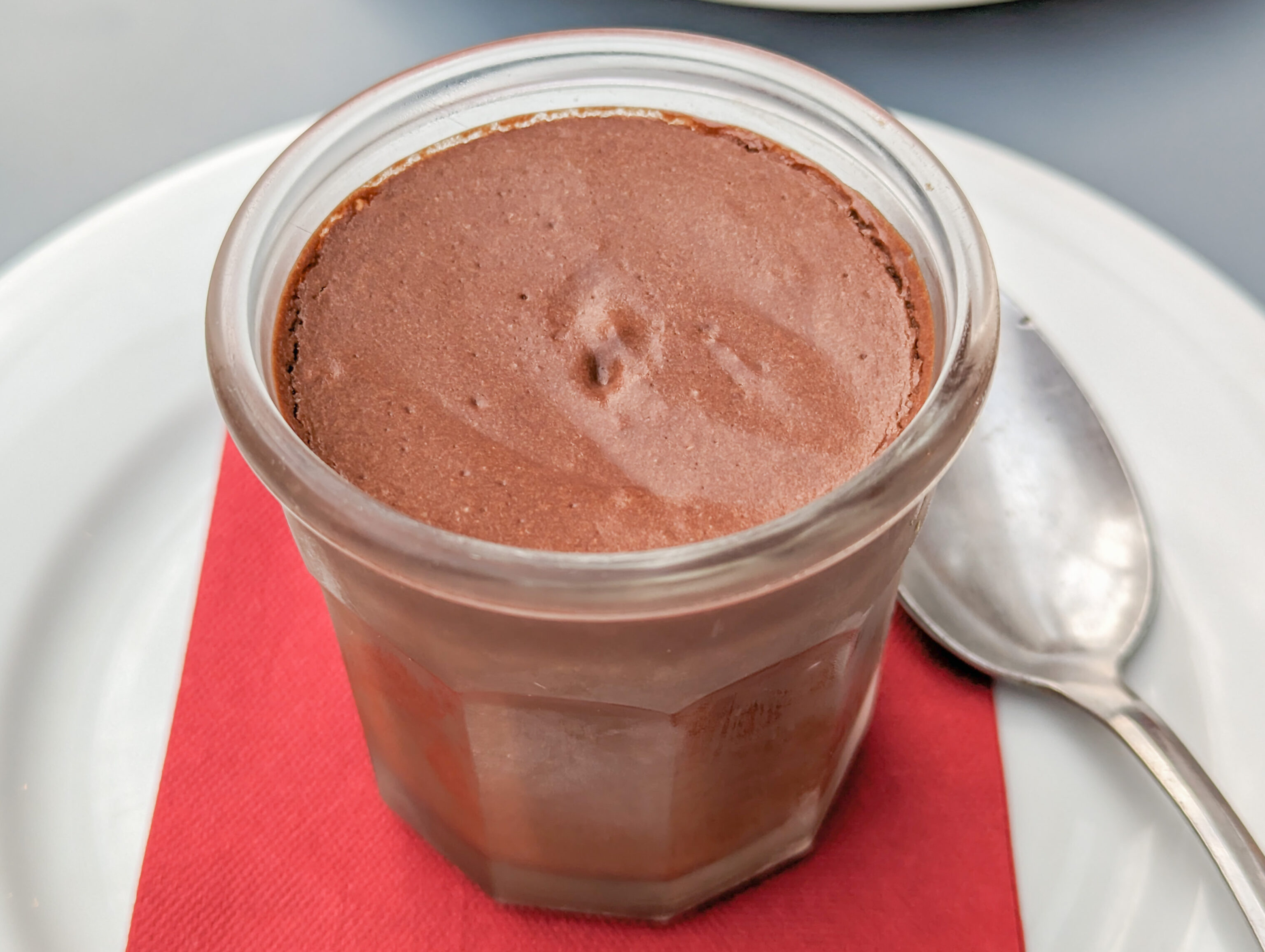
The chocolate mousse was our first in France. It seemed pretty similar to what we would have in the US, though maybe less sweet.
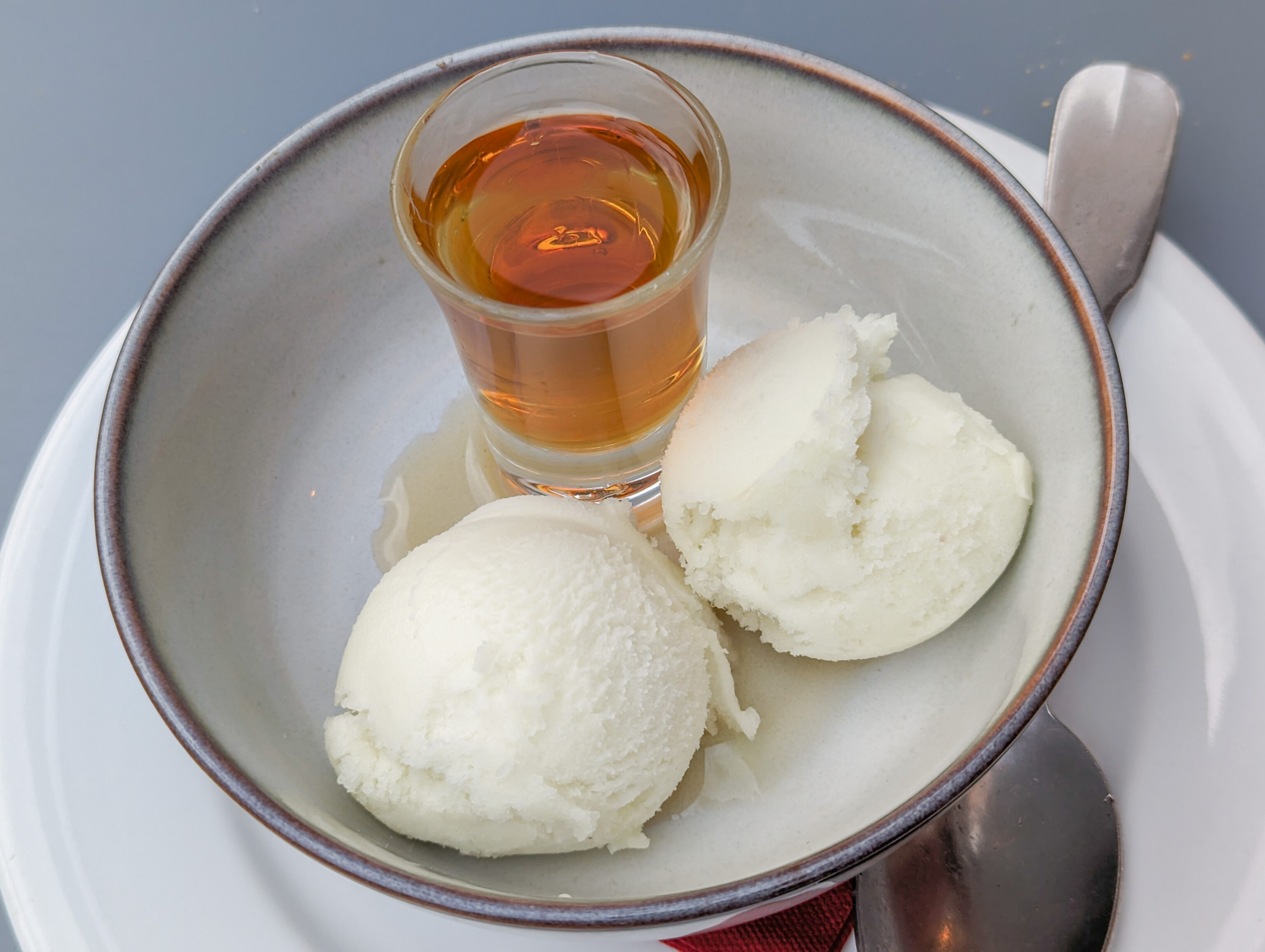
The apple sorbet that came with this dessert was really quite good. Overall, a great meal to end our final full day in Paris!
After dinner, we made it back to the station with time to spare. We were able to catch a train that took the shortest route back, again transferring at Champ de Mars Tour Eiffel before arriving at Neuilly – Porte Maillot by the Le Méridien Etoile where we have been staying.
- https://en.wikipedia.org/wiki/Philippe_de_Courcillon ↩︎
- https://en.chateauversailles.fr/discover/estate/palace/hall-mirrors#the-hall-of-mirrors ↩︎
- https://en.chateauversailles.fr/discover/estate/palace/queen-apartments#the-queens-bedchamber ↩︎
- http://collections.chateauversailles.fr/#b8c5466d-2c08-48e3-af9d-f1774a244744 ↩︎
- http://collections.chateauversailles.fr/#b95cc125-38f5-4303-909f-faaa7cc9072f ↩︎
- https://en.wikipedia.org/wiki/Alexander_von_Humboldt ↩︎
- https://en.chateauversailles.fr/discover/estate/estate-trianon/petit-trianon#the-first-floor ↩︎


